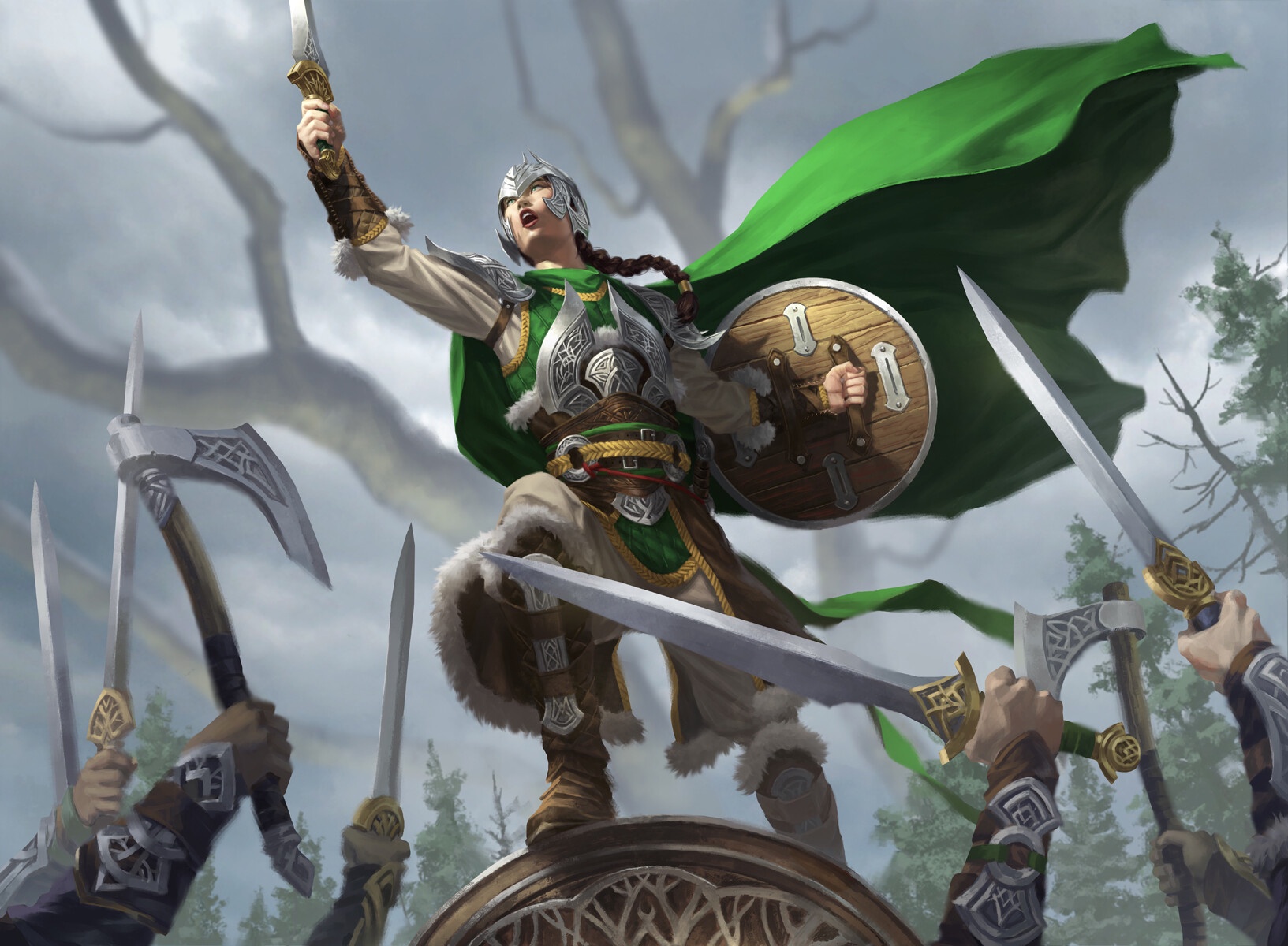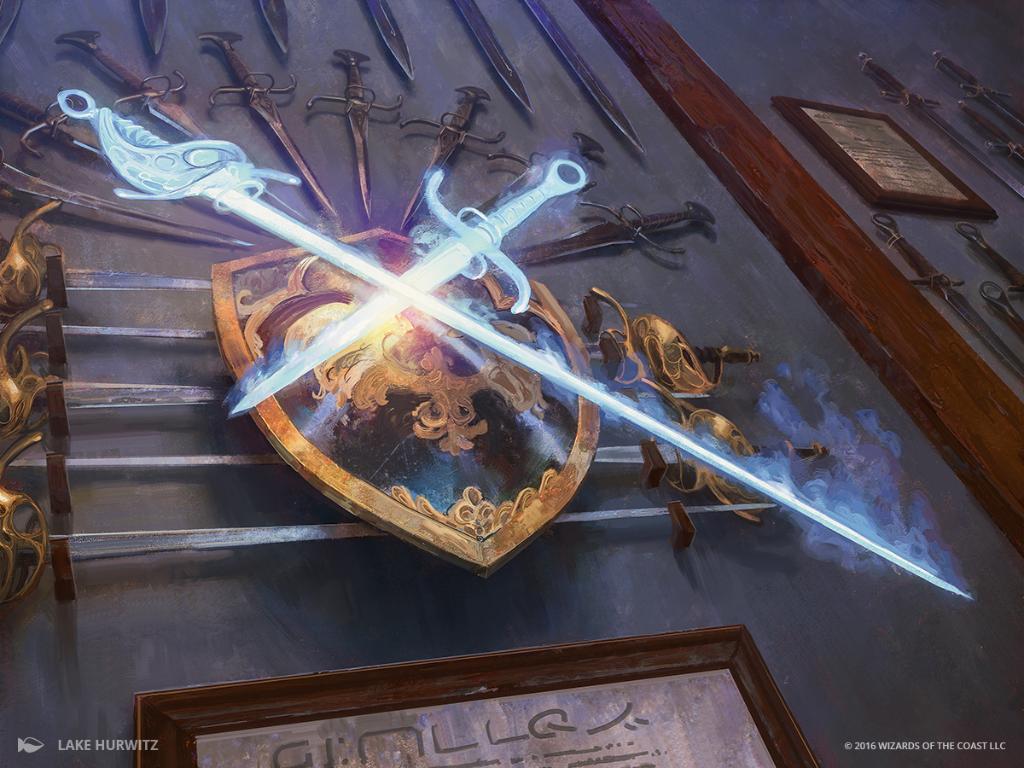
Introduction
This document is the end result of more than three years of work with one goal: improving martial player character and martial combat. While it might seem otherwise, I ultimately believe any character can be fun to play with great characterization, no matter how weak or strong. But I also believe that a character's numerical competence is equally vital. D&D crashes make-believe and a skirmish wargame together, and to make a fun experience, both parts must be fully developed.
Unfortunately, many find that martial characters are not as fun to play as magic-users. While they have more health, deal consistent damage, and have fewer resources to track, they have meager options on the battlefield, and can't compete when they try to affect the world outside combat. In character-building they have a similar dearth of effective options. Many subclasses are mediocre, and others are just plain bad. In The Warrior's Codex, I've attempted to rectify that. Instead of a full system overhaul or mass rewrites of class features, I addressed three glaring weaknesses:
1. Fewer combat options. Every weapon felt the same. Now each one has a unique combination of properties that creates a unique role. Weapon-switching to better adapt to the enemy becomes commonplace and adds a new level of strategy. While nowhere close to the complexity of spells, the functional differences between weapons are limited to weight, reach, and damage dice no longer.
2. Magical Saturation. If ranger and paladin count among the former and artificers among the latter, 5e has 6 martial classes and 7 spellcaster classes. There are 47 published caster subclasses, and 38 official martial ones. Worse, many martial subclasses—such as Arcane Archer, Path of the Totem Warrior, and paladin, monk, and ranger—explicitly and inherently use magic.
3. Fewer viable options. Many warrior archetypes are much, much weaker than their magical brethren, to the point that players entirely unconcerned with whiteroom theorycrafting take notice during play. The problem appears not only in abstraction, but in regular games. This document contains several attempts to rework egregious examples (though it avoids the ranger, which wiser brewers have already addressed). When accompanied by new subclasses, these reworks create a flood of new and exciting choices.
All that said, 5e has addressed the divide between martial and caster marvelously and the gap is as small as it has ever been—but it could be even smaller. To shrink it more, I haven't made casters worse, but martials better. A rising tide lifts all boats. Rules for weapons, item creation, a few new subclasses for non-martial classes, and even a few spells will delight players who favor magic.
You might wonder—why this supplement over Weapons Remastered, /u/theapoapostolov's Grit and Glory, Wraith Wright's Comprehensive Equipment Manual, or others. Your group might prefer those, and I admit I borrowed excellent ideas from those works. But I believe the latter two add too much complexity. They are fantastic, well-researched works, to a fault. Too many options slows play and confuses players.
This document—I hope—reaches a middle ground to create more options without overwhelming players. It doesn't rewrite core aspects of the system, and doesn't rely on gear and gear alone to bridge the gap. Ultimately, experiment, and see what works best for your table.
Using this Book
The Warrior's Codex is a massive project, but isn't one package. When you and your group choose to use it, pick and choose the parts you like and leave the rest behind. It replaces or alters many features and rules that already exist, and should be read with care.
Must-Reads
Everyone should read the Introduction and Using This Book sections, to better understand The Warrior's Codex's goals and how it affects the game.
If you play a race or subclass changed by Part I: Races or Part II: Subclasses, read the relevant text. You can also read those sections when creating a new character.
Everyone should read Part III: New Weapons in its entirety, to make sure they understand the properties of weapons and armor and the options they have in combat.
The same applies to Part IV: New Rules to ensure nobody is blindsided by the changes, and that they understand any other options they have to further customize their character. Some players might even see an unexpected buff.
Part V: New Items is helpful for creative players who like to craft items and use them in combat, but is not required.
Any player who plans to make a spellcaster should read Part VI: New Spells, since some existing spells have been changed and new and exciting options have been added.
Part VII: Monsters exists for the DM, who has the chance to add new armies for mid- and high-level players to face. It also provides a quick way to handle combat between large groups, and acts as an example of proper wording for weapons with WCX properties when carried by monsters.
Part VIII: Appendices is excellent, but optional. The cheat sheet is an invaluable quick reference, and the profiles contain examples of each weapon and a brief explanation of its use, history, and other trivia.
Converting to WCX
Most campaigns won't begin with the Codex in place, and have to switch mid-game. This section contains the most important changes from RAW. Remember that your group can adopt as much or as little of this book as you want, and most parts work independently of one another. Choose the parts you like, and feel free to ignore the rest. With the exception of the Way of the Raptor and the Path of the Bonebreaker, every subclass in this book can be used without the other content introduced in The Warrior's Codex.
Subclasses
Subclasses are the easiest place to begin converting, as each only affects one character. When your group decides to use this book and one character uses a subclass listed on the left column of the table, replace all of that character's subclass features with those of the archetype listed on the right.
Note that the Cavalier is divided into two separate subclasses. If your Cavalier player uses the Martial Archetype for its powerful defensive abilities, convert the character to a Bastion. If the player plays the archetype as a heavy cavalry archetype, use Cataphract instead. If the player uses both, leave the character as a Cavalier.
| Published Subclass | Source | WCX Subclass |
|---|---|---|
| Barbarian | ||
| Battlerager | SCAG | Bonebreaker |
| Berserker | PHB | Berserker |
| Storm Herald | XGE | Cataclysm |
| Fighter | ||
| Arcane Archer | XGE | Spellslinger |
| Banneret/PDK | SCAG | Bannerlord |
| Cavalier | XGE | Bastion |
| Cavalier | XGE | Cataphract |
| Champion | PHB | Exemplar |
| Eldritch Knight | PHB | Mage Knight |
| Sharpshooter | UA | Marksman |
| Rogue | ||
| Assassin | PHB | Infiltrator |
| Mastermind | XGE | Infiltrator |
Weapons
After the subclasses come weapons, armor, and other gear. Fortunately, most weapons share the same names as their PHB versions, and can be converted to the new mechanics with ease—just add their properties. Some weapons could be converted into multiple options depending on how they're used, and a select few change the name of a weapon and assign that name to a new one. When that happens, use the table below.
| PHB Weapon | Converted WCX Weapon |
|---|---|
| Spear | Shortspear if proficient in simple weaps. |
| Spear | Javelin if above, but thrown |
| Spear | Spear if proficient in martial weaps. |
| Spear | Harpoon if above, but thrown |
| Longsword | Bastard sword if used for versatile |
| Longsword | Arming sword if one-handed |
| Shortsword | Shortsword if used for light |
| Shortsword | Arming sword |
| Rapier | Rapier/sabre/estoc |
| Longbow | Recurve bow |
| Shield | Shield |
| Arrow | Field arrow |
| Crossbow bolt | Quarrel |
A Note About Feats:
Many weapons and properties included in this book are weaker versions of abilities previously granted by feats (such as parries, unarmed strikes, and power-attacks) to anyone wielding an appropriate weapon. If a feat becomes less valuable as a result of using this document, allow the player to change the feat for another, or replace it with an Ability Score Improvement.
Armor
While armor's mechanics are unchanged, many names have shifted places on the table. Use the table below to convert from the old type of armor to the new, or choose the armor with the same AC and closest value in gold pieces.
| PHB Armor | Converted WCX Armor |
|---|---|
| Light armor | |
| Padded | Leather |
| Leather | Leather |
| Studded leather | Gambeson |
| Medium armor | |
| Hide | Hide |
| Chain shirt | Breastplate |
| Scale mail | Haubergeon |
| Breastplate | Cuirass |
| Half plate | Half-plate |
| Heavy armor | |
| Ring mail | Scale |
| Chain mail | Hauberk |
| Splint | Splint |
| Plate | Full plate |
Other Conversions
The old longbow becomes a recurve bow, and the new longbow is a weapon all its own. The recurve bow is more typical of fantasy and popular contemporary bows, while the longbow is the titanic artillery piece employed by medieval English infantry. This includes all mentions of longbows, including in enemy statblocks or racial and class features.
A shield becomes any new shield of the user's choice.
All arrows become field arrows, and all crossbow bolts become quarrels. Other projectiles can be purchased or crafted after the group begins to use the document.
If a character uses a trident, whip, or net, use that weapon as their free exotic weapon proficiency if playing a class that gains one. If not playing a class or race that gains proficiency in that weapon, consider making an exception. If the character doesn't use any of those weapons, choose one free exotic weapon proficiency if the class grants it, as normal.
While exotic weapons are listed as a separate category for the purposes of class and subclass proficiencies, any feature that requires any simple or martial weapon to use can also use an exotic weapon.
In all other cases, such as feats, class features, and spells: when a feature has the same name as another existing one, remove the existing version entirely and replace it with the WCX feature of the same name unless it states the change is an addition rather than a replacement. In that case, add the existing benefit but do not remove the old.
On the Cover
Lake Hurwitz illustrates a master duelist's wall display of masterwork weapons, where the spirit of his skill manifests as ghostly rapier and parrying dagger.

Formats
This homebrew can be found in at GMBinder.com here, and PDF format here.
Avrae Integration
Groups that use Avrae to play Dungeons & Dragons over Discord can use this link to import the bestiary of monsters contained in The Warrior's Codex, and can find the item pack of weapons and armor here. This pack also includes weapon properties, which are classified as items in Avrae's coding, to act as a quick reference.
To call a WCX version of a weapon, the text "!item wcx" followed by the weapon's name will, in most cases, call the version of the weapon from WCX rather than the PHB.
Updates
Created: 16 December 2018
Last updated: 28 October 2024
This work includes material taken from the System Reference Document 5.1 (“SRD 5.1”) by Wizards of the Coast LLC and available at https://dnd.wizards.com/resources/systems-reference-document.
The SRD 5.1 is licensed under the Creative Commons Attribution 4.0 International License available at https://creativecommons.org/licenses/by/4.0/legalcode.
PART I
Races
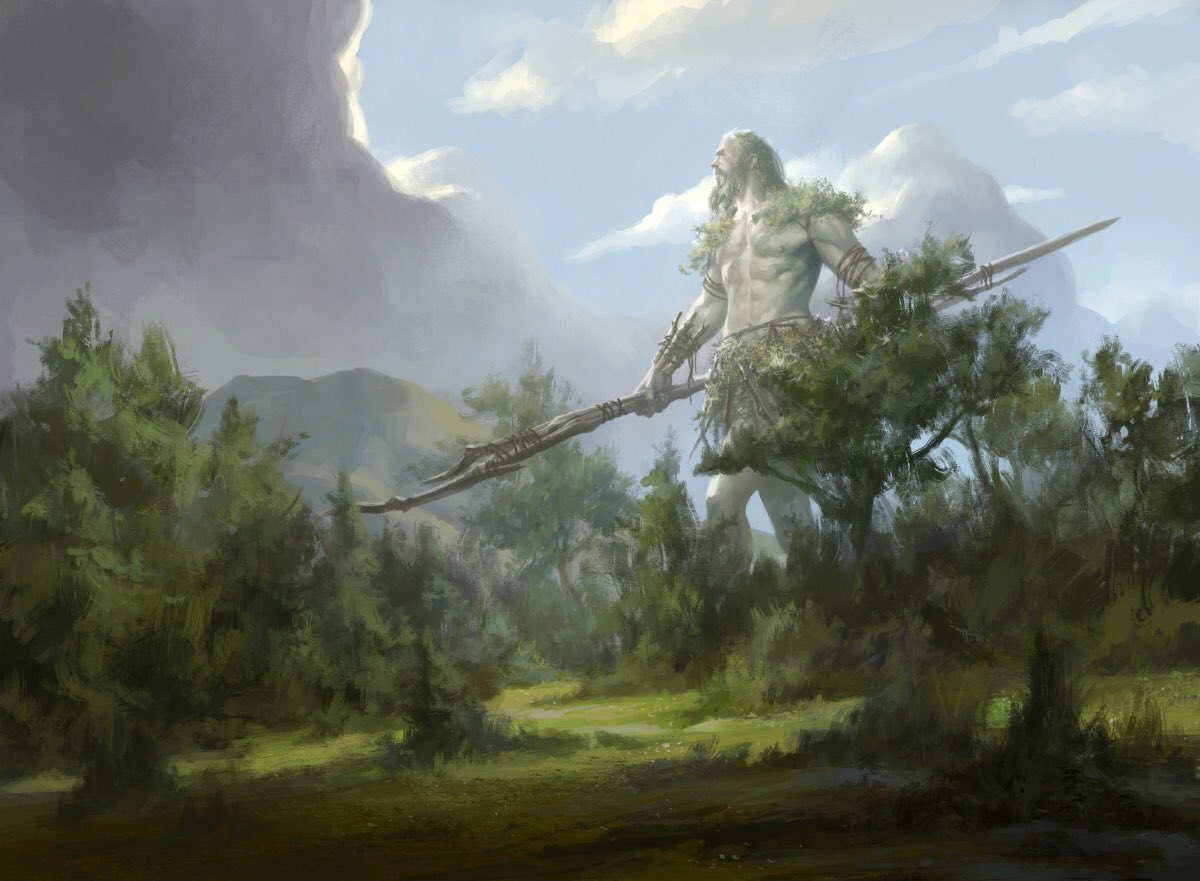
Warrior Races
This section contains changes to certain races, which all share a certain warlike disposition. Some of them are, as written in official materials, radically different from their mythological or historical basis, and could use a rework to better match "reality." Others are very weak, and could use a boost as other races leave them far behind in power. A few others are new races, added to expand this section and add new options, especially for martial characters.
Centaur
Raucous and passionate as wild stallions, centaurs are creatures with the lower body of a horse and the upper body of a human. Incorrigible nomads, these wanderers put down few roots and possess the wisdom of centuries of experience in the wild as well as a dangerously fun-loving disposition. When they pass through, wild celebrations that end with missing food, drink, and citizenry are to be expected.
Ability Score Increase. Your Strength score increases by 2, and your Wisdom score increases by 1.
Age. Centaurs mature and age at the same rate as humans.
Alignment. With their need to travel and love of festivities, centaurs tend toward chaotic alignment. They are rarely purposely malicious or evil, though the victims of their destructive merrymaking disagree.
Size. Centaurs stand between 6 and 7 feet tall, with their equine bodies reaching about 4 feet at the withers. Your size is Medium.
Speed. Your base walking speed is 40 feet.
Hybrid Nature. You have two creature types: humanoid and monstrosity. You can be affected by a game effect if it works on either of your creature types.
Charge. If you move at least 15 feet straight toward a target and then hit it with a melee attack on the same turn, you can immediately follow that attack with a bonus action, making one attack against the target with your hooves.
Hooves. Your hooves are natural melee weapons, which you can use to make unarmed strikes. If you hit with them, you deal bludgeoning damage equal to 1d4 + your Strength modifier, instead of the bludgeoning damage normal for an unarmed strike.
Equine Build. You count as one size larger when determining your carrying capacity, the weight you can push or drag, and the creatures that you can grapple or shove, as well as the DC of ability checks made to toss you. If a weapon, shield, or suit of armor you use has a Strength requirement, the requirement is reduced by 2. In addition, climbing is especially difficult for you because of your hooves. When you climb, each foot of movement costs you 4 extra feet, instead of the normal 1 extra foot. A Medium or smaller bipedal creature can ride on your back if you allow it. In such a situation, you continue to act independently, not as a controlled mount.
Finally, you are always considered mounted for all features and rules that involve it, such as mounting another creature (which you cannot do) or weapons with the cavalry property.
Wild Life. You gain proficiency in two of the following of your choice: Animal Handling, Medicine, Nature, Performance, Survival, brewer's supplies, leatherworker's tools, or weaver's tools.
Language. You can speak, read, and write Common and another language of your choice.
Dragonborn
An ancient race created by dragons in their own image, the poverty of the dragonborn belies their mighty heritage. Scattered to the winds by conquest and diaspora, time and distance have not dulled their passion. Filled by a boisterous zest for life and a love of riches, these vibrantly-colored reptile-men live ostentatious lives in spite of their low work as laborers, mercenaries, and hired muscle.
Ability Score Increase. Your Strength score
increases by 2.
Age. Young dragonborn grow quickly. They walk hours after hatching, attain the size and development of a 10-year-old human child by the age of 3, and reach adulthood by 15. They live to be around 80.
Alignment. Impassioned and independent, most dragonborn tend toward chaotic alignment. While their color does not influence their disposition (unlike true dragons), very few dragonborn are neutral; they tend toward zealous extremes of good or evil.
Size. Dragonborn are bulky, standing well over 6 feet tall and averaging about 250 pounds. Your size is Medium.
Speed. Your base walking speed is 30 feet.
Draconic Ancestry. You are descended from a particular breed of dragon. Choose a type of dragon from the Draconic Ancestry table. Your breath weapon, damage resistance, and the color and material of your scales are determined by the dragon type, as shown in the table.
| Dragon | Damage Type | Breath Weapon |
|---|---|---|
| Black | Acid | 5 by 30 ft. line (Dex. save) |
| Blue | Lightning | 5 by 30 ft. line (Dex. save) |
| Brass | Fire | 5 by 30 ft. line (Dex. save) |
| Bronze | Lightning | 5 by 30 ft. line (Dex. save) |
| Copper | Acid | 5 by 30 ft. line (Dex. save) |
| Gold | Fire | 15 ft. cone (Dex. save) |
| Green | Poison | 15 ft. cone (Con. save) |
| Red | Fire | 15 ft. cone (Dex. save) |
| Silver | Cold | 15 ft. cone (Con. save) |
| White | Cold | 15 ft. cone (Con. save) |
| Amethyst | Force | 15 ft. cone (Dex save) |
| Crystal | Radiant | 15 ft. cone (Dex save) |
| Emerald | Psychic | 15 ft. cone (Dex save) |
| Sapphire | Thunder | 15 ft. cone (Dex save) |
| Topaz | Necrotic | 15 ft. cone (Dex save) |
Damage Resistance. You have resistance to the damage type associated with your draconic ancestry.
Breath Weapon. You can use a bonus action to exhale destructive energy of a type and shape determined by your ancestry. When you use your breath weapon, each creature in its area must make a saving throw. The DC for this saving throw equals 8 + your Constitution modifier + your proficiency bonus. A target takes 2d6 damage on a failed save, and half as much damage on a successful one. The damage increases to 3d6 at 3rd level, and increases by another d6 every other level afterward.
Once you use your breath weapon, you cannot use it again until you finish a long rest.
You can also manifest tiny wisps of your breath weapon without expending it, or even if you used it already. Dragonborn often use fire or lightning sparks to light fires, cold breath to cool fevers, or acid to melt tiny pits in surfaces.
Languages. You can speak, read, and write Common and Draconic.
Subrace. As dragonborn grow to adulthood, they begin to exemplify one aspect of dragonkind, which alters their physical and magical abilities. These aspects are commonly, but not always, passed from parent to child, and usually
affect a dragonborn's personality traits in addition to their physical characteristics.
Avarice
Dragons' famed lust for gold endures in these dragonborn, who suffer a persistent and painful need to gather valuables into an ever-growing hoard. With keen senses attuned to treasure, these jealous dragonborn keep a vigilant watch for new wealth wherever it can be found.
Ability Score Increase. Your Intelligence score
increases by 1.
Hoard-Keeper. You know the mending cantrip. When
you reach 3rd level, you can cast the alarm spell once per
day; you must finish a long rest in order to cast the spell again using this trait. When you reach 5th level, you can also cast the locate object spell once per day; you must finish a long rest in order to cast the spell again using this trait. Intelligence is your spellcasting ability for these spells.
Treasure Sense. You can supernaturally sense gold, gems, and other treasures within 30 feet of you and through most barriers, but your senses are blocked by 1 foot of stone, 1 inch of common metal, a thin sheet of lead, or 3 feet of wood or dirt. You can use this trait to detect the presence of magical items, but not identify them or their abilities.
Brutality
Broader and bulkier than their kin, Brutality Aspect Dragonborn embody the physical might of their ancestors, who fight with savage cunning and brutal efficiency.
Ability Score Increase. Your Constitution score
increases by 1.
Powerful Build. You count as one size larger when determining your carrying capacity, the weight you can push, drag, or lift, and the creatures you can grapple or shove, as well as when tossing another creature. If a weapon, shield, or suit of armor you use has a Strength requirement, the requirement is reduced by 2.
Tenfold Shields. While you aren't wearing armor, your Armor Class equals 13 + your Dexterity modifier. You can use a shield and still gain this benefit.
Teeth like Swords. Your claws and teeth are natural weapons which you can use to make unarmed strikes. If you hit with them, you deal slashing damage (claws) or piercing damage (teeth) equal to 1d4 + your Strength modifier, instead of the bludgeoning damage normal for an unarmed strike.
You can also use your jaws to grapple a creature without a free hand. When you grapple a creature in this way, it has disadvantage on saving throws against your breath weapon until it is released from your grip.
Majesty
A dragon inspires awe in all who encounter it. The dragonblood that flows through your veins gives you the same commanding presence.
Ability Score Increase. Your Charisma score
increases by 1.
Supernatural Awe. You know the thaumaturgy cantrip.
Once you reach 3rd level, you can cast the cause fearXGE spell; you must finish a long rest in order to cast the spell again using this trait. Once you reach 5th level, you can also cast the enthrall spell; you must finish a long rest in order to cast the spell again using this trait. Charisma is your spellcasting ability for these spells.
Voice of the Wyrm. You can expend your use of your breath weapon to roar, forcing creatures of your choice within 30 feet of you that can hear you to make a Wisdom saving throw (DC 8 + your proficiency bonus + your Charisma modifier). On a failed save, a target is frightened of you for 1 minute. If it takes damage, it can repeat the save, ending the effect on itself on a success.
Mastery
With the primordial magic of their ancestors flowing through their veins, Mastery Aspect Dragonborn are natural-born mages with incredible control over their ancestral power.
Ability Score Increase. Your Charisma score
increases by 1.
Dragonblood Sorcery. You know one cantrip determined by your Draconic Ancestry, as listed on the table below. Charisma is your spellcasting ability for this cantrip.
| Ancestry | Cantrip |
|---|---|
| Black | primal savageryXGE |
| Blue | shocking grasp |
| Brass | create bonfireXGE |
| Bronze | lightning lureTCE |
| Copper | acid splash |

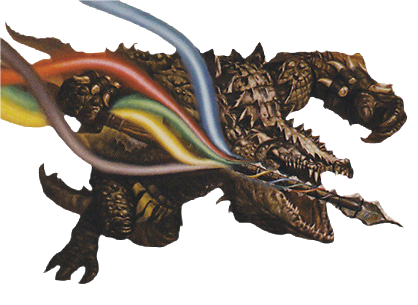
| Ancestry | Cantrip |
|---|---|
| Gold | produce flame |
| Green | poison spray |
| Red | fire bolt |
| Silver | frostbiteXGE |
| White | ray of frost |
| Amethyst | sword burstTCE |
| Crystal | sacred flame |
| Emerald | vicious mockery |
| Sapphire | thunderclapXGE |
| Topaz | chill touch |
Elemental Channel. You can use your magic to warp the elements. When you deal acid, cold, fire, poison, or lightning damage, you can change that damage type to the same type as your Draconic Ancestry. If you are an amethyst, crystal, emerald, sapphire, or topaz dragonborn, this feature works in the same way, but you can use it when you deal force, necrotic, psychic, radiant, or thunder damage instead.
Lesser Giants
Beneath or outside the Ordning—the caste system of true giants—these radically-different groups share many physical traits. While grouped together, each are separate cultures and species, and tend to despise each other nearly as much as the giants from which they take their name and language. Rare, towering sights in the realms of smaller humanoids, lesser giants make invaluable enforcers and elite soldiers.
Ability Score Increase. Your Strength score
increases by 2.
Age. Lesser giants live long lives, but not nearly as long as true giants. They reach adulthood in their 30s and can live as long as 200 years.
Size. Lesser giants stand between 7 and 8 feet tall and weigh between 240 and 300 pounds. Your size is Medium.
Speed. Your base walking speed is 30 feet.
Muscle Mass. You have proficiency in the Athletics skill.
Powerful Build. You count as one size larger when determining your carrying capacity, the weight you can push, drag, or lift, and the creatures you can grapple or shove, as well as when tossing another creature. If a weapon, shield, or suit of armor you use has a Strength requirement, the requirement is reduced by 2.
Languages. You can speak, read, and write Common and Giant.
Subrace. Long lines of ancestry divide lesser giants into distinct clans, isolated from each other and the outside world. These groups share little kinship, and even less affection.

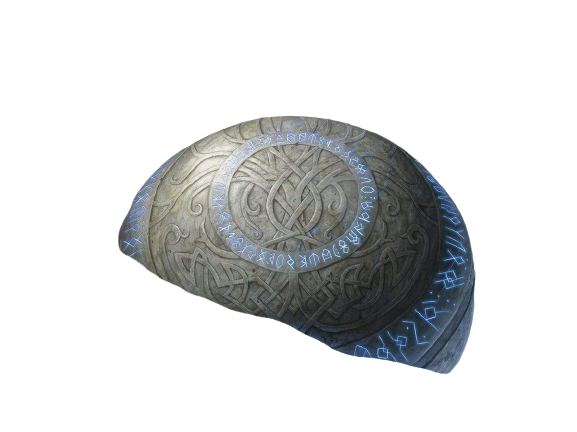
Goliath
In the highest mountains live Goliaths, descended from the children of humanoids and stone giants. These folk live peaceful, pastoral lives but can be brutally dangerous when roused to anger.
Ability Score Increase. Your Constitution score
increases by 1.
Alignment. Attuned to nature's impassive rhythms with focus on self-reliance, clear roles, and personal accountability, goliaths tend toward law and neutrality in affairs outside their own mountain villages.
Mountain Born. You have resistance to cold damage. You're also acclimated to high altitudes, including elevations above 20,000 feet.
Stone Flesh. Mineral veins that block incoming damage crisscross your skin. The first time on a turn that you take nonmagical bludgeoning, piercing, or slashing damage, you reduce the damage by an amount equal to your Constitution modifier (a minimum of 1).
Fir Bolg
This primordial race has inhabited uncleared forests since ancient times, competing with fey, humans, fomorians, and gods for territory. Their name translates as "men of the bag" or "men of the bellows," which refers to their ability to grow with spasmodic battle-rage.
Once enslaved laborers, the fir bolg became conquerers, only to be usurped within a single generation. The remains of their kingdoms still linger in the remains of the forests they once ruled.
Ability Score Increase. Your Wisdom score
increases by 1.
Alignment. With a government of provinces beneath a high kingship formed after centuries of oppression, the fir bolg tend toward loyalty to their own and a lawful civilization. Their code of honor and enmity with the evil fomorians make evil fir bolg a rarity.
Languages. You can speak, read, and write Sylvan.
Fury of the Ancients. You can channel your ancestors' battle-rage to force your body to swell with anger. As a bonus action, you cause yourself and everything you are wearing or carrying to increase by one size category (from Medium to Large), and gain a number of temporary hit points equal to 1d4 + your level. This transformation and temporary hit points last for 1 minute. In this state, your weapon attacks do an additional 1d4 damage.
You can enter this battle-rage a number of times equal to your Strength modifier (a minimum of once), and must complete a long rest before you do so again.
Nephilim
Born of sinful mortals and fallen angels, these antediluvian warrior-poets ruled before the rise of humanoids. With a flawless, uncannily beautiful aspect, their haunting battle-hymns echo from the hidden warbands and prehistoric ruins where they linger.
Modern nephilim fondly remember bygone days when their bronze-armored warriors controlled fertile farmlands and dominated the smaller races for tribute, wealth, and labor. Their subjects' benevolent gods helped them rebel against and overthrow the nephilim, whose shadowy pantheon remained distant as the empire fell.
The nephilim now lurk in the jagged ruins of their civilization where ancient instinct wards other races away. They survive by terrorizing isolated villages for food and tribute, carving out petty empires in a pale imitation of their grandiose past. With their meager tributes, they imitate bloody sacrifices to their aloof, primordial gods that their ancestors performed before the rule of men and elves.
Alignment. The Nephilim strive to conquer and subjugate the races that succeeded them. They are usually evil.
Ability Score Increase. Your Charisma score
increases by 1.
Born Crusader. All Nephilim are fearsome fighters, trained for battle. You gain one fighting style of your choice.
Language of the Gods. You can speak, read, and write Celestial. As a bonus action, you can issue inspiring chants or terrible challenges in that mighty tongue. Choose a number of creatures up to your Charisma modifier (a minimum of 1) within 60 feet that can hear you. A target has advantage or disadvantage (your choice) on the first attack roll or ability check it makes before the start of your next turn.
You can give this oration a number of times equal to your proficiency bonus. You regain all expended uses when you finish a long rest.
Ogrillon
The results of unfortunate unions between ogres and humans, orcs, or goblinoids, ogrillon are diminished in size and stupidity compared to their pure-blooded ogre kin. This middle ground makes them valuable thugs for criminals and mercenaries; they are easier to manipulate and control, and take orders more willingly. While far from geniuses, cunning ogrillon often exploit their ogre parents'
reputation for incredible stupidity to
surprise enemies who
underestimate them.
Human parents rarely survive an ogrillon's birth, so most half-ogres are raised by ogre gangs. Their slightly-higher intelligence and social needs make life within rudimentary ogre society unsatisfying, but their fearsome appearance and violent disposition make them incompatible with all but the most boorish and lawless humanoid societies.
Most ogrillon strike out on their own, and live solitary lives on the fringes of civilization, occasionally trading with solitary travelers. These lonely folk are quick to make friends, but the combination of great strength, social ignorance, and short temper turns new friends into enemies, and enemies into corpses, in seconds. In spite of this, Ogrillon can find acceptance within the hobgoblin war machine—where they live cruel, short lives as glorified beasts of burden.
Alignment. Selfish, indulgent, and brutish, with attention spans limited by their appetites, ogrillon are outcasts wherever they go. Unwelcome among men and monsters, ogrillon rarely find solace among their own kind or form lasting alliances. They are usually chaotic, and rarely good.
Ability Score Increase. Your Constitution score
increases by 1.
Languages. You can speak, read, and write Orcish or Goblin, taught to you by your fellow monsters or your non-ogre parent.
Darkvision. You can see in dim light within 60 feet of you as if it were bright light, and in darkness as if it were dim light. You can't discern color in darkness, only shades of gray.
Dense. You are too dull-witted for magic that twists the senses to affect your mind. You have advantage on all Intelligence, Wisdom, and Charisma saving throws against spells and magical effects.
Menacing. You gain proficiency in the Intimidation skill.

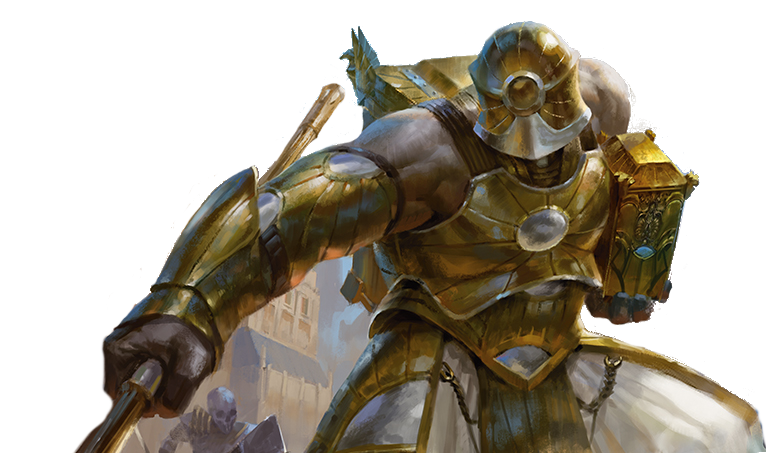
Human
Able to inhabit any environment and conquer any territory, humans have a rich history of cultural variety, adaptability, and sheer endurance. A dwarf or orc has more stamina, but where they recognize a task as impossible, humanity's dogged determination pushes them onward regardless.
Ability Score Increase. Each one of your Ability Scores increases by 1.
Age. Humans reach adulthood in their late teens and live less than a century.
Alignment. Humans tend toward no particular alignment. The best and the worst are found among them.
Size. Humans vary widely in height and build, from barely 5 feet to just over 6 feet. Your size is Medium.
Speed. Your base walking speed is 30 feet.
Marcher's Endurance. Primitive humanity hunted by outlasting its prey over slow pursuit, an ability that serves modern humans well on long marches and sleepless nights. You have advantage on ability checks and saving throws to prevent exhaustion.
Languages. You can speak, read, and write Common and one other language of your choice.
Subrace. Humans inhabit most environments, and gain particular skills from living there. Many humans' origins can be identified at a glance, for human physiognomy adapts to its environment over generations with frightening speed.
Desert
Congregated around oases and springs, the harsh desert yields to this people a multitude of resources. Famed for their wealth, the centers of trade, learning, and culture built by these far-traveling humans shine like diamonds in the sand.
Traveling Trader. You gain proficiency in Persuasion, Survival, and the scimitar or shotel. You also learn one language of your choice.
Take the Heat. You’re naturally adapted to hot climates, as described in chapter 5 of the Dungeon Master’s Guide, and you ignore difficult terrain created by sand. Finally, a taste of water harmlessly tells you if it is clean and safe to drink, without poison, disease, or contamination.
Forest
Surrounded by hostile wilderness, forest humans are a hardy people who eke out a living in fields or build walls to protect against the horrors lurking in the brambles. Others inhabit the depths of the woods, living amongst nature, and rely on its bounty for survival and its chaotic tangles for protection.
Woodsman. You gain proficiency in Stealth, the handaxe or arming sword, and woodcarver's tools.
Man the Walls. Many forest humans congregate in towns and castles; others use trees for protection. Used to taking shelter in battle, you gain an additional +1 bonus to AC and Dexterity saving throws from half and three-quarters cover.
Highlander
With empires built on terraced mountain peaks and ancient clans rooted between the hills, these humans thrive at the roof of the world. Their rocky surroundings make harsh living, but are a powerful defense against lowland invaders.
Mountain Men. You gain proficiency in Athletics, the mace or greatsword, and bagpipes or weaver's tools.
You are also acclimated to high altitude, including elevations above 20,000 feet.
Eye for Fractures. You are accustomed to crossing untrustworthy terrain. You gain a climbing speed equal to your walking speed, and can tell if any surface, ledge, bridge, or handhold can take your weight (including anything you are wearing or carrying) when you see it.
Islander
Scattered across coasts and isolated islands across the world, this resolute group of humans colonize far-flung and hostile terrain that others dare not seek. They fly in the face of the assumption that humans are terrestrial creatures, and thrive in and around the world's sapphire oceans.
Fishermen. You gain proficiency in the harpoon or trident, navigator's tools, and water vehicles. You also gain a swim speed equal to your walking speed.
Stand in the Surf. Used to long trips on rough seas, you stand obstinate against the elements. You have advantage on checks and saving throws against weather, spells, and other effects that would knock you prone or move you against your will. You also ignore the effects of heavy precipitation and strong winds, as described in the Dungeon Master's Guide.
Jungle
In the humid woods of tropical regions, these humans survive against and alongside the most dangerous mundane and magical beasts. Living in groups that range from tribal bands to mighty empires in cities of vine-choked stone, these fierce humans live with a grudging respect for their hostile environment, which leads unwary foreigners to their demise.
Rainforest Warrior. You gain proficiency in Perception, the battleaxe or spear, and the drum. You also have a climbing speed equal to your walking speed.
Eyes in the Gloom. Unlike most humans, you have excellent night vision. You can see in dim light as though it were bright light, and in darkness you have advantage on Perception checks using senses other than sight.
Steppe
Inhabitants of rolling plains, these nomadic humans rely on herds of animals for meat, milk, and material instead of the harsh soil. They also train such beasts for war: when united under a common banner, they form an unstoppable force.
Horselord. You gain proficiency in Animal Handling, the scimitar or recurve bow, and land vehicles.
Nomad. You fight with great agility and control. Your base walking speed increases by 5 feet, and when mounted you and your mount have advantage on Dexterity saving throws.
Tundra
Inhabitants of the frigid snowfields at the ends of the world, these humans defy the elements simply by existing. With a wasteless lifestyle that borrows from the creatures native to their snowy homes, these humans owe their survival to their tenacity and inventiveness in the face of impossibility.
Sustenance Hunter. You gain proficiency in Nature, the boar spear or harpoon, and leatherworker's or scrimshander's tools.
Last Through the Winter. You are inured to subzero temperatures. You are naturally adapted to cold climates, and ignore all difficult terrain created by ice, snow, and slush.
PART II
Subclasses
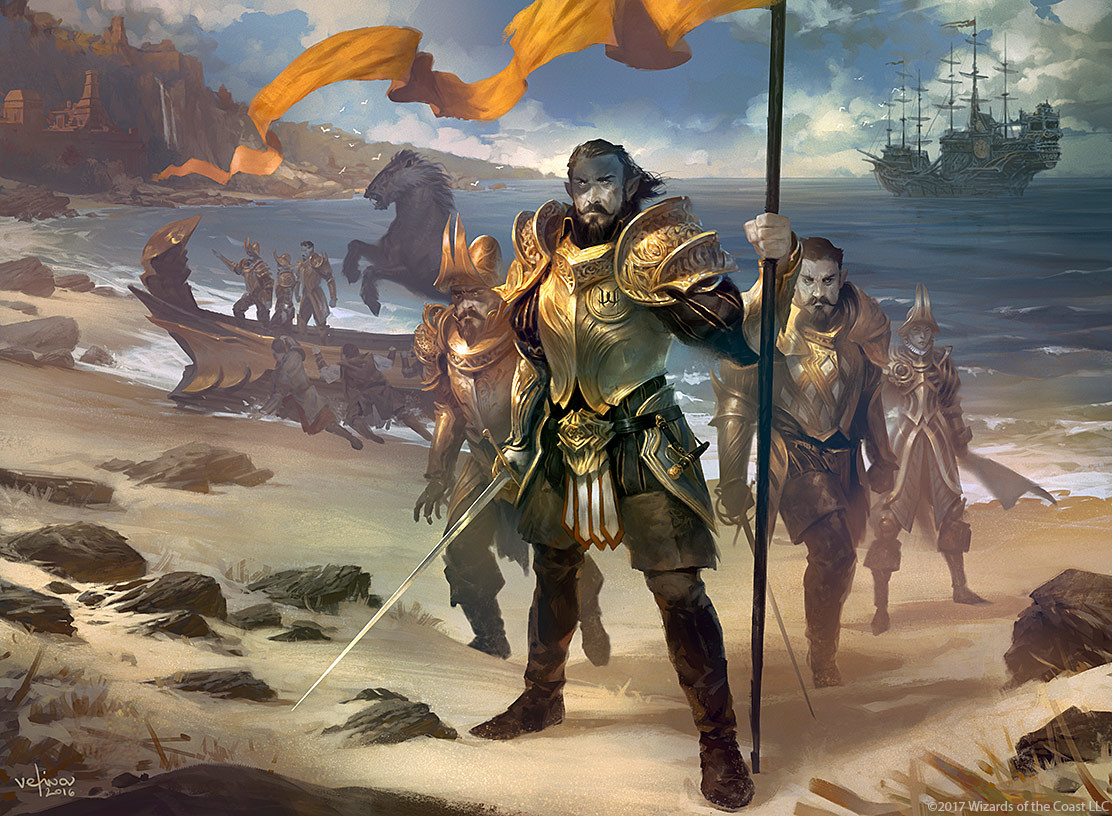
Barbarian
Famous for their raw power, barbarians can have remarkably versatile characterizations in spite of their narrow archetypal base. Five new primal paths add new ways for barbarians to ply their talent for reckless destruction.
Updated Class Features
The following entries detail changes and enhancements to various barbarian features.
New Proficiencies
You gain the additional proficiencies listed below.
Weapons. One exotic weapon or shield.
Rage
1st-level barbarian feature
Rage works as-written, with the following changes:
- When you make an attack with a melee weapon that uses Strength, you gain a +1d4 bonus to the damage roll. This die grows as you gain levels in this class, to 1d6 at 9th level, and 1d8 at 16th. This replaces your Rage Damage listed on the Barbarian class table. When a feature adds your Rage Damage bonus, you roll this die and add the result instead.
- If you are able to cast spells, you can't cast them or concentrate on them while raging, unless the spell was granted by a racial feature or racial feat.
Reckless Attack
2nd-level barbarian feature
Reckless Attack works as-written, with the following change:
You have advantage on attack rolls using Strength until the start of your next turn, not until the end of your current turn.
Brutal Critical
9th, 13th, and 17th-level barbarian feature
Brutal Critical works as-written, with the following change:
Weapons that deal multiple damage dice per hit roll each damage die an additional time when you use this feature, instead of a single die. At 13th level you roll the weapon's damage dice two additional times, and 17th level you roll the dice three additional times.
Rage Beyond Death
14th-level Path of the Zealot feature
Rage Beyond Death works as-written, with the following addition:
Being knocked to 0 hit points doesn't inflict additional levels of exhaustion if you are raging.
Primal Paths
At 3rd level, a barbarian gains the Primal Path feature, which offers you the choice of a subclass. The following additional options are available to you when making that choice: Path of the Berserker, Path of the Bonebreaker, Path of the Cataclysm, Path of the Crescendo, Path of the Ironclad, and more options for the Path of the Totem Warrior.
Path of the Berserker
For some barbarians, rage is a means to an end—that end being violence. The Path of the Berserker is a path of untrammeled fury, slick with blood, where anger for anger's sake is king. As a berserker enters a rage, they thrill in the chaos of battle, heedless of their own health and well-being.
Frenzy
Starting when you choose this path at 3rd level, you can go into a frenzy when you rage. During a frenzied rage, you can make one additional melee weapon attack when you take the Attack action, but every attack that you make during this rage must use your Reckless Attack feature.
Mindless Rage
Beginning at 6th level, the bloody joy of battle wipes out other influences. While raging, you can't be charmed or frightened, and are immune to psychic damage. If you are charmed or frightened when you enter a rage, the condition ends.
Terrifying Rampage
Starting at 10th level, whenever you reduce a target to 0 hit points you can choose to force creatures of your choice within 30 feet of the slain target that can see and hear you to make a Wisdom saving throw (DC equal to 8 + your proficiency bonus + your Strength modifier). Each creature that fails its save is frightened of you until the end of your next turn. A creature with fewer hit points than the damage you dealt has disadvantage on its saving throw.
Adrenaline Rush
Starting at 14th level, when you are attacked, you can use your reaction to make a weapon attack against the attacker. You can enter a frenzied rage as part of the same reaction, potentially gaining resistance to the damage from the attack.
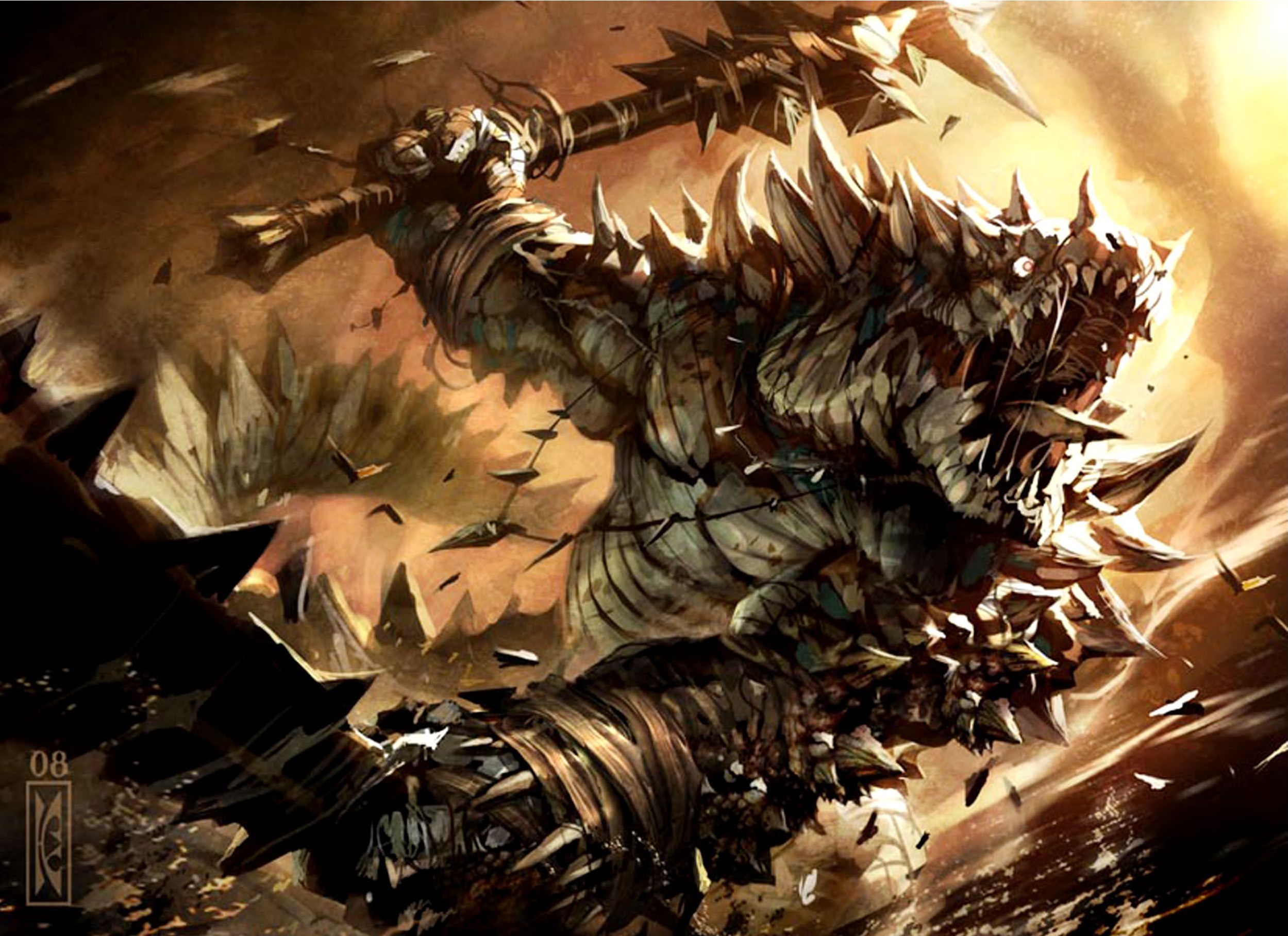
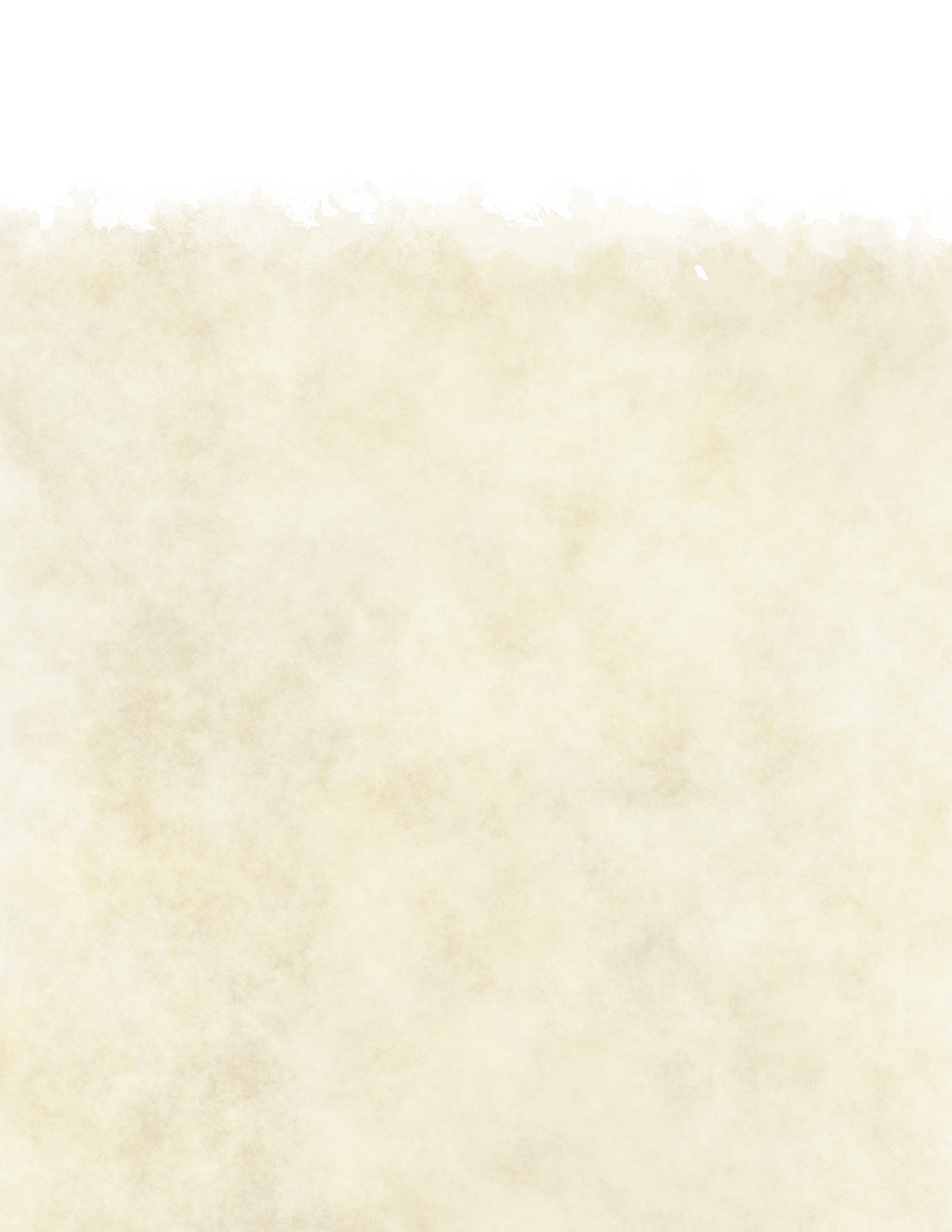
Path of the Bonebreaker
Brawlers, battleragers, gladiators, and pugilists, Bonebreakers wield crude-but-powerful weapons older than any other: their own two fists. Seemingly impervious to pain, their bone-shattering blows dent the finest armor and sunder the hardest scales. To a Bonebreaker, magic and weapon alike can never compete with a strong right hook.
Flesh and Steel
Starting when you take this path at 3rd level, you gain proficiency in spiked armor. Spiked armor is light armor made from plates of leather embedded with steel spines that weighs 20 lbs. While you wear it, your AC is 13 + your Dexterity modifier. While wearing spiked armor, whenever you make a Strength (Athletics) check to Overrun or inflict, escape, avoid, or maintain a grapple with another creature, you deal 1d4 piercing damage to that creature. When another creature wears this item, it is considered leather armor.
You also gain proficiency in leatherworker's tools, and can use them to reassemble any leather or hide armor into a set of spiked armor and two cestus during a short or long rest.
Finally, your raw bulk provides an additional layer of physical defense. Whenever you would use your Dexterity modifier to calculate your AC, you can use your Strength modifier instead.
Furious Fists
Also at 3rd level, your punches hit harder than any other. You gain the Unarmed Fighting style (detailed in Part IV), which you can also use when wielding a cestus as though you were wielding no weapons.
Your unarmed strikes and attacks with cestus have the sundering property. Even though they lack the light property, you can use your fists to engage in two-weapon fighting,
and you add your ability score modifier to the damage of the additional attack when you use a cestus or fist to make it.
I am Unbreakable!
Starting at 6th level, your stamina in a brawl matches even the most hardened soldier. You have advantage on saving throws against being stunned or being put to sleep.
In addition, you can use a bonus action while raging to expend a hit die and send a surge of strength through your body. When you do so, you end one of the following conditions on yourself: blinded, charmed, deafened, frightened, poisoned, or restrained. When you expend a hit die in this way, you do not regain hit points. You can use this feature a number of times per long rest equal to your proficiency bonus.
Thorned Charge
At 10th level, you can barrel through many foes. When you take the Dash action, you can Overrun (Dungeon Master's Guide, page 272) any number of creatures without expending an action or bonus action. When you successfully Overrun a creature it takes 2d4 bludgeoning damage and is knocked prone. If you are wearing spiked armor, you deal 2d4 piercing damage instead (for a total of 3d4 piercing damage).
If the creature that you attempted to Overrun succeeds on the check, it takes half as much damage and isn't knocked prone, but you still move through its space.
Right Hook
Beginning at 14th level, you can ruthlessly exploit the flaws in your enemies' guards. If you have advantage on an attack roll with an unarmed strike or cestus and you hit, you can use the maximum possible result on all of the attack's damage dice instead of rolling.
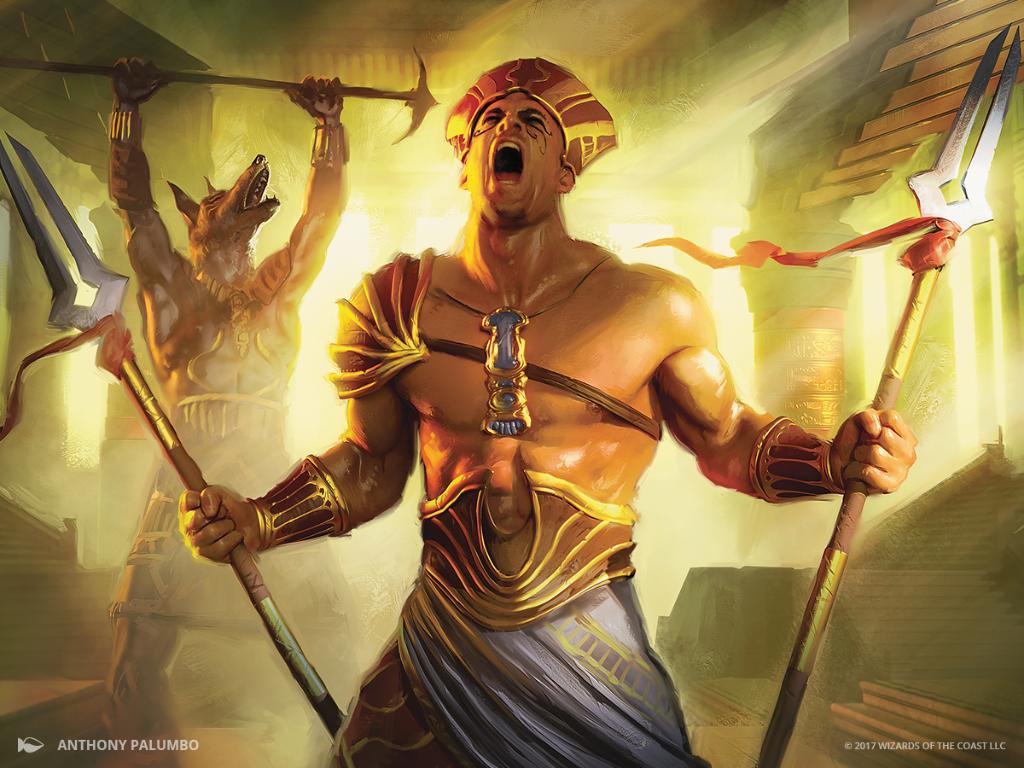
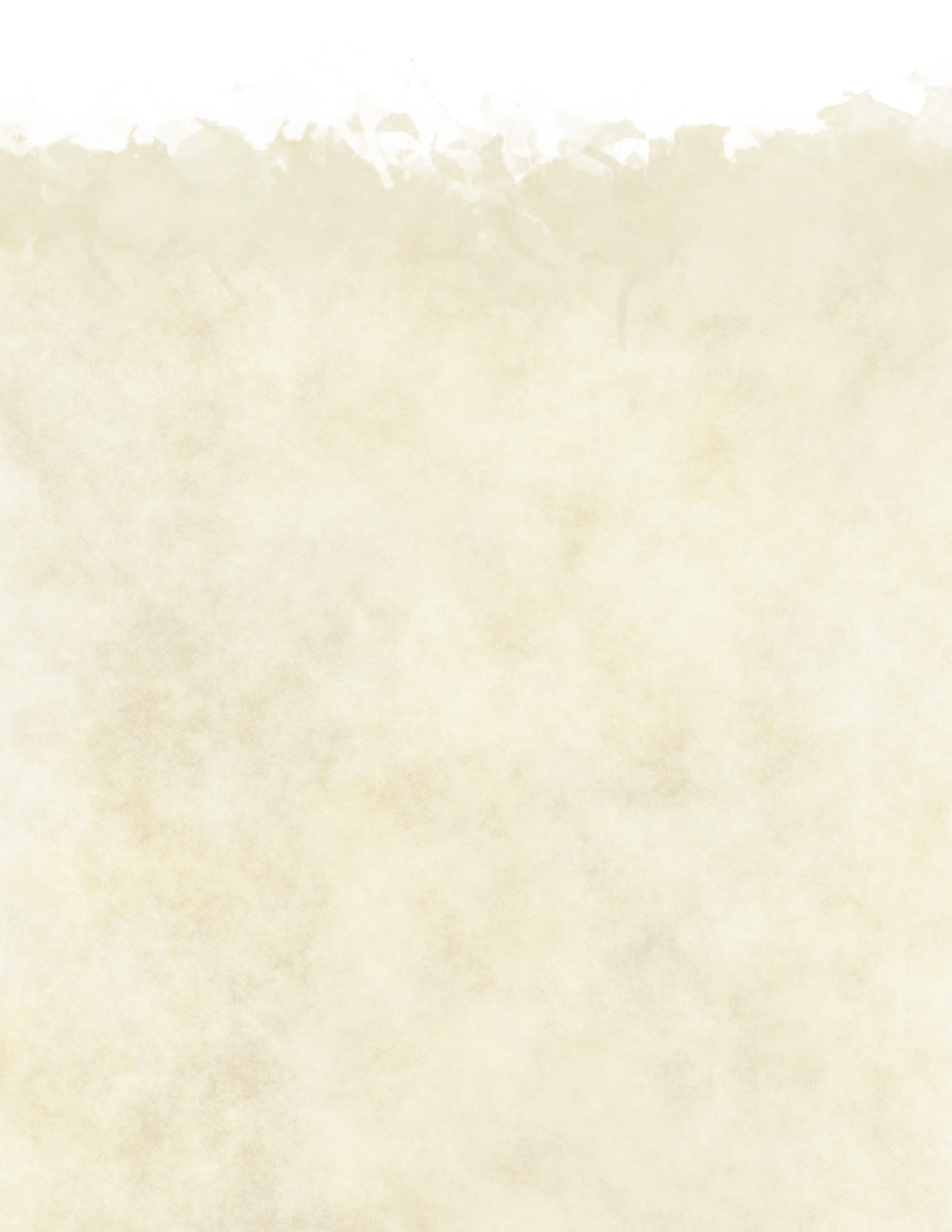
Path of the Cataclysm
All barbarians have powerful rage. The untamed elemental fury of those who follow the Path of the Cataclysm is a more tangible rage than most. Attuned to the greatest extremes and natural disasters, these barbarians train with druids at the harsh ends of civilization, or with planeswalkers at the paraelemental borders between worlds. These bastions of elemental power represent the chaotic energy of the natural world at its mightiest, and wield it on the battlefield to widespread, devastating effect.
Disaster Aura
Starting at 3rd level, destructive elemental power explodes from you while you rage, creating a roiling aura of energy that extends 10 feet from you in every direction, though not behind total cover. The aura's radius increases to 15 feet at level 10 and 20 feet at level 14.
Choose a catastrophe from the options listed below. Your aura gains features based on the type you choose at this level, and you gain new features for the same aura at 6th and 14th levels in this class. You can change your chosen power whenever you gain a level in this class.
When a creature starts its turn within your aura, you can deal magical damage to it equal to half your barbarian level. If your aura's effects require a saving throw, the DC equals 8 + your proficiency bonus + your Constitution modifier.
Your aura determines the type of damage dealt. When you enter a rage, and as an action while raging, you can send power surging through your aura. Creatures of your choice in the area take an amount of damage equal to 1d6 + your Constitution modifier, of the same type as your aura.
This surge of power allows you to maintain your rage as though you attacked a hostile creature.
Blight. You emanate disease and toxic miasma. You deal necrotic damage, and creatures of your choice in your aura suffer disadvantage on Strength and Dexterity checks as plague and parasite wrack their bodies.
Blizzard. Winter wind and frigid snow surround you. You deal cold damage, and can use the plunging temperature to soothe the flames of battle. You can use a bonus action to give a creature of your choice within your aura temporary hit points equal to half your barbarian level.
Earthquake. Your blows carry the incredible power of shifting earth and falling avalanches. You deal thunder damage, and can use a bonus action to focus the tremors on a creature of your choice within your aura. That creature must make a Strength saving throw or be knocked prone.
Flood. You are a portal to the crushing ocean depths. Your aura deals bludgeoning damage. Creatures of your choice in your aura jump half as high and far as they otherwise could. For all creatures of your choice without a swim speed, the space in your aura is difficult terrain.
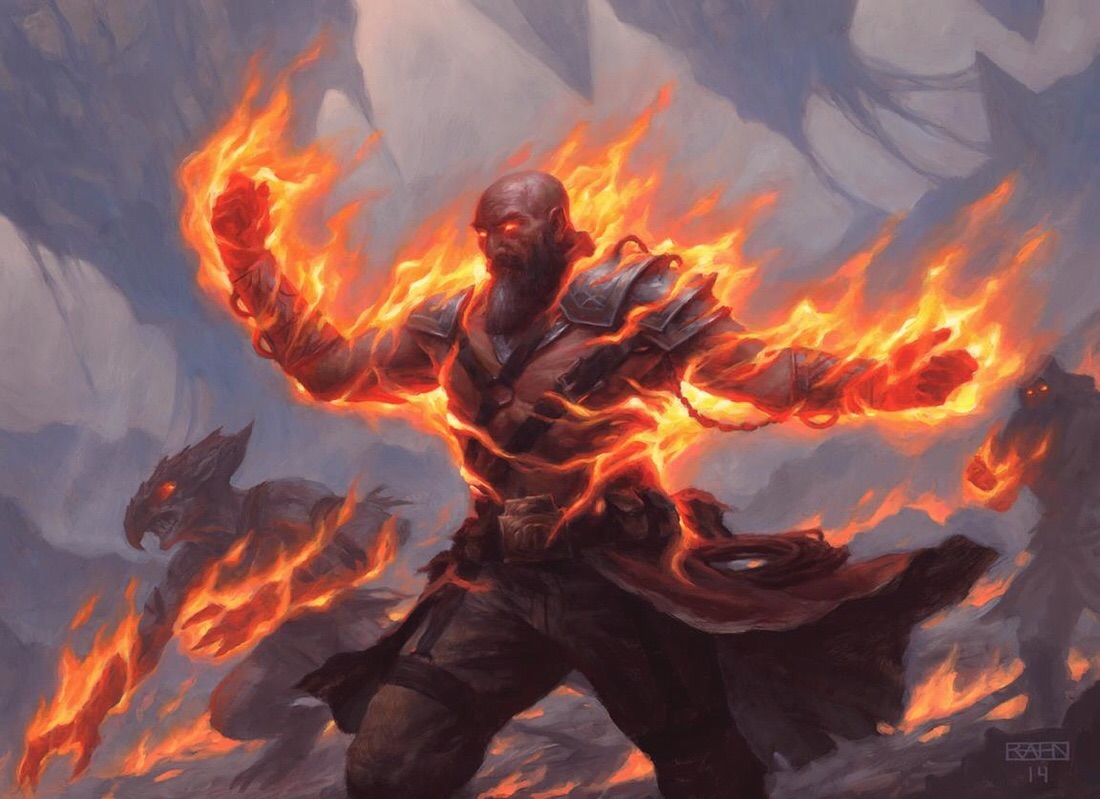
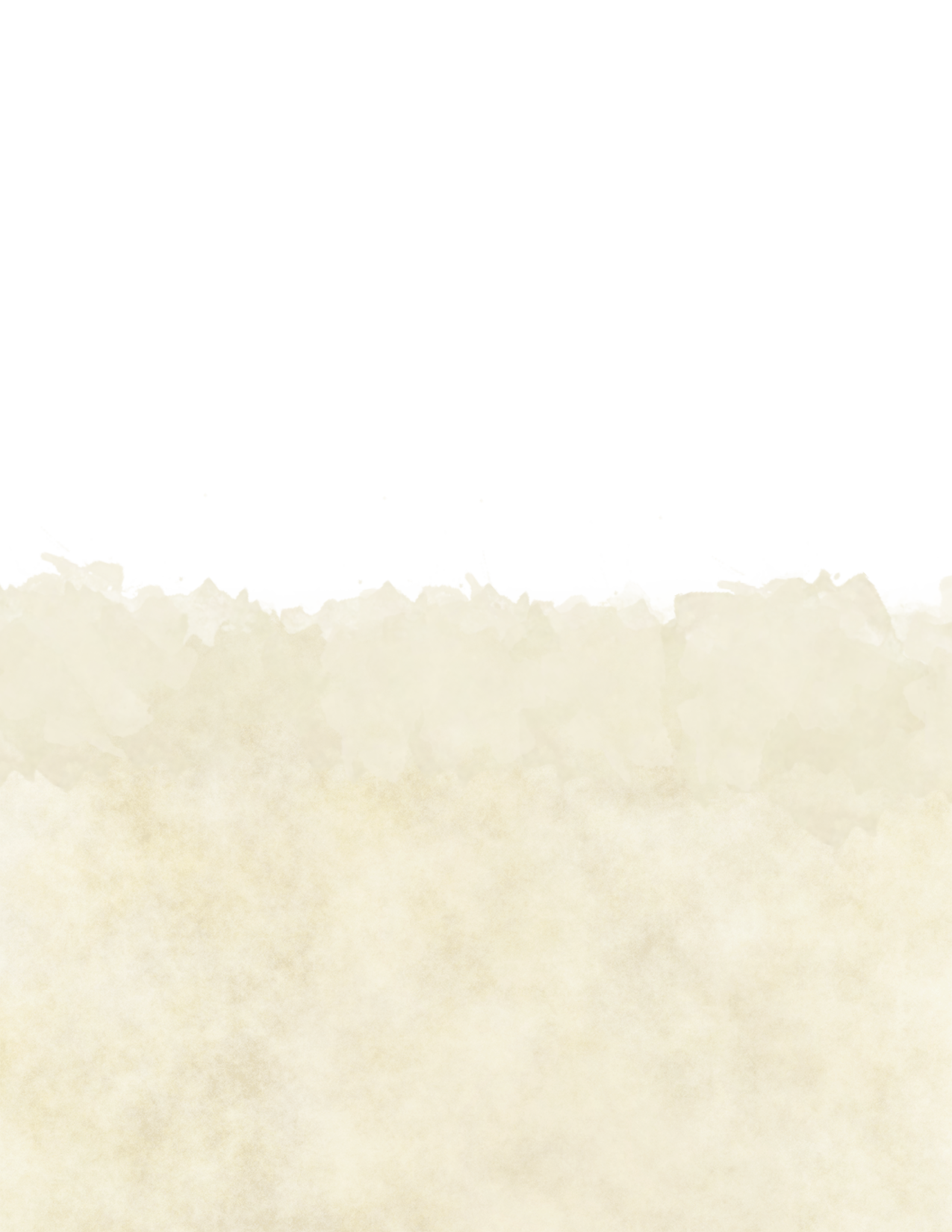
Nexus. A torrent of unrestrained magic whirls around you. You deal force damage, and when a spell or other magical effect that targets a single creature is cast by a creature within your aura or targets a creature within your aura, you can use your reaction to redirect the spell to yourself or a randomly-determined target within your aura.
Sandstorm. Wind hurls sand around your body. You deal slashing damage, and the area within your aura is difficult terrain for all creatures of your choice. When a creature within your aura makes or is targeted by a ranged attack, you can use your reaction to impose disadvantage on the roll.
Solar Flare. You explode with the power of the sun. You deal radiant damage, and cast bright light within and 30 feet beyond the limits of your aura, and dim light for another 30. You can use a bonus action to intensify the glare for one creature, which must make a Constitution saving throw. On a failed save, the target is blinded until the start of its next turn.
Tempest. Wind and lightning surge from your body. You deal lightning damage, and can use a bonus action to focus the lightning on a creature or object within your aura and blast it in a straight line up to 15 feet toward or away from you. If the target is composed of or wearing metal, you can move it up to 30 feet instead. When you do so, you cast bright light within and 15 feet beyond the limits of your aura, and dim light for another 15.
Volcano. You radiate incredible heat and powerful flames. You deal fire damage, and shed bright light in a 30-foot radius and dim light for an additional 15. When you take damage, you can use your reaction to erupt superheated jets of flame. Creatures of your choice within 5 feet of you take an amount of fire damage equal to your Constitution modifier (a minimum of 1) and are blasted 5 feet away from you.
Omen of Catastrophe
At 6th level, your power grants you benefits at all times, whether you are raging or not. You learn Primordial, the language of elemental magic, and gain one benefit based on your chosen aura:
Blight. You gain resistance to necrotic damage, and have advantage on saving throws against poisons and diseases.
Blizzard. You gain resistance to cold damage, and ignore difficult terrain created by ice, slush, and snow.
Earthquake. You gain resistance to thunder damage, and have tremorsense within 15 feet.
Flood. You gain a swim speed equal to your walking speed, and can breathe underwater. You also gain darkvision within a range of 30 feet. If you already have darkvision, its range increases by 30 feet.
Nexus. You resist force damage, and you and your attacks ignore any creation of magical force.
Sandstorm. You don't suffer the effects of extreme heat or strong winds, and can survive for thrice as long without food or water. You also learn the gust cantrip. Constitution is your spellcasting ability for this cantrip.
Solar Flare. You grain resistance to radiant damage, and learn the light cantrip. Constitution is your spellcasting ability for this cantrip.
Tempest. You gain resistance to lightning damage, and ignore the penalties of strong wind and heavy precipitation.
Volcano. You gain resistance to fire damage. You can also set aflame any object that isn't being worn or carried simply by touching it.
Gaia's Embrace
Beginning at 10th level, you can not only shield your allies from your furious aura, but also protect them from similar effects. All creatures of your choice within your aura have resistance to your aura's damage type unless you have a flood or sandstorm aura. Those auras grant you and your allies resistance to cold damage and fire damage, respectively.
Channel the Apocalypse
At 14th level, you can use powerful magics that personify your disaster. You learn a pair of spells determined by your aura, which you can cast only while raging. If your rage ends while you are concentrating on a spell, the spell continues for the remainder of its duration.
You can cast and concentrate upon these spells while raging, unlike normal spells. You also cast them without material components, if they require them. You can cast a spell granted by this feature a number of times equal to your Constitution modifier (a minimum of once), and regain all expended castings when you finish a long rest. Your spellcasting ability for these spells is Constitution. If a spell is not already 4th level or higher, then it is cast at 4th level.
Blight. giant insect, harm
Blizzard. armor of agathys, ice storm
Earthquake. move earth, earthquake
Flood. control water, water walk
Nexus. Bigby's hand, wall of force
Sandstorm. freedom of movement, wind wall
Solar Flare. fire shield, flame strike
Tempest. chain lightning, wind wall
Volcano. fireball, wall of fire
In addition, you are immune to the damage type dealt by your aura while raging.
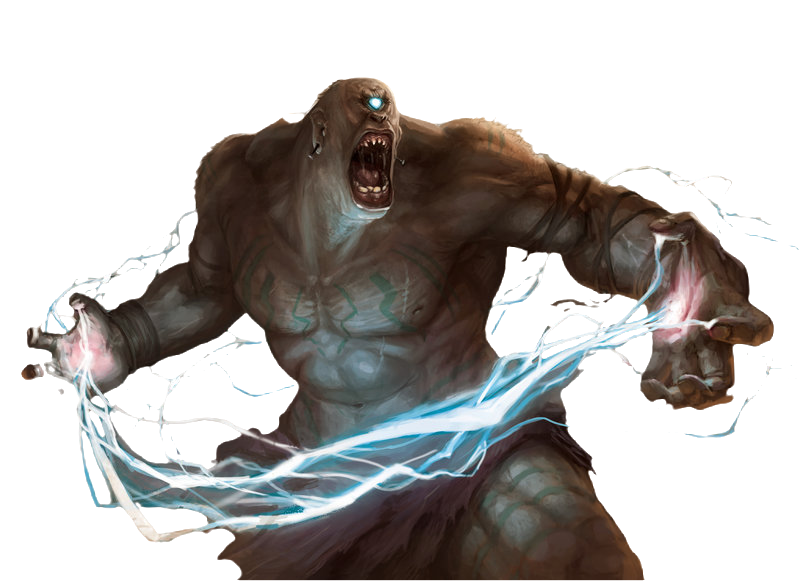
Path of the Crescendo
Those who follow the Path of the Crescendo use simple, well-practiced movements to rain attack after attack on their enemies in devastating cadence. The drums of war pound to the tempo of these barbarians' hearts, who constantly build to the next hammerblow.
Regular Violence
Each of your strikes is a drumbeat punctuating the rhythm of battle. Starting at 3rd level, whenever you hit a hostile creature with a weapon attack while raging, you gain an additional +1 bonus to the additional damage granted by your rage. This bonus cannot exceed half your barbarian level, and lasts until you miss an attack or your rage ends.
Furious Footwork
Beginning at 6th level, you gain proficiency in drums and your choice of Acrobatics or Performance. When you are prone, you can stand up using only 5 feet of movement, and when you Dash, you ignore difficult terrain or any penalty to your speed, unless your speed is 0.
Battle Beat
Starting at 10th level, you can use a bonus action while raging to make an uproar that thrills the hearts of your allies. Friendly creatures within 60 feet of you have advantage on saving throws to avoid being charmed, frightened, exhausted, or put to sleep until the start of your next turn. A creature
that cannot hear you does not gain this benefit.
Once before the start of your next turn, each inspired creature can add your Constitution modifier to one ability
check, attack roll, or saving throw it makes. It can wait
until after it rolls the d20 before deciding to use the
bonus, but must decide before the DM says
whether the roll succeeds or fails.
Once the bonus is added, it is lost.
A creature can have only one bonus at a time. You can use this bonus action a number of times equal to your Constitution modifier (a minimum of once) and regain all expended uses when you finish a long rest.
Staccato
Beginning at 14th level, your mighty blows ring with thunderous notes. When you hit a creature with a melee weapon attack, all other creatures of your choice within 5 feet of the target take thunder damage equal to your current rage bonus damage.
Path of the Ironclad
Titans of physical strength, barbarians who follow the Path of the Ironclad have mastered defensive combat by using civilization's greatest innovation: metal. Eschewing leather and furs for heavy plate crude weapons for gigantic, finely-forged instruments of destruction, these warriors clad in shining steel are barbarians for a new industrial age.
Crucible of Might
Your rage is tempered by a defensive nature, yet your strength and ability to exploit weight are unparalleled. Starting at 3rd level, you gain proficiency in heavy armor, and can use your Rage and Fast Movement features while wearing it even though those features state otherwise. You suffer no exhaustion from sleeping in armor, and do not have disadvantage on saving throws made against extreme heat while wearing armor.
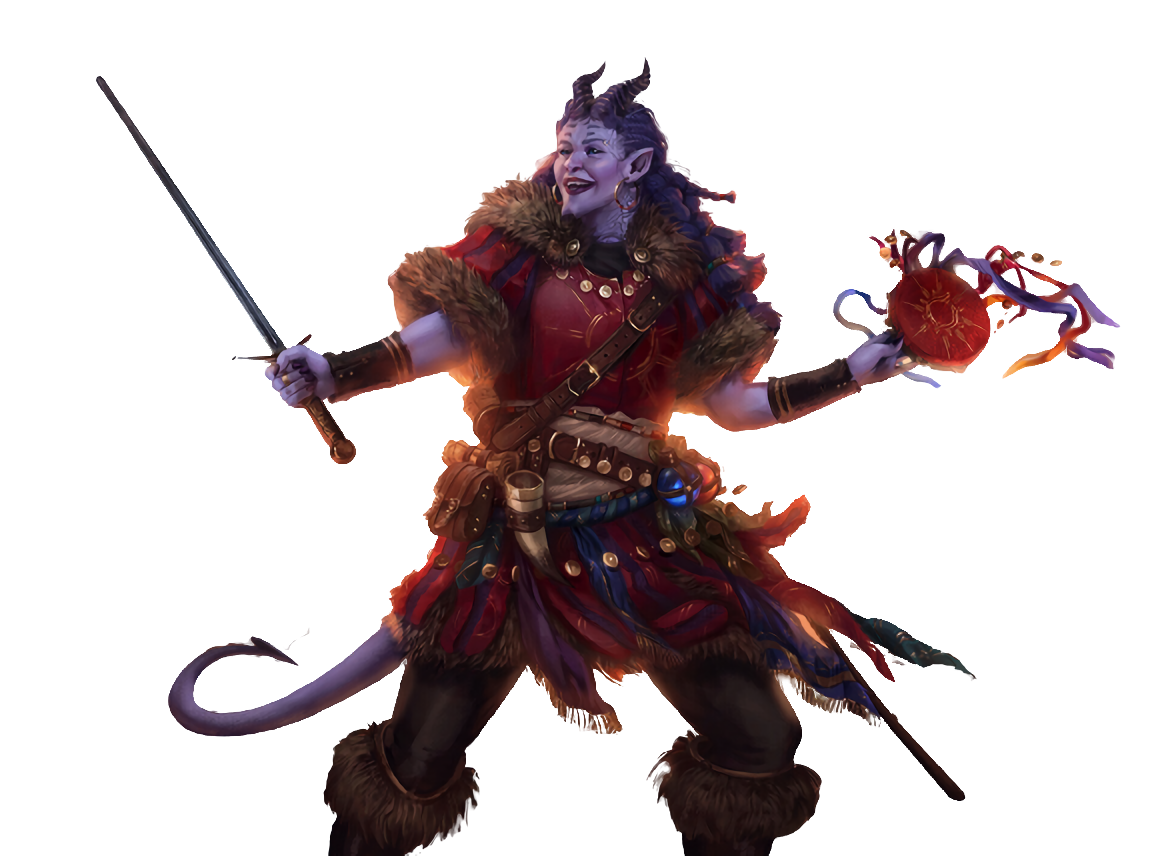
While raging and wearing heavy armor, you have resistance to fire damage. Finally, you gain proficiency with smith's tools, and can produce armor and weapons twice as quickly.
Unyielding
Starting at 6th level, your armor's weight lets you barrel through obstacles. While wearing heavy armor, you can move through difficult terrain and effects that require you to spend additional feet of movement such as the wall of thorns spell without being slowed. In addition, when you are subjected to an effect that would move you, knock you prone, or both against your will, you can use your reaction to be neither moved nor knocked prone.
Iron Curtain
At 10th level, the bulk of your mighty armor forces enemies to work around your presence, reducing their effectiveness against your allies. When a creature other than you within 5 feet of you takes nonmagical bludgeoning, piercing, or slashing damage, you can reduce the damage taken by an amount equal to your armor's damage reduction, if any.
Iron Curtain Variant
The Warrior's Codex adds new rules for heavy armor that allows its wearer to reduce the incoming damage, which your Iron Curtain feature spreads to your allies. If your group does not use these rules for armor, then Iron Curtain instead reduces damage taken by an amount equal to your Constitution modifier (a minimum of 1).
Dreadful Dreadnought
Starting at 14th level, your ability to shrug off mighty blows demoralizes your enemies and weakens subsequent strikes. Whenever you take an amount of bludgeoning, piercing, or slashing damage less than your barbarian level, the creature that inflicted that damage has disadvantage on the next attack roll it makes against you before the end of its next turn.
Path of the Totem Warrior
The animal kingdom contains creatures as exotic and bizarre as any monster. Totemic attunement to a few terrestrial mammals allows barbarians to gain the attributes of some of the most noble, powerful beasts known to mankind, but the animal kingdom offers so much more.
If you follow the Path of the Totem Warrior, you have access to the options presented here, in addition to those presented in the Player's Handbook and other sources. For a list of options organized by level instead of by the animal totem that grants these new powers, click here to access The Menagerie of Might, a separate document that details those options in different order.
The end of this section also contains a list of animals that can be emulated with a combination of existing totems, rather than a whole new set of abilities.
Elephant
Totem Spirit. While you're raging, any 5-foot space of difficult terrain that you enter ceases to become difficult terrain for any creature that passes through it afterward, even if the difficult terrain is created by magic. The spirit of the elephant tears through snarls of vegetation and rubble.
Aspect of the Beast. You have tremorsense in a 10-foot radius around yourself. You can sense the general location of thunder damage dealt, earthquakes, storms, and burrowing creatures within a number of miles equal to your Constitution modifier (minimum 1).
Totemic Attunement. When a creature falls prone within 5 feet of you while you're raging, you can use your reaction to make a special unarmed strike by stomping on that creature. You are proficient in this attack, which deals damage equal to 2d8 + your Strength modifier in bludgeoning damage.
Fox
Totem Spirit. While raging, you can move up to 5 feet in any direction when a creature misses you with a melee attack. This movement does not provoke attacks of opportunity. The spirit of the fox makes you swift and evasive.
Aspect of the Beast. You have advantage on checks and saves against illusions, and gain proficiency in Insight or Perception. The tricksy fox knows when it is being fooled.
Totemic Attunement. While you are raging, when you make a Charisma check or saving throw, you can replace the number you roll with your barbarian level.
Gorilla
Totem Spirit. When you fail an ability check or saving throw while raging, you can use your reaction to gain a bonus to the roll equal to the number of allied creatures within 10 feet of you. This bonus cannot exceed your Constitution modifier (minimum 1). The spirit of the gorilla makes you a competent leader that never fails its troop.
Aspect of the Beast. You gain the threatening bulk of a gorilla. You have a climbing speed equal to your walking speed, and gain proficiency in Intimidation.
Totemic Attunement. While raging, you can use an action to engage in an intimidating display of ritualized aggression. Choose one creature within 60 feet of you that can see you. That creature must make a Wisdom saving throw (DC equal to 8 + your proficiency bonus + your Strength modifier). On a failed save, the target is frightened of you for 1 minute. This action is considered an attack that prevents your rage from ending early.
Locust
Totem Spirit. While raging, you have advantage on saving throws to avoid being charmed, frightened, deafened, or blinded. The spirit of the swarm gives you the independent resilience of a million eyes, ears, and minds.
Aspect of the Beast. You gain the plasticity of a swarm. You can squeeze through spaces large enough for creatures two sizes smaller than you, rather than one.
Totemic Attunement. When you damage a creature while raging, it loses any temporary hit points it has, and you gain an equal number of temporary hit points. When you damage a creature that has no temporary hit points while raging, its maximum HP is reduced by an amount equal to your rage bonus damage until the creature finishes a short or long rest.

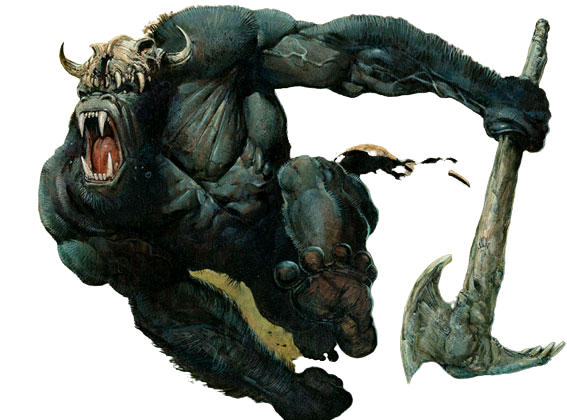
Mole
Totem Spirit. While raging, you can use an action to gain a burrowing speed equal to half your walking speed until the end of your turn. This action is considered an attack that prevents your rage from ending early. The spirit of the mole lets you burrow through earth and stone.
Aspect of the Beast. You gain the sensitive senses of a mole. You have tremorsense out to a range of 30 feet.
Totemic Attunement. While raging, you can replace one of your weapon attacks with a special melee attack (which you are proficient in) that does no damage. If it hits, the target makes a Constitution saving throw (DC equal to 8 + your proficiency bonus + your Constitution modifier). On a failed save, the target is paralyzed until the start of its next turn.
Mule
Totem Spirit. While raging, you can't be moved against your will, and you have advantage on Constitution checks and saving throws. The spirit of the mule makes you obstinate and enduring.
Aspect of the Beast. You gain the stamina of a mule. You count as one size larger when determining your carrying capacity, and the weight you can push, drag, or lift. You also have advantage on saving throws inflicted by a forced march.
Totemic Attunement. While raging, other creatures provoke an opportunity attack from you when they enter your reach.
Peacock
Totem Spirit. While raging, if a creature makes a melee attack against you, you can use your reaction to impose disadvantage on the roll. If the attack misses, you can cause that attack to hit one creature of your choice other than the attacker that is within 5 feet of you. The spirit of the peacock shines with dizzying elegance.
Aspect of the Beast. You gain the splendor of a peacock. You add an amount equal to your rage bonus damage to your Charisma checks.
Totemic Attunement. While raging, the first creature you damage on your turn is charmed by you until the end of its next turn.
Ram
Totem Spirit. While raging, you have advantage on saving throws against effects that would knock you prone, move you against your will, or stun you. You also have resistance to cold damage while raging. The spirit of the ram fills you with its sure-footed resilience.
Aspect of the Beast. You have the balance of a mountain sheep. You gain a climbing speed equal to your walking speed, and have advantage on checks to maintain your grip and footing while climbing.
Totemic Attunement. When you hit a creature with a melee weapon attack while raging, you can choose to knock that creature 5 feet away from you and occupy the vacated space. This shift does not expend movement or provoke opportunity attacks.
Serpent
Totem Spirit. While you're raging and have at least one free hand, you can attempt to grapple a creature as a bonus action. The spirit of the snake accelerates your strikes made to capture prey.
Aspect of the Beast. You gain the venomous touch of a snake. You have proficiency in poisoner's kits.
Totemic Attunement. While raging, any creature grappled by you takes bludgeoning damage equal to 1d6 + your Strength modifier + your rage bonus at the start of its turn.
Shark
Totem Spirit. Whenever you hit a creature that doesn't have all its hit points with a melee attack while raging, you gain temporary hit points equal to your Constitution modifier. The spirit of the shark makes you ferocious at the smell of blood.
Aspect of the Beast. You gain the swiftness and senses of a shark. You have a swimming speed equal to your walking speed, can breathe underwater, and creatures that do not have all their hit points cannot hide from you.
Totemic Attunement. While raging, the first enemy you damage with a melee weapon attack each turn has disadvantage on attack rolls against you until the end of its next turn. An enemy is immune to this effect if it can't see or hear you, or if it can't be frightened.
Tiger
Totem Spirit. While raging, you can Hide as a bonus action. So long as you are hiding, you can maintain your rage without attacking. The spirit of the tiger gives you the patience to strike at the perfect moment.
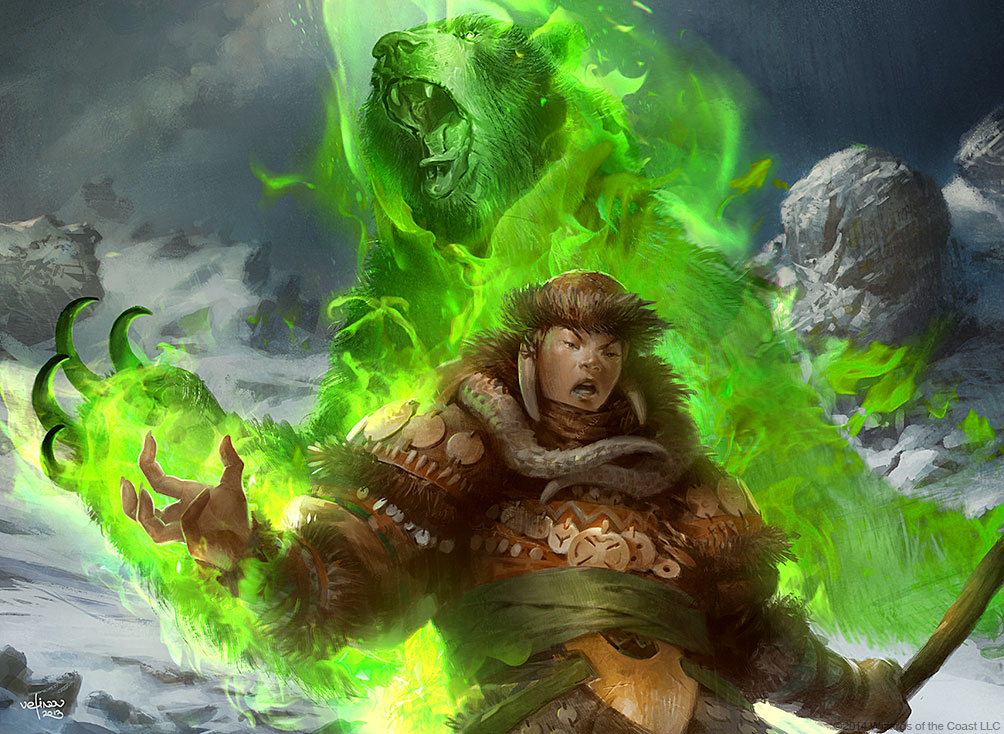
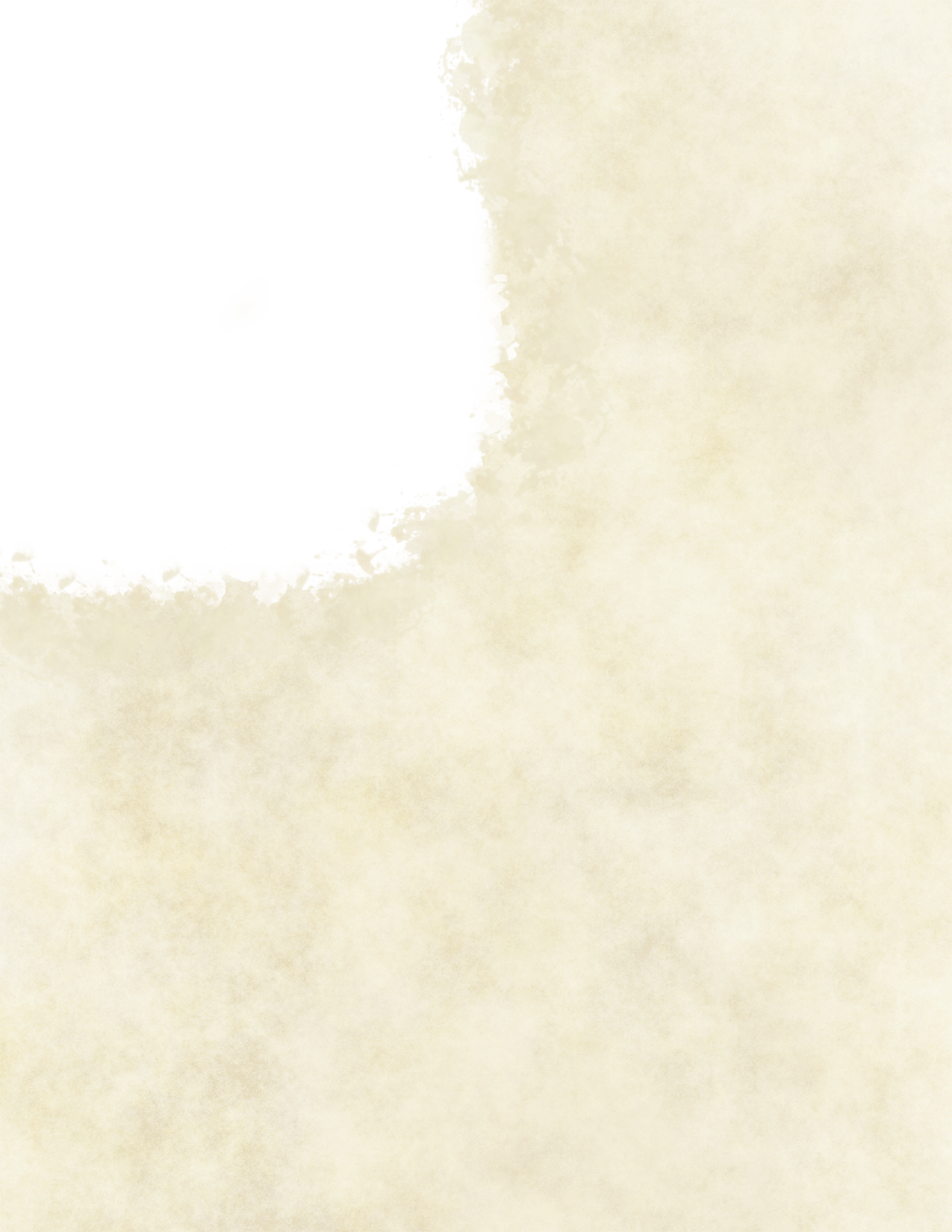

Aspect of the Beast. You have advantage on Wisdom (Perception) checks to locate hidden creatures, and on Wisdom (Survival) checks to track. The spirit of the tiger hones your tracking abilities a razor's edge.
Totemic Attunement. While raging, if you take the Attack action after making a long jump with a running start, you can make an additional weapon attack.
Toad
Totem Spirit. While raging, you gain the poisonous skin of a frog. As a reaction to being touched, grappled, or hit with a natural weapon, you can poison the creature that touched you. This poison lasts until the end of the creature's next turn.
Aspect of the Beast. You gain the crural strength of a toad. The height and length of your high and long jumps are doubled.
Totemic Attunement. The spirit of the toad snatches your foes and draws them in. When you damage a creature while raging, you can pull it 15 feet straight towards you.
Tortoise
Totem Spirit. While you are raging and not wearing armor, bludgeoning, piercing, and slashing damage done to you from both magical and nonmagical weapons is reduced by 3. The spirit of the tortoise grants you its incredible resilience.
Aspect of the Beast. You gain the lifespan of a tortoise. You suffer none of the drawbacks of old age, and you can't be aged magically.
Totemic Attunement. The weight that you can push, drag, lift, and carry quintuples while you are raging. Your AC when not wearing armor also becomes 18, unless it is already higher. You can still use a shield and gain this benefit.
Whale
Totem Spirit. When you enter a rage, you gain a number of temporary hit points equal to your Constitution score, which last until your rage ends. For the duration of your rage, you also have resistance to cold and fire damage. The spirit of the whale protects you from the elements.
Aspect of the Beast. You have the senses of a whale. You gain a swim speed equal to your walking speed, and have blindsight out to a 60 foot radius when not deafened.
Totemic Attunement. While raging, you come under the enlarge effect of the enlarge/reduce spell. You also count as one size larger than your enlarged size for the purposes of determining which creatures you can grapple and shove.
Combination Totems
As the rules are written, totem barbarians aren't limited to
a single animal and can mix-and-match their totem features to associate with multiple beasts. However, many bar-
barians choose a single animal and build their character's theme and aesthetic around it. To reinforce that popular playstyle without flooding the book with new and redundant mechanics, the table opposite lists combinations of totem powers that create single-animal totem paths.
Those listed on the table are merely suggestions, and
are not the only new animal options, nor is a player who wants to play a barbarian with that animal totem required
to take the options listed for the particular animal. A Lion totem barbarian could, for example, use all three Tiger features, instead of the listed set of Gorilla, Wolf, and Tiger.
Reflavored Totem Animals
| Totem | Level 3 | Level 6 | Level 14 |
|---|---|---|---|
| Albatross | Eagle | Elk | Eagle |
| Ant | Wolf | Locust | Shark |
| Boar | Bear | Mule | Elk |
| Camel | Whale | Mule | Mule |
| Cheetah | Elk | Tiger | Tiger |
| Crab | Serpent | Shark | Serpent |
| Crocodile | Serpent | Shark | Serpent |
| Dragonfly | Eagle | Wolf | Eagle |
| Hippopotamus | Mule | Bear | Elk |
| Hornet | Locust | Serpent | Eagle |
| Kangaroo | Eagle | Toad | Tiger |
| Lion | Gorilla | Wolf | Tiger |
| Lobster | Tortoise | Tortoise | Serpent |
| Monkey | Gorilla | Fox | Gorilla |
| Orca | Wolf | Whale | Shark |
| Ox | Ram | Mule | Tortoise |
| Rabbit | Fox | Toad | Mule |
| Rat | Fox | Locust | Shark |
| Rhinocerous | Bear | Bear | Wolf |
| Scorpion | Serpent | Serpent | Locust |
| Spider | Serpent | Serpent | Tiger |
| Stallion | Eagle | Elk | Mule |
| Vulture | Shark | Wolf | Locust |
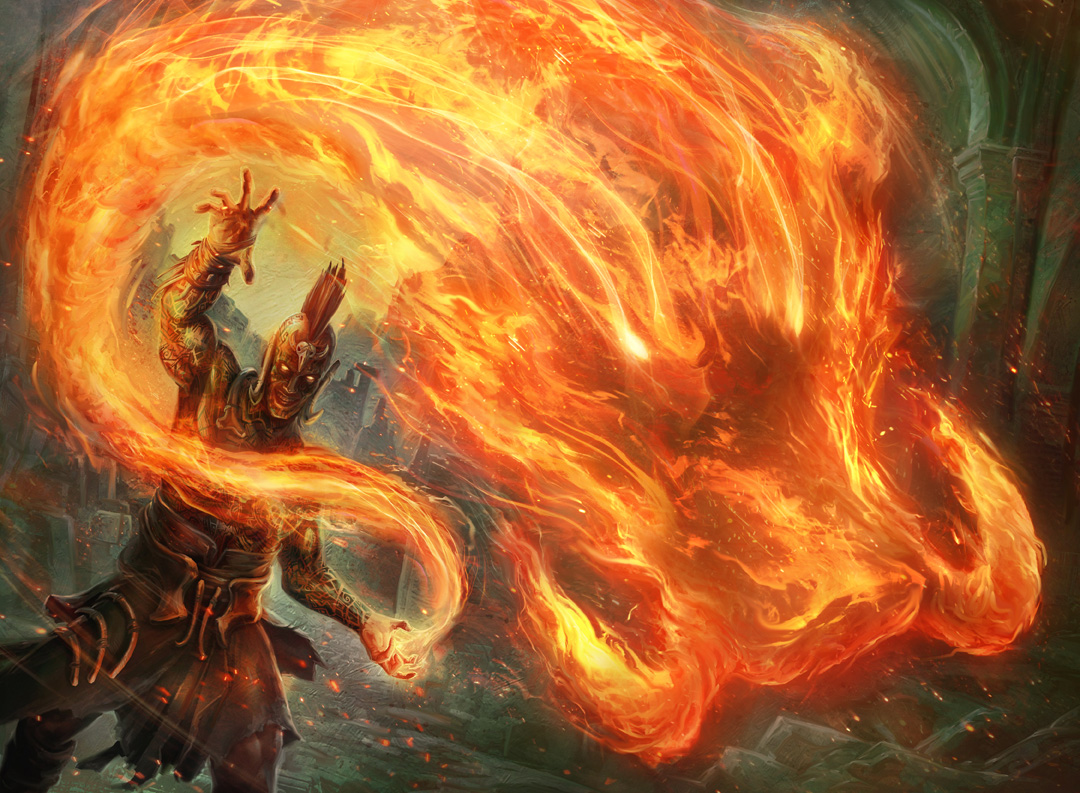


Bard
Once, bards were one of the weakest classes, scarcely worth mentioning. In this edition the versatility in their core class makes them stand among the best, where the sheer variety of their performative powers and skill-based abilities make them truly dangerous. Both Colleges presented here are oriented towards combat—one martial, one magical.
Updated Class Features
The following entries detail changes and enhancements to various bard features.
New Proficiencies
You gain the additional proficiencies listed below.
Armor. Bucklers
Weapons. Simple weapons, arming swords, estocs, hand crossbows, messers, parrying daggers, rondels, sabres
Spellcasting Focus
1st-level bard feature
You can use a musical instrument or arcane focus (found in Chapter 5 of the PHB) as a focus for your bard spells.
Fighting Style
3rd-level College of Swords feature
This feature works as-written, with the following change:
You can also choose the Flexibility, Interception, Superior Technique, or Thrown Weapon Fighting styles. You can't take the same Fighting Style option more than once, even if you get to choose again.
Fighting Style
3rd-level College of Valor feature
You adopt a particular style of fighting as your specialty. Choose one of the options listed in Part IV. You can't take the same Fighting Style option more than once, even if you get to choose again.
Bard Colleges
At 3rd level, a bard gains the Bard College feature, which offers you the choice of a subclass. The following additional options are available to you when making that choice: College of Passion and College of the Voice.
College of Passion
Through your weapons and your words, you incite fervor in others. Whether attraction or lust, rapture or enthusiasm, in battle you use a combination of grace, dance, and the subtleties of romantic magic to beguile and bewilder.
Flawless
When you join the College of Passion at 3rd level, your skill and grace make you difficult to strike. When you are not wearing armor or wielding a shield, your Armor Class equals 13 + your Charisma modifier.
Lovestruck
Also at 3rd level, you choose one style of combat that exploits attraction and desire. Regardless of style, you can use the weapons required to use your feature as a spellcasting focus.
Cupid. You gain proficiency in greatbows, longbows, and recurve bows. When you damage a creature with one of those weapons (or a shortbow), you can expend a use of your Bardic Inspiration and force the target to make a Charisma saving throw against your spell save DC.
On a failed save, the target is charmed by one creature of your choice (other than you) that both you and it can see for 1 minute, or until it takes damage. While charmed in this way, the target is also paralyzed. The target repeats the saving throw at the end of each of its turns, ending the effect on itself on a success.
Pole Dancer. You gain proficiency in glaives, guisarmes, halberds, lances, lucernes, pikes, pollaxes, ranseurs, and spears. If you grant a Bardic Inspiration die to a creature while wielding one of those weapons (or a boar spear or quarterstaff), the target gains temporary hit points equal to twice your Charisma modifier + your bard level.
Seven Veils. You gain proficiency in scimitars. When wielding a melee weapon in each hand, you can use an action and expend one use of your Bardic Inspiration to dazzle a hostile creature that can see you. The target must make a Wisdom saving throw against your bard spell save DC. On a failed save, the target is charmed by you for 1 minute, or until you damage it. Whether the target succeeds or fails on the save, you can use a bonus action to make one melee weapon attack against it. In addition, when you hit a creature that you have charmed with an attack, the hit is a critical hit.
Regardless of your choice, you can use a clothing accessory on your person such as a ribbon, veil, or scarf as a spellcasting focus for your bard spells.
Extra Attack
Beginning at 6th level, you can attack twice, instead of once, when you take the Attack action on your turn.
Killing With Kindness
At 14th level, you gain a new feature based on your choice at 3rd level. You must be wielding a weapon listed in your choice of Lovestruck to use these features.
Cupid: Love's Wings. You can use a bonus action and expend a spell slot of 3rd level or higher to sprout massive feathered wings from your shoulders, granting you a flying speed of 60 feet for 1 minute.
Pole Dancer: Reinvigoration. You can use your action and expend a spell slot of 3rd level or higher to perform a dance weaved with magic that reinvigorates one friendly creature of your choice within 5 feet of you. That creature can use its reaction at the end of your turn to take the Dodge, Attack, Cast a Spell, or Use an Object actions.
Seven Veils: Gossamer Kiss. You can use an an action and a spell slot of 3rd level or higher to pull illusion magic around yourself. You teleport to any point within 60 feet and make two weapon attacks, with advantage, against a creature of your choice within your reach after you teleport.
College of the Voice
Bards of the College of the Voice ridicule paltry singers and tellers of tawdry tales. To them, their voice is their instrument, and the ancient words they speak their performance. Bards of this college are regarded with reverence, for those with the power to join it speak their will into reality. The hills shake with their bellowed incantations, which warp the world to suit their whims. When these bards speak, even the mightiest creatures fall before their words.
Shouts
When you join the College of the Voice at 3rd level, the power of your voice adds new spells to your arsenal and alters your existing ones. The spells on the shouts table are added to the bard spell list for you.
When you attempt to cast a spell on the shouts table, you can expend a Bardic Inspiration die instead of a spell slot. Roll the die. If the result is equal to or exceeds the level of the spell, you cast it as a shout. Otherwise, the spell fails.
When cast in this way, a shout does not require material or somatic components, and has a verbal component added if it does not already have one. Because your voice booms like thunder when casting a shout, all creatures within 300 feet hear the echoes of the incantation used to cast the spell.
Shouts Table
Spells marked with a * on the table are already on the bard spell list. If a spell can be found in Xanathar's Guide to Everything, it is marked with XGE.
| Bard Level | Spells |
|---|---|
| 1st | animal friendship, faerie fire* |
| 3rd | dragon's breath,XGE earthbindXGE |
| 5th | call lightning, fear* |
| 7th | dominate beast, stoneskin |
| 9th | dominate person, hold monster* |
| 11th | harm, soul cageXGE |
| 13th | draconic transformation,FTD etherealness* |
| 15th | dominate monster*, control weather |
| 17th | meteor swarm, time stop |
Tongue of the Ancients
Starting at 3rd level, the words of an ancient language give your magic form. You learn one of the following languages of your choice: Abyssal, Celestial, Draconic, Deep Speech, Giant, Infernal, Modron, Primordial, Slaad, Sphinx, Sylvan, or Yeti. When you use a shout, you speak the verbal component in this language. You also know the comprehend languages spell, and can cast it at will, without expending a spell slot or material components.
Thundering Yell
Starting at 6th level you can project your voice as a weapon. You can use an action and expend a spell slot of 1st level or higher and force each creature in a 30-foot cone to make a Constitution saving throw against your bard spell save DC. A creature takes 2d8 thunder damage on a failed save, or half as much damage on a successful one.
On a failed save, the target is pushed a number of feet away from you equal to your Charisma modifier multiplied by 5 (a minimum of 5 feet), and is knocked prone.
The thunder damage increases by 1d8 for each slot level above 1st.
Legend Rend
Starting at 14th level, you learn words of power that force the mightiest creatures to comprehend their own mortality. You can use an action to scream those words to one creature within 120 feet of you. If the target can hear you, it must must make a Wisdom saving throw against your bard spell save DC. On a failed save, the target temporarily loses any resistances to damage and immunities to conditions that it has, and has disadvantage on all saving throws. This effect ends after 1 minute. The affected creature can repeat the saving throw at the end of each of its turns, ending the effect on itself on a success. A creature cannot use a Legendary Resistance, if it has one, to succeed on saving throws against this feature.
You can use this feature once, and regain all expended uses after you finish a long rest.

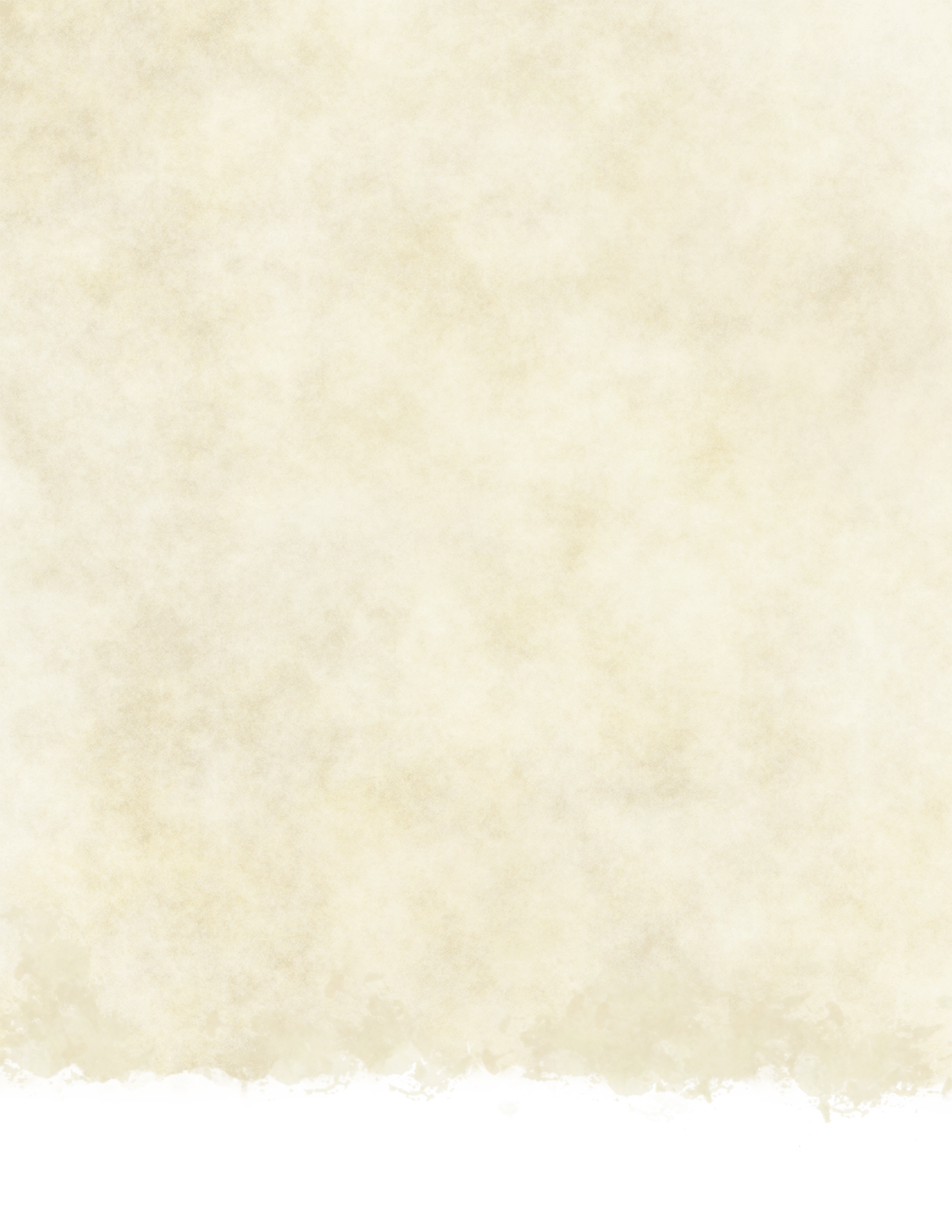
Cleric
Clerics need few buffs, but the variety of their domains means they have a home in any document.
Updated Class Features
The following entries detail changes and enhancements to various cleric features.
Clerical Canon
1st-level cleric feature
Choose one of the following features, which determines the way you express your faith as a style of combat:
Crusader: You gain proficiency in heavy armor and martial weapons, and Divine Strike at 8th level in this class.
Mendicant: Your AC when not wearing armor or wielding a shield equals 10 + your Dexterity modifier + your Wisdom modifier, and you gain the Potent Spellcasting feature at 8th level in this class.
If your domain has a Bonus Proficiency feature, you only gain additional skills, tool proficiencies, or languages from it. In order to gain proficiency in weapons or armor, you must choose the Crusader option above, or gain them elsewhere.
Divine Strike
8th-level cleric feature if Crusader chosen
Divine Strike works as-written, with the following change:
The type of damage is determined by your domain. If your domain has multiple types, you choose the type used when you deal the damage. The damage that you deal is always magical, even if the weapon that deals it is not.
| Domain | Damage Type |
|---|---|
| Arcana | Force |
| Forge | Fire |
| Grave | Necrotic |
| Hunting | Weapon's Type |
| Knowledge | Weapon's Type |
| Life | Radiant |
| Light | Fire |
| Love | Psychic |
| Luck | Force |
| Music | Thunder |
| Domain | Damage Type |
|---|---|
| Nature | Cold/Fire/Lightning |
| Order | Psychic |
| Peace | Radiant |
| Tempest | Lightning/Thunder |
| Toxin | Poison |
| Travel | Weapon's Type |
| Trickery | Psychic |
| Twilight | Necrotic/Radiant |
| War | Weapon's Type |
| Winter | Cold |
Divine Domains
At 1st level, a cleric gains the Divine Domain feature, which offers you the choice of a subclass. The following additional options are available to you when making that choice: Hunting and Toxin.
Hunting Domain
As an agent of one of the gods of the hunt, such as Artemis, Balinor, Malar, Mixcoatl, or Uller, you are the answer to prayers from the faithful to destroy dangerous creatures.
Equally skilled when traipsing through underbrush or arcing their shots across the sky, clerics of the hunt are unmatched at long range and in the field.
As a blessed hunter, you might be called to lead a campaign against monsters from the Feywild or pits of the Abyss, to root out vampiric corruption within the depths of a corrupt city, or train mundane humanoids to defend themselves against the shadowy fey lurking in the dark.
Domain Spells
| Cleric Level | Spells |
|---|---|
| 1st | ensnaring strike, expeditious retreat |
| 3rd | locate animals or plants, pass without trace |
| 5th | conjure barrage, haste |
| 7th | greater invisibility, faithful hound |
| 9th | hold monster, swift quiver |
Bonus Proficiency
When you choose this domain at 1st level, you gain proficiency in martial ranged weapons and Survival.
Ordained Shot
Also at 1st level, call upon your god to redirect ranged attacks gone wide. If you or a creature within 60 feet of you misses with a ranged attack, you can use your reaction to grant the attacker advantage on the roll, potentially turning the miss into a hit, provided that you can see the target.
You can use this feature a number of times equal to your Wisdom modifier (a minimum of once). You regain all expended uses when you finish a long rest.
Channel Divinity: Relentless Hunt
Beginning at 2nd level, you can use your Channel Divinity to receive divine speed and stamina. As an action, you can touch a willing creature and remove one level of exhaustion from it, and the target's speed doubles for the next minute.
Ambuscade Avatar
Starting at 6th level, once on your turn when you hit a creature with a ranged attack, the next attack roll made against it within the next hour has advantage.
In addition, you can take the Hide action as a bonus action.
Divine Strike
At 8th level, you gain the ability to infuse your weapon strikes with divine energy. Once on each of your turns when you hit a creature with a weapon attack, you can cause the attack to deal an extra 1d8 damage of the same type dealt by the weapon to the target. When you reach 14th level, the extra damage increases to 2d8.
Hunting Party
At 17th level, when you or another creature within 120 feet of you hit a target with an attack roll with a total to hit of 20 or more, the attack is a critical hit so long as you granted the attacker advantage on the roll.
Toxin Domain
The gods of poison—which include Lolth, Dionysus, Talona, and Wormwood—are masters of substances that twist the senses and damage the body. Some encourage subtle approaches, while others are revelers with chaotic hordes of followers. Their clerics are just as diverse, and include talented alchemists, master assassins, orgiastic mobs, and apocalyptic cultists.
Domain Spells
| Cleric Level | Spells |
|---|---|
| 1st | ray of sickness, detect poison and disease |
| 3rd | acid arrow, protection from poison |
| 5th | slow, stinking cloud |
| 7th | blight, confusion |
| 9th | cloudkill, contagion |
Bonus Proficiency
At 1st level, you gain proficiency with heavy armor, martial weapons, and Poisoners' Kits.
Concoctive Acolyte
Your divine knowledge allows you to craft poisons with holy magic and mundane materials. Starting at 1st level, you don't need materials to craft poisons, and can use Wisdom, instead of Intelligence, when you make a check to craft poisons.
Poisons you craft can use your cleric spell save DC instead of the poison's DC. Finally, you have advantage on saving throws against poison and have resistance to poison damage.
Creeping Death
Starting at 1st level, the venom coursing through enemies' veins guides your attacks. You have advantage on attack rolls against poisoned creatures.
Channel Divinity: Fangs of Steel
At 2nd level, you can use your Channel Divinity to coat a weapon you're holding with the ichor of your god.
As a bonus action, you channel holy poison through your weapon. For the next minute or until you are incapacitated, any creature you damage with that weapon must make a Constitution saving throw against your spell save DC. On a failed save, the target is poisoned for the next minute. The target can repeat the saving throw at the end of each of its turns, ending the condition on a success.
Consecrated Vitality
Starting at 6th level, you are immune to poison damage and the poisoned condition, though you can choose to suffer the poisoned condition when it is inflicted upon you.
Channel Divinity: Noxious Anointment
Beginning at 6th level, you can use your channel divinity to weaken the innate resistances of enemies that you face. You can use a bonus action to remove any resistances to poison damage from creatures of your choice within 30 feet of you for 1 minute. For the duration, a target also has disadvantage on saving throws against being poisoned.
At 10th level, this feature also removes immunity to poison damage and the poisoned condition for the duration. This feature cannot affect constructs, or incorporeal creatures like ghosts or shadows.
Divine Strike
At 8th level, your weapons are always infused with poison. Once on each of your turns when you hit a creature with a weapon attack, you can cause the attack to deal an extra 1d8 poison damage to the target. When you reach 14th level, the extra damage increases to 2d8.
Healing Hemlock
At 17th level, your deity's power allows harmful chemicals to rejuvenate you. When you would take poison damage from a source other than your Divine Strike, you take no damage and instead regain a number of hit points equal to the poison damage dealt. If a poison deals damage over multiple turns, you only regain those hit points once.
For example, you can drink a dose of Purple Worm Poison and regain 12d6 hit points. You can ingest any type of poison and gain this benefit.
When a creature that you can see within 60 feet of you takes poison damage, you can use your reaction to confer this benefit to it, eliminating the damage and causing it to regain a number of hit points equal to the poison damage dealt. It retains this benefit until the start of your next turn.

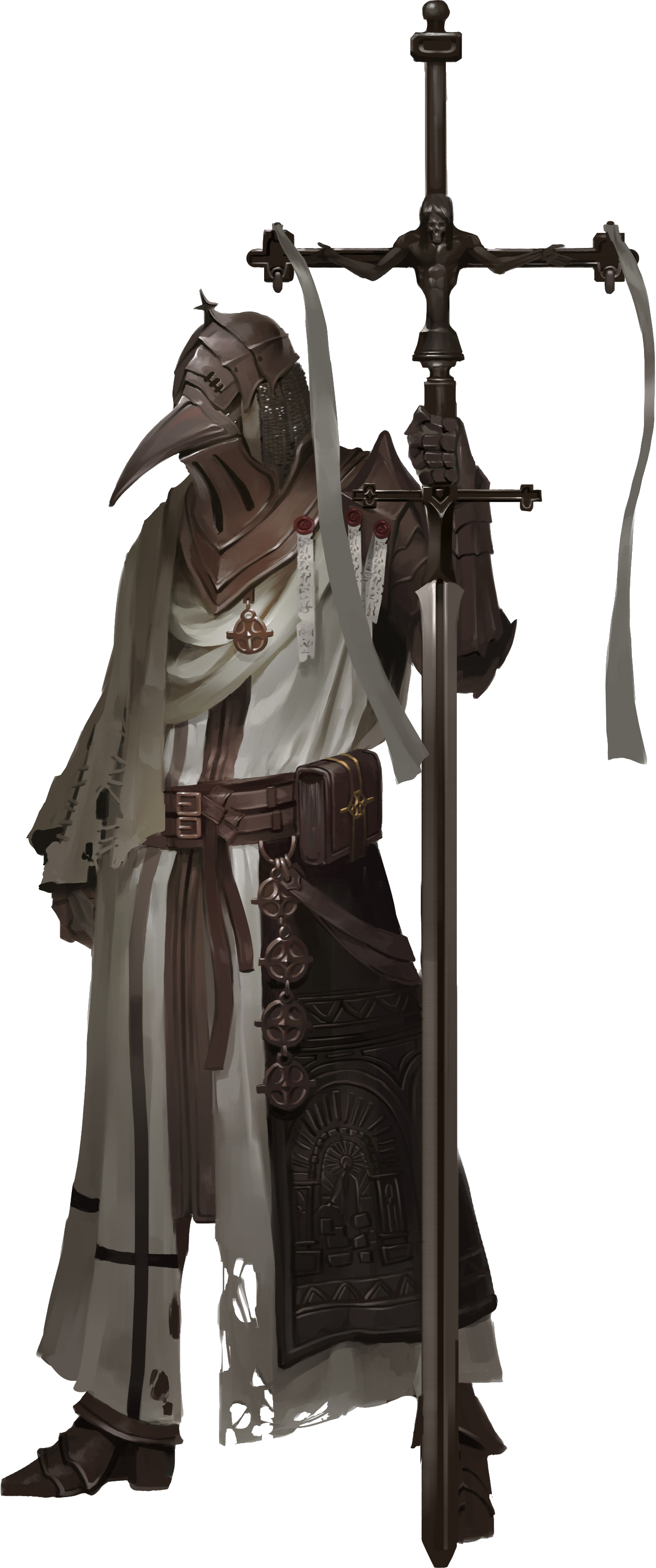
Druid
Druids need little help—they are one of the best classes for area control, and have unmatched utility. But they are pigeonholed by their flavor, and remain somewhat unpopular.
Updated Class Features
The following entries detail changes and enhancements to various druid features.
New Proficiencies
You gain the additional proficiencies listed below.
Weapons. Blowgun, boar spear, cestus, harpoon, spear
Druid Circles
At 2nd level, a druid gains the Druid Circle feature, which offers you the choice of a subclass. The following additional option is available to you when making that choice: Circle of the Boundary.
Circle of the Boundary
Nature never stops evolving. Druids of the Circle of the Boundary know they must do the same if they are to survive in the ever-changing world of fire and steel. They walk the line between nature and civilization and wield the weapons of both to preserve the fragile balance between the two.
Trappings of Civilization
Starting at 2nd level, you forsake the druidic taboo against
metal armor and gain proficiency in heavy armor and martial weapons. When you change your form using Wild Shape or a spell such as shapechange, any armor you wear becomes barding for your new form. The armor reverts to its default shape if it is removed from your animal form. You also gain proficiency in one tool of your choice, or in one of the following skills: History, Insight, Deception, or Persuasion.
Circle Spells
Your connection to the thin line between nature and civilization grants you access to certain spells. At 3rd, 5th, 7th, and 9th level you gain access to the spells listed for that level in the Circle of the Boundary Spells table.
Once you gain access to one of these spells, you always have it prepared, and it doesn't count against the number of spells you can prepare each day. If you gain access to a spell that doesn't appear on the druid spell list, the spell is nonetheless a druid spell for you.
Circle of the Boundary Spells
| Druid Level | Circle Spells |
|---|---|
| 3rd | heat metal, warding bond |
| 5th | haste, plant growth |
| 7th | fabricate, steel wind strikeWCX |
| 9th | conjure cannon,WCX passwall |
Strength of the Wood
Starting at 2nd level, you can expend one use of your Wild Shape as a bonus action to infuse yourself with the might of a champion of nature, rather than assuming a beast form.
Your appearance changes as you choose. Your skin might take on a bark-like texture, moss could grow across your armor, or blazing dawn light may shine in your eyes. You gain a number of temporary hit points equal to your druid level multiplied by 4. This form, and the temporary hit points you gain from it, last for 10 minutes.
Once on your turn in this form, when you damage a creature or object with a weapon attack, you can mark it as an enemy of the balance between nature and civilization. The target is cursed by you until you choose to end the curse (no action required), you curse another creature, or your transformation ends. While cursed, the target suffers one of the following effects of your choice:
Dulled Swords. Each time the target damages you, you subtract your Wisdom modifier from the damage taken.
Thin the Herd. Each time you damage the target with an attack, you add your Wisdom modifier to the damage roll, including the weapon attack that applied this curse.
Warden's Magic
Starting at 6th level, when you use your action to cast a spell, you can make one weapon attack as a bonus action. In addition, you can use a bonus action to make a single weapon attack against a target cursed by Strength of the Wood.
Hunting Party
Starting at 10th level, you gather all creatures, wild and tame, to fight at your side. When you curse a creature with Strength of the Wood, you can choose other creatures within 30 feet of you to gain the same benefits that you do until the curse is lifted. The number of creatures you choose cannot exceed your Wisdom modifier (a minimum of 1).
In addition, you can curse a number of creatures equal to your druid level divided by 5, rather than a single creature. If you try to exceed your maximum, the oldest curse ends.
Shaper of the Balance
At 14th level, the diverse materials and beings that compose the natural and civilized worlds become one and the same to you. Whenever you cast a druid spell of 1st level or higher that targets or affects wood, vegetation, stone, crystal, soil, or metal, it can target or affect any of those materials as it would those explicitly listed in the spell's description.
In addition, when you cast a druid spell of 1st level or higher that specifies the creature types that it can or cannot affect (and does not summon creatures of that type), you can affect any creature type with that spell. For example, you can target a humanoid with animal friendship, an undead with cure wounds, or a construct with hold person. The spell otherwise functions exactly as written in its description.
Finally, you learn the mending cantrip, and you can target a nonmagical object that you could create with fabricate, and use the spell to disassemble it back into its raw materials.


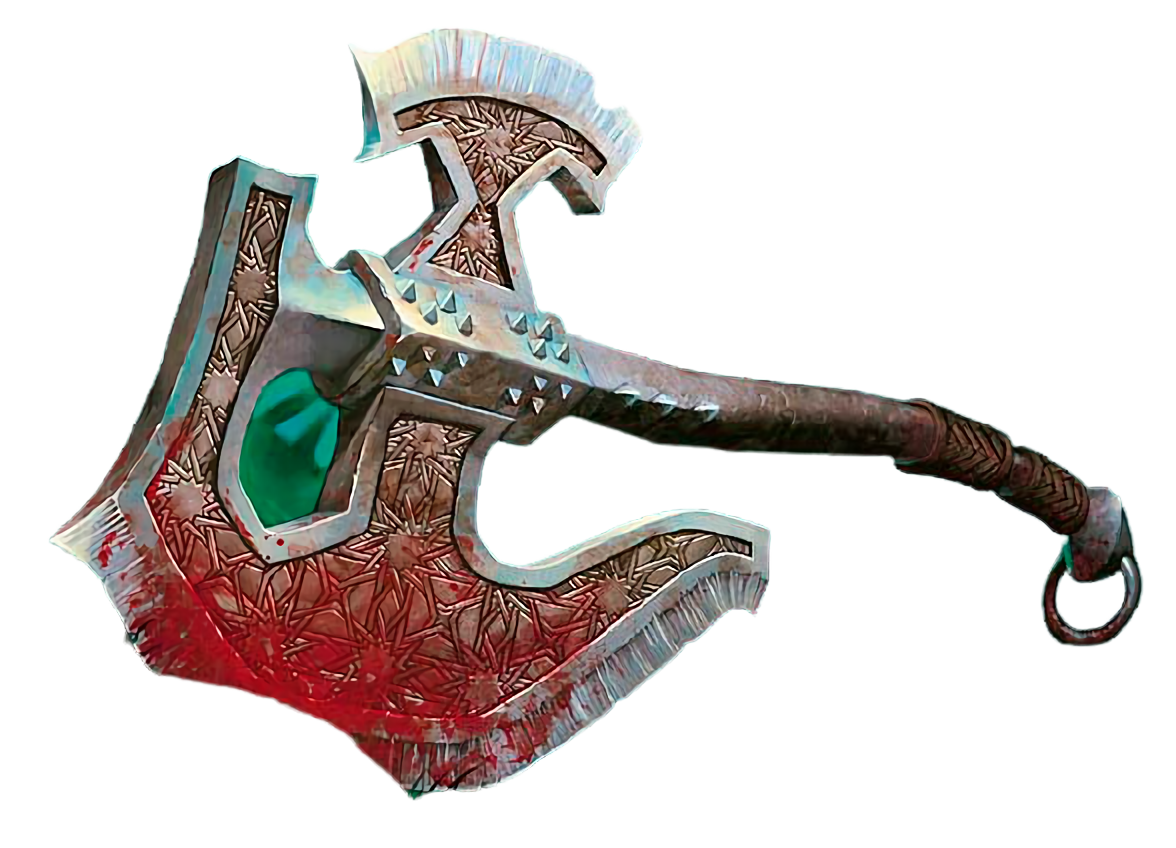
Fighter
Some think fighters are a basic class, only used until their player graduates to something more specialized. This supplement disagrees, and provides improvements to weak fighter subclasses and adds new, exciting options.
Updated Class Features
The following entries detail changes and enhancements to various fighter features.
New Proficiencies
You gain the additional proficiencies listed below.
Weapons. One exotic weapon or shield.
Martial Archetypes
At 3rd level, a fighter gains the Martial Archetype feature, which offers you the choice of a subclass. The following additional options are available to you when making that choice: Bannerlord, Bastion, Cataphract, Dervish, Dragoon, Exemplar, Firebreather, Hero, Mage Knight, Manhunter, Marksman, Spellscorn, Spellslinger, Swordmaster, Valkyrie, and Varangian.
Bastion
Bulwarks of grit and implacable scions of self-sacrifice, the archetypal Bastions pride themselves on the simple (but fundamental) dwarven martial art of collective defense. To dwarves, clan and honor eclipse the self, so defense of others is fundamental to their military training. But anyone can use these skills, including hoplites and legionnaires.
Defensive Stance
When you take this archetype at 3rd level, you can use a bonus action to enter a Defensive Stance that braces you and yours against attacks. For 1 minute or until you choose to end your stance (no action required), you have advantage on Strength checks, and allied creatures benefit from half cover when within 5 feet of you. While active, your stance confers the following benefits:
Towering Shield. When a friendly creature within your reach is hit by an attack, you can use your reaction to become the target of the attack if you are within the attack's reach or range. The roll remains the same if you are the target, potentially causing the attack to miss.
Center of Attention. When you hit a creature with a melee weapon attack, it has disadvantage on attack rolls against creatures other than you until the end of your next turn.
Mad Taunt. When a creature within your reach makes an attack, you can use your reaction to taunt or otherwise draw the creature's attention. It has advantage on the next atatck it makes against you, and the next attack made against it before the end of your next turn has advantage. You can only taunt one creature at a time.
Your stance ends if you are incapacitated, and your speed is reduced by 15 feet while in your Defensive Stance. You can enter a Defensive Stance a number of times equal to your Strength modifier (a minimum of 1), and regain all expended uses when you finish a long rest.
Soldier On
At 7th level, you and all creatures accompanying you don't make saving throws against exhaustion for the first 4 hours of a forced march. In addition, you don't suffer any penalties from sleeping in armor. Encouraged by your stoic form, carrying crushing weight in armor without breaking, you steel their wills to push on.
Warding Maneuver
Also at 7th level, you gain one of the following fighting style options: InterceptionTCE or Protection. You also learn to fend off strikes directed at you and other nearby creatures while in a Defensive Stance. When you use a reaction to defend against an attack, you can roll 2d4 and add the result to the target's AC. For example, you increase your AC by 2d4 when you use your Towering Shield feature or the parry property, or an ally's AC when you use the reaction granted by the Interception or Protection Fighting Styles. You can add this bonus once per Defensive Stance.
At 15th level, if the attack still hits, the damage the target takes is halved.
Dynamic Battlement
At 10th level, you gain two reactions at the start of your turn, rather than one. You cannot use these reactions on the same feature or ability. For example, you cannot make two opportunity attacks, but can make one opportunity attack and use your Towering Shield feature.
Rolling Thunder
Also at 10th level, when a friendly creature is hit by an attack, you can use your reaction to move 10 feet straight toward it. As part of the same reaction, you can use your Towering Shield feature to become the target of that attack, even if you are not in your Defensive Stance.
You can also move at your full speed in Defensive Stance, rather than half.
Steel Bastille
Beginning at 15th level, you gain temporary hit points equal to your fighter level when you enter a Defensive Stance. When you are in a Defensive Stance, the area within your reach becomes difficult terrain for creatures of your choice, and creatures that move at least 5 feet within your reach provoke opportunity attacks from you.
Rampart
Starting at 18th level, you respond to danger with unquenchable stamina. You regain your reaction at the start of each creature's turn, rather than only at the start of yours. Your enormous stamina allows you to spread your presence across the battlefield, defending allies and stopping enemies with impunity.
Cataphract
The archetypal Cataphracts—also known as knights, hussars, or lancers—carry on the ancient role and invaluable role of heavy cavalry. They persist as a powerful force of shock and awe that devastates lines of unprepared infantry, charging into battle in a mass attack that shakes the earth and terrifies their foes. The bond between horse and rider is a powerful one, and you are no exception, able to protect your mount and use its incredible mobility to devastating effect.
Born to the Saddle
When you choose this archetype at 3rd level, you gain several benefits that represent your impressive cavalry training.
You have advantage on saving throws against being knocked off a mount. If you fall off a mount and fall no more than 10 feet, you are not knocked prone so long as you are not incapacitated. Mounting and dismounting a creature costs you 5 feet of movement, and you can choose to have attacks against your mount target you instead.
You also gain proficiency in Animal Handling.
Lancer's Charge
Also at 3rd level, you can exploit the ultimate heavy cavalry attack: the charge. If you move at least 15 feet straight toward a creature and hit it with a melee weapon attack, you deal an extra 2d6 damage and can force it to make a Strength saving throw (DC equal to 8 + your proficiency bonus + your Strength modifier or your mount's Strength modifier). If it fails, the target is pushed 5 feet away from you in the same direction you moved, and is knocked prone. If this movement would cause it to enter another creature's space, both creatures take the additional damage and are knocked prone, but neither are moved. Regardless of the damage type you deal, the second creature takes bludgeoning damage. The additional damage you deal increases to 3d6 at 10th level in this class, and 4d6 at 18th.
When you deal additional damage to a creature with Lancer's Charge, your mount can immediately use a bonus action to make one melee weapon attack against it.
Companions on Campaign
At 7th level, you support your companions, humanoid and animal, on long and lonely marches. You and other creatures traveling with you have advantage on saving throws against exhaustion imposed by a forced march, and you and your mount alike no longer suffer movement penalties for wearing heavy armor.
Finally, any creature you use as a mount gains temporary hit points equal to twice your fighter level whenever it rolls initiative.
Shock Tactics
Starting at 10th level, you can use the devastating impact of a cavalry charge to terrify your targets. Whenever you hit with Lancer's Charge, any creatures you damage with it and all creatures of your choice within 10 feet of them must succeed on a Wisdom saving throw against your Lancer's Charge save DC or be frightened of you for 1 minute. A creature that succeeds on this save is immune to this effect for 24 hours.
In addition, you choose to make one weapon attack roll per turn with advantage, so long as the attack is made against a creature at least one size smaller than you, or, if you are mounted, a creature that is unmounted and at least one size smaller than your mount.
Wheel Around
At 15th level, any creature you damage during your turn cannot take opportunity attacks against you or your mount until the end of your turn, allowing you to position yourself for powerful charges as you see fit.
Mounted Mountain
Beginning at 18th level, you become the ultimate mobile juggernaut. You gain the same temporary hit points your mount does from Companions on Campaign when you roll initiative, whether you are mounted or not. Additionally, your speed and the speed of any creature you use as a mount increases by 10 feet.
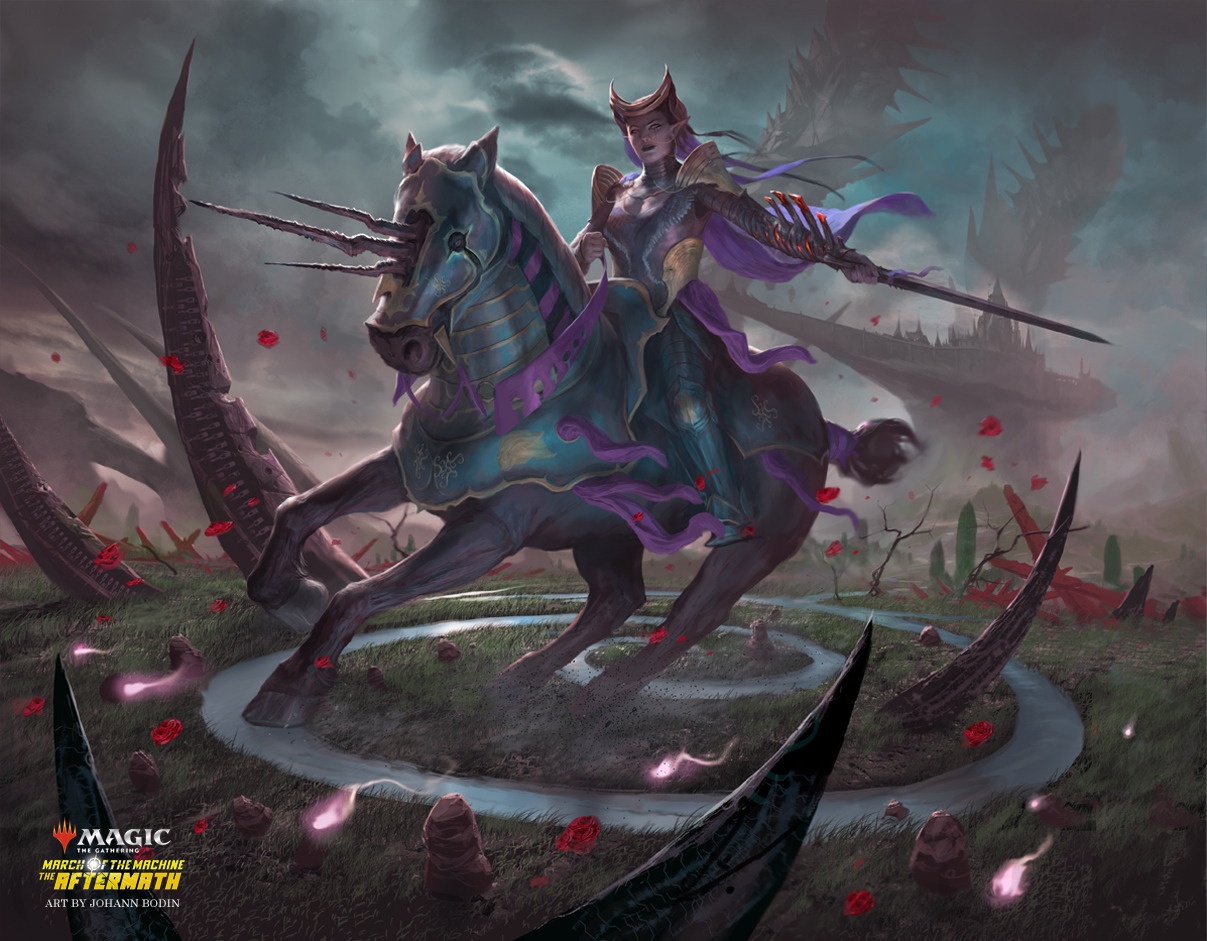
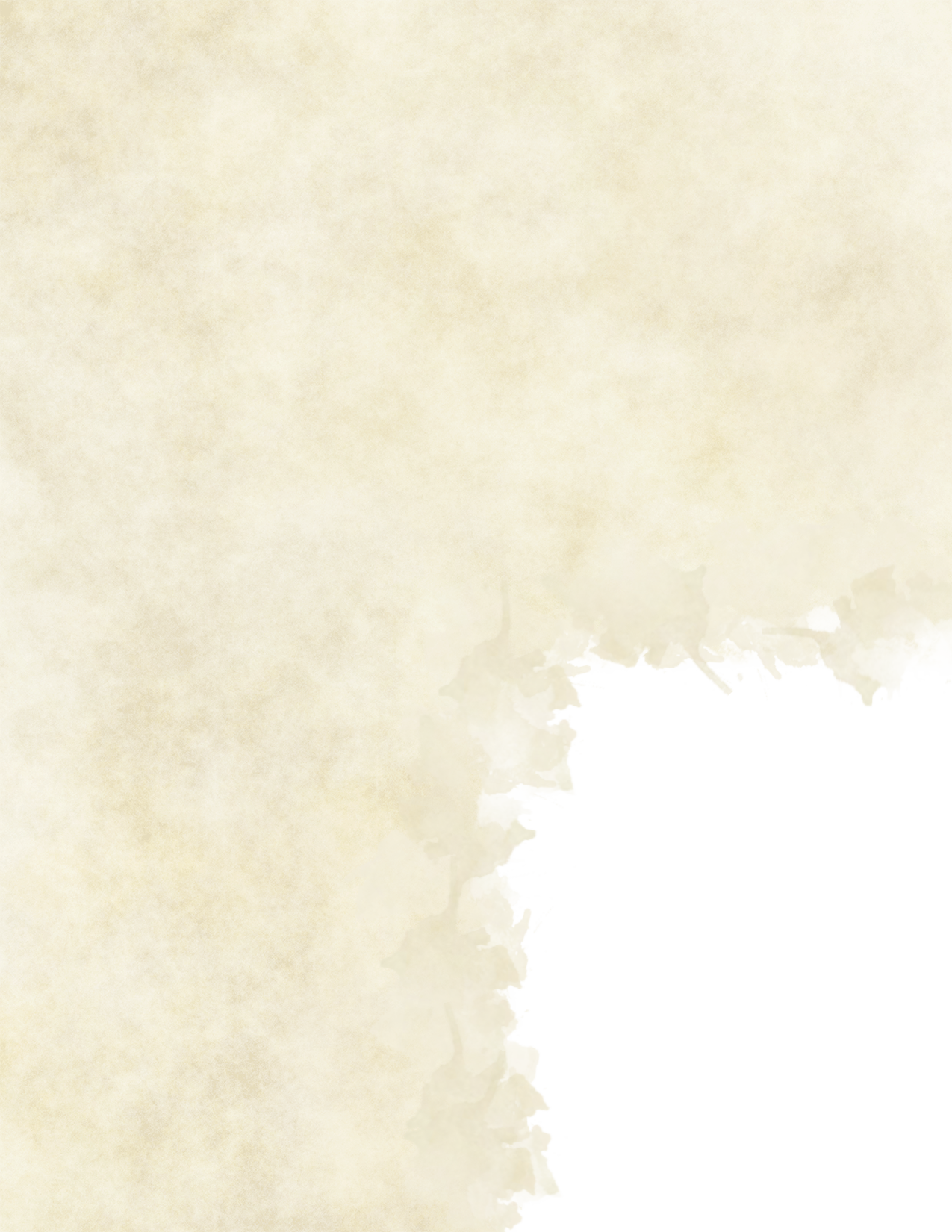
Dervish
Graceful and dangerous as their whirling blades, the archetypal Dervish combines incredible skill with the illusion of reckless abandon. They leap in and out of the fray and transform into a spiral of death that enemies dare not touch.
Sworddancer
When you choose this archetype at 3rd level, you can use your training in spinning, meditative dance as a potent weapon in close quarters. Once on your turn when you take the Attack action, you can forgo one of your attacks to spin in place with weapon outstretched and make an attack against a number of creatures within reach equal to your proficiency bonus, making a separate melee attack roll for each target. Whether your attacks hit or miss, you can choose to enter a dance.
While dancing, you spin in place. You cannot move without jumping, and melee attack rolls against you are made with disadvantage. Other creatures provoke opportunity attacks from you when they enter your reach, and when a creature starts its turn within your reach, you can damage it with your whirling blades. This damage is equal to half your fighter level, and deals the same damage type as a melee weapon you're holding (your choice).
If you take the Attack action while spinning on subsequent turns, you can again forgo one of your attacks to spin in place and attack multiple targets, without expending an additional use of this feature. If you do not do so, your dance ends at the end of your turn.
Your dance also ends if you are moved at least 5 feet, grappled, or successfully grapple another creature.
You can make the special spinning attack and begin a new dance a number of times equal to your Strength modifier + your Dexterity modifier (a minimum of 2). Making the special attack to maintain the dance on subsequent turns does not consume an additional use of this feature. You regain all expended uses at the end of a long rest.
Quick Feet
Beginning at 7th level, your speed increases by 10 feet, and you ignore movement penalties from difficult terrain. You gain proficiency in Acrobatics, and have advantage on Performance checks that rely on dancing.
Whirlwind
At 10th level, you can move freely without ending your dance, and if an effect moves you while dancing, your dance doesn't end. If you move on your turn while spinning and are targeted by an opportunity attack, you can use your reaction to add your proficiency bonus to your AC (including against the triggering attack) until the end of your turn.
The World Turns
Starting at 15th level, if you roll initiative and have no uses of Sworddancer remaining, you regain one use of it.
Deathwheel
Beginning at 18th level, when you make an opportunity attack against a creature, you can attack it and any other creature within your reach as part of the same reaction, with a separate attack roll for each target.
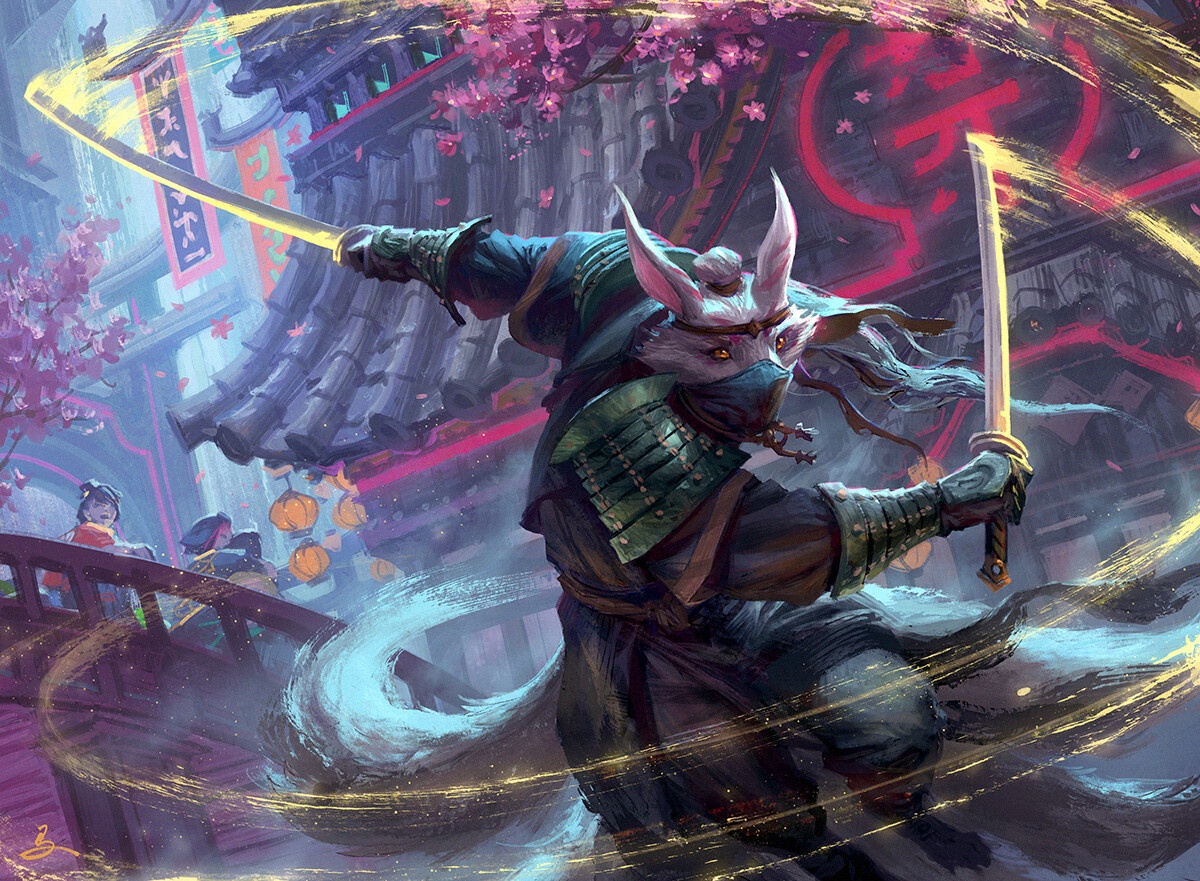
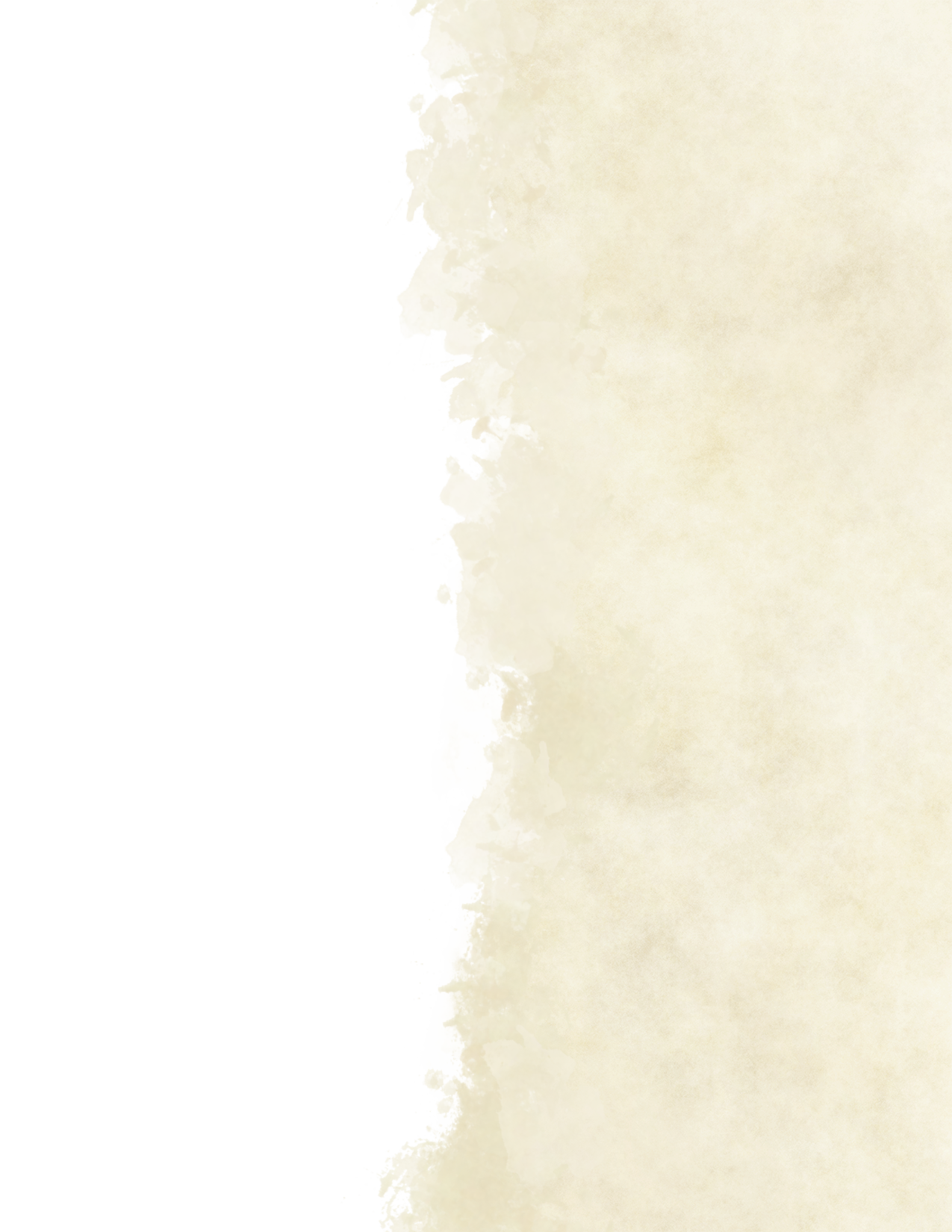

Dragoon
Also known as Dragon Knights or Dragonslayers, the archetypal Dragoon emulates the grace and power of dragons. To a Dragoon, combat is an acrobatic affair, using powerful leaps and aerial strikes to shatter their foes' defenses with weapons that blaze with elemental energy.
Draconic Attunement
When you choose this archetype at 3rd level, you learn to read, speak, and write Draconic. You also choose one of the types of dragon below.
The damage type associated with your chosen dragon is used by other features from this archetype. You can choose a new type whenever you finish a long rest.
| Dragon | Damage Type |
|---|---|
| Black | Acid |
| Blue | Lightning |
| Brass | Fire |
| Bronze | Lightning |
| Silver | Cold |
| Gold | Fire |
| Green | Poison |
| Red | Fire |
| Dragon | Damage Type |
|---|---|
| Copper | Acid |
| White | Cold |
| Amethyst | Force |
| Crystal | Radiant |
| Emerald | Psychic |
| Sapphire | Thunder |
| Topaz | Necrotic |
Skystrike
At 3rd level, you can use a bonus action to gather elemental power in your legs. Your jump distance triples until the end of your turn, you no longer need to take running starts to increase your jumps' length and height, and any falling damage you take during your turn is reduced by an amount equal to 5 times your fighter level. In addition, while jumping, you don't provoke opportunity attacks.
If a jump that you make during the same turn brings you within reach of a creature, you can use your action to make a melee weapon attack against it. The attack has advantage if the target is also airborne. In addition to its normal damage, the attack deals an additional 1d6 damage of the same type as your Draconic Attunement for every 10 feet that you traveled during the jump. If you hit a creature in mid-air, the number of d6s is determined by the total distance that you would travel during the entire arc of the jump, not the distance you have traveled so far (including distance back to the ground).
You can make this special attack 3 times, and regain all expended uses when you finish a long rest.
When you reach 5th level in this class, the attack deals an additional 1d6 damage of the same type as your Draconic Attunement, regardless of how far you traveled. This bonus increases to 2d6 at 7th level, 3d6 at 10th level, 4d6 at 15th level, and 5d6 at 18th level in this class.
Dragonhide
At 7th level, supernatural resilience and sleekness fill you. You gain resistance to your Draconic Attunement damage type, and can exceed your normal movement after Skystrike amplifies your jump distances so long as you only move to jump during your turn.
Plunging Spear
Starting at 10th level, when you use the bonus action attack granted by Skystrike, creatures within 5 ft of you when you land take thunder damage equal to half your fighter level. Additionally, your Skystrike bonus damage ignores resistance to your Draconic Attunement damage type.
Lancet
Also at 10th level, when you damage a creature with a weapon attack, you can use a bonus action to expend a Hit Die. You regain a number of hit points equal to the damage you dealt.
Wyrm's Stamina
At 15th level, when you roll initiative and have no uses of Skystrike's bonus action attack remaining, you regain one use.
Wyvern Knight
At 18th level, your attunement to draconic souls cannot be matched. Once per day you can cast find greater steed, which summons a wyvern instead of the normal options. If you are mounted on the wyvern, you can use the attack granted by Skystrike without jumping. Instead, when you use the bonus action granted by Skystrike, your wyvern flies up to its speed, and the weapon attack deals 1d6 damage for every 10 feet the wyvern flies.
Jumping Rules
Long jumps cover a lateral distance equal to your Strength score with a 10-ft. running start, or half as much without a running start. High jumps reach a height of 3 + your Strength modifier with a 10ft running start, or half as much without a running start. All distance covered while jumping expends movement normally.
A character with 16 STR can cover 16 feet with a running long jump, and can jump 6 feet in the air with a running high jump. This running long jump, including the startup, consumes 26 of the typical 30 feet of movement.
A Dragoon with 16 STR can use their action to leap 30 feet laterally and 27 feet vertically, and make a single attack using Skystrike. While their doubled lateral distance would reach 48 feet, they can't leap more than 30 feet—until their 7th-level feature allows them to exceed it.
Exemplar
The archetypal Exemplar is a simple, mighty warrior who combines raw power with rigorous training. Regardless of the weapons they wield, an Exemplar displays martial prowess honed to deadly perfection. They might be even more effective than other warriors using the tried-and-true, or experiment with a variety of bizarre weapons and exotic fighting styles.
To them, it matters little: to be an Exemplar is to make any warrior archetype possible. Masters of any weapon they find, or even items never meant to be weapons, Exemplar are larger-than-life inspirations who are never without a weapon and whose inhuman endurance means they are always ready for battle.
Strike True
You are the master of every weapon and every fighting
form. When you choose this archetype at 3rd level, you
gain proficiency in all exotic weapons and shields, and in
improvised weapons. Any weapon you wield has a damage die of 1d8 while you use it, unless it already uses a larger
die or multiple damage dice. Finally, your weapon attacks score a critical hit on a roll of 19 or 20. This expands to include a roll of 18 at 15th level in this class.
Remarkable Athlete
Starting at 7th level, you add your proficiency bonus to all Strength, Dexterity, and Constitution checks you make that you are not already proficient in, and to the length of your long jumps and height of your high jumps. You gain proficiency in your choice of Athletics or Acrobatics, and your proficiency bonus is doubled for any ability check you make using your choice. In addition, your speed increases by 5 feet.
Empowered Fighting Styles
At 10th level, you become a master of your chosen styles of combat. Choose one additional fighting style from the options presented to you. Both your choice and the fighting style you gained at 1st level in this class grant you additional benefits, which are listed below.
Archery. Once per turn when you make a ranged weapon attack roll and miss, you can reroll the attack roll against a new target within 5 feet of the original.
Blind Fighting. You have truesight out to a range of 10 feet.
Defense. You gain an additional +1 bonus to AC while wearing armor, and you don and doff armor in half the time.
Dueling. When wielding a melee weapon in one hand and no other weapons, you can use a bonus action to attempt to disarm a creature when you hit it with that weapon.
Flexibility. You gain both benefits of this fighting style anytime you are wielding a weapon, regardless of whether you hold it in one or two hands.
Great Weapon Fighting. When you attack with a melee weapon held in two hands, you can grant that attack the sundering or sweeping property. Additionally, if your size is Small, you wield heavy weapons without penalties.
Interception. If you successfully reduce the damage of the intercepted attack to an amount less than your fighter level, the target of the attack takes no damage instead.
Protection. If you impose disadvantage on an attack roll and it misses, you can make one melee weapon attack against the attacker as part of the same reaction.
Superior Technique. You learn another maneuver of your choice from among those available to the Battle Master archetype, and gain an additional superiority die.
Thrown Weapon Fighting. When you hit with an attack with a thrown weapon, you can push the target up to 5 feet away from you in a straight line.
Two-Weapon Fighting. When you miss an attack with a weapon that you are are holding in one hand, you gain advantage on the next attack you make against the same target with the weapon you are holding in your other hand, so long as you make both attacks on the same turn.
Unarmed Fighting. When you have a creature grappled, you can make a new Strength (Athletics) check against the target's opposed Strength (Athletics) or Dexterity (Acrobatics) check in place of one of your attacks. On a success, the target is restrained and your speed is reduced to 0 until the start of your next turn.
Final Stand
Starting at 15th level, your indomitable will lets you power through mortal injuries. When you succeed on a death saving throw, you can choose to regain 1 hit point. When you do so, your current level of exhaustion is reduced by 1, you stand without consuming any movement, and can take your turn as normal.
Creatures of your choice that can see you gain a number of temporary hit points equal to your fighter level + your Charisma modifier. After you use this feature, you must finish a long rest before you do so again.
Survivor
At 18th level, you attain the pinnacle of resilience in battle. At the start of each of your turns, you regain a number of hit points equal to 5 + your Constitution modifier if you have no more than half of your hit points left. You don't gain this benefit if you have 0 hit points.
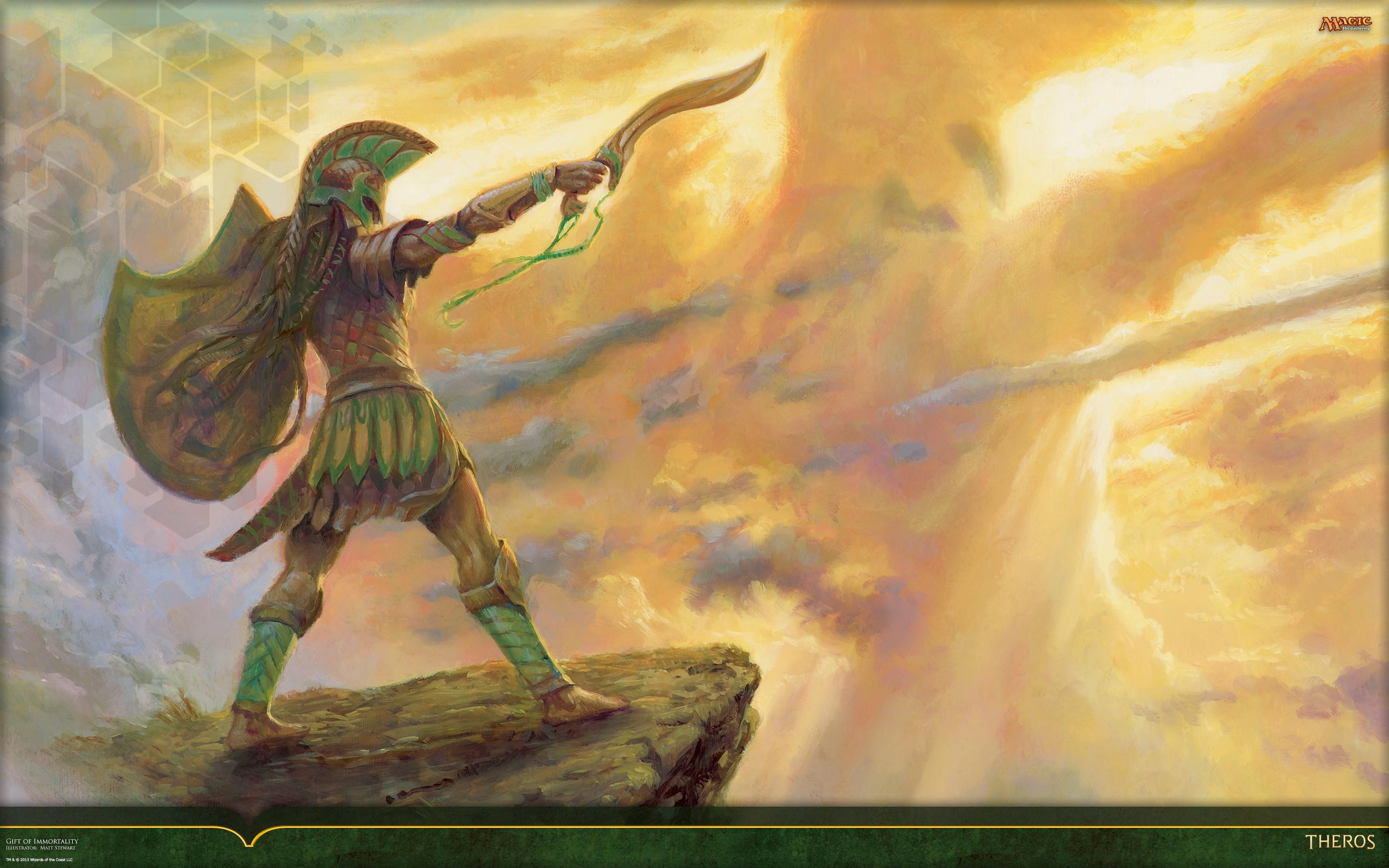
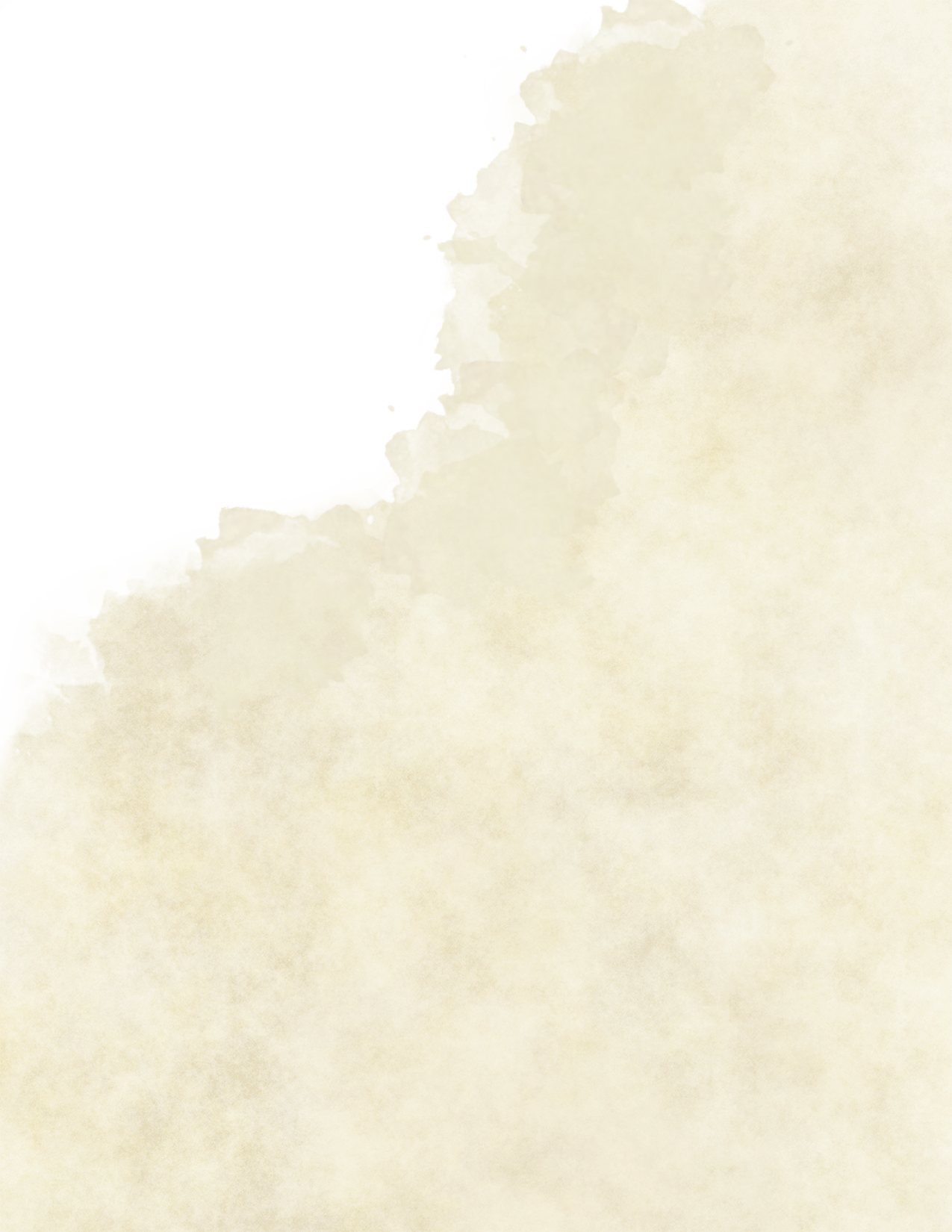
Firebreather
The archetypal Firebreather inherits the techniques of an ancient tradition and wields the first element mastered by civilization with deadly control. To a Firebreather, battle is a deadly dance, where they can dazzle and decimate with finely-honed bursts of flame. Their weapon of choice is dangerous as their enemies' blades, but Firebreathers balance easy grace with masterful control of themselves and the battlefield.
Firedance
When you choose this archetype at 3rd level, you can use a bonus action to light the weapons you are wielding on fire for 1 minute, or until you drop or sheathe the weapons. While aflame, your weapons shed bright light for 20 feet and dim light for another 20, and your attacks with those weapons deal additional fire damage equal to your Fighter level divided by 3.
You can use this ability three times, and regain all expended uses at the end of a short or long rest.
Flame Breath
Also at 3rd level, when you take the Attack action on your turn, you can replace one of the attacks with an exhalation of flame from your ignited weapons in a 15-foot cone, a 10-foot radius centered on yourself, or a line 30 feet long and 5 feet wide (your choice).
Each creature in the area must make a Dexterity saving throw (DC = 8 + your proficiency bonus + your Constitution modifier). A target takes 3d6 fire damage on a failed save, or half as much on a successful one. After you breathe, the fire on your weapons fades until the end of your next turn.
The fire damage increases by 1d6 when you reach 5th, 7th, 9th, 11th, 15th, and 19th levels in this class.
Master to Student
The art of firebreathing is an intimate affair, with knowledge passed down from master to apprentice. At 7th level, you gain proficiency in either Performance or Religion, and have resistance to fire damage. In addition, any fire damage that you deal ignores resistance to fire damage.
Into the Hand
Starting at 10th level, you can redirect others' fiery attacks wherever you choose. When a creature within 30 feet of you takes fire damage, you can use your reaction to grant that creature resistance to fire damage until the end of your next turn (including the damage from the triggering effect). You can target any number of creatures with this reaction, so long as each creature took fire damage from the same effect.
The first time you hit a creature with a weapon attack during your next turn, the attack deals an extra 1d6 fire damage for every creature you granted fire resistance.
You can also use a bonus action to snuff out nonmagical fires that are Medium or smaller. When you do so, you deal an additional 1d6 fire damage on the first weapon attack that you make before the end of your turn.
Coal Road
Beginning at 15th level, you can use a bonus action to leave a trail of burning coals along the ground behind you. Until the end of your turn, every space you move through is set ablaze for 1 minute. This area is difficult terrain for any creature without resistance or immunity to fire damage, and when a creature moves into or within the area, it takes fire damage equal to your fighter level for every 5 feet it travels.
You can use this feature once, and must complete a short or long rest before you can do so again.
Dancing Flame
Beginning at 18th level, you can use an action to summon a fire elemental called a Dancing Flame that shadows your movements. When you create it, it appears within 5 feet of you, and takes its turn in combat immediately after yours, following the telepathic instructions that you give it (requiring no action). The flame cannot regain hit points, and persists until it is destroyed or you are incapacitated. Once you summon one, you cannot do so again until you complete a long rest.
The Dancing Flame uses the statistics of a fire elemental (the DM has this creature's statistics), but is Medium instead of Large, and its ability scores, proficiency bonus, and number of attacks are equal to your own. It wields ignited versions of weapons you are wielding (gaining the same bonus you do from Firedance) and is proficient with them. If you are wielding a magical weapon, none of that weapon's magical properties are copied by the Dancing Flame.
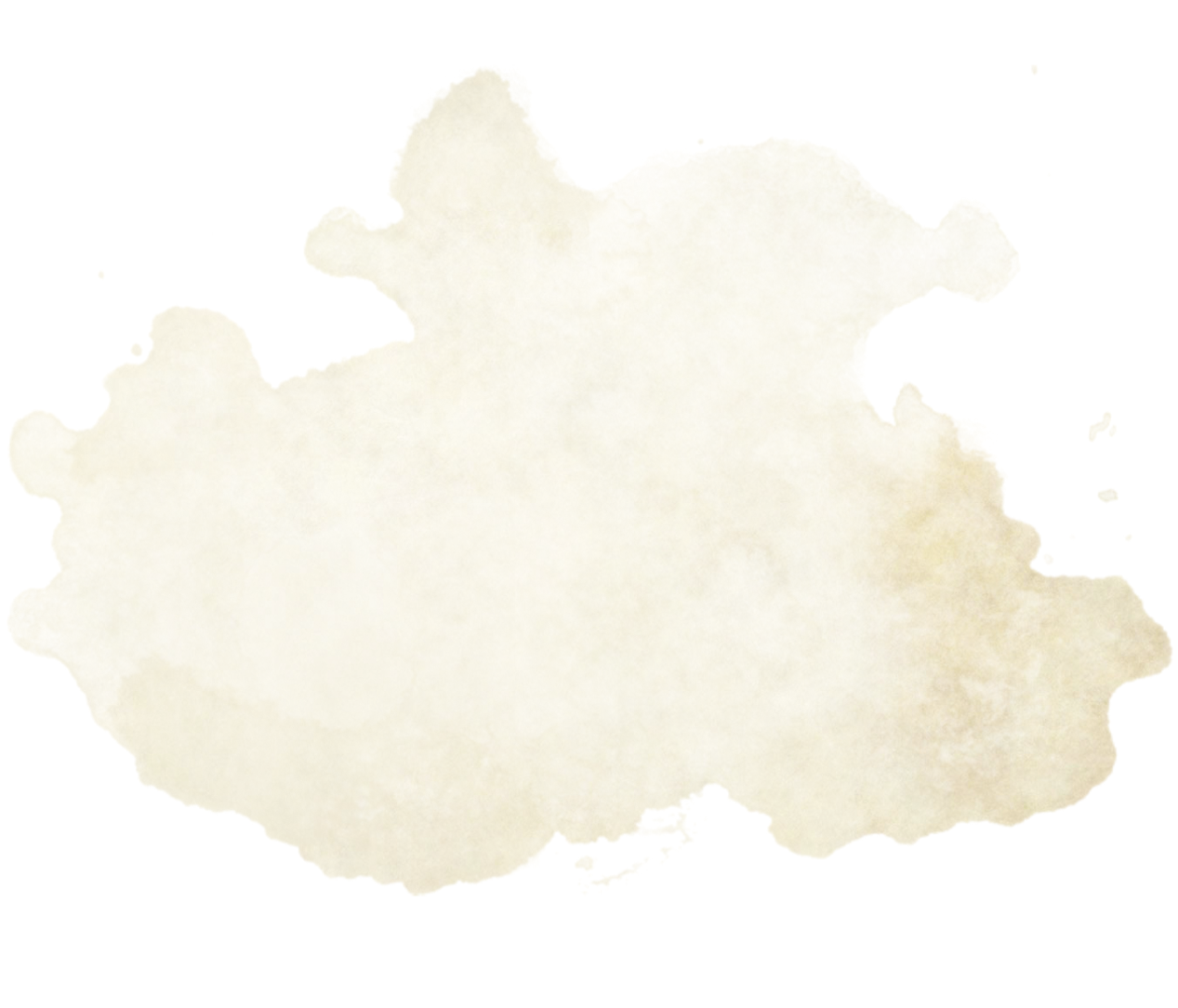

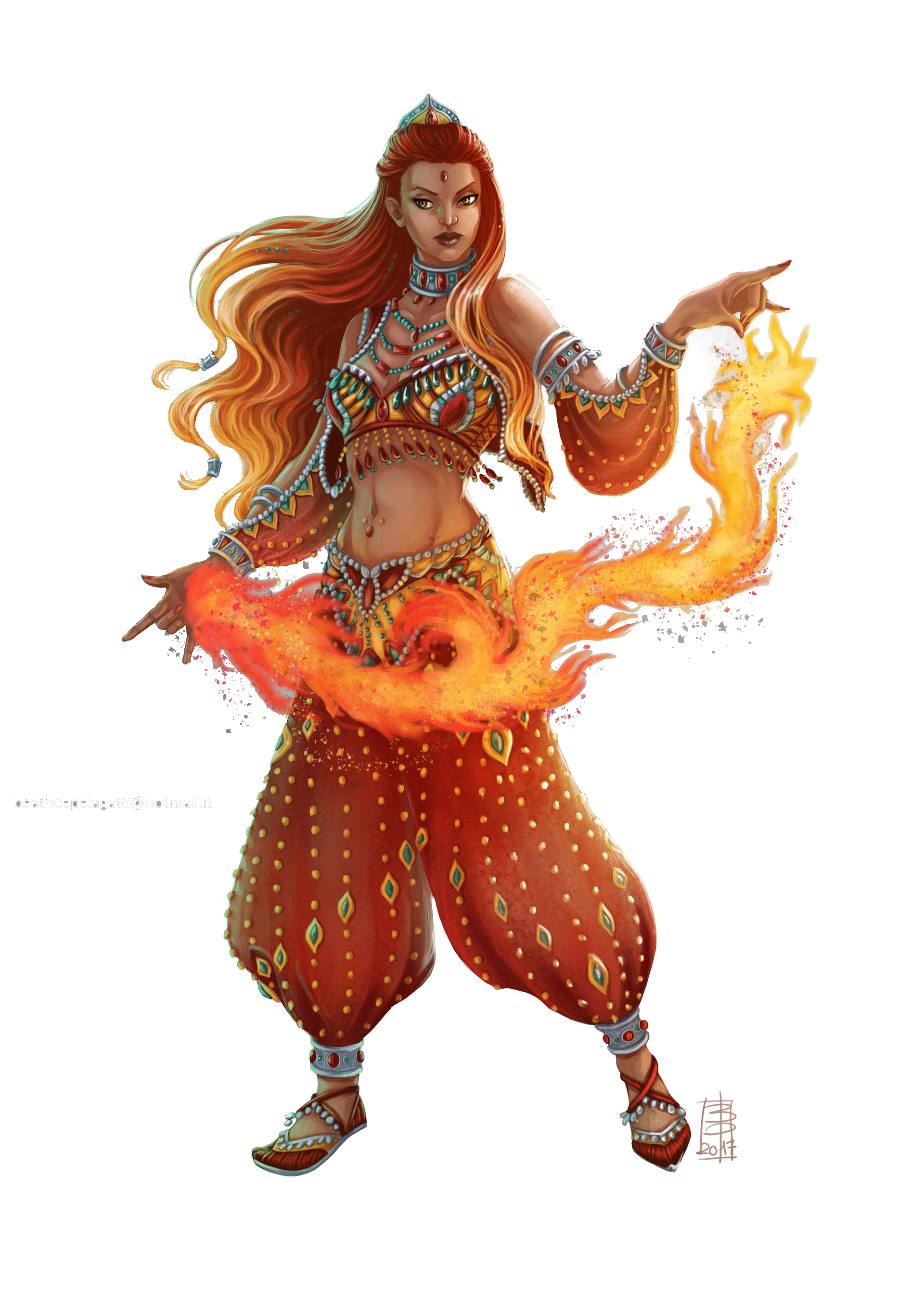
Hero
Not every mortal chosen by the gods becomes a cleric or paladin. Some become heroes. The archetypal Hero includes half-gods like Heracles and Cú Chulainn, prodigies like Odysseus, and zealous knights like Roland who inspire legends with their incredible feats of prowess and bravery. Each are favored by a god or group of gods, who aid their difficult journeys with powerful blessings and divine favor.
Demigod's Passion
When you choose this archetype at 3rd level, the heights of your emotions—madness, joy and rage beyond mortal ken—enhance your body beyond mortal limits. You can use a bonus action to activate this feature, gaining the following benefits for one minute:
- You have advantage on Strength checks, and can attempt to grapple or shove a creature of any size.
- The height and distance of your jumps are doubled.
- You gain a climbing and swimming speed equal to your walking speed, which increases by 10 feet.
- You can attempt to grapple a creature as a bonus action.
- Once on each of your turns when you damage a creature with a weapon attack, the attack deals an extra 1d8 damage of a type associated with your god, which you choose when you gain this feature. For example, a god of the tempest could cause you to deal additional cold, lightning, or thunder damage.
You can use this feature twice per long rest, and gain an additional use at 7th, 10th, 15th and 18th levels in this class. You can also use this feature without expending it when a sufficiently inspiring event occurs, such as the re-emergence of a personal enemy or the death of a lover. Your DM ultimately determines which situations incite emotion strong enough to activate this feature for free, but you determine your character's reaction to events. Cooperate to determine when this feature activates.
Chosen's Blessing
At 3rd level, you can channel a portion of your god's powers. Choose one of the spells below, based on the domain your god rules. Charisma is your spellcasting ability for these spells and sets the save DC (8 + your proficiency bonus + your Charisma modifier) of other abilities you gain from this archetype. You can cast the spell three times per long rest, without material components.
| Domain | Spell |
|---|---|
| Arcana | detect magic |
| Forge | heat metal |
| Grave | bane |
| Hunting | anim. mess. |
| Knowledge | identify |
| Life | cure wounds |
| Domain | Spell |
|---|---|
| Light | faerie fire |
| Love | heroism |
| Luck | sanctuary |
| Music | shatter |
| Nature | entangle |
| Order | silence |
| Domain | Spell |
|---|---|
| Peace | warding bond |
| Tempest | thunderous smite |
| Toxin | ray of sickness |
| Travel | pass w/o trace |
| Domain | Spell |
|---|---|
| Trickery | alter self |
| Twilight | moonbeam |
| War | warding bond |
| Winter | armor of agathys |
Seek Guidance
Starting at 7th level, you can speak to the gods. You learn Celestial, and gain proficiency in Intelligence (Religion) checks regarding your deity. You also learn the divination spell, and can cast it without material components. Once you cast divination in this way, you can't do so again until you complete a long rest.
Wrath of Heaven
Starting at 10th level, your zeal reaches new heights. While in the fervor granted by Demigod's Passion, your weapon attacks are considered magical for the purpose of overcoming resistance and immunity to nonmagical attacks and damage. In addition, every weapon attack you make in this state deals an extra 1d8 damage, instead of only one attack per turn.
Gift of the Gods
Also at 10th level, your divine patrons grant you a minor blessing to aid you on your journey. Choose one of the options below, based on the domain your god rules. Your choice does not have to be the same option you selected for your Chosen's Blessing feature.
Arcana. You gain a +2 bonus to the spell attack roll and save DC of the spell you chose at 3rd level.
Forge. You can touch a damaged object to target it with the mending cantrip, with a casting time of one action. You cast mending without material or verbal components.
Grave. You have advantage on death saving throws, and when a creature within 30 feet of you fails a death saving throw, you can expend one use of your Indomitable feature to let it reroll the save.
Hunting. You have advantage on Survival checks to track creatures and navigate, and on Perception checks to detect hidden creatures.
Knowledge. You add your proficiency bonus to any Intelligence check you make that doesn't already use your proficiency bonus.
Life. When you or a creature within 30 feet of you casts a spell of 1st level or higher to restore hit points to a creature, the creature regains additional hit points equal to your Charisma modifier plus the spell's level (a minimum of 1).
Light. The radius of any light source that you carry or ignite, such as a torch, lantern, or a spell that sheds light, increases by 10 feet. Regardless of its source, this light is considered natural sunlight.
Love. You cannot be charmed, and have advantage on saving throws against enchantment spells.








Luck. You add your Charisma modifier (a minimum of 1) to the result of any attack roll, ability check, or saving throw you make with disadvantage.
Music. You are proficient in all musical instruments.
Nature. You cannot be slowed by nonmagical difficult terrain, and can clear a 5 foot space of difficult terrain, both nonmagical and magical, by walking through it.
Order. When you successfully grapple a creature, you can also shove it prone, no action required.
Peace. You have advantage on ability checks and saving throws to avoid being moved against your will.
Tempest. You ignore the effects of heavy precipitation and strong winds, as described in the Dungeon Master's Guide, and any weapon that you wield has the thrown (20/60) property while you wield it.
Toxin. You are immune to poison damage and the poisoned condition, unless you choose to be poisoned.
Travel. Your speed increases by 10 feet, and you ignore nonmagical difficult terrain.
Trickery. You cannot be blinded, and your passive Perception increases by 5.
Twilight. You gain darkvision out to a range of 60 feet. If you already have darkvision from your race, its range increases by 30 feet. In addition, the time it takes for you to complete a long rest is halved.
War. You have an advantage on initiative rolls, and cannot be frightened.
Winter. You have resistance to cold and fire damage.
Demigod
Starting at 18th level, you become a minor god. You gain eternal youth; at the end of a long rest you can appear as any age you choose, no longer suffer any effects of aging, and cannot die of old age. In addition, your near-immortality makes you more enduring; you don't fail a death saving throw when you take damage while at 0 hit points.
You also gain one of the following benefits, based on the domain your god rules. Your choice does not have to be the same option you selected for your Chosen's Blessing or Gift of the Gods feature.
Arcana. You are immune to force damage, and automatically and successfully identify any spell when you see it cast without using your reaction.
Forge. You are immune to fire damage, and gain a +1 bonus to your AC.
Grave. You are immune to necrotic damage, and can use an action to bless a corpse you touch, preventing it from suffering any penalties if raised from the dead (such as the penalty to attack rolls, saving throws, and ability checks incurred by the resurrection spell).
Hunting. You can move up to your speed straight toward a creature that doesn't have all its hit points as a bonus action.
Knowledge. You are immune to psychic damage, and when you add your proficiency bonus to any Intelligence check, your proficiency bonus is doubled.
Life. You are immune to radiant damage, and when you regain hit points or restore them to another creature, the number of hit points gained is doubled.
Light. You are immune to radiant damage, can see perfectly in dim light and darkness for any distance.
Love. You are immune to psychic damage, and cannot be charmed or blinded.
Luck. No attack roll can have advantage against you while you aren't incapacitated.
Music. You are immune to thunder damage, and cannot be charmed or deafened.
Nature. You are immune to poison damage, and can cast speak with animals and speak with plants at will.
Order. You are immune to psychic damage, and whenever a creature of chaotic alignment forces you to make a saving throw, you have advantage on the save.
Peace. When you or a creature within 60 feet of you are targeted with an spell that raises a creature from the dead, the caster doesn't need material components to cast the spell.
Tempest. You are immune to lightning and thunder damage, and you gain a flying speed equal to your base walking speed.
Toxin. Once per turn when you damage a creature, you can inflict the poisoned condition upon it. This poison lasts until the start of your next turn, and ignores immunity to the poisoned condition.
Travel. The distance you and creatures with you can travel in a day doubles, and you cannot be restrained or paralyzed.
Trickery. You can cast polymorph at will, targeting only yourself. You can use this spell to turn into a humanoid, as well as a beast, but the Challenge Rating of the humanoid you become cannot exceed your fighter level divided by 4.
Twilight. While in dim light or darkness, you can use your reaction when you take damage to halve the damage dealt.
War. At the start of each of your turns, you and creatures of your choice within 30 feet of you gain a number of temporary hit points equal to half your fighter level.
Winter. You are immune to cold damage, and ranged attacks have disadvantage against you.
Mage Knight
The archetypal Mage Knight combines the martial mastery common to all fighters with careful study of magic. With a small, curated list of memorized spells instead of a spellbook, Mage Knights blend the arcane and mundane into one. They work best in the thick of battle, where they intersperse choice spells with devastating weapon attacks empowered by magic.








Spellcasting
When you reach 3rd level, you augment your martial prowess with the ability to cast spells. See PHB chapter 10 for the rules of spellcasting and chapter 11 for the wizard spell list.
| Fighter Level | Cantrips Known | Spells Known | 1st | 2nd | 3rd | 4th |
|---|---|---|---|---|---|---|
| 3rd | 2 | 3 | 2 | — | — | — |
| 4th | 2 | 4 | 3 | — | — | — |
| 5th | 2 | 4 | 3 | — | — | — |
| 6th | 2 | 4 | 3 | — | — | — |
| 7th | 2 | 5 | 4 | 2 | — | — |
| 8th | 2 | 6 | 4 | 2 | — | — |
| 9th | 2 | 6 | 4 | 2 | — | — |
| 10th | 3 | 7 | 4 | 3 | — | — |
| 11th | 3 | 8 | 4 | 3 | — | — |
| 12th | 3 | 8 | 4 | 3 | — | — |
| 13th | 3 | 9 | 4 | 3 | 2 | — |
| 14th | 3 | 10 | 4 | 3 | 2 | — |
| 15th | 3 | 10 | 4 | 3 | 2 | — |
| 16th | 3 | 11 | 4 | 3 | 3 | — |
| 17th | 3 | 11 | 4 | 3 | 3 | — |
| 18th | 3 | 11 | 4 | 3 | 3 | — |
| 19th | 3 | 12 | 4 | 3 | 3 | 1 |
| 20th | 3 | 13 | 4 | 3 | 3 | 1 |
—Spell Slots by Spell Level—
Cantrips. You learn two cantrips of your choice from the wizard spell list. You learn an additional wizard cantrip of your choice at 10th level.
Spell Slots. The Mage Knight Spellcasting table shows how many spell slots you have to cast your wizard spells of 1st level and higher. To cast one of these spells, you must expend a slot of the spell's level or higher. You regain all expended spell slots when you finish a long rest.
For example, if you know the 1st-level spell shield and have a 1st-level and a 2nd-level spell slot available, you can cast shield using either slot.
Spells Known of 1st-Level and Higher. You know three 1st-level wizard spells of your choice, which you choose from the wizard spell list.
The Spells Known column of the Mage Knight Spellcasting table shows when you learn more wizard spells of 1st level or higher. Each of these spells must be of a level for which you have spell slots. For instance, when you reach 7th level in this class, you can learn one new spell of 1st or 2nd level.
Any spell with the word "smite" or "strike" in its name is considered a wizard spell for you.
Whenever you gain a fighter level, you can replace one of the wizard spells you know with another spell of your choice from the wizard spell list. The new spell must be of a level for which you have spell slots.
Spellcasting Ability. Intelligence is your spellcasting ability for your wizard spells, since you learn your spells through study and memorization.
You use your Intelligence whenever a spell refers to your spellcasting ability. In addition, you use your Intelligence modifier when setting the saving throw DC for a wizard spell you cast and when making an attack roll with one.
Spell Save DC
Spell attack modifier
Spellcasting Focus: You can use an arcane focus or a weapon as a spellcasting focus for your wizard spells.
Bonded Weapon
At 3rd level, you learn a ritual that creates a magical bond between yourself and a weapon. You perform the ritual over the course of 1 hour, which can be done during a short rest. The weapon must be within your reach throughout the ritual, and when it ends you touch the weapon and forge the bond.
Once you have bonded with a weapon, you can't be disarmed of it unless you are incapacitated. If it is on the same plane of existence as you, you can summon it as a bonus action on your turn, causing it to teleport instantly to your hand. You can have up to two bonded weapons, but can summon only one at a time with your bonus action. If you attempt to bond with a third weapon, you must break the bond with one of the other two.
When you make a spell attack roll while wielding your bonded weapon, you can instead channel the spell through your bonded weapon. Make a spell attack roll, replacing your spell attack bonus with your bonded weapon's attack bonus, and your bonded weapon's reach or range instead of the spell's range. If the attack hits, you inflict of the spell on the target, but do not apply the weapon's effects. If the attack misses and the spell applies additional effects after a miss, those effects occur as normal. Instead of the spell's normal roll, the type of attack that you choose to make determines if the roll is a melee or ranged attack roll, and the weapon's range, rather than the spell's, determines the attack's range.
War Magic
Beginning at 7th level, when you use your Extra Attack feature, you can cast a cantrip in place of one of your attacks.
Eldritch Strike
Starting at 10th level, magic lingers on your bonded weapons. When you cast a spell of 1st level or higher that deals damage, attacks with your bonded weapon deal an extra 1d6 damage of that type until the end of your next turn, whether the spell damaged a target or not.
In addition, once on your turn when you hit a creature with a spell attack, or a target fails its saving throw against one of your wizard spells, you can instantly teleport to an unoccupied space within 5 feet of it.
Arcane Whirlwind
At 15th level, when you use your Action Surge, you can use the additional action to cast steel wind strikeWCX without expending a spell slot.
Battlemage
Starting at 18th level, when you expend a spell slot of 1st level or higher on your turn, you can make a number of weapon attacks equal to the level of the slot expended (a minimum of 2) as a bonus action.
Manhunter
The archetypal Manhunter chooses a target and pursues it with singleminded intensity. Unaided by magic, a Manhunter relies on keen insight and sheer determination to hunt down the unfortunate souls in their sights. Many Manhunters are bounty hunters, while others are mercenaries, bandits, or soldiers who eliminate priority targets on the field.
Mark Target
When you choose this archetype at 3rd level, you can mark a creature when it misses you with an attack, you hit it with a weapon attack, or you succeed on a contested check against it. You can also mark a creature whose identity you know if you take 10 minutes to gather and ruminate upon information about it. When you mark a creature, you gain insight into that creature's thoughts, beliefs, and style of combat.
You can have a number of marks equal to your Wisdom modifier at any one time (a minimum of 1). If you mark another target, one other mark of your choice ends.
When a target is marked, you gain the following benefits:
- You have advantage on Wisdom (Insight) and Charisma (Intimidation) checks against it.
- If it misses you with an attack, you can use your reaction to make one weapon attack against it.
- You have advantage on opportunity attack rolls against it.
- When you make an opportunity attack against it, you can attempt to grapple it instead of making a weapon attack. You have advantage on the check to grapple it.
Gut Feeling
At 7th level, you gain proficiency in Insight. If you are already proficient in it, you gain proficiency in one of the following instead: Intimidation, Perception, Survival, or Thieves' Tools. Your proficiency bonus is doubled for any ability check you make that uses Insight. You receive this benefit regardless of the proficiency you gain from this feature.
Going Underground
Also at 7th level, you can spend 1d4 hours whenever you enter a city or other urban area to gather information about a mark. This includes interrogating its allies, retracing its steps, gathering rumors, and other investigation. Afterwards, roll 1d20 to determine the results of your research. The DM determines the specific information that you learn, based on the result rolled on the table below. You can only gather information about a single mark at a time.
| Roll | Result |
|---|---|
| 1 | Your mark's contacts discover your efforts. You have disadvantage on Intelligence, Wisdom, and Charisma checks against your mark for 24 hours. |
| 2-7 | You have a few ideas about the broad strokes of your mark's future plans. Some might be wrong. |
| 8-13 | You know your mark's general location, and a few specific details of its future plans. |
| 14-19 | You know your mark's current location, and where it plans to go in the next eight hours. |
| 20 | You know its current location, where it plans to go next, and when and how it plans to go there. |
No Escape
At 10th level, whenever you hit a mark with a weapon attack, its speed is reduced by 5 feet until the end of its next turn. This feature can affect the same mark multiple times.
Out of My Way
Starting at 15th level, you can forcibly remove others from your hunt. When a mark makes an attack against a creature within 15 feet of you, you can use your reaction to move towards the target, entering its space and shoving it into the nearest unoccupied space. You then become the target of the mark's attack. If that attack misses you, you can make one weapon attack against the mark as part of the same reaction.
Untouchable
Starting at 18th level, your ability to wade into a brawl and emerge unscathed is unparalleled. The first attack roll a mark makes against you each turn has disadvantage. You no longer require a reaction to attack when a mark misses you. You can only attack after a mark misses you once on any creature's turn, even if a mark misses you more than once.
Marks and the Order of Operations
Your mark is separate from the action described on page 271 of the DMG and does not gain the benefits of that action. In order to use mark features against a creature, it must already be marked. If an unmarked enemy misses you and you mark it, you cannot use your reaction to counter, because it wasn't a mark when it missed. Similarly, if you hit a creature and mark it, its speed is not reduced, because it was not a mark when you hit it.
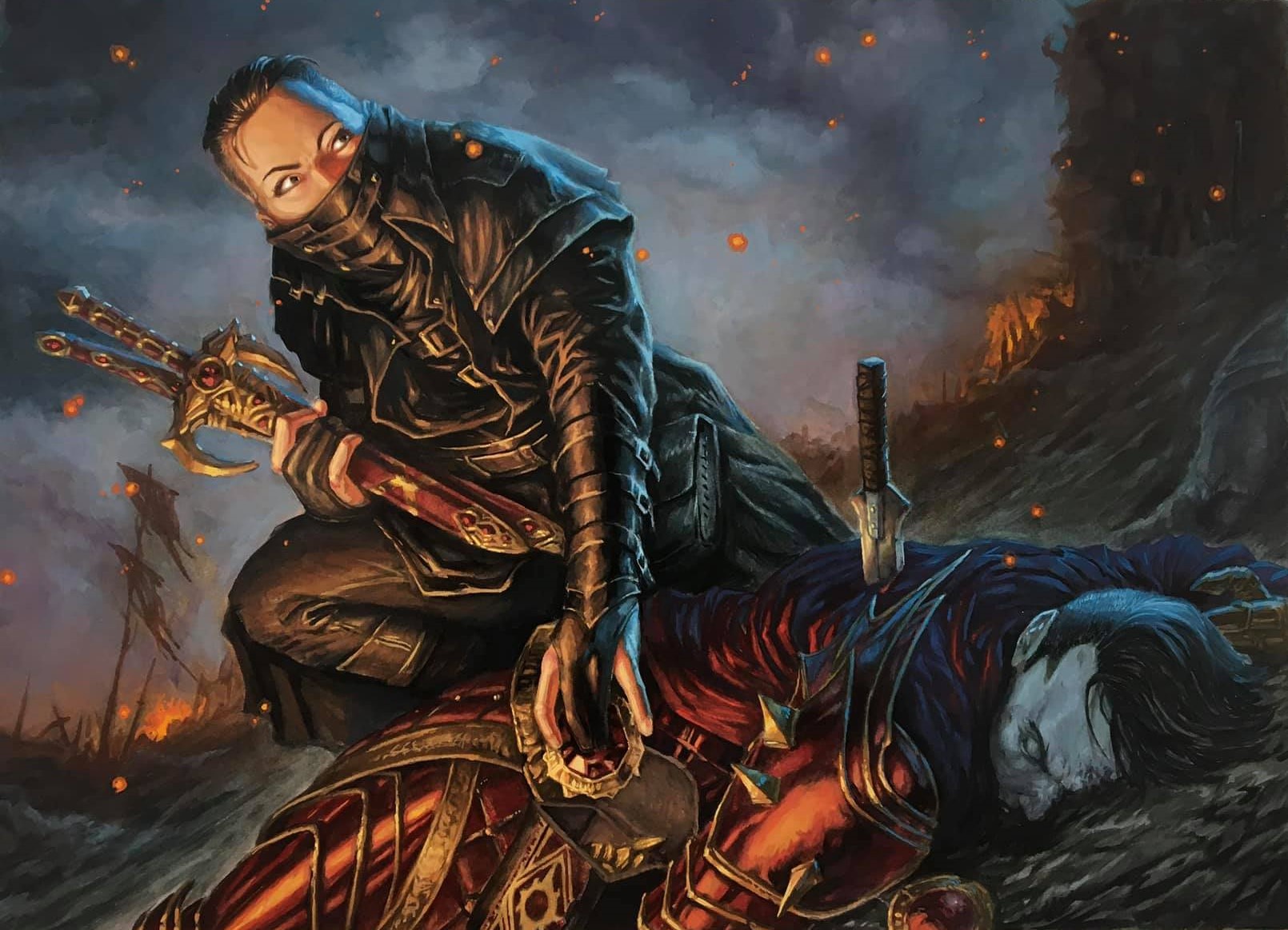
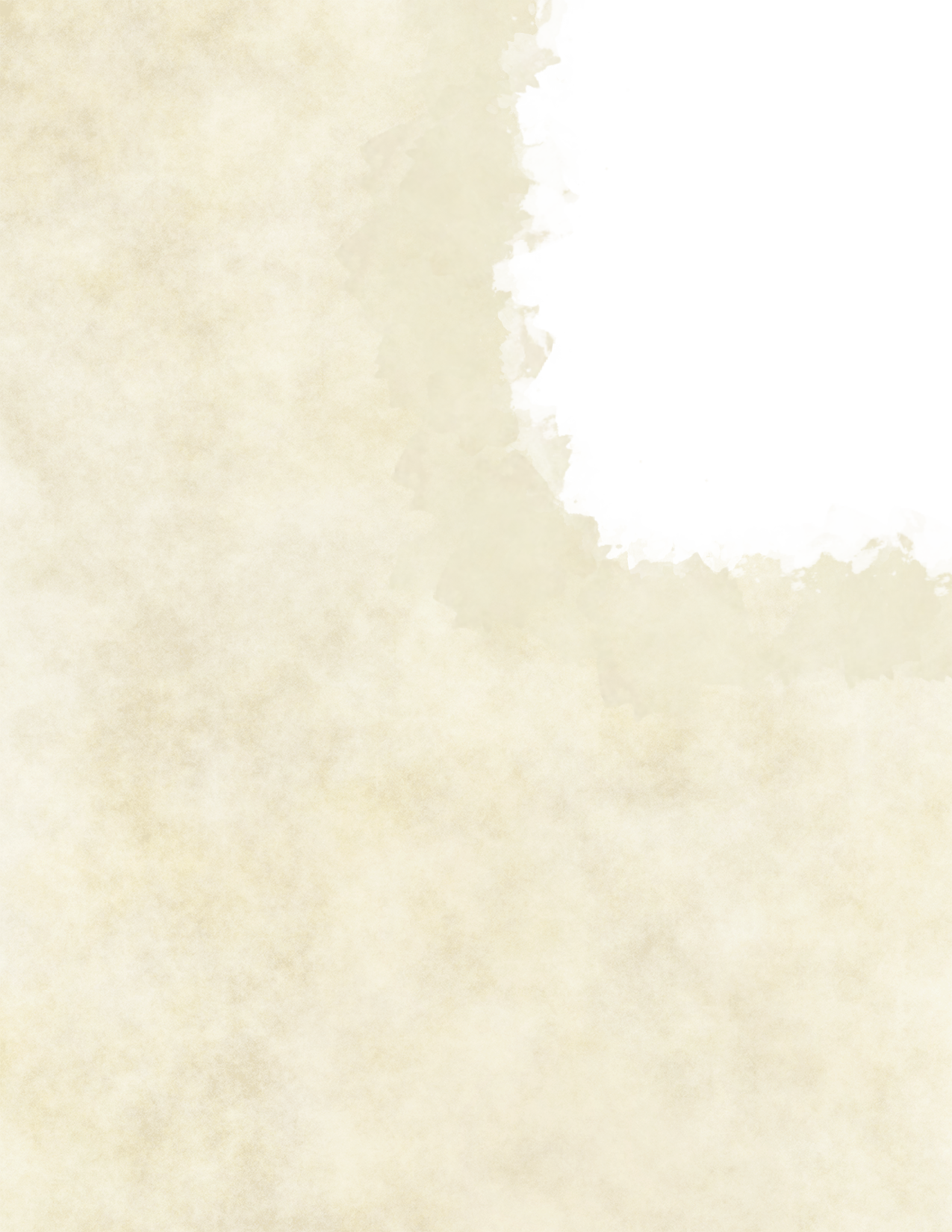
Marksman
The archetypal Marksman is a master of ranged combat, with impeccable aim and a keen eye for priority targets. Marksmen fight from great distances, cutting down foes with ease and rallying their allies with incredible displays of skill. They are famed for both accuracy and showmanship, as Marksmanship holds a long history of competition and fame as both martial art and masterful performance.
Every Marksman has a unique combination of skills and specialties, with preferred weapons and tricks to raise spirits and fell enemies. At the peak of their skills, they can shoot enemy arrows from the sky and respond with a rain of their own unerring projectiles.
Trickshots
When you choose this archetype at 3rd level, you exceed a common archer or triggerman and enter the realm of entertainment. You learn two of the Trickshots below, and learn an additional one when you reach 10th and 15th level in this class.
You can only use a Trickshot when you make a ranged weapon attack. An attack roll can only benefit from one Trickshot at a time, and you cannot use a feature that alters the way you make ranged weapon attacks, such as the Hunter Conclave's Volley feature, in the same turn as a Trickshot.
Double Up. Once on your turn when you make a ranged weapon attack, you can use two weapons or pieces of identical ammunition instead of one. If the attack hits, you roll the weapon's damage dice an additional time and add them to the total damage dealt. The close and long ranges of this attack are halved.
Hairtrigger. Once per turn when you have advantage on a ranged weapon attack roll against a target, you can forgo the advantage to make an additional ranged weapon attack against the same target. Neither attack roll can benefit from advantage. You cannot use a Trickshot on the second attack.
Heavy Impact. When you hit a Huge or smaller creature with a ranged weapon attack, you can push it 5 feet away from you in a straight line.
Ricochet. Once on your turn when hit a creature with a ranged weapon attack, you can make a second attack against another creature within 30 feet of the target, using the same piece of ammunition or thrown weapon. The second attack's damage is halved, and you cannot use a Trickshot on the second attack.
Exhibition Shooter
At 3rd level, you can rally allies with displays of incredible skill. When you use a Trickshot, you can grant up to 6 creatures that can see and hear you temporary hit points equal to half your fighter level. You have 3 uses of this feature. You regain all expended uses when you finish a short or long rest, and one use when you damage an enemy behind 1/2 or 3/4 cover, even if you can ignore that cover.
Showoff
At 7th level, when you land a critical hit with a ranged weapon attack, you can use a bonus action to give one creature within 30 feet of you that can see and hear you advantage on the next ability check or saving throw it makes within the next minute. You also gain proficiency in Performance.
Sharpshooter Style
Starting at 10th level, you choose one of the following styles to further distinguish yourself and your style of combat.
Close Quarters. Being within 5 feet of a hostile creature doesn't impose disadvantage on your ranged weapon attacks, and you can use your weapons and some ammunition as melee weapons. You are proficient in the melee attacks that you make with ranged weapons, and when used in this way all ranged weapons deal 1d8 bludgeoning damage, have the finesse property, and ignore limits on the number of the attacks they can make imposed by the ammunition, gunpowder, or loading properties. Arrows and bolts have the light and finesse properties, and deal 1d4 piercing damage.
Sniper. Attacking at long range or while lying prone doesn't impose disadvantage on your ranged weapon attack rolls, and you can Search for a hidden creature as a bonus action, rather than an action.
Quickdraw. You add your proficiency bonus to initiative rolls. When you roll initiative, you can make a single ranged weapon attack.
Twain Arrow
Beginning at 15th level, when you or another creature that you can see within the normal range of your weapon is targeted by a ranged attack, you can use your reaction to deflect the projectile with a shot. Make a ranged weapon attack. If your attacks roll matches or exceeds the enemy's, the attack misses.
You must be wielding a ranged weapon when the enemy makes its attack roll to use this reaction. If you chose Quickdraw Sharpshooter Style above, you can draw a ranged weapon as part of the same reaction.
Deadshot
At 18th level, your devastating aim takes weak enemies out of the fight quickly. When you reduce an enemy to a number of hit points less than your fighter level with a ranged weapon attack, the target is instead reduced to 0 hit points.
Spellscorn
Some fighters master specialized equipment, or spend their lives developing a single style of combat. The archetypal Spellscorn ignores specialized martial disciplines and instead masters combat against a specific type of enemy: spellcasters.
While most Spellscorn don't seek the destruction of all magic users, they understand that such individuals represent a clear and present danger to the people of the world, and that the most powerful and evil must be stopped at any cost. Many Spellscorn practice magic themselves, and choose this archetype because they understand how easily this privilege can be abused. Some are elite knights called to combat otherworldly threats ordinary warriors cannot face. Others are ruthless inquisitors who hunt enchanters, necromancers, witches, and other amoral mages with brutal efficiency.
Regardless of their motivation, Spellscorn are unique among mortals for their ability to detect and nullify magic around them, and their ability to resist damage from spells.
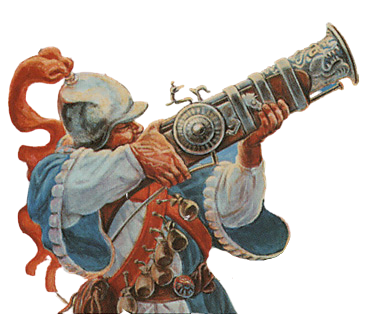
Null
When you choose this archetype at 3rd level, you manifest a magical dead zone around yourself. While you are conscious, you and creatures of your choice within 10 feet of you have resistance to damage from cantrips and spells cast at 1st level. When you reach 7th, 10th, 15th, and 18th level in this class, the radius of this aura increases by 5 feet and the spell level affected increases by 1.
You also gain a new reaction. When a creature you can see casts a spell or other magical effect, you can use your reaction to lower the save DC for that spell by half your Fighter level. This decrease applies to you and creatures of your choice within your magical dead zone. You can use this reaction a number of times equal to your Intelligence modifier (a minimum of 1) and recover all expended uses after a short or long rest.
Inquisitor
Starting at 7th level, you hunt mages with unparalleled skill. You gain proficiency in the Arcana skill, have advantage on checks to identify spells, which you can do without using a reaction. You can also cast detect magic at will. Intelligence is your spellcasting ability for this spell.
If you spend 1 minute observing a creature outside of combat, you learn if it can cast spells and two of the following:
- Its current number of unexpended spell slots, points, or castings of a spell
- Its spell save DC, attack bonus, and spellcasting ability
- Any feature it has that grants spells, such as caster class and level, or the innate spellcasting feature
- Two spells it knows from a school of your choice (if any)
Finally, when you damage a creature that is concentrating on a spell, the DC for it to maintain concentration is 10 or the total damage you dealt, whichever is higher.
Weavecutter
Starting at 10th level, your attacks breach magical resistances, wards, and effects. Your weapon attacks are considered magical for the purpose of overcoming resistance and immunity to nonmagical attacks and damage. Your attack rolls ignore any magical effects that increase a target's AC, such as the bonus from +1 armor or the shield spell.
In addition, you and your attacks can ignore
any creation of magical force. For example,
you can walk through a forcecage that a
spellcaster has imprisoned you inside,
fire arrows through a wall of force, or
walk through otiluke's resilient sphere.
You can also choose to attack a creation
of magical force. The force has an Armor
Class equal to 10 + the spell's level. If the
attack hits, the creation of magical force is
destroyed, and the caster takes damage as if you had hit it with the attack.
Arcane Battery
Starting at 15th level, you can absorb the power of magical items. Once per turn when you damage a creature,
you can absorb the power of a magic item
that creature is wearing, carrying, or
attuned to. The magic item becomes inert for 1d4 rounds, (reactivating at the end of your turn) during which time none of its properties apply to the user, and none of its features, spells, or magical abilities can be used.
You also gain a number of temporary hit points, determined by the item's rarity. You lose any remaining temporary hit points when the item becomes active again. If you damage the creature wearing or carrying an inert magical item you can extend the time it is inoperable, though you gain no additional temporary hit points for doing so.
You can also use this feature on a magical item you are wearing or carrying, either as a bonus action or as a reaction when you take damage. The temporary hit points absorb as much of the incoming damage as possible, and those left last until the item reactivates.
| Item Rarity | Temporary HP gained |
|---|---|
| Common | 10 |
| Uncommon | 20 |
| Rare | 30 |
| Very Rare | 50 |
| Legendary | 80 |
| Artifact | 120 |
Spell Reflection
At 18th level, you repel magic, which retreats through the channels it carves through the Weave to strike its caster. You are immune to damage from spells cast at 5th-level or lower. Whenever you are targeted by a spell of 5th-level or lower, you can use your reaction to reflect it back at its caster, using the spellcaster's slot level, spell save DC, attack bonus, and spellcasting ability. If the reflected spell targets multiple creatures, other targets within your magical dead zone are likewise unaffected. If the spell does not deal damage, this feature has no effect.
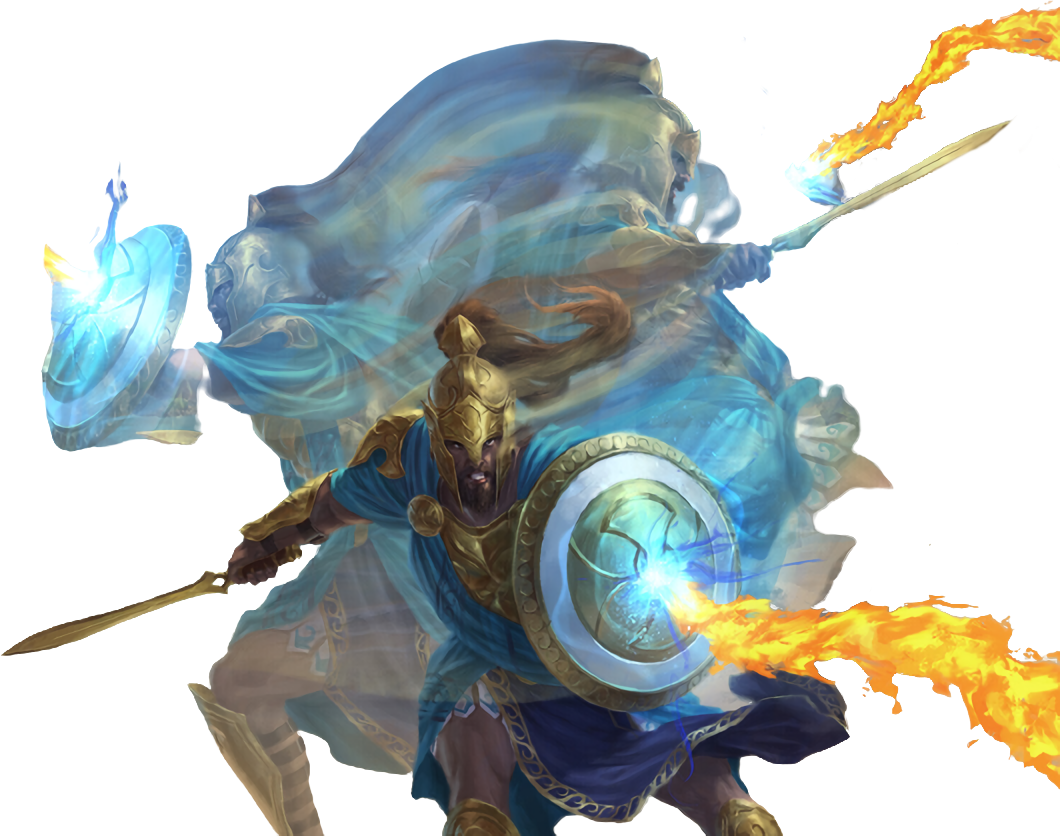
Spellslinger
The archetypal Spellslinger studies a unique form of ranged combat created by high elf archer-mages, who wove spells into their bowshots. The magical arrows of these elite warriors guarded their borders against monsters and marauders, who borrowed or imitated their techniques to create their own Spellslingers. While such techniques are no longer secret, Spellslingers remain rare and valuable warriors among the cultures who value varied techniques on the battlefield.
Energized Attack
When you choose this archetype at 3rd level, you can charge your ranged attacks with magic. Once per turn when you hit with a ranged weapon attack with a ranged or thrown weapon, you can choose one of the following damage types: acid, cold, fire, force, lightning, necrotic, psychic, or thunder damage. The attack deals damage of the type you chose, instead of the weapon's normal damage type.
Arcane Shot
Also at 3rd level, you can unleash special magical effects from your Energized Attacks. When you gain this feature, you learn two Arcane Shot options of your choice (see "Arcane Shot Options" below).
When you hit with an Energized Attack, you can apply one of your Arcane Shot options to that projectile (unless the specific shot has a different trigger). You decide to use the option when the projectile hits the creature, unless the option doesn't involve an attack roll. If the option does extra damage, it deals the same damage type that you chose for that Energized Attack. You have a number of uses of this feature equal to 2 + your Intelligence modifier (a minimum of 3), and regain all uses at the end of a short or long rest.
You gain an additional Arcane Shot option of your choice when you reach 7th, 10th, 15th, and 18th level in this class.
If an option requires a saving throw, your Arcane Shot save DC is calculated as follows:
Arcane Shot save DC
If another one of your features requires a saving throw, it uses this save DC as well.
Lingering Enchantment
At 7th level, your magical powers linger in your weapons. When you make a ranged attack, you can make the projectile magical for the purpose of overcoming resistance and immunity to nonmagical attacks and damage. This magic fades immediately after the attack hits or misses its target.
Bewitched Missile
Also at 7th level, you can direct an errant shot toward a new target. When you make a ranged attack roll and miss, you can use your reaction to reroll the attack roll against a different target within 60 feet of the original target.
Magic Mortar
Starting at 10th level, you can overcharge your ammunition with explosive magical power. You can use a bonus action to imbue one thrown weapon or piece of ammunition that you are wearing or carrying with energy.
After you attack with the weapon or piece of ammunition (whether you hit or miss), it explodes in a 20-foot-radius sphere centered on the target of the attack, and is destroyed. Each creature in the area, including the target, must make a Dexterity saving throw against your Arcane Shot DC. A creature takes 6d8 damage on a failed save, or half as much damage on a success. You choose the type of damage from the options available for your Energized Attack.
You can use this feature a number of times equal to your Intelligence modifier (a minimum of once), and regain all expended uses when you finish a long rest.
Shower of Arrows
Starting at 15th level, when you use your Action Surge, you can use the additional action to cast conjure volley without using a spell slot or somatic or material components. Intelligence is your spellcasting ability for this spell.
Arcane Hurricane
Starting at 18th level, you can seamlessly weave magic and projectiles into one. You can make any of your attacks an Energized Attack, instead of one. You also don't require weapons or ammunition to make Energized Attacks; so long as you have the free hand or hands required to wield the weapon of your choice, you can magically conjure the weapon and ammunition you require in your hands, no action required. Any weapons and ammunition that you conjure disappear after 1 minute.
In addition, you regain any expended uses of your Arcane Shots when you roll initiative.
Arcane Shot Options
Banishing Shot. You use abjuration magic to try to temporarily banish your target to a harmless demiplane. The creature hit by the attack must succeed on a Charisma saving throw or be banished. While banished in this way, it is incapacitated. At the end of its next turn, the target reappears in the space it vacated or in the nearest unoccupied space if that space is occupied.
Befouling Shot. Your enchantment magic causes this attack to temporarily terrify its target. The creature hit by the attack takes an extra 2d6 damage. The target must succeed on a Wisdom saving throw or be frightened of you until the start of your next turn.
Blinding Shot. You weave illusion magic into your attack, creating a brilliant burst of elemental energy. The creature hit by the attack takes an extra 2d6 damage, and must succeed on a Constitution saving throw or be blinded until the start of your next turn.
Bursting Shot. You imbue your attack with elemental power with a technique drawn from the school of evocation. Immediately after the attack hits its target, the projectile detonates. The target and all other creatures within 10 feet of it take an extra 2d6 damage.
Grasping Shot. When this attack strikes its target, conjuration magic creates a mass of elemental binds around it, which take a form you choose. The creature hit by the attack takes an extra 2d6 damage, its speed is reduced by 10 feet, and it takes 2d6 damage the first time on each turn it moves 1 foot or more without teleporting.
A creature can use its action to remove the chains from the target with a successful Strength (Athletics) check against your Arcane Shot save DC. Otherwise, the chains last for 1 minute or until you use this option again.
Phasing Shot. You use transmutation magic to give your attack an ethereal quality. When you use this option, you don't make an attack roll. Instead, the attack shoots forward in a line 1 foot wide and 30 feet long. The attack passes harmlessly through objects, ignoring cover. Each creature in that line must make a Dexterity saving throw. On a failed save, a creature takes damage as if it were hit by the projectile, plus an extra 1d6 damage. On a successful save, a target takes half as much damage.
Seeking Shot. Using divination magic, you grant your shot the ability to seek out a target. When you use this option, you don't make an attack roll for the attack. Instead, choose one creature you have seen in the past minute. The projectile flies toward that creature, moving around corners if necessary and ignoring all but full cover. If the target is within the weapon's range and there is a path large enough for the projectile to travel to the target, the target must make a Dexterity saving throw. Otherwise, the projectile disappears after traveling as far as it can. On a failed save, the target takes damage as if it were hit by the projectile, plus an extra 1d6 damage, and you learn the target's current location. On a successful save, the target takes half as much damage, and you don't learn its location.
Weakening Shot. You weave necromantic magic into your attack. The creature hit by the attack takes an extra 2d6 damage. The target must also succeed on a Constitution saving throw, or the damage dealt by its weapon attacks is halved until the start of your next turn.
Elements and Effects
Take the time to describe how an Arcane Shot's effects interact with the damage type of the Energized Attack that you use with it.
For example, for a Phasing Shot energized with lightning, you could describe the shot as a bolt of electricity that streaks from your weapon through each enemy. A Banishing Shot that deals necrotic damage could send the target to a harmless part of the Shadowfell until, or a Blinding Shot that deals psychic damage could be a beam of magical energy that scours the eyes or disrupts communication between the target's eyes and brain. A Grasping Shot using cold damage might lock the enemy down with ice instead of chains, or the acid might melt its shoes into the dirt, making moving difficult.
If you want, think of a signature combination your character is particularly proud of. Be inventive, and play up the sudden, unexpected tricks your character might create.





Swordmaster
Instead of a variety of weapons, the archetypal Swordmasters specialize in mastery of the blade. Such masters include the Swordmasters of Hoeth, the myrmidons of Magvel and Elibe, and the doppelsöldner mercenaries of 16th-century Europe. With unmatched agility, Swordmasters are masters of defense who punish enemies for attacking.
Fechtbücher Expert
Starting at 3rd level, you gain unparalleled swordsmanship. When wielding an arming sword, bastard sword, estoc, greatsword, longsword, rapier, sabre, scimitar, shortsword, shotel, gauntlet-sword, or hooksword and not wielding a shield, your speed increases by 5 feet, and you can use your sword to parry attacks, even if it lacks the parry property.
When you are hit by a weapon attack, you can use your reaction to attempt this special parry. Add your Strength modifier to your AC against that attack. If the attack still hits, roll your weapon's damage dice and reduce the damage taken by the amount rolled. If you reduce the damage to 0, the attack misses, and does not trigger additional effects that require a hit to activate.
If the parried attack misses, you can move up to 5 feet and make one melee weapon attack against a target within your reach as part of the same reaction.
Finally, if you use another feature to parry attacks with your reaction, such as the Defensive Duelist feat or the parry property, you can use that feature to increase your AC, rather than adding your Strength score. So long as you used your reaction to parry, that parry replaces the special one granted by this feature and allows you to attempt to reduce the attack's damage and counter as normal.
Cleansing Exercise
At 7th level, you can use meditation and practice to purify your body. So long as you are not incapacitated, you can perform a ritual of meditative maneuvers over the course of a short rest.
When you do so, you remove the effects of a single poison, disease, curse, spell, level of exhaustion, or other condition from yourself. Though this activity is strenuous, it does not prevent you from gaining the other benefits of a short rest. The first time you roll initiative after this short rest, you do so with advantage.
You can use this feature once, and must complete a long rest before you can do so again.
Flash Step
Beginning at 10th level, you can charge so swiftly that you seem to have teleported. If you haven't moved on your turn and aren't grappling another creature, you can expend all of your movement to move up to twice your speed, so long as you stop within 5 feet of a hostile creature. This movement does not provoke opportunity attacks. You then make two melee weapon attacks. Afterward, your turn continues as normal. You can use this feature a number of times equal to your Dexterity modifier (a minimum of 1), and regain all uses at the end of a long rest.
Improved Parry
At 15th level, your defensive skill has improved. You can take two reactions per round instead of one, so long as at least one of those reactions is used to deflect an attack. When you roll your weapon's damage dice to reduce the damage from an attack using Fechtbücher Expert, you gain a bonus to the roll equal to your fighter level.
Blade Dynamo
Once you reach 18th level, when you use your reaction to make a weapon attack, you can make two weapon attacks, instead of one.
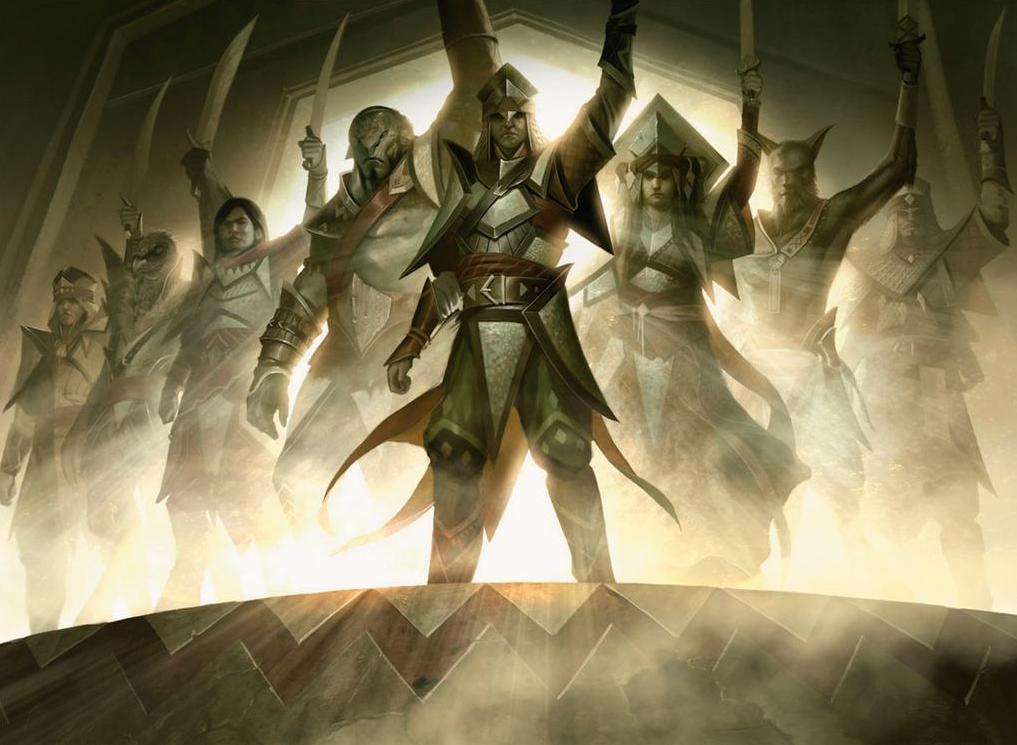

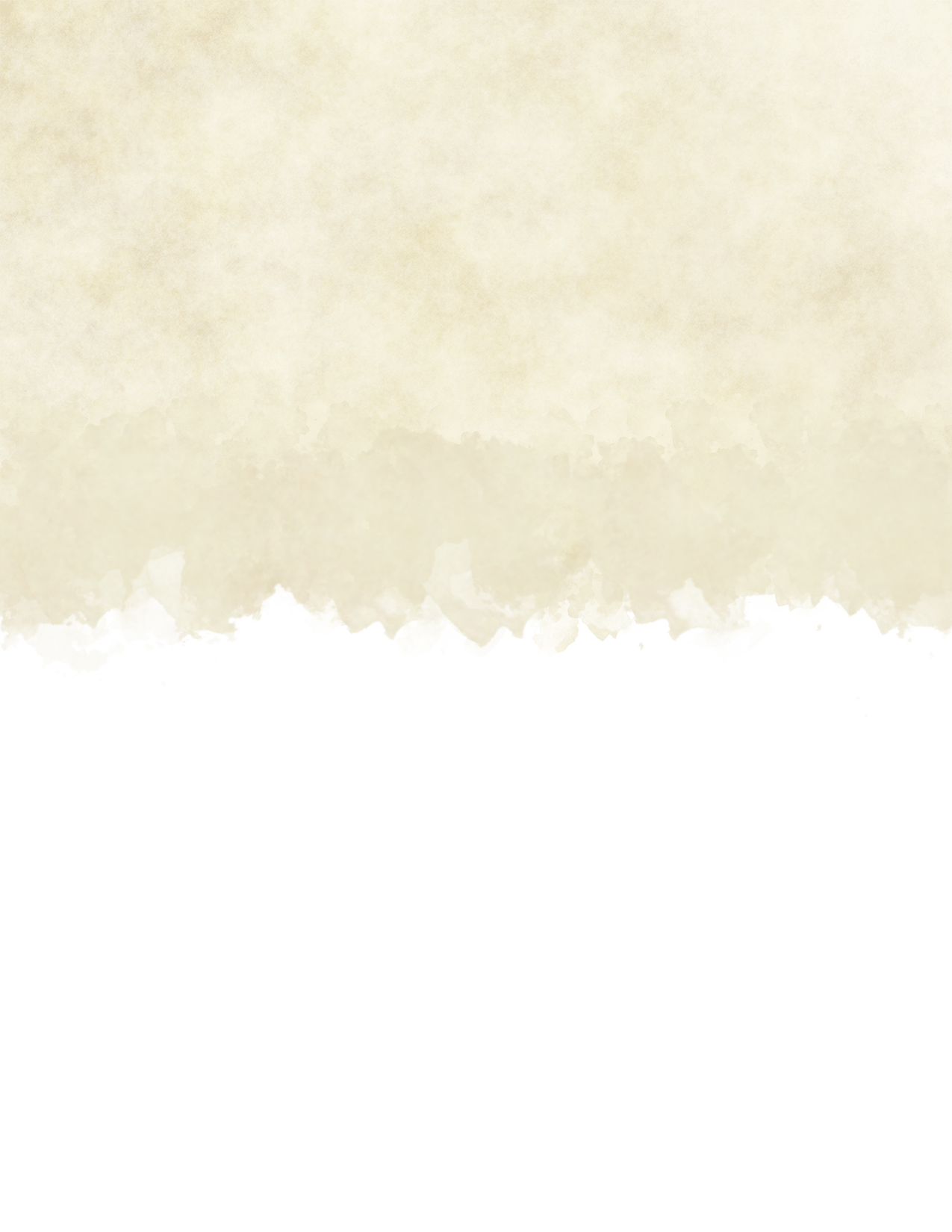
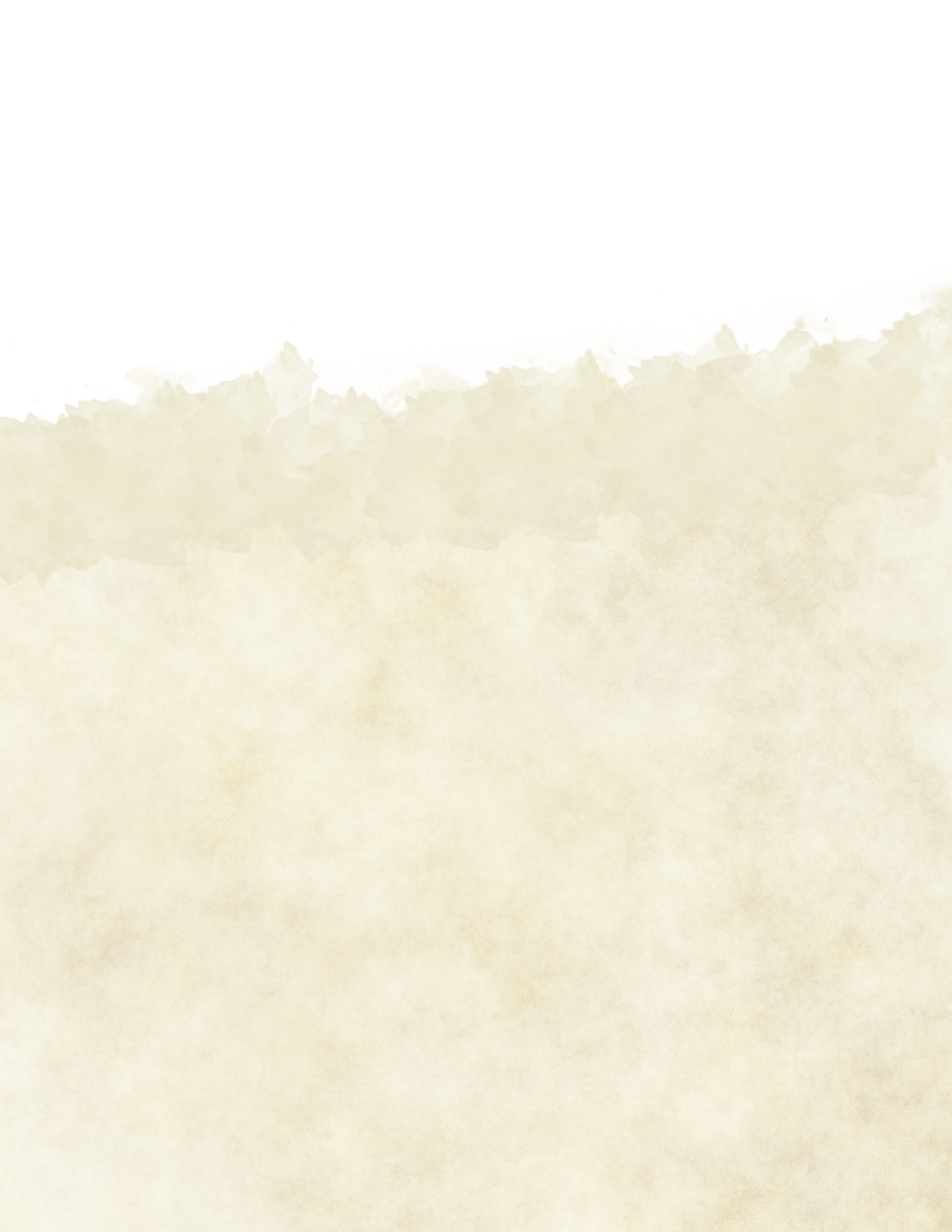
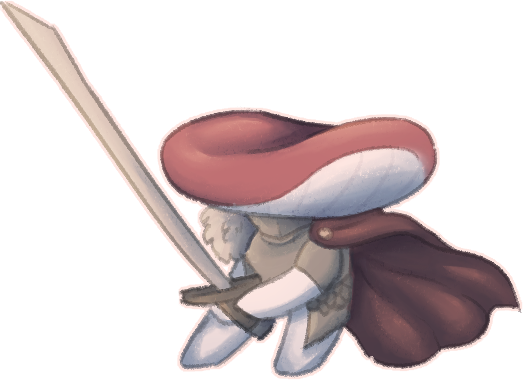
Valkyrie
The Valkyrie soars above the battlefield in search of worthy souls to escort to the afterlife, who will be resurrected to fight again at the end of the world. A Valkyrie trains in healing, service, judgement, and most importantly, battle, for she will fight alongside her chosen. These fighters are warrior-spirits born mortal, proving their worth before their ascension.
Restriction: Female characters only
While all warriors can die honorably, only female souls can become these glorious champions. Valkyries both mortal and immortal are a special variety of celestial that always manifests in female form.
Warrior of the Hall
At 3rd level, you can open your soul to the hall of glorious dead, channeling a fragment of its power. You gain the following benefits:
Inspiring Cry. When you take the Attack action, you can shout an inspiring warcry that bolster any number of friendly creatures within 30 feet of you that can hear you. An affected creature can add your Wisdom modifier (a minimum of 1) to one attack roll or saving throw it makes before the start of your next turn. You can use this ability thrice, and regain all expended uses at the end of a short or long rest.
Rise Again. At dusk in Valhalla, the lethal wounds of the dead close, and as one of its stewards you can heal the fighters you choose. You learn prayer of healing. Wisdom is your spellcasting ability for this spell, and when you cast it in this way it has a casting time of one action. You can cast prayer of healing in this way thrice, and regain all expended uses at the end of a long rest.
Shield Maiden
Starting at 7th level, your soul's experience in assisting others in the afterlife grants you the following benefits:
- The time it takes for you to don or doff armor is halved.
- You can don or doff any shield with the item interaction you receive as part of your turn.
- When you help another creature don or doff armor, the time the process takes is quartered, rather than halved.
- You gain proficiency in your choice of cook's utensils or brewer's supplies.
- You gain proficiency in Medicine.
Honored Dead
Also at 7th level, your ability to choose the final destination of a mortal soul allows you to ease its return to life. You can conduct an hour-long ritual over the body of a deceased creature that has not yet been interred, preparing the soul to either return or cross over.
Once this ritual is completed, the material cost of any spell cast to resurrect the creature is waived and it comes under the effects of the gentle repose spell. You also choose the afterlife the creature's soul enters after death, potentially preventing it from being damned to Hell or destroyed.
A creature cannot benefit from this ritual more than once, and you cannot bless the corpse of a creature that was not killed in combat.
Ride of the Valkyrie
When the day comes, you will charge with your sisters
across the sky. Starting at 10th level, when you use
Inspiring Cry or cast prayer of healing, you grant yourself
and one targeted creature a flying speed of 60 feet for 1 minute. This ability can manifest as feathered wings sprouting from your back, a mighty gale that holds you aloft, a shadowy eight-legged horse that appears beneath you, or another form of your choice.
Judge the Fallen
Starting at 15th level, you can cast speak with dead a
number of times equal to your Wisdom modifier per
long rest (a minimum of once). If the target of your spell
died violently, your casting does not expend a use of this feature, and you witness the last minute of the target's life before it lost consciousness through its senses.
In addition, creatures of your choice within 30 feet of you have advantage on death saving throws.
Dawn of the Final Day
Starting at 18th level, you have been found worthy. When you die, your soul will ascend to Valhalla. More importantly, your powers of healing cannot be matched. Once per day, you can use your action to cast mass heal. You and every creature that gains hit points from mass heal gain a flying speed of 60 feet for 1 minute.
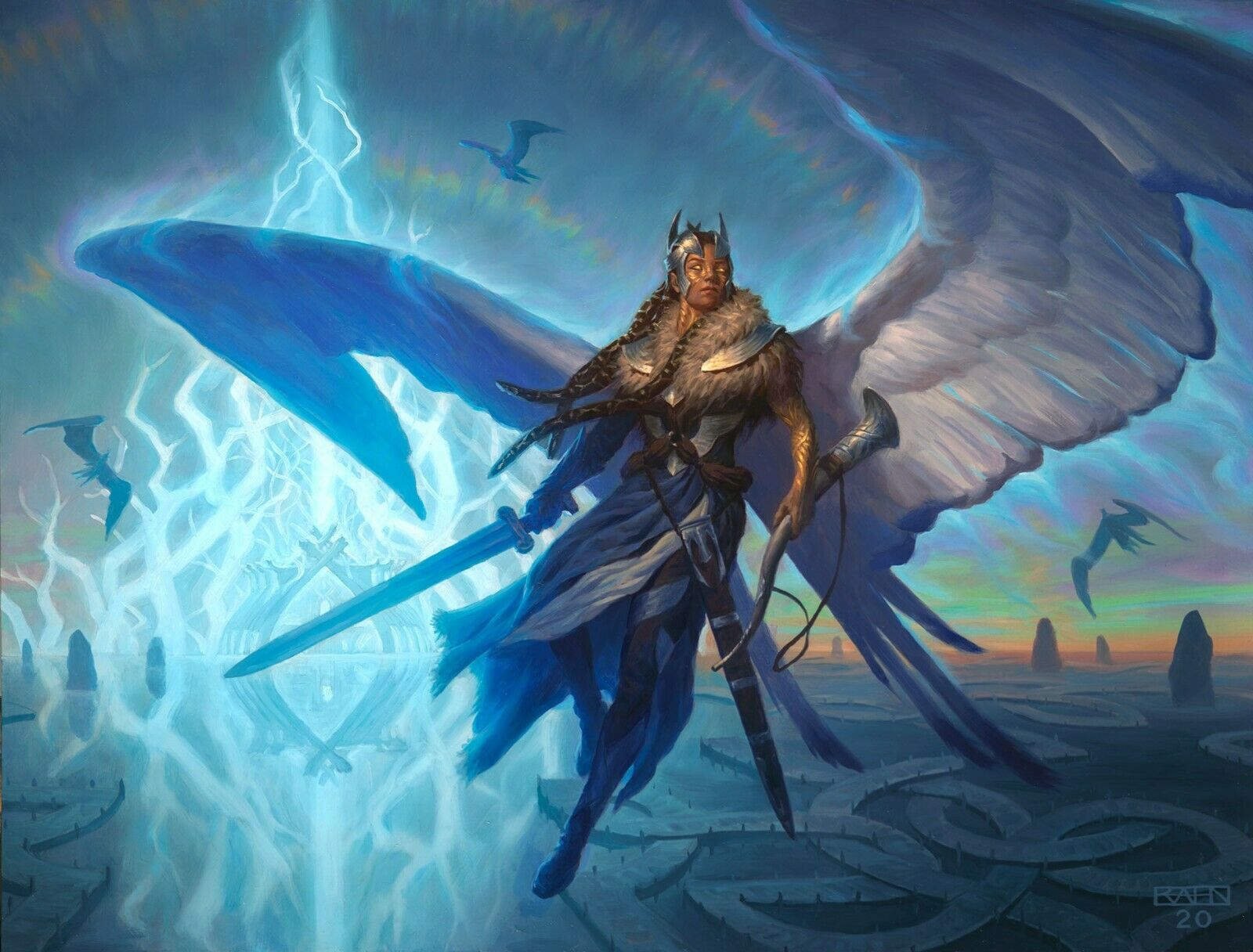

Varangian
The archetypal Varangian is a warrior from the far north whose people sailed and settled across the world and sought wealth by any means possible. By plunder, trade, ransom, or mercenary, these vagabonds accumulate wealth and use it to tie themselves to allies through oath, wealth, and blood.
Shoot to Wound
You are used to taking your foes alive. A dead enemy cannot be ransomed, and quick victories are less likely to damage loot. When you choose this archetype at 3rd level, you can wound enemies to make it easier to bring them down. Once on your turn when you hit a creature with a weapon attack, it must succeed on a Constitution saving throw or suffer one of the wounds below.
Shoot to Wound save DC
Wounds
The target's anatomy need not perfectly match those described in the feature for wounds to take effect.
Arm. For the next minute, the first weapon attack roll the target makes on each of its turns is made with disadvantage.
Eye. The target is blinded until the end of its next turn.
Ear. The target is deafened for 1 hour.
Gut. The target cannot take reactions until the end of its next turn.
Leg. The target cannot move until the end of its next turn.
Throat. The target can't talk until the end of its next turn.
Mercantile
You are accustomed to wandering far to sell your war loot. At 7th level, you gain proficiency in navigator's tools, and your choice of either land or water vehicles. You add your fighter level to the number of miles you and up to 10 other
creatures with you can travel in a day.
Ransomer
Also at 7th level, you gain additional experience with taking captives. You gain proficiency in Athletics, your proficiency bonus is doubled for any ability check you make that uses it, and dragging a grappled creature costs you no extra movement. Whenever you attempt to
knock a creature out, you deal your
weapon's normal damage amount even if
the weapon you use lacks the nonlethal
property, though when you do so you
always deal bludgeoning damage.
Shotcaller
When you reach 10th level, you can direct your allies to openings and cripple dangerous foes. When you take the Attack action, you can expend one of your extra attacks to indicate an opening to one allied creature within 30 feet of you. The ally must be able to see or hear you.
That ally can use its reaction to make a weapon attack against one creature that you both can see. If the attack hits, the target must make a Constitution saving throw against your Shoot to Wound save DC. On a failed save, the target suffers one wound, chosen by the ally that made the attack.
Glint of Gold
You know riches, and the people that carry them. Starting at 15th level, you know the exact monetary value of any object you see, magical or nonmagical. In addition, any Strength check that you make against a creature with a net worth of at least 2,000 gp has advantage, as does the first attack roll that you make on a turn against such a creature. This wealth includes hoards, magical items, clothing, weapons, lands, art, or treasure, as well as liquid currency.
Warlord
Starting at 18th level, you master the chaotic flow of raiding combat. You can use any number of your attacks to grant your allies an attack with Shotcaller, rather than just one. Every attack your allies make in this way benefits from the advantage granted by your Glint of Gold feature, if applicable, and inflicts a wound as normal.

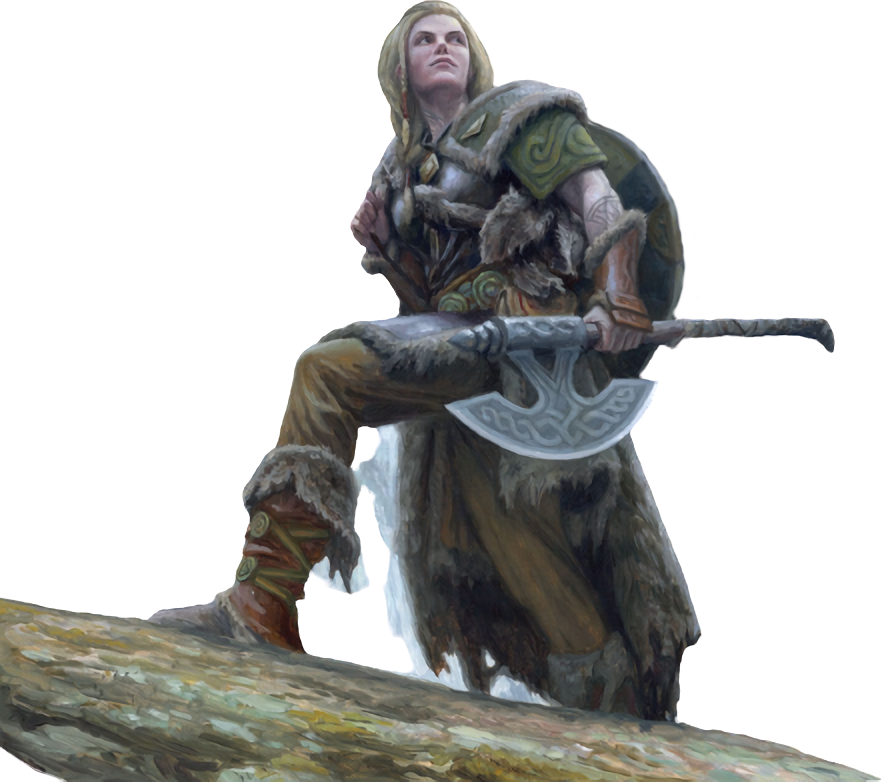
Monk
Light on their feet and heavy with their blows, monks represent a fast, mystical form of martial artistry. Three new monastic traditions focus on honing specific techniques, rather than mystical teachings or magical prowess.
Updated Class Features
The following entries detail changes and enhancements to various monk features.
New Proficiencies
You gain the additional proficiencies listed below.
Weapons. Unarmed strikes, two exotic melee weapons of your choice.
Variable Feature Ability Score
1st-level monk feature
You choose between Strength and Dexterity to act as your ability score whenever one of your monk or monastic tradition features calls for you to use Strength or Dexterity. You cannot change this choice once you make it, and must have a 13 or higher in your chosen ability score to multiclass, as well as a 13 or higher in Wisdom.
Martial Arts
1st-level monk feature
Your martial artistry uses the body and monk weapons, which are melee weapons you are proficient with that lack the two-handed or heavy properties. You gain the following benefits while you are unarmed or wielding only monk weapons, and aren't wearing armor or wielding a shield.
- You can use Dexterity instead of Strength for the attack and damage rolls of monk weapons.
- Your unarmed strikes have the light and finesse properties.
- You can roll a d4 in place of the normal damage of your monk weapons. This die changes as you gain monk levels, as shown in the Martial Arts column of the Monk table.
- Before you make an unarmed strike, you can apply one of the following properties to that attack: bypass, ensnaring, finisher, heavy, nonlethal, prone fighting, sundering, or sweeping.
- When you attack with a monk weapon, you can make one additional attack with a monk weapon as though you were engaging in two-weapon fighting, and you add your ability modifier to the damage of the additional attack. This attack uses your martial arts damage die instead of the weapon's damage die, even if the weapon's die is larger.
Martial Arts and Actions
Because you make your martial arts attacks as if you were engaging in two-weapon fighting, you cannot make an additional attacks with features such as Ki-Fueled Attack or rules such as Versatile Fighting, since all act as if you were engaging in Two-Weapon Fighting, which does not allow you to make an additional attack more than once per Attack action.
Flurry of Blows
Ki feature
Flurry of Blows works as-written, with the following changes:
- When you would make the additional attack granted by your martial arts, you can spend 1 ki point to make two attacks instead.
- These attacks can use an unarmed strike or a monk weapon, and use your Martial Arts die for damage, even if the weapon's damage die is larger.
Dedicated Weapon
2nd-level monk feature
Whenever you finish a short or long rest, you can touch one weapon, focus your ki on it, and then count that weapon as a monk weapon until you use this feature again.
The chosen weapon must meet these criteria:
- The weapon must be a simple, martial, or exotic weapon.
- You must be proficient with it.
- It must lack the heavy property.
Deflect Attack
3rd-level monk feature
You gain a new martial technique to better defend yourself. Choose one of the two options below.
Deflect Missiles: You can use your reaction to catch the projectile when you are hit by a ranged weapon attack. The damage you take is reduced by 1d10 + your Dexterity modifier + your monk level. If you reduce the damage to 0 and you have a hand free, you can catch the missile if it is small enough for you to hold in one hand. You can then spend 1 ki point to make a ranged weapon attack (range 20/60 feet) with the item you just caught, as part of the same reaction. The missile is considered a monk weapon with which you are proficient for that attack.
Disarming Counter: You can use your reaction to block when you are hit by a melee weapon attack. The damage you take is reduced by 1d10 + your Strength modifier + your monk level. If you reduce the damage to 0, you can catch the weapon if you have at least one hand free. You can then spend 1 ki point to attempt to disarm your attacker as part of the same reaction. You make the Strength (Athletics) check with advantage.
Ki-Fueled Attack
3rd-level monk feature
If you spend 1 ki point or more as part of your action on your turn, you can make one attack with an unarmed strike or a monk weapon as part of the same action as though you were engaging in two-weapon fighting. You add your ability modifier to the damage of the second attack. This attack uses your martial arts die instead of the weapon's normal damage, even if the weapon's damage die is larger.
You cannot use both this feature and your Flurry of Blows feature in the same turn.
Stillness of Mind
7th-level monk feature
You can use a bonus action to end one effect on yourself that is causing you to be charmed or frightened.
Perfect Self
20th-level monk feature
When you roll initiative and have less than your maximum number of ki points remaining, you regain 4 ki points.
Monastic Traditions
At 3rd level, a monk gains the Monastic Tradition feature, which offers you the choice of a subclass. The following additional options are available to you when making that choice: Way of the Current, Way of the Hurricane, Way of the Kensei, and Way of the Raptor.
Way of the Current
The meditative Monks of the Way of the Current are as humble and ever-moving as the trickling stream. They choose their movements with practiced deliberation, which allows them to remain untouched and serene as the torrent of battle rages around them.
Stance of the Stream
Starting at 3rd level, when you take the Dodge action a moment of calm restores your sense of inner peace, allowing you to enter a defensive stance until your next turn begins.
If a creature misses you with a melee attack while you are in your stance, you can use your reaction to make an unarmed strike against that creature.
In addition, when a Large or smaller creature moves at least 10 feet straight toward you and enters your reach while you are in this stance, you can spend 1 ki point to throw it off-balance, sending it sprawling to a point within 10 feet of you and knocking it prone.
When you reach 11th level in this class,
you can target Huge creatures with
this feature, and at 17th level
you gain the ability to target
Gargantuan creatures.
Bend Like the River
Water moves as it wishes, and is difficult to capture. Starting at 6th level, you have advantage on ability checks to avoid and escape being grappled or restrained, and can attempt to escape as a bonus action, rather than an action. You are also considered one size smaller for the purpose of squeezing through tight spaces.
In addition, you deal doubled damage to structures and objects that are not being worn or carried. The trappings of civilization are no match for a mighty flood.
Calm Surface
Starting at 11th level, the flow of your blocks makes you impossible to touch. When you enter Stance of the Stream, you can spend 3 ki points to gain both forms of your Deflect Attack feature until your stance ends. In this state, Deflect Attack does not use your reaction unless you attack with a projectile or attempt to disarm the attacker.
Spirit Maelstrom
Beginning at 17th level, you can become the epicenter of an astral whirlpool that draws energy. When you are targeted by a harmful area of effect (such as cone of cold or a behir's lightning breath) while in your stance you can use your reaction to drain the destructive power into yourself. The effect targets no objects or creatures other than you.
You suffer no damage or other effects, and store the magical power within your ki. The next time you hit with an attack before the end of your next turn, you unleash the energy. The target of your attack suffers the same effect that generated the area of effect, becoming the sole target. If the effect requires any saving throws, it automatically fails.
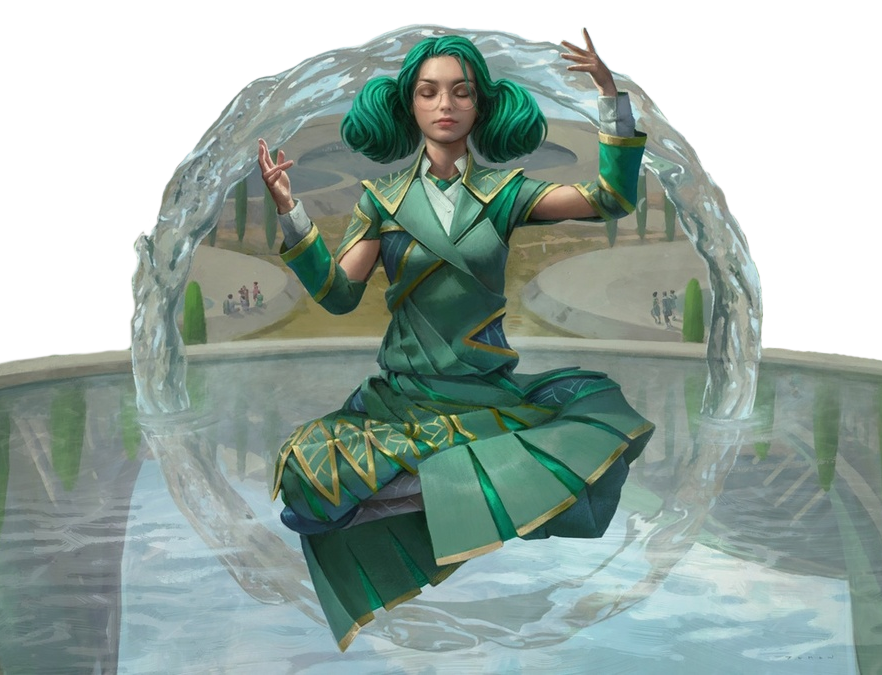
Way of the Kensei
Monks of the Way of the Kensei train relentlessly with every weapon they can find, to the point where the weapon becomes an extension of the body. A kensei sees their
arsenal the way a calligrapher or painter regards a
pen or brush—a tool to express the beauty and
precision of martial arts. That such mastery
makes a kensei a peerless warrior is but
a side effect of intense devotion,
practice, and study.
Path of the Kensei
When you choose this tradition at
3rd level, you completely integrate
weaponry into your martial arts,
and gain discipline in arts that soothe
the mind. You gain the following benefits.
Kensei Weapons. Any weapon without the heavy property is considered a monk weapon for you, including improvised weapons. When you make an attack with a monk weapon, you can add one of the following properties to the weapon for that attack: bypass, ensnaring, finisher, prone fighting, sundering, or sweeping.
Agile Parry. When you use your Deflect Attack feature while holding a monk weapon, you can reroll the die and use the higher result.
Kensei's Focus. You can use a bonus action to focus upon openings in your enemies' defenses until the end of your turn. When you do so, any target you hit with a monk weapon takes an extra 1d4 damage of the weapon's type.
Meditative Arts. You gain proficiency in tea sets, and your choice of calligrapher's supplies or painter's supplies.
One With the Blade
At 6th level, your ki flows through your weapons, granting you the following benefits.
Magic Monk Weapons. Your attacks with monk weapons count as magical for the purpose of overcoming resistance and immunity to nonmagical attacks and damage.
Deft Strike. When you hit with a monk weapon, you can spend 1 ki point to deal extra damage equal to your Martial Arts die. You can use this feature once per turn.
Sharpen the Blade
At 11th level, you can focus the flow of ki through your weapons to enhance them further. As a bonus action, you can expend up to 3 ki points to grant one monk weapon you touch a bonus to attack and damage rolls when you attack with it. The bonus equals the number of ki points you spent. This bonus lasts for 1 minute or until you use this feature again. If used on a magical weapon that already has a bonus to attack and damage rolls, you cannot increase its bonus beyond +3.
Unerring Accuracy
At 17th level, your mastery grants you extraordinary accuracy. If you miss with an attack roll using a monk weapon on your turn, you can reroll it. You can use this feature only once on each of your turns, though you can use it again on a subsequent attack on that turn if you land a critical hit.
Way of the Hurricane
A follower of the Hurricane moves faster than the eye can see, streaking from one target to the next in a dizzying blur. From a distance, their battles sound like a barrage of cannonfire, and they whip up torrential winds that send their enemies flying like leaves in a gale. The few who survive battles with its followers claim their opponent teleported behind them and struck with a storm of brutal attacks.
Whirlwind Blows
Starting at 3rd level, you specialize in attacks that hurl your body across the battlefield in the blink of an eye. Whenever you take the Dash or Disengage action, you can make an unarmed strike as part of the same action at any time during the movement granted, if any.
If the attack hits, a shockwave explodes from the point of impact. Every creature within 5 feet of the target other than you must make a Strength saving throw against your Ki save DC. On a failed save, creatures and Large or smaller objects not being worn or carried are knocked 10 feet away from the target. If a hurled target collides with another creature or object, it takes bludgeoning damage equal to your Wisdom modifier.
Rushdown
The Way of the Hurricane teaches aggression and rewards decisive action. Starting at 6th level, when a creature that you can see misses you with an attack, you can use your reaction to move up to your speed toward the attacker. If you end this movement within 5 feet of the attacker, you can also make one melee weapon attack against it.

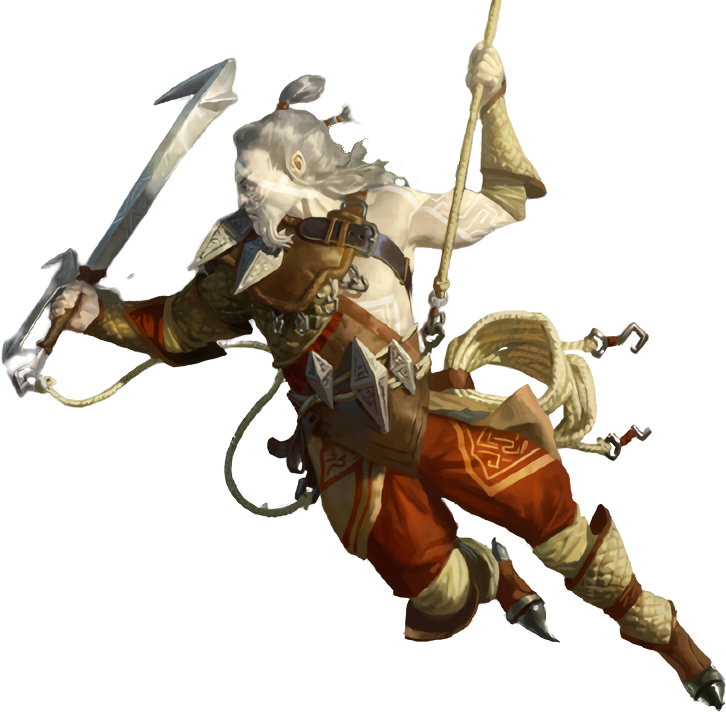
Barefoot Blitz
You sprinted over hot coals and ran marathons over sharp stones to earn your speed. Starting at 11th level, you ignore difficult terrain, and can move along ceilings using your Unarmored Movement Improvement feature.
Leap Into Action
Also at 11th level, your impatient nature, nurtured by your training, allows you to scream across the battlefield. In combat, you have a special reaction that you can take once on every creature's turn. You can only use this special reaction if you spend 2 ki to activate it, and you can't use it on the same turn that you take your normal reaction. You can use this special reaction only to use Rushdown or Slow Fall.
Galeforce
Starting at 17th level, you move faster than the eye can see, and your attacks break the sound barrier. When you move, you can expend any amount of movement to teleport that distance instead of moving normally, so long as you move into an unoccupied space that you can see.
When you teleport, you unleash a booming thunderclap that all creatures within 300 feet of you can hear. If you teleport within 5 feet of a creature and hit it with an attack, you can spend 1 ki point to deal additional thunder damage equal to your monk level.
When this attack hits, a shockwave of strong wind
buffets the area in a 300-foot-radius around the point of impact. This wind extinguishes nonmagical fires and disperses fog, clouds, and mist.

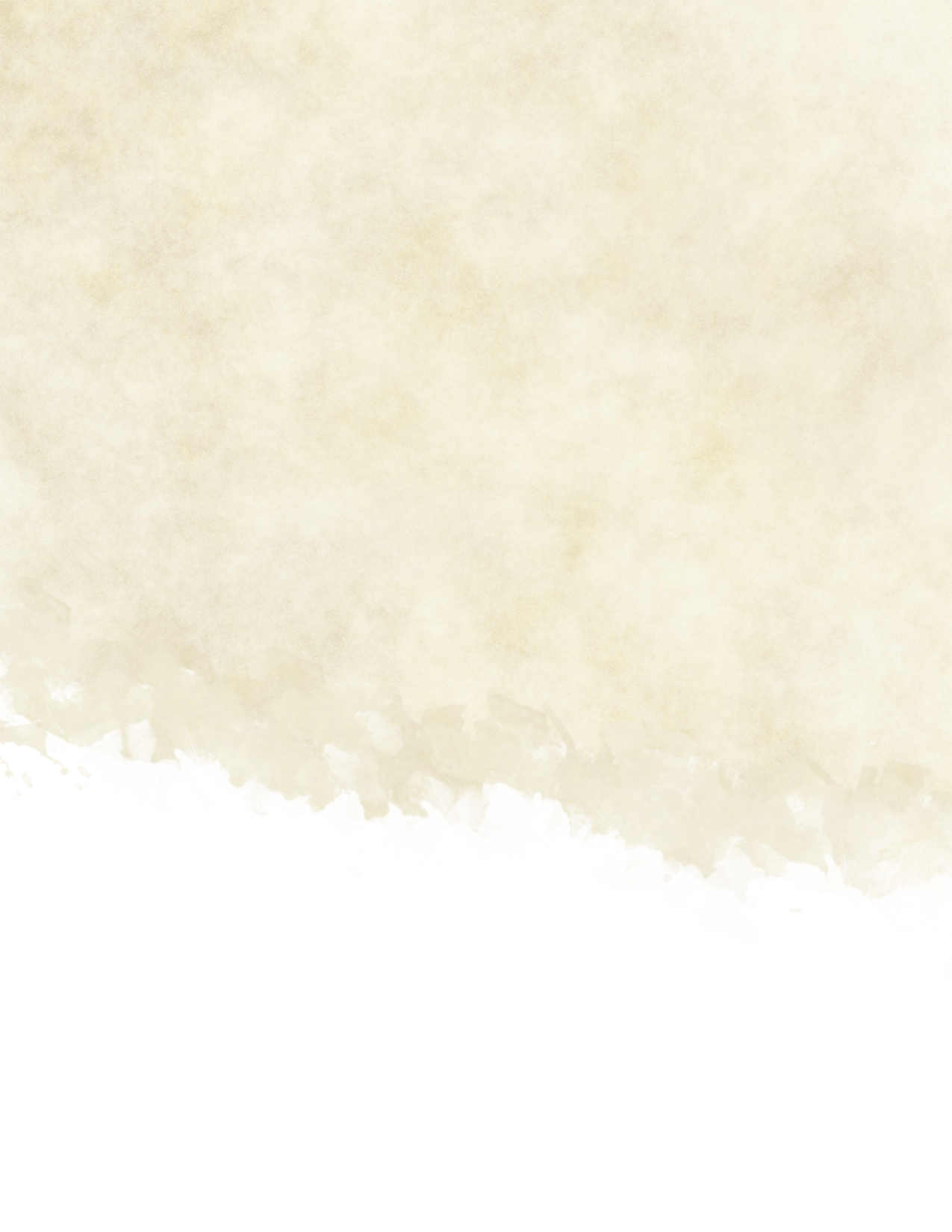
Way of the Raptor
Every martial artist wields their natural gifts to their full potential, and the Way of the Raptor's clawed monks refuse to waste their unique abilities. Invented by bestial humanoids with razor-sharp talons, practitioners of this tradition harry their enemies with rushes of vicious strikes that disembowel them in fountains of gore.
Racial Restriction
Creatures without claws or talons cannot perform the claw attacks integral to this tradition. Only aarakocra, dragonborn, kenku, leonin, lizardfolk, kobolds, shifters, and tabaxi can join the Way of the Raptor. In some settings, goblinoids, orcs, or tieflings have the necessary sharp talons, and are included.
Carnivore's Grip
When you choose this tradition at 3rd level, you can combine claws and martial arts to rip enemies to shreds. You can deal slashing damage with unarmed strikes that use your claws if you couldn't already, and your claws have the slicing property. You can inflict slicing bonus damage against any creature, and slicing bonus damage that you inflict with your claws ignores resistance and immunity to necrotic damage.
In addition, when you damage a creature with your claws, you can use a bonus action to attempt to grapple that creature, using the attack roll's total in place of a Strength (Athletics) roll. If a target escapes the grapple, it takes slashing damage equal to your Dexterity modifier.
If the target is too large for you to grapple, you can attempt climb onto it instead, as described on page 217 of the Dungeon Master's Guide. You can still use the attack roll's total in place of a Strength (Athletics) roll. In addition to the benefits granted by climbing onto a larger creature, the target's speed is halved until you let go.
Finally, you can apply poisons, oils, and other substances to your claws as you could other weapons, without harming yourself.
Prey on the Weak
Starting at 6th level, your hunter's senses allow you to pinpoint weakened and fleeing prey. You have advantage on Wisdom (Perception) checks, Wisdom (Survival) checks, and opportunity attacks against any creature that doesn't have all its hit points.
You also know which hostile creature that you can see has the fewest hit points remaining. You do not know the amount.
Pursuit
Starting at 11th level, when a creature ends its turn further away from you than it started, you can use your reaction to move up to your speed and make an unarmed strike against it. This movement does not provoke attacks of opportunity.
Death by a Thousand Cuts
At 17th level, your martial skill and connection to your primal roots tranforms you into a whirlwind of claws and fangs. Whenever you use your Flurry of Blows, you can spend an extra ki point to make number of unarmed strikes equal to your Dexterity modifier, instead of two.
If you hit with at least 3 unarmed strikes against the same creature on your turn, you can spend 1 ki point at the end of your turn to force that creature to make a Constitution saving throw. On a failed save, it gains 1 level of exhaustion.
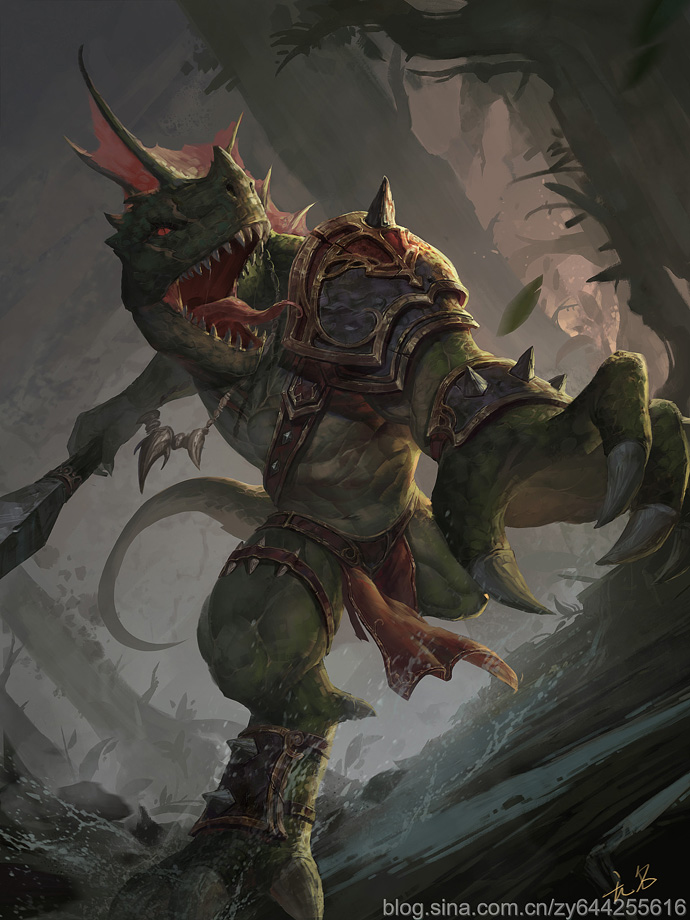
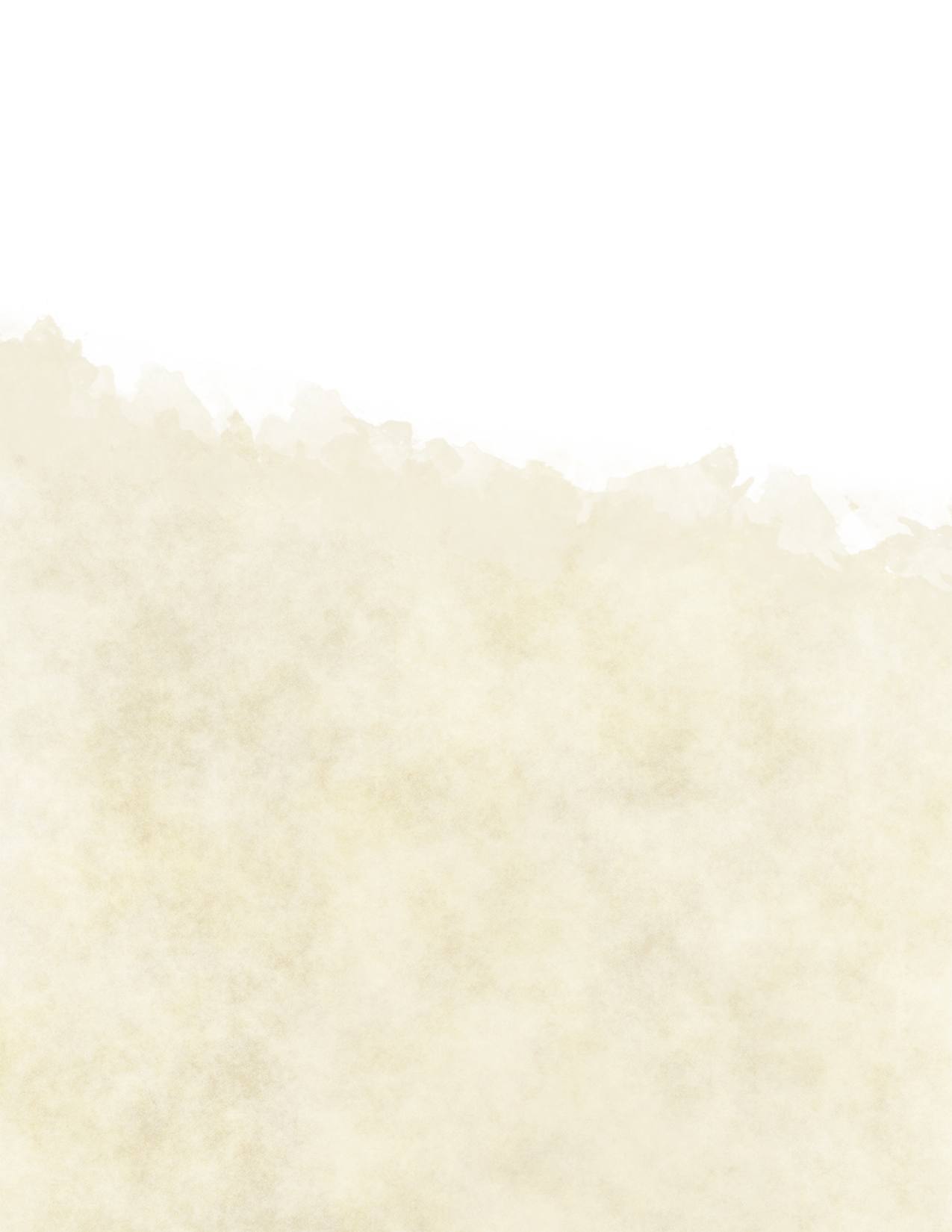
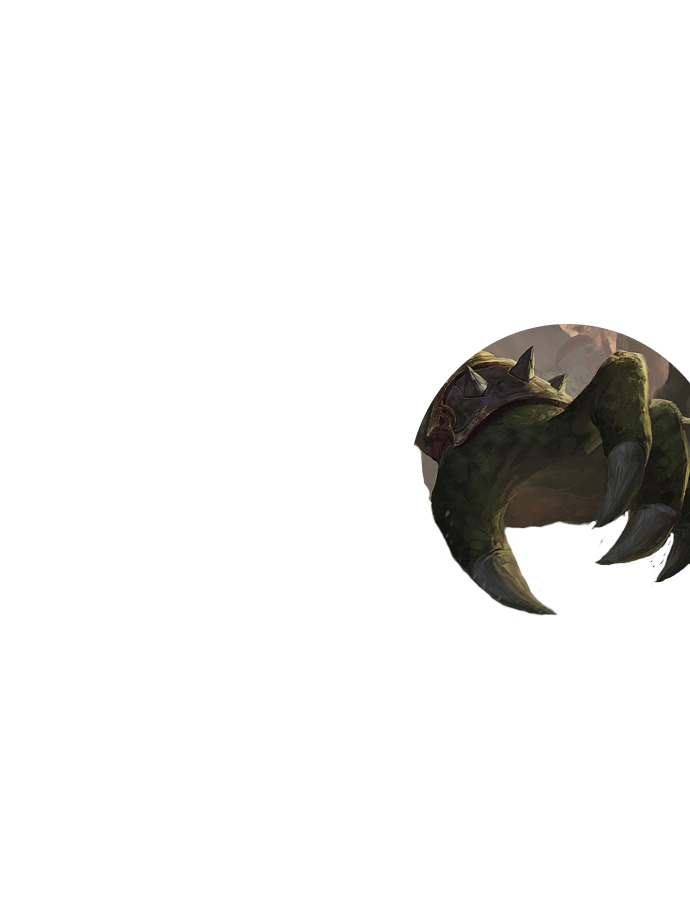
Paladin
Masters of healing, support and defensive magic, and powerful attackers, paladins are one of the most powerful and versatile classes in the game. With its focus on martial abilities and items, The Warrior's Codex makes paladins even more powerful—not that they need it. There are no paladin oath reworks, but two more oaths have been included.
Updated Class Features
The following entries detail changes and enhancements to various paladin features.
New Proficiencies
You gain the additional proficiencies listed below.
Weapons. One exotic weapon or shield.
Divine Smite
2nd-level paladin feature
Divine Smite works as-written, with the following changes:
- It can be activated with a melee or ranged weapon attack.
- The bonus damage can be added to an attack that attempts to knock out, instead of kill, an enemy, without making the attack lethal.
Improved Divine Smite
11th-level paladin feature
Improved Divine Smite works as-written, with the following changes.
- It adds its additional damage to every weapon attack, melee or ranged.
- The bonus damage can can be added to an attack that attempts to knock out, instead of kill, an enemy, without making the attack lethal.
Cleansing Touch
14th-level paladin feature
Starting at 14th level, you can use your action to expend 10 points from the pool of healing from Lay on Hands to end one spell on yourself or one willing creature that you touch.
Sacred Oaths
At 3rd level, a paladin gains the Sacred Oath feature, which offers you the choice of a subclass. The following additional options are available to you when making that choice: Oath of Festivity and Oath of Indemnity.
Oath of Festivity
The Oath of Festivity appeals to paladins with an unquenchable zest for life and the need to spread it to others. When times are darkest and gloom casts a shadow over the people, these paladins are there to bring joy back into the lives of their comrades and allies. Also called motley knights, these paladins fight in armor adorned with vibrant cloth, bright paints, and glittering stones, and act as shining beacons of genuine excitement that stand against evils that douse the world in darkness, gore, and misery.



However, they do not take disturbing or saccharine pleasure in the destruction of their foes. Nor are they tactlessly excitable in grim circumstances. Somber encouragement or a stiff drink offered without a word can restore the spirit as much as a celebration, though their oaths still call for them to exploit every tactful opportunity for feasting and revelry.
Tenets of Festivity
The tenets of this oath call its adherents to care for the well-being of others as well as themselves.
Fun. Life is a gift and every day a celebration. Create opportunities to enjoy it and alleviate boredom and misery.
Joy. Act as a persistent comfort to the hurting, and a source of happiness for those without it. Create experiences that will never be forgotten.
Plenty. No celebration is complete without abundant food and drink, and no life can be happy if it wants for basic necessities. Ensure there is comfortable excess in all things.
Hospitality. There is always room for another chair at the bar, another seat at the table, and another friend in your heart. Bring others into the fold and share with them.
Oath Spells
You gain oath spells at the paladin level listed.
| Paladin Level | Spell |
|---|---|
| 3rd | hideous laughter, setupWCX |
| 5th | lesser restoration, enthrall |
| 9th | hypnotic pattern, summon stillWCX |
| 13th | private sanctum, resilient sphere |
| 17th | greater restoration, legend lore |
Generous Host
You gain proficiency in cook's utensils or brewer's supplies.
Channel Divinity
When you take this oath at 3rd level, you gain the following two Channel Divinity options.
Rebuke the Sober. You can use your Channel Divinity to bring revelry and merriment to others, for their benefit or detriment as you choose. As an action, you force each creature of your choice within 30 feet of you that can hear you to make a Wisdom saving throw. On a failed save, the target becomes poisoned and charmed by you for 1 minute. The affected creature can repeat this saving throw at the end of each of its turns, ending the effect on itself on a success.
Lord of Plenty. You can use your Channel Divinity to multiply food supplies, to ensure everyone has enough to eat. As an action, you can enchant one serving, platter, or small table of food that you touch. The food magically replicates as it is served, able to feed a number of creatures equal to your paladin level without running out, instead of one.
Aura of Revelry
Starting at 7th level, your incorrigible excitement suppresses fatigue. While you are conscious, you and friendly creatures within 10 feet of you do not suffer the effects of the blinded, deafened, exhausted, poisoned, and unconscious conditions, unless the creature in the aura suffers the condition willingly or currently has 0 hit points.
Affected creatures are not cured of any conditions they suffer, and the effects return when a creature is no longer inside your aura.
At 18th level, the range of this aura increases to 30 feet.
Dramatic Entrance
Starting at 15th level, you gain an impeccable sense of dramatic timing that allows you to enter the fray with a thrilling buildup and explosive introduction. From the beginning of any combat until the start of your first turn, you have advantage on ability checks and saving throws, and during your first turn you can take an additional Action.
Life of the Party
At 20th level, you can use an action transform into a brilliant source of reinvigorating joy for 1 minute. In this state, you emanate deafening music, brilliant rays of multicolored light, and raise the spirits of all who come near with drunken joy. In this state, you gain the following benefits:
- You cast faerie fire within a 300-foot radius around you at the start of each of your turns, excluding creatures you choose (no action or concentration required).
- You and creatures of your choice within 60 feet of you cannot be blinded, charmed, deafened, exhausted, frightened, paralyzed, petrified, poisoned, or stunned.
- Creatures of your choice within 60 feet of you are poisoned, even if such creatures are immune to the poisoned condition.
Once you use this feature, you can't use it again until you finish a long rest.
Oath of Indemnity
The Oath of Indemnity binds paladins to help others. Its followers believe in the redress of wrongs, the repair of the ruined, and acts of prevention to ensure tragedies never happen again. They comfort broken people and repair broken property alike. Also known as gold knights and underwriters, paladins of the Oath of Indemnity are bound to repair the aftermath of catastrophe.
But these paladins are not starry-eyed cornucopias to be exploited by the opportunistic or overwhelmed by the desperate. They are generous and genuine, but the oath also requires a strict adherence to readiness and fairness. Even the most penniless refugee deserves a share, but no more. This oath calls its followers to be charitable, but also skeptical, because those who take advantage of others' kindness seek these paladins hoping to trick them.
Tenets of Indemnity
The tenets of the Oath of Indemnity demand careful examination to ensure accurate distribution of assistance.
Duty. Your first and foremost responsibility is to provide aid to the wronged and stricken. They are your only priority.
Self-sufficiency. To help others you must be able to help yourself. If you are insecure in your abilities, you crumble beneath the weight of your responsibilities.
Integrity. You hold the lives and livelihoods of others in trust. Their faith in you is invaluable, and must be honored.
Readiness. It is not enough to address the aftermath. Preparation saves more lives than retribution.
Fairness. Every injured party receives a fair share of reparations—and not a copper more. Scorn those who seek profit from your altruism, and punish them harshly.
Good as New
At 3rd level, you learn the mending cantrip, and when you cast it the damage you target can be 5 feet or smaller in any dimension, rather than 1 foot.
Oath Spells
You gain oath spells at the paladin levels listed.
| Paladin Level | Spell |
|---|---|
| 3rd | absorb elements,XGE sanctuary |
| 5th | augury, calm emotions |
| 9th | bestow curse, remove curse |
| 13th | divination, fabricate |
| 17th | creation, wall of stone |
Channel Divinity
When you take this oath at 3rd level, you gain the following Channel Divinity options.
Pooled Risk. When a creature within 30 feet of you takes damage, you can use your reaction and Channel Divinity to evenly distribute the damage between every willing creature within 30 feet of you, ignoring resistance and immunity.
If a creature has 0 hit points or the damage would reduce it to 0, it doesn't take a share of damage, and the shares are recalculated excluding it. If the distributed damage reduces every creature to 0, Pooled Risk fails.
Fair Share. As an action, you gain precise control over your healing magics, using your Channel Divinity. For the next 10 minutes, whenever a paladin spell you cast restores a creature that did not already have its maximum hit points to full health, you use any remaining hit points to regain expended points from your Lay on Hands pool.
Aura of Liability
At 7th level, an aura of accountability surrounds you. Once per turn when you or a creature within 10 feet of you takes damage, you can deal psychic damage to the attacker equal to your Charisma modifier (a minimum of 1), so long as the creature that dealt the damage is also within your aura.
At 18th level, the range of this aura increases to 30 feet.
Covered Perils
You are so experienced with the most common forms of accident that your body becomes supernaturally inured to them. Starting at 15th level, you have resistance to fire, lightning, and thunder damage. You can target a creature or object within 60 feet of you with absorb elements instead of yourself, granting the target resistance to the damage taken so long as the target took fire, lightning, or thunder damage. You choose whether you or the target of the spell gains the benefits absorb elements grants to melee attacks.
Rate Adjustment
At 20th level, as an action, you can become an avatar of rejuvenation. For 1 minute, scars, blemishes, and the ravages of time vanish and you appear in the prime of your life.
In this state, you gain the following benefits:
- Once on your turn before you make an attack roll, ability check, or saving throw, you can request collective aid. Any willing creature within 30 feet of you can roll a d20, and you use the result of your choice instead of rolling your own d20. You then add any of your modifiers, as normal.
- An enemy can take damage from Aura of Liability any number of times on a turn, rather than once.
- When a creature takes damage that activates your Aura of Liability, it gains 10 temporary hit points.
Once you use this feature, you can't use it again until you finish a long rest.
Rogue
Elusive and evasive, rogues are masters of many talents and move in many circles. Their archetypes categorize and specialize them even further. Those listed here improve two of the weakest archetypes and add several more.
Updated Class Features
The following entries detail changes and enhancements to various rogue features.
New Proficiencies
You gain the additional proficiencies listed below.
Weapons. Arming sword, bastard sword, estoc, garotte wire, longsword, parrying dagger, rondel, sabre.
Armor. Medium armor.
Shields. Buckler.
Psychic Blades
3rd-level Soulknife feature Psychic Blades works as written, with the following change: Before you make an attack with your Psychic Blade, you can apply one of the following properties to that attack: bypass, finisher, nonlethal, prone fighting, skewering, slicing, staggering, or sundering.
You can no longer make a second attack with your psychic blade as a bonus action; instead you can make a second attack as if you were engaging in two-weapon fighting.
Sneak Attack
1st-level rogue feature
Sneak Attack works as written, with the following change:
The attack that triggers Sneak Attack can use an arming sword, bastard sword, longsword, or any weapon with the finesse, light, or ranged properties.
Spellcasting Focus
3rd-level Arcane Trickster feature
You can use an arcane focus (found in Chapter 5 of the
PHB) as a focus for your wizard spells.
Use Magic Device
13th-level Thief feature
You have learned enough about the workings of magic that you can improvise the use of items not intended for you. You ignore all class, race, level, and alignment requirements on the use of magic items.
Roguish Archetypes
At 3rd level, a rogue gains the Roguish Archetype feature, which offers you the choice of a subclass. The following additional options are available to you when making that choice: the Blink, the Chameleon, the Infiltrator, the Thunderbolt, and the Windblown.
Blink
The legendary Blinks are master pickpockets with a supernatural knack for concealment. With a portal to a personal demiplane manifested in your hand, you join their ranks, able to make contraband vanish in the blink of an eye.
Palm Portal
After you choose this archetype at 3rd level, you can use an action to touch a Medium or smaller object and spirit it away into a demiplane that only you can access.
You can use a bonus action to pull a Small or smaller object that you can see 30 feet straight toward you and into your empty hand. If a creature or another object impedes its progress, it stops harmlessly and falls to the ground.
If another creature is wearing or carrying the object, you must use your action to hit the creature with an unarmed strike. to take it. You can use your Strength or Dexterity modifier for the attack roll, which you are proficient in. This attack deals no damage.
You can withdraw an object in your demiplane as an action, though you can withdraw a weapon from your demiplane as part of the attack you make with it. The demiplane holds weight no greater than your carrying capacity. At 13th and 17th levels in this class, its capacity doubles.
When you or a creature within 10 feet of you is targeted by a ranged attack, you can use your reaction to divert the projectile or spell, imposing disadvantage on the roll. If the attack misses, you pull the projectile into your demiplane.
On your next turn, you can use an action to reverse the projectile or spell, making a ranged weapon attack against a target using the original attack's range. You are proficient in the attack, and if you inflict your Sneak Attack damage, it deals force damage instead of the projectile's type.
You must have an empty hand to use any of these features.
Planar Interference
Starting at 9th level, energy leaks from your demiplane, interfering with attempts to perceive you. You can use an action to channel a portal through your empty hand and leave it open, as though you were concentrating on a spell. You can close the portal at any time, no action required.
While the portal is active, Wisdom (Perception) and Intelligence (Investigation) checks made to perceive you are made with disadvantage, and you are under the effects of the nondetection spell.
Pocket Prison
Starting at 13th level, you can target a Medium or smaller creature with the unarmed strike granted by your Palm Portal feature. If the attack hits, the target takes 2d6 force damage and is pulled into your demiplane.
While in the demiplane, it is unharmed and takes turns and actions as normal, but it is blinded and deafened until freed. The target is released at the start of your next turn, or when you pull another creature inside. When released, the target reappears in an unoccupied space within 5 feet of you.
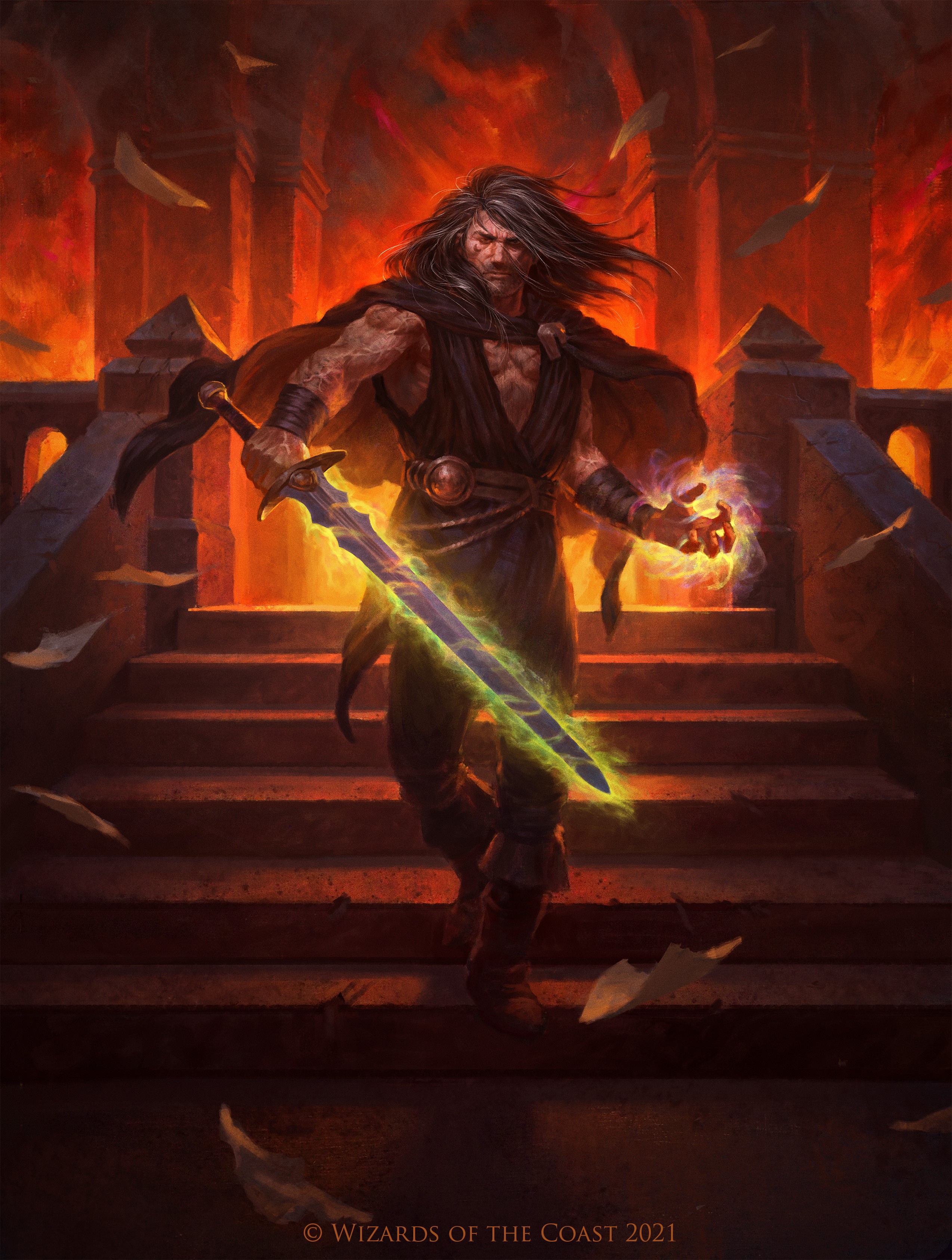
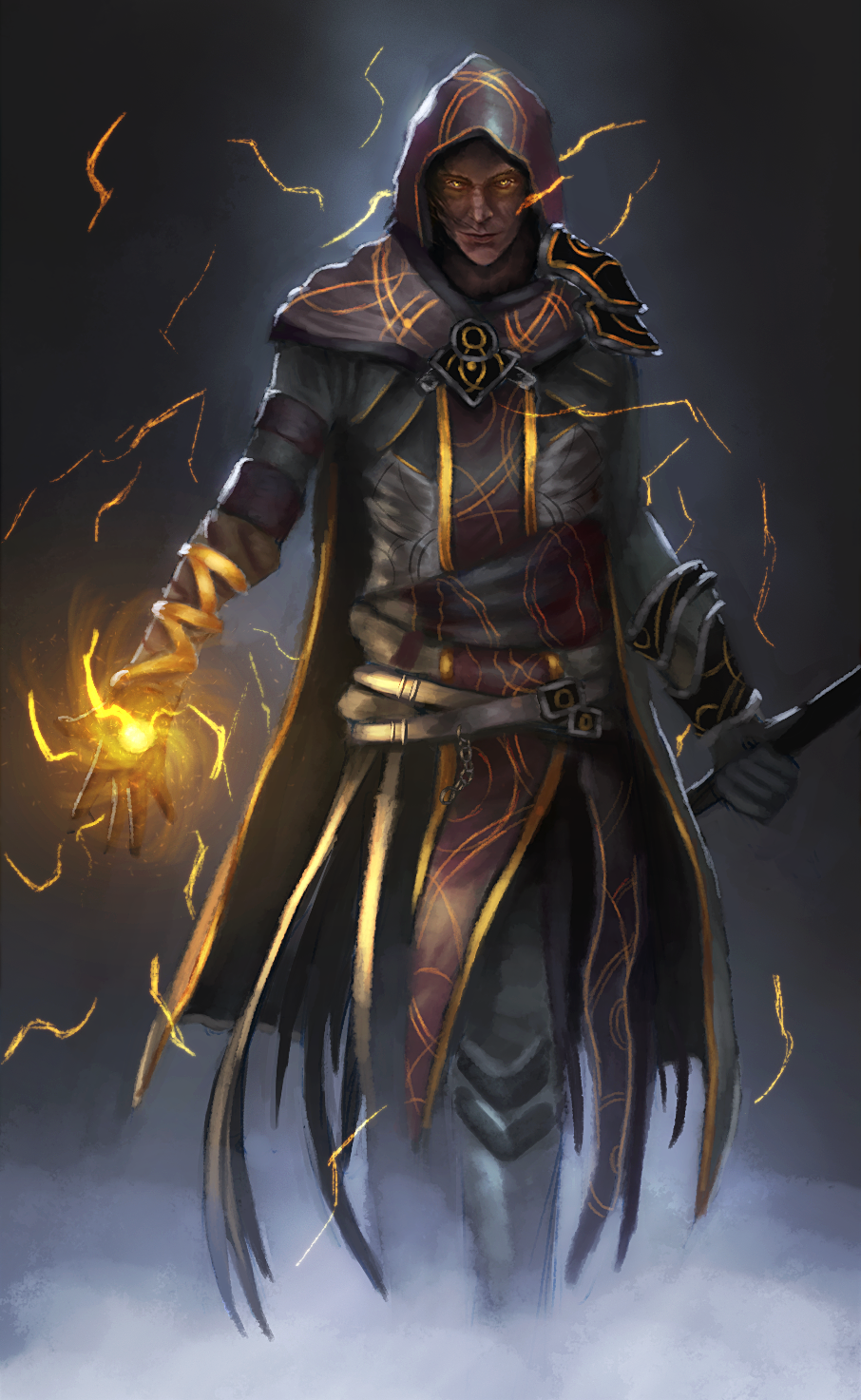


Singularity
Beginning at 17th level, you are always under the effects of the blink spell whenever you are conscious, unless you choose to suppress it.
Chameleon
Most rogues can hide, but few hide in plain sight. From mere disguises to physical changes in color, Chameleons master covert skills both mundane and magical to immerse themselves into any situation and strike at a moment's notice.
Color Change
Most rogues operate in cramped conditions far away from pursuers, but you can hide in the open. At 3rd level, you can take the Hide action even if another creature can see you by changing the color of yourself and everything you are wearing or carrying to match a Large or larger object within 5 feet. To maintain the color change, you must concentrate as though you were concentrating on a spell.
When your color is changed, you are invisible until you move more than 5 feet in any direction, attack, or take any kind of action besides the Hide action on your turn.
Starting at 13th level, you can move up to half your speed on your turn without revealing yourself.
Pinpoint Eyes
At 9th level, your eyes mimic the abilities of your reptilian namesake. You gain the following benefits:
- You gain darkvision to a range of 60 feet. If you already have darkvision, its range increases by 30 feet.
- Lightly-obscured areas don't impose disadvantage on your Perception checks that rely on sight.
- You can Search with the bonus action granted by your Cunning Action.
- You have advantage on saving throws against blindness.
At 17th level, your advanced eyesight also pierces magical illusions, granting you truesight with a range of 30 feet.
Numbing Lash
Starting at 13th level, your body produces a potent poison that you channel through your weapons. When you damage a creature with your Sneak Attack, you can force it to make a Constitution saving throw (DC 8 + your proficiency bonus + your Constitution modifier). If it fails, the creature is poisoned for 1 minute. While poisoned in this way, the target is paralyzed. The target can repeat the saving throw at the end of each of its turns, ending the poisoned condition on a success. You can use this feature a number of times equal to your Constitution modifier (a minimum of once) and regain all expended uses when you finish a long rest.
Walking Chromatophore
Beginning at 17th level, you can change your body's colors in real time. You can cast greater invisibility on yourself without using a spell slot. You can do so a number of times equal to your Constitution modifier (minimum of once), and you regain all expended uses when you finish a long rest. Constitution is your spellcasting ability for this spell.
Infiltrator
Professional killers and talented socialites, Infiltrators combine a keen eye and quick tongue with mastery of the blade. Glamorous assassins who blend in a variety of societies and situations, their skills are just as sharp and deadly as their knives.
Coup de Grâce
When you choose this archetype at 3rd level, you have advantage on initiative rolls, and on attack rolls against creatures that have not yet acted in combat. Any attack you land against a creature that is stunned, surprised, or has not yet taken a turn in combat is an automatic critical hit.
Tools of the Trade
Also at 3rd level, you have assembled invaluable skills for any assassination. You gain two of the following benefits.
- proficiency in Disguise Kits
- proficiency in Poisoner's Kits
- proficiency in Forgery Kits
- proficiency in one gaming set of your choice
- Two languages of your choice
If you take proficiency in a kit, you can use it, its components, or its products using your Cunning Action.
Analyze Target
Starting at 9th level, if you spend at least 1 minute observing or interacting with another creature outside combat, you can learn certain information about its capabilities compared to your own. The DM tells you if the creature is your equal, superior, or inferior in regard to two of the following characteristics of your choice:
- Intelligence, Wisdom, or Charisma
- Class levels (if any)
- Hit Points
- Proficiency Bonus
At the DM's discretion, you might also realize you know a piece of the creature's history or one of its personality traits.
Human Shield
At 13th level, you can dodge blows to inflict devastating collateral damage when you are caught mid-assassination. When you use your Uncanny Dodge when another creature is within 5 feet of you, you can cause the attack to hit that creature instead. So long as the creature is also within reach or range of the attack, it becomes the target instead of you, and you take no damage from the attack.
The attacker uses the same attack roll against the new creature, potentially causing the attack to miss if the new target's AC is higher than yours.
Backstabber
At 17th level, it is impossible to tell through magical means whether you are lying, and checks made to discern the truth of your statements are made with disadvantage. Magic cannot compel you to tell the truth, and your mind cannot be read through any means.
In addition, the first time you damage a creature that regards you with affection or considers you an ally, you have advantage on the attack and forgo damage dice. Instead, you deal the maximum possible amount of damage.
When you land a critical hit with your Coup de Grâce feature, the target must make a Constitution saving throw (DC 8 + your Dexterity modifier + your proficiency bonus). On a failed save, your attack deals doubled damage.
Thunderbolt
While most rogues favor stealth and subterfuge, others favor shock and awe. These aptly-named Thunderbolts, charged with elemental lightning, are one such group. As one of their number, you reject stealth and instead surge from one target to the next in a blinding display that leaves survivors dazzled and your enemies burned to death.
Electrical Charge
When you choose this archetype at 3rd level, electricity courses through your body. You can use an action to transform into a living bolt of lightning and move in any direction of your choice, expending movement as normal. In this state, opportunity attacks against you have disadvantage, you have advantage on checks against effects that grapple or restrain, and you can move through other creatures.
You return to your normal state if you stop moving or change direction. If you do so inside another creature, you are shunted to the nearest unoccupied space.
When you move through a creature or return to normal within 5 feet of one, you can attack it as part of the same action. You can inflict your Sneak Attack against the target without having advantage on the roll, though all the other rules for Sneak Attack still apply. When you inflict Sneak Attack in this way, it deals lightning damage instead of your weapon's.
Ride the Lightning
Starting at 3rd level, your attunement to electricity allows you move and speak like an elemental being. You gain the following benefits:
- You can glide through the air, borne by lingering charge. The length of your long jumps and the height of your high jumps is doubled.
- Because you stream through water like electricity, you gain a swimming speed equal to your walking speed.
- You can speak, read, and write Auran.
Flow of the Current
Starting at 9th level, you flow like lightning through conductive objects. When you touch a wet or metallic object while in your Electrical Charge form, you can move within its metal components or along its wet surface, expending movement as normal. Your Electrical Charge form shrinks to fit within the object or surface if it is smaller than you.
If you change direction when moving in this way, you maintain your Electrical Charge form. You can exit the object in any unoccupied space that you can reach with your remaining movement, and can leave as a lightning bolt that travels in any direction or in your normal form. If you run out of movement or end your turn in the object, you are ejected into the nearest available space.
Thunder Child
Starting at 13th level, the electricity that courses through your body just beneath the surface grants you the ability to move like an elemental of the storm. You have resistance to lightning, thunder, and falling damage, and can move through a space as narrow as 1 foot without squeezing. You can also enter another creature's space and stop there. Until you or that creature leave that space, any attack that misses you targets that creature instead.
Bolt from the Blue
Starting at 17th level, you can use a bonus action to teleport to any point you can see by transforming into a lightning bolt that streaks into the air and crashes down at the point with a flash and roar of thunder that all creatures within 5 miles can see and hear. All creatures and objects within 5 feet of the point take 1d6 lightning and 1d6 thunder damage.
To use this feature, both you and the point you choose must be outdoors. Anything you are wearing or carrying, including one additional creature that you are grappling, is transformed into lightning for the duration as well, but nothing that you bring with you takes damage when you land.
Windblown
Some train from youth to be fast. Others use magic to enhance their speed. And still others have an innate supernatural edge. Operating on instinct and reflex, their eternal tailwind pushes them on. These are the Windblown, who favor hit-and-run tactics with the wind at their back.
Fleet of Foot
Starting at 3rd level, you move quickest when fleeing from enemies. Your speed increases by 5 feet. When you Disengage, you can attempt to shove one creature within your reach as part of the same action.
You can also use your Dexterity modifier, instead of your Strength modifier, when you make an Athletics check to shove a creature.
When you reach 13th level in this class, you can also Toss one creature within your reach when you Disengage even if you haven't grappled that creature, and can use your Dexterity modifier instead of Strength when you make the check to Toss it and calculate the distance it is thrown.
Wind Beneath My Wings
Starting at 9th level, the climate always favors you. As long as you aren't inside or underground, you have advantage on Survival checks made to navigate, and your speed increases by 10 feet. You and creatures with you cannot be slowed by poor weather during travel, though other factors may still reduce your pace. In strong winds, you have advantage on ranged attack rolls and Wisdom (Perception) checks that rely on hearing, rather than disadvantage.
Airburst
Beginning at 13th level, the wind shelters you against projectiles. When you are targeted by a ranged attack, you can use your reaction to inflict disadvantage on it and any other ranged attacks made against you until the start of your next turn. You can use this feature a number of times equal to your Wisdom modifier (a minimum of once), and regain any expended uses when you finish a long rest.
Whirlwind Sprint
Starting at 17th level, tailwinds thrust you forward in combat and allow you to make a single deadly strike. You gain a new action. When you take it, each creature in a line 30 feet long and 15 feet wide extending from you in a direction of your choice must make a Dexterity saving throw (DC= 8 + your proficiency bonus + your Dexterity modifier). On a failed save a creature takes 10d6 force damage, or half as much on a success. You can take this action once per short or long rest.
You also gain flight in limited bursts. You have a flying speed equal to your walking speed; you fall if you end your turn in the air and nothing else is holding you aloft.
Dashing and Flight
Your flight continues until the end of your turn. You can fly up to your speed, attack, and Dash with your Cunning Action without falling, since your turn has not yet ended. You can also Dash with both your Action and your Cunning Action, flying thrice your speed in a single turn.
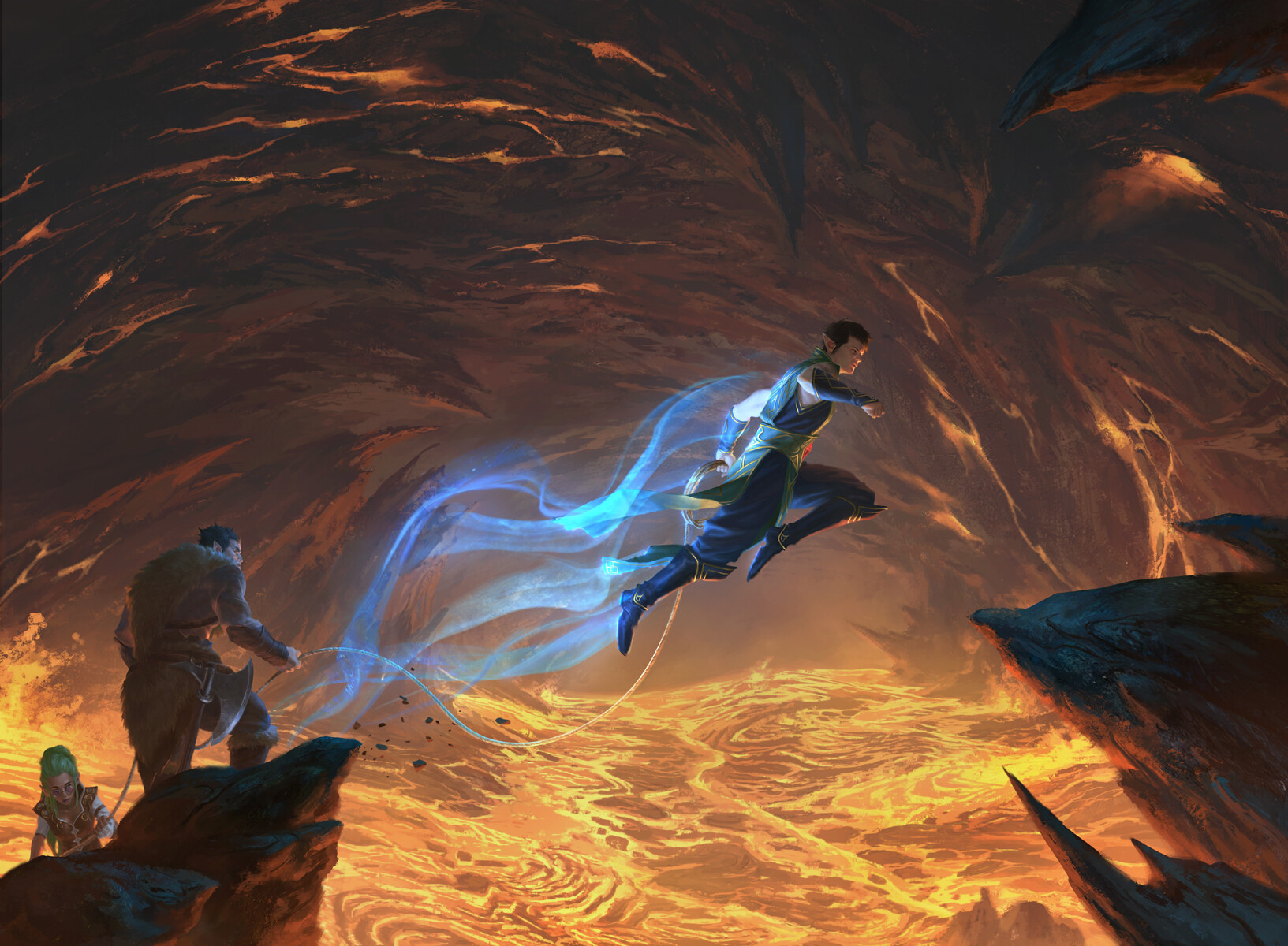

Sorcerer
Many have tried to create a sorcerer with martial powers. Instead, this supplement creates a sorcerer with powers that fit into a book filled with steel and strategy.
Sorcerous Origins
At 1st level, a sorcerer gains the Sorcerous Origin feature, which offers you a choice of a subclass. The following additional option is available to you when making that choice: the Iron Core.
Iron Core
Your blood flows with a subset of elemental earth refined by millenia of industry. Perhaps an ancestor survived immersion in molten adamantine, or your people have survived underground for generations, surrounded by veins of ore. Like all Iron Cores, the kernel of magical metal within you manifests in your spells, which appears as heavy plates, chains, and other weapons formed from your essence.
Iron Core Spells
You learn additional spells when you reach certain levels in this class, as shown on the Iron Core Spells table. Each of these spells counts as a sorcerer spell for you, but it doesn't count against the number of sorcerer spells you know.
When you gain a sorcerer level, you can replace one spell you gained from this feature with another spell of the same level. The new spell must be an abjuration or transmutation spell from the sorcerer, warlock, or wizard spell list.
| Level | Spells |
|---|---|
| 1st | sanctuary, shield, sword burstTCE |
| 3rd | heat metal, spike growth |
| 5th | elemental weapon, protection from energy |
| 7th | death ward, fabricate |
| 9th | hold monster, circle of power |
In addition, use the table below to determine which metal forms your core. While it has no mechanical effect on your magic, most of your magical effects and creations appear as if they were made of the selected material.
| d8 | Metal |
|---|---|
| 1 | Iron |
| 2 | Bronze |
| 3 | Silver |
| 4 | Gold |
| d8 | Metal |
|---|---|
| 5 | Platinum |
| 6 | Mercury |
| 7 | Bismuth |
| 8 | Adamantine |
Armor Affinity
At 1st level, you gain proficiency in heavy armor, and wearing it does not reduce your speed. Damage reduction granted by armor you wear applies to all bludgeoning, piercing, and slashing damage, not just nonmagical, even if the armor you wear isn't magical.
Iron Guard
Also at 1st level, you can use your action to form a ward of magical metal around yourself or one creature you can see within 30 feet of you, which remains for as long as your are conscious or until you remove the guard. Any bludgeoning, piercing, or slashing damage dealt to a guarded creature is reduced by an amount equal to your proficiency bonus.
You can use your bonus action to move the guard to another creature within 30 feet of you, and can remove it freely, requiring no action. You can guard one creature with this feature, or yourself. At 11th level in this class you have two guards, and three at 14th level.
Shape the Steel
Starting at 6th level, even the firmest metal bends for you. Over the course of 1 minute, you can slowly alter the form of a Huge or smaller nonmagical metal object you touch that is not being worn or carried by another creature. If you stop touching the object before the minute is up, it reverts to its original form.
You cannot create or destroy material, only reshape it, and cannot change the object's temperature. You can't use this feature to create items that ordinarily require a high degree of craftsmanship, such as jewelry, weapons, or armor, unless you have proficiency with the tools used to craft such objects. Finally, this feature cannot be used to deal damage or harm another creature.
Core Infusion
At 14th level you gain the ability to absorb metal to bolster your allies. During a short or long rest, you can absorb 1 cubic foot of metal, which destroys the material and infuses up to 6 willing creatures within 60 feet of you.
Until it completes a long rest, an infused creature's current and maximum hit points increase by 15, and it gains a +1 bonus to its armor class.
You can conduct this ritual once, and must finish a long rest before you do so again.
Arcane Conduction
Beginning at 18th level, choose one of the following damage types when you apply your Iron Guard to a creature: cold, fire, force, lightning, necrotic, radiant, or thunder. The guarded creature has resistance to that damage type, and when it takes damage of the chosen type, you or the guarded creature can use a reaction to channel the energy through the metal. The guarded creature gains temporary hit points equal to the damage taken, which last for 1 hour or until you use this feature again.
If the guarded creature has those temporary hit points and hits with an attack, it can choose to remove all remaining temporary hit points and discharge the energy, adding damage to the attack equal to your sorcerer level, of the type that triggered this feature.
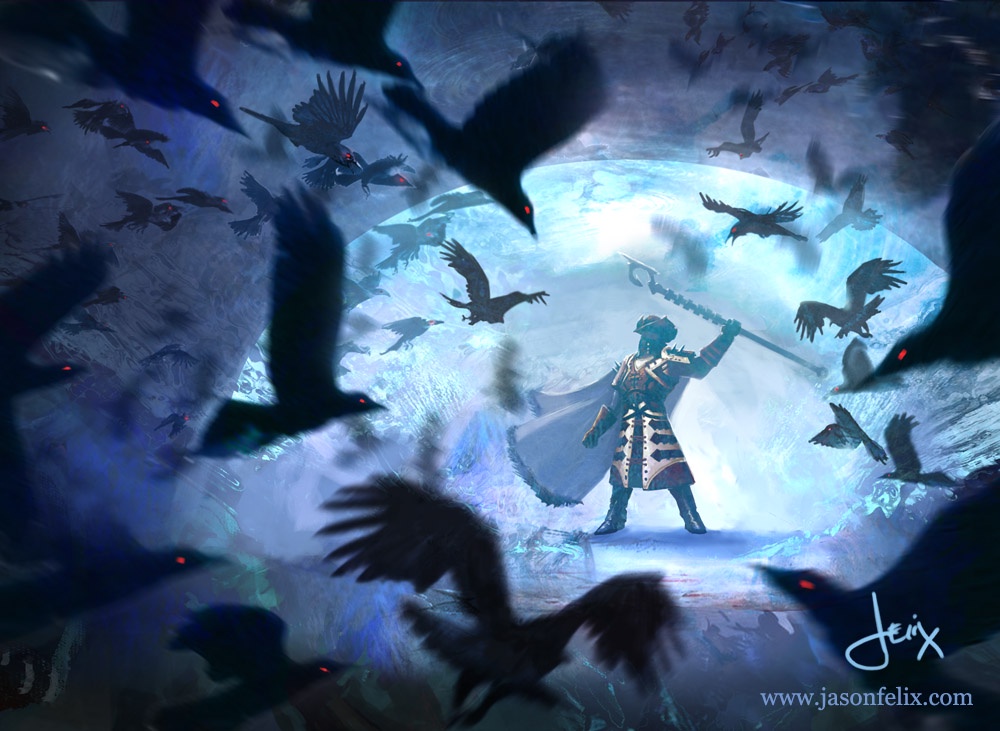

Warlock
Warlocks' combat-oriented Pact of the Blade (which this section empowers) means that many warlocks benefit from the contents of this book. In addition to mechanical changes to the weakest pact boon, this section also adds a thematic new patron.
Updated Class Features
The following entries detail changes and enhancements to various warlock features.
Variable Feature Ability Score
1st-level warlock feature
You choose between Charisma and Intelligence to act as your ability score when your warlock spellcasting or one of your warlock or patron features calls for you to use Charisma. You cannot change this choice once you make it. You must have a 13 or higher in your chosen ability score to multiclass.
Hex
2nd-level warlock feature
You learn hex at 2nd level in this class, which does not count against your number of spells known. You can cast hex a number of times equal to your spellcasting ability modifier (a minimum of 1) without expending a spell slot, and regain all expended uses at the end of a short or long rest.
When you cast hex in this way its duration does not increase, it cannot be transferred to a new target. If you target a second creature with hex, the spell ends on the first target. In addition, when cast in this way, hex no longer requires concentration, and can be cast in the same turn as another spell of first level or higher.
If you choose, you can still use a warlock spell slot to cast hex normally, following the normal rules for casting a spell as a bonus action and all of the spell's normal mechanics that would be changed above. Casting hex with a spell slot does not expend a use of this feature.
Pact Boon
3rd-level warlock feature
Pact of the Blade
This pact boon works as written, with the following changes:
- You gain proficiency in medium armor, shields, and martial weapons.
- You create your pact weapon, which is any melee weapon with which you are proficient, as a bonus action.
- You can use your Charisma modifier for attack and damage rolls with your pact weapon.
- If the weapon has the heavy property or a Strength requirement, you can attack as though you meet the requirements to use it without a penalty. Limitations imposed by other properties, such as loading or gunpowder, still apply.
- At 5th level in this class, you can attack twice, instead of once, when you take the Attack action on your turn.
Improved Pact Weapon
Eldritch Invocation
Prerequisite: 5th level, Pact of the Blade
You can use a pact weapon as a focus for your warlock spells. Your pact weapon also gains a +1 bonus to its attack and damage rolls, unless it is a magic weapon that already has a bonus to those rolls. Finally, the weapon you conjure can be any of the simple, martial, or exotic options in Part 2, or any shield. You are proficient in a pact weapon when you summon it if you weren't already. You summon ranged weapons loaded with a single piece of the cheapest type of ammunition used for that weapon.
Otherworldly Patrons
At 1st level, a warlock gains the Otherworldly Patron feature, which offers you the choice of a subclass. The following option is available to you when making that choice: the Battlefield.
The Battlefield
Your patron is not a living thing, but the secret magics written in the muddy carnage of no-man's land. A long-suffering veteran of futile campaigns, the horrors you've witnessed twist into eldritch knowledge in your broken mind.
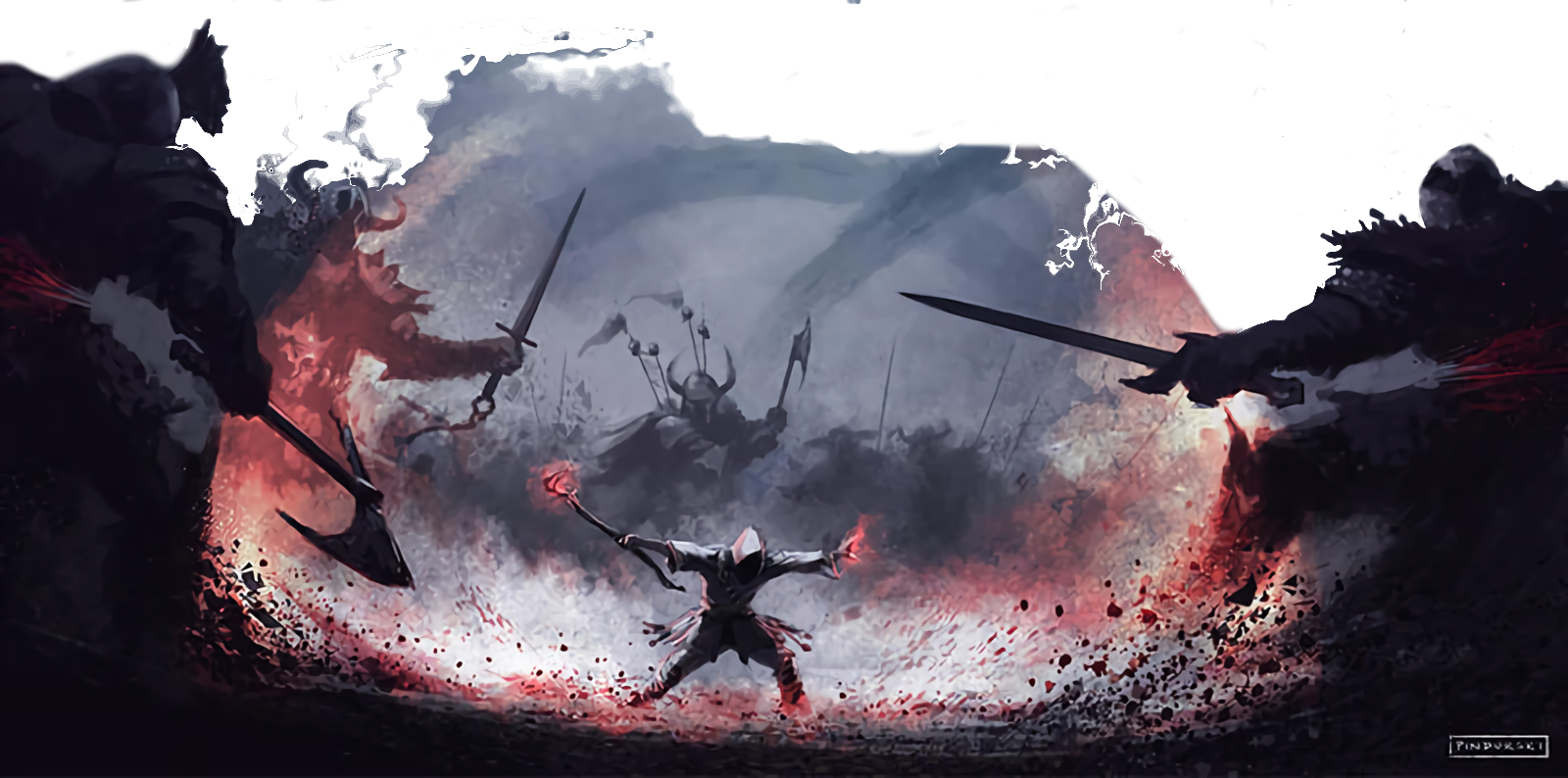
You might be one soldier among thousands in a grinding war of industrial scale, a member of the legions that patrol the iron-shod cubes of Acheron, an officer under the General of Gehanna, or a peasant draftee struggling to survive in a war of powers you never imagined.
Regardless of your origins, your haunted eyes hide an implacable will forged by the grim reality of slaughter. The Battlefield's power allows you to rebuild your broken body and endlessly rise again to fuel the eternal machine of war.
Expanded Spell List
The Battlefield lets you choose from an expanded list of spells when you learn a warlock spell. The following spells are added to the warlock spell list for you.
Battlefield Expanded Spells
| Spell Level | Spells |
|---|---|
| 1st | alarm, entangle |
| 2nd | locate object, spiritual weapon |
| 3rd | spirit guardians, stinking cloud |
| 4th | resilient sphere, phantasmal killer |
| 5th | conjure volley, conjure cannonWCX |
Paint the Target
Starting at 1st level, you gain the ability to direct your allies to weaknesses in the enemy line. As an action, choose one creature you can see within 60 feet of you. That target is cursed by you until it is damaged by a creature hostile to it, or until the end of your next turn.
If an allied creature can see both you and the cursed target, that ally has advantage on attack rolls against it. The first time a creature makes an attack roll with this advantage hits the cursed creature with an attack, that attack is a critical hit, and the curse ends.
When you would deal necrotic damage with the hex spell, you can choose to forgo dealing necrotic damage and instead choose to curse the creature you would have damaged.
You can apply this curse a number of times equal to your Charisma modifier (a minimum of once). You regain all expended uses when you finish a long rest.
Eternal Soldier
Starting at 6th level, your body and soul are marked for endless battle. You can use an action to touch any severed body part to the place it was removed and reattach it to your body. You can use the body parts of a creature of the same type and size as you you in place of your own.
In addition, the cost of material components for a spell that restores you to life are halved, and any spell that would animate your corpse as an undead can instead restore you to life as though you were targeted by the resurrection spell.
Numbed Command
Starting at 10th level, your deadened soul inures you to the horrors of battle. For 1 minute after you curse a creature with your Paint the Target feature, that creature cannot frighten you, and illusions that it creates have no effect on you.
In addition, when damage from that creature forces you to make a saving throw to maintain concentration, you make the save with advantage.
Grit and Glory
Starting at 14th level, your bitter resolve lets you take charge in the most dire situations. When you expend your last warlock spell slot (as granted by your Pact Magic feature), you can use your reaction to gain a number of temporary hit points equal to your warlock level multiplied by the number of friendly creatures within 120 feet of you. This multiplier cannot exceed your Charisma modifier.
In addition, creatures of your choice within 120 feet of you with 0 hit points regain a number of hit points equal to your warlock level, and you can curse any number of creatures within 120 feet of you with your Paint the Target feature, without expending a use of the feature.
Once you use this feature, you can't do so again until you finish a long rest.
Eldritch Invocations
When you choose eldritch invocations, you have access to these additional options.
Blockade Runner
Prerequisite: 15th level, Pact of the Chain
If you can see through your familiar's senses, you can use an action and expend a warlock spell slot to switch your positions, teleporting it into your space, and you into its.
Dead Soldiers' Waltz
Prerequisite: 12th level, Pact of the Blade
You can use an action and expend a warlock spell slot to summon a copy of your pact weapon in the grasp of corpses you can see, which attack targets of your choice within their reach or range. The corpses' attack and damage rolls use your pact weapon's bonuses to hit and damage, rather than those the corpse used in life. The corpses ignore disadvantage imposed by being prone or blinded. Whether the attacks hit or miss, the copies of your pact weapon immediately vanish afterward.
The number of corpses you affect cannot exceed 1 + the level of the slot you expend.
Resounding Blast
Prerequisite: eldritch blast cantrip
You can choose to deal thunder damage instead of force when you hit with eldritch blast. When you do so, the target is deafened for 1 minute.
You can also target objects with eldritch blast, and when you deal thunder damage against an object with it, the damage you deal is doubled.
Minesweeper's Map
Prerequisite: 5th level, Pact of the Tome
So long as you have your Book of Shadows open in your hand, you can cast find traps at will, without expending a spell slot. When you cast find traps in this way, it also locates natural hazards, such as hidden sinkholes and structural weaknesses in buildings and structures, as if they were manufactured traps.
Finally, the spell creates a 15-foot sphere of shimmering translucent force around the dangers it detects, marking their location for 1 minute.
Sanitize Supplies
Prequisite: Pact of the Talisman
You can cast purify food and drink at will, without expending a spell slot, so long as you touch your talisman to a container of food or drink when you do so.
Wizard
Another odd inclusion, even the scholarly wizard has a place in this document. With no changes necessary for its martial subclasses—the Bladesinger Arcane Tradition received an update in an official release—WCX instead adds one new tradition devoted to survival and mobility, so wizards can better support and reinforce their slower-moving allies.
Updated Class Features
The following entries detail changes and enhancements to various wizard features.
New Proficiencies
You gain the additional proficiencies listed below.
Tools. Calligrapher's Supplies.
Arcane Traditions
At 2nd level, a wizard gains the Arcane Tradition feature, which offers you the choice of a subclass. The following additional option is available to you when making that choice: Cavalry.
Cavalry
Magic can slaughter dozens and turn the tide of battle in an instant, and wizards' value and frailty make them prime targets. Students of the Cavalry tradition use equestrian skills and practical knowledge to survive the chaos of combat.
The combination of ranged magic and incredible mobility keeps these practioners out of harms' way, because when a single spell can end a battle, ensuring your mages can survive and position themselves where they're needes is invaluable. Such positioning is where Cavalry wizards excel.
Mounted Mage
When you select this school at 2nd level, you learn a ritual that summons a magical consciousness bound to you, which takes the form of a noble steed of your choice when summoned. This ritual takes 1 hour and expends a spell slot of 1st level or higher. The mount assumes the shape of any beast of CR 1/2 or lower without a flying speed, of a size that can serve as a mount for you.
Your mount vanishes if killed or if you summon another mount. You summon your mount with full hit points, but it only regains features that are restored after a short or long rest when you complete the appropriate rest. It obeys your verbal commands and can only take the Dash, Disengage, and Dodge actions, whether you're mounted or not.
You also gain proficiency in Animal Handling.
As you gain levels in this class, your mount can take on more powerful forms. You can summon any beast without a flying speed of appropriate size to act as a mount of the same Challenge Rating as the creatures listed in the table below. You can also summon the specific examples listed in the table, even though most are not beasts. After reaching 8th level in this class, the restriction on flying mounts is removed.
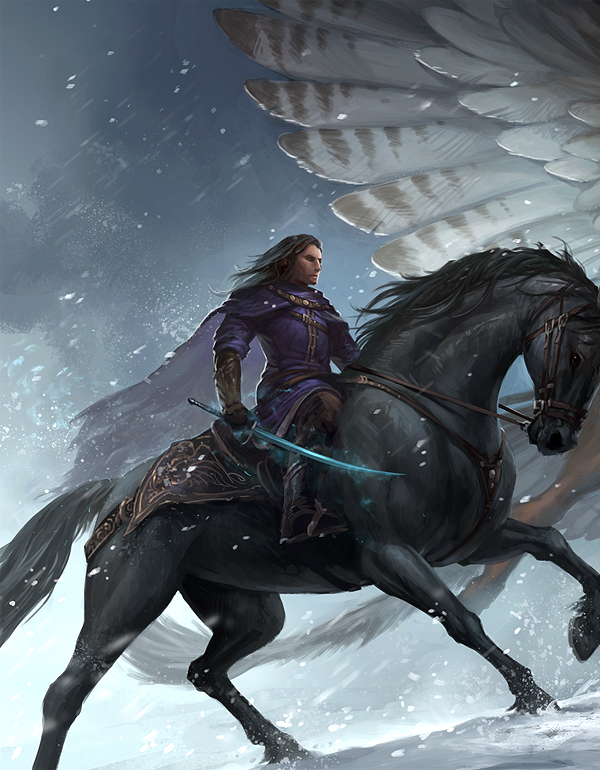

| Wizard Level | Mounts |
|---|---|
| 4th | dire wolf, giant spider |
| 6th | giant boar, warhorseWCX |
| 8th | pegasus, griffon |
| 9th | nightmare, owlbear |
| 12th | akhlutWCX, chuul |
| 15th | shambling mound, unicorn |
| 18th | mammoth, wyvern |
If you summon a mount with a CR lower than the level of the spell slot used, it gains two additional hit dice for every spell slot above the level required to summon it.
Veteran's Tricks
Starting at 6th level, your experience with battlefield survival at any cost grants you an improvisational trick based on a school you favor. When you finish a long rest, you can replace the trick you know with a different one, changing your tactics to suit your situation.
Abjuration—Improvised Ward. When you cast a spell of 1st level or higher, your AC and the AC of your mount increase by 1 until the start of your next turn.
Conjuration—Back in the Saddle. You can use a bonus action to dismiss your mount to a pocket dimension where it awaits your summons. You can use another bonus action to conjure it at any point within 30 feet of you, including directly beneath you (which allows you to instantly mount it, without expending movement).
Divination—Incoming! When you cast a spell of 1st level or higher, you and your mount have advantage on the next Dexterity saving throw you make before your next turn starts.
Enchantment—Shock Tactics. One creature you damage with a spell of 1st level or higher has disadvantage on the first attack it makes against you or you mount before the end of your next turn.
Evocation—Elemental Endurance. You and your mount gain resistance to the damage type dealt by one of your wizard cantrips of your choice, so long as the type is not bludgeoning, piercing, or slashing.
Illusion—Ride in the Night. Hushing magic quiets your footsteps. You and your mount move silently, gaining advantage on Dexterity (Stealth) checks.
Necromancy—Tireless Rider. You and your mount draw on the endurance of undeath. Neither of you need to eat, drink, breathe, or sleep. When you take a long rest, you spend four hours in an inactive, motionless state. You appear inert, but remain conscious, and can see and hear normally.
Transmutation—Chemical Boost. Your speed, and the speed of your mount, increases by 10 feet.
Rearing Hooves
Beginning at 10th level, you can use your bonus action to allow your mount to take an action, ignoring the limits normally imposed on a controlled mount. You take the rest of your turn as normal. If your mount has Legendary Actions, it still cannot use them.
Bonded Souls
Starting at 14th level, whenever you cast a spell that targets yourself, the spell targets the mount as well. When you target your mount with a spell, the spell also targets you.
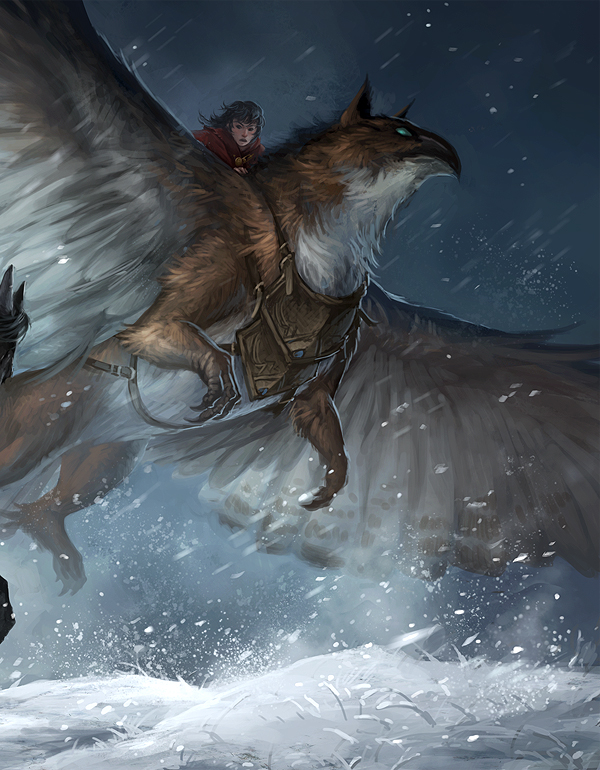

PART III
New Weapons
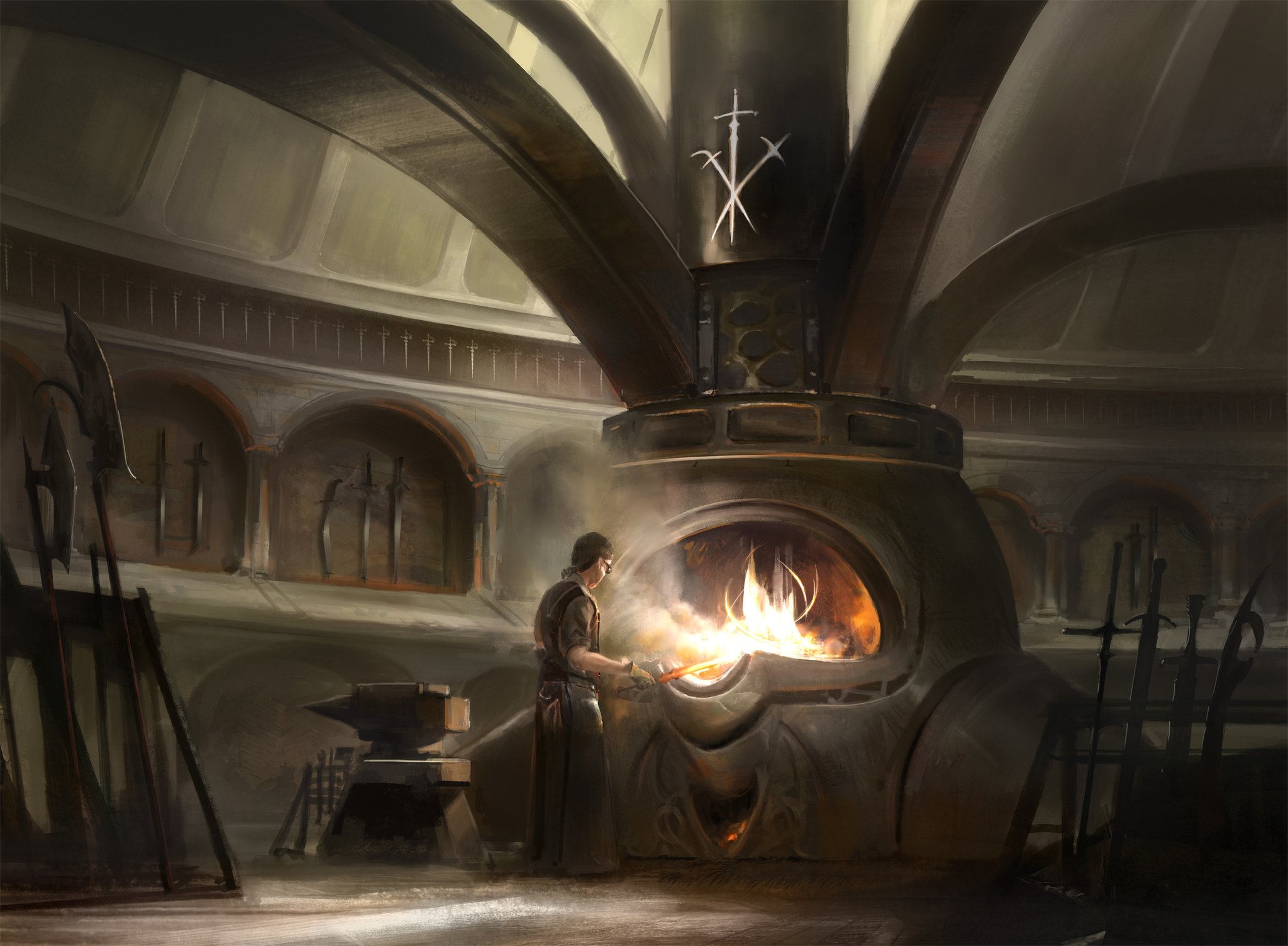
Weapons Remastered
This chapter massively expands the original Weapons Remastered originally created by an anonymous author, which can be found here. Both exist to diversify weapons' use and function in combat. This chapter is not an attempt to increase the power of weapons or the martial characters that use them. Instead, it attempts to emulate the variety of options and effects found in their cantrip counterparts, and make martial combat less boring and weapon choice more significant. It also hopes to imitate weapons' uses and specialties in real life—with significant abstraction.
While the properties included here do increase power levels, the ultimate goal is diversification, and the overall increase is minimal. It also attempts to remove the universal popularity of some weapons (such as the rapier for Dexterity-based fighters) in situations where it might be more realistic to use another weapon, and instead make all weapons viable.
To make this possible, each weapon has a combination of several unique properties, which add new functions, passive bonuses, or abilities in combat. Many entirely new weapons join the existing roster, including some weapons of great tactical value in historical battlefields which 5e neglected, as well as some exotic or exciting options.
Ideally, players will intuit and remember properties easily. Properties, in most cases, adhere to the design philosophy of 5e—most are relatively simple or expand mechanics that already existed. Ultimately, using this section should have few negatives, for massive gains in fun factor.
In some cases, these properties overlap with feats, a difficult problem. On one hand, martial characters' progression encourages them to take feats—they are designed with feats in mind. On the other, the removal of "feat taxes" (feats necessary to make builds viable) is an admirable goal. As a result, properties that overlap with feats are designed as smaller bonuses that can be combined with their corresponding feat. Since said feats provide much larger bonuses, and so remain the superior option. As a specialization with a significant opportunity cost, the reward should be large. This remains the case.
Ultimately, this section gives martial players tactical options and nuance that characters without magic or superiority dice sorely lacked.
To those unused to these options, this is sudden, glaring change. Its scope daunts newcoming players and Dungeon Masters alike. However, spellcasters already track far more options and resources, and they operate beautifully. There is no reason martials can't do the same.
As time passes, most warriors will find their favorites, memorize those options, and remain loyal to their preferred style. The key word is style. No longer is a longsword interchangeable with a battleaxe, or a spear with a javelin. Aesthetic choices have real meaning, and differentiate unique player characters even more. This mechanical and stylistic diversity is the ultimate benefit of tabletop roleplay over other games, and this remaster helps that aspect shine.
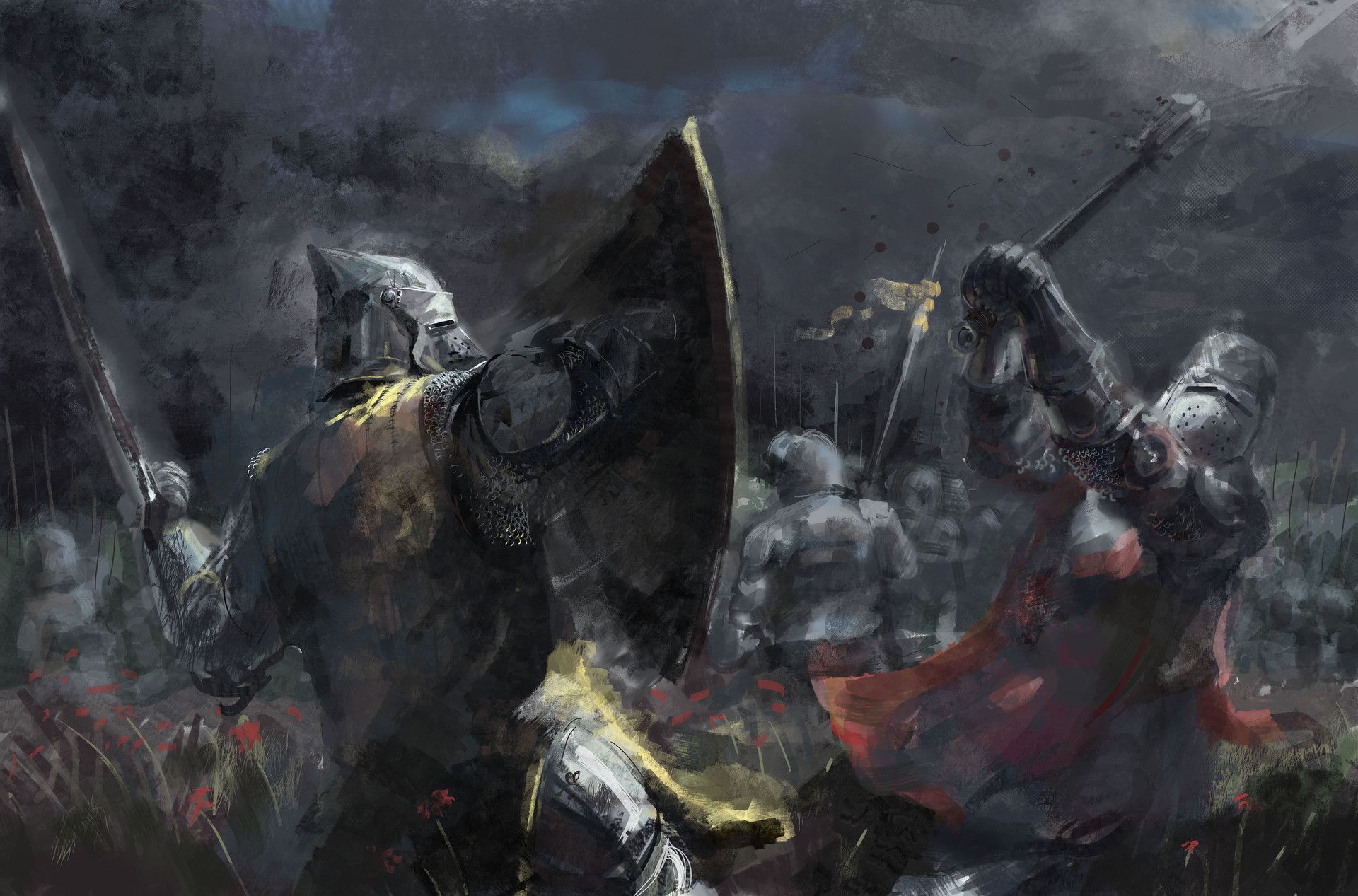

Weapon Properties
This section describes every property that The Warrior's Codex applies to weapons. When a weapon is used to attack in a way that differs from its intended use (such as striking an enemy with the butt of a gun), the weapon has no properties.
Ammunition
These weapons can be used to make a ranged attack, provided you have ammunition to fire from the weapon. Each time you attack, you expend one piece of ammunition.
Drawing the ammunition from a quiver, case, or other container is part of the attack you make with this weapon (you need a free hand to load a one-handed weapon). At the end of a battle, you can recover half your expended ammunition by taking 1 minute to search the battlefield.
Bypass
These flexible weapons wrap around shields and other personal defenses. When you attack with a bypass weapon, you ignore the AC bonus granted by shields and features that parry or deflect attacks, as well as half cover created by objects and other creatures.
Cavalry
These weapons are well-suited to combat on the move. If you damage a creature with a cavalry weapon immediately after moving 15 feet straight toward it while mounted, you roll two additional damage dice and add them to the total.
Ensnaring
These weapons feature chains, hooks, and other entangling components. When you hit with an ensnaring weapon, you can use your bonus action to attempt to shove the target prone, pull or shove it into a space within 5 feet of you, or disarm it (DMG page 271). If your roll requires you to use your Strength (Athletics) bonus, you can add your weapon's attack bonus instead.
When you attempt to disarm a creature using a weapon with the ensnaring property, you do not have disadvantage on the roll if the target is larger than you.
Finesse
These precise weapons lend themselves to dextrous combat. When you attack with a finesse weapon, you use your choice of your Strength or Dexterity modifier for the attack and damage rolls. You must use the same modifier for both rolls.
Finisher
These brutal weapons are well-suited to executing enemies at your mercy. When you damage a prone creature with a weapon with the finisher property, you roll the weapon's damage dice, as listed on the table, an additional time.
Gunpowder
These weapons utilize volatile powder as a propellant to fire projectiles or explode. They cannot be used underwater, and ammunition from these weapons cannot be reused. When you attack, the weapon flashes, expels smoke, and creates a bang that can be heard up to 300 feet away. You can reload a gunpowder weapon in place of a single weapon attack on your turn, or with the Use An Object action. Reloading consumes both a charge of powder and a piece of ammunition.
Carrying too much powder is risky. When some items with this property take fire or lightning damage, they explode. The saving throw and damage are listed in their descriptions. When a weapon with the gunpowder property takes fire or lightning damage when loaded, it discharges, and must be reloaded before being fired again.
Property Damage Dice
Effects such as a barbarian's Brutal Critical feature or the Great Weapon Fighting fighting style do not affect damage dice granted by properties such as finisher and wind-up, since bonus damage dice from properties are not weapon damage dice.
For example, when a 9th-level barbarian lands a critical hit with a greatsword against a prone enemy, they roll 10d6 damage; 2d6 from the weapon, another 2d6 from finisher, which are both doubled by the critical hit, and a final 2d6 from Brutal Critical. While finisher's dice are rolled again by the critical hit, they are not weapon damage dice that Brutal Critical adds once more.
Similarly, a fighter with the Great Weapon Fighting style that strikes an enemy with a wound-up pike can only reroll a 1 or 2 on the 1d10 rolled by the pike itself, not the remaining 2d10 granted by the wind-up property.
Heavy
These weapons are unwieldier than most. Unless a creature has a Strength score of 13 or higher, it has disadvantage on attacks made with heavy weapons. A Small or smaller creature always suffers this disadvantage. A creature with a Strength score lower than 13 cannot use a shield with the heavy property to increase its AC, and has disadvantage on attack rolls made to bash with it.
Before you make an attack with a heavy weapon that you are proficient with, you can forego adding your proficiency bonus to the attack roll. If the attack hits, you add your proficiency bonus to the damage roll. This ability can be used in conjunction with the Great Weapon Master or Sharpshooter feats.
Light
These weapons are small and easy to handle, making them ideal for use in an off-hand or fighting with two weapons. See the rules for two-weapon fighting in Part IV.
Loading
These weapons take extra time to load with ammunition and fire. As a result, you can make only one attack with them when you attack as an action, bonus action, or reaction, regardless of the number of attacks you can normally make.
Nonlethal
These weapons are designed to incapacitate, or are otherwise capable of delivering a hit that does not kill the target. When you choose to knock a creature out instead of killing it, nonlethal weapons deal their normal damage. See Part IV for rules regarding knocking a creature out.
Parry
When you are hit by a melee attack you can see while wielding a weapon with the parry property that you are proficient with, you can use your reaction to add half your proficiency bonus to your AC for that attack, potentially causing it to miss. If you do so while wielding two parrying weapons, you add your entire proficiency bonus instead.
Prone Fighting
When you are prone and make a weapon attack with this weapon, you do not suffer disadvantage for being prone.
Ranged
These weapons attack at a distance, making ranged attacks instead of melee. Their range is listed in parentheses after the ammunition or thrown property, and lists two numbers. The first is the weapon's normal range in feet, and the second indicates the weapon's long range. When attacking a target beyond normal range, you have disadvantage on the attack roll. You can't attack a target beyond the weapon's long range. Some ranged weapons have a Strength requirement listed. You cannot make ranged attack rolls with that ranged weapon if your Strength is lower than that value.
Reach
These weapons' extended length adds 5 feet to your reach when you attack with them, as well as when determining your reach for opportunity attacks. Reach weapons cannot be used for two-weapon fighting, regardless of your strength or feats.
Skewering
These precise weapons reward focused attacks and punch holes in enemy defenses. When an attack roll with a skewering weapon exceeds the target's AC by 5 or more (or lands a critical hit), the next attack roll made against the target gains a bonus equal to your proficiency bonus.
Slicing
These wicked weapons cut gaping wounds into the flesh, causing profuse bleeding. When an attack roll with a slicing weapon exceeds the target's AC by 5 or more (or lands a critical hit), the target takes additional necrotic damage equal to your proficiency bonus. Constructs, elementals, most undead, and other targets that do not bleed may be immune to this damage at the discretion of your DM.
Special
Special weapons have entirely unique attributes, detailed after the weapon charts.
Staggering
These hard-hitting weapons daze on impact. When an attack roll with a staggering weapon exceeds the target's AC by 5 or more (or lands a critical hit), it has disadvantage on the next ability check or Strength, Dexterity, or Constitution saving throw it makes before the end of its next turn.
Proficiency Bonus & Skewering
While the rules disallow stacking proficiency bonuses, the skewering property allows you to add your proficiency bonus to an attack roll multiple times—once from the roll and once from the bonus inflicted by the skewering property on a previous attack you made on your turn.
Sundering
These weapons crush, break, or penetrate armor. When you attack an object, or a target wearing any medium or heavy armor (other than hide) with a sundering weapon, you gain a +2 bonus to the attack roll. You also gain this bonus against creatures with thick shells, metallic hides, and other creatures at the discretion of your DM. Sundering weapons also ignore damage reduction granted by armor.
Sweeping
These weapons strike in broad arcs. When you miss an attack with a sweeping weapon, you can make an attack against another target within 5 feet of the original, so long as the new target is also within the weapon's reach or range. The damage this attack deals is halved.
Additionally, when you reduce a target to 0 hit points with a sweeping weapon, you can deal any remaining damage to another target within 5 feet of the first, so long as the original attack roll would also hit that target and the target is within the weapon's reach or range. If that creature is likewise reduced to 0 hit points, repeat this process until no valid targets remain or a target survives the damage.
Thrown
These weapons can be thrown out of your hand to make a ranged attack. If the weapon is a melee weapon, you use the same ability modifier for attack and damage rolls that you would use for a melee attack with it. The normal and long ranges of a weapon with the thrown property increase by a number of feet equal to 5 times your Strength modifier, unless your Strength modifier is negative.
Two-Handed
These cumbersome weapons must be wielded in two hands to make attacks. If one of your hands is occupied by performing somatic components, grappling, etc, you cannot attack with this weapon until you return your hand to the weapon. This property is relevant only when you attack with the weapon, not when you simply hold it.
Variable
These weapons can deal multiple damage types, and inflict different effects as a result. When you attack with a variable weapon, it gains the corresponding property for that attack: Bludgeoning attacks gain the staggering property, piercing attacks gain skewering, and slashing attacks gain slicing.
Versatile
These weapons can be wielded in one or both hands. When you wield a versatile weapon in two hands, it gains an additional property and uses different damage dice, both listed in parentheses behind the versatile property on the weapons table. See the rules for versatile fighting in Part IV.
Wind-up
These weapons can be devastating when prepared for the right moment. In place of a weapon attack, you can wind up your weapon or brace it against the ground, depending on the weapon's design. The next time you hit with the wound-up weapon before the start of your next turn, you can roll two additional damage dice. After the attack, the weapon is no longer wound-up. When a creature enters the wound-up weapon's reach (if melee) or moves within its range (if ranged), you can use your reaction to make an opportunity attack against it with the wound-up weapon.

Winged
These weapons prevent targets from approaching and can catch weapons. You can use a bonus action to attempt to disarm a creature within reach using a winged weapon.
After you damage a creature you could grapple with a winged weapon, the target cannot move straight toward you and the area within your reach is difficult terrain for it until it leaves your reach or you attack with the weapon again.
While holding a creature in this way, you can use a bonus action to attempt to shove it. The hold ends if you shove the target outside the weapon's reach.
If one of the above rolls uses your Strength (Athletics) bonus, you can add the weapon's attack bonus instead.
Weapon Charts
The following section lists both new and existing weapons, with their new properties. In addition to their cost, weight, and properties, some weapons list multiple damage types. When you attack with one of these weapons, you choose which damage type you use before you make the attack roll.
Weapons
| Name | Cost | Damage | Weight | Properties | ||||||
|---|---|---|---|---|---|---|---|---|---|---|
| Simple Melee Weapons | ||||||||||
| Club | 1 sp | 1d4 bludgeoning | 2 lb. | Light, nonlethal | ||||||
| Dagger | 2 gp | 1d4 piercing/slashing | 3/4 lb. | Finesse, light, prone fighting, thrown (20/60) | ||||||
| Goedendag | 1 gp | 1d6 bludgeoning/piercing | 3 lb. | Finisher, sundering, two-handed, wind-up | ||||||
| Greatclub | 5 sp | 2d4 bludgeoning | 10 lb. | Heavy, staggering, two-handed | ||||||
| Guisarme | 10 gp | 1d8 piercing | 5 lb. | Ensnaring, reach, two-handed | ||||||
| Handaxe | 1 gp | 1d6 slashing | 1 lb. | Light, slicing, thrown (20/60) | ||||||
| Javelin | 5 sp | 1d6 piercing | 2 lb. | Thrown (60/120) | ||||||
| Light Hammer | 2 sp | 1d4 bludgeoning | 1 lb. | Light, staggering, sundering, thrown (20/60) | ||||||
| Mace | 5 gp | 1d6 bludgeoning | 4 lb. | Staggering, sundering | ||||||
| Peasant Flail | 5 sp | 1d8 bludgeoning | 3 lb. | Bypass, staggering, two-handed | ||||||
| Quarterstaff | 2 sp | 1d6 bludgeoning | 4 lb. | Nonlethal, versatile (2d4, parry) | ||||||
| Shortspear | 1 gp | 1d6 piercing | 4 lb. | Light, versatile (1d8, skewering) | ||||||
| Sickle | 1 gp | 1d4 piercing/slashing | 2 lb. | Ensnaring, light, variable | ||||||
| Simple Ranged Weapons | ||||||||||
| Blowgun | 10 gp | 1 piercing | 1 lb. | Ammunition (25/50), loading, special | ||||||
| Dart | 5 cp | 1d4 piercing | 1/4 lb. | Finesse, light, thrown (20/60) | ||||||
| Light Crossbow | 30 gp | 1d8 piercing | 1 lb. | Str 8, ammunition (60/120), loading, two-handed | ||||||
| Shortbow | 25 gp | 1d6 piercing | 1 lb. | Str 9, ammunition (90/360), two-handed | ||||||
| Sling | 1 sp | 1d4 bludgeoning | 1/8 lb. | Ammunition (30/60), wind-up | ||||||
| Staff Sling | 4 sp | 1d6 bludgeoning | 5 lb. | Ammunition (80/160), special, two-handed | ||||||
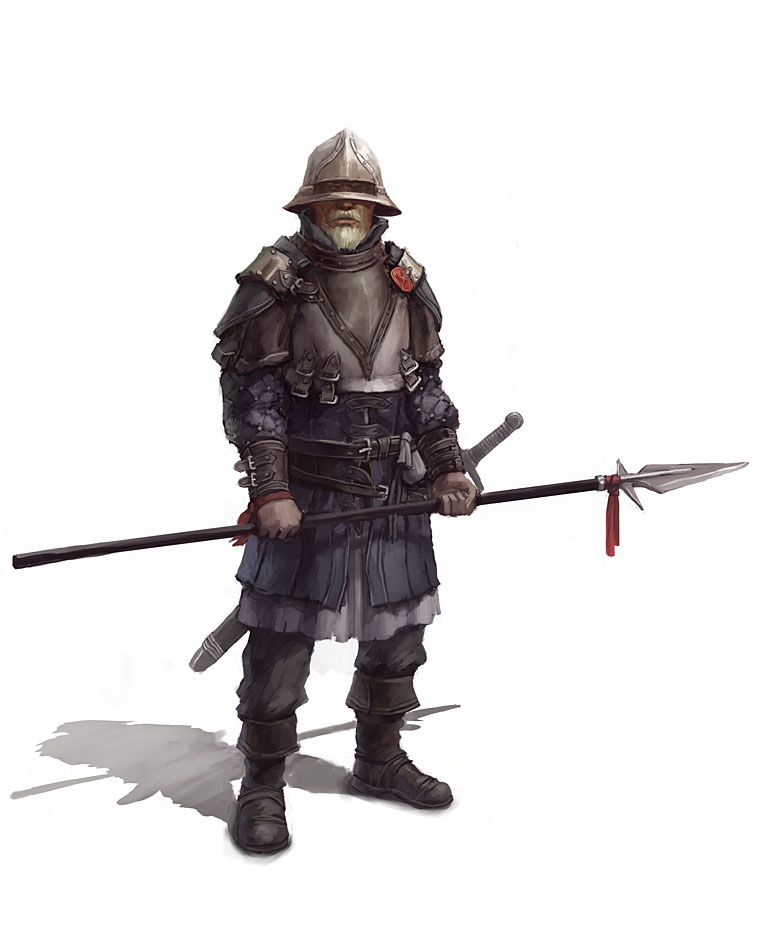

Weapons
| Name | Cost | Damage | Weight | Properties | ||||||
|---|---|---|---|---|---|---|---|---|---|---|
| Martial Melee Weapons | ||||||||||
| Arming Sword | 20 gp | 1d8 piercing/slashing | 2 lb. | Parry, skewering, slicing | ||||||
| Bastard Sword | 30 gp | 1d8 piercing/slashing | 3 lb. | Parry, variable, versatile (2d4, sweeping) | ||||||
| Battleaxe | 10 gp | 1d8 slashing | 3 lb. | Slicing, sweeping, versatile (2d4, finisher) | ||||||
| Boar Spear | 5 gp | 1d6 piercing | 5 lb. | Versatile (1d8, reach), wind-up, winged | ||||||
| Cestus | 1 gp | 1d4 bludgeoning | 1/2 lb. | Light, ensnaring, nonlethal, special, staggering | ||||||
| Estoc | 25 gp | 1d8 piercing | 2 lb. | Finesse, sundering, versatile (2d4, parry) | ||||||
| Flail | 10 gp | 1d8 bludgeoning/piercing | 2 lb. | Bypass, ensnaring, wind-up | ||||||
| Glaive | 20 gp | 1d10 slashing | 5 lb. | Heavy, reach, sweeping, two-handed | ||||||
| Greataxe | 25 gp | 1d12 slashing | 4 lb. | Finisher, heavy, slicing, staggering, two-handed | ||||||
| Greatsword | 50 gp | 2d6 piercing/slashing | 6 lb. | Heavy, parry, sweeping, two-handed, variable | ||||||
| Halberd | 25 gp | 1d10 piercing/slashing | 5 lb. | Ensnaring, heavy, reach, two-handed, variable | ||||||
| Harpoon | 10 gp | 1d8 piercing | 4 lb. | Slicing, thrown (60/120) | ||||||
| Lance | 10 gp | 1d12 piercing | 1 lb. | Cavalry, reach, special, skewering | ||||||
| Longsword | 35 gp | 1d10 bldg/prce/slsh | 3 lb. | Ensnaring, parry, sundering, two-handed, variable | ||||||
| Lucerne | 20 gp | 1d10 bldg/prce | 6 lb. | Heavy, reach, sundering, two-handed | ||||||
| Maul | 10 gp | 2d6 bludgeoning | 10 lb. | Finish., heavy, staggering, sundering, two-handed | ||||||
| Messer | 7 gp | 1d8 slashing | 2 lb. | Parry, slicing, versatile (2d4, staggering) | ||||||
| Morningstar | 15 gp | 1d8 bludgeoning/piercing | 4 lb. | Skewering, staggering, sundering | ||||||
| Parrying Dagger | 5 gp | 1d4 piercing | 1 lb. | Ensnaring, finesse, light, parry, prone fighting | ||||||
| Pike | 5 gp | 1d10 piercing | 5 lb. | Heavy, reach, two-handed, wind-up | ||||||
| Pollaxe | 25 gp | 1d10 bldg/prce/slsh | 5 lb. | Heavy, parry, sundering, two-handed, variable | ||||||
| Ranseur | 25 gp | 1d10 piercing/slashing | 5 lb. | Heavy, reach, two-handed, winged | ||||||
| Rapier | 25 gp | 1d8 piercing | 3 lb. | Finesse, parry, skewering | ||||||
| Rondel | 5 gp | 1d4 piercing | 1 lb. | Finesse, finisher, light, prone fighting, sundering | ||||||
| Sabre | 25 gp | 1d8 slashing | 3 lb. | Cavalry, finesse, parry, slicing | ||||||
| Scimitar | 20 gp | 1d6 piercing/slashing | 3 lb. | Cav., finesse, light, slicing, versatile (1d8, parry) | ||||||
| Shortsword | 15 gp | 1d6 piercing/slashing | 2 lb. | Finesse, light, parry, variable | ||||||
| Shotel | 15 gp | 1d8 piercing/slashing | 3 lb. | Bypass, ensnaring, finesse | ||||||
| Spear | 2 gp | 1d8 piercing | 4 lb. | Reach, versatile (1d10, wind-up) | ||||||
| Unarmed Strike | — | 1 bludgeoning | — | Nonlethal, special, staggering | ||||||
| War Pick | 15 gp | 1d8 piercing | 2 lb. | Skewering, sundering, versatile (2d4, ensnaring) | ||||||
| Warhammer | 15 gp | 1d8 bludgeoning | 2 lb. | Staggering, sundering, versatile (2d4, finisher) | ||||||

Weapons
| Name | Cost | Damage | Weight | Properties | ||
|---|---|---|---|---|---|---|
| Martial Ranged Weapons | ||||||
| Atlatl | 20 gp | 1d8 prce | 2 lb. | Ammunition (100/200), special, skewering | ||
| Hand Crossbow | 75 gp | 1d6 prce | 2 lb. | Ammunition (30/60), light, loading, prone fighting | ||
| Heavy Crossbow | 50 gp | 1d12 prce | 6 lb. | Str 12, amm. (100/200), heavy, loading, sundering, two-handed | ||
| Longbow | 70 gp | 1d10 prce | 2 lb. | Str 13, ammunition (200/800), heavy, skewering, two-handed | ||
| Recurve Bow | 50 gp | 1d8 prce | 1 lb. | Str 10, ammunition (100/400), skewering, two-handed |
Exotic Weapons
Exotic weapons are unwieldy, niche, novel, or revolutionary. Some are less effective weapons than popularly imagined or were designed for as tools used outside of combat, and so require expertise to use in combat with the same effectiveness as other, more efficient weapons. However, because they are still weapons, they work in the same way as simple or martial weapons whenever a class feature, spell, or other game mechanic requires one.
During character creation, if you gain proficiency in all simple and martial weapons, you also gain proficiency in one exotic weapon or shield of your choice. A monk gains proficiency in two exotic weapons of your choice. Multi- classing into a class, other than monk, does not grant additional exotic proficiencies. You can also gain proficiency in an exotic weapon from other race, class, or background features, training, or by taking the Weapon Master feat.


Weapons
| Name | Cost | Damage | Weight | Properties | |
|---|---|---|---|---|---|
| Exotic Melee Weapons | |||||
| Chain Whip | 5 gp | 1d6 bludgeoning | 10 lb. | Bypass, ensnaring, versatile (1d8, reach) | |
| Garotte Wire | 5 gp | 1d6 slashing | 1/4 lb. | Finesse, light, special, two-handed | |
| Gauntlet-sword | 25 gp | 1d6 piercing/slashing | 4 lb. | Cavalry, light, special, variable | |
| Hooksword | 35 gp | 1d8 slashing | 3 lb. | Ensnaring, parry, special | |
| Trident | 5 gp | 1d8 piercing | 4 lb. | Finisher, versatile (2d4, skewering), winged | |
| Whip | 2 gp | 1d4 slashing | 3 lb. | Ensnaring, finesse, reach |


Weapons
| Name | Cost | Damage | Weight | Properties | ||||||
|---|---|---|---|---|---|---|---|---|---|---|
| Exotic Ranged Weapons | ||||||||||
| Arquebus | 400 gp | 2d8 prc | 10 lb. | Ammunition (60/120), gunpowder, two-handed | ||||||
| Boomerang | 25 gp | 1d4 bldg | 1 lb. | Str 9, finesse, nonlethal, special, thrown (30/60) | ||||||
| Greatbow | 200 gp | 2d6 prc | 10 lb. | Str 18, ammunition (150/600), heavy, loading, special, two-handed | ||||||
| Handgonne | 250 gp | 2d6 prc | 4 lb. | Ammunition (30/90), gunpowder | ||||||
| Net | 1 gp | — | 1 lb. | Ensnaring, special, thrown (5/15) | ||||||
Shield Grips
Shield grips determine how you hold a shield.
Handles are a wood or metal handlebar on the inside of a shield. These shields can be doffed or donned with the item interaction you receive as part of your turn and can be dropped freely, but enemies have advantage on checks made to disarm you of them.
Straps attach the shield to the arms, reinforcing the handle with a series of cloth or leather straps. These shields take an action to don or doff, and enemies have disadvantage on checks made to disarm you of the shield.
Shield Attacks
When you could attack with a weapon, you can instead choose to bash with a shield. You add your proficiency bonus to the attack roll so long as you are proficient with the shield, and your Strength modifier to its attack and damage rolls.
Shields are not considered weapons, so you can still benefit from features like the Dueling fighting style when attacking with a weapon while you have a shield in the other hand. However, because the attack you make with a shield is a melee weapon attack, it can activate features that activate on weapon attacks, such as Divine Smite.
Shields
| Name | Cost | Bash Damage | +AC | Weight | Grip | Properties | |
|---|---|---|---|---|---|---|---|
| Normal Shields | |||||||
| Buckler | 8 gp | 1d4 bludgeoning | +1 | 2 lb. | Handle | Parry | |
| Heater | 10 gp | 1d6 bludgeoning | +2 | 3 lb. | Strap | — | |
| Kite | 15 gp | 1d6 bludgeoning | +2 | 9 lb. | Strap | Special | |
| Pavise | 25 gp | 1d4 bludgeoning | +2 | 16 lb. | Handle | Heavy, special | |
| Roundshield | 10 gp | 1d6 bludgeoning | +2 | 3 lb. | Handle | — | |
| Tower Shield | 50 gp | 1d4 bludgeoning | +3 | 16 lb. | Strap | Heavy, special | |
| Exotic Shields | |||||||
| Dueling Shield | 75 gp | 1d6 bludgeoning | +2 | 6 lb. | Handle | Versatile (1d8 piercing, ensnaring, heavy, parry) | |
| Lantern Shield | 100 gp | 1d8 piercing | +2 | 12 lb. | Strap | Light, special |


Ammunition
| Name | Cost | Weight | Weapon | Properties | |
|---|---|---|---|---|---|
| Ammunition | |||||
| Barbed Quarrel | 15 cp | 1 oz. | Crossbow | Slicing | |
| Blowgun Needle | 2 cp | 1 oz. | Blowgun | Special | |
| Bodkin Arrow | 30 cp | 1 oz. | Bow | Sundering | |
| Broadhead Arrow | 50 cp | 1 oz. | Bow | Slashing damage, slicing | |
| Bullet | 30 cp | ⅛ oz. | Gun | — | |
| Dart | 5 cp | 4 oz. | Atlatl | — | |
| Field Arrow | 5 cp | 1 oz. | Bow | Nonlethal | |
| Firecage Arrow | 1 gp | 1 oz. | Bow | Special | |
| Grapeshot | 10 gp | 3 oz. | Gun | Special | |
| Hunting Bolt | 2 cp | 1 oz. | Crossbow | Bludgeoning damage, nonlethal | |
| Quarrel | 5 cp | 1 oz. | Crossbow | Staggering | |
| Sling Bullet | 1/5 cp | 1 oz. | Sling | — | |
| Silver Bullet | 15 gp | ⅛ oz. | Gun | Special | |
| Whistling Arrow | 1 gp | 1 oz. | Bow | Special |
A magical shield that grants a bonus to your AC when wielded only increases your Armor Class, and does not grant a bonus to attack and damage rolls with the shield unless its description states otherwise.
If a magical shield applies its bonus to both AC and attack and damage rolls, its rarity increases by one level. For example, both a +3 weapon and +3 shield are very rare items, but a dueling shield that grants a +3 bonus to both AC and attack and damage rolls is a legendary item.
Special Weapon Properties
Many weapons have entirely unique attributes, whose abilities cannot be replicated with existing properties. These capabilities are listed below.
Atlatl. The atlatl benefits from skill with both ranged and thrown weapons, though it is considered a ranged weapon. You can use your Strength modifier to increase the range of darts hurled with this weapon, as though it had the thrown property, and it and its darts are considered thrown weapons when used to make ranged attacks for the purposes of benefits such as the Thrown Weapon Fighting fighting style.
Boomerang. This weapon returns to your hand if you miss.
Blowgun. If you are hidden when you attack with this weapon, you do not reveal your location.
Blowgun Needle. These minute needles are small enough that a single dose of poison can be spread further. When you apply a poison to blowgun needles, a single dose covers 10 pieces of this ammunition, instead of the usual 3.
Cestus. Cestus are not held in the hand but are wrapped around the knuckles and forearm, or worn as gloves. If you are wielding a cestus, you can use that hand to grapple or shove an enemy, or load a ranged weapon, but you cannot attack with that cestus without ending the grapple.
You cannot wield other weapons or shields in that hand, nor use it to perform somatic components. You cannot drop a cestus or be disarmed of one unless you are incapacitated. You must use an action to don or doff a cestus, but can don or doff a pair of cestus in one action.
Dueling Shield. These large shields have a large triangular boss and hooks and blades built into the rim. A dueling shield adds a +2 bonus to AC when wielded in one hand, as normal. When wielded in both hands, it acts as a melee weapon that deals 1d8 piercing damage with the ensnaring, heavy, and parry properties in addition to its AC bonus.
Firecage Arrow. The curved metal bars that flare out from the shaft of this arrow carry a burning coal through the air, which sheds dim light in a 5 ft. radius. When you hit with a firecage arrow, half the damage you deal is fire damage, instead of piercing. If you miss with a firecage arrow, choose a space within 15 feet of the target. The arrow ignites objects in that space that aren't being worn or carried.
Garotte Wire. A garotte cannot be used on a creature more than 1 size larger than you, and you can only attack with a garotte if you have advantage on attack rolls against the target.
On a hit, the target is grappled until you release it, it breaks free of the grapple, or you stop wielding the garotte. While grappled in this way, the target is restrained, cannot speak or breathe, and suffocates (PHB 183). Creatures that do not need to breathe are immune to a garotte wire's choke at the discretion of the DM.
If you are grappling a creature, you can grip the wire with the same hand that you are using to grapple the target and attack it with the other end of the garotte wire that you are holding in the other hand, effectively ignoring the wire's two-handed property for that target.

Gauntlet-Sword. This specialized sword is built into a stiff gauntlet. You cannot drop or be disarmed of a gauntlet-sword. It takes an action to don or doff a gauntlet-sword.
Grapeshot. Instead of a single bullet, a large number of tiny projectiles fill a canister of grapeshot ammunition. Upon firing, the projectiles fly in a line 5 feet wide and half as long as the gun's normal range. A number of creatures in that line (starting with the creature closest to you and moving outward) equal to your proficiency bonus must make a Dexterity saving throw (DC equals 8 + your proficiency bonus + your Dexterity modifier), taking damage equal to a roll of damage dice + your ability score modifier as normal on a failure.
Greatbow. An enormous bow with massive draw weight, you must use Strength instead of Dexterity for attack and damage rolls with this weapon.
Hooksword. If you are holding a hooksword in each hand, checks from the weapon's ensnaring property are made with advantage, and the ability to link both hookswords together gives this weapon the sweeping property.
Kite Shield. If you wield this shield while mounted, its long, tapering bottom grants both you and your mount a +1 bonus to AC against attacks.
Lance. You have disadvantage when you use a lance to attack a target within 5 feet of you. A lance requires two hands to wield when you aren't mounted.
Lantern Shield. An apparatus combining a small shield, lantern, a gauntlet, and several blades. When wielded, it adds a +2 bonus to your AC like a normal shield, is considered a weapon with the light property for effects such as the two-weapon fighting rules, and can store a lit bullseye lantern, which you wield while holding this shield. If you are disarmed of this shield or doff it, the lantern moves with it. A lantern can be added or removed from the shield as an action.
Net. A Large or smaller creature hit by a net is restrained until freed. A net has no effect on creatures that are formless, or are Huge or larger. A creature can free itself or others by using its action and succeeding on a DC 10 Strength
check. Dealing 5 slashing damage to the net (AC 10)
also frees the creature without harming it, and
destroys the net.
Pavise. A pavise is a tall, oblong shield used to provide portable cover. You can use your action to plant a pavise in the ground, doffing it as part of the same action. In this state it is no longer wielded, and stands on its own to act as 1/2 cover for an upright creature, or total cover for a prone one.
Silver Bullet. This bullet deals no special damage against most creatures, but any attack with a silver bullet that hits a creature with a special weakness to silver, like some fiends or shapechangers, is an automatic critical hit.
Staff Sling. The shaft that adds leverage to the projectiles this sling throws can also be used for close-range combat. This weapon can be wielded in melee combat as a quarterstaff. In addition, this weapon can be used to throw bombs to any point within its long range.
Tower Shield. While wielding a tower shield, you can use your reaction to gain three-quarters cover against harmful area-of-effects such as breath weapons or spells when targeted or affected by such effects, unless the effect travels around corners.
Unarmed Strike. An attack with any part of your body, such as a fist, elbow, knee, claw, or horn, is an unarmed strike. An unarmed strike is considered a melee weapon for features that activate after a successful weapon attack, such as martial maneuvers, divine smites, or spells delivered with weapons, but is not considered a weapon when an effect or ability such as Two-Weapon Fighting or a Mage Knight's spellcasting focus requires you to wield a weapon.
Racial and class features might provide larger damage dice to unarmed strikes you make with a particular part of your body. In that case, you are proficient in unarmed strikes using only that part, and are not proficient with unarmed strikes using other body parts unless you have them from another source, such as proficiency with martial weapons.
Whistling Arrow. The bulb carved from wood or antler behind the point of this arrow creates a loud whistle as it flies through the air, that creatures within 300 feet of the path the arrow travels from the archer to its target can clearly hear.
Natural Weapons
Many player races, such as lizardfolk, kenku, and centaurs, have natural weapons. Though removing these weapons is difficult, regular weapons still overshadow them thanks to their larger damage dice and additional weapon properties.
This section lists several natural weapons and their associated properties. It would be impossible to maintain a list of all natural weapons for each race as homebrew and official content continue to add more. Instead, the Natural Weapon Properties table lists common natural weapons and recommendations for their properties.
All player characters' natural weapons should deal either 1d4 or 1d6 damage, and have two properties. It is reasonable for monsters' natural weapon attacks to have one property instead, to assist the DM in tracking each monster's abilities during combat.
Natural Weapon Properties
| Weapon | Properties |
|---|---|
| Bite | ensnaring, skewering |
| Beak | skewering, sundering |
| Claws | ensnaring, variable |
| Hooves | cavalry, finisher |
| Horns | wind-up, winged |
| Tail | nonlethal, sweeping |
| Talons | finisher, skewering |
| Tentacle | bypass, ensnaring |
| Wings | parry, reach |
Most natural weapons, if not all, use Strength for attack and damage rolls. Consult with your DM to determine if your race, character, or class could use Dexterity for your attack and damage rolls with your natural weapons instead.
The Warrior's Codex recommends bites, talons, and tentacles/pseudopods as weapons that can use either Strength or Dexterity.
Armor Revised
The Armor Table shows the cost, weight, armor class, and properties each type of armor. Class proficiencies and stealth rules remain unchanged, as do the rules for donning and doffing armor. However, armor weighs half as much while you wear it for the purposes of determining encumbrance or carried weight.
When worn, half-plate and heavy armor provide Damage Reduction. When you take nonmagical bludgeoning, piercing or slashing damage, the damage you take is reduced by an amount equal to half your proficiency bonus, rounded down. Full plate reduces the damage by an amount equal to your proficiency bonus instead. This reduction applies before you apply resistances or vulnerabilities.
Any attack that is considered magical for the purposes of overcoming resistance and immunity to nonmagical attacks and damage ignores this damage reduction as well, unless the armor you wear is also magical. Certain natural armor, such as that of a tortle or warforged, can also provide damage reduction at the discretion of the DM.
Armor
| Armor | Cost | AC | DR | STR | Stealth | Weight | |
|---|---|---|---|---|---|---|---|
| Light Armor | |||||||
| Leather | 5 gp | 11+Dex | — | — | — | 8 lb. | |
| Gambeson | 10 gp | 12+Dex | — | — | — | 10 lb. | |
| Jackchains | 25 gp | 13+Dex | — | — | Disadvantage | 15 lb. | |
| Medium Armor | |||||||
| Hide | 10 gp | 13+Dex (max 3) | — | — | — | 12 lb. | |
| Haubergeon | 50 gp | 14+Dex (max 2) | — | — | Disadvantage | 20 lb. | |
| Breastplate | 200 gp | 14+Dex (max 3) | — | — | — | 20 lb. | |
| Brigandine | 100 gp | 15+Dex (max 2) | — | — | Disadvantage | 25 lb. | |
| Cuirass | 400 gp | 15+Dex (max 3) | — | — | — | 25 lb. | |
| Half-plate | 1,000 gp | 16+Dex (max 2) | ✓ | 12 | Disadvantage | 30 lb. | |
| Heavy Armor | |||||||
| Scale | 100 gp | 15 | ✓ | 12 | Disadvantage | 40 lb. | |
| Hauberk | 150 gp | 16 | ✓ | 13 | Disadvantage | 30 lb. | |
| Splint | 300 gp | 17 | ✓ | 14 | Disadvantage | 35 lb. | |
| Full Plate | 1,500 gp | 18 | ✓✓ | 14 | Disadvantage | 45 lb. |

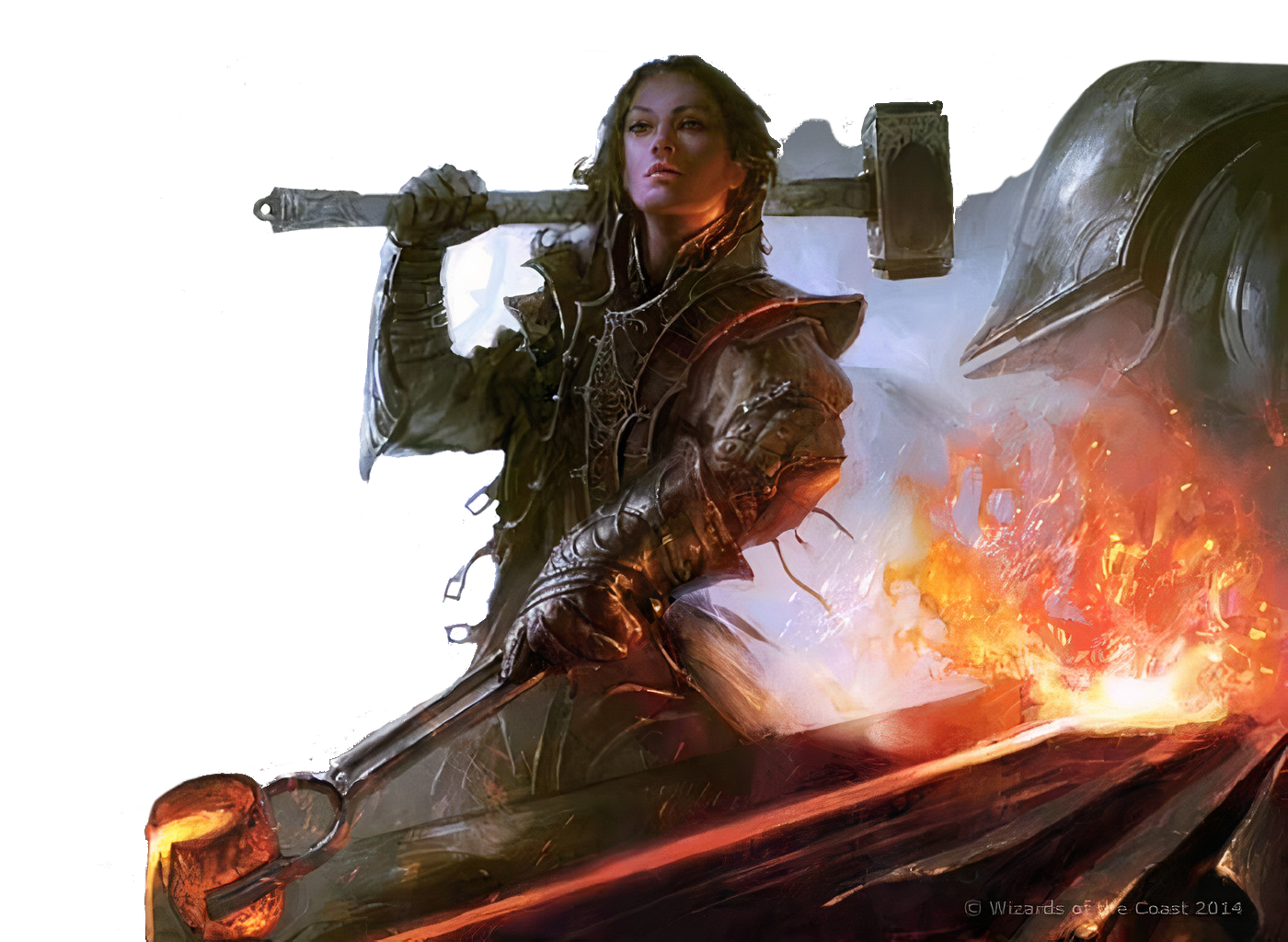
Siege Engines
The mightiest mundane weapons, siege engines are expensive, slow artillery used in large battles. Their might allows settlements without magic or heroes to defend themselves against supernatural threats. Each requires a certain number of actions to load, aim, and attack (in that order), and can be operated by either a crew or a single creature across multiple turns. A crew must have appropriate ammunition, as detailed later in this section, to fire a siege engine. The ammunition used determines both the damage roll and the type of damage dealt.
Damage dealt by a siege engine is considered magical for the purpose of overcoming resistance and immunity to nonmagical attacks and damage, so long as the engine's target is one size larger than it or smaller.
All engines are immune to psychic and poison damage. The table below details their statistics and the ammunition section lists their damage. Each adds the listed bonus to its attack and damage rolls, and all save the cauldron, hwacha, and organ gun deal doubled damage to objects and structures.
Ballista. A torsion-spring-based siege weapon used by the Roman Empire that fires an oversized bolt or sizable stone over impressive range. Resembles a crossbow in
appearance, though several internal mechanisms differ.
Cannon. Gunpowder artillery made from bronze or iron that fired large balls at enemy fortifications. The cannons in this document are muzzle-loaded, have the gunpowder property, and may or may not have wheels.
Cauldron. Filled with liquid and suspended above a gate, wall, or portcullis, creatures in a 5-foot-radius cylinder extending from the cauldron to the ground must succeed on a DC 15 Dexterity saving throw or take damage (determined by the ammunition used), or half as much on a successful saving throw.

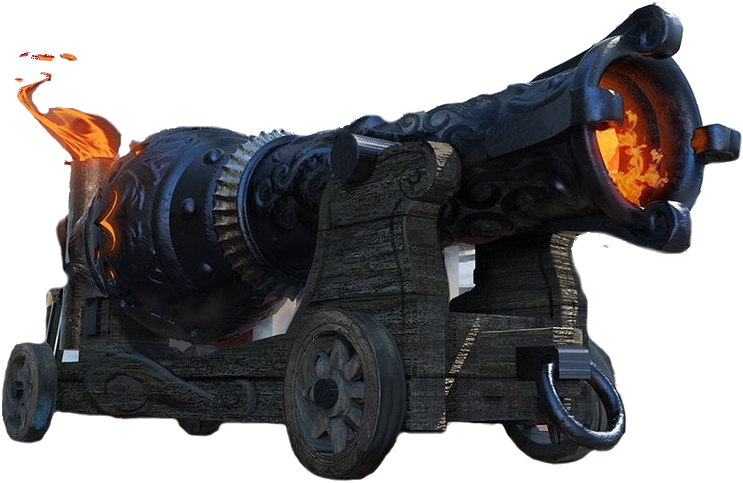
Hwacha. A large handcart loaded with 100 firework-propelled arrows used extensively in the Korean peninsula against invaders. Angled and ignited to fire hundreds of light projectiles in a shower of flame, forcing each creature within 15 feet of a point within range chosen by the crew to make a DC 13 Dexterity saving throw. A target takes 3d6 piercing damage and 3d6 fire damage on a failed save. The attack also ignites flammable objects within its area of effect that aren't being worn or carried. This engine has the gunpowder property.
Organ Gun. A set of fanned barrels used as an anti-personnel weapon during the Hundred Years' War, this siege engine makes an attack roll against creatures in a 60 foot cone originating from it, and can target up to 10 creatures within the cone. Its massive spread means it that it cannot target the same creature with multiple attack rolls. An organ gun expends 10 bullets for every attack it makes, and does 2d8 + 5 piercing damage to each target it hits. This engine has the gunpowder property.
Siege Engines
| Name | Cost | Range | Bonus | To-Load | To-Aim | To-Attack | AC | HP | Size | Weight | ||
|---|---|---|---|---|---|---|---|---|---|---|---|---|
| Ballista | 1,500 gp | 250/300 ft. | +6 | 2 | 1 | 1 | 15 | 50 | Large | 2 tons | ||
| Cannon | 3,000 gp | 300/1700 ft. | +8 | 6 | 1 | 1 | 19 | 75 | Large | 5 tons | ||
| Cauldron | 35 gp | 5 ft. | — | 3 | 1 | 1 | 19 | 20 | Medium | 160 lb. | ||
| Hwacha | 200 gp | 1500 ft. | — | 5 | 1 | 1 | 15 | 50 | Large | 500 lb. | ||
| Organ Gun | 1,000 gp | 60 ft. cone | +5 | 10 | 1 | 1 | 17 | 40 | Large | 700 lb. | ||
| Ram | 200 gp | 5 ft. | +8 | — | 5 | 1 | 15 | 100 | Huge | 3 tons | ||
| Siege Tower | 2,500 gp | — | — | — | — | — | 15 | 150 | Gargantuan | 10 tons | ||
| Trebuchet | 1,500 gp | 1,200 ft. | — | 3 | 3 | 1 | 15 | 150 | Huge | 2.5 tons | ||
| Xun Lei Chong | 1,000 gp | 60/120 ft. | +5 | 5 | 1 | 1 | 15 | 40 | Small | 55 lb. |
Ram. This movable galley is equipped with an iron-clad log suspended by chains. It requires 6 medium creatures to operate, which have total cover against attacks from above. When it attacks a door or wall, it has advantage on the roll, and deals 3d10+6 bludgeoning damage to that structure.
Siege Tower. A mobile wooden structure with a beam frame and slats in its walls. Large wheels or rollers allow the tower to be pushed or pulled by 8 medium creatures or 4 large ones. Medium or smaller creatures can use the siege tower to reach the top of walls up to 40 feet high. A creature in the tower has total cover from attacks outside the tower.
Trebuchet. These siege engines hurl their payloads in high arcs that hit targets behind all but total cover, and can arc over walls. The creature which aims the trebuchet chooses a point in range at least 60 feet away. All creatures within 5 feet of that point must succeed on a DC 16 Dexterity saving throw or take damage (determined by the ammunition used). Objects in that area also take damage.
Xun Lei Chong. A single-man siege weapon made from five gun barrels mounted on a single axis, that uses a rotating fuse mechanism to fire multiple shots at one target. A xun lei chong does 10d8 piercing damage on a hit, and expends 5 bullets for every attack it makes. This weapon has the gunpowder property, and its user is both prone and gains half cover when using it.
Cauldron Contents
You can fill a cauldron a variety of liquids that devastates hapless creatures beneath it. A cauldron is assumed to contain 20 gallons of liquid, or the volume of 160 flasks.
| Name | Damage | Cost |
|---|---|---|
| Acid | 7d6 acid | 500 gp |
| Boiling Fat | 4d6 fire | 1 gp |
| Holy Water | 3d6 fire | 500 gp |
| Lava | 10d8 fire | — |
| Boiling Oil | 5d6 fire | 32 gp |
| Boiling Pitch | 6d6 fire | 5 gp |
| Boiling Water | 3d6 fire | — |
Boiling Oil. When a creature fails its saving throw against the cauldron, it is coated in oil. If the target takes any fire damage before the oil dries (after 1 minute), the target takes an additional 10 fire damage from the burning oil. A 5-foot-radius circle directly below the cauldron is also covered in oil. If lit, the oil burns for 4 rounds and deals 10 fire damage to any creature that enters the area or ends its turn there. A creature can take this damage only once per turn.
Holy Water. Fiends and undead take an additional 4d6 radiant damage from a cauldron of holy water on a failed saving throw, or half as much damage on a success.
Lava. Only the strongest magical cauldrons can withstand the heat of boiling magma, but it can be a potent siege weapon in battles with magically-gifted combatants.
Boiling Pitch. When a creature fails its save against the cauldron, it is covered in tar. The target's speed is halved until it takes 10 minutes to scrape the tar from its body. If the tar remains for 1 hour, it hardens, and the target is restrained until another creature removes the material.
Trebuchet Ammunition
Trebuchets can be loaded with a variety of other projectiles with different damage and areas of effect.
| Name | Damage | Cost | Weight |
|---|---|---|---|
| Barrel, Alc. Fire | 5d10 bludgeoning | 4,000 gp | 90 lb. |
| Barrel, Sewage | 5d10 bludgeoning | 4 gp | 80 lb. |
| Boulder | 8d10 bludgeoning | 1 gp | 20 lb. |
| Bomb | varies | varies | 10 lb. |
| Corpse | varies | – | Varies |
Barrel of Alchemist's Fire. After the initial impact, alchemist's fire explodes in all directions. Every creature and object within 30 feet of the point where the barrel landed must make a DC 16 Dexterity saving throw. On a failed save, a target takes 8d4 fire damage, and is set alight. A burning target or object takes 3d4 fire damage at the start of each of its turns. A creature use an action to extinguish the flames on itself or another creature or object, which requires a successful DC 10 Dexterity check.
On a successful save, a target takes half as much fire damage and is not set alight.
Barrel of Sewage. After the initial impact, sewage seeps from the barrel in all directions. Every creature within 30 feet of the point where the barrel landed must succeed on a DC 16 Constitution saving throw against disease or take 2d10 poison damage and contract sewer plague (DMG page 256). On a successful saving throw, a creature takes half as much poison damage and does not contract the disease.
Bombs. A trebuchet can fire up to 10 bombs of any type at once, which explode on impact. Each individual bomb forces its saving throw in its radius, against its effects.
Corpse. A corpse targets a space the same size as the creature it was in life (a 5 ft. square for a medium creature, 10 ft. for large, etc). The corpse of a Small creature deals 1d10 bludgeoning damage and 1d10 poison damage. The bludgeoning damage increases by 1d10 for every size above Small. Most trebuchets cannot fire Gargantuan creatures.
Other Ammunition
| Name | Damage | Cost | Weight | Weapon |
|---|---|---|---|---|
| Ballista Bolt | 2d10 piercing | 1 gp | 15 lb. | Ballista |
| Field Arrow (100) | 3d6 piercing + 3d6 fire |
5 gp | 6 lb. | Hwacha |
| Grapeshot | 6d8 piercing | 20 gp | 15 lb. | Cannon |
| Iron Ball | 10d8 bludgeoning | 50 gp | 100 lb. | Cannon |
| Stone Ball | 8d8 bludgeoning | 15 sp | 70 lb. | Cannon |
Grapeshot. Instead of a single bullet, a large number of tiny projectiles fill a canister of grapeshot ammunition. Upon firing, the projectiles fly in a line 10 feet wide and as long as the cannon's normal range. Each creature in the line must succeed on a DC 15 Dexterity saving throw. A target takes 6d8 piercing damage on a failed save, or half as much on a success.
Equipment Customization
Materials, extras, and other customizations for weapons diversify them even further. While not the numerical bonuses from masterwork items of older editions, these alterations allow you to customize your weapons further, and provide additional benefits.
Materials
A weapon's composition is just as important as its wielder's skill. While every weapon has a default material, different substances provide circumstantial benefits. The material of a weapon cannot be changed after its creation. All the materials listed here can be used to make melee weapons, ranged weapons, armor, ammunition, and foci, though not all have an effect in each form.
Adamantine. An ultra-hard jet-black metal with a multicolored sheen, weapons made from this meteoric iron devastate other objects. When you hit an object with an adamantine weapon or piece of ammunition, the hit is a critical hit. All adamantine melee weapons have the sundering property, and affect all types of wearable armor. If a creature attempts to parry an attack you made with an adamantine melee weapon and your attack hits in spite of the attempt, both the target and the parrying weapon or shield take damage from the attack. When wearing adamantine armor or wielding an adamantine shield, any critical hit against you not from an adamantine weapon becomes a normal hit. An adamantine item costs 500 gp more than the normal version, whether the item is made of the metal or coated with it.
Adamantite. A rare material created when Underdark Faerzress corrupts adamantine deposits. Used extensively by drow, this material has all properties of adamantine, but also temporarily absorbs poison into itself. When you apply an injury poison to an adamantite weapon or piece of ammunition, the poison isn't removed after the first injury, but is instead applied every time you deal piercing or slashing damage to a creature until the poison dries naturally. When exposed to direct sunlight, adamantite items disintegrate.
Bone. A strong, off-white material scavenged from animal, monster, or humanoid corpses which is carved or cut into useful shapes. Used in areas without access to wood or metal, items made of this inflexible material are as durable as their standard versions, but weigh half as much and have triple the cost. Wearing armor made from bone (an incredibly rare item thanks to bones' inflexibility and inconsistent quality) grants you advantage on saving throws against necromancy spells, and when you cast a necromancy spell through a focus made from bone you can reroll one of the spell's damage dice.
Bronze. A gold-colored alloy of copper and tin. Though supplanted by iron and steel since ancient times for all but fey and elves (who are sensitive to iron's touch), bronze weapons are known for their magical affinity. When you create a magical item with bronze, it takes half the time and cost.
Mundane bronze items cost 50% more than their iron counterparts, and are produced and sold by few smiths. Most bronze weapons are antiques, though the use of bronze-cast cannon and bombards has caused a resurgence in its popularity.
Mundane and Magical
Most smiths can only create items out of wood, iron, and steel, while specialized craftsmen can make items from bone, bronze, ironwood, obsidian, silver, and stone. The rest are magical materials (and weapons made from them are considered magical for the purposes of overcoming resistance and immunity to nonmagical attacks and damage), and cannot be purchased; they must be found or created as other magical items are.
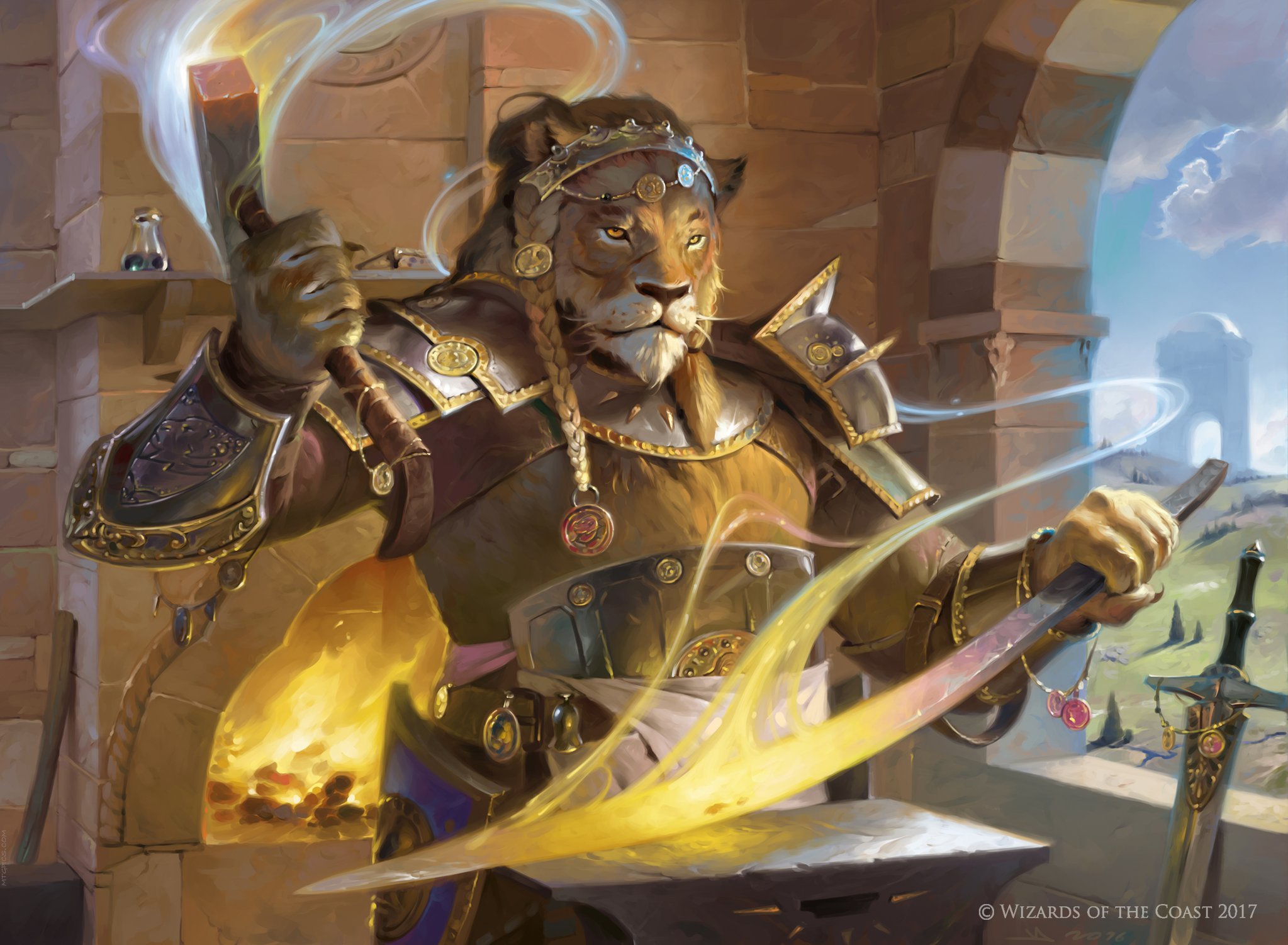
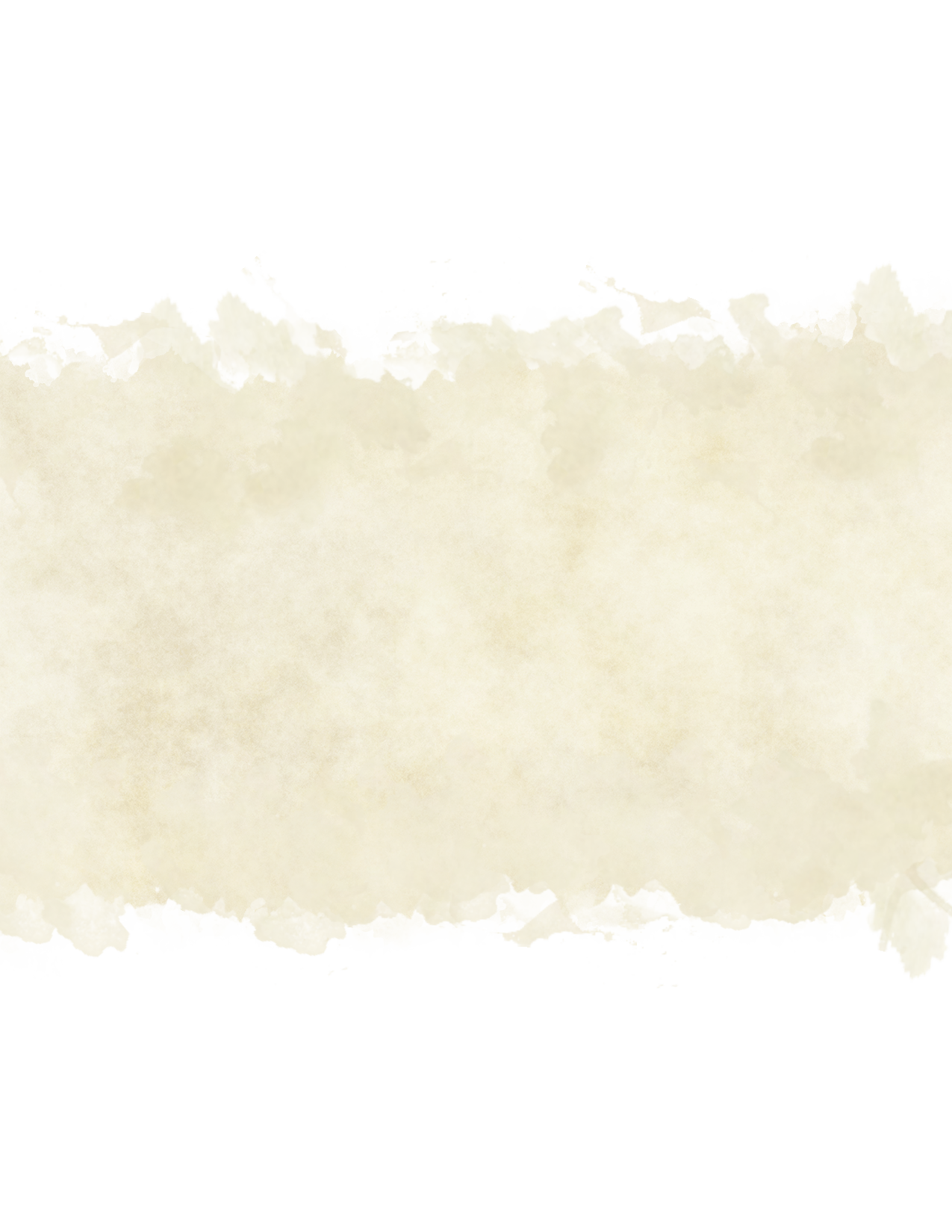
Dimeritium. A shiny teal metal found in the mountains of Kovir, this rare material blocks the flow of magical energy. If you wear armor or wield a shield made of dimeritium, you have advantage on saving throws against spells, but cannot cast spells yourself. Attacks with dimeritium weapons and ammunition ignore magical effects that increase the target's AC, such as the bonus from +1 armor or the shield spell.
Flametouched Iron. Native to Eberron, this dark gray metal takes on a reddish sheen when refined. Weapons and ammunition made from flametouched iron are considered magical for the purposes of overcoming resistance and immunity to nonmagical damage when attacking undead or evil creatures. If used to create a cleric's holy symbol, flametouched iron increases the CR of an undead that a cleric can destroy with destroy undead by 1.
Iron. Iron rusts and dulls faster than steel, but its ease of manufacture and low cost have made it popular for warriors on a budget—iron items cost half as much as their steel counterparts, though they have 3/4 the hit points and suffer doubled penalties from effects such as a rust monter's rust metal feature. Iron has a key advantage besides cost: its touch is excruciating to fey. When a fey touches an iron item while concentrating, the pain forces it to make a DC 10 Constitution saving throw or lose concentration, and when a fey makes a save to maintain concentration after being damaged by an iron weapon or piece of ammunition, the DC is equal to the damage taken, rather than half.
Ironwood. Grown by druids for weapons and armor, this fireproof wood is as dense and resilient as metal, with all the properties of steel. Ironwood items are considered wood, rather than metal, when a game effect considers its material.
Mithral. A flexible material with a pale silver-blue sheen, mithral is prized for its unmatched light weight—mithral items weigh half as much as their default versions. If an armor or shield made normally imposes disadvantage on Dexterity (Stealth) checks or has a Strength requirement, the mithral version doesn't. Finally, if you attack with a mithral weapon that has the heavy property, you can do so without penalties regardless of your Strength or size.
Obsidian. A precious black volcanic glass, weapons made with this delicate stone are razor-sharp. In addition to its typical properties, an obsidian weapon or piece of ammunition that deals piercing damage gains the skewering property, or the slicing property if it deals slashing damage, so long as it or the weapon firing it didn't have the same property. Items made from obsidian cost four times more than their normal counterparts.
Silver. A shiny pale-gray material often associated with the moon, some monsters have a supernatural vulnerability to this precious metal. A skilled craftsman can plate a single weapon or 10 pieces of ammunition with silver with 100 gp, which represents not only the price of materials but the time and to add silver to the weapon without reducing its effectiveness. Unlike most materials, a weapon that is silvered retains all the properties of its original material.
Steel. The best mundane metal available to a typical craftsman. While steel has no magical abilities, its properties allows smiths to select for sharpness, flexibility, hardness, and durability. Its relative resistance to wear, ability to hold an edge, ease of maintenance, and durability have made it a material of choice across the world.
Stone. All weapons and ammunition made from stone deal bludgeoning damage, even if they would normally deal another type. A stone weapon that ordinarily has the finesse or light properties loses those properties, and any stone weapon that does not have the finesse or light properties gains the heavy property. In addition, a stone weapon with the skewering or slicing properties loses those properties, and gains the staggering property instead. Stone weapons weigh 4 times as much as usual, and cost twice as much.
True Ice. An exceptional magical material, True Ice comes from the core of polar caps and mountain peaks, and never melts. Elementals aligned with fire or water are vulnerable to damage from true ice weapons and ammunition. Armor made from True Ice grants resistance to fire damage and immunity to atmospheric hazards in hot environments, but halves the time required to make saves against cold.
Wood. Softer and more flexible than most materials, wood is used to make most ranged weapons and some ammunition and does not alter the statistics of those weapons. A wooden weapon or piece of ammunition has the blunted modification if it is not made from wood by default, and costs half as much. If the weapon's default material is wood, it works as normal, and uses its listed cost.
Default Materials
Most weapons are made of a combination of wood and a metal (typically iron or steel), and very few weapons use only one material. For example, crossbows and arquebuses used both wood and metal, bows use specific types of wood or horn for the arms and sinew for the string, and so on.
Melee weapons, especially polearms, used a haft made of wood and a head made of iron or steel. Armor features several layers of cloth padding beneath its metal exterior. For simplicity's sake this table lists only one type of material, either the one which comprises most of the item (for ranged weapons, ammunition, armor, and siege weapons), or the material of the component that makes contact with the target (for melee weapons).
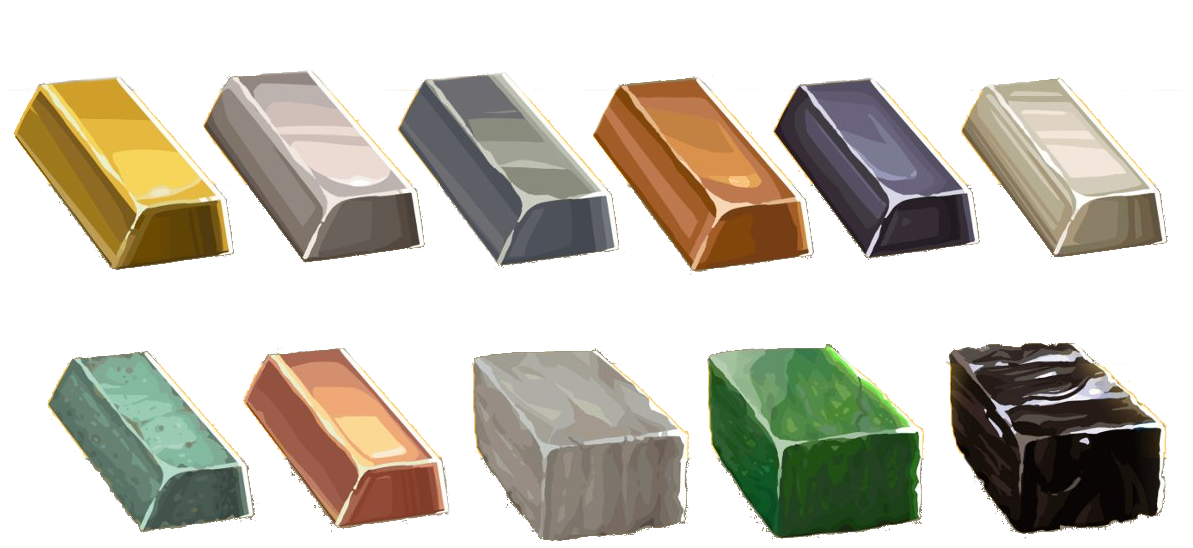
Weapon Materials
| Weapon | Default Material |
|---|---|
| Club | Wood |
| Dagger | Steel |
| Goedendag | Steel |
| Greatclub | Wood |
| Guisarme | Steel |
| Handaxe | Steel |
| Javelin | Steel |
| Light Hammer | Steel |
| Mace | Steel |
| Peasant Flail | Wood |
| Quarterstaff | Wood |
| Shortspear | Steel |
| Sickle | Steel |
| Blowgun | Wood |
| Dart | Wood |
| Light Crossbow | Wood |
| Shortbow | Wood |
| Sling | Leather |
| Staff Sling | Wood |
| Arming Sword | Steel |
| Bastard Sword | Steel |
| Battleaxe | Steel |
| Boar Spear | Steel |
| Cestus | Leather |
| Estoc | Steel |
| Flail | Steel |
| Glaive | Steel |
| Greataxe | Steel |
| Greatsword | Steel |
| Halberd | Steel |
| Harpoon | Steel |
| Lance | Steel |
| Longsword | Steel |
| Lucerne | Steel |
| Maul | Steel |
| Messer | Steel |
| Morningstar | Steel |
| Parrying Dagger | Steel |
| Pike | Steel |
| Weapon | Default Material |
|---|---|
| Pollaxe | Steel |
| Ranseur | Steel |
| Rapier | Steel |
| Rondel | Steel |
| Sabre | Steel |
| Scimitar | Steel |
| Shortsword | Steel |
| Shotel | Steel |
| Spear | Steel |
| Unarmed Strike | n/a |
| War Pick | Steel |
| Warhammer | Steel |
| Atlatl | Wood |
| Hand Crossbow | Wood |
| Heavy Crossbow | Wood |
| Longbow | Wood |
| Recurve Bow | Wood |
| Chain Whip | Steel |
| Garotte Wire | Cloth |
| Gauntlet-Sword | Steel |
| Hooksword | Steel |
| Trident | Steel |
| Whip | Leather |
| Arquebus | Wood |
| Boomerang | Wood |
| Greatbow | Wood |
| Handgonne | Wood |
| Net | Cloth |
Shield Materials
| Item | Default Material |
|---|---|
| Buckler | Steel |
| Heater | Wood |
| Kite | Wood |
| Pavise | Wood |
| Roundshield | Wood |
| Tower Shield | Steel |
| Dueling Shield | Steel |
| Lantern Shield | Steel |
Ammunition Materials
| Item | Default Material |
|---|---|
| Barbed Quarrel | Iron |
| Blowgun Needle | Wood |
| Bodkin Arrow | Iron |
| Broadhead Arrow | Steel |
| Bullet | Lead |
| Field Arrow | Wood |
| Firecage Arrow | Iron |
| Grapeshot | Lead |
| Hunting Bolt | Wood |
| Quarrel | Wood |
| Sling Bullet | Stone |
| Silver Bullet | Silver |
| Whistling Arrow | Wood |
Armor Materials
| Item | Default Material |
|---|---|
| Leather | Leather |
| Gambeson | Cloth |
| Jackchains | Cloth |
| Hide | Leather |
| Haubergeon | Steel |
| Breastplate | Steel |
| Brigandine | Steel |
| Cuirass | Steel |
| Half-plate | Steel |
| Scale | Steel |
| Hauberk | Steel |
| Splint | Steel |
| Full Plate | Steel |
Siege Engine Materials
| Engine | Default Material |
|---|---|
| Ballista | Wood |
| Cannon | Bronze |
| Cauldron | Iron |
| Organ Gun | Iron |
| Ram | Wood |
| Siege Tower | Wood |
| Trebuchet | Wood |
| Xun Lei Chong | Iron |
Siege Ammunition Materials
| Ammunition | Default Material |
|---|---|
| Ballista Bolt | Wood |
| Boulder | Stone |
| Fire Arrow | Wood |
| Iron Cannonball | Iron |
| Stone Cannonball | Stone |
Modifications
Weapons are not static, unchanging items. They can be altered, gaining add-ons that improve their features or add new ones. You can purchase the modifications below (or create them if you have the proper tool proficiencies, as detailed in Part V) and add them to the items listed with each modification. A weapon can have more than one modification, and modifications can be removed by a creature proficient in the same tools required to install them (if any).
Bayonet
Cost: 20 gp
Modifies: light crossbow, heavy crossbow, arquebus
When you wield a weapon with a bayonet attached, you can wield it as a melee weapon to make an attack that deals 1d6 piercing damage with a reach of 5 feet. The bayonet has none of the weapon properties or magical powers of the weapon attached to it, but is a magical weapon if the ranged weapon it is installed upon is as well.
Blunted
Cost: 10 gp
Modifies: a melee weapon or 3 pieces of ammunition that deal piercing or slashing damage
The weapon can only deal bludgeoning damage and gains the nonlethal property. When you roll the highest number on a damage die, you must reroll the die and take the second roll.
Butt Spike
Cost: 10 gp
Modifies: boar spear, javelin, shortspear, glaive, greataxe, guisarme, halberd, harpoon, pike, pollaxe, ranseur, spear, trident
When you come within 5 feet of a prone creature on your turn, you can use your bonus action to make a melee weapon attack against that creature. This attack deals 1d6 piercing damage. None of the weapon's properties apply to that attack.
Consecrated
Cost: 200 gp
Modifies: a weapon or three pieces of ammunition
When used against a fey, fiend or undead, a consecrated weapon or piece of ammunition is considered magical for the purpose of overcoming resistance and immunity to nonmagical attacks and damage. A cleric, paladin, or other creature with sufficient divine power as determined by the DM can create a consecrated item by performing an 8-hour ritual where it submerges the weapon or three pieces of ammunition in 200 gp of holy water and stands vigil for the duration. This consumes the holy water.
If the weapon is silvered or made of flametouched iron, the ritual requires 50 gp of holy water instead.
Decorated
Cost: 100 gp
Modifies: any
The item is decorated with paint, etching, precious metals, or gemstones. It confers no benefits on the battlefield, but may grant advantage on Persuasion checks while you wear it by creating an aura of wealth and prestige.
Disguised
Cost: 300 gp
Modifies: any weapon without reach or two-handed
A specially-made weapon sheathed inside a nondescript object, to be carried into places where other weapons are forbidden. These include knives hidden in flutes, swords hidden in canes, and similar creations. An incredible variety of concealed weapons exist, as there is no limit to creative ingenuity. Technology and plausibility are far more limited. The DM is the ultimate arbiter of which weapons can be concealed inside another item. A DC 17 Intelligence (Investigation) check reveals a disguised weapon while it is concealed.
Enhanced Guard
Cost: 15 gp
Modifies: dagger, mace, arming sword, bastard sword, battlaxe, estoc, greatsword, longsword, morningstar, parrying dagger, rapier, rondel, sabre, shortsword
A weapon with this guard, often a basket hilt, grants you advantage on checks to avoid being disarmed of it.
Fire Lance
Cost: 45 gp
Modifies: a simple or martial weapon with the reach property
An explosive tube packed with gunpowder and lead pellets attached to the end of a polearm. When you would attack with the weapon equipped with it, you can instead fire the modification, forcing each creature in a line 10 feet long and 5 feet wide, which extends from and is parallel to the end of the modified weapon, to make a DC 14 Dexterity saving throw. A target takes 3d6 piercing damage and 3d6 fire damage on a failed save, or half as much on a successful save. The tube has the gunpowder property, and after firing it is destroyed and must be replaced. Installing a new fire lance requires an action.
Flamberge
Cost: 75% of weapon cost
Modifies: arming sword, bastard sword, dagger, greatsword, longsword, parrying dagger, rapier
A modified blade with undulating waves instead of a straight cutting edge which makes it more difficult to block. When you attack with a flamberge blade and your attacker attempts to parry, the bonus to AC granted by parrying is halved.
Furred
Cost: 10 gp
Modifies: armor
Armor lined with furs for warmth. When wearing furred armor, you have advantage on saving throws against cold environments and weather disadvantage against hot environments. This modification increases a suit of armor's weight by 5 pounds. Hide armor has this modification by default, and includes the weight of the fur in its listed weight.
Guige
Cost: 2 sp
Modifies: buckler, shield, tower shield, dueling shield
When you drop or are disarmed of a shield with a guige, it remains on your person instead of falling to the ground. It provides no bonus to armor class and you are not wielding it.
Guisarme Hook
Cost: 25 gp
Modifies: glaive, pike
A hook added to the back of the weapon's head, which adds the ensnaring property to the weapon.
Jagged
Cost: 0 gp
Modifies: any melee weapon
A broken weapon can still be of some use. You cannot add your proficiency bonus to attack rolls made with this weapon, but it gains the slicing property until repaired.
Penobscot Arms
Cost: 50 gp
Modifies: shortbow, greatbow, longbow, recurve bow
The Strength score required to use the bow is reduced by 1.
Poison Reservoir
Cost: 1500 gp
Modifies: a melee weapon or one piece of ammunition thats deal piercing or slashing damage
A melee weapon with this modification stores up to 5 doses of one type of injury poison at one time. Ammunition with this modification stores a single dose of poison instead, and is always one of the pieces of ammunition recovered after initiative ends.
When you deal piercing or slashing damage with this weapon, you can choose to deliver one dose of poison. Poison in the reservoir never dries, and if mixed with another poison, both poisons become inert.
Repeater
Cost: 300 gp
Modifies: light crossbow, hand crossbow, heavy crossbow
This device attached to a crossbow allows you to fire it 5 times before reloading. You can load 5 pieces of ammunition instead of 1 when you load this weapon.
Scope
Cost: 6,000 gp
Modifies: light crossbow, shortbow, greatbow, heavy crossbow, longbow, recurve bow, arquebus
A weapon with a scope attached doesn't have disadvantage on attack rolls made beyond its standard range.
Second Barrel
Cost: 500 gp
Modifies: arquebus, handgonne
This additional barrel multiplies the weight of the gun by 1.5 and allows you to attack twice, instead of once, before reloading. You can load both barrels simultaneously.
Spiked
Cost: 20 gp
Modifies: club, greatclub, peasant flail, cestus
Metallic studs or spikes attached to the weapon focus damage on single points. A spiked weapon gains the skewering property, which replaces the staggering property if the weapon has it.
Creating New Weapons
The sheer variety of properties and options presented in this document means that even the new weapons it introduces could never cover every possible combination from historical reality, let alone in the imagination. In the event that you or a member of your group want to create a new weapon that uses the properties presented in The Warrior's Codex, this page lists several guidelines to follow in order to balance the new option and prevent the creation of a single strictly superior choice—something WCX aims to avoid at all costs.
Remember that your goal should never be to create a weapon that is mechanically superior to other weapons, but provides an alternative of equal power to the other weapons in the same category (simple or martial).
The point system below was used to balance the existing WCX weapons, and highlighted several flaws late in the design process. Though it is a guideline, not a hard rule which must be followed, it is highly recommended in order to maintain a power level comparable to existing weapons.
Each weapon has a certain number of points, determined by the damage it deals and the properties it uses. The values for properties and damage are listed below, with the point values of existing weapons listed at the end of this section.
Damage Dice Point Values
| Die | Points |
|---|---|
| 0 | -3 |
| 1 | -2 |
| 1d4 | -1 |
| 1d6 | 0 |
| 1d8 | 1 |
| Die | Points |
|---|---|
| 2d4 | 1.5 |
| 1d10 | 2 |
| 1d12 | 2.5 |
| 2d6 | 3 |
| 2d8 | 4 |
Weapon Property Point Values
| Property | Points |
|---|---|
| Ammunition | 0 |
| Bypass | 1 |
| Cavalry | 0.5 |
| Ensnaring | 1 |
| Finesse | 1 |
| Finisher | 1 |
| Gunpowder | -1 |
| Heavy | 1 |
| Light | 1 |
| Loading | -1 |
| Nonlethal | 1 |
| Parry | 1 |
| Prone F. | 1 |
| Property | Points |
|---|---|
| Ranged | 3 |
| Reach | 2 |
| Skewering | 1 |
| Slicing | 1 |
| Special | X |
| Staggering | 1 |
| Sundering | 1 |
| Sweeping | 1 |
| Thrown | 1 |
| Two-Hand | -1 |
| Variable | 1 |
| Versatile | 1 |
| Wind-up | 1 |
| Winged | 1 |
Notes
- In general, simple weapons should be worth 2 points, and martial weapons worth 4-6.
- Exotic weapons, with a variety of niche specialties, have no expected point value, but in general, no simple, martial, or exotic or otherwise, should be worth less than 1 point or more than 6 points.
- Because every weapon with the ammunition property also has ranged property, the ammunition property is worth 0 points. Any custom weapon that has ammunition without ranged, or vice versa, should be given the special property and rated appropriately.
- If a weapon with the ammunition, ranged, or thrown property has a long range of 60 feet or less, those properties are worth 0 points for that weapon, instead of their normal value.
- A weapon with the variable property gains the benefits of multiple properties, such as slicing or staggering, but this property is still only worth 1 point because it gains the benefits of only one property at a time.
- Special properties are rated individually, and are ultimately subjective.
- The damage types a weapon deals are irrelevant.
- A weapon's price—which exists primarily for flavor—is irrelevant for mechanical balance, unless it is extremely expensive. High prices (arquebus) are worth -1 point, and low prices (dart) are worth 1 point.
Existing Weapon Values
| Weapon | Points |
|---|---|
| Club | 1 |
| Dagger | 2 |
| Goedendag | 2 |
| Greatclub | 2.5 |
| Guisarme | 3 |
| Handaxe | 2 |
| Javelin | 1 |
| L. Hammer | 2 |
| Mace | 2 |
| P. Flail | 2 |
| Quarterstaff | 2 |
| Shortspear | 2/3 |
| Sickle | 2 |
| Blowgun | 1 |
| Dart | 2 |
| L. Xbow | 2 |
| Shortbow | 2 |
| Sling | 2 |
| Staff Sling | 2.5 |
| Arming Sw. | 4 |
| Bastard Sw. | 4/5.5 |
| Battleaxe | 4 |
| Weapon | Points |
|---|---|
| Boar Spear | 3/5 |
| Cestus | 4.25 |
| Estoc | 4/5.5 |
| Flail | 4 |
| Glaive | 5 |
| Greataxe | 5.5 |
| Greatsword | 6 |
| Halberd | 6 |
| Harpoon | 3 |
| Lance | 4 |
| Longsword | 5 |
| Maul | 6 |
| Messer | 4/5.5 |
| Morningstar | 4 |
| P. Dagger | 4 |
| Pike | 5 |
| Pollaxe | 5 |
| Ranseur | 5 |
| Rapier | 4 |
| Rondel | 4 |
| Sabre | 4.5 |
| Scimitar | 4.5 |
| Weapon | Points |
|---|---|
| Shortsword | 4 |
| Shotel | 4 |
| Spear | 4/5 |
| Unarmed St. | 1 |
| War Pick | 4/5.5 |
| Warhammer | 4/5.5 |
| Atlatl | 5.5 |
| Hand Xbow | 1 |
| Hv. Xbow | 5.5 |
| Longbow | 5 |
| Rec. Bow | 4 |
| Chain Whip | 4/6 |
| Garotte W. | 3 |
| Gauntl.-Sw. | 3.5 |
| Hooksword | 4.5 |
| Trident | 4/5.5 |
| Whip | 2 |
| Arquebus | 4 |
| Boomerang | 1.5 |
| Greatbow | 5 |
| Handgonne | 4 |
| Net | 1 |
Alternative Weapons
Many weapons can be represented by the same combination of properties. These alternate weapons use the same statistics, though their damage types may differ, which are abbreviated as follows: (b) for bludgeoning, (p) for piercing, and (s) for slashing.
Most alternates originate from cultures and eras outside D&D's early-renaissance European pastiche, such as Rome, Japan, China, and Polynesia. They are not appropriate for every game. The DM is justified in disallowing any alternate.
Alternate armors are scaling protection at the same technological and metallurgical level. A heavy bronze breastplate or a deflector shield are both "full plate" if, in-setting, they are the best armor available.
| Weapon | Alternative |
|---|---|
| Atlatl | Spear-thrower, woomera |
| Arming Sword | Broadsword, niuweidao, saintie (p) |
| Arquebus | Bo-hiya, tanegashima |
| Bastard Sword | Katana, miaodao |
| Battleaxe | Bhuj, dadao, fu, masakari |
| Brigandine | Lorica segmentata |
| Cestus | Bagh nakh (s), emeici (p), knuckleduster, push dagger (p), shobo, suntetsu, tekko, vajra-mushti (p) |
| Chain Whip | Spiked chain (p), kusari-fundo, kusarigama (p), meteor hammer |
| Club | Bian, blackjack, cosh, hanbō, jō, mere, patu tambo, tekkan, tonfa |
| Dagger | Bishou, kaiken, kozuka, kunai, tamo, tanto |
| Flail | Chigiriki, nunchaku (b), sanjie gun (b), urumi (s) |
| Goedendag | Plançon a picot |
| Glaive | Bill, bisento, bardiche, fauchard, guandao, lochaber axe, naginata, rhompaia, sovnya, swordstaff, voulge |
| Greatclub | Kanabo, tetsubo |
| Greataxe | Dane axe |
| Greatsword | Claymore, changdao, flamberge, nagamaki, nodachi, zanbatō, zweihander |
| Guisarme | Mancatcher, kama-yari, nunti bo, sasumata, sodegarami, tsukubō (b) |
| Halberd | Dagger-axe |
| Handaxe | Chakram, kpinga, kukri, ono, tomahawk |
| Handgonne | Bajō-zutsu |
| Harpoon | Makrigga |
| Heater | Ishlangu, pelte, rotella, targe |
| Hooksword | Chicken Sickles |
| Javelin | Mau, kylie (b), uchi-ne |
| Lance | Umayari |
| Light crossbow | Gastraphetes |
| Light Hammer | Chui |
| Weapon | Alternative |
|---|---|
| Longbow | Daikyu |
| Maul | Ōtsuchi |
| Mace | Jiǎn |
| Messer | Falchion, golok, ikakalaka, khopesh, kopis, machete, parang |
| Morningstar | Leiomano, macuahuitl (b/s) |
| Pike | Ahlspiess, sarissa, mao, nagaeyari |
| Parrying Dagger | Jitte (b), sai, wahaika (b) |
| Peasant Flail | Chang xiao bang |
| Pollaxe | Monk's spade, taiaha (bp) |
| Quarterstaff | Gun, bo |
| Ranseur | Corseque, ji, partizan, spontoon, rawcon |
| Rondel | Kabutowari, yoroi-dōshi |
| Roundshield | Dhal, parma, Viking shield |
| Sabre | Backsword, dao, firangi, tachi |
| Scimitar | Cutlass, liuyedao, uchigatana |
| Shortspear | Assegai, hasta |
| Shortbow | Hankyu |
| Shortsword | Butterfly swords, falcata, gladius, jian, katar, tsurugi, wakizashi |
| Shotel | Falx |
| Sickle | Kama, makraka, wind & fire wheels |
| Spear | Doru, qiang, yari |
| Trident | Magariyari |
| Trebuchet | Catapult, mangonel |
| Tower Shield | Aspis, scutum |
| War Pick | Fang, kuwa, toki poutangata |
| Whip | Cat-o-nine-tails, lasso |
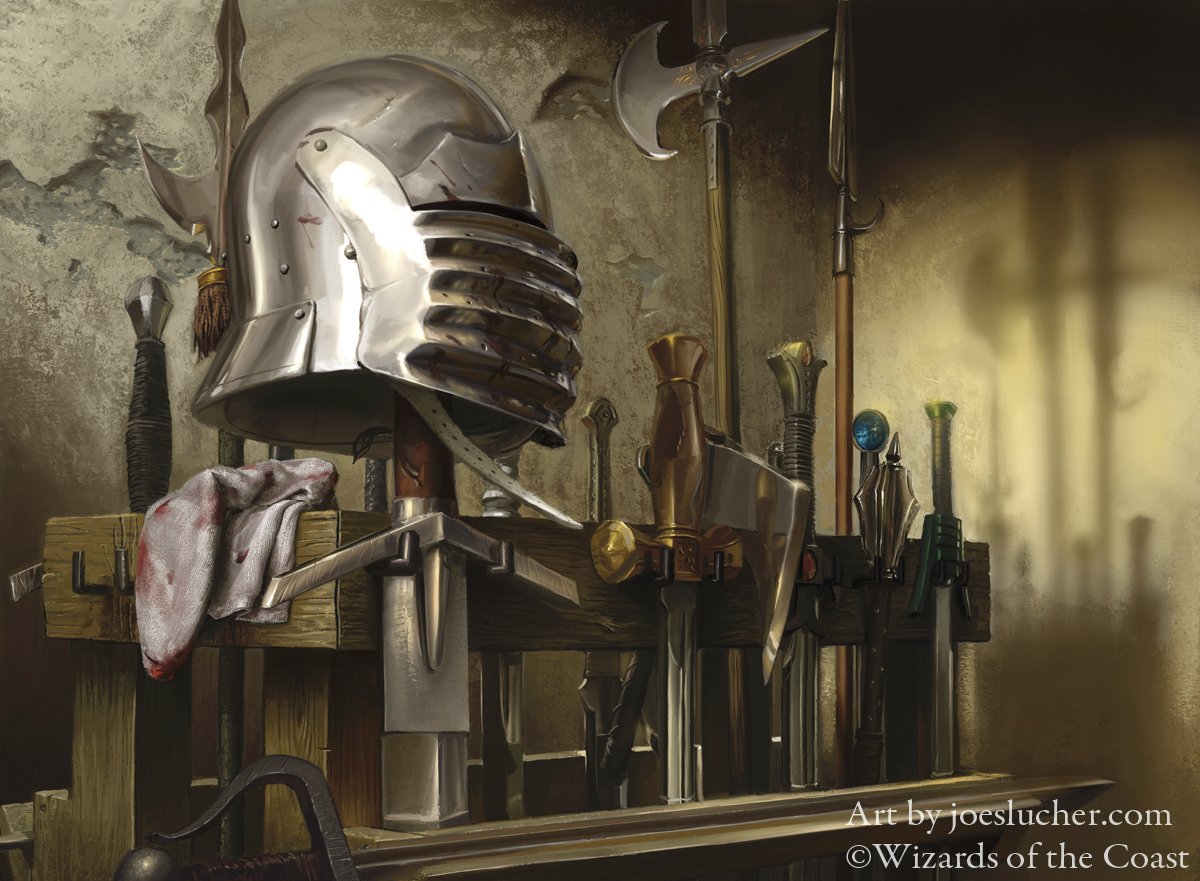
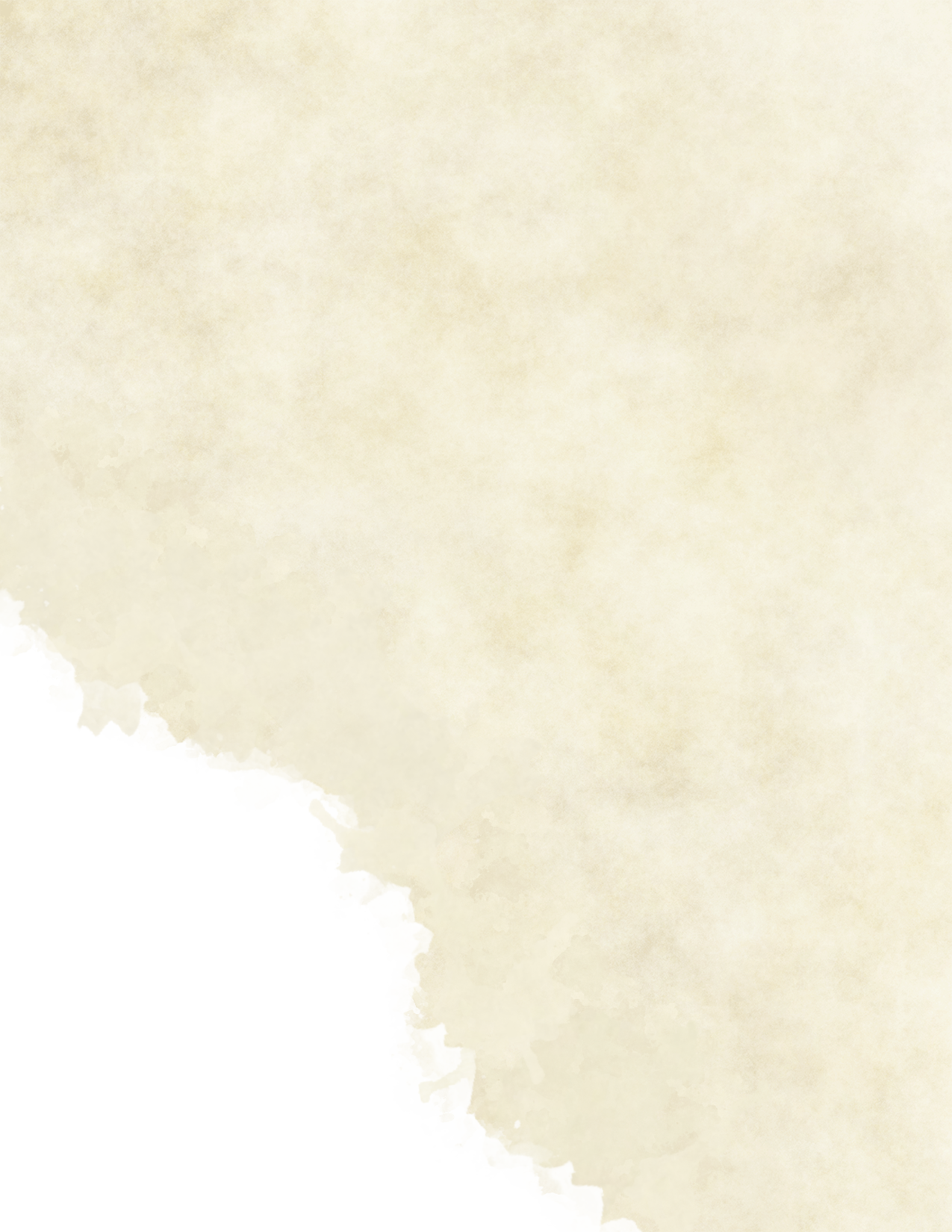

PART IV
New Rules

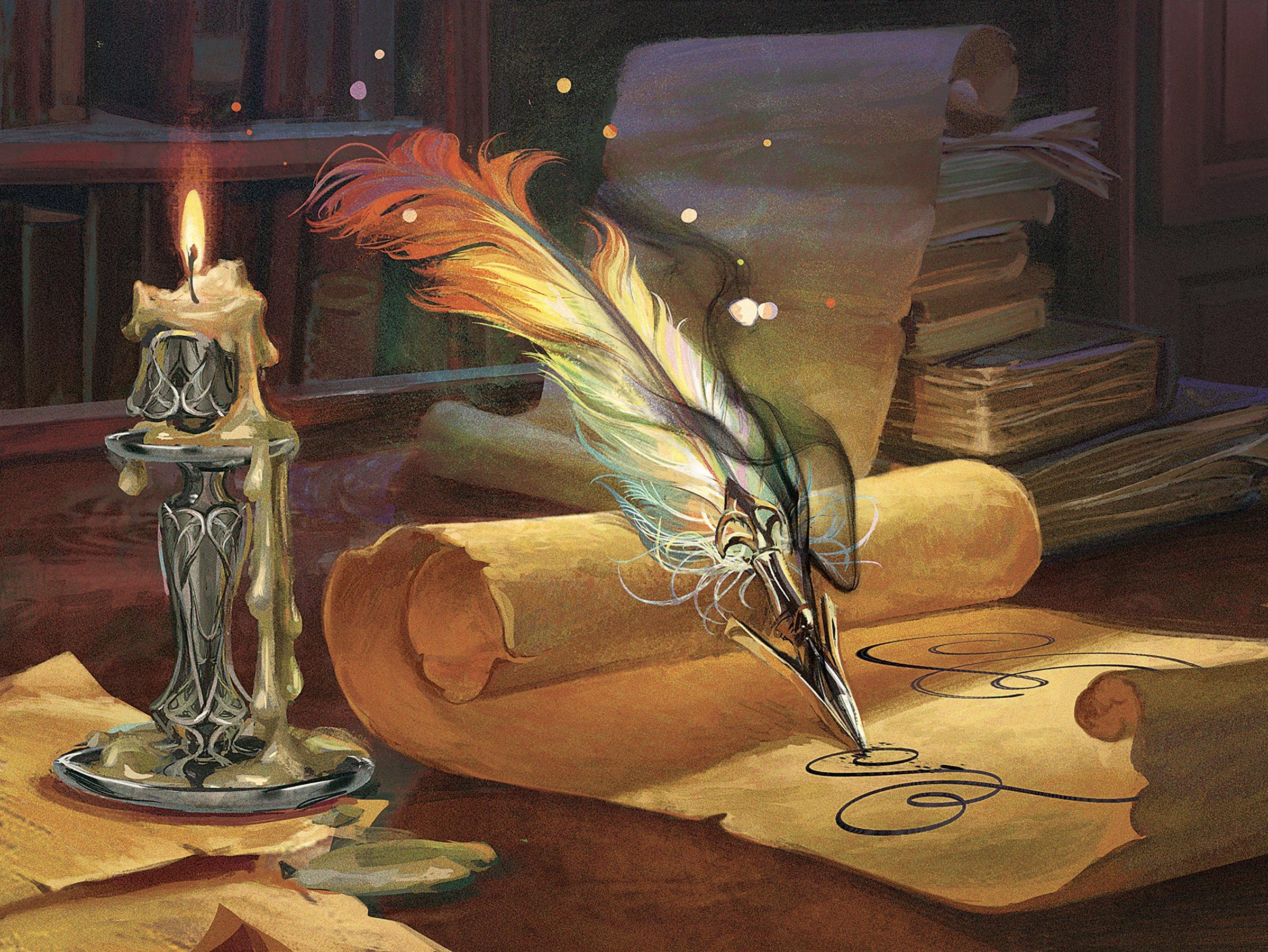
Mechanical Changes
While robust, some rules can be tweaked or clarified. This section adds quality-of-life changes, buffs, and adaptations to fit rules established in this document. It also includes changes too small to count as a full rework that would be included in the previous sections.
Racial Traits
Elf Weapon Training.
Eladrin, high elf, wood elf, variant half-elf
You have proficiency with the sabre, scimitar, shotel, shortsword, shortbow, and recurve bow.
Fey Ancestry.
Elf, half-elf
Fey Ancestry works as-written, with the following change:
Touching an iron item causes you burning pain, though it deals no extra damage.
Drow Weapon Training.
Drow, variant half-elf
You have proficiency with blowguns, estocs, rapiers, shortswords, and hand crossbows.
Dwarven Combat Training.
Hill dwarf, mountain dwarf, duergar
You have proficiency with the battleaxe, greataxe, handaxe, light hammer, maul, and warhammer.
Legacy of Avernus.
Zariel tiefling
You know the thaumaturgy cantrip and are proficient with light armor and two martial weapons of your choice. When you reach 3rd level, you can cast the searing smite spell as a 1st-level spell once with this trait and regain the ability to do so when you finish a long rest.
Powerful Build.
Brutality aspect Dragonborn, bugbear, fir bolg, goliath, loxodon, nephilim, ogrillon, orc
You count as one size larger when determining your carrying capacity, the weight you can push, drag, or lift, and the creatures you can grapple or shove, as well as when tossing another creature. If a weapon, shield, or suit of armor you use has a Strength requirement, the requirement is reduced by 2.
Rifleman Training.
Rock gnome, deep gnome, giff, hobgoblin
You have proficiency with the arquebus and handgonne.
Sea Elf Training.
Sea elf, variant half-elf
You have proficiency with the harpoon, spear, shortspear, trident, light crossbow, and net.
Shapechanger.
Changeling
Shapechanger works as-written, with the following change:
The touch of iron causes you great pain. The first time on a turn that an iron object touches your bare skin or if you start your turn touching one, you must make a DC 15 Constitution saving throw. On a failed save, you immediately revert to your true form (no action required) if you aren't already in it.
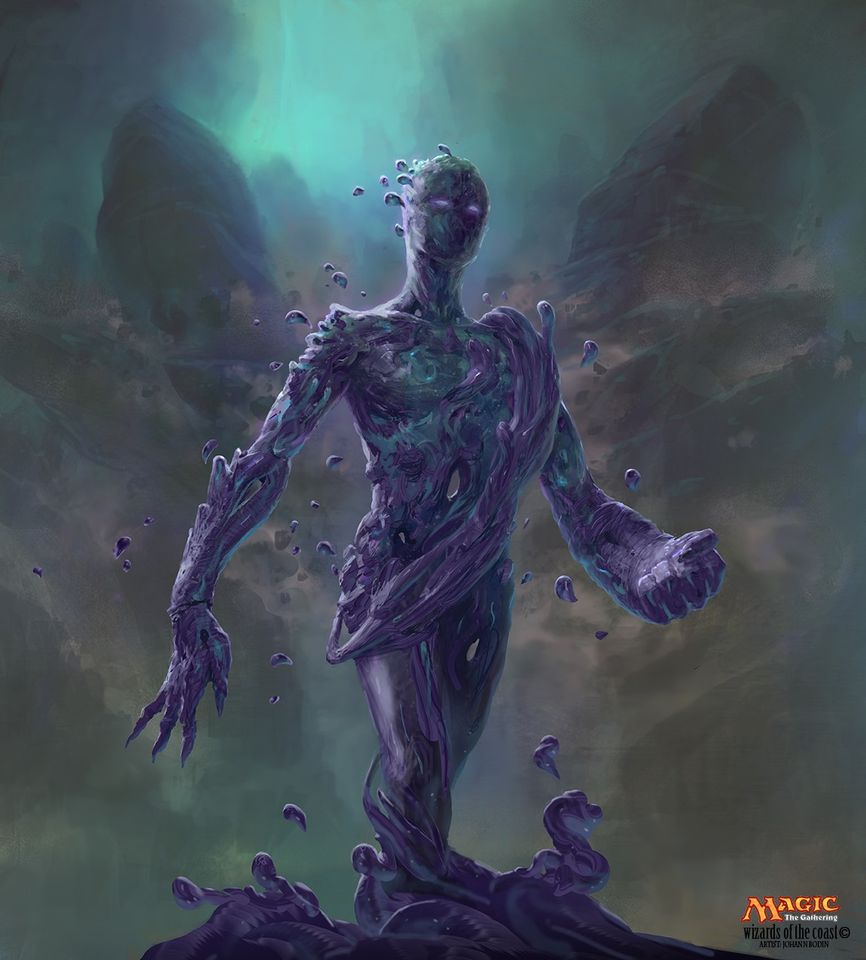
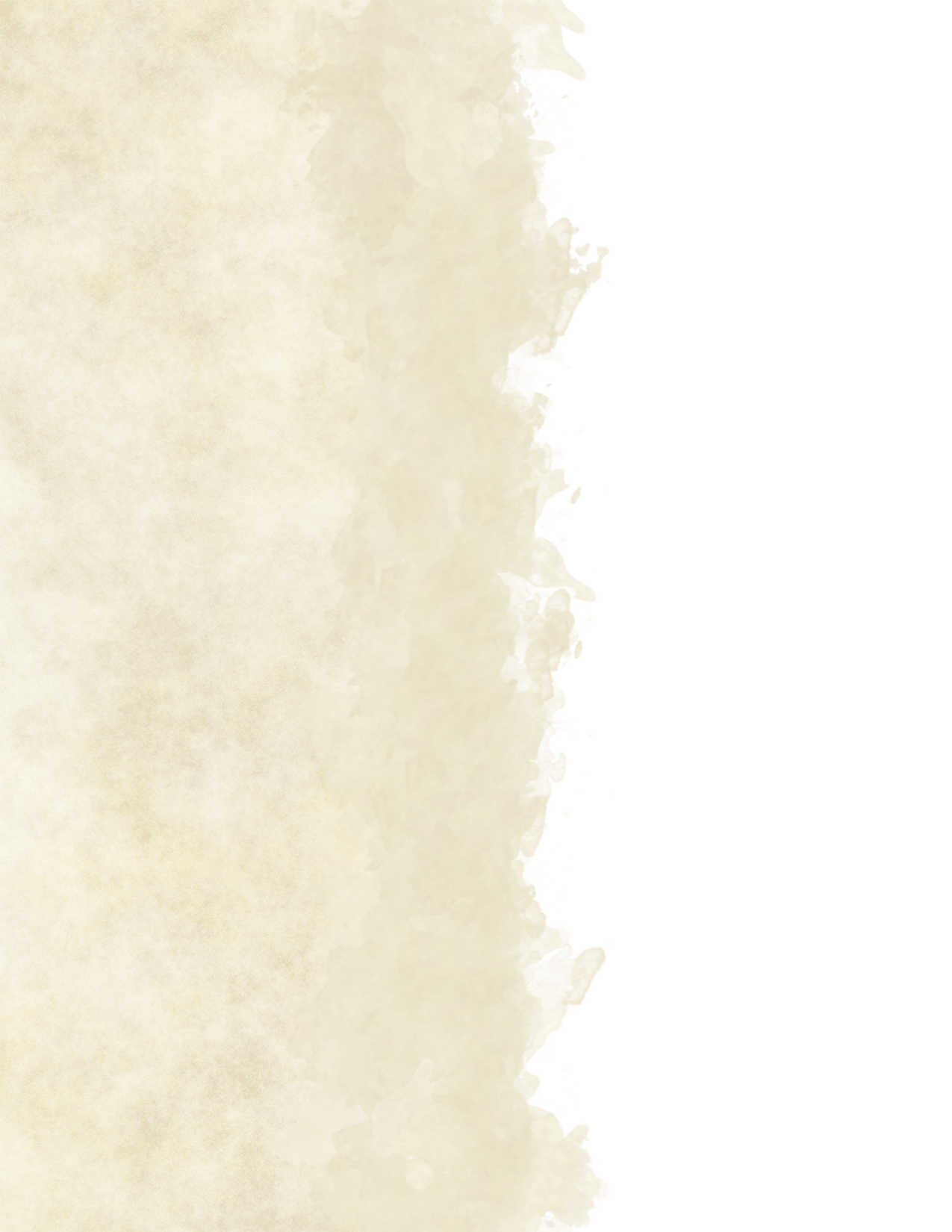

Updated Class Features
This section lists new and updated class features for classes not listed in Section II, or features for multiple classes.
Proficiencies
Some classes gain proficiency in additional items:
- Artificer: Arquebus, handgonne
- Ranger: Herbalism kit or woodcarver's tools
Proficiency in shields, for any class, does not grant proficiency in exotic shields. Barbarians, fighters, paladins, and rangers gain proficiency in one exotic weapon or shield of their choice at 1st level. Multiclassing into those classes does not grant this additional weapon proficiency.
Some straightforward weapons are easy to learn with repeated drills. It takes half as much training time to gain proficiency in the shortspear, light crossbow, spear, hand crossbow, heavy crossbow, arquebus, and handgonne.
Starting Equipment
The Warrior's Codex adds an enormous variety of new gear, and changes many others. For clarity, the starting equipment for each of the thirteen classes in the game at the time of this writing are listed here, adapted for WCX content and rule changes. Some redundancies (such as "(a) a greataxe or (b) any martial melee weapon") have been ommitted.
Artificer
- any two simple weapons of your choice
- a simple ranged weapon and 20 pieces of ammunition
- (a) gambeson or (b) haubergeon
- thieves' tools and a dungeoneer's pack
Barbarian
- (a) any martial melee weapon or (b) an exotic weapon with which you are proficient
- (a) two handaxes or (b) any simple weapon
- An explorer's pack, and four javelins
Bard
- (a) any martial finesse weapon, (b) an arming sword, or (c) any simple weapon
- (a) a diplomat's pack or (b) an entertainer's pack
- (a) a lute or (b) any other musical instrument
- Leather armor, and a dagger
Cleric
- (a) a mace or (b) a warhammer (if proficient)
- (a) haubergeon, (b) leather armor, or (c) hauberk (if proficient)
- (a) a simple ranged weapon and 20 pieces of ammunition or (b) any simple weapon
- (a) a priest's pack or (b) an explorer's pack
- A heater shield or roundshield and a holy symbol
Druid
- (a) a wooden heater shield or (b) any simple weapon
- (a) a scimitar or (b) any simple melee weapon
- Leather armor, an explorer's pack, and a druidic focus
- An herbalism kit
Fighter
- (a) hauberk or (b) leather armor, recurve bow, and 20 arrows
- (a) a martial weapon and a heater shield or roundshield, or (b) two martial weapons
- (a) a ranged weapon and 20 pieces of ammunition, (b) two handaxes, or (c) one exotic weapon with which you are proficient
- (a) a dungeoneer's pack or (b) an explorer's pack
Monk
- (a) any weapon that is a monk weapon for you
- (a) a dungeoneer's pack or (b) an explorer's pack
- one exotic weapon with which you are proficient
- 10 darts
Paladin
- (a) a martial weapon and a shield or (b) two martial weapons
- (a) five javelins, (b) any simple melee weapon, or (c) one exotic weapon with which you are proficient
- (a) a priest's pack or (b) an explorer's pack
- Hauberk and a holy symbol
Ranger
- (a) haubergeon or (b) leather armor
- (a) two light weapons or (b) an exotic weapon with which you are proficient
- (a) a dungeoneer's pack or (b) an explorer's pack
- A ranged weapon and 20 pieces of ammunition
- An herbalism kit or woodcarver's tools
Rogue
- (a) any martial finesse weapon, or (b) an arming sword
- (a) a simple ranged weapon and 20 pieces of ammunition or (b) a shortsword
- (a) a burglar's pack, (b) a dungeoneer's pack, or (c) an explorer's pack
- Leather armor, two daggers, and thieves' tools
Sorcerer
- (a) a simple ranged weapon and 20 pieces of ammunition or (b) any simple weapon
- (a) a component pouch or (b) an arcane focus
- (a) a dungeoneer's pack or (b) an explorer's pack
- Two daggers
Warlock
- (a) a simple ranged weapon and 20 pieces of ammunition or (b) any simple weapon
- (a) a component pouch or (b) an arcane focus
- (a) a scholar's pack or (b) a dungeoneer's pack
- Leather armor, any simple weapon, and two daggers
Wizard
- (a) a quarterstaff or (b) a dagger
- (a) a component pouch or (b) an arcane focus
- (a) a scholar's pack or (b) an explorer's pack
- A spellbook
Battlefield Engineer
1st-level artificer feature
Once per turn when you use your action to load, aim, or fire a siege engine, you can immediately take a second action to load, aim, or fire the same siege engine.
Fighting Style
1st-level fighter feature
2nd-level paladin/ranger feature
You adopt a particular style of fighting as your specialty. Choose one of the following options, or one exclusive to your class such as Blessed Warrior (paladin). You can't take the same Fighting Style option more than once, even if you get to choose again. You choose any one option from the list below regardless of the options ordinarily presented to your class.
Archery
You gain a +2 bonus to ranged weapon attack rolls.
Blind Fighting
You have blindsight with a range of 10 feet. Within that range, you can effectively see anything that isn't behind total cover, even if you're blinded or in darkness. Moreover, you can see an invisible creature within that range, unless the creature successfully hides from you.
Defense
While you are wearing armor, you gain a +1 bonus to AC.
Dueling
When you are wielding a melee weapon in one hand and no other weapons, you gain a +2 bonus to damage rolls with it.
Flexibility
When you are wielding a weapon in one hand and nothing in the other, you gain a +2 bonus to Strength (Athletics) and Dexterity (Acrobatics) checks contested by other creatures. You still gain this benefit if you are holding a creature in that hand. When you are wielding a single weapon with both hands and make an opportunity attack against a target within 5 feet of you, you have advantage on the attack roll.
Great Weapon Fighting
When you roll a 1 or 2 on a weapon damage die for an attack you make with a melee weapon that you are wielding with two hands, you can reroll the die and must use the new roll, even if the new roll is a 1 or a 2. The weapon must have the two-handed or versatile property for you to gain this benefit.
Interception
When a creature you can see hits a target, other than you, within 5 feet of you with an attack, you can use your reaction to reduce the damage the target takes by 1d10 + your proficiency bonus (to a minimum of 0 damage). You must be wielding a shield or a melee weapon, or wearing heavy armor, to use this reaction.
Protection
When a creature you can see attacks a target other than you that is within 5 feet of you, you can use your reaction to impose disadvantage on the attack roll. You must be wielding a shield to use this feature.
Superior Technique
You learn one maneuver of your choice from those available to the Battle Master archetype. If a maneuver requires your target to make a saving throw to resist the maneuver's effects, the saving throw DC equals 8 + your proficiency bonus + your Strength or Dexterity modifier (your choice).
You gain one superiority die, which is a d6 (unless you have larger superiority dice from another source or gain them later, in which case your pool of superiority dice increases by 1). This die is used to fuel your maneuvers. A superiority die is expended when you use it. You regain your expended superiority dice when you finish a short or long rest.
Thrown Weapon Fighting
When you hit with a thrown weapon, you gain a +2 bonus to the damage roll. In addition, the standard and maximum ranges of your thrown weapon attacks increase by a number of feet equal to 10 times your Strength modifier (rather than 5), unless your modifier is negative.
Two-Weapon Fighting
When you engage in two-weapon fighting, you can add your ability modifier to the damage of the second attack.
Unarmed Fighting
Your unarmed strikes deal bludgeoning damage equal to 1d6 + your Strength modifier on a hit. If you aren't wielding any weapons or a shield when you make the attack roll, the d6 becomes a d8. At the start of each of your turns, you can deal 1d4 bludgeoning damage to one creature grappled by you.
Hunter's Mark
2nd-level ranger feature
You learn hunter's mark at 2nd level in this class, which does not count against your number of spells known. You can cast hunter's mark a number of times equal to your Wisdom modifier (a minimum of 1) without expending a spell slot, and regain all expended uses at the end of a short or long rest.
When you cast hunter's mark in this way its duration does not increase, it cannot be transferred to a new target, it no longer requires concentration, and can be cast in the same turn as another spell of first level or higher. You can still use a spell slot to cast it normally.
Magic Item Savant
14th-level artificer feature
At 14th level, your skill with magic items deepens more:
- You can attune to up to five magic items at once.
- You ignore all class, race, spell, level, and alignment requirements on attuning to or using a magic item.
Arcane Firearm
5th-level Artillerist feature
Arcane Firearm works as-written, with the following change:
You can use this feature on an arquebus, handgonne, or weapon with the fire lance modification, as well as on a wand, staff, or rod.

Feats
This section includes both new feats and feats
revised from their existing versions. If an existing feat is written in full, it replaces the original. Otherwise, the text here adds to or adjusts the existing feat without removing the benefits the original version grants.
Bomber
You have steady fingers and a strong throwing arm, granting you the following benefits:
- You gain proficiency in alchemist's supplies, and double your proficiency bonus when you make Intelligence checks made to craft bombs.
- The distance that you can throw a bomb doubles.
- You are immune to the effects of bombs you throw.
- When you throw a bomb, you can use your reaction to grant advantage on the saving throw against it to a number of creatures equal to your proficiency bonus.
- The saving throw DC of bombs you make is equal to 8 + your proficiency bonus + your Intelligence modifier, unless the bomb's DC is higher.
Brawny
Brawny works as-written, with the following change:
You count as one size larger when determining your carrying capacity, the weight you can push, drag, or lift, and the creatures you can grapple or shove, as well as when tossing another creature. If a weapon, shield, or suit of armor you use has a Strength requirement, the requirement is reduced by 2.
Charger
Once per turn when you or a mount you're riding on move at least 15 feet in a straight line, you gain the following benefits
until you hit a target with a melee attack,
you or your mount move again, or your turn ends:
- When you shove a creature, you push it an extra 5 feet.
- You gain a +5 bonus to the damage of next melee attack you make.
Crossbow Expert
Crossbow Expert works as-written, with the following change:
You ignore the loading property of ranged weapons with which you are proficient.
Crusher
Crusher works as-written, with the following addition:
You must exceed the target's AC by 3 or more, rather than 5 or more, to trigger the staggering property.
Defensive Duelist
Prerequisite: Dexterity 13 or higher
When you are wielding a weapon with the parry property with which you are proficient, you gain the following benefits:
- You add your entire proficiency bonus to your AC, rather than half, when you parry an attack.
- You can parry ranged attacks made by other creatures, as well as melee.
- When you successfully parry an attack, you can attempt to parry any subsequent attacks from the same attacker without using a reaction until the end of the current turn.
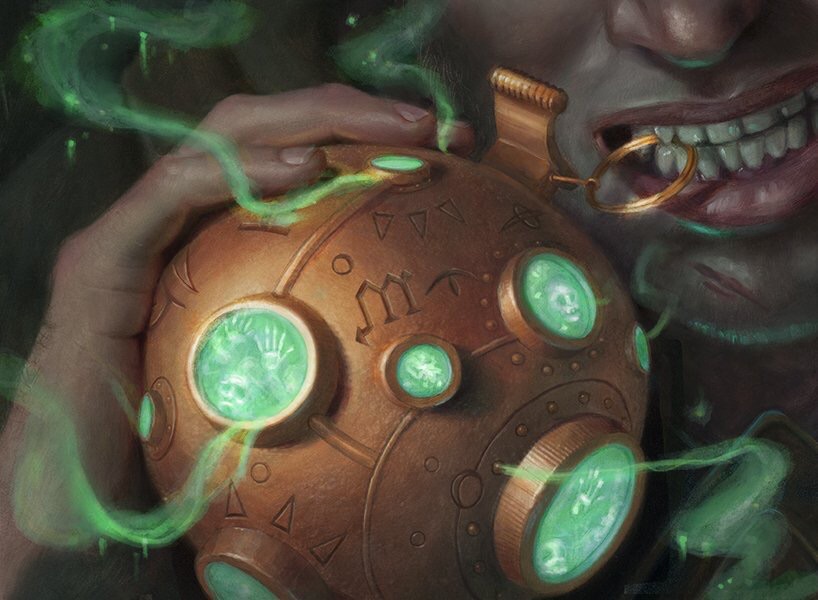

Dual Wielder
You master fighting with a weapon in each hand, gaining the following benefits:
- Your Strength or Dexterity score increases by 1, to a maximum of 20.
- While holding a weapon in each hand, your speed increases by 5 feet and your AC increases by 1.
- You can engage in two-weapon fighting even if the weapon you use to make the additional attack isn't light.
- When you engage in two-weapon fighting, each weapon has a damage die of 1d8, unless it uses a larger die or multiple damage dice.
- You can draw or stow two one-handed weapons when you would normally be able to draw or stow only one.
Elemental Adept
Choose one of the following damage types: acid, cold, fire, lightning, or thunder. Your attacks, spells, and features ignore resistance to damage of that chosen type. In addition, when you roll a 1 on a damage die of that damage type, you can treat it as a 2.
You can select this feat multiple times. Each time you do so, you must choose a different damage type.
Grappler
You've developed the skills necessary to hold your own in close-quarters combat. You gain the following benefits:
- You have advantage on attack rolls against a creature you are grappling.
- Pin. You can use your action to try to pin a creature grappled by you. To do so, make another grapple check. If you succeed, you and the creature are both prone, and the creature is restrained, until the grapple ends.
- Seize. If you use two free hands to grapple a creature instead of one, you have advantage on checks made to prevent the target from escaping the grapple.
- Silence. If you have a second hand free when grappling a creature, you can expend one of your attacks when you take the Attack action to attempt to cover the target's mouth. To do so, make another grapple check. If you succeed, the creature cannot speak until you remove your hand from its mouth or the grapple ends. Using two hands in this way does not grant advantage on checks to made to maintain the grapple as detailed above.
- Slam. When you shove a creature that you are grappling prone, it takes bludgeoning damage equal to your Strength (Athletics) bonus.
Great Weapon Master
You've learned to put the weight of a weapon to your advantage, letting its momentum empower your strikes. You gain the following benefits:
- On your turn, when you score a critical hit with a melee weapon or reduce a creature to 0 hit points with one, the weapon you used gains the sweeping property until you make another attack with it.
- Before you make a melee attack with a heavy weapon that you are holding in both hands,
you can choose to take a -5 penalty to the attack roll. If the attack hits, you add +10 to the attack's damage.
Gunner
You have a quick draw and a keen eye, granting you the following benefits:
- Increase your Dexterity score by 1, to a maximum of 20.
- You gain proficiency with the arquebus and handgonne.
- You no longer have to use your action or expend an attack to reload a gunpowder weapon.
- Being within 5 feet of a hostile creature doesn't impose disadvantage on your ranged attack rolls.
Heavy Armor Master
Prerequisite: Proficiency with heavy armor.
You can use your armor to deflect strikes that would kill others. Your Strength score increases by 1, to a maximum of 20, and the damage reduction you gain from heavy armor increases by 3.
When a creature hits you with a melee weapon attack while you're wearing heavy armor, you can use your reaction to attempt to disarm the creature of that weapon. If your armor reduced the damage to 0, you have advantage on the check.
Kitbasher
Your mastery of specialized instruments allows you to improvise tools from scraps. You gain the following benefits:
- Your Strength, Dexterity, or Intelligence score increases by 1, to a maximum of 20.
- You gain proficiency in one set of artisan's tools of your choice, or your proficiency bonus is doubled when you make checks with one set of artisan's tools that you are already proficient in.
- If you spend an hour gathering debris and assembling pieces, you can create a functional substitute for any tool or set of tools other than gaming sets, musical instruments, or vehicles. You or another creature can make a number of ability checks equal to your proficiency bonus with these tools before they become unusable.
Light Armor Master
Prerequisite: Proficiency with light armor
You can balance protection with impressive agility, granting you the following benefits:
- Your Dexterity score increases by 1, to a maximum of 20.
- Your speed increases by 5 feet when you aren't wearing medium or heavy armor.
- Once on your turn, you can choose not to provoke opportunity attacks when you move 5 feet in any direction if you are wearing light armor.
Mage Slayer
Mage Slayer works as-written, with the following changes:
- You can use your reaction to attack a creature casting a spell before or after the spell takes effect.
- You can make this attack against a creature that casts a spell when in your reach, rather than within 5 feet.
Medium Armor Master
Prerequisite: Proficiency with medium armor
You have mastered maneuvering in medium armor, gaining the following benefits:
- You don and doff medium armor in 1/4 the time.
- Wearing medium armor doesn't impose disadvantage on your Dexterity (Stealth) checks.
- If you are struck by a critical hit while wearing medium armor, you can use your reaction to can make a Dexterity saving throw and attempt to redirect the worst of the impact to the thickest parts of your armor. The DC equals 10 or half the damage dealt, whichever number is higher. On a success, the damage you take is halved.
Mounted Combatant
Mounted Combatant works as-written, with these additions:
- So long as the mount you are riding is a controlled, nonmagical beast, you can use your bonus action to allow it to take the Attack action (one attack only).
- When you use the cavalry property of a weapon to deal additional damage, the weapon also gains the sweeping property.
Orcish Fury
Prerequisites: Half-Orc, Orc
Orcish Fury works as-written, with the following changes:
- You can add extra damage dice to attacks with any weapon, not just simple or martial.
- You add all of the weapon's damage dice, instead of one.
Piercer
Piercer works as-written, with the following addition:
You must exceed the target's AC by 3 or more, rather than 5 or more, to trigger the skewering property.
Polearm Master
Polearm Master works as-written, with the following changes:
- This feat's benefits can also be used while wielding a shortspear, staff sling, boar spear, spear, guisarme, lucerne, pike, pollaxe, or ranseur.
- You can only use the bonus action attack granted by this feat if you are wielding the weapon in both hands, unless the weapon has the butt spike modification (see Part III).
Powder Mage
Prerequisite: The ability to cast at least one spell
You have combined magical power and gunpowder chemistry, which grants you the following benefits:
- You gain proficiency with the handgonne and arquebus, which you can use as a spellcasting focus.
- When you roll damage for a spell that deals fire or thunder damage, you can expend 1 charge of powder on your person to roll one additional damage die for that fire or thunder damage roll and add it to the total.
- You can magically sense containers and items filled with gunpowder within 120 feet of you. You can use an action to cause one such item to discharge or explode, as if it had taken fire or lightning damage.
Sharpshooter
Sharpshooter works as-written, with the following change:
The benefits this feat grants to ranged weapons also apply to attacks you make by throwing a weapon with the thrown property, and siege weapons that you help load, aim, or fire.
Shield Master
You use shields for both protection and offense. You gain the following benefits while you are wielding a shield:
- You can use your bonus action to attempt to shove a creature within reach with your shield.
- If you aren't incapacitated, you add your shield's AC bonus to Dexterity saving throws.
- If you are subjected to an effect that allows you to make a Dexterity saving throw to take only half damage, you can use your reaction interpose your shield between yourself and the effect. So long as the effect does not go around corners, you take no damage on a successful save.
Slasher
Slasher works as-written, with the following addition:
You must exceed the target's AC by 3 or more, rather than 5 or more, to trigger the slicing property.
Unstoppable
You can shift others with ease, but moving you requires monumental effort. You gain the following benefits:
- Your Strength or Constitution score increases by 1, to a maximum of 20.
- When you win a contested check to avoid being shoved or grappled, you can shove the creature that initiated the contest 5 feet away from you.
- When you are subjected to an effect that would move you, knock you prone, or both, you can use your reaction to be neither moved nor knocked prone.
Weapon Master
You have practiced extensively with a variety of weapons. Your Strength or Dexterity score increases by 1, to a maximum of 20, and you gain one of the proficiencies below:
- Four simple or martial weapons
- Two simple or martial weapons, and one shield
- Two simple or martial weapons, and one exotic weapon
- Two exotic weapons
- One exotic shield
Feat Bonuses
Some feats now increase one of your ability scores by 1, to a maximum of 20, when you take them. If a feat below lists multiple ability scores, it grants a benefit to one ability score of your choice.
- Dungeon Delver: Intelligence or Wisdom
- Inspiring Leader: Charisma
- Savage Attacker: Strength or Dexterity
- Skulker: Dexterity or Wisdom
Combat Rules
This section contains adjusted rules for combat and the actions that can be taken during combat, as well as fights in specific situations and conditions that can be inflicted on both players and enemies.
Intentional Failures
Before you roll an ability check or saving throw using an ability score other than Constitution, you can choose to fail instead. You can also choose to allow an attack to hit you.
Making an Attack
Drawing and Stowing Weapons
Stowing a weapon requires the object interaction you receive as part of your turn. You can draw a weapon as part of the attack you make with that weapon, provided you have a hand to hold it (or both hands, for two-handed weapons).
Melee Attacks
This section details adjustments and additional options for close-range combat, such as grappling and fighting with certain types of weapons.
Disarm
Disarming works as-written, with the following change:
When you disarm a creature, you can pick up the object (no action required) if you have at least one free hand, or kick, toss, or otherwise move the weapon a number of feet equal to 5 + your reach or the reach of the weapon you used.
Grappling
When you want to grab a creature or wrestle with it, you can use the Attack action to make a special melee attack, a grapple. If you’re able to make multiple attacks with the Attack action, this attack replaces one of them.
The target of your grapple must be no more than one size larger than you, and it must be within your reach. Using at least one free hand, you try to seize the target by making a grapple check, a Strength (Athletics) check contested by the target’s Strength (Athletics) or Dexterity (Acrobatics) check (the target chooses the ability to use). If you succeed, you subject the target to the grappled condition (see below). The condition specifies the things that end it, and you can release the target whenever you like (no action required).
Escaping a Grapple. A grappled creature can use its action to escape. To do so, it must succeed on a Strength (Athletics) or Dexterity (Acrobatics) check contested by your Strength (Athletics) check.
Moving a Grappled creature. When you move, you can drag or carry the grappled creature with you, but your speed is halved, unless the creature is two or more sizes smaller than you. You can use the Shove action to move a creature that you have grappled to another space within your reach without breaking the grapple.
Attacking a Grappling Creature. When another creature has grappled you, you can choose to attack the appendage it used to grapple you rather than the creature itself (which can be useful when the grappler is outside your reach). The appendage has the same statistics as its owner, unless the appendage's statistics are listed separately (see roper, Monster Manual page 261). When you attack the appendage of a grappling creature instead of the creature itself, the damage you deal is halved.
Tossing a Creature
A new variant action, along with Overrun, Disarm, Tumble, Climb onto a Bigger Creature, etc.
When you are grappling a creature, you can use the Attack action to make a special melee attack to hurl the grappled creature. If you can make multiple attacks with the Attack action, this attack replaces one of them.
To Toss another creature, you must make a successful Strength (Athletics) check, with the DC determined by both your size and the size of the other creature, as below. If you succeed, you throw the creature a distance up to 5 times your Strength modifier + 5 in feet. When it hits a surface, the thrown creature takes bludgeoning damage for every 10 feet it traveled while thrown, as if it had taken damage for falling from a height of the same distance. If you throw the creature a shorter distance, it takes falling damage as if you had thrown it the full distance.
The tossed creature lands prone unless it succeeds on a Dexterity (Acrobatics) check with a DC equal to the Strength (Athletics) check used to toss, or uses a feature or spell (such as feather fall) to land safely.
Toss DCs
The larger a creature, the higher the DC to throw it:
| Size | DC |
|---|---|
| Tiny | 5 |
| Small | 11 |
| Medium | 17 |
| Size | DC |
|---|---|
| Large | 23 |
| Huge | 29 |
| Gargantuan | 35 |
The larger you are, the easier it is to throw other creatures. The opposite holds true if you are smaller. The DCs to toss another creature increase by 5 if your size is Small, and 10 if your size is Tiny. They decrease by 5 if your size is Large, by 10 if your size is Huge, and by 15 if your size is Gargantuan.
No upper limit exists on the size of Gargantuan creatures, so the Dungeon Master sets the DC to Toss a Gargantuan creature based on that particular creature's size.
Two-Weapon Fighting
Once on your turn when you take the Attack action and attack with a melee weapon or make a special melee attack such as a grapple or shove against a creature using one hand, you can make one additional attack using a melee weapon with the light property that you're holding in the other hand. You don't add your ability modifier to the damage of the bonus attack, unless that modifier is negative. You cannot make this additional attack if you have already engaged in versatile fighting in the same turn.
Versatile Fighting
Once on your turn when you take the Attack action and make a special melee attack such as a grapple, shove, or toss against a creature using one hand, you can make one additional attack using a melee weapon with the versatile property that you're holding in the other hand. You make the attack with one hand on the weapon, even if you still have a free hand. You cannot make this additional attack if you have already engaged in two-weapon fighting in the same turn.
Special Attacks and Multiattack
A monster with the Multiattack feature can replace any of the weapon attacks specificed in its Multiattack feature with special attacks such as a Grapple, Shove, or Toss, rather than replacing its entire Attack action to make such a special attack.
Combat Scenarios
This section revises and expands situations common in combat such as entering and exiting difficult positions.
Falling Damage
When a Large or larger creature falls, it can fall an additional five feet for every Size Category above Medium before it takes damage upon landing. For example, a Large creature takes falling damage after 15 feet, and a Gargantuan creature after 25 feet.
When a creature lands after falling, it takes one die of bludgeoning damage for every 10 feet it fell, to a maximum of 150 dice.
When a creature falls, it instantly descends up to 500 feet, and falls at the end of each of its turns until it lands. It lands prone unless it took no falling damage.
The damage dice rolled when a creature falls change based on the size of the creature falling, listed below:
| Size | Die |
|---|---|
| Tiny | 1 |
| Small | d4 |
| Medium | d6 |
| Size | Die |
|---|---|
| Large | d8 |
| Huge | d10 |
| Gargantuan | d12 |
For example, a Large owlbear takes no damage if it falls 14 feet. If it falls 15 feet, then it takes 1d8 bludgeoning damage. It takes 2d8 bludgeoning damage if it falls 20 feet.
Likewise, a Huge fire giant takes no damage if it falls 19 feet. It takes 2d10 bludgeoning damage if it falls 20 feet.
Getting Up & Movement
Standing from prone expends 15 feet of movement, regardless of your speed. If you have less than 15 feet of movement, it takes all your movement to mount, dismount, or stand up. If your speed is 0, you cannot do so.
Knocking a Creature Out
Before you make a melee attack with a weapon, you can declare your intent to incapacitate, rather than kill. If the attack hits, it deals bludgeoning damage equal to 2 + your Strength modifier instead of the weapon's normal damage. If the weapon has the nonlethal property, it does its full damage instead. If the attack reduces the target to 0 hit points, it falls unconscious and is stable.
A ranged weapon, thrown weapon, or piece of ammunition with the nonlethal property can be used to knock a creature out using a ranged attack, instead of melee.
Some effects add additional damage. An attack with such benefits cannot knock a creature out unless the weapon has the nonlethal property and the bonus feature deals the same damage type as the weapon (like Sneak Attack). Effects that deal bonus damage of a different type (like the banishing smite spell) cannot be used to knock a creature out.
No spell can be used to deal nonlethal damage unless it states such in the spell's description, even if the spell deals bludgeoning damage.
Using a Potion
You can both draw and administer a potion to yourself or another creature with the Activate an Item action. When you draw and drink a potion yourself, you can take the Activate an Item action as a bonus action.
Using a Scroll
If you can read the language used to write a spell scroll, you can use it to cast a spell, even if the spell is not on your spell list, is of a level that you cannot normally cast, or you are ordinarily incapable of casting spells.
Mounted Combat
A willing creature at least one size larger than you with appropriate anatomy can serve as a mount.
Mounting and Dismounting
During your turn, you can mount a creature within 5 feet of you, or dismount. Doing so costs 15 feet of movement. If an effect moves your mount involuntarily or you are knocked prone while you're on it, you must succeed on a DC 10 Dexterity saving throw or fall off the mount, landing prone in a space within 5 feet. If your mount is knocked prone, you can use your reaction to dismount as it falls and land on your feet. Otherwise, you fall prone within 5 feet of it.
Mount Control
While mounted, you can control a mount that has been trained to accept a rider, or allow it to act independently. Intelligent creatures, such as dragons, always act independently. While controlling a mount, you cannot move except to dismount.
Instead, your mount moves both of you as you direct it during your turn, carrying you with it. Your mount can take an action at any time during your turn, but can only Dash, Disengage, or Dodge.
An independent mount retains its place in initiative order. Bearing a rider puts no restrictions on the actions an independent mount takes, and it moves and acts as it wishes.
In either case, if the mount provokes an opportunity attack while you're on it, the attacker can target you or the mount.
Saddles and Skills
When your mount takes the Dash action, you must succeed on a DC 10 Strength (Animal Handling) or Dexterity (Animal Handling) check in order to remain on the horse. On a failure, you are knocked prone, falling off the mount as above. If your mount is frightened, the DC of both the check and the saving throw increase by 5.
Certain saddles give bonuses to these checks and saves, as detailed in Part V. Riding bareback imposes disadvantage on all checks and saving throws to remain mounted.
Underwater Combat
When fighting underwater, you have disadvantage on melee weapon attack rolls unless you use a dagger, javelin, shortspear, harpoon, trident, or natural weapons with which you are proficient. You suffer disadvantage even if you use one of those weapons if you do not choose to deal piercing damage.
You can only make a ranged weapon attack if you use a crossbow, net, or harpoon. Any attack beyond a weapon's normal range misses automatically.
A fully-submerged creature has resistance to fire damage, and vulnerability to lightning damage if it doesn't have resistance or immunity to lightning damage.
Unless you can breathe underwater, you cannot cast any spell with a Verbal component.
Conditions
Most conditions are unchanged, but this section includes a few tweaks to make the effects of said conditions less arbitrary and more consistent.
Exhaustion
Exhaustion works as written, with the following changes:
- When your HP drops to 0, you gain a level of exhaustion.
- You can remove the first level of exhaustion, and only the first level, at the end of a short rest. If you have two or more levels, you must complete a long rest to remove one.
Paralyzed
Paralysis works as-written, with the following changes:
- The creature automatically fails Strength and Dexterity checks in addition to saving throws.
- Any melee attack that hits the creature is a critical hit.
Petrified
Petrified works as-written, with the following change:
- The creature automatically fails Strength and Dexterity checks in addition to saving throws.
Prone
Prone works as-written, with the following change:
- Melee attack rolls against a prone creature are made with advantage.
- Ranged attack rolls against the prone creature have disadvantage, unless the attacker is elevated at least 15 feet above the target. Ranged attack rolls also have advantage if the attacker is at least 25 feet above it.
Stunned
Stunned works as-written, with the following change:
- The creature automatically fails Strength and Dexterity checks in addition to saving throws.
Unconscious
Unconscious works as-written, with the following changes:
- Attack rolls against an unconscious creature have advantage, and any melee attack that hits the creature is a critical hit.
- The creature automatically fails Strength and Dexterity checks in addition to saving throws.
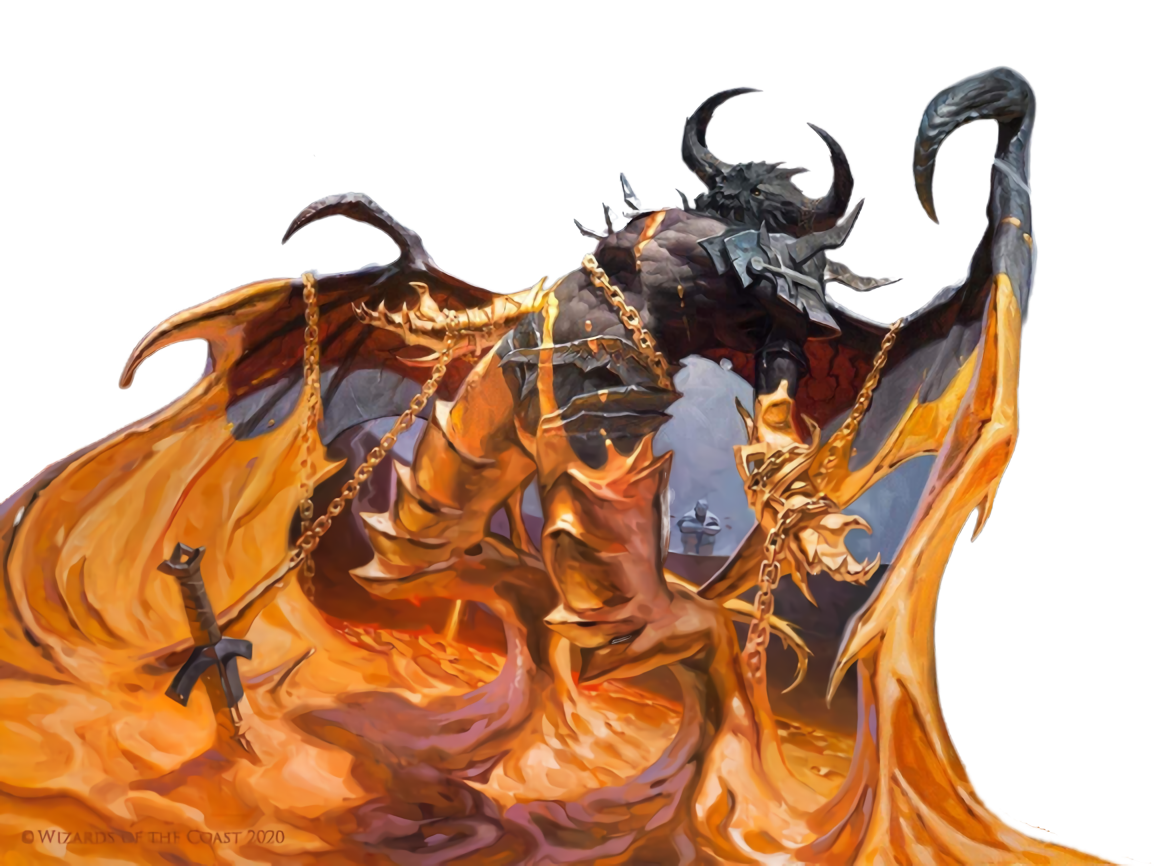
PART V
Items

Mid-Adventure Crafting
When to use these rules
5e has serviceable crafting rules—for downtime. Those rules don't fit all campaigns, as many can't find time for downtime. These rules are to be used in those circumstances, with time measured in hours and days instead of weeks—and that timeframe only. Use downtime rules for crafting during longer periods; if the party rests for three months or more, use Xanathar's Guide to Everything. If they stop for three weeks, a night, or five days, use these.
Crafting Point Values
In this system, all items require a certain number of points. An item is worth a number of points equal to its value in gold pieces divided by 50. If the item's gold price is not divisible by 50, divide it and round its point value down to the nearest whole number (minimum 1 point). When you begin work on an item, it has 0 points, and you finish crafting it when you exceed its point value with a crafting check.
If you have a feature that allows you to create items with reduced time or cost, in this system you gain 2 points for each hour of successful crafting instead of 1.
Requirements to Craft
To craft an item, you must have proficiency in the appropriate tool or kit, listed below. That list is not exhaustive and your DM ultimately decides what you can craft. Proficiency in a tool grants you the knowledge to create the items on the table without requiring a recipe or formula. For potions and magical item recipes, use the Crafting a Magical Item rules in Xanathar's.
You must also possess abstracted raw materials worth half the item's listed price before you begin crafting. You must have access to those materials until the item is completed, at which point they are consumed. You cannot use those materials on another item while the first is in progress.
Prelude to Crafting
To work on an item, you must meet all the requirements listed above, choose the item, and declare a number of hours between one and eight. That period represents the amount of time your character spends crafting. You cannot work more than eight hours between any two long rests. If you are interrupted or quit crafting for 1 hour or more during your declared interval, you automatically fail your crafting check.
The Crafting Check
After you finish working the declared timeframe, you make an Intelligence check, which are you are proficient in thanks to your tools. The DC for this check equals 18 - the number of hours you work. If you work for eight hours, the DC becomes 10. If you work for three, the DC is 15, and so on.
If you succeed, the item-in-progress gains a number of points equal to the number of hours worked and adds them to its current total. If you fail, you add no points, though the item does not lose any points it already has.
If you don't finish the item within your allotted time, it retains the points you have successfully applied to it, and you can add additional points with further crafting checks until the item is completed.
Finishing Early & Multiple Items
If you exceed the number of points required to make an item, you may not begin another one with the remaining time. A crafting check encompasses the entire period you allotted to work. Finishing with an excess of points represents extra time spent to avoid and correct mistakes. Extra points do not increase an item's value or confer any other benefit.
A crafting check represents your work with a single item. You work on one at a time. Even if the points you accumulated exceeded the monetary value of the item you work on, you can only craft that item during the time you allotted. For example, a dagger is worth 2 gp, and 2/50=0.04, but it is still worth one point, and takes an hour minimum. If you allot four hours, you cannot create four daggers. You create one. If you want to make four daggers in four hours, you must allot an hour for the first dagger, make the check, and if you succeed, move on. If you fail, you can allot another hour to try again, or move on to another project. You do not have to choose all your items and times before you begin your first crafting check; you can allot any new times after you finish your first, but cannot exceed 8 total hours worked in a day. You cannot change a duration after it begins, or the item crafted after the check resolves.
Other Uses
A damaged item starts with half its total points. You can make crafting checks to restore its point total and repair it if you are proficient in the appropriate kit or tinker's tools. The material cost to repair a damaged item is half its total value.
If you are a ranger, you can research your favored enemies to learn any statistic, such as an ability score, AC, or a random feature, of one such creature that you have seen. The creature has a point value equal to its CR. When you reach that point value with "crafting" checks (requiring no materials) you learn that information.
Tool-specific Rules
Some kits can be transported and used as-written in the PHB and XGtE but are too large to craft items while on the move. Those kits are marked with a * on the next page. Artistic items, such as jewelry, can be sold for 1d4*10% more than their written price. For example, if an item with a listed price of 200 gp and a material cost of 100 gp is art, it can be sold for 220-280 gp. Items marked with † are art.
Examples
Annie, a rogue with proficiency in tinker's tools, would like to create an arquebus. They cost 500 gp, so she buys the necessary supplies for 250 gp. She has six hours to spare after the party makes camp, and allots it all to one crafting check. She makes the check (DC 12) and rolls a 15. Success! The in-progress arquebus has 6 points, but requires 10. The next night, Annie has two hours. She rolls her crafting check (DC 16) with a result of 10, and fails. She must try again later.
Yarldrit, a forge cleric, would like a new set of plate. He must wait until the party returns to town, where he keeps a forge. The party returns, and plans to stay there a month. He can work up to eight hours every day he's in town, so long as he remains at his forge for the allotted times. If he doesn't finish before the party leaves, he can continue later.
Or, he can cast fabricate and be done in 10 minutes.
Tools and Corresponding Items
| Tools | Items |
|---|---|
| Alchemist | Acid vial, alchemist's fire, antitoxin, oil, perfume, soap; bombs, potions |
| Brewer* | Oils; alcoholic beverages† |
| Calligrapher | Scrolls; calligraphy† |
| Carpenter | Wooden weapons, ammunition, and shields; wooden structures and furniture† |
| Cartographer | Maps† |
| Cobbler | Shoes† |
| Cook | Food† |
| Disguise | Costume clothes |
| Forgery | Scrolls, False documents† |
| Glassblower | Any glass object† |
| Herbalism | Potions of healing, herbal mixtures |
| Jeweler | Decorated mod, jewelry†, silvered weapons |
| Painter | Decorated mod, eye black, war paint, paintings† |
| Poisoner | Poisons |
| Potter* | Clay pottery |
| Leatherworker | Furred, guige mod; leather armor and weapons |
| Mason | Stone armor & weapons, statuary†, carvings† |
| Scrimshander | Simple and martial bone melee weapons, carvings†, jewelry† |
| Smith* | All modifications, weapons, armor, shields, and ammunition made of iron or steel |
| Tinker | Arquebus, crossbows, handgonne, bullets, bayonet, poison reservoir, repeater, scope, second barrel |
| Weaver* | Nets; Common clothes, fine clothes†, traveler's clothes, textiles† |
| Woodcarver | Penobscot arms mod; wooden weapons and ammunition; statuary†, carvings† |
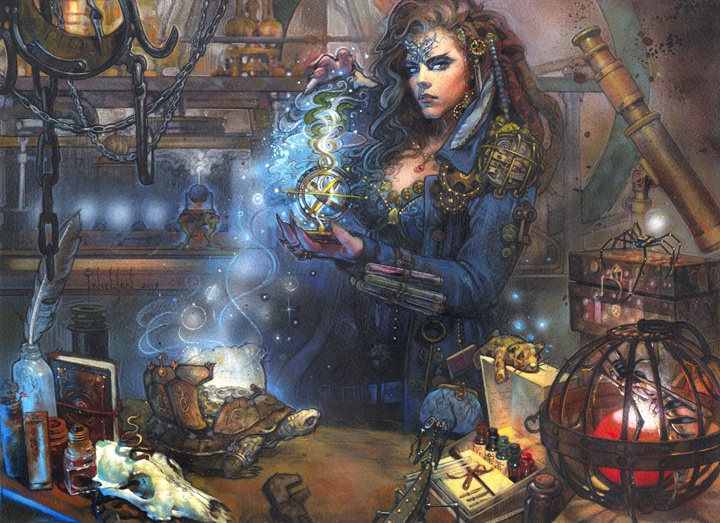

Adventuring Gear
Included in this section are other items that PCs might employ in combat. They are not weapons, and each possess their own unique properties and traits. Items without an aggressive combat use has been omitted, as they have not been changed.
If a piece of gear requires you to make an attack roll, you do not add your proficiency bonus to the roll unless you are proficient in improvised weapons. If you have the Extra Attack feature, you can expend one attack to use an item instead of taking the Use an Item action.
If a piece of gear can be thrown, it has the thrown property and a range of 20/60. You add your Dexterity modifier to attack rolls with thrown gear, and nothing to damage.
Gear
| Name | Cost | Weight | Properties & Damage |
|---|---|---|---|
| Acid Vial | 25 gp | 1 lb. | 2d6 acid, thrown |
| Alchemist's Fire | 50 gp | 1 lb. | 1d4 fire, thrown |
| Ball Bearings | 1 gp | 2 lb. | - |
| Caltrops | 1 gp | 2 lb. | 1 piercing |
| Flour | 2 cp | 1 lb. | 2d6 fire, thrown |
| Grappling Hook | 2 gp | 4 lb. | 1 piercing, thrown |
| Holy Water | 25 gp | 1 lb. | 2d6 radiant, thrown |
| Hunting Trap | 5 gp | 25 lb. | 1d10 prce, skewering |
| Manacles | 2 gp | 6 lb. | - |
| Oil Flask | 1 sp | 1 lb. | 5 fire, thrown |
| Powder Apostle | 3 gp | 2 oz. | gunpowder |
| Powder Horn | 35 gp | 2 lb. | 3d6 fire, gunpowder |
| Powder Keg | 300 gp | 20 lb. | 6d6 fire, gunpowder |
| Powder Barrel | 1000 gp | 100 lb. | 12d6 fire, gunpowder |
| Salt | 4 sp | 1 lb. | - |
| Torch | 1 cp | 1 lb. | 1 fire, light |
| War Paint | 1 gp | — | - |
Acid Vial. As an action, you can splash the contents of this vial onto a creature or throw the vial, making a ranged attack roll against a creature of your choice within range. On a hit, the target takes 2d6 acid damage. This acid does doubled damage to objects. If you empty the contents of this vial onto an object within 5 feet, the attack automatically hits.
Alchemist's Fire. This sticky, adhesive fluid ignites when exposed to air. As an action, you can throw this flask at a creature, which causes it to shatter on impact. On a hit, the target takes 1d4 fire damage at the start of each of its turns. A creature can end this damage by using its action to make a DC 10 Dexterity check to extinguish the flames. If a creature is vulnerable to fire damage it has disadvantage on this check, and the DC is increased to 15 for it.
Ball Bearings. As an action, you can spill these tiny metal balls from their pouch to cover a level area 10 feet square. A creature moving across the covered area must succeed on a DC 10 Dexterity saving throw or fall prone. A creature moving through the area at half speed doesn't need to make the saving throw. Creatures that fly, jump, or hover over the area are unaffected by the ball bearings.
Caltrops. You can use an action to spread a single bag of caltrops to cover a 5-foot-square. Any creature that enters the area must succeed on a DC 15 Dexterity saving throw or stop moving and take 1 piercing damage. Until the creature regains at least 1 hit point, its walking speed is reduced by 10 feet. A creature moving through the area at half speed doesn't need to make the saving throw.
Improvised collections of sharp items, such as broken glass, can be used as caltrops. Creatures that fly, jump, or hover over the space are unaffected by the caltrops.
Flour. You can use an action to throw a bag of flour, which ruptures on impact. The cloud of powder fills a 10 foot cube, which lingers in the air for 1 minute. Any creature or object in the cloud can’t benefit from being invisible while inside. If the flour cloud takes fire damage or touches flames, it deals 2d6 fire damage to all creatures within the cloud and is destroyed.
Coal, sawdust, coffee, pollen, magnesium powder, and other flammable materials can be used in place of flour.
Grappling Hook. If this sharp metal hook is tied to a rope, you can throw it at an object or creature, making an improvised ranged attack roll against the creature or the AC of the object's material. You can then pull the rope to drag the target, as if you were grappling it (though the target is not grappled). If the target is too for large you to grapple, you can attempt to climb the rope instead. A creature can use its free object interaction on its turn to remove the hook from the target it's attached to. You can attempt to shove a creature or object attached to this hook. If you succeed, you pull the target 5 feet toward you, rather than away.
Holy Water. Throwing this flask causes it to shatter on impact. Make a ranged attack against a target. If the target is a fiend or undead, it takes 2d6 radiant damage.
Hunting Trap. You can use an action to set this trap in an unoccupied space, which is comprised of a pressure panel and heavy iron jaws affixed to the ground by a spike and chain. When a creature walks through its 5ft. space, the trap makes a melee attack against that creature. The trap has +8 to hit and deals 1d10 piercing damage, and if it hits the target is grappled (escape DC 15). Whether the attack hits or misses, the trap cannot make a second attack until the creature escapes and the trap is set again. Failing the check to escape by 5 or more deals an additional 1d10 piercing damage to the trapped creature.
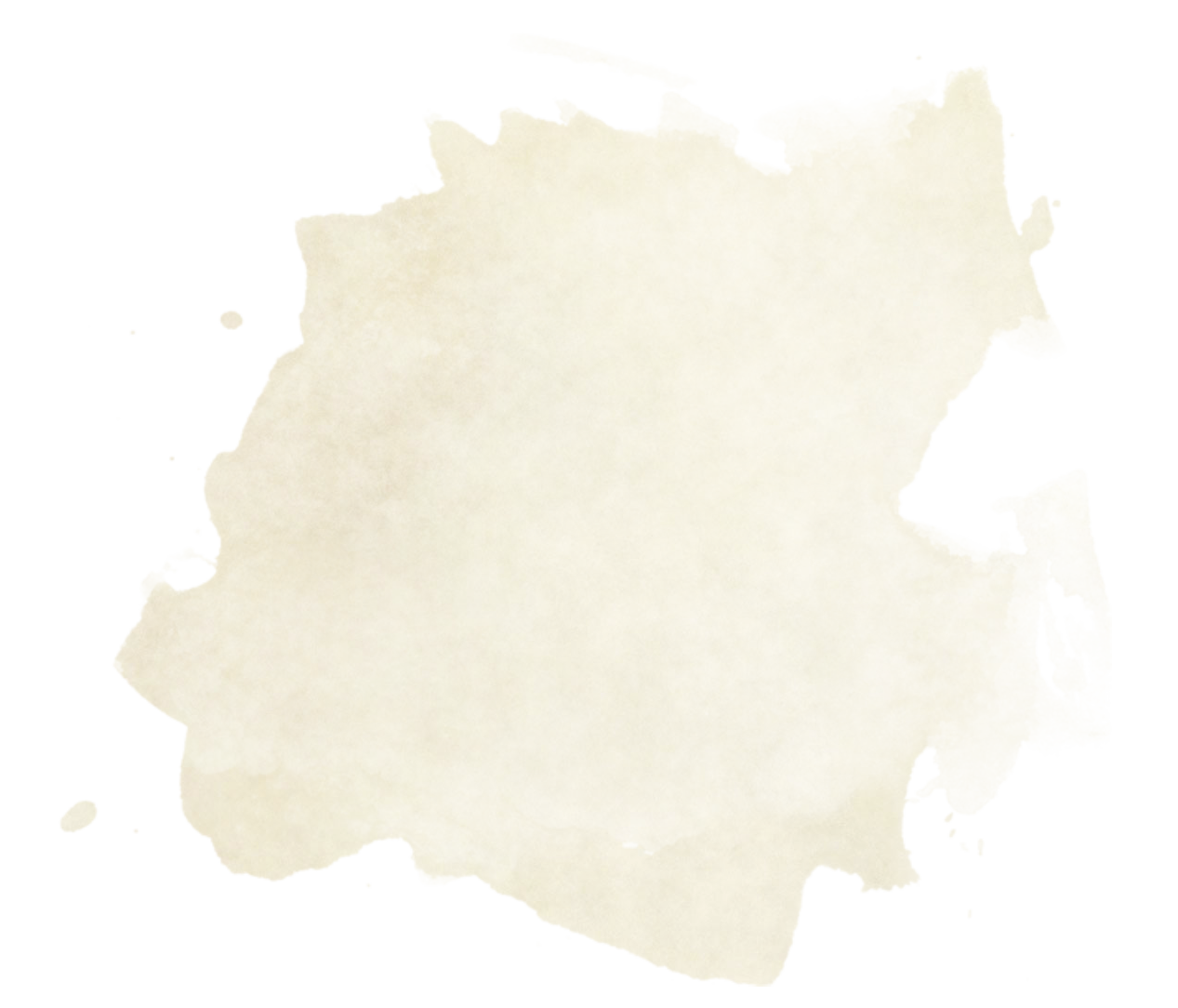
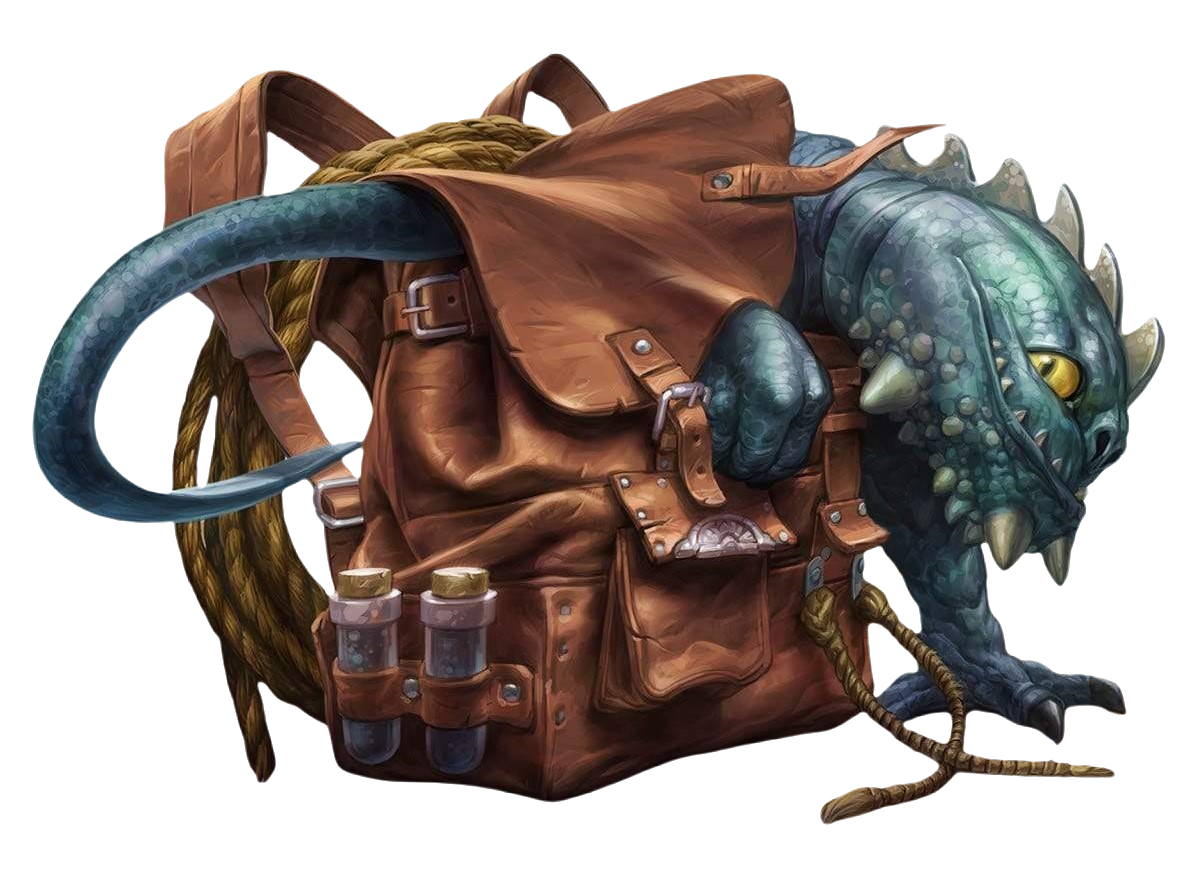
Manacles. These iron restraints can bind a Small or Medium creature. A conscious, unwilling creature must be grappled or incapacitated before manacles can be applied to it. Escaping manacles requires a DC 20 Dexterity check to slip out, or a DC 20 Strength check to break. Each set of manacles comes with one key. Without the key, a creature proficient with thieves' tools can pick the manacles' lock with a successful DC 15 Dexterity check. A creature with manacles on both wrists cannot perform the somatic components of spells and has disadvantage on attack rolls that require its hands, and a creature with manacles applied to both ankles has a walking speed of 10 feet. Manacles may impose other restrictions at the discretion of the DM.
Oil Flask. You can use an action to make a ranged weapon attack and throw this flask of flammable oil onto a creature or object, splashing the oil onto it if you hit. If the oil-covered target takes any fire damage within the next minute, it takes an additional 5 fire damage. The oil is not consumed when this fire damage is applied. You can also pour a flask of oil on the ground to cover a 5 foot square. If lit, the oil burns for 1 minute. The first time on a turn that a creature enters the burning area, or starts its turn there, it takes 5 fire damage.
You can also spread a flask of oil over one melee weapon or 3 pieces of ammunition and set them alight, so long as ranged weapon used to fire it lacks the gunpowder property. Half of the damage dealt by a flaming weapon or piece of ammunition is fire damage, and the lit item sheds bright light in a 5-foot radius, and dim light for another 5.
If you spend an hour lubricating a suit of armor with a flask of oil, the armor does not impose disadvantage on stealth checks until the start of your next long rest.
Powder Apostle. A powder apostle holds 1 charge of black powder (approximately 175 grains, or ½ oz.) used in weapons with the gunpowder property. If an apostle takes fire or lightning damage, the powder ignites, shedding bright light in a 30-foot-radius and dim light for another 30 for one round. If you are carrying an apostle, you can expend a charge of powder from it as you reload your weapon.
Powder Horn. A powder horn holds up to 25 charges of black powder used in weapons with the gunpowder property. If it takes fire or lightning damage, it explodes. Each creature and object within 10 feet of the powder horn must make a DC 12 Dexterity saving throw. A target takes 3d6 fire damage on a failed save, or half as much on a success. If you are carrying a horn, you can expend a charge of powder from it as you reload your weapon.
Powder Keg. A powder keg holds up to 1,000 charges of black powder used in weapons with the gunpowder property. If it takes fire or lightning damage, it explodes. Each creature and object within 20 feet of the powder keg must make a DC 14 Dexterity saving throw. A target takes 6d6 fire damage on a failed save, or half as much on a success.
Powder Barrel. A powder barrel holds up to 4,000 charges of black powder used in weapons with the gunpowder property. If it takes fire or lightning damage, it explodes. Each creature and object within 30 feet of the powder barrel must make a DC 16 Dexterity saving throw. A target takes 12d6 fire damage on a failed save, or half as much on a success.
Salt. A seasoning and preservative, salt wards also off ghosts. You can take 1 minute to spread 1 lb. of salt in a ring with a radius no larger than 10 feet. When the circle is completed, it becomes an invisible magic circle (Player's Handbook page 256). Instead of the spell's normal targets, the ring blocks the passage of any creature on the ethereal plane or with the Incorporeal Movement trait. The spell lasts until dispelled or the salt ring is broken. The salt cannot be directly touched or disturbed by a creature that it affects.
Torch. A torch burns for 1 hour, providing bright light in a 20-foot radius and dim light for another 20. If you hit with a burning torch, it deals 1 fire damage.
War Paint. This threatening paint on the face or body takes one hour to apply, and lasts 8 hours. If you are proficient with painter's supplies you can add this paint to yourself or another creature. The wearer adds the painter's proficiency bonus to Intimidation checks that it makes for 8 hours, after which the paint fades or runs.

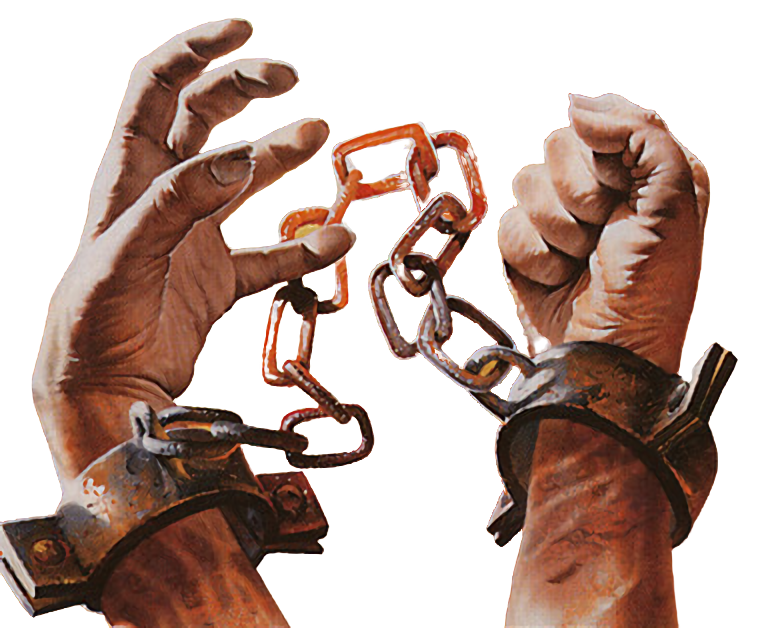
Tools
This section includes two new sets of artisan's tools that you can gain proficiency in instead of one of the tools, languages, or similar benefits granted by your background.
Tea Set
Unlike the chemical processes of brewing beer, steeping tea is an artistic and ceremonial art. Proficiency in these tools includes not only the knowledge of how to make delicious tea, but how to properly perform the rituals to create it, coffee, and other heated beverages.
Components. A tea set includes a teapot, four teacups with saucers, a strainer, a tray, four small spoons, a cloth cozy to insulate the teapot, and a caddy for storing dried leaves. These items are typically made of metal, glass, or porcelain, and are often ornately decorated. A full tea set costs 100 gp and weighs 10 lbs.
History, Religion, Performance. Proficiency with tea sets gives you additional insight on checks concerning cultural habits both past and present that involve tea as a significant element, as well as the artistry and cultural context of a particular set's creation.
Medicine. Tea and the soothing process of creating and enjoying aids in healing, with herbs that rejuvenate the weary body and a ritual that relaxes the anxious mind.
Sleight of Hand. Fine dexterity is necessary to accurately measure and prepare tea, and to slip poison and other chemicals into a guest's drink without rousing suspicion.
Herbalism Kit, Nature, Survival. Your knowledge of aromatic plants helps you identify which herbs are useful for enhancing the flavor of concoctions and are safe to eat.
Curatives. Your knowledge of brewing enables you to purify water that would otherwise be undrinkable. As part of a long rest, you can purify up to 6 gallons of water, or 1 gallon as part of a short rest.
Tea Set
| Activity | DC |
|---|---|
| Identify tea leaves or a tea set | 10 |
| Detect poison or impurities in a drink | 15 |
| Poison a drink in front of its drinker | 20 |
| Remove one poison or disease from one drinker | 25 |
Scrimshander's Tools
Scrimshaw is the art of engraving intricate patterns and images into bone, ivory, and shells, and other hard, pale materials. This calligraphic art uses the fragments of the bodies of large creatures such as whales and dragons instead of paper, and simple black ink instead of colorful pigments. Whalers and monster hunters take advantage of the abundance of bone to entertain themselves on long journeys, and create beautiful, fragile works of engraving, as well as sculptures and tools or weapons made from the rare and valuable material. A full set of scrimshander's tools costs 5 gp and weighs 3 lbs.
Components. Scrimshander's tools are simple, with an awl, large needle, or knife for carving, and black ink or soot to darken the etchings in the bone's surface.
History. Different cultures use a variety of different artistic techniques and styles in bone etching, helping you to identify where and when a bone tool or item originated.
Medicine, Nature. Your knowledge of anatomy helps you identify the creature from which a tooth, bone, or piece of bone was taken, and may assist you in determining other details such as its age and health.
Bone Equipment. You can use your tools and a suitable piece of bone or ivory to create a simple or martial melee weapon from bone. Unlike steel weapons, you can create bone weapons on the move, though bone weapons have triple the cost of, and weigh half as much as, their steel counterparts.
Scrimshander's Tools
| Activity | DC |
|---|---|
| Identify the origin of a bone or tooth | 15 |
| Determine a creature's health before it died | 20 |

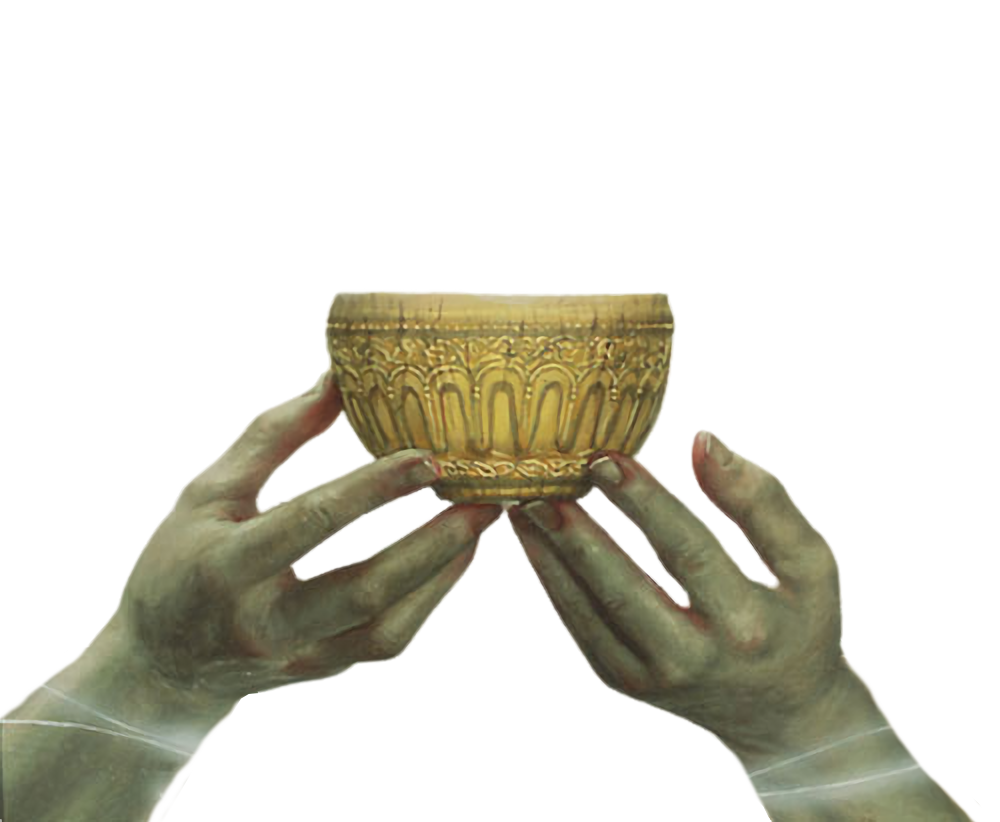
Mounts and Vehicles
While the options presented in the Player's Handbook for mounts and vehicles were serviceable, new adventures have presented additional rules for specialized vehicles—such as Ghosts of Saltmarsh, which reworked water vehicles with much more interesting statistics.
This book reworks mounts and land vehicles with unique features that make the differences between them meaningful and valuable, as it does with many other parts of the game.
Mounts
This section updates statistics for mounts listed on page 156 Player's Handbook and throughout the Monster Manual, with new mechanics to further differentiate them. If a mount is not listed, its statistics remain the same.
While their prices are unchanged, the gold price of each creature is listed in is statblock for convenience. While carrying capacity can be calculated if Strength has changed, it too is listed here.
CamelMM page 320
Large beast, unaligned. 50 gp. Capacity: 480 lb.
- Armor Class 9
- Hit Points 15 (2d10 + 4)
- Speed 50 ft.
STR DEX CON INT WIS CHA 16 (+3) 8 (-1) 14 (+2) 2 (-4) 8 (-1) 5 (-3)
- Senses passive Perception 9
- Languages —
- Challenge 1/8 (25 XP)
Drought-ready. The camel can survive up to 10 days without water, and has advantage on saving throws against extreme heat.
Sand Stride. The camel can cross difficult terrain made of sand without expending extra movement.
Actions
Bite. Melee Weapon Attack, skewering: +5 to hit, reach 5 ft., one target. Hit: 5 (1d4 + 3) piercing damage.
Spit. Ranged Weapon Attack, nonlethal, staggering: +2 to hit, range 40/60 ft., one target. Hit: 1 bludgeoning damage.


Draft HorseMM page 321
Large beast, unaligned. 50 gp. Capacity: 1,080 lb.
- Armor Class 10
- Hit Points 25 (3d10 + 9)
- Speed 40 ft.
STR DEX CON INT WIS CHA 18 (+4) 10 (+0) 17 (+3) 2 (-4) 11 (+0) 7 (-2)
- Senses passive Perception 10
- Languages —
- Challenge 1/4 (50 XP)
Powerful Build. The horse counts as one size larger when determining its carrying capacity and the weight it can push, drag, or lift.
Workhorse. The horse has advantage on Constitution saving throws against exhaustion caused by a forced march or long hours of labor.
Actions
Hooves. Melee Weapon Attack, cavalry, finisher: +6 to hit, reach 5 ft., one target. Hit: 9 (2d4 + 4) bludgeoning damage.
Riding HorseMM page 336
Large beast, unaligned. 75 gp. Capacity: 480 lb.
- Armor Class 10
- Hit Points 13 (2d10 + 2)
- Speed 60 ft.
STR DEX CON INT WIS CHA 16 (+3) 10 (+0) 12 (+1) 2 (-4) 11 (+0) 7 (-2)
- Senses passive Perception 10
- Languages —
- Challenge 1/4 (50 XP)
Swift Travels. If a group of Small or Medium creatures has at least one riding horse for each member when traveling over land, the number of miles the group can travel in an hour increases by 2, regardless of travel pace.
Actions
Hooves. Melee Weapon Attack, cavalry, finisher: +5 to hit, reach 5 ft., one target. Hit: 8 (2d4 + 3) bludgeoning damage.


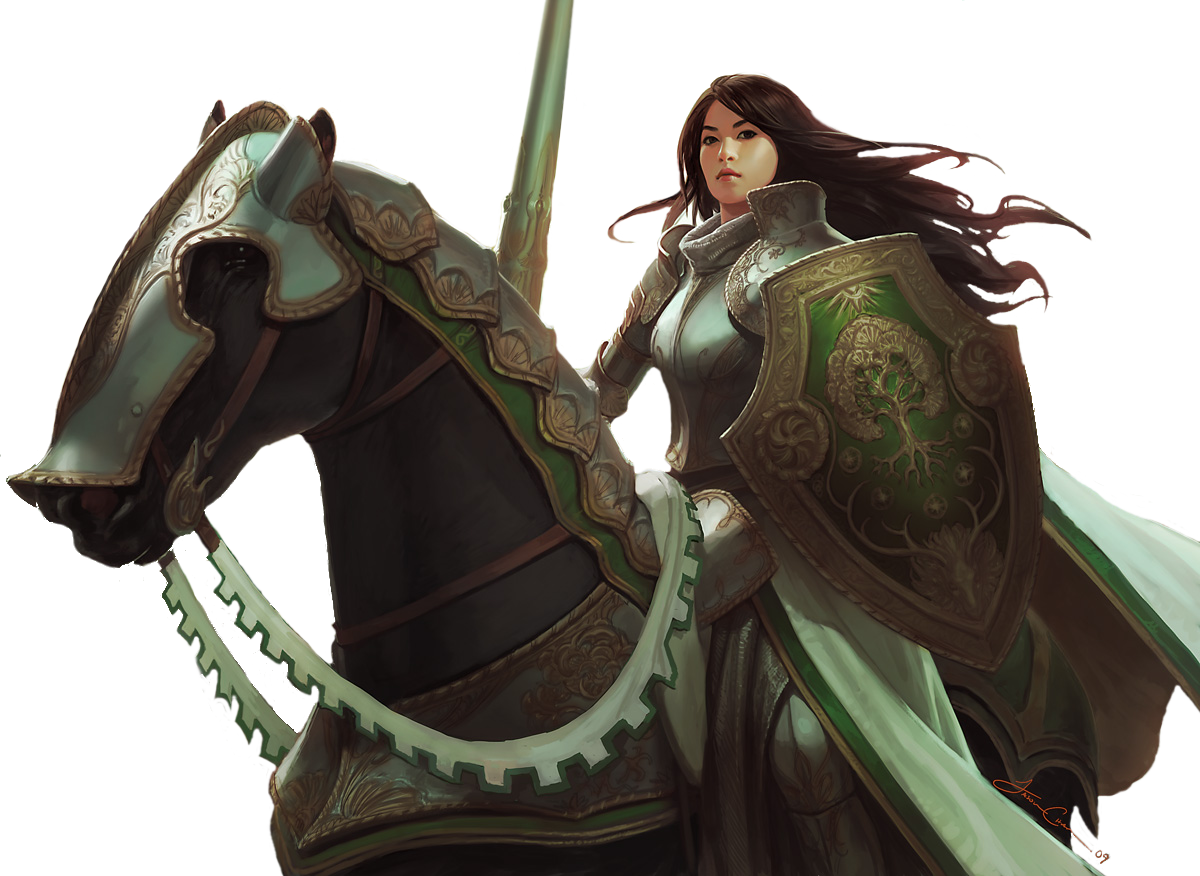
WarhorseMM page 340
Large beast, unaligned. 400 gp. Capacity: 540 lb.
- Armor Class 11
- Hit Points 75 (10d10 + 20)
- Speed 60 ft.
STR DEX CON INT WIS CHA 18 (+4) 12 (+1) 14 (+2) 2 (-4) 12 (+1) 7 (-2)
- Senses passive Perception 11
- Languages —
- Challenge 2 (450 XP)
Disciplined. The horse has advantage on checks and saves to avoid being knocked prone or frightened.
Relentless. When the horse is reduced to 0 hit points but not killed outright, it can drop to 1 hit point instead. The horse can’t use this feature again until it finishes a long rest.
Trampling Charge. If the horse moves at least 20 feet straight toward a creature and hits it with a hooves attack on the same turn, that target must succeed on a DC 14 Strength saving throw or be knocked prone. If the target is prone, the horse can make another attack against it as a bonus action.
Actions
Hooves. Melee Weapon Attack, cavalry, sundering: +6 to hit, reach 5 ft., one target. Hit: 11 (2d6 + 4) bludgeoning damage.
Exotic Mounts
The default mounts aren't the only mounts that a party might employ, but are the most likely to appear in everyday places. However, not every mount will appear in every stable—camels are rare outside the desert, elephants rarely venture beyond the savannah and tropics, and trained warhorses bred from a mighty lineage are rare and valuable commodities.
The creatures listed below are even rarer, but far from impossible to find when the party travels to fantastical places or battles extraordinary foes. Elk might pull a sleigh carrying a benevolent winter fey, or a death knight might ride a nightmare into battle. A wandering unicorn might carry a wounded character out of a dangerous wood, and any intelligent giant animals, such as giant eagles, might come to the aid of a desperate party at their darkest hour. Every creature in the following list already has statistics published in official content, but a few have tweaked statistics, which are listed on the opposite page.
Remember that the party is unlikely to find these mounts available for easy purchase. Civilizations in extreme environments may tame some, such as giant spiders, polar bears, or pegasi, but are loathe to part with them easily. The easiest way to gain access to such mounts is to win the favor of their handlers, or even the mounts themselves.
YakSKT page 172
Large beast, unaligned. 15 gp. Capacity: 540 lb.
- Armor Class 10
- Hit Points 13 (2d10 + 2)
- Speed 50 ft.
STR DEX CON INT WIS CHA 18 (+4) 10 (+0) 12 (+1) 2 (-4) 10 (+0) 6 (-2)
- Senses passive Perception 10
- Languages —
- Challenge 1/4 (50 XP)
Charge. If the yak moves at least 20 feet straight toward a target and hits it with a ram attack on the same turn, the target must succeed on a DC 14 Strength saving throw or be knocked prone.
Mountain Born. The yak is acclimated to high altitude, including elevations above 20,000 feet. It is also naturally adapted to cold climates, as described in the Dungeon Master's Guide.
Actions
Ram. Melee Weapon Attack, cavalry, winged: +6 to hit, reach 5 ft., one target. Hit: 7 (1d6 + 4) piercing damage.
Hooves. Melee Weapon Attack, finisher, sundering: +6 to hit, reach 5 ft., one prone creature. Hit: 9 (2d4 + 4) bludgeoning damage.
This list is not exhaustive—it is impossible to list every creature that could be used as a mount by far-reaching, magical, and alien people—but it lists many potential options for exotic beasts of burden and the location of their statistics.
- allosaurusMM page 79
- buletteMM page 34
- brontosaurusMM page 139
- cave bearMM page 334
- dire wolfMM page 321
- elkMM page 322
- giant boarMM page 323
- giant eagleMM page 324
- giant goatWCX page 99
- giant spiderMM page 326
- gorgonMM page 171
- gloamwingGGR page 215
- gloomstalkerEGW page 291
- guard drakeVGM page 158
- hadrosaurusWCX page 99
- kamadanToA page 225
- lionMM page 331
- mammothMM page 332
- moorbounderEGW page 25
- nightmareMM page 235
- polar bearMM page 334
- pegasusMM page 250
- owlbearMM page 249
- triceratopsMM page 80
- unicornMM page 294
- worgMM page 341
- wyvernMM page 303
- yeth houndVGM page 201
Giant Goat
Large beast, unaligned. Capacity: 510 lb.
- Armor Class 11 (natural armor)
- Hit Points 19 (3d10 + 3)
- Speed 40 ft., climb 40 ft.
STR DEX CON INT WIS CHA 17 (+3) 11 (+0) 12 (+1) 3 (-4) 12 (+0) 6 (-2)
- Senses passive Perception 12
- Languages —
- Challenge 1/2 (100 XP)
Charge. If the goat moves at least 20 feet straight toward a target and then hits it with a ram attack on the same turn, the target takes an extra 5 (2d4) bludgeoning damage. If the target is a creature, it must succeed on a DC 13 Strength saving throw or be knocked prone.
Sure-Footed. The goat has advantage on Strength and Dexterity checks and saving throws made against effects that would knock it prone.
Actions
Ram. Melee Weapon Attack, cavalry, winged: +5 to hit, reach 5 ft., one target. Hit: 7 (2d4 + 3) bludgeoning damage.
Hadrosaurus
Large beast, unaligned. Capacity: 450 lb.
- Armor Class 11 (natural armor)
- Hit Points 19 (3d10 + 3)
- Speed 50 ft., swim 30 ft.
STR DEX CON INT WIS CHA 15 (+2) 10 (+0) 13 (+1) 2 (-4) 10 (+0) 5 (-3)
- Skills Perception +2
- Senses passive Perception 12
- Languages —
- Challenge 1/4 (50 XP)
Hold Breath. The hadrosaurus can hold its breath for 30 minutes.
Actions
Tail. Melee Weapon Attack, sweeping: +4 to hit, reach 5 ft., one target. Hit: 7 (1d10 + 2) bludgeoning damage.


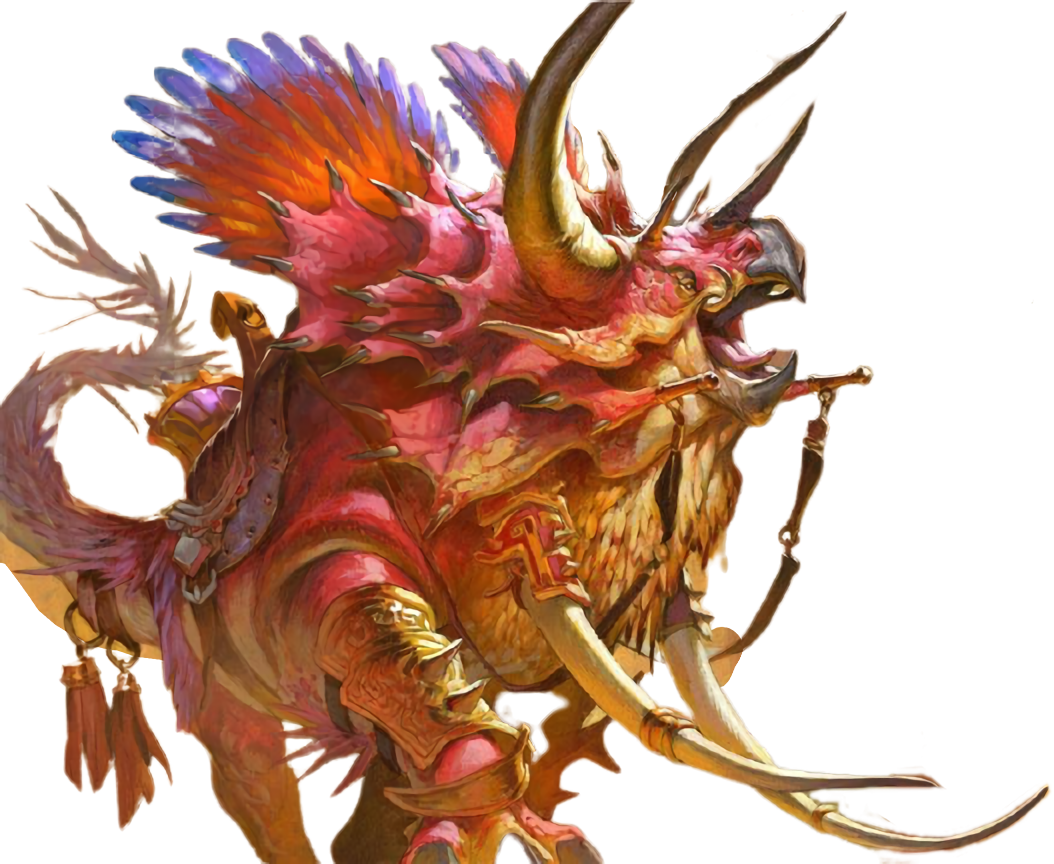

Akhlut
Huge monstrosity (shapechanger), unaligned. Capacity: 1200 lb.
- Armor Class 15 (natural armor)
- Hit Points 102 (12d12+24)
- Speed 50 ft., swim 60 ft.
STR DEX CON INT WIS CHA 20 (+5) 16 (+3) 14 (+2) 5 (-3) 14 (+2) 7 (-2)
- Skills Perception +4, Stealth +5,
- Senses blindsight 120 ft., passive Perception 14
- Languages —
- Challenge 4 (1,100)
Amphibious. The akhlut can breathe air and water.
Drowner. The akhlut's swim speed is not reduced by dragging a creature it has grappled.
Echolocation. The akhlut can't use its blindsight while deafened or outside water.
Keen Hearing and Smell. The akhlut has advantage on Wisdom (Perception) checks that rely on hearing or smell.
Shapechanger. The akhlut can use its action to polymorph into a killer whale, a dire wolf, or back into its true form, which is a wolf-whale hybrid. Its statistics are the same in each form. Any equipment it is wearing or carrying isn't transformed, but remains on its new form or falls to the ground. It reverts to its true form if it dies.
Actions
Bite. Melee Weapon Attack, ensnaring, skewering: +7 to hit, reach 5 ft., one target. Hit: 22 (5d6+5) piercing damage, and the target is grappled (escape DC 15). Until this grapple ends, the target is restrained, and the akhlut can't bite another target.
Reactions
Ambushing Shift. If the akhlut enters or leaves a body of water, it can transform into another form using its shapechanger trait.
Hippocampus
Large monstrosity, unaligned. Capacity: 480 lb.
- Armor Class 13
- Hit Points 26 (4d10 + 4)
- Speed 50 ft., swim 60 ft.
STR DEX CON INT WIS CHA 16 (+3) 16 (+3) 12 (+1) 2 (-4) 11 (+0) 7 (-2)
- Senses passive Perception 10
- Languages understands Aquan but cannot speak
- Challenge 1/4 (50 XP)
Amphibious. The hippocampus can breathe air and water.
Swift Swim. The hippocampus doesn't provoke opportunity attacks when it swims out of an enemy's reach.
Actions
Hooves. Melee Weapon Attack, finisher, staggering: +5 to hit, reach 5 ft., one target. Hit: 8 (2d4 + 3) bludgeoning damage.
Aquatic Mounts
Not all civilizations in Dungeons & Dragons live on land. Some, like tritons, merfolk, and sahuagin, live deep beneath the waves. Such creatures can't employ terrestrial beasts of burden, for obvious reasons. Some alternatives for watergoing peoples are listed below. Like exotic mounts, they have no listed gold price, as typical adventuring parties are unlikely to encounter them listed due to their relative rarity compared to landlocked mounts.
- akhlutWCX page 100
- crocodileMM page 320
- dolphinMM page 208
- giant octopusMM page 326
- giant sea horseMM page 328
- hippocampusWCX page 100
- hunter sharkMM page 330
- killer whaleMM page 331
- plesiosaurusMM page 80
- sperm whaleRotFM page 309
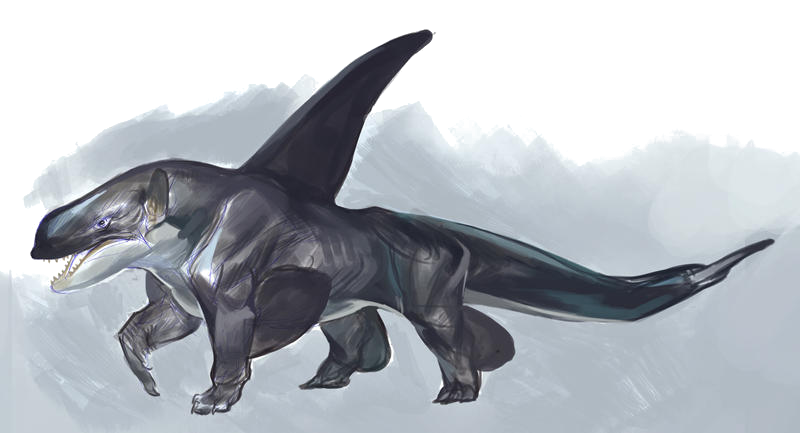
Tack and Harness
| Item | Cost | Weight |
|---|---|---|
| Barding, Standard | x4 | x2 |
| Barding, Exotic | x6 | x2 |
| Feed per day (plant) | 5 cp | 10 lb. |
| Feed per day (meat) | 2 gp | 10 lb. |
| Saddles | ||
| Exotic | 60 gp | 40 lb. |
| Military | 20 gp | 30 lb. |
| Pack | 12 gp | 15 lb. |
| Riding | 8 gp | 25 lb. |
| Saddlebags | 4 gp | 8 lb. |
| Stabling per day | 5 sp | — |
| Stabling per day (exotic) | 10 gp | — |
Barding. Barding is armor designed for a nonhumanoid animal. Any type of armor on the Armor table can be purchased as barding, which has a price several times that of equivalent armor made for humanoids, costs several times as much, and has twice the weight.
The exact price is determined by the type of mount—armor for mounts listed in the mounts section of the Player's Handbook and The Warrior's Codex costs four times as much, while armor for exotic and aquatic mounts in WCX, as well as other exotic mounts, costs six times as much. Like armor on humanoids, barding weighs half as much as its listed weight when worn for the purposes of determining encumberance.
Saddles. A seat of leather, fur, and other materials designed to cushion and reinforce a rider on a mount, and keep them from falling when the mount moves quickly. The options for different types of saddle are listed below.
Saddle, Exotic. An exotic saddle is custom-fitted to the strange anatomy of exotic mounts, and any mount that swims or flies. They may include wider or specially-shaped seats to allow unrestricted movement, netting around the chest or belly for you to climb on, or straps for your legs to keep you mounted during flight. Saddles for exotic mounts must be custom-made for each type of creature.
Saddle, Military. A military saddle braces the rider, helping you keep your seat in battle. It gives you advantage on any ability checks and saving throws to remain mounted.
Saddle, Pack. An otherwise unremarkable saddle, this saddle includes two saddlebags, unlike other saddles which much purchase and include them separately.
Saddle, Riding. The basic saddle, necessary for any creature not skilled with animals to ride without without suffering disadvantage on checks and saves to keep from falling off. It confers no additional benefits.
Saddlebags. Leather or cloth bags slung over the side of a mount or attached to the saddle, any object placed in these bags or strapped to them has it weight halved when determining encumberance. An object must be at least two sizes smaller than the mount to gain this benefit.
Land Vehicles
This section includes updated statistics for the land vehicles in the Player's Handbook, with several new additions. These statblocks are modeled after those presented in Descent Into Avernus, but are adjusted for less hellish vehicles. Their statistics function like a creature, but with additional considerations:
Capacity and Draft Requirements
Creature capacity describes how many creatures can ride in the vehicle comfortably. More creatures can fit by squeezing or clinging to the outside of the vehicle. Most creatures comfortably occupying the vehicle occupy an Action Station and perform a specific role (see "Action Stations" below). Cargo capacity specifies how much weight the land vehicle can carry, excluding the weight of the creatures inside it.
A creature pulling a land vehicle can move weight up to five times its base carrying capacity. If multiple creatures pull the same vehicle, they add their carrying capacity together to determine if they can move the vehicle. The weight of a vehicle also includes the weight of all passengers and cargo.
Difficult terrain such as thick mud, snow, or sand doubles the strength required to pull a vehicle.
A land vehicle's speed is equal to the slowest draft creature pulling it. If all draft creatures have special movement, such as a flying or swimming speed, the vehicle does as well. All draft creatures act simultaneously on the driver's turn as ordered by the driver, unless the draft creature is intelligent enough to act independently.
Armor Class
A land vehicle is typically made of wood and has an Armor Class of 15 + its Dexterity modifier. While the vehicle is not moving, attack rolls made against it have advantage, and it does not add its Dexterity modifier to its AC.
Hit Points
A land vehicle hit points can be restored by making repairs (see "Repairs"). When a land vehicle drops to 0 hit points, it ceases to function and is damaged beyond repair. Enemies can also target the draft creatures pulling it; if the number of draft creatures falls below the vehicle's minimum requirements, the vehicle cannot be operated until any corpses are removed and new draft creatures are added.
Opportunity Attacks
A land vehicle provokes opportunity attacks upon exiting another creature's reach, as if it were a creature. When a land vehicle provokes an opportunity attack, the attacker can target the vehicle or any creature riding on or inside it that doesn't have total cover and is within the attacker's reach.
Impact
If a land vehicle takes damage that exceeds half its maximum hit points, it must succeed on a Dexterity saving throw with a DC equal to the damage taken or be knocked prone. Any creature occupying the vehicle must make the same saving throw, landing prone in a random space 10 feet away from the vehicle on a failed save. Any creature squeezing into the vehicle or clinging to the outside makes this save with disadvantage.
Repairs
When a land vehicle is damaged but has at least 1 hit point, a creature not operating the helm or guard station can try to repair it. The creature must be within reach of the damaged area and have the right tools for the job (often woodcarver's tools or smith's tools), and the vehicle must be stationary.
After 1 hour of repair work, the creature makes a DC 15 Dexterity check, adding its proficiency bonus to the check if it's proficient with the tools used to make repairs. If the check succeeds, the vehicle regains 2d4 + 2 hit points. If the check fails, the vehicle regains no hit points, but the repair can be attempted again using the same replacement parts.
Action Stations
Action stations represent any seat or position the vehicle is designed to have occupied by creatures which contribute to its Creature Capacity, collectively referred to as "crew." Only one creature can occupy each station unless multiple crew are required. To exit an action station, a creature must expend 15 feet of movement, as though dismounting.
Helm
The driver steers the land vehicle and the creatures pulling it. A driver proficient with land vehicles adds its proficiency bonus to any check or saving throw the land vehicle makes, as well as to its Armor Class while moving.
Actions. While the land vehicle is attached to living draft creatures, the driver can use an action to propel the vehicle up to its speed or stop it. While the vehicle is moving, the driver steers it along a course of its choosing.
If the driver is incapacitated, leaves the helm, or does nothing to alter the vehicle's course and speed, the vehicle moves in the same direction and speed it did during the driver's last turn until it hits an obstacle big enough to stop it.
Buggy
Large Vehicle (900 lb)
- Creature Capacity 2 Medium creatures
- Cargo Capacity 300 lb.
- Armor Class 15 (15 while motionless)
- Hit Points 16 (3d10)
STR DEX CON INT WIS CHA 13 (+1) 10 (+0) 11 (+0) 0 (-5) 0 (-5) 0 (-5)
- Damage Immunities poison, psychic
- Condition Immunities blinded, charmed, deafened, exhausted, frightened, paralyzed, petrified, poisoned, stunned, unconscious
Prone Deficiency. If the buggy falls prone, it can't right itself and is incapacitated until another creature uses its action to pull it upright.
Action Stations
Helm (Requires 1 crew). Drives and steers the buggy.
1 Passenger Seat (Requires 1 crew).
Carriage
Huge vehicle (1800 lb)
- Creature Capacity 6 Medium creatures
- Cargo Capacity 1,000 lb.
- Armor Class 16 (15 while motionless)
- Hit Points 79 (7d12 + 14)
STR DEX CON INT WIS CHA 14 (+2) 12 (+1) 15 (+2) 0 (-5) 0 (-5) 0 (-5)
- Damage Immunities poison, psychic
- Condition Immunities blinded, charmed, deafened, exhausted, frightened, paralyzed, petrified, poisoned, stunned, unconscious
Crushing Wheels. The carriage can move through the space of any Medium or smaller creature. A creature whose space the carriage enters for the first time on a turn must make a DC 12 Dexterity saving throw, taking 11 (2d10) bludgeoning damage on a failed save, or half as much damage on a successful one.
Prone Deficiency. If the carriage falls prone, it can't right itself and is incapacitated until another creature uses its action to pull it upright.
Action Stations
Helm (Requires 1 crew and Grants Half Cover). Drives and steers the carriage.
Guard. (Requires 1 Crew). Makes attacks from atop the carriage.
4 Passenger Seats (Requires 1 Crew and Grants Three-Quarters Cover).
Bonus Actions. The driver can cause the draft creatures to take the Dash or Disengage action, moving the vehicle farther than it could with an only an action.
Reactions. Some vehicles have special reactions, which the driver can choose to activate using its own reaction.
Guard Stations
Each guard takes a position on the vehicle, fighting from its station and attacking within its range or reach as normal. While a guard is not necessary to operate a vehicle, they bolster its defenses significantly.
Passenger Seats
Passengers sit passively upon or within the vehicle, and are not necessary to operate it. A passenger can fight, but targets it chooses outside the vehicle gain the same cover bonuses against its attacks that the passenger gains against attacks targeting it that originate from outside the vehicle.
Weight
The listed weight of each vehicle does not account for cargo or crew, whose weight must be added to the vehicle's weight when determining if the draft animals can move the vehicle.
Cart
Medium Vehicle (550 lb.)
- Creature Capacity 1 Medium creature
- Cargo Capacity 500 lb.
- Armor Class 15 (15 while motionless)
- Hit Points 34 (4d8 + 16)
STR DEX CON INT WIS CHA 12 (+1) 10 (+0) 18 (+4) 0 (-5) 0 (-5) 0 (-5)
- Damage Immunities poison, psychic
- Condition Immunities blinded, charmed, deafened, exhausted, frightened, paralyzed, petrified, poisoned, stunned, unconscious
Prone Deficiency. If the cart falls prone, it can't right itself and is incapacitated until another creature uses its action to pull it upright.
Action Stations
Passenger Seat. (Requires 1 Crew).
Chariot
Large vehicle (200 lb)
- Creature Capacity 2 Medium creatures
- Cargo Capacity 150 lb.
- Armor Class 18 (15 while motionless)
- Hit Points 32 (5d10 + 5)
STR DEX CON INT WIS CHA 10 (+0) 16 (+3) 12 (+1) 0 (-5) 0 (-5) 0 (-5)
- Damage Immunities poison, psychic
- Condition Immunities blinded, charmed, deafened, exhausted, frightened, paralyzed, petrified, poisoned, stunned, unconscious
Prone Deficiency. If the chariot falls prone, it can't right itself and is incapacitated until another creature uses its action to pull it upright.
Action Stations
Helm (Requires 1 crew and Grants Half Cover). Drives and steers the chariot.
Guard. (Requires 1 Crew and Grants Half Cover). Makes attacks from within the chariot.
Reactions
Juke. The chariot gains advantage on a Dexterity saving throw. It must be able to move in order to use this reaction.
Litter
Medium vehicle (90 lb)
- Creature Capacity 1 Medium creature
- Cargo Capacity 100 lb.
- Armor Class 14 (14 while motionless)
- Hit Points 22 (4d8 + 8)
STR DEX CON INT WIS CHA 10 (+0) 8 (-1) 12 (+1) 0 (-5) 0 (-5) 0 (-5)
- Damage Immunities poison, psychic
- Condition Immunities blinded, charmed, deafened, exhausted, frightened, paralyzed, petrified, poisoned, stunned, unconscious
Poles. Instead of being dragged on wheels, the litter must be carried above the ground by creatures in front of and behind it.
Prone Deficiency. If the litter falls prone, it can't right itself and is incapacitated until another pair of creatures use their actions to pull it upright.
Action Stations
Bearer (Requires 4 crew). Drives and steers the litter.
Passenger Seat. (Requires 1 Crew and Grants Half Cover). The aura of prestige from the litter grants the Passenger advantage on Charisma checks.

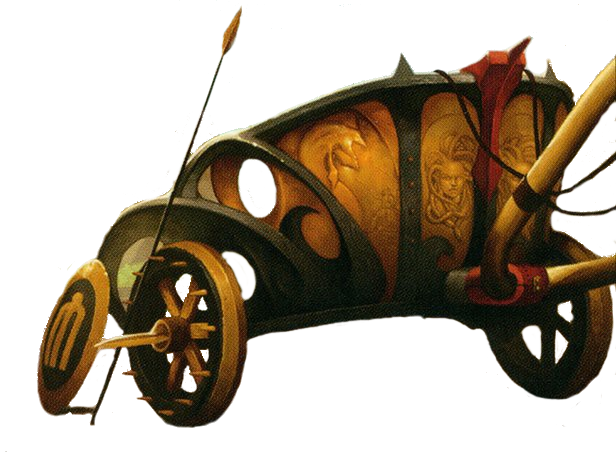
Rickshaw
Medium Vehicle (180 lb.)
- Creature Capacity 1 Medium creature
- Cargo Capacity 100 lb.
- Armor Class 15 (15 while motionless)
- Hit Points 18 (4d8)
- Draft Requirements 1 Medium creature
STR DEX CON INT WIS CHA 10 (+0) 14 (+2) 10 (+0) 0 (-5) 0 (-5) 0 (-5)
- Damage Immunities poison, psychic
- Condition Immunities blinded, charmed, deafened, exhausted, frightened, paralyzed, petrified, poisoned, stunned, unconscious
Prone Deficiency. If the rickshaw falls prone, it can't right itself and is incapacitated until another creature uses its action to pull it upright.
Action Stations
Helm (Requires 1 crew). Drives and steers the rickshaw. The rickshaw's draft creature occupies this station.
Passenger Seat (Requires 1 Crew and Grants Half Cover).
Reactions
Juke. The rickshaw gains advantage on a Dexterity saving throw. It must be able to move in order to use this reaction.
Sled
Medium vehicle (400 lb)
- Creature Capacity 1 Medium creature
- Cargo Capacity 200 lb.
- Armor Class 17 (15 while motionless)
- Hit Points 22 (4d8 + 8)
- Draft Requirements 6 Medium creatures
STR DEX CON INT WIS CHA 10 (+0) 15 (+2) 12 (+1) 0 (-5) 0 (-5) 0 (-5)
- Damage Immunities poison, psychic
- Condition Immunities blinded, charmed, deafened, exhausted, frightened, paralyzed, petrified, poisoned, stunned, unconscious
Prone Deficiency. If the sled falls prone, it can't right itself and is incapacitated until another creature uses its action to pull it upright.
Skis. The sled has flat running boards instead of wheels that allow it to glide over smooth surfaces. Difficult terrain created by ice, snow, slush, or sand does not increase the weight required to pull the vehicle.
Action Stations
Helm (Requires 1 crew and Grants Half Cover). Drives and steers the sled.
Reactions
Juke. The sled gains advantage on a Dexterity saving throw. It must be able to move in order to use this reaction.
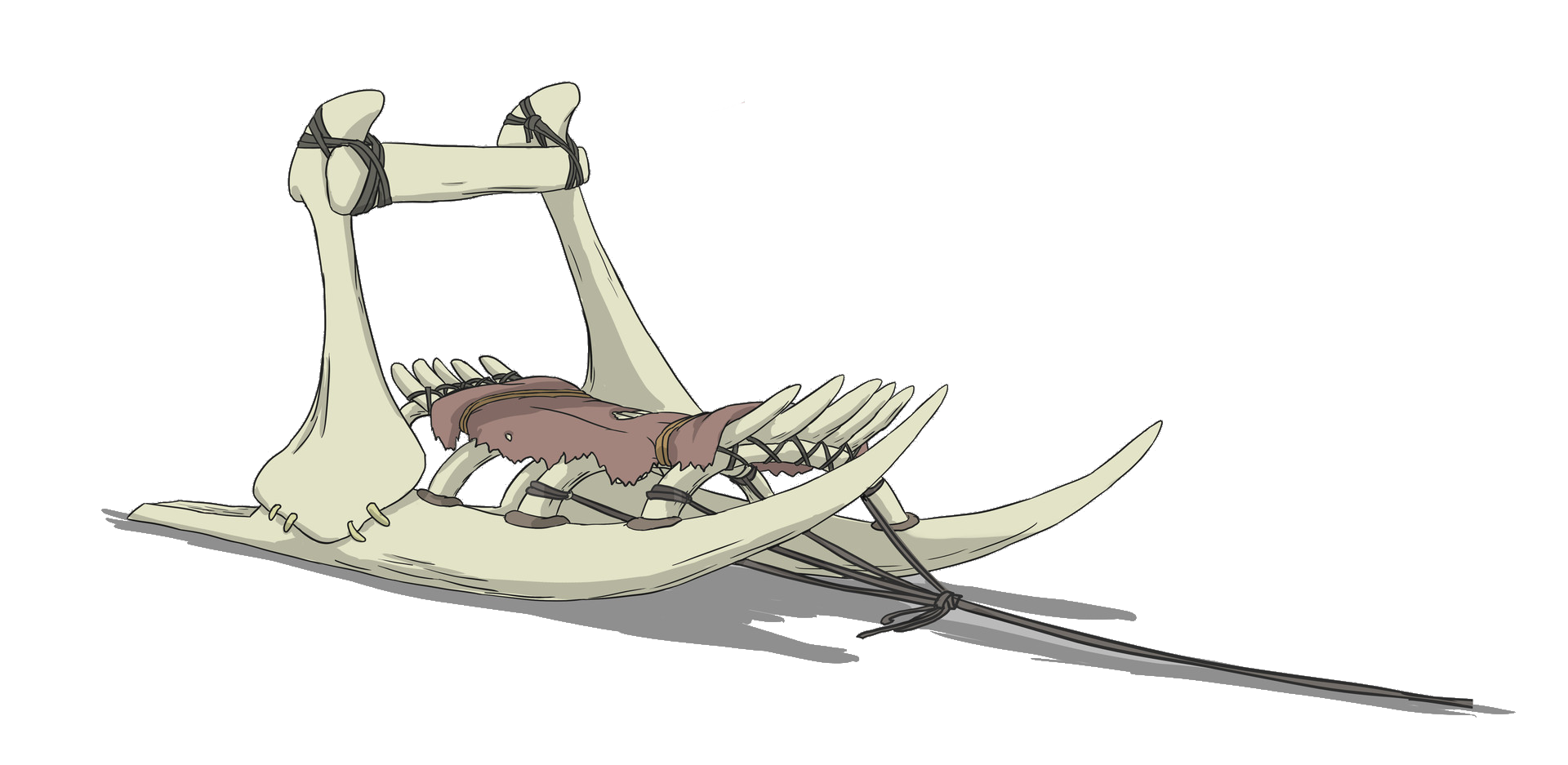
Sleigh
Huge vehicle (1500 lb)
- Creature Capacity 4 Medium creatures
- Cargo Capacity 800 lb.
- Armor Class 16 (15 while motionless)
- Hit Points 79 (7d12 + 14)
- Draft Requirements 4 Large creatures
STR DEX CON INT WIS CHA 14 (+2) 12 (+1) 15 (+2) 0 (-5) 0 (-5) 0 (-5)
- Damage Immunities poison, psychic
- Condition Immunities blinded, charmed, deafened, exhausted, frightened, paralyzed, petrified, poisoned, stunned, unconscious
Skis. The sleigh has flat running boards instead of wheels that allow it to glide over smooth surfaces. The sleigh ignores all difficult terrain created by ice, snow, slush, and sand.
Prone Deficiency. If the sleigh falls prone, it can't right itself and is incapacitated until another creature uses its action to pull it upright.
Action Stations
Helm (Requires 1 crew and Grants Half Cover). Drives and steers the carriage.
1 Front Passenger Seats (Requires 1 Crew and Grants Three-Quarters Cover).
2 Rear Passenger Seats (Requires 1 Crew and Grants Full Cover).
Wagon
Huge vehicle (2000 lb)
- Creature Capacity 8 Medium creatures
- Cargo Capacity 2500 lb.
- Armor Class 14 (14 while motionless)
- Hit Points 79 (7d12 + 14)
- Draft Requirements 4 Large creatures
STR DEX CON INT WIS CHA 16 (+3) 8 (-1) 18 (+4) 0 (-5) 0 (-5) 0 (-5)
- Damage Immunities poison, psychic
- Condition Immunities blinded, charmed, deafened, exhausted, frightened, paralyzed, petrified, poisoned, stunned, unconscious
Bulky. Unless its draft creatures took the Dash action on their last turn, the wagon has advantage on saving throws to avoid being knocked prone. In addition, the speed of any draft creature attached to the wagon is halved.
Prone Deficiency. If the wagon falls prone, it can't right itself and is incapacitated until another creature uses its action to pull it upright.
Action Stations
Helm (Requires 1 crew and Grants Half Cover). Drives and steers the carriage.
2 Guards (Requires 1 crew and Grants Full Cover.) Makes attack from atop the wagon.
5 Passenger Seats (Requires 1 Crew and Grants FullCover ).

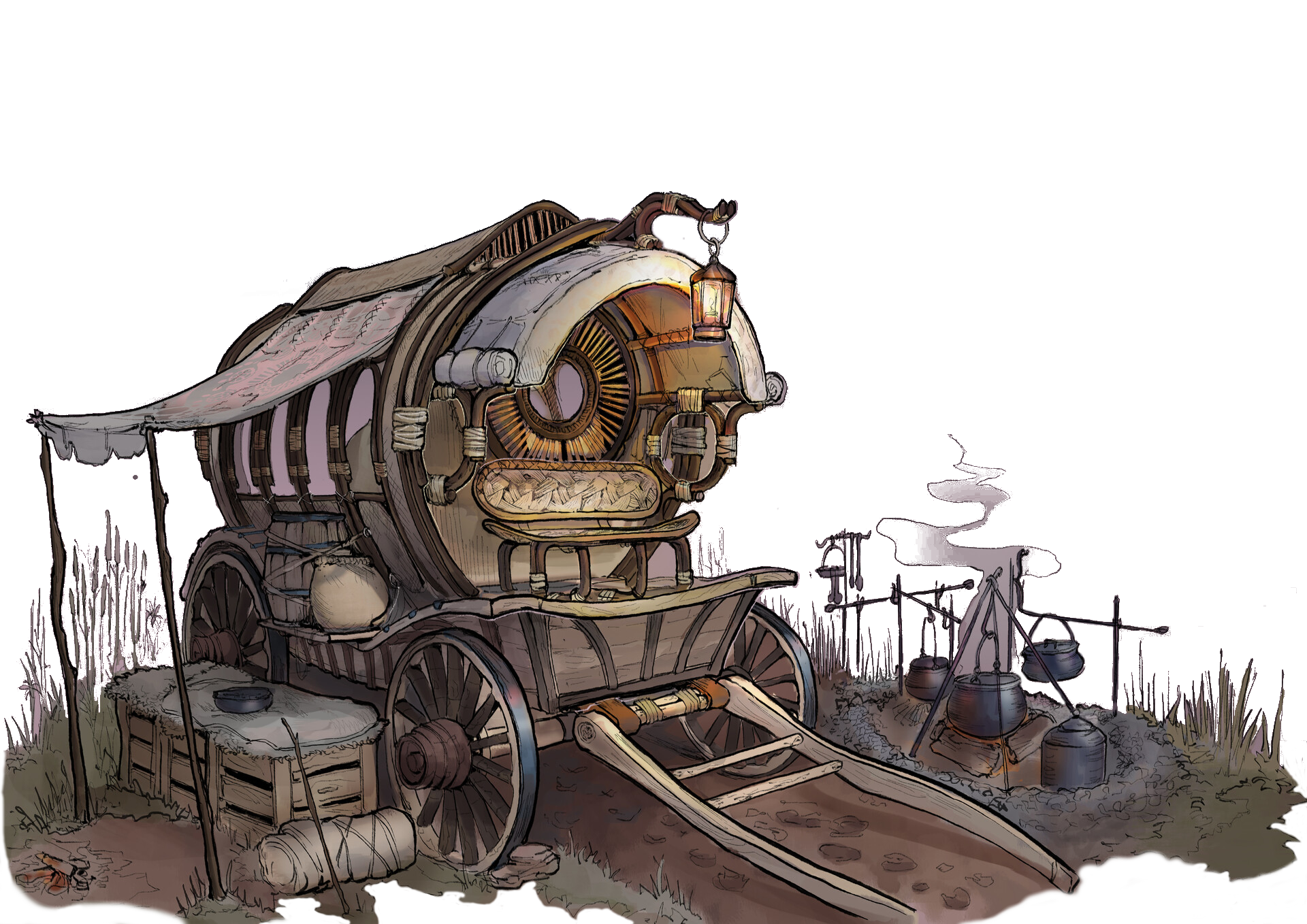
Bombs and Grenades
Bombs are specialized hurled explosives, often made from a hollow shell packed with gunpowder and exotic materials. You can use the Use An Item or Attack action to throw a bomb to any point within 60 feet of you, where it explodes. That point acts as the origin of the bomb's effects.
If an ability such as Extra Attack or Multiattack gives you the ability to make multiple attacks in one turn, you can throw a bomb using one of those attacks, instead of an action.
All bombs weigh 1 lb., have the gunpowder and thrown properties unless otherwise noted (allowing stronger characters to throw them a greater distance), and are lit or activated as part of the same action used to throw them.
Bombs
| Name | Price | Save/DC | Radius | Damage |
|---|---|---|---|---|
| Bomb | 50 gp | Dex/12 | 5 ft. | 2d6 fire + 2d6 thunder |
| Aeolian Flare | 20 gp | Con/10 | 30 ft. | — |
| Ashes of Dreams | 50 gp | — | 10 ft. | — |
| Boreas' Embrace | 550 gp | Con/17 | 15 ft. | 2d6 cold + 2d6 thunder |
| Cayenne Smog | 450 gp | Con/16 | 30 ft. | — |
| Charnock's Remorse | 1500 gp | Dex/17 | 20 ft. | 3d6 fire |
| Dimeritium Shardsmoke | 600 gp | — | 5 ft. | 1d6 force + 2d6 thunder |
| Dynamo | 300 gp | Dex/14 | 10 ft. | 4d6 lightning |
| Flashbang | 40 gp | Con/10 | 15 ft. | — |
| Glitterburst | 100 gp | Dex/13 | 10 ft. | 4d6 piercing |
| Hornet's Nest | 75 gp | Con/11 | 25 ft. | — |
| Moon Dust | 320 gp | Wis/14 | 10 ft. | 3d6 radiant |
| Phlogisticate | 25 gp | — | 10 ft. | — |
| Shockwave Diamond | 250 gp | Str/12 | 10 ft. | 4d6 thunder |
| Smokestick | 20 gp | — | 10 ft. | — |
| Spirit Walker | 1000 gp | Cha/14 | 10 ft. | 3d6 force + 3d6 thunder |
| Tanglefoot Bag | 100 gp | Dex/14 | 5 ft. | — |
| Torpid Air | 35 gp | — | 20 ft. | — |
| Vomit Comet | 200 gp | Con/10 | 15 ft. | 1d4 poison |
Bomb. When this bomb explodes, all creatures and objects in a 5-foot-radius sphere must make a DC 12 Dexterity saving throw. On a failed save, a target takes 2d6 fire damage and 2d6 thunder damage, and half as much damage on a success. This bomb's thunder damage is doubled against constructs, objects, and structures.
Aeolian Flare. A tiny cloth pouch filled with magnesium strips and gunpowder. When this bomb explodes, it produces blinding light. Each creature in a 30-foot-radius sphere must make a DC 10 Constitution saving throw.
On a failed save, a target is blinded until the end of its next turn. Creatures with darkvision make this saving throw with disadvantage.
Ashes of Dreams. Fey magic and tranquilizing herbs combine in this gas bomb to sedate targets. When this bomb explodes, it subjects creatures in a 10-foot-radius sphere to the sleep spell.
Boreas' Embrace. Packed with shards of True Ice and cold magic, this bomb forces all targets in a 15-foot-radius sphere to make a DC 17 Constitution saving throw. On a failed save, a target is restrained. While restrained in this way, its Armor Class increases by 2. The target can use its action to make a DC 17 Strength check, freeing itself from the ice on a success.
Cayenne Smog. Filled with a powder distilled from exotic fruits, this chemical grenade releases a billowing cloud of excruciating gas in a 30-foot radius, which lasts for 1 minute. A strong wind disperses the cloud of gas, removing it early. The first time a creature enters the cloud on a turn or starts its turn there, it must make a DC 16 Constitution saving throw. Targets immune to fire or that do not need to breathe automatically succeed on this save. On a failed save, it is poisoned for 10 minutes. While poisoned in this way, the target is blinded. The target can repeat the save at the end of each of its turns, ending the effect on itself on a success.
Charnock's Remorse. A closely-guarded secret of contemporary alchemy, this bomb is the end result of a quest for ever-burning flames. It is a horrific incendiary which sticks to clothing, skin, and buildings. When this bomb explodes, all creatures and objects in a 20-foot-radius sphere must make a DC 17 Dexterity saving throw. On a failed save, a target takes 3d6 fire damage and is set alight. On a success, it takes half as much damage and is not set on fire.
Additionally, every flammable creature and object in a 20-foot-radius, 40-foot-high cylinder extending from the sphere's point of origin down to the ground must make the same saving throw, suffering the same effects. The contents of this bomb spread over the ground beneath the cylinder, where they burn. The first time on a turn that a creature enters a burning space or starts its turn there, it takes 2d6 fire damage, but the fire does not spread to it.
A target set on fire by Charnock's Remorse takes an additional 2d6 fire damage at the start of each of its turns. The pain is excruciating; when a target takes this damage, it must succeed on a DC 15 Constitution saving throw or fall unconscious until another creature uses an action to wake it.
A creature can use its action to make a DC 17 Dexterity check to extinguish the flames in a 5-foot square or on a creature, including itself. This fire cannot be put out or otherwise affected by effects that extinguish or manipulate flames, such as the prestidigitation or control flames spells, or the effects of magical items such as a frost brand. Though its fire burns in damp areas, this bomb retains the gunpowder property and must be ignited as normal.
Dimeritium Shardsmoke. Crafted from complicated enchantments, reagents, and metals, the cloud of emerald-colored smoke from this bomb interferes with magic itself. The explosion creates a 5-foot-sphere of material that targets all creatures, spells, and effects within the area with the dispel magic spell. If a check is required to dispel an effect, the bomb has a +5 bonus to the d20 roll.
Dynamo. A palm-sized metal sphere covered in greebling, this marvel of alchemical engineering unleashes stored lightning. All creatures in a 10-foot-radius sphere must make a DC 14 Dexterity saving throw. On a failed save, a target takes 4d6 lightning damage. This bomb lacks the gunpowder property. When used underwater, in heavy rain, or wet conditions, its radius increases by 10 feet. Unlike other items and weapons, it can move its full range when used underwater, as the machinery within the sphere propels it through water.
Flashbang. This bomb creates a disorienting burst of light and sound within a 15-foot radius sphere. Each creature in the sphere must make a DC 10 Constitution saving throw. On a failed save, a target is blinded and deafened for 1 minute. At the end of each of its turns, a target can make another Constitution saving throw, ending the effect on itself on a success. Creatures with Tremorsense or Darkvision have disadvantage on the initial saving throw against this bomb.
Glitterburst. Silver dust fills this bomb, inflicting terrible damage on creatures vulnerable to it. All creatures within 10 feet of its explosion must make a DC 13 Dexterity saving throw. On a failed save, a target takes 4d6 piercing damage, and half as much on a success. Creatures with special vulnerabilities to silvered weapons take doubled piercing damage and have disadvantage on saving throws against this bomb. This bomb is considered a silvered weapon for the purposes of overcoming resistance and immunity to damage.
Hornet's Nest. This large sphere is packed with rounded balls of soft metal and rubber. When this bomb is thrown, creatures within a 25-foot-radius sphere must make a DC 11 Constitution saving throw or be stunned by nonlethal pain until the end of their next turn. A creature with resistance to bludgeoning damage from nomagical attacks makes the saving throw against this bomb with advantage, and creatures immune to bludgeoning damage from nonmagical attacks automatically succeed.
Moon Dust. Packed with parilla cuttings and shards of feldspar, this bomb is designed to combat shapeshifters. When thrown, it explodes in a 10-foot-radius sphere. Each creature within that sphere must make a DC 14 Wisdom saving throw. A target takes 3d6 radiant damage on a failed saving throw, and half as much on a success. A creature transformed into a different form (through means such as the shapechanger trait, polymorph spell, or Wild Shape feature) makes the saving throw against this bomb with disadvantage, and any creature damaged by this bomb reverts to its normal form and cannot change from it for one hour.
Phlogisticate. This thin bladder contains water, tartar, or other chemical fire suppressants and extinguishes flames within 10 feet when thrown. Magical flames maintained by a spellcaster's concentration are instead suppressed by a number of rounds equal to 10 - the level of the spell.
Shockwave Diamond. Also called a thunderstone, this tiny crystal of compressed energy shatters on impact and unleashes a concussive shockwave in a 10-foot radius. A creature or object within that area must succeed on a DC 12 Strength saving throw or take 4d6 thunder damage, be knocked 5 feet away from the center of the explosion, and fall prone. On a successful save, a target takes half as much damage and is not moved or knocked prone. This bomb deals doubled damage to objects, structures, and constructs.
Smokestick. The flammable compound inside this bomb produces a thick plume of smoke, filling a 10-foot radius sphere centered around the point it exploded for 1 minute. The area within the cloud of smoke is heavily obscured. A strong wind disperses the cloud of gas, removing it early.
Spirit Walker. A shell packed with hallucinogens and cursed bone powder. When this bomb explodes, any creature within 5 feet of must succeed on a DC 14 Charisma saving throw or be sent into the ethereal plane for 2d6 rounds. Afterward, the target reappears in the space it left or in the nearest unoccupied space if that space is occupied.
Tanglefoot Bag. A bag of magical, sticky tar that erupts in a 5-foot radius around the point of impact. Creatures in its radius must succeed on a DC 14 Dexterity saving throw against it or be grappled (escape DC 14). While grappled in this way, the target is restrained. In addition, the ground beneath its radius is difficult terrain for 1 minute, after which the compound dries. If a 5ft square of tar takes 10 points of fire damage, it dries early and is no longer difficult terrain. This bomb does not have the gunpowder property.
Torpid Air. A concoction that thickens the air within a 20-foot-radius sphere to cushion falling creatures. Unlike most bombs, it does not explode until it hits the ground or another solid surface. All creatures that land within its radius take 1/4 the falling damage they normally would (minimum 1). This bomb thickens the air for 1 minute, after which the atmosphere returns to its normal density.
Vomit Comet. Containing an assortment of pungent, rotting materials, the terrible smell released by this this bomb stops enemies in their tracks. A creature within 15 feet of this bomb when it explodes must make a DC 10 Constitution saving throw. On a failed save, the target takes 1d4 poison damage and is poisoned for 1 minute. While poisoned in this way its speed is reduced by 10 feet, and it must repeat the saving throw at the start of each of its turns or spend its action retching and staggering. If it succeeds on this saving throw, the poison ends. Creatures that cannot be poisoned or do not have to breathe are immune to this bomb.
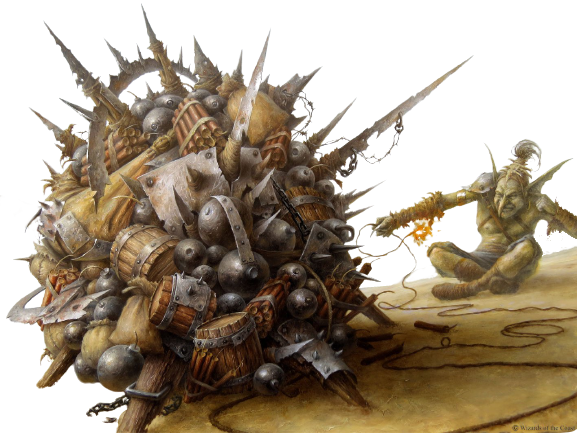
Oils
These magically-infused ointments coat weapons and armor to produce a temporary magical effect. As an action, you can apply an oil to a weapon, piece of armor, or 3 pieces of ammunition. You must have at least 1 free hand to apply an oil. Oils dry one hour after application, but can also be cleaned or washed off. An item can only benefit from one oil at a time. If you apply a second oil, it removes the first.
A weapon or piece of armor is considered magical while it has the oil applied to it.
Creating Oils
You must have proficiency in both the Arcana skill and brewer's supplies to create oils. The necessary materials are an amount of the appropriate gemstone dust worth at least half the oil's cost, and a flask of oil. Unlike alcholic beverages, you can create oils while traveling.
Oil Components
| Oil | Component |
|---|---|
| Accuracy | Pearl |
| Blessing | Diamond |
| Corruption | Emerald |
| Decay | Onyx |
| Energy | Topaz |
| Flame | Ruby |
| Oil | Component |
|---|---|
| Frost | Sapphire |
| Power | Garnet |
| Psionics | Amethyst |
| Resilience | Aquamarine |
| Spite | Peridot |
| Thunderclap | Alexandrite |
Elemental Oils
| Oil of: | Weapon Effect | Armor Effect | Rarity | Price |
|---|---|---|---|---|
| Accuracy | Gain +1 to hit | Gain +1 AC | Uncommon | 500 gp |
| Blessing | +1d4 radiant damage | Gain resistance to radiant damage | Uncommon | 400 gp |
| Corruption | +1d4 poison damage | Gain resistance to poison damage | Uncommon | 400 gp |
| Decay | +1d4 necrotic damage | Gain resistance to necrotic damage | Uncommon | 400 gp |
| Energy | +1d4 lightning damage | Gain resistance to lightning damage | Uncommon | 400 gp |
| Flame | +1d4 fire damage | Gain resistance to fire damage | Uncommon | 400 gp |
| Frost | +1d4 cold damage | Gain resistance to cold damage | Uncommon | 400 gp |
| Power | +1d6 damage | Reduce damage taken by 1 | Uncommon | 400 gp |
| Psionics | +1d4 psychic damage | Gain resistance to psychic damage | Uncommon | 400 gp |
| Resilience | +1d4 force damage | Gain resistance to force damage | Uncommon | 400 gp |
| Spite | +1d4 acid damage | Gain resistance to acid damage | Uncommon | 400 gp |
| Thunderclap | +1d4 thunder damage | Gain resistance to thunder damage | Uncommon | 400 gp |


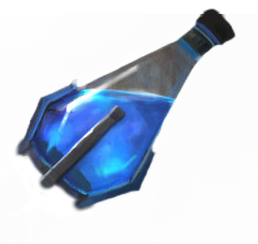
Transformative Oils
The oils listed in this section mimic the powers of magical weapons, though not their numerical bonuses. Most provide potent temporary boosts, and a useful alternative to potions and scrolls in treasure hoards. Unlike the above oils, they cannot be crafted using normal means, but are instead created using the DM's preferred rules for creating magic items. Each is a rare, minor magic item.
Oil of Acuity. While the oil lasts, this weapon can decapitate enemies (or deal additional damage if the enemy can't be decapitated) as if it were a vorpal sword.
Oil of Animation. While the oil lasts, the weapon hovers and attacks on its own, as if it were a dancing sword. If applied to a shield, it instead defends its wielder as if it were an animated shield.
Oil of Bloodshed. While the oil lasts, you can bleed a target, as though the weapon were a sword of wounding.
Oil of Cold. While the oil lasts, the weapon sheds light, allows you to snuff fires, and deals additonal cold damage on a hit, as if the weapon were a frost brand.
Oil of Enchantment. While the oil lasts, this weapon is considered magical for the purpose of overcoming resistance and immunity to nonmagical attacks and damage. This oil is uncommon instead of rare.
Oil of Hate. While the oil lasts, you can designate a creature as your sworn enemy and deal an extra 3d6 damage against it, as if the weapon were an oathbow.
Oil of Heat. While the oil lasts, the weapon sheds light and deals additional fire damage on a hit, as if the weapon were a flame tongue.
Oil of Prowess. Unlike most oils, you apply this oil to your exposed skin. While the oil lasts, so long as you aren't wearing armor, you gain a +3 bonus to attack and damage rolls with unarmed strikes and cestus, which deal damage equal to 1d8 + your Strength or Dexterity modifier (your choice). When you make a Strength check, you can treat a d20 roll of 9 or lower as a 10. Finally, your jump height and distance are doubled, though you can't jump farther than your remaining movement allows.
Oil of Reflection. While the oil lasts, you can use your reaction to attack a creature in your reach that damages you, as if the weapon were a sword of answering.
Oil of Sealife. While the oil lasts, the weapon suffers no penalties for attacking underwater. If applied to armor, you gain a swimming speed equal to your walking speed when worn, and are drawn to the surface when you reach 0 hit points, as if the armor were a set of mariner's armor.
Oil of Shattering. While the oil lasts, you gain a bonus to attack and damage rolls against constructs, and can destroy constructs that have less than 25 hit points remaining after a hit, as if the weapon were a mace of smiting.
Oil of Vampirism. While the oil lasts, you deal necrotic damage and gain temporary hit points after landing a critical hit, as if the weapon were a sword of life stealing.
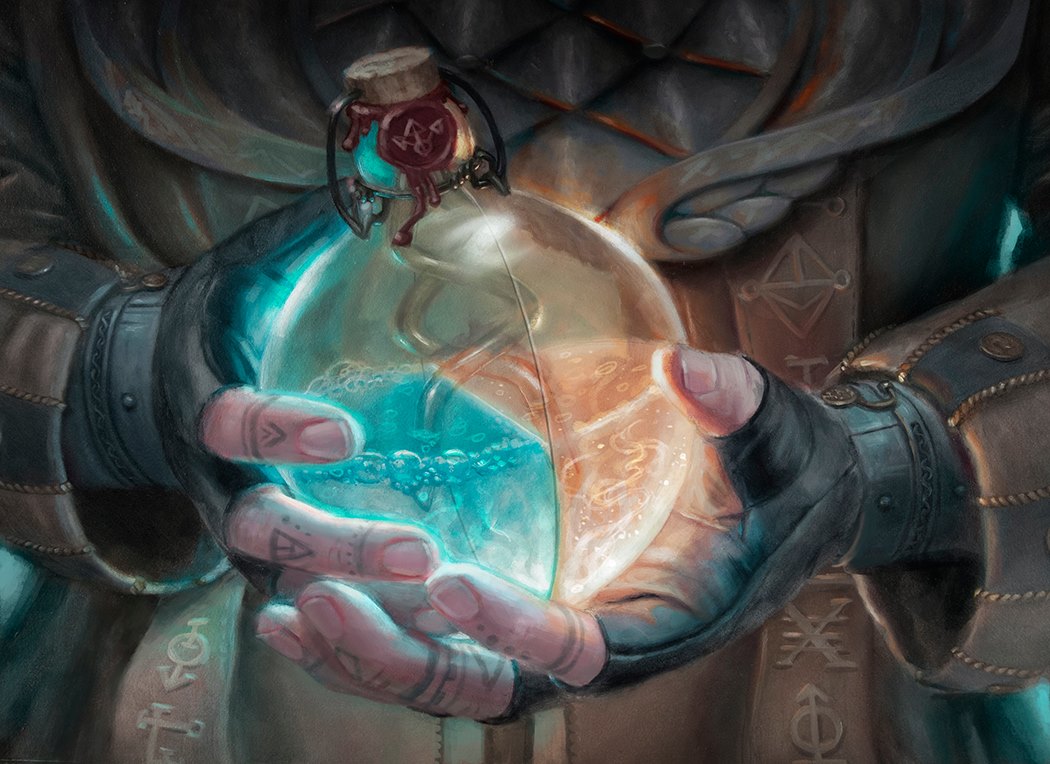


Scrolls
In addition to proficiency in calligrapher's supplies or forgery kits, scribing a spell scroll requires proficiency in the Arcana skill. You must know the spell you scribe through the entire creation process of scribing a spell; if you forget or stop preparing the spell midway through the scroll's creation, you cannot complete it until the spell returns to your spell list. You expend gold pieces to transcribe scrolls, much like the method wizards use to create their spellbooks. Because of this, you need no materials to create a spell scroll beyond a medium, such as paper, parchment, vellum, papyrus, or stone.
Spell Levels & Scrolls
Spells cast from a scroll use their own attack bonuses and save DCs, listed on the table below.
Scrolls
| Spell Level | Rarity | Attack Bonus/DC | Price |
|---|---|---|---|
| Cantrip | Common | +5/13 | 50 gp |
| 1st | Common | +5/13 | 100 gp |
| 2nd | Uncommon | +5/13 | 200 gp |
| 3rd | Uncommon | +7/15 | 1,000 gp |
| 4th | Rare | +7/15 | 2,000 gp |
| 5th | Rare | +9/17 | 10,000 gp |
| 6th | Very Rare | +9/17 | 20,000 gp |
| 7th | Very Rare | +10/18 | 50,000 gp |
| 8th | Very Rare | +10/18 | 75,000 gp |
| 9th | Legendary | +11/19 | 100,000 gp |


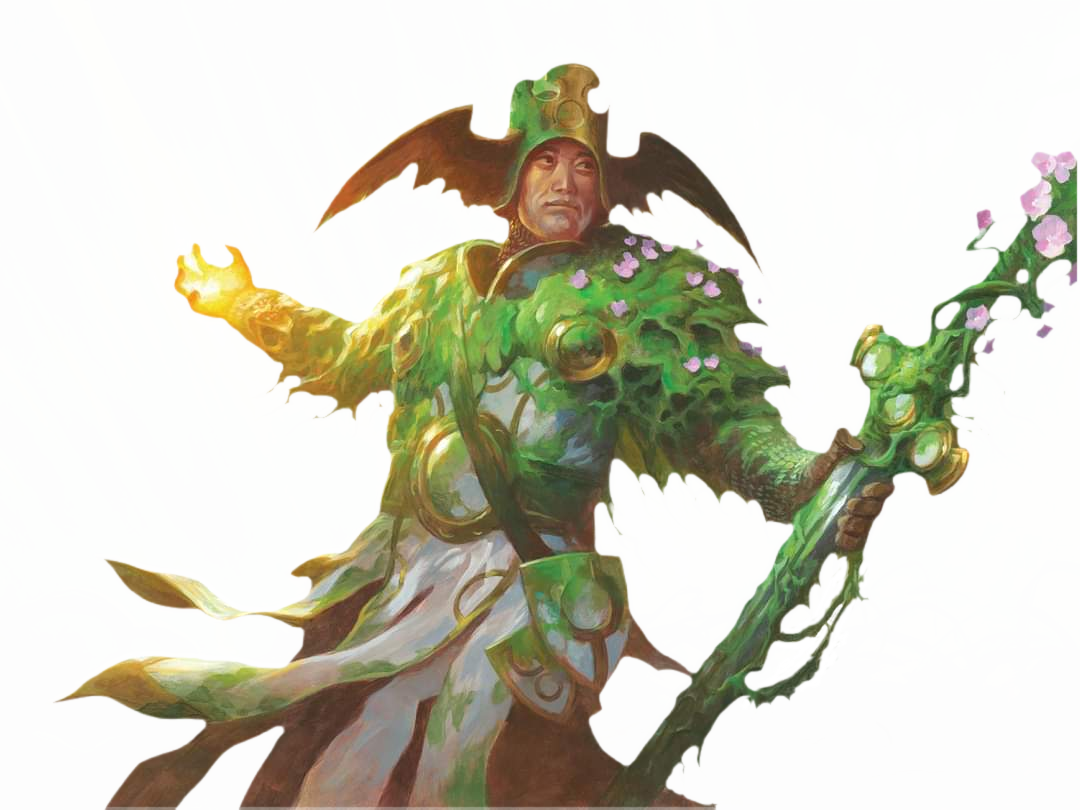
Herbal Mixtures
These herbal mixtures provide small, but potent benefits when applied or consumed. Each weighs 1/2 lb. except the Healer's Kit, which weighs 3 lb.
Herbal Mixtures
| Mixture | Cost |
|---|---|
| Alertness Draught | 25 gp |
| Antiparalytic | 50 gp |
| Antipathogen | 20 gp |
| Antitoxin | 50 gp |
| Clearbreath | 10 gp |
| Eye Black | 1 gp |
| Healer's Kit | 5 gp |
| Incense | 25 gp |
| Insect Repellant | 1 sp |
| Journeybread | 5 gp |
| Nightlight | 20 gp |
| Sunscreen | 10 gp |
Alertness Draught. For 1 hour after drinking this bitter brew, you have advantage on Wisdom (Perception) checks and saving throws against sleep.
Antiparalytic. This bland, slimy fluid grants you advantage on saving throws against paralysis for 1 hour.
Antipathogen. This chalky tablet grants advantage on saving throws against disease for 8 hours.
Antitoxin. This vial of liquid grants advantage on saving throws against poison for 1 hour when drunk.
Clearbreath. Any creature that inhales this mist gains advantage on saving throws against stench and other features that attack the sense of smell.
Eyeblack. This strip of grease applied under or on the eyes, grants advantage on saving throws against being blinded for 8 hours or until it is washed off.
Healer's Kit. This kit is a leather pouch containing bandages, salves, and splints. The kit has ten uses. As an action, you can expend one use of the kit to stabilize a creature that has 0 hit points, without needing to make a Wisdom (Medicine) check.
Incense. A small stick of scented herbs that relaxes the mind, and can be used as a material component for spells that require incense or herbs, including those with a gp value.
Insect Repellant. An acrid concoction applied to the skin that repels mundane insects without statistics for 24 hours.
Journeybread. This dense vegetable cake acts as a day's rations for a medium creature.
Nightlight. A thick, purple liquid kept in a glass vial that glows with flameless bright light in a 30-foot radius and dim light for another 30 feet for 1 hour when shaken. After the hour passes, it becomes inert.
Sunscreen. This mud-based cream grants advantage on saving throws inflicted by extreme heat for 4 hours.
Poisons and Toxins
If you are proficient in Poisoner's Kits, you can use the ingredients in the kit to craft the poisons listed in this section, unless the poison uses a non-humanoid creature in its name. In such cases, you must gather the vital ingredients from a dead or incapacitated specimen of the same name. This delicate process requires succeeding on a DC20 Intelligence (Nature) check and 1d6 minutes. You must be proficient in Poisoner's Kits to make this check, and add your proficiency bonus if you aren't already proficient in the Nature skill.
Types of Poisons
Poisons come in four varieties. Each variety is applied to a creature in a different way; those methods are listed below.
Contact. You can use an action to smear contact poison onto a surface, which remains potent until touched or washed off. A creature that touches contact poison with bare skin suffers its effects.
Ingested. You can use an action to administer this poison to food or drink, to a creature that cannot move, or from inside another creature. A creature must swallow an entire dose of ingested poison to suffer its effects.
Inhaled. You can use an action to send a puff of powder or gas in a 5-foot cube within 20 feet of you, subjecting creatures in the cube to the poison's effects. The resulting cloud dissipates immediately afterward. Holding one's breath is ineffective against inhaled poisons, as they affect nasal membranes, tear ducts, and other parts of the body that absorb chemicals.
Injury. You can use an action to apply an injury poison can be applied to a weapon, three pieces of ammunition, a trap component, or an object that deals piercing or slashing damage. It remains potent until delivered through a wound or washed off. A creature that takes piercing or slashing damage from an object coated with the poison is exposed to its effects. Undelivered injury poisons dry after an hour.
DMG Poisons
| Poison | Type | Save/DC | Price |
|---|---|---|---|
| Basic Poison | Injury | Con 10 | 100 gp |
| Assassin's Blood | Ingested | Con 10 | 150 gp |
| Burnt Othur Fumes | Inhaled | Con 13 | 500 gp |
| Carrion Crawler Mucus | Contact | Con 13 | 200 gp |
| Drow Poison | Injury | Con 13 | 200 gp |
| Essence of Ether | Injury | Con 15 | 300 gp |
| Malice | Inhaled | Con 15 | 250 gp |
| Midnight Tears | Ingested | Con 17 | 1500 gp |
| Oil of Taggit | Contact | Con 13 | 400 gp |
| Pale Tincture | Ingested | Con 16 | 250 gp |
| Purple Worm Poison | Injury | Con 19 | 2,000 gp |
| Serpent Venom | Injury | Con 11 | 200 gp |
| Torpor | Ingested | Con 15 | 600 gp |
| Truth Serum | Ingested | Con 11 | 150 gp |
| Poison | Type | Save/DC | Price |
|---|---|---|---|
| Wyvern Poison | Injury | Con 15 | 1200 gp |
Basic Poison. You can use the poison in this vial to coat one slashing or piercing weapon or up to three pieces of ammunition. A creature hit by the poisoned weapon or ammunition must make a DC 10 Constitution saving throw or take 2 (1d4) poison damage.
Assassin's Blood. A creature subjected to this poison must make a DC 10 Constitution saving throw. On a failed save, it takes 6 (1d12) poison damage and is poisoned for 24 hours. On a successful save, the creature takes half damage and isn’t poisoned.
Burnt Othur Fumes. A creature subjected to this poison must succeed on a DC 13 Constitution saving throw or take 10 (3d6) poison damage, and must repeat the saving throw at the start of each of its turns. On each successive failed save, the character takes 3 (1d6) poison damage. After three successful saves, the poison ends.
Carrion Crawler Mucus. A creature subjected to this poison must succeed on a DC 13 Constitution saving throw or be poisoned for 1 minute. While poisoned in this way, the target is paralyzed. The target can repeat the saving throw at the end of each of its turns, ending the effect on itself on a success.
Drow Poison. A creature subjected to this poison must succeed on a DC 13 Constitution saving throw or be poisoned for 1 hour. If the saving throw fails by 5 or more, the creature is also unconscious while poisoned in this way. The creature wakes up if it takes damage or if another creature takes an action to shake it awake.
Essence of Ether. A creature subjected to this poison must succeed on a DC 15 Constitution saving throw or become poisoned for 8 hours. The poisoned creature is unconscious. The creature wakes up if it takes damage or if another creature takes an action to shake it awake.
Malice. A creature subjected to this poison must succeed on a DC 15 Constitution saving throw or become poisoned for 1 hour. While poisoned in this way, the target is blinded.
Midnight Tears. A creature that ingests this poison suffers no effect until the stroke of midnight. If the poison has not been neutralized before then, the creature must succeed on a DC 17 Constitution saving throw, taking 31 (9d6) poison damage on a failed save, or half as much damage on a successful one.
Oil of Taggit. A creature subjected to this poison must succeed on a DC 13 Constitution saving throw or become poisoned for 24 hours. The poisoned creature is unconscious. The creature wakes up if it takes damage.
Pale Tincture. A creature subjected to this poison must succeed on a DC 16 Constitution saving throw or take 3 (1d6) poison damage and become poisoned. The poisoned creature must repeat the saving throw every 24 hours, taking 3 (1d6) poison damage on a failed save. Until this poison ends, the damage the poison deals can't be healed by any means. After seven successful saving throws, the effect ends and the creature can heal normally.
Purple Worm Poison. This poison must be harvested from a dead or incapacitated purple worm. A creature subjected to this poison must make a DC 19 Constitution saving throw, taking 42 (12d6) poison damage on a failed save, or half as much damage on a successful one.
Serpent Venom. This poison must be harvested from a dead or incapacitated giant poisonous snake. A creature subjected to this poison must succeed on a DC 11 Constitution saving throw, taking 10 (3d6) poison damage on a failed save, or half as much damage on a successful one.
Torpor. A creature subjected to this poison must succeed on a DC 15 Constitution saving throw or become poisoned for 4d6 hours. The poisoned creature is incapacitated.
Truth Serum. A creature subjected to this poison must succeed on a DC 11 Constitution saving throw or become poisoned for 1 hour. The poisoned creature can't knowingly speak a lie, as if under the effect of a zone of truth spell.
Wyvern Poison. This poison must be harvested from a dead or incapacitated wyvern. A creature subjected to this poison must make a DC 15 Constitution saving throw, taking 24 (7d6) poison damage on a failed save, or half as much damage on a successful one.
New Contact Poisons
| Poison | Save/DC | Price |
|---|---|---|
| Aboleth Oil | Con 14 | 400 gp |
| Black Ivy Paste | Con 16 | 100 gp |
| Black Lotus Extract | Con 20 | 2,200 gp |
| Boneshard Paste | Con 13 | 700 gp |
| Brawler's Bourbon | Con 12 | 200 gp |
| Chuul Paralytic | Con 13 | 230 gp |
| Golden Ice | Con 17 | 1,500 gp |
| Sunlight Oil | Con 18 | 700 gp |
Aboleth Oil. A creature subjected to this poison must succeed on a DC 14 Constitution saving throw or become diseased. The disease has no effect for 1 minute and can be removed by any magic that cures disease, but the creature is unaware that they have been affected. After 1 minute passes, the diseased creature's skin becomes translucent and slimy, the creature can't regain hit points unless it is underwater, and the disease can be removed only by heal or another spell that cures diseases cast at 6th level or higher. When the creature is outside a body of water, it takes 6 (1d12) acid damage every 10 minutes, unless moisture is applied to its skin before 10 minutes pass.
Black Ivy Paste. A creature subjected to this poison must make a DC 16 Constitution saving throw or take 3 (1d6) poison damage. The paste retains its potency until it deals at least 10 poison damage.
Black Lotus Extract. A creature subjected to this poison must succeed on a DC 20 Constitution saving throw or take 55 (10d10) poison damage.
Boneshard Paste. An undead subjected to this poison must succeed on a DC 13 Constitution saving throw. On a failed save, the target takes 18 (4d8) radiant damage and is poisoned for 1 minute. On a successful save, the target takes half as much radiant damage and is no longer poisoned. While poisoned in this way, the target is paralyzed. The target can repeat the saving throw at the end of each of its turns, ending the effect on itself on a success. This poison ignores immunity to the poisoned condition.
Brawler's Bourbon. A creature subjected to this poison must succeed on a DC 12 Constitution saving throw or be poisoned for 1 minute. If the saving throw fails by 5 or more, the creature is also unconscious for the same duration. The creature wakes up if it takes damage or if another creature takes an action to shake it awake.
Chuul Paralytic. A creature subjected to this poison must succeed on a DC 13 Constitution saving throw or be poisoned for 1 minute. While poisoned in this way, the target is also paralyzed. The target can repeat the saving throw at the end of each of its turns, ending the effect on itself on a success.
Golden Ice. An evil creature that comes into contact with golden ice must make a DC 17 Constitution saving throw or take 30 (12d4) cold damage. This damage ignores all resistances and immunities to cold damage.
Sunlight Oil. A creature subjected to this poison must succeed on a DC 18 Constitution saving throw or become poisoned for 24 hours. The poisoned creature is unconscious, and wakes if it takes damage.
New Ingested Poisons
| Poison | Save/DC | Price |
|---|---|---|
| Antithesis | Con 14 | 600 gp |
| Bloodwine | Con 18 | 250 gp |
| Celestial Lightsblood | Con 25 | 1,200 gp |
| Depraved Decadence | Con 25 | 1,200 gp |
| Lich Dust | Con 18 | 1,800 gp |
| Lockjaw | Con 11 | 250 gp |
| Nightmare Root | Con 19 | 750 gp |
| Pallid Serpent's Deception | Con 16 | 1,350 gp |
| Unicorn Blood | Con 17 | 500 gp |
Antithesis. A creature subjected to this slimy mixture of parasites and microscopic entities must succeed on a DC 14 Constitution saving throw. On a failed save, the target is infected with a disease that prevents it from regaining hit points through any method other than a short or long rest. If the target regains hit points any other way, it regains no hit points and instead takes 4 (1d8) poison damage. It can then repeat the saving throw, ending the effect on itself on a success.
Bloodwine. An undead subjected to this poison must succeed on a DC 18 Constitution saving throw, taking 10 (3d6) radiant damage on a failed save or half as much damage on a successful one. If consumed by a living creature, the blood of that creature acts as bloodwine to any creature that drinks its blood until the creature completes a long rest.
Celestial Lightsblood. A creature subjected to this poison must make a DC 25 Constitution saving throw. On a failed save, its Dexterity score is reduced by 2 (but cannot be reduced below 1). At the start of its next turn, it must repeat the saving throw. On a second failed save, the target's Constitution score is reduced by 2 (but cannot be reduced below 1). This reduction can only be restored by the greater restoration spell or similar magic.
Depraved Decadence. A creature subjected to this poison must make a DC 25 Constitution saving throw. On a failed save, a creature can no longer receive sustenance by consuming food, no matter how much it eats. Every two days the creature goes without sustenance, its Constitution score decreases by 1. If a creature's Constitution score reaches 0 due to this effect, it dies. A greater restoration spell or similar effects that restore reductions to the target's ability scores cures this poison.
Lich Dust. When a creature ingests the bone dust of a destroyed lich, it takes 10 (3d6) cold damage and must make a DC 18 Constitution saving throw. On a failed save, the target is paralyzed for 1 minute. The paralyzed creature can repeat the saving throw at the end of each of its turns, ending the effect on itself on a success.
Lockjaw. A creature subjected to this poison must make a DC 11 Constitution saving throw. On a failed save, the creature's jaw muscles lock and its tongue falls numb. An affected creature cannot speak or cast spells that require verbal components for 10 minutes.
Nightmare Root. A creature subjected to this poison must make a DC 19 Constitution saving throw. On a failed save, the creature's sleep is haunted with a combination of its greatest fears and memories of its greatest failures. An affected creature cannot benefit from short or long rests, and it suffers 1 level of exhaustion at the next dawn. The poison leaves the creature's system 24 hours after ingestion.
Pallid Serpent's Deception. A creature subjected to this poison must make a DC 16 Constitution saving throw. On a failure, the target takes 22 (4d10) psychic damage, and must repeat the saving throw at the start of each of its turns. On a successful save, the effect ends.
Unicorn Blood. A creature subjected to this poison regains 14 (4d4 + 4) hit points and must succeed on a DC 17 Constitution saving throw or be cursed, suffering one of the effects of the bestow curse spell for one week. The DM rolls 1d4 to determine which curse takes hold.
New Inhaled Poisons
| Poison | Save/DC | Price |
|---|---|---|
| Anosmia | Con 18 | 400 gp |
| Dretch Gas | Con 11 | 125 gp |
| Dust of the Desert Winds | Con 11 | 300 gp |
| Euphoria Breath | Wis 11 | 125 gp |
| Gorgon Breath | Con 13 | 300 gp |
| Gravedust | Con 10 | 100 gp |
| Green Dragonbreath | Con 18 | 1,800 gp |
| Vrock Spores | Con 14 | 900 gp |
Anosmia. A creature subjected to this poison must make a DC 18 Constitution saving throw. On a failed save, the creature loses its sense of smell for 48 hours. The creature automatically fails any Wisdom (Perception) check that relies on smell. If the creature has the Keen Smell trait, it must also succeed on a DC 18 Wisdom saving throw or suffer the effects of the confusion spell until the end of its next turn.
Dretch Gas. Dretch gas lingers for 1 minute after it is released, or until a strong wind disperses it. Any creature that starts its turn in that area must succeed on a DC 11 Constitution saving throw or be poisoned until the start of its next turn. While poisoned in this way, the target can take either an action or a bonus action on its turn, not both, and can't take reactions.
Dust of the Desert Winds. A creature subjected to this poison must succeed on a DC 11 Constitution saving throw or take 3 (1d6) necrotic damage, and must repeat the saving throw at the start of each of its turns. On each successive failed save, the creature takes 2 (1d4) necrotic damage. After five successful saves, the poison ends. If the creature spends its action consuming a liquid, it automatically succeeds the saving throw for that turn.
Euphoria Breath. A creature subjected to this poison must succeed on a DC 11 Wisdom saving throw or can't take take reactions and must roll a d6 at the start of each of its turns to determine its behavior during the turn for the next minute:
1-4. The target takes no actions and uses all of its movement to move in a random direction.
5-6. The target does nothing on its turn other than repeat the Wisdom saving throw, ending the effect on itself on a success.
Gorgon Breath. A creature subjected to this gas must succeed on a DC 13 Constitution saving throw . On a failed save, the target begins to turn to stone and is restrained. At the end of its next turn, the target must repeat the saving throw at the end of its next turn. On a success, the effect ends. On a failure, the creature is petrified.
Gravedust. An undead subjected to this poison must succeed on a DC 10 Constitution saving throw or become incapacitated for 1 minute. The target can repeat the saving throw at the end of each of its turns, ending the effect on itself on a success.
Green Dragonbreath. A creature subjected to this poison must succeed on a DC 18 Constitution saving throw, taking 56 (16d6) poison damage on a failed save, or half as much damage on a successful one.

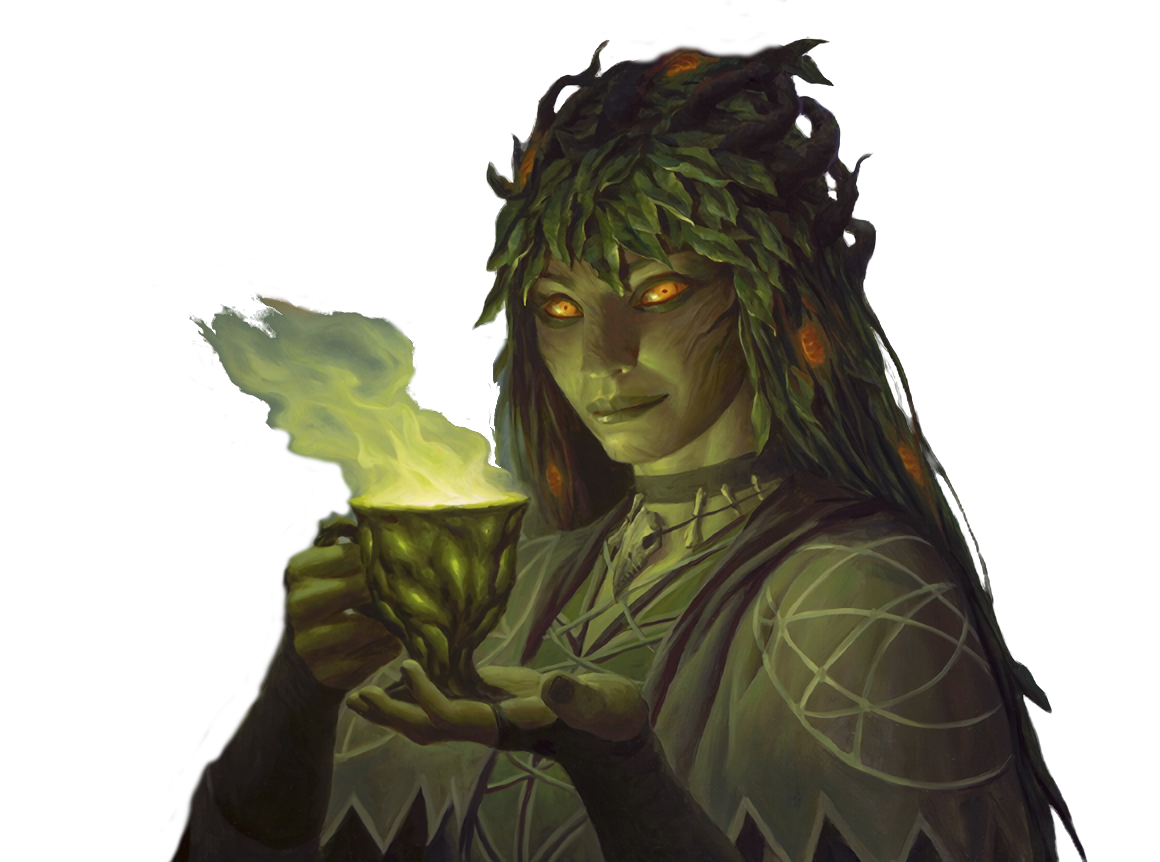
Vrock Spores. A creature subjected to these spores must succeed on a DC 14 Constitution saving throw or become poisoned. While poisoned in this way, the target takes 5 (1d10) poison damage at the start of each of its turns. The target can repeat the saving throw at the end of each of its turns, ending the effect on itself on a success. Emptying a vial of holy water on the target also ends the effect on it.
New Injury Poisons
| Poison | Save/DC | Price |
|---|---|---|
| Bearded Devil Venom | Con 12 | 200 gp |
| Bloodfire Paste | Con 13 | 700 gp |
| Bone Devil's Sting | Con 14 | 900 gp |
| Celestial Essence | Con 14 | 400 gp |
| Centipede Venom | Con 11 | 300 gp |
| Cockatrice Saliva | Con 11 | 125 gp |
| Ettercap Venom | Con 11 | 125 gp |
| Ghost Blossom Extract | Con 13 | 125 gp |
| Grell Venom | Con 11 | 125 gp |
| Imp Venom | Con 11 | 300 gp |
| Lichbane | Con 17 | 600 gp |
| Liquid Mortality | Con 22 | 1,000 gp |
| Metabolite | Con 25 | 1,200 gp |
| Naga Venom | Con 13 | 700 gp |
| Pit Fiend Venom | Con 21 | 2,400 gp |
| Pseudodragon Venom | Con 11 | 125gp |
| Purified Couatl Venom | Con 13 | 700 gp |
| Scorpion Venom | Con 9 | 75 gp |
| Spider Venom | Con 10 | 100 gp |
| Sprite Poison | Con 10 | 50 gp |
| Svirfneblin Poison | Con 12 | 200 gp |
| Tears of the Infernal | Con 22 | 2,600 gp |
| Thri-kreen Venom | Con 11 | 125 gp |
| Veinrot Poison | Con 13 | 700 gp |
| Wasp's Sting | Con 11 | 300 gp |
| Witchbane Poison | Con 17 | 600 gp |
| Yuan-ti Venom | Con 11 | 300 gp |
| Zealot's Blade | Con 25 | 3,200 gp |
Bearded Devil Venom. A creature subjected to this poison must succeed on a DC 12 Constitution saving throw or be poisoned for 1 minute. While poisoned, the target can't regain hit points. The target can repeat the saving throw at the end of each of its turns, ending the effect on itself on a success.
Bloodfire Paste. A creature subjected to this poison must make a DC 13 Constitution saving throw, taking 11 (2d10) fire damage on a failed save. At the start of each of its turns, the target repeats the saving throw. On each successive failed save, the creature takes 3 (1d6) fire damage. After three successful saves, the poison ends.
Bone Devil's Sting. A creature subjected to this poison must succeed on a DC 14 Constitution saving throw or take 17 (5d6) poison damage and become poisoned for 1 minute. On a successful save, the target takes half damage and is not poisoned. The target repeats the saving throw at the end of each of its turns, ending the effect on itself on a success.
Celestial Essence. An undead subjected to this poison must succeed on a DC 14 Constitution saving throw or take 5 (2d4) radiant damage.
Centipede Venom. A creature subjected to this poison must succeed on a DC 11 Constitution saving throw, taking 10 (3d6) poison damage on a failed save. If the poison damage reduces the target to 0 hit points, the target is stable but poisoned for 1 hour, even after regaining hit points, and is paralyzed while poisoned in this way.
Cockatrice Saliva. A creature subjected to this poison must succeed on a DC 11 Constitution saving throw against being magically petrified. On a failed save, the creature begins to turn to stone and is restrained. It must repeat the saving throw at the end of its next turn. On a success, the effect ends. On a failure, the creature is petrified for 24 hours.
Ettercap Venom. A creature subjected to this poison must succeed on a DC 11 Constitution saving throw, taking 4 (1d8) poison damage and becoming poisoned for 1 minute on a failed save. The creature repeats the saving throw at the end of each of its turns, ending the effect on itself on a success.
Ghost Blossom Extract. A creature subjected to this poison must succeed on a DC 13 Constitution saving throw or be poisoned for 1 minute. While poisoned in this way, the target is also paralyzed. If the target fails its saving throw by 3 or more, the target drops any items it is holding, and if it fails by 5 or more, it falls prone. The poisoned creature can repeat the saving throw at the end of each of its turns, ending the effect on itself on a success.
Grell Venom. A creature subjected to this poison must succeed on a DC 11 Constitution saving throw or become poisoned for 1 minute. The poisoned creature is paralyzed. The creature can repeat the saving throw at the end of each of its turns, ending the effect on itself on a success.
Imp Venom. A creature subjected to this poison must succeed on a DC 11 Constitution saving throw, taking 10 (3d6) poison damage on a failed save, or half as much damage on a successful one.
Lichbane. An undead subjected to this poison must make a DC 17 Constitution saving throw. On a failed save, its Intelligence, Wisdom, and Charisma scores are reduced by 2 for 1 minute. At the end of its next turn, the target repeats the saving throw. On a failure, the effect becomes permanent and can only be cured by a greater restoration spell or similar magic. On a successful save, the reduction ends.
Liquid Mortality. An undead subjected to this poison must make a DC 22 Constitution saving throw. On a failed save, its Strength score is permanently reduced by 2. If this effect reduces an undead's Strength to 0, it is destroyed, and cannot be resurrected or reanimated by any means other than a wish spell. The target's Strength score can be restored by a greater restoration spell or similar magic.

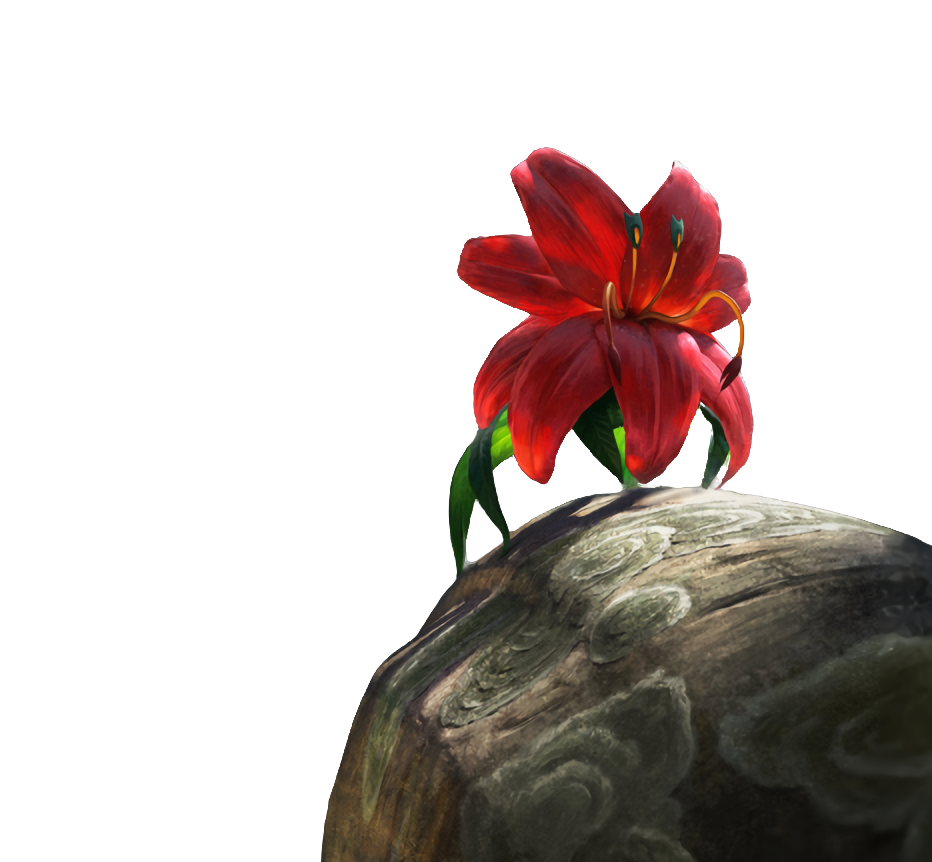
Metabolite. A creature subjected to this poison must make a DC 25 Constitution saving throw or be poisoned for 1 minute. While poisoned in this way, the target suffers the effects of the slow spell. At the end of each of its turns, the target repeats the saving throw, ending the effect on itself on a success.
Naga Venom. A creature subjected to the venom of a spirit naga must succeed on a DC 13 Constitution saving throw, taking 31 (7d8) poison damage on a failed save, or half as much damage on a successful one.
Pit Fiend Venom. A creature subjected to this poison must succeed on a DC 21 Constitution saving throw or become poisoned. While poisoned in this way, the target can't regain hit points, and it takes 21 (6d6) poison damage at the start of each of its turns. The poisoned target can repeat the saving throw at the end of each of its turns, ending the effect on itself on a success.
Pseudodragon Venom. A creature subjected to this poison must succeed on a DC 11 Constitution saving throw or be poisoned for 1 hour. If the saving throw fails by 5 or more, the creature is also unconscious while poisoned in this way. The creature wakes up if it takes damage or if another creature takes an action to shake it awake.
Purified Couatl Venom. A creature subjected to this poison must succeed on a DC 13 Constitution saving throw or be poisoned for 24 hours. Until this poison ends, the target is unconscious. Another creature can use an action to shake the target awake. This effect ignores immunity to the poisoned condition.
Scorpion Venom. A creature subjected to this poison must make a DC 9 Constitution saving throw, taking 4 (1d8) poison damage on a failed save, or half as much damage on a successful one.
Spider Venom. A creature subjected to this poison must succeed on a DC 10 Constitution saving throw or take 2 (1d4) poison damage.
Sprite Poison. A creature subjected to this poison must succeed on a DC 10 Constitution saving throw or be poisoned for 1 minute. If the saving throw fails by 5 or more, the creature is also unconscious while poisoned in this way. The creature wakes up if it takes damage or if another creature takes an action to shake it awake.
Svirfneblin Poison. A creature subjected to this poison must succeed on a DC 12 Constitution saving throw or be poisoned for 1 minute. The target can repeat the saving throw at the end of each of its turns, ending the effect on itself on a success.
Tears of the Infernal. This incredibly rare poison is made from the blood of a powerful fiend and the spit of an ancient black dragon. A creature subjected to this poison must succeed on a DC 22 Constitution saving throw,
taking 31 (7d8) acid and 35 (10d6) fire damage on a
failed save, or half as much damage on a success.
This poison ignores all resistances and
immunities to damage.
Thri-kreen Venom. A creature subjected to this poison must succeed on a DC 11 Constitution saving throw or be poisoned for 1 minute. If the saving throw fails by 5 or more, the target is also paralyzed. The poisoned target can repeat the saving throw on each of its turns, ending the effect on itself on a success.
Veinrot Poison. A creature subjected to this poison must succeed on a DC 13 Constitution saving throw or take 5 (2d4) necrotic damage and become poisoned. While poisoned in this way, the target's Constitution score decreases by 2. The poisoned creature repeats the saving throw every 24 hours, taking 5 (2d4) necrotic damage on a failed save.
While the creature is poisoned, the damage it takes from this poison can't be healed by any means. After three successful saving throws against this poison, the effect ends, and the hit points can be restored.
Wasp's Sting. A creature subjected to this poison must succeed on a DC 11 Constitution saving throw, taking 10 (3d6) poison damage on a failed save, or half as much damage on a successful one. If the poison damage reduces the target to 0 hit points, the target is stable but poisoned for 1 hour, even after regaining hit points, and is paralyzed while poisoned in this way.
Witchbane. A creature subjected to this poison must make a DC 17 Constitution saving throw. On a failed save, the target loses 1d4 spell slots, removing 1st-level slots first and moving to the next-highest level when all slots of the current level have been lost.
Yuan-ti Venom. A creature subjected to the poison from a yuan-ti malison must succeed on a DC 11 Constitution saving throw, taking 7 (2d6) poison damage on a failed save, or half as much damage on a successful one.
Zealot's Blade. A creature subjected to this poison must make a DC 25 Constitution saving throw, taking 78 (12d12) poison damage on a failed save, or half as much damage on a successful one. This damage ignores resistances and immunities to damage.

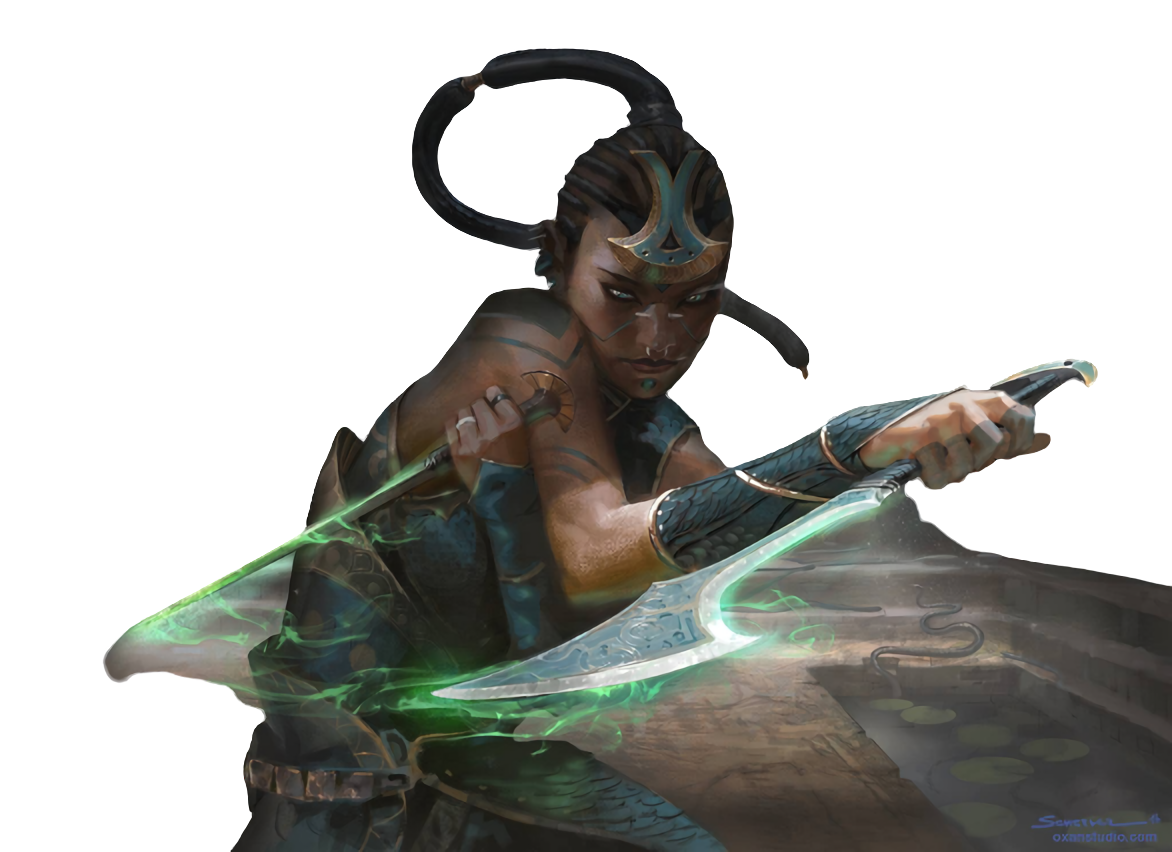
PART VI
Spells
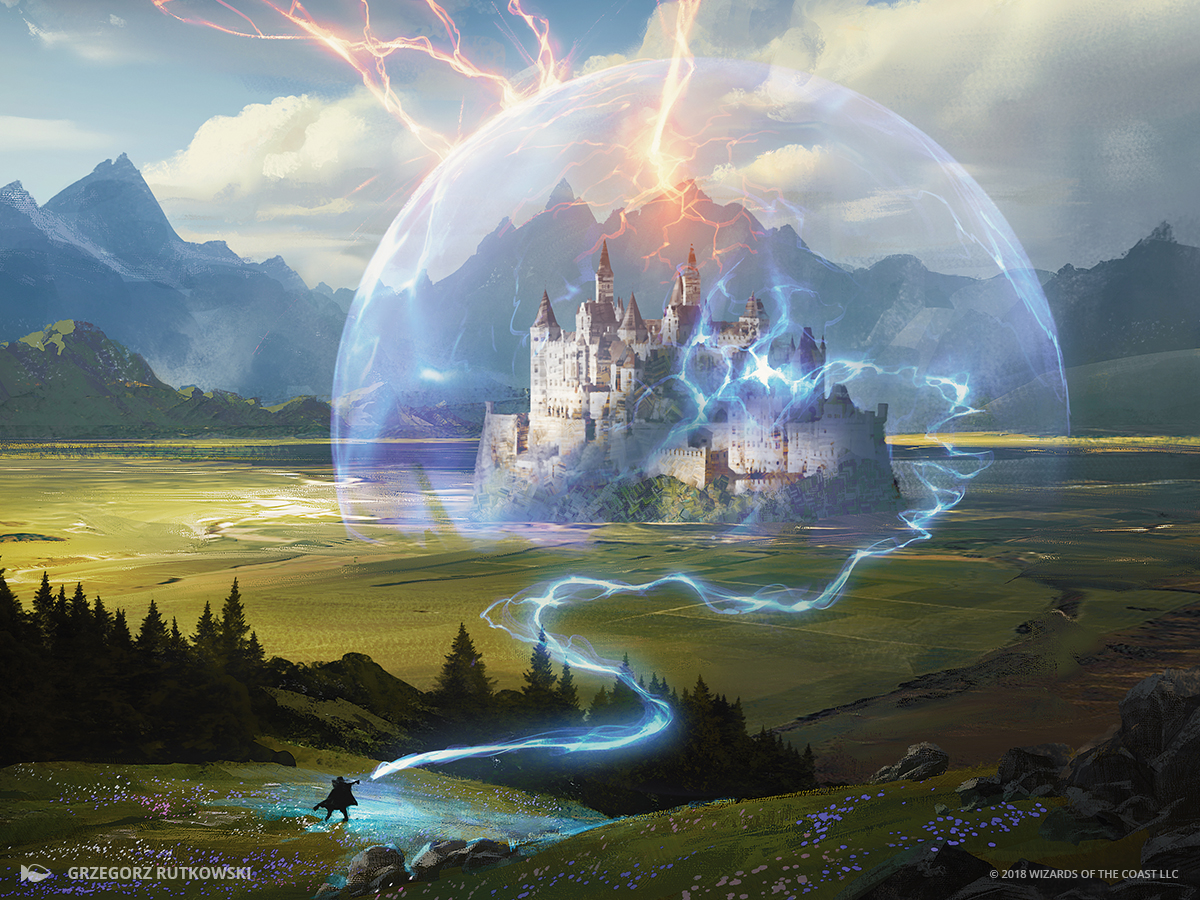
Spell Descriptions
The spells in this section are presented in alphabetical order.
Autopilot
4th-level transmutation (Artificer, Sorcerer, Wizard)
- Casting Time: 1 action
- Range: 120 feet
- Components: V, S
- Duration: 8 hours
One land vehicle that you can see within range shudders to life and gains the ability to move at a speed of 20 feet without a draft animal or driver, animating its parts as necessary. For the duration, the vehicle follows your verbal commands, as well as those of other creatures you designate. The vehicle's cargo capacity, hit points, and other statistics are unchanged.
At Higher Levels. If you cast this spell using a spell slot of 5th level or higher, you can target one additional land vehicle for each slot level above 4th. When you use a spell slot of 9th level, you can target a water or air vehicle instead.
Conjure Cannon
5th-level conjuration (Artificer, Wizard)
- Casting Time: 1 action
- Range: 15 feet
- Components: V, S, M (a lead ball and a pinch of gunpowder)
- Duration: Concentration, up to 1 minute
You summon a heavy bronze bombard at a point you can see within range, which instantly aims and fires a cannonball in a direction of your choice. The ball flies in a straight line up to 150 feet before falling to the ground. If the ball would impact a creature or object, the target must make a Dexterity saving throw. On a failed save, the ball strikes the target, which takes 8d8 bludgeoning damage. If the target is a structure or construct, the damage it takes is doubled.
If the cannonball kills or destroys the target, it continues flying along its path. Otherwise, the ball stops moving.
Until the spell ends, iron cannonballs and gunpowder magically appear in a space of your choice within 5 feet of the cannon, which can be used to load and fire the cannon, following the normal rules for siege engines. These supplies disappear if moved more than 5 feet away from the cannon or used for any other purpose, and do not explode upon taking fire or lightning damage. Both the cannon and any conjured supplies left on the battlefield disappear when this spell ends.
At Higher Levels. When you cast this spell using a spell slot of 6th level or higher, the damage increases by 1d8 for each slot level above 5th.
Conjure Loom
3rd-level conjuration (ritual) (Artificer, Bard, Wizard)
- Casting Time: 1 hour
- Range: 10 feet
- Components: V, S, M (a pendant shaped like a spool of thread worth at least 5 gp)
- Duration: 24 hours
You conjure a magically-animated vertical loom in range that lasts for the duration. The loom is equipped with heddles that magically attach to yarn, reed and levers that move automatically at the user's telepathic command, animated weights that uncoil fabric wrapped around them to provide additional length while maintaining tension, and a shuttle.
It is large enough for one humanoid to work on at a time.
For the duration, you and any other creature can use the loom to make crafting checks, as though it were a normal, stationary loom. When a creature makes a check to craft using this loom, it does so with advantage.
The loom cannot provide you with the thread or yarn necessary to create items from scratch, but does provide a rich array of dyes and small fiber spools to add color or patterns to a garment whose thread you supply yourself.
You can dismiss this spell as an action. Casting this spell on the same spot every day for 30 days makes the loom permanent, though any component or tool taken more than 30 feet from the loom magically returns to it.
Dampen
3rd-level abjuration (Artificer, Druid, Sorcerer, Wizard)
- Casting Time: 1 action
- Range: 120 feet
- Components: V, S, M (a fistful of wet clay, which the spell consumes)
- Duration: Concentration, up to 1 minute
Gunpowder and objects containing gunpowder in a 5-foot-radius circle within range are soaked with condensed moisture for the duration. Soaked items do not explode after taking fire or lightning damage. Affected powder and items cannot be used to make attacks, and affected items with the gunpowder property do not function until the spell ends.
You can use your action to end this spell on one item that you can see within range without ending the spell.
At Higher Levels. When you cast this spell using a spell slot of 4th level or higher, the radius of the circle increases by 5 feet for each slot level above 3rd. If you cast this spell using a spell slot of 4th level or higher, the duration is concen- tration, up to 10 minutes. If you use a spell slot of 5th level or higher, the duration is 8 hours. If you use a spell slot of 7th level or higher, the duration is 24 hours. If you use a 9th level spell slot, the spell lasts until it is dispelled. Using a spell slot of 5th level or higher grants a duration that doesn't require concentration.
Find Steed/Find Greater Steed
These spells work as-written, with the following change:
The summoned creature appears wearing a riding saddle and a pair of saddlebags, which cannot be removed and disappear when the steed does.

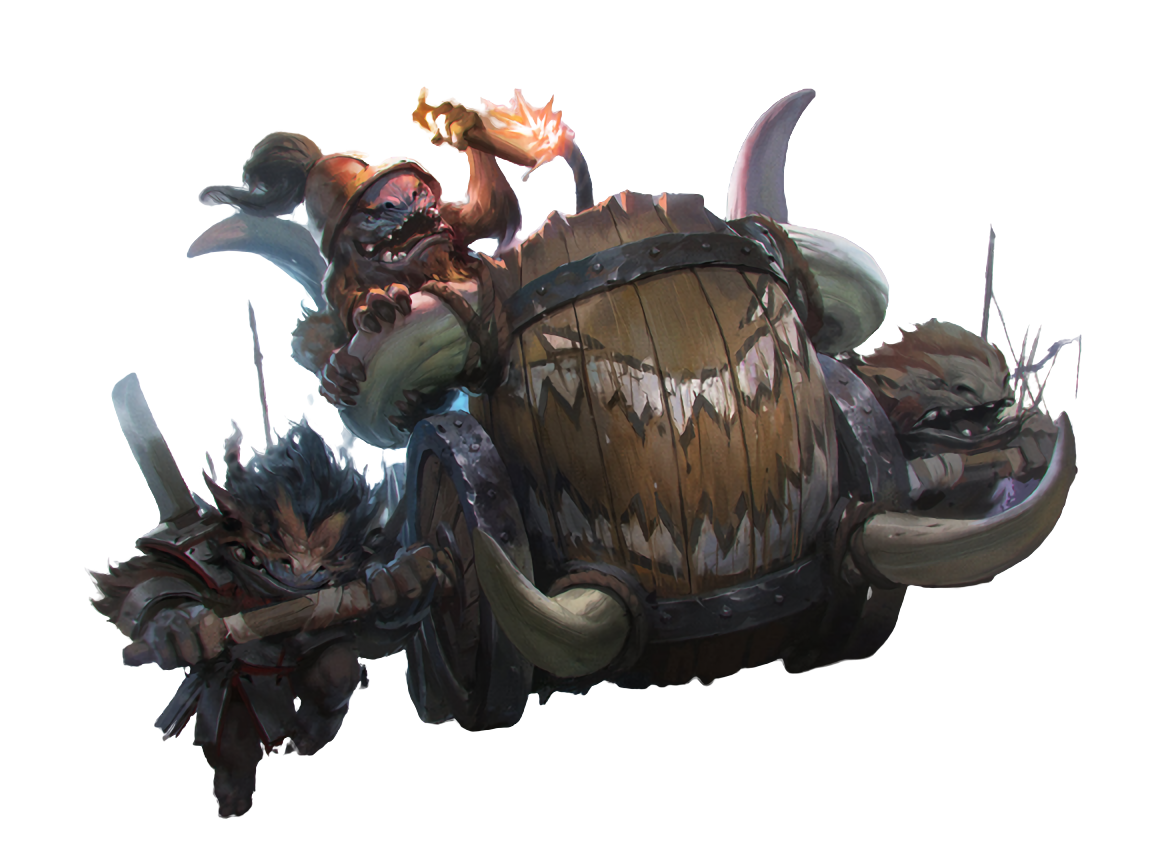
Flame Blade
This spell works as-written, with the following change:
The blade is functionally a scimitar, with all its weapon properties.
Fortify
7th-level abjuration (Sorcerer, Wizard)
- Casting Time: 1 hour
- Range: 300 feet
- Components: V, S, M (a polished gemstone sphere worth at least 1,000 gp, which the spell consumes)
- Duration: Concentration, up to 8 hours
A faintly-shimmering dome of force with a radius of up to 1 mile springs into existence around a Huge or larger object or structure that you can see within range. If the target object or structure moves, the dome moves with it.
While outside the dome-shaped barrier, siege engines and Large or larger creatures have disadvantage on attack rolls against targets inside it. Creatures and objects within the barrier have advantage on saving throws against spells and other effects inflicted by creatures and objects outside it.
Any spell of 5th level or lower cast from outside the barrier can't affect creatures or objects within it, even if the spell is cast using a higher level spell slot. Such a spell can target creatures and objects within the barrier, but the spell has no effect on them. If a creature attempts to use teleportation or interplanar travel to enter the barrier, it must first make a Charisma saving throw. On a success, the creature can use that magic to enter. On a failure, the creature can't enter and wastes the use of the spell or effect. The barrier also extends into the Ethereal Plane, blocking ethereal travel.
This spell can only be dispelled by dispel magic or similar effects cast at 5th level or higher while the caster is within the barrier, and must target the object or structure that this spell targets, rather than the barrier itself.
Creatures and objects pass into or out of the barrier without being slowed or damaged. Attacks, spells, and other effects made within the barrier are unaffected by its defenses.
For the duration, the target object or structure gains a +3 bonus to its Armor Class, resistance to all damage, 50 additional hit points that last for the duration, and its Damage Threshold (if it has one) is doubled.
At Higher Levels. When you cast this spell using a spell slot of 8th level, you can maintain your concentration on the spell for up to 24 hours. When you use a spell slot of 9th level, you can maintain your concentration on the spell indefinitely, and creatures and objects outside the barrier cannot make attacks against targets within the barrier.
Instant Instrument
1st-level conjuration (Bard)
- Casting Time: 1 action
- Range: Self
- Components: V, S
- Duration: 1 hour
A magical musical instrument of your choice appears in your empty hand. If you are proficient in the instrument, you can use it as a focus for your bard spells, and to play music. The instrument disappears if you fall unconscious or you use a bonus action to end the spell.
Mobile Furnace
3rd-level conjuration (ritual) (Artificer, Cleric, Paladin, Wizard)
- Casting Time: 1 hour
- Range: 10 feet
- Components: V, S, M (a pendant shaped like a hammer worth at least 5 gp)
- Duration: 24 hours
You conjure a magically-animated smithy in range that lasts for the duration. The forge is fully equipped with a hearth which burns with flames that require no fuel, animated bellows that pump air at your command, a grindstone that spins at the user's verbal command, an anvil, and a full set of smith's tools. It is large enough for one humanoid to work in it at a time, and it emanates dim light and heat in a 30 foot radius that keeps any creature within the area warm and dry, no matter the surrounding climate.
For the duration, you and any other creature can use the smithy conjured by this spell to make crafting checks, as though it were a normal, stationary forge. When a creature makes a check to craft an item using this smithy, it does so with advantage.
The furnace cannot provide you with the material necessary to create items from scratch, but it does provide scraps of metal, wood, twine, and other components to repair existing ones.
You can dismiss this spell as an action. Casting this spell on the same spot every day for 60 days makes the forge permanent, though any component or tool taken more than 30 feet from the forge magically returns to it.
Mordenkainen's Sword
7th-level evocation (Bard, Wizard)
- Casting Time: 1 action
- Range: 60 feet
- Components: V, S, M (a miniature platinum sword with a grip and pommel of copper and zinc, worth 250 gp)
- Duration: Concentration, 1 minute
You create a sword-shaped plane of force that hovers within range. It lasts for the duration.
When the sword appears, make a melee spell attack against a target of your choice within 5 feet of the sword. On a hit, the target takes 7d10 force damage. Until the spell ends, you can use a bonus action on each of your turns to move the sword up to 60 feet to a spot you can see and repeat this attack against the same target or a different one.
At Higher Levels. When you cast this spell using a spell slot of 8th level or higher, the damage increases by 2d10 for each slot level above 7th.
Phantom Steed
This spell works as-written, with the following change:
The summoned creature appears wearing a riding saddle and a pair of saddlebags, which cannot be removed and disappear when the steed does.
Portable Wheel
3rd-level conjuration (ritual) (Artificer, Druid, Wizard)
- Casting Time: 1 hour
- Range: 10 feet
- Components: V, S, M (a pendant shaped like a jar worth at least 5 gp)
- Duration: 24 hours
You conjure a magically-animated potter's wheel and small kiln in range that lasts for the duration. The wheel is fully equipped with picks, needles, and other tools to create complex patterns, and rotates at any speed you choose up to 300 rotations per minute. The fires of the kiln require no fuel and never waver or go out, and can fit any Medium or smaller unfired clay object. If any other object or creature is placed into the kiln, the spell ends. The kiln emanates heat in a 30 foot radius that keeps any creature within the area warm and dry, no matter the surrounding climate. It is large enough for one humanoid to work on at a time.
For the duration, you and any other creature can use the wheel conjured by this spell to make crafting checks, as though it were a normal, stationary potter's wheel. When a creature makes a check to craft using this wheel, it does so with advantage.
The wheel cannot provide you with the clay necessary to create pottery from scratch.
You can dismiss this spell as an action. Casting this spell on the same spot every day for 30 days makes the wheel permanent, though any component or tool taken more than 30 feet from the wheel magically returns to it.
Rallying Cry
4th-level enchantment (Bard, Cleric, Paladin)
- Casting Time: 1 bonus action
- Range: Self (60-foot radius)
- Components: V, S, M (a weapon with the decorated modification worth at least 10 gp, or a magical weapon)
- Duration: Concentration, up to 10 minutes
You raise the weapon used in the spell's casting and shout out a call for courage in the face of danger. Choose one creature that you can see within 300 feet that has not frightened you in the last 24 hours. Until the spell ends, the target cannot frighten creatures of your choice within range.
A creature must be able to see or hear you in order to benefit from this spell.
Reinforce Ammunition
3rd-level transmutation (Artificer, Ranger, Wizard)
- Casting Time: 1 action
- Range: Self
- Components: V, S, M (a sliver of adamantine worth 10 gp)
- Duration: 10 minutes
You infuse all ammunition that you are wearing or carrying, or that you pick up while this spell is active, with supernatural endurance. For the duration, you can recover all expended ammunition at the end of a battle when you would normally recover half. If the ammunition affected by this spell is magical, it does not lose its magical properties after use.
Rust Metal
2nd-level evocation (Druid, Ranger, Sorcerer, Wizard)
- Casting Time: 1 action
- Range: Touch
- Components: V, S
- Duration: Instantaneous
You touch a nonmagical ferrous metal object you can see within range. If the object isn't being worn or carried, the touch destroys a 1-foot cube of it. If the object is being worn or carried by a creature, the creature can make a Dexterity saving throw to avoid the spell.
If the object touched is either metal armor or a metal shield being worn or carried, its takes a permanent and cumulative −1 penalty to the AC it offers. Armor reduced to an AC of 10 or a shield that drops to a +0 bonus is destroyed. If the object touched is a metal weapon, it takes a permanent and cumulative −1 penalty to damage rolls. If its penalty drops to −5, the weapon is destroyed.
At Higher Levels. When you cast this spell using a spell slot of 4th level or higher, the spell can destroy an additional contiguous 1-foot cube of material, and the penalty applied to metal armor, shields, and weapons increases by 1 for every two slot levels above 2nd.
Saddle Up
1st-level conjuration (Druid, Ranger, Paladin, Wizard)
- Casting Time: 1 bonus action
- Range: 30 feet
- Components: V, S, M (a leather belt and small pouch)
- Duration: 24 hours
Choose one willing beast, or creature in the form of a beast, within range. A riding saddle and one saddlebag appear fastened to the target's back, which remain for the duration. The saddle and bag can be removed from the target, but if moved more than 120 feet away from it, the items vanish and re-appear on the target's back. If the target is reduced to 0 hit points, changes form, or disappears, the spell ends.
Setup
1st-level conjuration (Artificer, Bard, Warlock, Wizard)
- Casting Time: 1 action
- Range: 10 feet
- Components: V, S
- Duration: 8 hours
You name a game of your choice, and an appropriate gaming set of your choice appears in a 5-foot square within range. This spell also conjures any useful extra components, such as a cup for rolling dice, a flat board to place a pile of cards, or sheets of writing material and writing utensils. The spell animates the components it conjures to automatically shuffle any deck, deal any hand required, and otherwise act as an impartial arbitrator of the game rules. You can dismiss this spell as an action.
At Higher Levels. When you cast this spell using a slot of 3rd level or higher, you can choose one creature for chance to favor during games played with this spell. The target is not guaranteed to win, but has advantage on checks to do so.
Smites
Any spell with "smite" in its name which is listed on the paladin spell list, such as staggering smite or blinding smite, can be used after hitting with any weapon attack, not just a melee weapon attack.
Speech
3rd-level illusion (ritual) (Bard, Cleric, Paladin)
- Casting Time: 1 action
- Range: Touch
- Components: V, S, M (honeycomb and herbs steeped in warm water)
- Duration: Concentration, up to 10 minutes
You amplify the voice of a creature you touch, allowing it to reach a vast audience. Every creature in a radius of up to 1 mile around the target hears its spoken words at the same volume it would if the target stood within 10 feet of it, regardless of distance or obstacles between the target and the listener. You or the target can use an action to adjust this radius, or suppress the effects of this spell and allow the target to speak at a normal volume (no action required), and the target can use an action to end this spell.
Spiritual Weapon
This spell works as-written, with the following change:
When you conjure the weapon, choose one of the following properties: bypass, ensnaring, finisher, heavy, nonlethal, reach, sundering, sweeping, wind-up, or winged properties. The spiritual weapon has that property until the spell ends.
Steel Wind Strike
4th-level conjuration (Ranger, Warlock, Wizard)
- Casting Time: 1 action
- Range: 30 feet
- Components: S, M (a melee weapon worth at least 1 sp)
- Duration: Instantaneous
You flourish the weapon used in the casting and then vanish to strike like the wind. Choose up to five creatures you can see within range. Make a melee weapon attack against each target. On a hit, a target takes 5d10 force damage.
You can then teleport to an unoccupied space you can see within 5 feet of one of the targets you hit or missed.
At Higher Levels. When you cast this spell using a spell slot of 5th level or higher, you can target one additional creature for each slot level above 4th.
Stone Shape
This spell works as-written, with the following change:
If you are proficient in mason's tools, you can create objects with a high level of artistic detail, such as statues, etchings, and engraved letters.
Summon Still
3rd-level conjuration (ritual) (Artificer, Cleric, Wizard)
- Casting Time: 1 hour
- Range: 10 feet
- Components: V, S, M (a pendant shaped like a barrel worth at least 5 gp)
- Duration: 24 hours
You conjure a magically-animated still within range that lasts for the duration. The still is equipped with a boiler that burns with flames that require no fuel, tubing made from unbreakable glass, a tank to mix ingredients, and a barrel to age the finished product. The still is large enough for one humanoid to work in at a time, and it emanates warmth in a 30 foot radius that keeps any creature within the area warm and dry, no matter the surrounding climate.
For the duration, you and any other creature can use the still conjured by this spell to make crafting checks, as though it were a normal still. When a creature makes a check to craft an item using this still, it does so with advantage.
The still cannot provide you with the hops or base to create new or distilled beverages, but it does provide samples of spices and other seasonings to flavor your creations.
You can dismiss this spell as an action. If you dismiss this spell while a finished product is aging in the barrel, it continues to age in an extradimensional space where the barrel and contents can breathe. You can access the contents when you cast this spell again. Casting this spell on the same spot every day for a year makes the still permanent, though any component or tool taken more than 30 feet from the still magically returns to it.
Tailwind
2nd-level evocation (Druid, Ranger)
- Casting Time: 1 action
- Range: Self (20-foot-radius)
- Components: V, S
- Duration: 1 hour
While this spell is active, you can use a bonus action on each of your turns to push favorable winds behind a creature of your choice within range, increasing its walking and flying speed (if it has one) by 10 feet until the end of its next turn.
In addition, the travel paces of you and all other creatures within range are doubled for the duration.
Transmute Weapon
3rd-level transmutation (Artificer)
- Casting Time: 1 bonus action
- Range: Touch
- Components: V, S, M (a piece of the desired material worth at least 2 gp, which the spell consumes)
- Duration: 1 hour
You touch a sliver of adamantine, bone, bronze, dimeritium, iron, ironwood, mithral, obsidian, steel, stone, or wood to a weapon, which spreads to cover the entire weapon and infuses it with the material's properties. For the duration of the spell, the weapon has the attributes of the infused material, instead of its own.

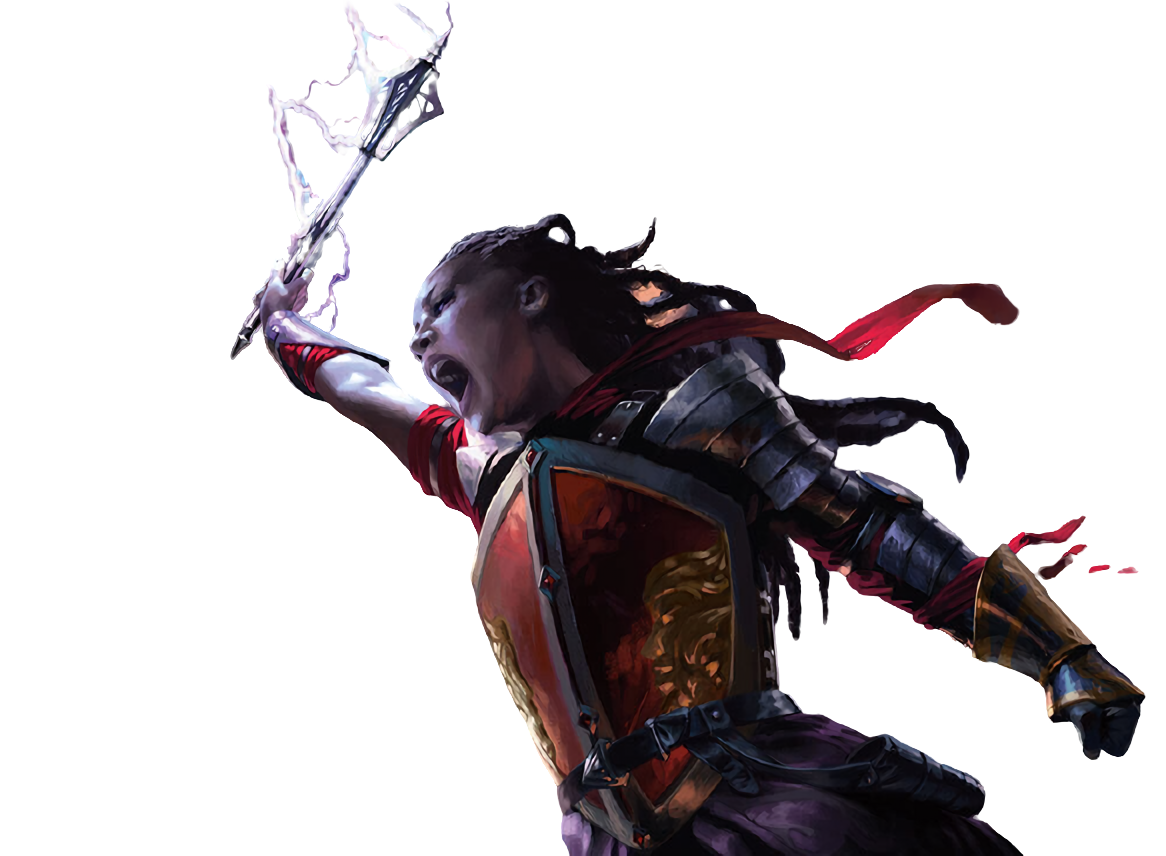
PART VII
Monsters
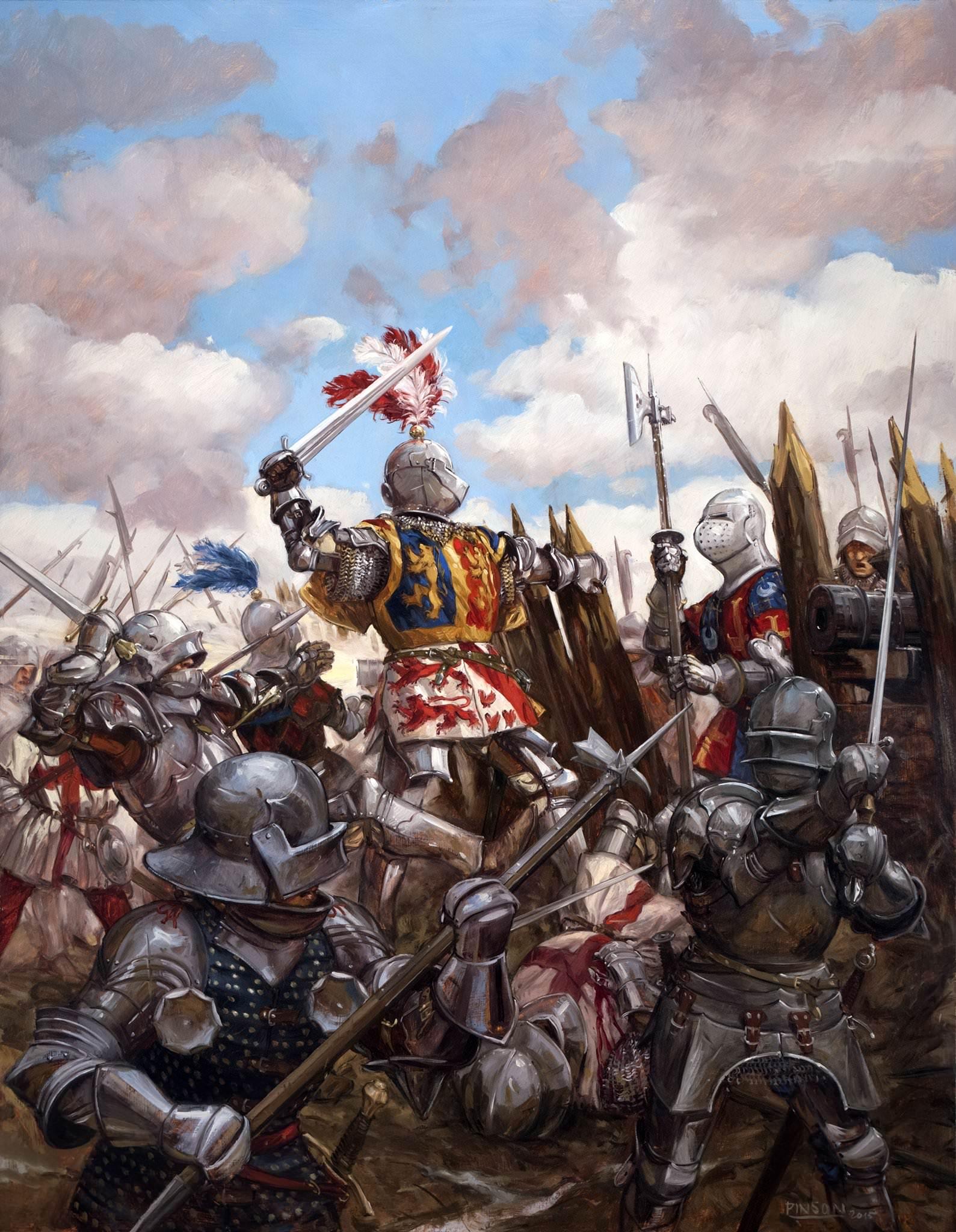
Military Units
At high levels, player characters can face down more than a few scattered infantry. Small armies can battle a party of adventurers and lose. That number of creatures on the battlefield can be a challenge to run for both players and Dungeon masters. Designed with rules introduced in The Warrior's Codex and the Book of Hordes, this section combines diverse weapon options with efficient mass combat statblocks to create groups of specialized soldiers, and indicates to monster creators how properties introduced in WCX should be incorporated into monster statistics.
Monsters with WCX Weapons
This is a homebrew document, so any monster not listed here technically lacks the capabilities that player characters who use WCX equipment have. While the Dungeon Master isn't obligated to convert the monsters' weapons to the versions in Part III or add new options to their arsenals, it is recommended, to ensure both sides engage on even footing.
Monsters' weaponry uses the same conversion rules as players' equipment, though enemies should use diversified ammunition when sensible. For player characters, all arrows become field arrows and all crossbow bolts become quarrels. Other options must be purchased after a group begins to use WCX, but monsters do not have this opportunity.
Note that, while monsters carrying weapons with the parry property do not have a Parry listed in their Reactions section, they can still use those weapons to parry attacks.
Battalion of Knights
Gargantuan horde of large creatures, unaligned
- Armor Class 18 (full plate)
- Hit Points 312 (25d20 + 50)
- Speed 60 ft.
STR DEX CON INT WIS CHA 24 (+7) 12 (+1) 14 (+2) 11 (+0) 11 (+0) 15 (+2)
- Skills Athletics +12, Intimidation +7, Persuasion +7
- Condition Immunities charmed, frightened, grappled, paralyzed, petrified, poisoned, prone, restrained, stunned, unconscious
- Senses passive Perception 10
- Languages Any one language (usually Common)
- Challenge 14 (11,500 XP)
Horde. The battalion can occupy another creature's space and vice versa, and the battalion can move through any opening large enough for a Large beast. Additionally, the battalion is immune to any spell or effect that would alter its form.
Plate Armor. When the battalion takes nonmagical bludgeoning, piercing, or slashing damage, the damage it takes is reduced by 5.
Reactive. The battalion of knights can take one reaction on every turn in combat.
Stampede. When the battalion moves through the space of a Huge or smaller creature, the squad can force the creature to make a DC 18 Strength saving throw. On a failed save, the creature is knocked prone.
Trampling Charge. If the battalion of knights moves at least 20 feet straight toward a creature and hits it with a cavalry charge attack on the same turn, the must succeed on a DC 18 Strength saving throw or be knocked prone. If the target is prone, the battalion of knights can make a hooves attack against it as a bonus action.
Actions
Multiattack. The Battalion makes four cavalry charge attacks, or two cavalry charge attacks if it has half its hit points or fewer.
Cavalry Charge. Melee Weapon Attack, cavalry, skewering: +12 to hit, reach 10 ft., one target. Hit: 13 (1d12 + 7) piercing damage.
Hooves. Melee Weapon Attack, finisher, staggering: +12 to hit, reach 5 ft., one target. Hit: 13 (2d6 + 7) bludgeoning damage.
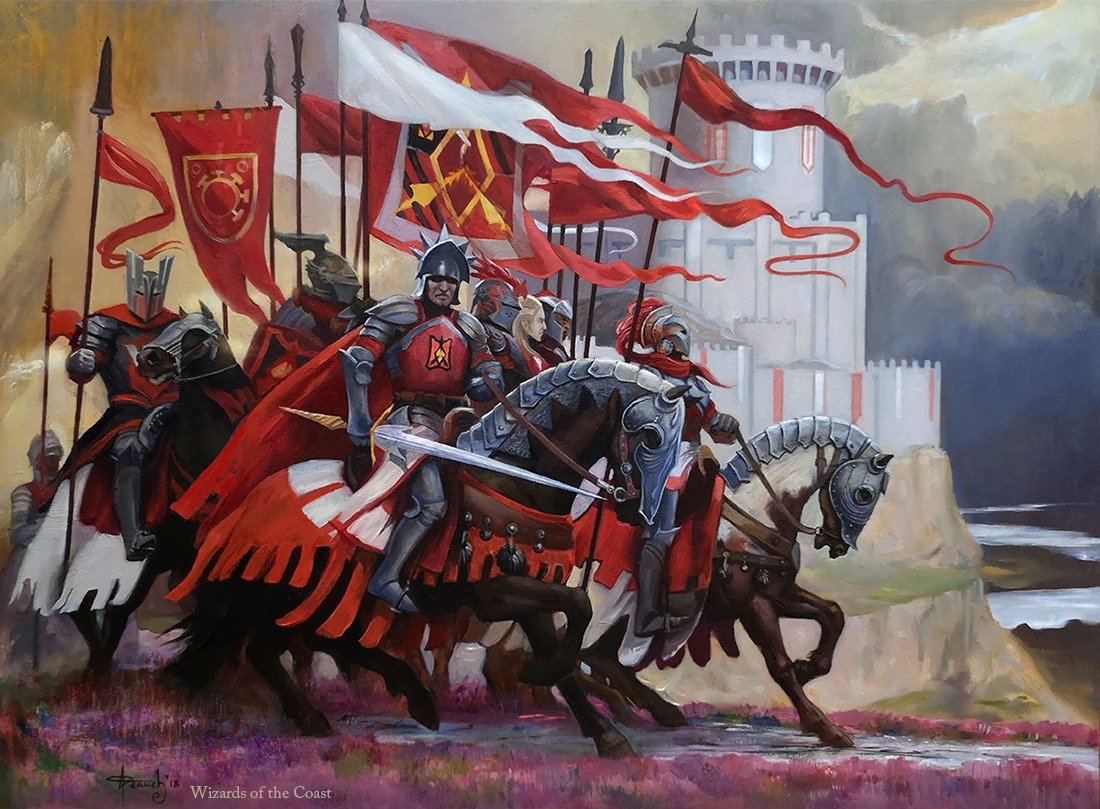
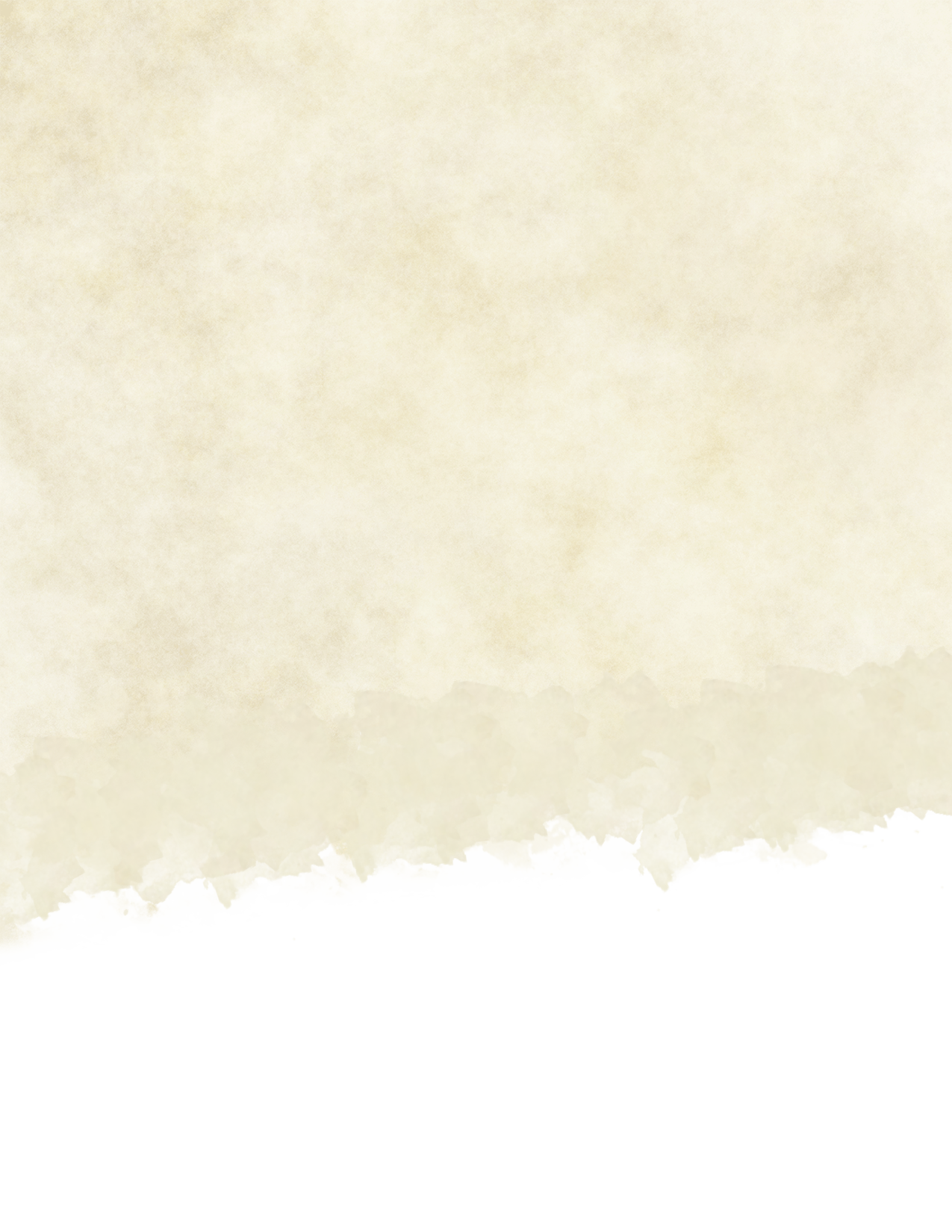
Cannon Crew
Huge horde of medium humanoids, unaligned
- Armor Class 14
- Hit Points 67 (5d20 + 15)
- Speed 10 ft.
STR DEX CON INT WIS CHA 16 (+3) 6 (–2) 17 (+3) 10 (+0) 12 (+1) 10 (+0)
- Saving Throws Con +6
- Condition Immunities charmed, frightened, grappled, paralyzed, petrified, poisoned, prone, restrained, stunned, unconscious
- Damage Resistances poison, psychic
- Senses passive Perception 11
- Languages any one language (usually Common)
- Challenge 5 (1,800 XP)
Siege Engine. If the cannon crew dies, it leaves behind a cannon with half of its hit points that another crew of humanoids can operate.
Siege Monster. The cannon crew deals double damage to objects and structures.
Actions
Multiattack. The cannon crew makes two melee attacks, or one attack if it has half its hit points or fewer.
Dagger. Melee or Ranged Weapon Attack, light, prone fighting: +6 to hit, reach 5 ft. or range 20/60 ft., one target. Hit: 2 (1d4 + 3) piercing or slashing damage.
Fire Cannonball (recharge 4-6, or 6 if the cannon crew has less than half its hit points). Ranged Weapon Attack: +8 to hit, range 300/1700 ft., one target. Hit: 44 (8d8 + 8) bludgeoning damage.
Contubernium
Gargantuan horde of medium creatures, lawful neutral
- Armor Class 21 (half-plate, tower shield)
- Hit Points 125 (10d20 + 20)
- Speed 30 ft.
STR DEX CON INT WIS CHA 16 (+3) 15 (+2) 14 (+2) 10 (+0) 13 (+1) 10 (+0)
- Condition Immunities charmed, frightened, grappled, paralyzed, petrified, poisoned, prone, restrained, stunned, unconscious
- Senses passive Perception 11
- Languages any one language (usually Latin)
- Challenge 5 (1,800 XP)
Half-Plate Armor. When the contubernium takes nonmagical bludgeoning, piercing, or slashing damage, the damage it takes is reduced by 1.
Horde. The contubernium can occupy another creature's space and vice versa, and the squad can move through any opening large enough for a Medium humanoid. Additionally, the contubernium is immune to any spell or effect that would alter its form.
Reactive. The contubernium can take one reaction on every turn in combat.
Actions
Multiattack. The contubernium makes four weapon attacks, or two weapon attacks if it has half its hit points or fewer.
Javelin. Melee or Ranged Weapon Attack: +6 to hit, reach 5 ft. or range 60/120 ft., one target. Hit: 6 (1d6 + 3) piercing damage.
Shortsword. Melee Weapon Attack, parry, variable: +6 to hit, reach 5 ft., one target. Hit: 6 (1d6 + 3) piercing or slashing damage.
Volley. The contubernium hurls a volley of javelins at a point within 60 feet of it. Each creature of the contubernium's choice in a 10-foot-radius sphere centered on that point must make a DC 14 Dexterity saving throw. On a failed save, a creature takes 28 (8d6) piercing damage, or 14 (4d6) piercing damage if the squad has half its hit points or fewer. On a successful save, it takes half as much damage.
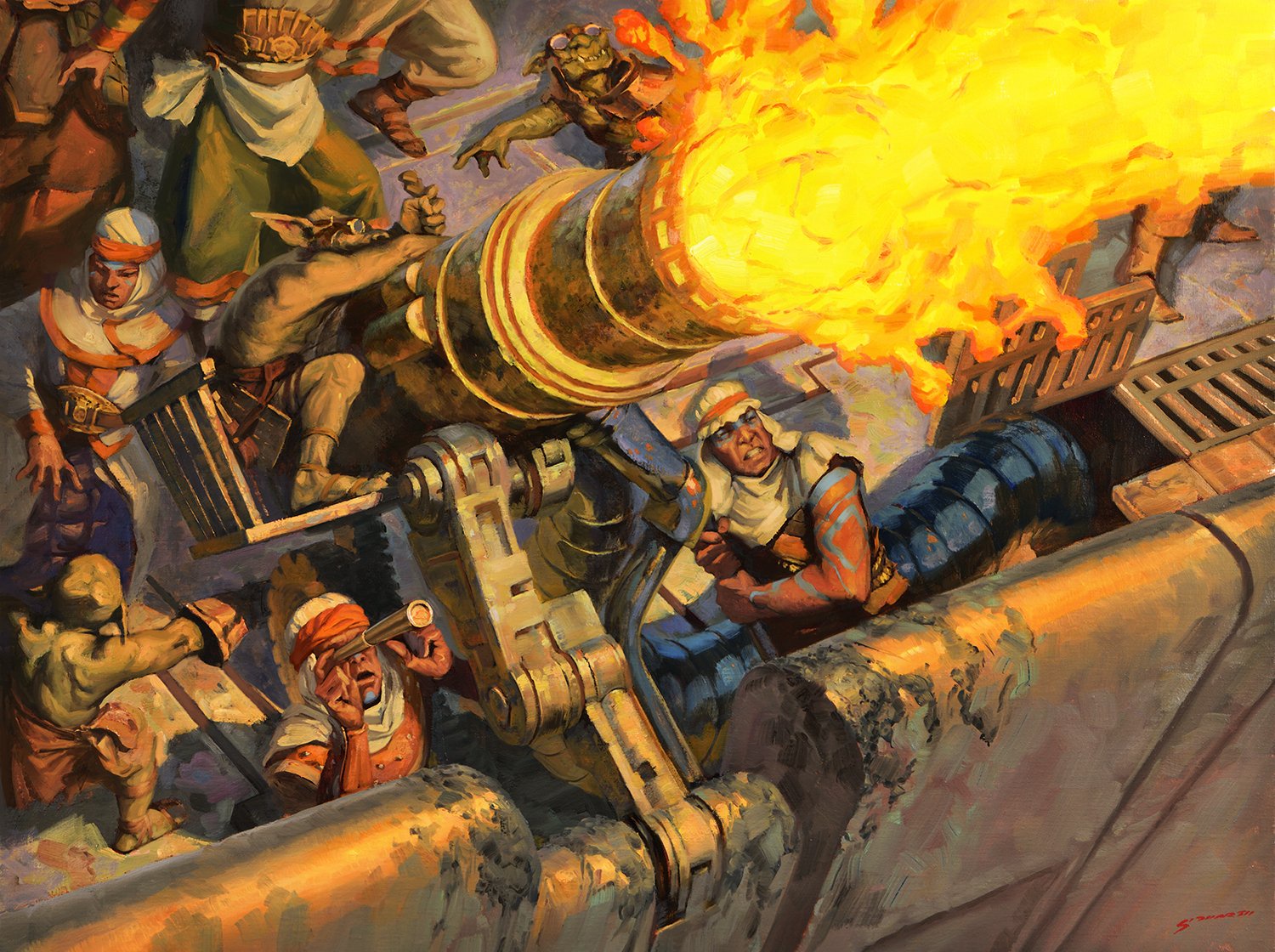





Crusader
Medium human, lawful good
- Armor Class 18 (full plate)
- Hit Points 112 (15d8 + 45)
- Speed 30 ft.
STR DEX CON INT WIS CHA 18 (+4) 10 (+0) 16 (+3) 11 (+0) 14 (+2) 16 (+3)
- Saving Throws Wis +5, Cha +6
- Skills Athletics +7, Religion +3
- Senses passive Perception 12
- Languages Common, Latin
- Challenge 5 (1,800 XP)
Plate Armor. When the crusader takes nonmagical bludgeoning piercing or slashing damage, the damage it takes is reduced by 5.
Spellcasting. The crusader is a 7th-level spellcaster. The crusader's spellcasting ability is Charisma (spell save DC 14, +6 to hit with spell attacks). The crusader has the following paladin spells prepared:
1st level (4 slots): command, searing smite
2nd level (3 slots): branding smite, lesser restoration, zone of truthActions
Multiattack. The crusader makes two melee attacks.
Arming Sword. Melee Weapon Attack, parry, skewering, slicing: +7 to hit, reach 5 ft., one target. Hit: 8 (1d8 + 4) slashing damage.
Pollaxe. Melee Weapon Attack, parry, sundering, variable: +7 to hit, (+9 against armored targets), reach 5 ft., one target. Hit: 9 (1d10 + 4) bludgeoning, piercing, or slashing damage plus 4 (1d8) radiant damage.
Fencer
Medium humanoid, unaligned
- Armor Class 15 (leather armor)
- Hit Points 66 (12d8 + 12)
- Speed 30 ft.
STR DEX CON INT WIS CHA 12 (+1) 18 (+4) 12 (+1) 14 (+2) 11 (+0) 15 (+2)
- Skills Acrobatics +8, Athletics +5, Persuasion +6
- Senses passive Perception 10
- Languages any one language (usually Common)
- Challenge 3 (700 XP)
Lightfooted. The fencer can take the Dash or Disengage action as a bonus action on each of its turns.
Actions
Multiattack. The fencer makes three attacks: one with its parrying dagger and two with its sabre.
Sabre. Melee Weapon Attack, cavalry, parry, slicing: +6 to hit, reach 5 ft., one target. Hit: 8 (1d8 + 4) slashing damage.
Parrying Dagger. Melee Weapon Attack, ensnaring, light, prone fighting: +6 to hit, reach 5 ft., one target. Hit: 6 (1d4 + 4) piercing damage.

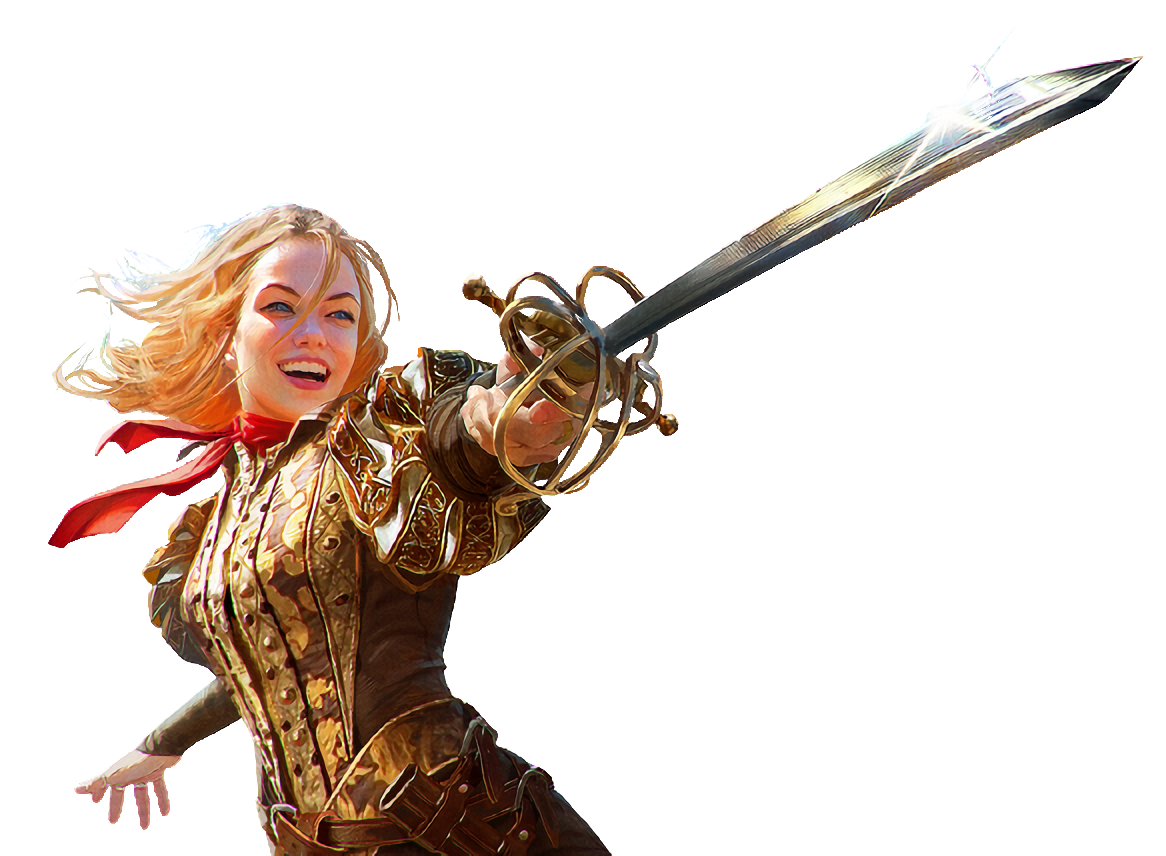
Horde of Barbarians
Gargantuan horde of medium humanoids, unaligned
- Armor Class 14 (hide armor)
- Hit Points 189 (14d20 + 42)
- Speed 30 ft.
STR DEX CON INT WIS CHA 22 (+6) 12 (+1) 16 (+3) 7 (–2) 11 (+0) 10 (+0)
- Skills Athletics +9, Intimidation +3
- Condition Immunities charmed, frightened, grappled, paralyzed, petrified, poisoned, prone, restrained, stunned, unconscious
- Senses passive Perception 10
- Languages any one language
- Challenge 7 (2900 XP)
Aggressive. As a bonus action, the horde of barbarians can move up to its speed toward a hostile creature that it can see.
Horde. The horde can occupy another creature's space and vice versa, and the horde can move through any opening large enough for a Medium creature. Additionally, the horde is immune to any spell or effect that would alter its form.
Reactive. The horde of barbarians can take one reaction on every turn in combat.
Stampede. When the horde moves through the space of a Large or smaller creature, the horde can force the creature to make a DC 17 Strength saving throw. On a failed save, the creature is knocked prone.
Actions
Multiattack. The horde makes four greataxe attacks, or two greataxe attacks if the horde has half its hit points or fewer.
Greataxe. Melee Weapon Attack, finisher, heavy, slicing, staggering: +9 to hit, reach 5 ft., one target. Hit: 12 (1d12 + 6) slashing damage.
Bloodbath. Each creature of the horde's choice in the horde's space must make a DC 17 Dexterity saving throw. On a failed save, a creature takes 52 (8d12) slashing damage, or 26 (4d12) slashing damage if the horde has half its hit points or fewer. On a successful save, it takes half as much damage.
Volley. The horde launches a volley of javelins at a point within 60 feet of it. Each creature of the horde's choice in a 10-foot-radius sphere centered on that point must make a DC 17 Dexterity saving throw. On a failed save, a creature takes 28 (8d6) piercing damage, or 14 (4d6)piercing damage if the horde has half its hit points or fewer. On a successful save, it takes half as much damage.
Landsknechte Unit
Gargantuan horde of medium humanoids, any alignment
- Armor Class 18 (half-plate)
- Hit Points 150 (12d20 + 24)
- Speed 30 ft.
STR DEX CON INT WIS CHA 20 (+5) 15 (+2) 14 (+2) 10 (+0) 13 (+1) 10 (+0)
- Skills Athletics +9
- Condition Immunities charmed, frightened, grappled, paralyzed, petrified, poisoned, prone, restrained, stunned, unconscious
- Senses passive Perception 11
- Languages any one language (usually Common)
- Challenge 9 (5,000 XP)
Horde. The unit can occupy another creature's space and vice versa, and the unit can move through any opening large enough for a Medium humanoid. Additionally, the squad is immune to any spell or effect that would alter its form.
Reactive. The landsknechte unit can take one reaction on every turn in combat.
Actions
Multiattack. The unit makes four attacks, or two melee attacks if it has half its hit points or fewer. No more than two of the attacks can be ranged attacks. It can replace an attack with an attempt to disarm a creature within reach, knock it prone, or pull it 5 feet towards itself.
Greatsword. Melee Weapon Attack, heavy, parry, sweeping, variable: +9 to hit, reach 5 ft., one target. Hit: 12 (2d6 + 5) piercing or slashing damage.
Halberd. Melee Weapon Attack, ensnaring, heavy, variable: +9 to hit, reach 10 ft., one target. Hit: 10 (1d10 + 5) piercing or slashing damage.
Arquebus. Ranged Weapon Attack: +5 to hit, range 60/120 ft., one target. Hit: 11 (2d8 + 2) piercing damage.
Reactions
Spearwall. When a creature enters the unit's reach, it can make one halberd attack. This attack does an additional 1d10 damage.
Mounted Knight
Large creature, any alignment
- Armor Class 18 (full plate)
- Hit Points 93 (11d10+33)
- Speed 60 ft.
STR DEX CON INT WIS CHA 18 (+4) 12 (+1) 14 (+3) 11 (+0) 11 (+0) 15 (+2)
- Saving Throws Con +5, Wis +2
- Skills Athletics +6, Intimidation +4, Persuasion +4
- Senses passive Perception 10
- Languages Any one language (usually Common)
- Challenge 4 (1,100 XP)
Brave. The mounted knight has advantage on saving throws against being frightened.
Cavalry. If the mounted knight is knocked prone or reduced to less than half its hit points, it it must make a Constitution saving throw with a DC of 5 + the damage taken. On a failure, the mounted knight loses its Trampling Charge feature, its speed becomes 30 ft., it cannot make hoof or couched lance attacks, and its size becomes medium.
Plate Armor. When the mounted knight takes nonmagical bludgeoning, piercing, or slashing damage, the damage it takes is reduced by 2.
Trampling Charge. If the mounted knight moves at least 20 ft. straight toward a creature and then hits it with a couched lance attack on the same turn, the target must succeed on a DC 14 Strength saving throw or be knocked prone. If the target is prone, the mounted knight can make an attack with its hooves as a bonus action.
Actions
Multiattack. The mounted knight makes two melee attacks.
Couched Lance. Melee Weapon Attack, cavalry, skewering: +6 to hit, reach 10 ft., one target. Hit: 10 (1d12 + 4) piercing damage.
Hooves. Melee Weapon Attack, finisher, staggering: +6 to hit, reach 5 ft., one target. Hit: 11 (2d6 + 4) damage.
Longsword. Melee Weapon Attack, ensnaring, parry, sundering, variable: +6 to hit, +8 against armored targets, reach 5 ft., one target. Hit: 9 (1d10 + 4) bludgeoning, piercing, or slashing damage.
Order of Crusaders
Gargantuan horde of medium humanoids, lawful good
- Armor Class 16 (hauberk)
- Hit Points 405 (30d20 + 90)
- Speed 30 ft.
STR DEX CON INT WIS CHA 24 (+7) 10 (+0) 16 (+3) 11 (+0) 14 (+2) 16 (+3)
- Saving Throws Wis +7, Cha +8
- Skills Athletics +12, Religion +5
- Condition Immunities charmed, frightened, grappled, paralyzed, poisoned, petrified, prone, restrained, stunned
- Senses passive Perception 12
- Languages Common, Latin
- Challenge 16 (15000 XP)
Horde. The order of crusaders can occupy another creature's space and vice versa, and the horde can move through any opening large enough for an individual creature within the horde. Additionally, the horde is immune to any spell or effect that would alter its form
Reactive. The order of crusaders can take one reaction on every turn in combat.
Spellcasting. The order of crusaders is a 7th-level spellcaster. The order of crusaders's spellcasting ability is Charisma (spell save DC 16, +8 to hit with spell attacks). The order of crusaders has the following paladin spells prepared:
1st level (4 slots): command, cure wounds, searing smite
2nd level (3 slots): branding smite, lesser restoration, zone of truthActions
Multiattack. The order of crusaders makes four attacks, or two attacks if it has half its hit points or fewer.
Arming Sword. Melee Weapon Attack, parry, skewering, slicing: +12 to hit, reach 5 ft., one target. Hit: 11 (1d8 + 7) piercing or slashing damage plus 9 (2d8) radiant damage.
Pollaxe. Melee Weapon Attack, heavy, parry, sundering, variable: +12 to hit, reach 5 ft., one target. Hit: 12 (1d10 + 7) bludgeoning, piercing, or slashing damage plus 9 (2d8) radiant damage.
Peasant Levy
Gargantuan horde of medium humanoids, any alignment
- Armor Class 12 (gambeson)
- Hit Points 94 (9d20)
- Speed 30 ft.
STR DEX CON INT WIS CHA 14 (+2) 10 (+0) 10 (+0) 9 (–1) 10 (+0) 10 (+0)
- Skills Animal Handling +2
- Condition Immunities charmed, frightened, grappled, paralyzed, petrified, poisoned, prone, restrained, stunned, unconscious
- Senses passive Perception 10
- Languages any one language (usually Common)
- Challenge 2 (450 XP)
Reactive. The levy can take one reaction on every turn in combat.
Horde. The levy can occupy another creature's space and vice versa, and the levy can move through any opening large enough for a Medium humanoid. Additionally, the squad is immune to any spell or effect that would alter its form.
Actions
Multiattack. The levy makes four attacks, or two attacks if it half its hit points or fewer. It can replace an attack with an attempt to disarm a creature within reach, knock it prone, or pull it 5 feet towards itself.
Guisarme. Melee Weapon Attack, ensnaring,: +4 to hit, reach 10 ft., one target. Hit: 6 (1d8 + 2) piercing damage.
Phalanx
Gargantuan horde of medium humanoids, any lawful alignment
- Armor Class 21 (full plate, tower shield)
- Hit Points 137 (11d20 + 22)
- Speed 30 ft.
STR DEX CON INT WIS CHA 20 (+5) 11 (+0) 14 (+2) 11 (+0) 13 (+1) 11 (+0)
- Saving Throws Dexterity +3
- Condition Immunities charmed, frightened, grappled, paralyzed, petrified, poisoned, prone, restrained, stunned, unconscious
- Senses passive Perception 11
- Languages Any one language (usually Dwarvish or Greek)
- Challenge 6 (2,300 XP)
Horde. The phalanx can occupy another creature's space and vice versa, and the phalanx can move through any opening large enough for a Medium humanoid. Additionally, the phalanx is immune to any spell or effect that would alter its form.
Plate Armor. When the phalanx takes nonmagical bludgeoning, piercing, or slashing damage, the damage it takes is reduced by 3.
Reactive. The phalanx can take one reaction on every turn in combat.
Shieldwall. Another creature can only occupy the phalanx's space if it allows it.
Actions
Multiattack. The phalanx makes four attacks, or two attacks if it has half its hit points or fewer.
Spear. Melee Weapon Attack: +8 to hit, reach 10 ft., one target. Hit: 9 (1d8 + 5) piercing damage.
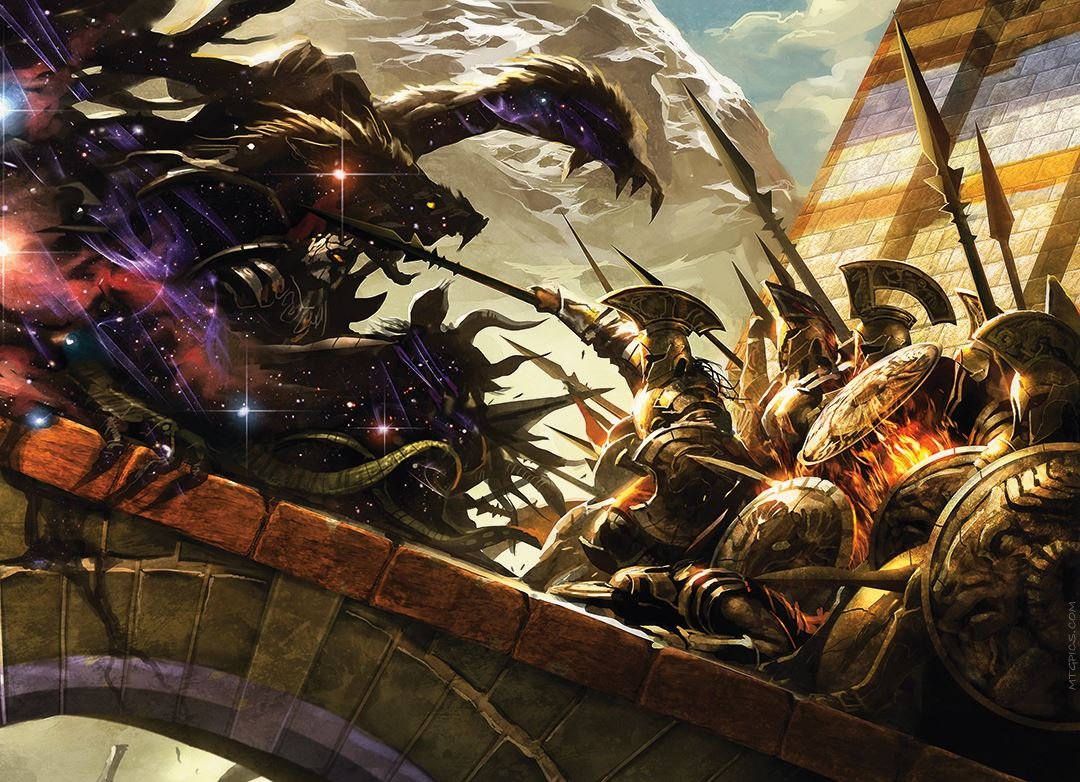

Retiarius
Medium humanoid, unaligned
- Armor Class 13 (leather armor)
- Hit Points 112 (15d8 + 45)
- Speed 30 ft.
STR DEX CON INT WIS CHA 18 (+4) 15 (+2) 16 (+3) 10 (+0) 12 (+1) 15 (+2)
- Saving Throws Str +7, Dex +5, Con +6
- Skills Athletics +10, Intimidation +5
- Senses passive Perception 11
- Languages Any one language, usually Latin
- Challenge 5 (1800 XP)
Brave. The retiarius has advantage on saving throws against being frightened.
Actions
Multiattack. The retiarius makes three melee attacks.
Trident. Melee Weapon Attack, finisher, ensnaring, versatile (skewering), winged: +7 to hit, reach 5 ft., one target. Hit: 9 (2d4 + 4) piercing damage, or 11 (2d6 + 4) piercing damage if used with two hands to make a melee attack.
Net. Ranged Weapon Attack, ensnaring: +5 to hit, range 25/35 ft., one target. Hit: 0 damage, and if the target is Large or smaller it is restrained until it uses an action to free itself.
Squad of Arbalests
Gargantuan horde of medium humanoids, unaligned
- Armor Class 19 (brigandine, pavise)
- Hit Points 115 (11d20)
- Speed 30 ft.
STR DEX CON INT WIS CHA 13 (+1) 14 (+2) 11 (+0) 10 (+0) 12 (+1) 10 (+0)
- Condition Immunities charmed, frightened, grappled, paralyzed, petrified, poisoned, prone, restrained, stunned, unconscious
- Senses passive Perception 11
- Languages any one language (usually Common)
- Challenge 5 (1,800)
Hands Full. The squad cannot make a heavy crossbow attack unless it has already used Plant Pavise.
Horde. The squad can occupy another creature's space and vice versa, and the squad can move through any opening large enough for a Medium humanoid. Additionally, the squad is immune to any spell or effect that would alter its form.
Reactive. The squad of arbalests can take one reaction on every turn in combat.
Actions
Multiattack. The squad makes four ranged weapon attacks, or two ranged weapon attacks if it has half its hit points or fewer.
Heavy Crossbow. Ranged Weapon Attack, heavy, sundering: +5 to hit, range 100/200 ft., one target. Hit: 8 (1d12 + 2) piercing damage.
Plant Pavise. The squad doffs its shield and plants it in the ground, reducing its AC by 2 but granting it half cover so long as it does not move more than 5 feet in any direction. The squad can don its shield again as an action.
Volley. The squad fires a volley of bolts at a point within 100 feet of it. Each creature of the squad's choice in a 10-foot-radius sphere centered on that point must make a DC 13 Dexterity saving throw. On a failed save, a creature takes 52 (8d12) piercing damage, or 26 (4d12) piercing damage if the horde has half its hit points or fewer. On a successful save, it takes half as much damage.

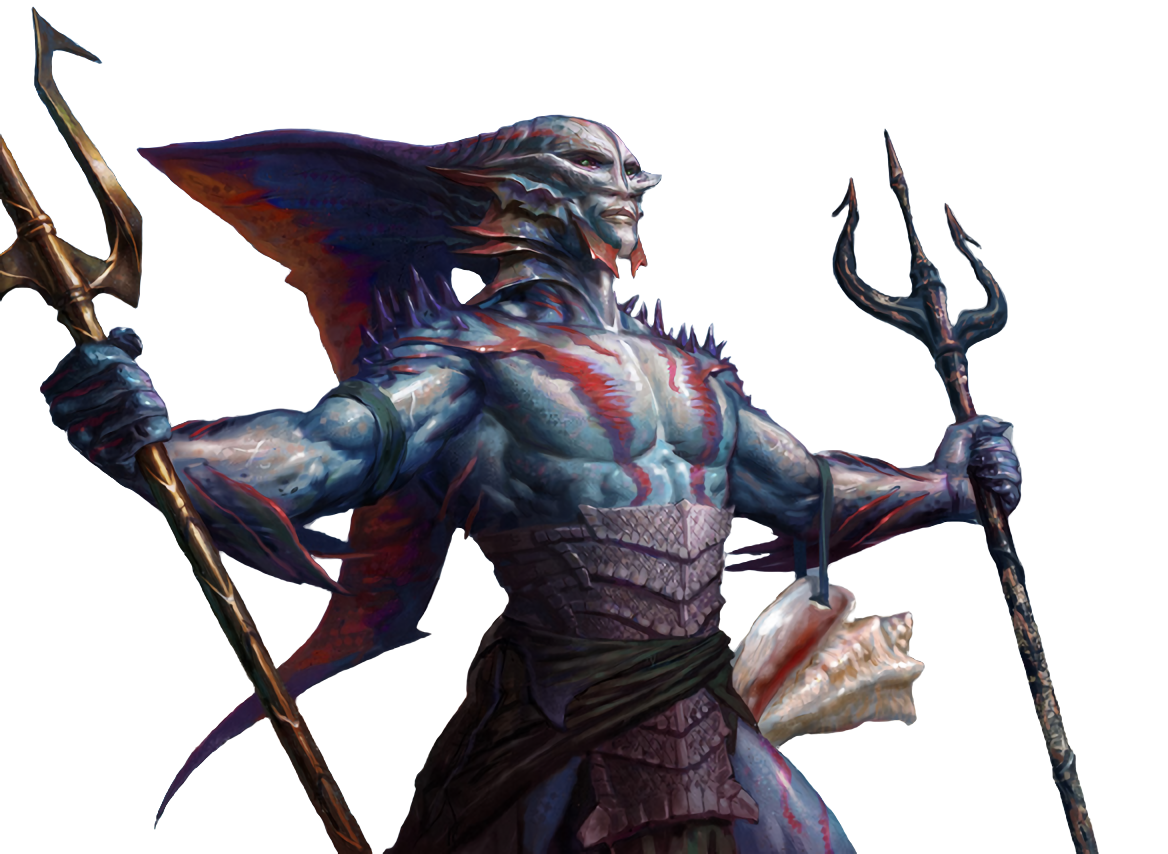
Squad of Arquebusiers
Gargantuan horde of medium creatures, unaligned
- Armor Class 13 (leather armor)
- Hit Points 94 (9d20)
- Speed 30 ft.
STR DEX CON INT WIS CHA 11 (+0) 15 (+2) 11 (+0) 10 (+0) 11 (+0) 10 (+0)
- Condition Immunities charmed, frightened, grappled, paralyzed, petrified, poisoned, prone, restrained, stunned, unconscious
- Senses passive Perception 10
- Languages Any one language (usually Common)
- Challenge 4 (1,100 XP)
Horde. The squad can occupy another creature's space and vice versa, and the squad can move through any opening large enough for a Medium humanoid. Additionally, the squad is immune to any spell or effect that would alter its form.
Reactive. The squad of arquebusiers can take one reaction on every turn in combat.
Reload Time. After the squad makes an arquebus or volley attack, it cannot make either attack until it takes an action to reload its weapons.
Actions
Multiattack. The squad makes four arquebus attacks, or two arquebus attacks if it has half its hit points or fewer.
Arquebus. Ranged Weapon Attack, gunpowder: +4 to hit, range 60/120 ft., one target. Hit: 11 (2d8 + 2) piercing damage.
Volley. The squad fires a volley of bullets at a point within 60 feet of it. Each creature of the squad's choice in a 10-foot-radius sphere centered on that point must make a DC 11 Dexterity saving throw. On a failed save, a creature takes 36 (8d8) piercing damage, or 18 (4d8) piercing damage if the horde has half its hit points or fewer. On a successful save, it takes half as much damage.
Squad of Halberdiers
Gargantuan horde of medium humanoids, any alignment
- Armor Class 17 (cuirass)
- Hit Points 150 (12d20 + 24)
- Speed 30 ft.
STR DEX CON INT WIS CHA 21 (+5) 14 (+2) 14 (+2) 10 (+0) 11 (+0) 10 (+0)
- Skills Athletics +8
- Condition Immunities charmed, frightened, grappled, paralyzed, petrified, poisoned, prone, restrained, stunned, unconscious
- Senses passive Perception 10
- Languages any one language (usually German, French, or Italian)
- Challenge 8 (3,900 XP)
Horde. The squad can occupy another creature's space and vice versa, and the squad can move through any opening large enough for a Medium humanoid. Additionally, the squad is immune to any spell or effect that would alter its form.
Reactive. The squad of halberdiers can take one reaction on every turn in combat.
Actions
Multiattack. The squad makes four halberd attacks, or two halberd attacks if it has half its hit points or fewer. It can replace an attack with an attempt to disarm a creature within reach, knock it prone, or pull it 5 feet towards itself.
Halberd. Melee Weapon Attack, ensnaring, heavy, variable: +8 to hit, reach 10 ft., one target. Hit: 10 (1d10 + 5) piercing or slashing damage.
Reactions
Spearwall. When a creature enters the squad's reach, it can make one melee attack. This attack does an additional 1d10 damage.

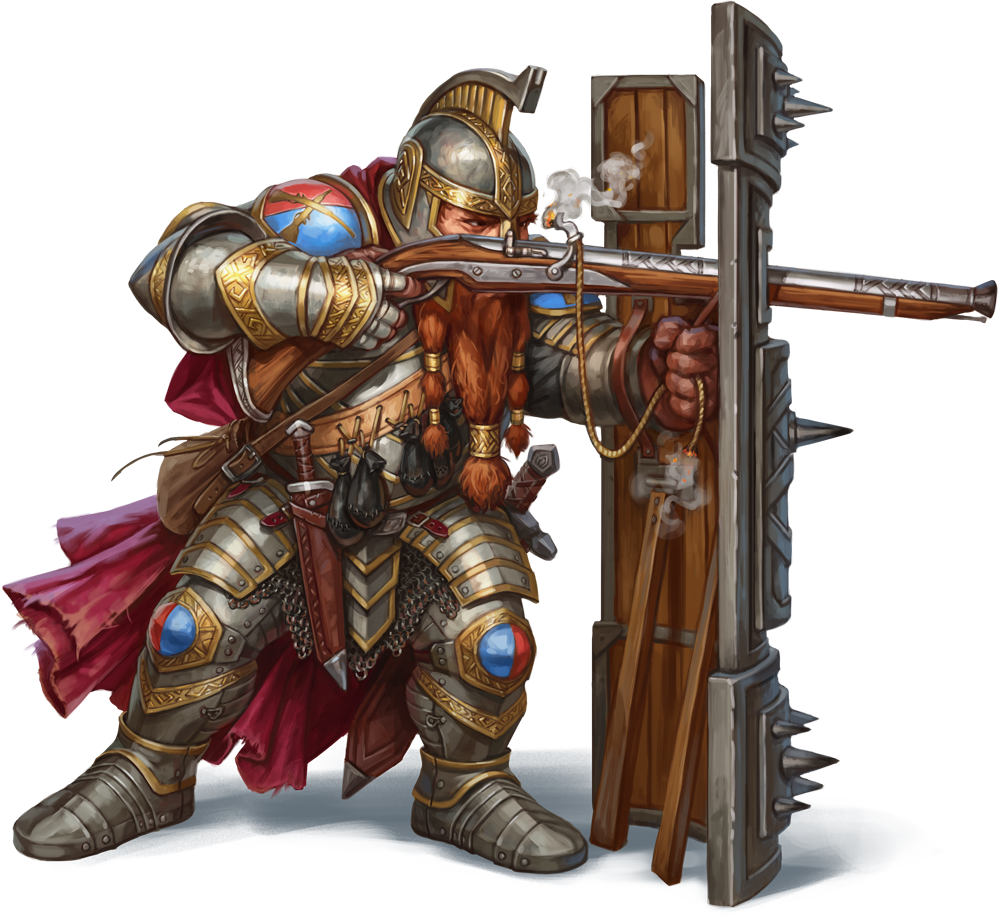
Squad of Horse Archers
Gargantuan horde of large creatures, unaligned
- Armor Class 15 (leather armor)
- Hit Points 150 (12d20 + 24)
- Speed 60 ft.
STR DEX CON INT WIS CHA 22 (+6) 19 (+4) 14 (+2) 11 (+0) 13 (+1) 10 (+0)
- Skills Acrobatics +6, Animal Handling +5, Perception +3
- Condition Immunities charmed, frightened, grappled, paralyzed, petrified, poisoned, prone, restrained, stunned, unconscious
- Senses passive Perception 14
- Languages any one language, usually Common
- Challenge 7 (2900 XP)
Reactive. The squad of horse archers can take one reaction on every turn in combat.
Stampede. When the squad moves through the space of a Huge or smaller creature, the squad can force the creature to make a DC 17 Strength saving throw. On a failed save, the creature is knocked prone.
Actions
Multiattack. The squad makes four recurve bow attacks, or two recurve bow attacks if it has half its hit points or fewer.
Recurve Bow. Ranged Weapon Attack, skewering: +7 to hit, range 100/400 ft., one target. Hit: 8 (1d8+4) piercing damage.
Volley. The squad looses a volley of arrows at a point within 60 feet of it. Each creature of the squad's choice in a 10-foot-radius sphere centered on that point must make a DC 15 Dexterity saving throw. On a failed save, a creature takes 28 (8d8) piercing damage, or 14 (4d8) piercing damage if the horde has half its hit points or fewer. On a successful save, it takes half as much damage.
Squad of Longbowmen
Gargantuan horde of medium creatures, any alignment
- Armor Class 15 (gambeson)
- Hit Points 115 (10d20 + 10)
- Speed 30 ft.
STR DEX CON INT WIS CHA 16 (+3) 17 (+3) 13 (+1) 10 (+0) 10 (+0) 10 (+0)
- Condition Immunities charmed, frightened, grappled, paralyzed, petrified, poisoned, prone, restrained, stunned, unconscious
- Senses passive Perception 10
- Languages Any one language (usually Common)
- Challenge 4 (1,100 XP)
Horde. The squad can occupy another creature's space and vice versa, and the squad can move through any opening large enough for a Medium humanoid. Additionally, the squad is immune to any spell or effect that would alter its form.
Reactive. The squad can take one reaction on every turn in combat.
Actions
Multiattack. The squad of longbowmen makes four longbow attacks, or two attacks if it has half its hit points or fewer.
Cudgel. Melee Weapon Attack, nonlethal: +5 to hit, reach 5 ft., one target. Hit: 5 (1d4+3) bludgeoning damage.
Longbow. Ranged Weapon Attack, heavy, skewering: +5 to hit, range 200/800 ft., one target. Hit: 8 (1d10 + 3) piercing damage.
Volley. The squad looses a volley of arrows at a point within 150 feet of it. Each creature of the squad's choice in a 10-foot-radius sphere centered on that point must make a DC 12 Dexterity saving throw. On a failed save, a creature takes 44 (8d10) piercing damage, or 22 (4d10) piercing damage if the squad has half its hit points or fewer. On a successful save, it takes half as much damage.

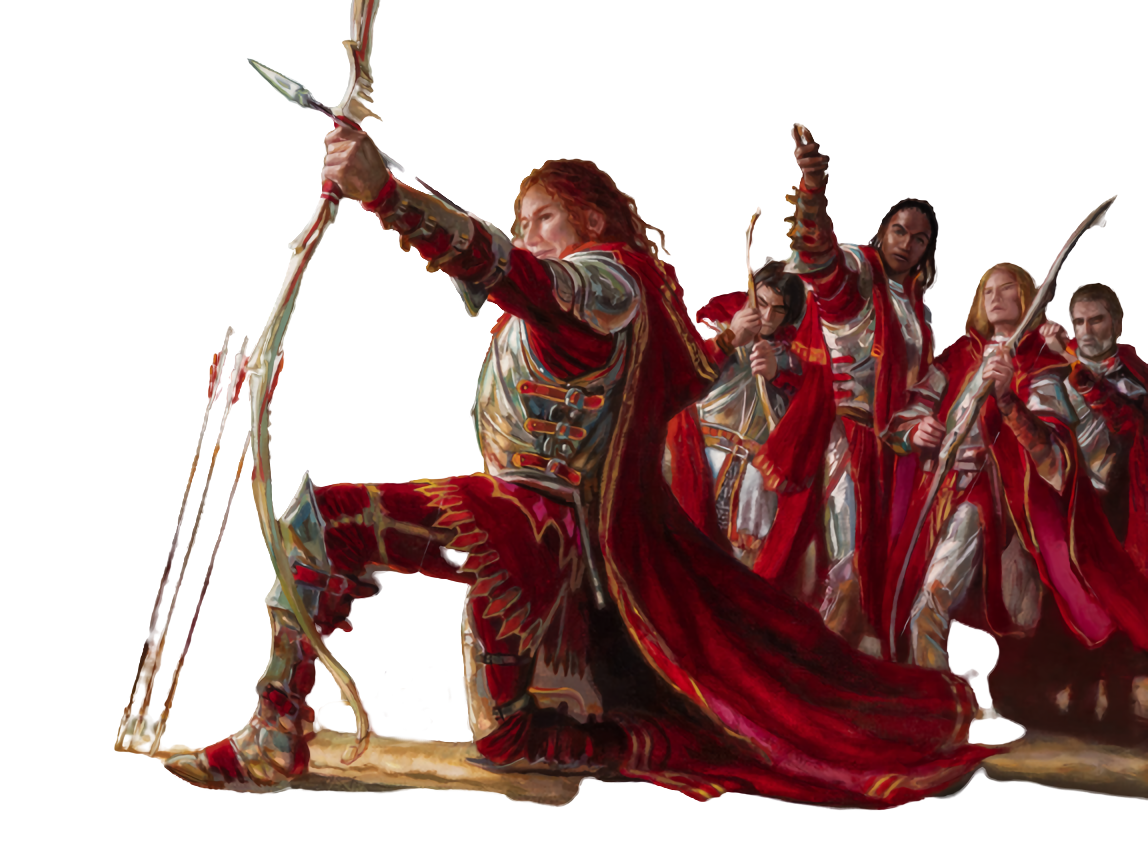
Squad of Pikemen
Gargantuan horde of medium humanoids, any alignment
- Armor Class 13 (gambeson)
- Hit Points 138 (12d20 + 12)
- Speed 30 ft.
STR DEX CON INT WIS CHA 19 (+4) 12 (+1) 12 (+1) 10 (+0) 11 (+0) 10 (+0)
- Skills Athletics +7
- Condition Immunities charmed, frightened, grappled, paralyzed, petrified, poisoned, prone, restrained, stunned, unconscious
- Senses passive Perception 10
- Languages any one language (usually Common)
- Challenge 6 (2,300 XP)
Horde. The squad can occupy another creature's space and vice versa, and the squad can move through any opening large enough for a Medium humanoid. Additionally, the squad is immune to any spell or effect that would alter its form.
Reactive. The squad of pikemen can take one reaction on every turn in combat.
Actions
Multiattack. The squad of pikemen makes four pike attacks, or two pike attacks if it has half its hit points or fewer.
Pike. Melee Weapon Attack, heavy, wind-up: +7 to hit, reach 10 ft., one target. Hit: 9 (1d10 + 4) piercing damage.
Reactions
Spearwall. When a creature enters the squad's reach, it can make one melee attack. This attack does an additional 1d10 damage.

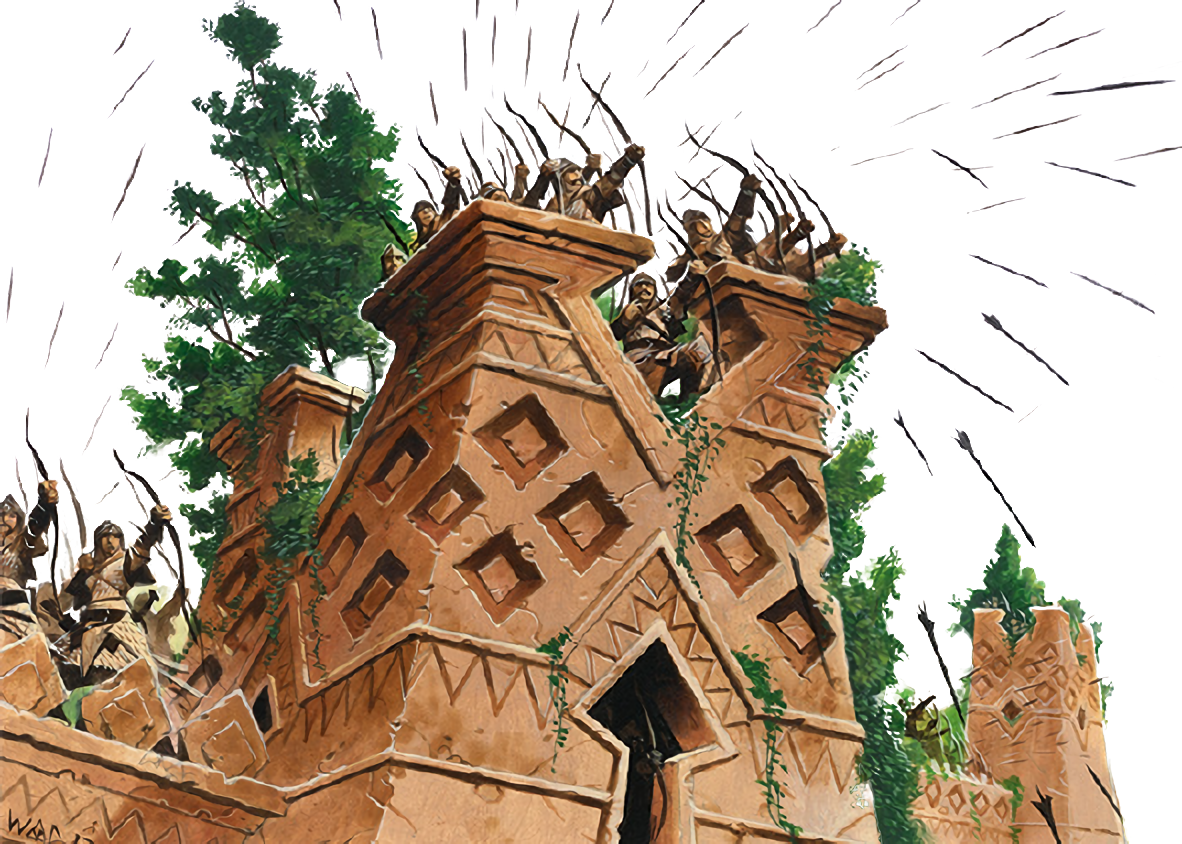
PART VIII
Appendices
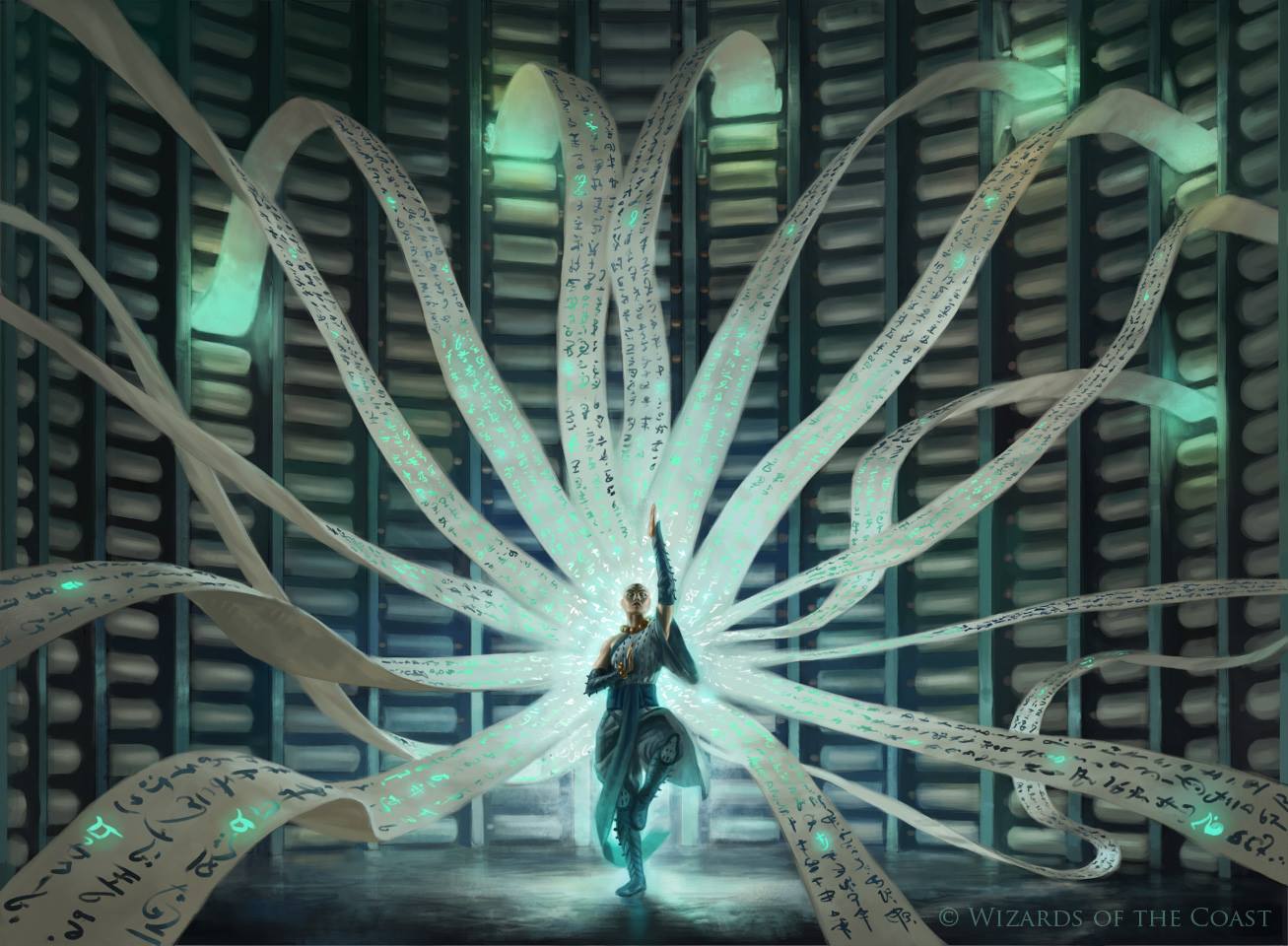
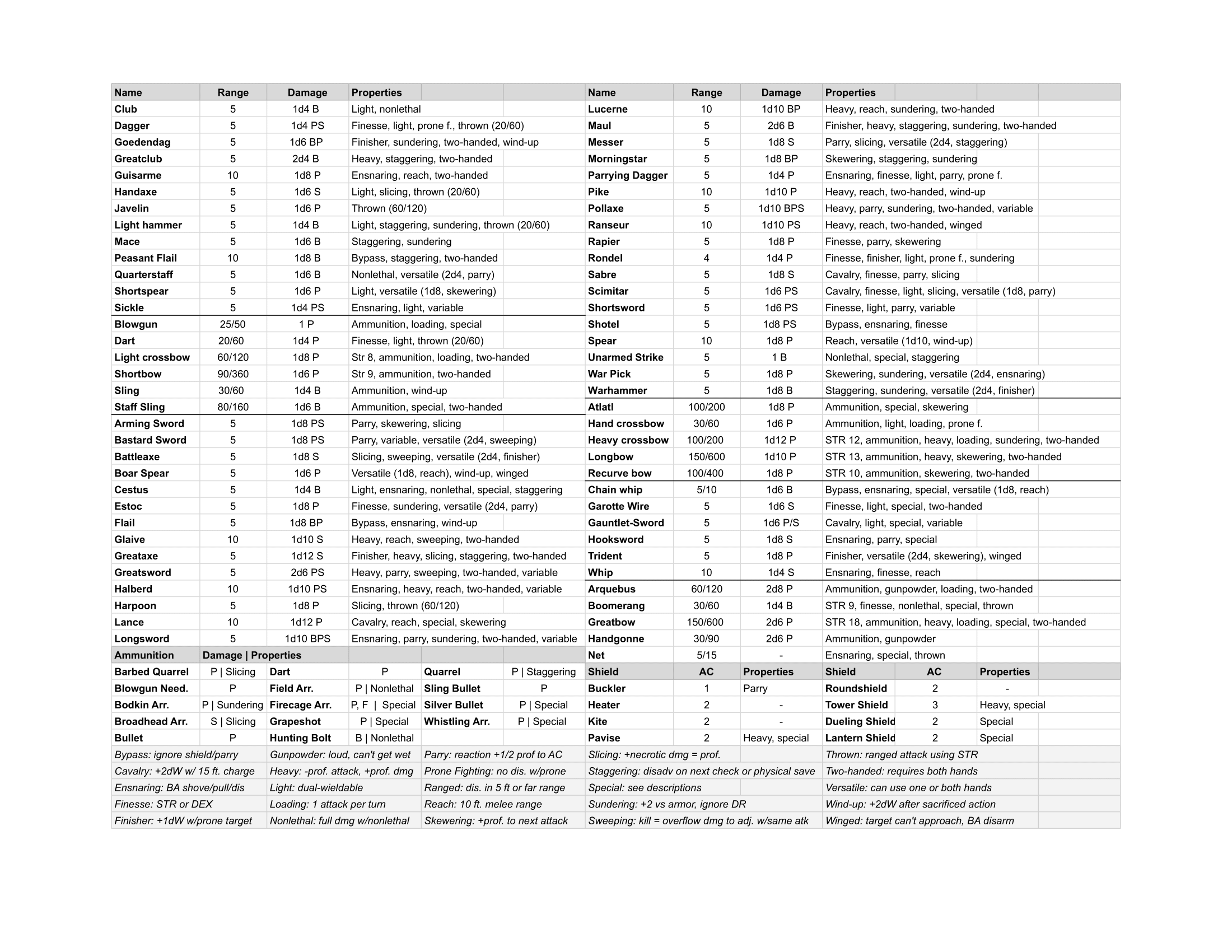
Weapon Profiles
The additional weapons in this document refer to weapons that don't exist in the public consciousness or uses terms more specific than most players and DMs understand offhand. This section categorizes the weapons and briefly explains the origins, construction, and use of each one, along with other information.
It's important to remember that the research done here is done by an amateur hobbyist, and is by no means scholarly. In addition, the differences between weapons are not nearly as cut and dry as the mechanical properties suggest in this document suggest. Many real weapons could use the statistics of multiple weapons in this document—for example, the bardiche could use the statistics of a greataxe or a glaive.
It would be convenient if it were they were so easy to categorize, but the use and design of existing weapons and the development of new ones changed quickly and drastically throughout the centuries of the Middle Ages, which were not nearly as stagnant as typically assumed.
Spears
In close combat, the fighter with greater reach tends wins. 5e, with its massive pools of hit points, doesn't always reflect that reality, but spears—which increase reach—have existed since prehistoric times and dominated the battlefield until the modern era. Spears even survived the dominance of firearms after the Renaissance; the bayonet transforms any rifle or musket into a potent melee weapon with greater reach than a knife or a club.

Boar Spear. These short, heavy spears are equipped with two lugs perpendicular to the head, which prevent the large animals it was used to hunt from sliding up the haft and attacking the wielder. Used to hunt boars, larger variants were used against bears and European bison. In war, they were used against warhorses. This spear has existed since at least 1200 A.D.

Javelin. A one-handed short spear used for throwing. The javelin, like the spear, has a long and storied history, seeing use by stone-age humans, Greek warriors, Roman soldiers, and African hunters all to incredible effect. Its simplicity, low price, long range, and use of Strength make it ubiquitous.

Harpoon. Used for underwater hunting by islander and coastal cultures, the iron varieties used by 19th-century whalers made this weapon infamous. The head of the harpoon has rear-facing barbs, making it difficult and painful to withdraw.

Shortspear. A replacement in the Simple Weapons section to represent any short, one-handed thrusting spear that can be easily used in conjunction with a shield or offhand weapon, now that the standard spear has become a one-headed martial weapon with the reach property.

Spear. While all the weapons in this section are varieties of spear, the mechanics of the spear as they appear in this document represent a one-handed weapon between 6 and 9 feet long, with a stone or metal point on the end. Some two-handed spears have specialized heads or functions. Those spears are also called polearms, and classified separately in this document, but the real line is blurrier.

Lance. The staple weapon of the Medieval knight, the lance transfers the momentum of a horse's charge into a single point. It is the primary reason knights dominated medieval warfare, and why many other weapons—the guisarme, the mace, and the warhammer—were designed to counter them.
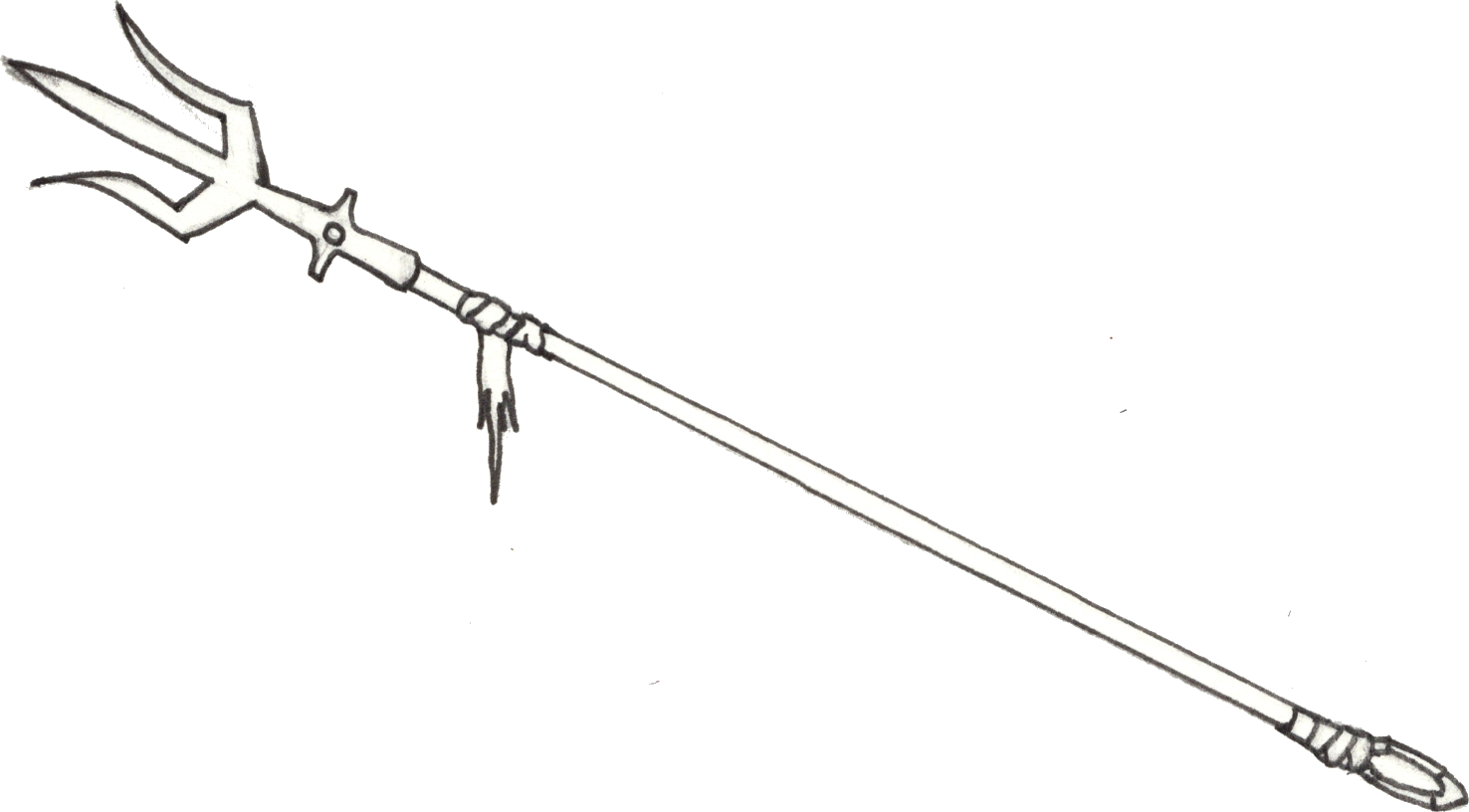
Trident. A three-pronged spear used in fishing and in gladiator combat by retiarius-style fighter. Famously wielded by Poseidon, the Greek god of the sea.
Polearms
The natural evolution of the spear, this diverse category of weapons combines the benefits of long reach and leverage with specialized designs. There are dozens of polearm variants—The Warrior's Codex includes as many differentiations as possible before it becomes cluttered, and provides many alternatives in Part III.
Glaive. A single-edged blade attached to a long haft, which increases its cutting power. The statistics of the glaive can also be applied to many other cutting pole weapons.
Guisarme. The guisarme's hooked head was used to pull knights from their horses. This polearm was so effective among peasant troops that French nobles campaigned to have it banned. Used between 1000-1300.
Halberd. The halberd combines cutting power, long reach, and a rearward hook to create a deadly combination of options. Popular from the 15th century onwards, German mercenaries used the halberd for centuries and the Swiss guard carries it ceremonially today.
Lucerne. A polearm with a hammerhead on the end, used for striking enemies with blunt force at distance. A pike-like point and a spike on the far side allowed its users to pierce as well as strike, affording it versatility in large groups and giving plenty of opportunity for swift thrusting attacks.

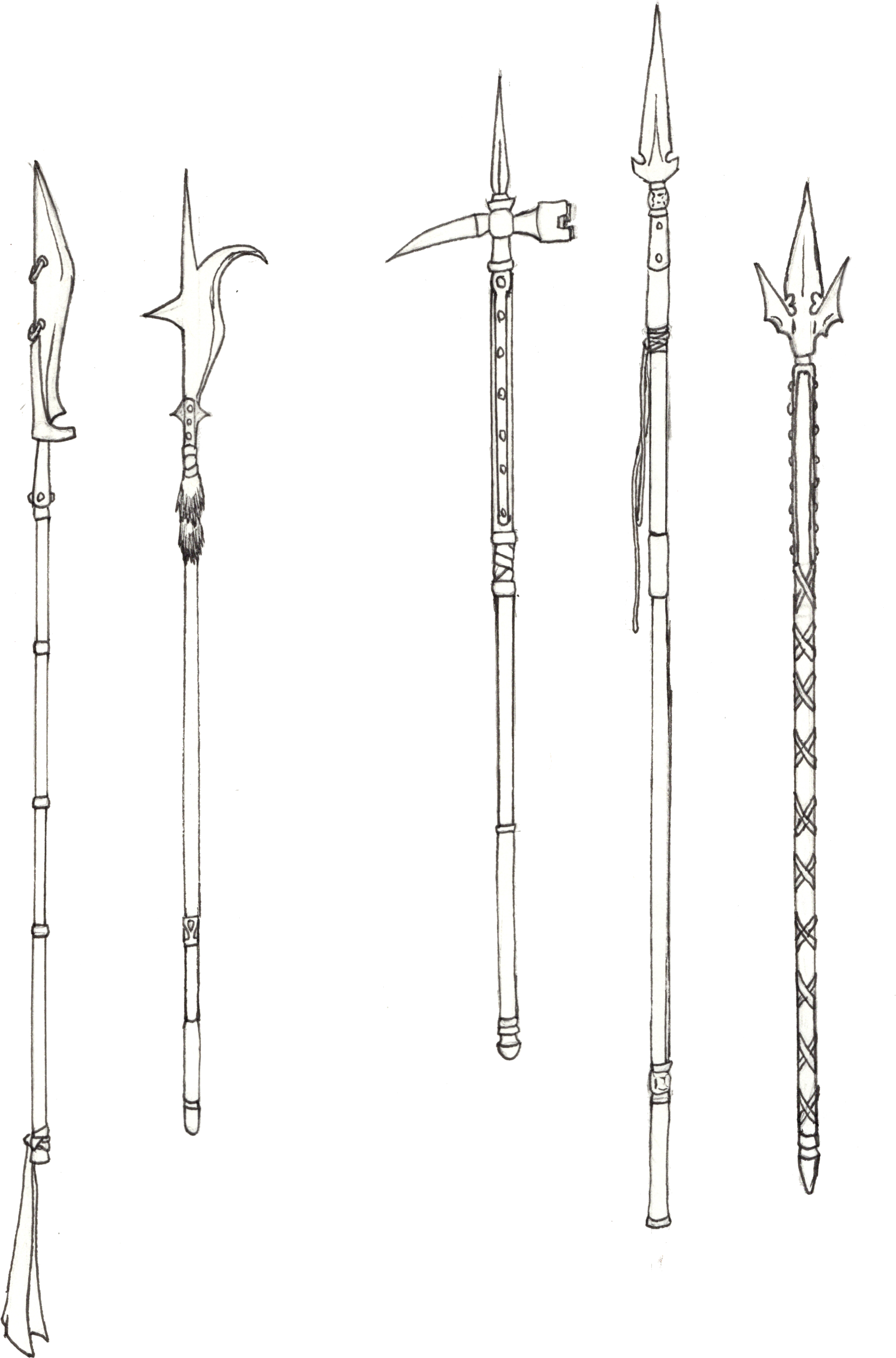
Pike. The quintessential polearm, this long two-handed spear saw use in mass military units, where the cluster of sharp points warded off cavalry charges and kept enemies out of reach. The pike actually survived knights' obsolescence into the era of gunpowder; "pike and shotte" formations used pikemen and halberdiers to protect arquebusiers and musketeers between volleys.
Ranseur. Similar to the boar spear, the head of a ranseur features a pair of additional points at angles, to prevent enemies and animals from pushing the haft deeper in and allowing the user to keep the attacker at bay. Some variants sharpened the outer ends of the points, allowing the ranseur to cut as well as pierce.
Staves
Short poles between 6 and 9 feet long, staves can be walking sticks, magic foci, or potent weapons in their own right. Often associated with monks, the staff has a long history of use in both Occidental and Oriental martial tradition.

Quarterstaff. A simple staff of hard wood between 6 and 9 feet long, sometimes capped with metal, this weapon was used for duels and defense among the English pre-1500, though records are rare compared to other weapons.

Pollaxe. Wielded like a bladed staff instead of an axe or polearm, this weapon features an axe head, a hammerhead, an upward point, and lateral spikes all mounted on the head. Like the longsword, a pollaxe can accomplish almost anything a dismounted knight needed in combat.
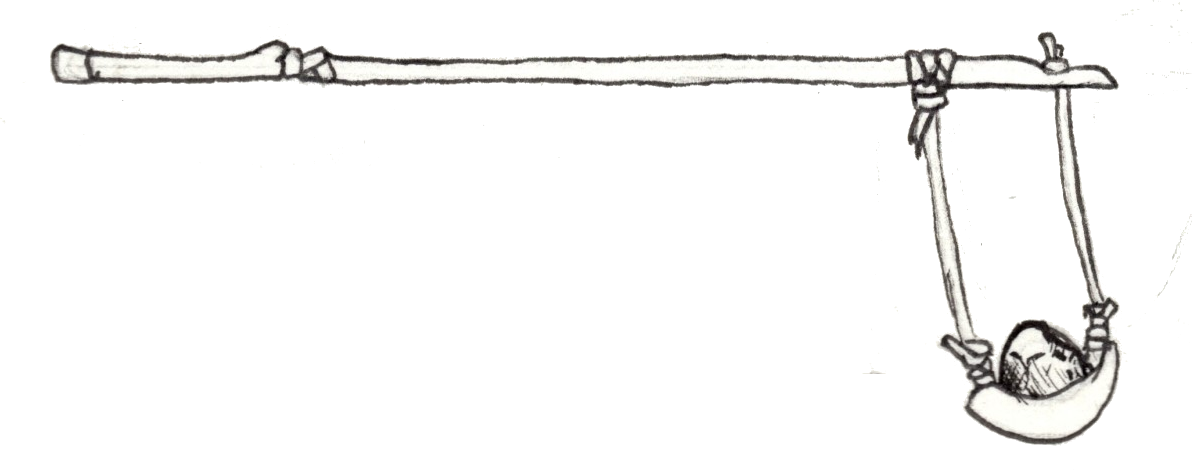
Staff Sling. A variant of a sling attached to a long wooden staff for additional leverage, which translated to greater throwing power and distance. These slings not only threw hard projectiles, but incendiaries and explosives.
Bludgeons
With an entire damage type dedicated to the wounds they inflict, bludgeons are simple to use—swing and strike to break bones, knock unconscious, and cause internal bleeding. Effective at transmitting force through armor, everything from a simple club to a mighty two-handed warhammer falls into this category.

Club. Any one-handed weapon without a blade or point, used to inflict blunt trauma. In addition to carved clubs like shillelaghs and cudgels, a table leg, candlestick, or bone might make an effective club.
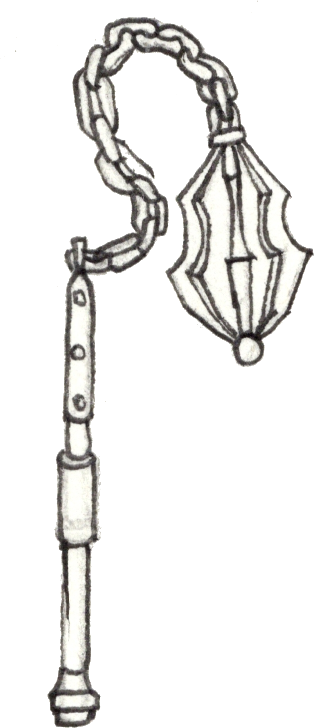
Flail. A spiked sphere of iron attached to a wooden handle by a chain that may not have existed at all. Depictions are few and archaeological examples fewer, casting doubt on its existence, but the flail is too ubiquitous to remove. At the discretion of the DM, it might be an exotic weapon, rather than martial.

Goedendag. The goedendag might be one of two weapons: a baseball-bat-like club with a spike on the end that could bash or pierce armored enemies, or a shortspear used as a short, sturdy pike. It means "good day" in Dutch, thought to be a joke by its 14th-century Flemish users. The version used in this document is the two-handed spear. The morningstar's statistics can act as the one-handed version.

Greatclub. A larger and heavier club, used with two hands for greater striking force. Tree limbs, baseball bats, and the Japanese tetsubo are all common forms of greatclub.
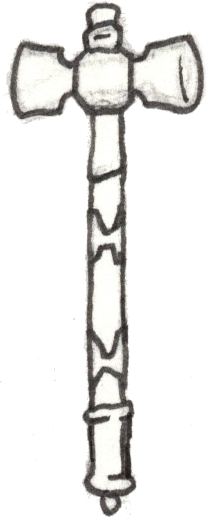
Light Hammer. A small hammer, commonly used as a tool. Larger warhammers are more likely to see battlefield use, but in a pinch or when used by an amateur fighter, it can be just as deadly.

Mace. The quintessential anti-armor weapon, the mace is a club with a metal haft and large head. Unlike a hammer, the head has radial symmetry, often a ball or set of flanges. Maces are commonly associated with clergy, supposedly to avoid shedding blood while going to war. This belief is based on the Bayeux Tapestry and popular culture perpetuating it (including earlier editions of Dungeons & Dragons), and has no basis in actual history.

Maul. A mighty two-handed warhammer, often depicted with a head far larger than the longer-hafted lucerne or a one-handed hammer. A maul might also be used to break rocks or hammer spikes into the ground.

Morningstar. Similar to the mace, this heavy mass at the end of a wooden haft is covered in sharp spikes, unlike the smooth surface, knobs, or flanges of its metal-hafted cousin.

Peasant Flail. A tool, like the light hammer and sickle, used as an improvised weapon. Peasant flails modified for war were studded with metal to deal additional damage against armored knights.
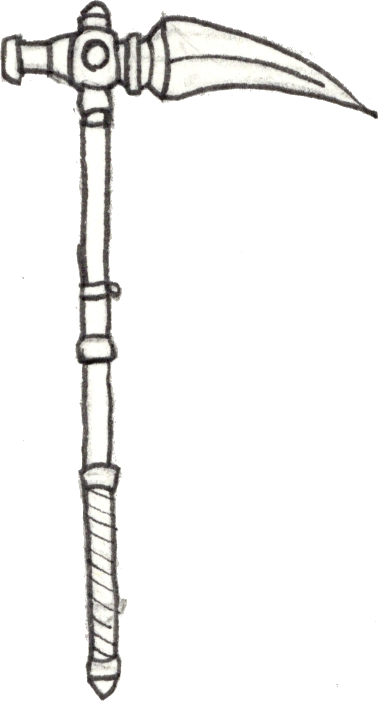
War Pick. Also called a horseman's pick, this subtype of warhammer with a long spike on the head was used by Polish cavalry in the 1600s to pierce and crush armor, by directing all the force of the swing into a single painful point.
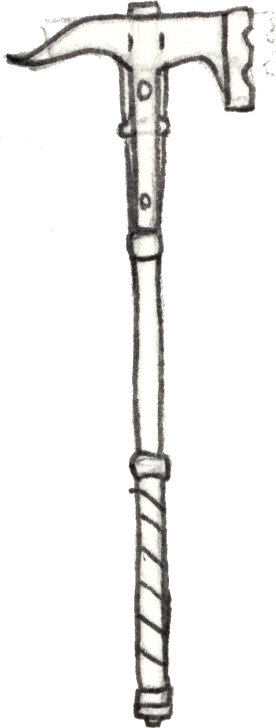
Warhammer. Any hammer used for combat rather than work, introduced during the late Middle Ages to counter the development of heavy armor which deflected blows from axes and swords. For the purposes of this document, longer warhammers are classified as mauls, and even longer warhammers are classified as lucernes, a blunt polearm.
Knives
Light, easy to conceal, and deadly, knives are favored by assassins, thugs, and close-range fighters. This category contains a variety of small blades, many of which are contained in the single dagger to keep simplicity.
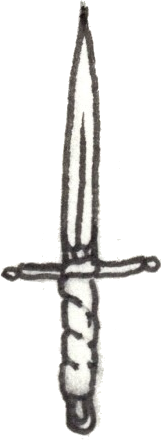
Dagger. A small, one-handed knife with a blade that can be straight or curved. The statistics of the dagger include a variety of knives used for cutting, stabbing, or even throwing.

Messer. One-handed, one-sided German swords used by civilians for personal defense, messers were legally defined as knives, rather than swords, and were not subject to the same size and weight restrictions. An early attempt at circumventing arms control.
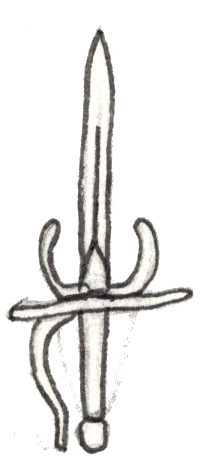
Parrying Dagger. As fencing developed, rapiers and other swords were often accompanied by daggers used for defense. The parrying dagger, with a larger guard to better catch enemy blades, was specialized for such defenses.

Rondel. A metal spike with a round handle used to pierce the armored plates or gaps in the armor of a prone knight.
Axes
A heavy blade made of metal or stone attached to a wooden haft, these easy-to-make weapons have existed since the stone age. The cutting wedge gains leverage from the haft, making them easy to swing and deal damage as well as use.
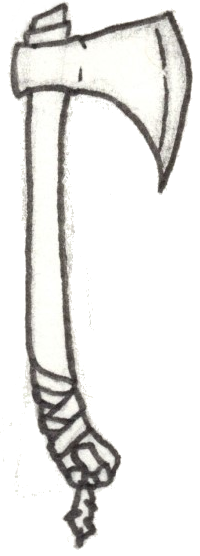
Handaxe. A small axe, held in a single hand and used for quick strikes and throwing in battle and a sport. Its versatility as both weapon and tool makes it useful when weight becomes a consideration.
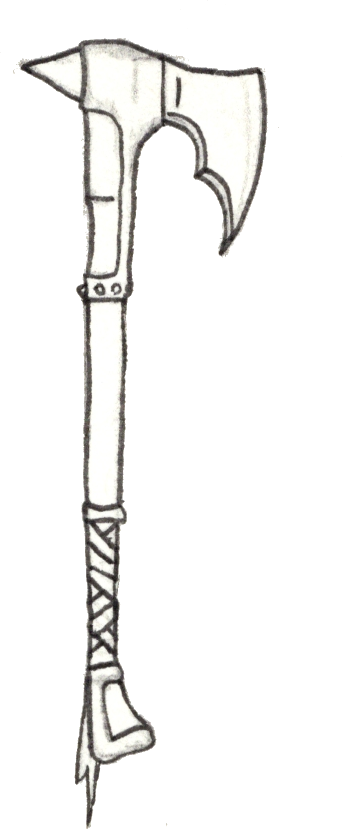
Battleaxe. A mighty one- or two- handed axe, used for cutting down enemies. Often depicted in the hands of barbarians, vikings, dwarves, and orcs, this weapon might have one or two heads. Battle-axes are specialized for combat rather than utility, often with all-metal hafts to prevent breakage.

Greataxe. A greataxe is a long battleaxe with a haft too short to be considered a halberd or glaive. Commonly depicted as a headsman's axe, in D&D the greataxe is heavier and hits harder than its longer-reached brethren.
Straight Swords
One of the most important weapons in Western literature and culture, the sword is a symbol of competence, status, training, and wealth. Expensive to make, learn, and maintain, these swords are typically used by upper-class warriors. They usually (but not always) have two-edged blades, though the user might only sharpen one and use the other to parry. With an enormous number of variants and developments, the Oakeshott Typology provides more details on straight swords' morphology than this document could hope to.

Arming Sword. Any sword used as a sidearm. In this document, it refers to the knightly sword, a one-handed weapon used for both cutting and thrusting by early medieval knights after their supply of lances were exhausted. Commonly called a "broadsword," that term was likely not used by contemporaries. The knightly sword was admired all over the world; their trade was heavily regulated and both Viking treasure-hoarders and Islamic historians praised the craftsmanship of Frankish blades in the Early Middle Ages.

Bastard Sword. A popular modern media term for a moderately-heavy sword that can be used in one or both hands. Historical evidence for a weapon of that kind is spotty, but it may have existed. Because fantasy references it so often and its versatility is undeniable, it is included here.

Greatsword. The evolution of the two-handed straight sword is a long and complicated one that is not altogether clear. In this document, a greatsword refers to the large two-handed swords that emerged during the late Middle Ages and early Renaissance to counter polearms, such as the German zweihander and the flamberge, as well as the Scottish claymore. They are later evolutions of the cruciform longsword and the knightly sword before them, and contemporaries referred to them all as a longsword.

Longsword. The word "longsword" has had many meanings. In this document, it refers to the two-handed "cruciform sword" popular with knights in the later parts of the middle ages, which predated the larger Renaissance weapons commonly called "greatswords" today. In addition to cutting and thrusting with two hands on the hilt, the user can grip the midpart of the blade to thrust with precision, or even switch to a reverse grip to strike the enemy with the pommel, which imitates the impact of a warhammer.

Shortsword. A wide category that covers any one-handed blade too short to be considered another kind of arming sword but too long to be used as a knife.
Curved Swords
While all swords require impressive dexterity to use, these weapons have a reputation for great skill and agility. These swords typically feature a single cutting edge, rather than two, and the blades are curved in a long arc.

Sabre. Popular among cavalrymen in the Early Modern Period (the Napoleonic wars and surrounding era), these blades combine the elegance of fencing weapons with the force-transfer of the lance centuries prior to create an elegant weapon that can be used on horseback or on foot, to cut enemies with brutal slashes or parry their attacks with elegant ease.

Scimitar. This one-handed curved sword—shorter and lighter than a sabre—originated in the pre-Ottoman Middle East. A weapon equally suited to devastating slashes delivered from horseback and on foot, the scimitar persisted for centuries. Several subtypes exist, each similar to a sabre in its native lands, and the term has fallen out of use today.

Shotel. An ancient weapon that originated in Ethiopia. Unlike the rest of the curved swords, the interior curve contains the sharp edge of this weapon, similar to a sickle. According to contemporaries, they were used both to pull mounted enemies from horseback and to circumvent shields, both to terrifying effect.
Fencing Swords
Finer weapons that evolved from straight swords, with a focus on fine technique and piercing gaps in armor. They favor speed and precision over power, though every sword required a great deal of finesse to use properly.

Estoc. A long, thin sword, sturdy and specialized for piercing rather than cutting, the edgeless estoc is designed to puncture mail (according to some sources) and slip through gaps in plate (according to others). Either way, this two-handed thrusting sword counters heavy armor.

Rapier. One of the most famous fencing weapons, rapiers are sharpened along both blades instead of the point-only weapons commonly imagined. Often with a swept hilt or cup hilt to defend the hand, these light swords were popular in Renaissance courts.
Other Swords
All other swords, that don't fit into an existing category.

Gauntlet-Sword. Known as a dandpatta in Marathi and a pata in Hindi, this weapon attaches the blade of a sword to a gauntlet that encircles the hand and wrist. Used from both infantry and cavalry for cut-and-run attacks, this weapon was commonly used in tandem with another pata, a shield, or another one-handed weapon. While it existed in the 17th and 18th centuries rather than the early Renaissance period the rest of this document emulates, the concept and design are too wonderful to omit.
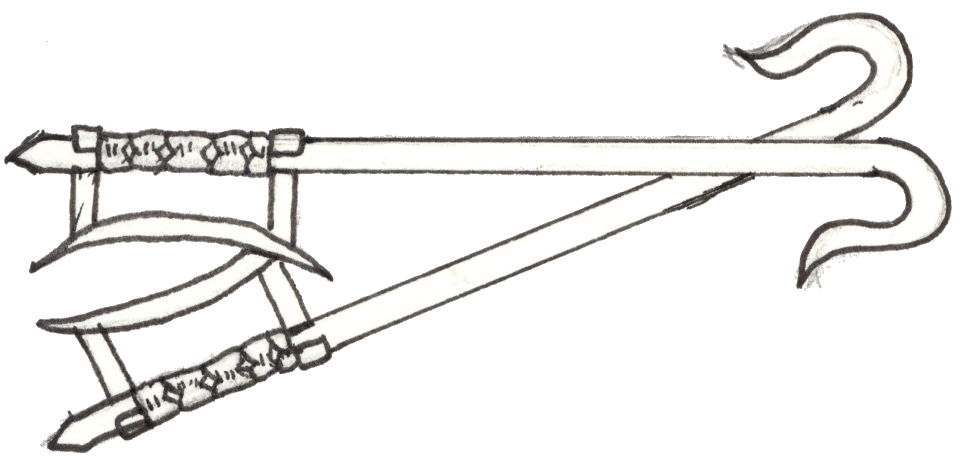
Hooksword. A weapon used in Chinese martial arts, these swords have a shephard's-crook-like hook at the end of the blade used to trap or catch enemy weapons. These weapons are often used in pairs.
Cords
These weapons, often difficult to use with the same effectiveness as other weapons without significant training, use the flexibility in their construction to ensnare enemy body parts and circumvent their defenses.
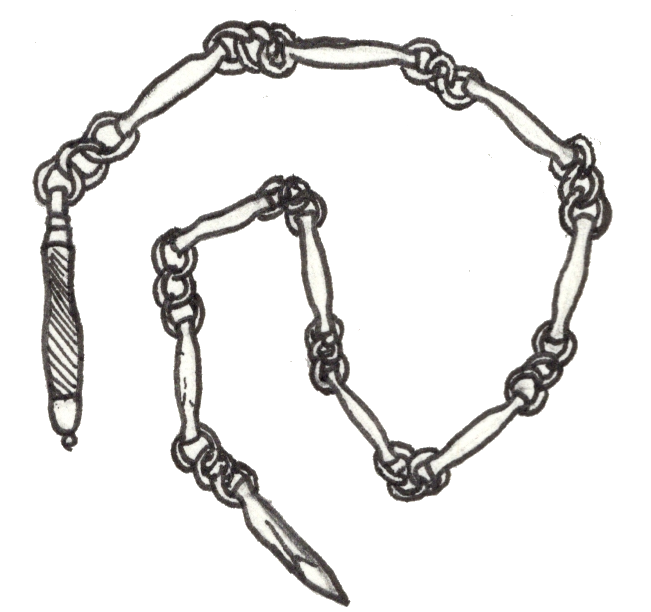
Chain Whip. A weapon common to Chinese martial arts, made of metal rods linked by short lengths of chain. The statistics of this weapon also refer to lengths of spiked chain that might be used as an improvised or impractical, but certainly painful, weapon.
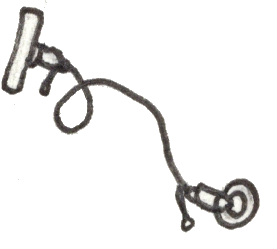
Garotte Wire. Any length of cord, chain, rope, or wire used to strangle, often as an assassination weapon. Variations of this weapon have been used since the Roman empire, and were very popular during the 20th century.
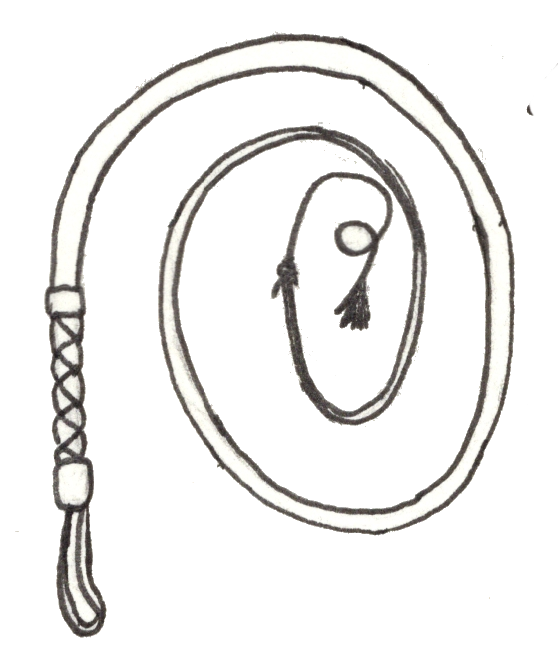
Whip. A flexible weapon, often made of lengths of braided leather coiled up when not in use. Providing long reach and often making a loud noise, whips are used on both animals and people to inflict pain and ensure obedience. Dextrous whip use also lets the user disarm or trip their enemies, making it effective for nonlethal solutions.
Other Melee Weapons
All melee weapons that don't fit into any of the categories listed above.
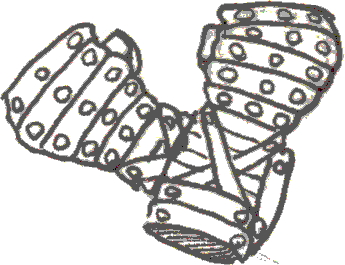
Cestus. For the purposes of this document, the cestus is any kind of fist weapon, including tekko, brass knuckles, and boxing gloves. Historically, the Roman cestus referred to strips of leather wrapped around the knuckles and upper arms, sometimes studded or spiked.
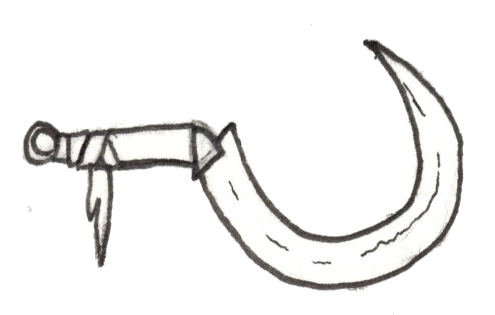
Sickle. A small, one-handed farming implement with a curve on the inside of the blade, equally suited to piercing, cutting, catching weapons, and snagging limbs.
Bows
A ranged weapon that stores tension in flexible wooden arms and releases it to the straighten the string and loose an arrow. Bows have existed since prehistoric times, and are still popular as sport and hunting weapons. Bows require enormous strength to draw and aim—bowmen, not infantrymen, were the strongest members of several medieval armies.

Shortbow. The smallest bows, used by hunters, peasants, and trainees. With a weaker draw weight and shorter range than other bows, they still make effective weapons.

Longbow. The mobile artillery of the Middle Ages, the English longbow (which the longbow in this document is based upon) required incredible strength to use. During the Hundred Years' War, longbowmen rained volleys down on French knights at long range, embedding their heavy armor with arrows. This bow has a height roughly equal the user's, which gives it its enormous draw, power, and range. After the invention of the crossbow, the massive longbow was supplanted everywhere in Europe except England, which continued its widespread archery tradition for centuries after others abandoned it.

Recurve Bow. A recurve refers to a bow of any size whose arms curl forward at the ends, which delivers energy to the arrow more efficiently and allows for a stronger shot without additional draw weight. This construction technique allows users with less physical strength to use bows of larger size with greater ease and accuracy. In this document, however, this bow acts as an intermediate step between small shortbows and longbows (which had little to no forward curve), for bows of middling size. It occupies the same niche as the weapon formerly called a longbow in the base system does, while the longbow above is an entirely new weapon.

Greatbow. A massive fictional bow used by creatures of enormous strength, such as giants, the archers of Anor Londo, or Odysseus of Ithaca. This bow dwarfs its user, and has a draw weight so great that most archers could never hope to use it.
Crossbows
A horizontal bow that is winched rather than drawn, then triggered to fire, these weapons gained widespread use after their invention in China. With relative ease of use for far greater power than what the user could accomplish with a bow, they made it very easy to raise large numbers of cheap troops. They were very popular among Italian mercenaries, and while their range was shorter than English longbows, it is far easier to train an arbalist than an archer, so they saw significant use in mass warfare on the continent until firearms could compete.
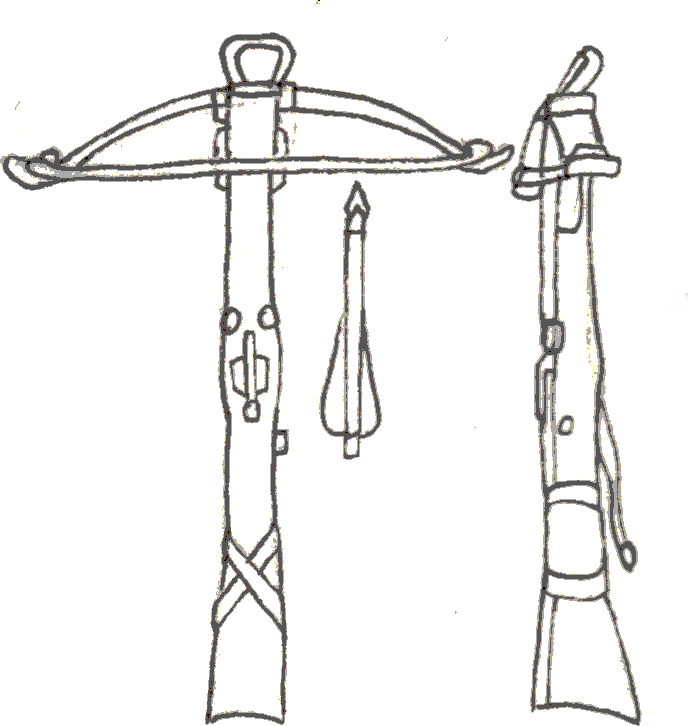
Light Crossbow. This easy-to-use crossbow gives users with even basic training effective killing capabilities at range.
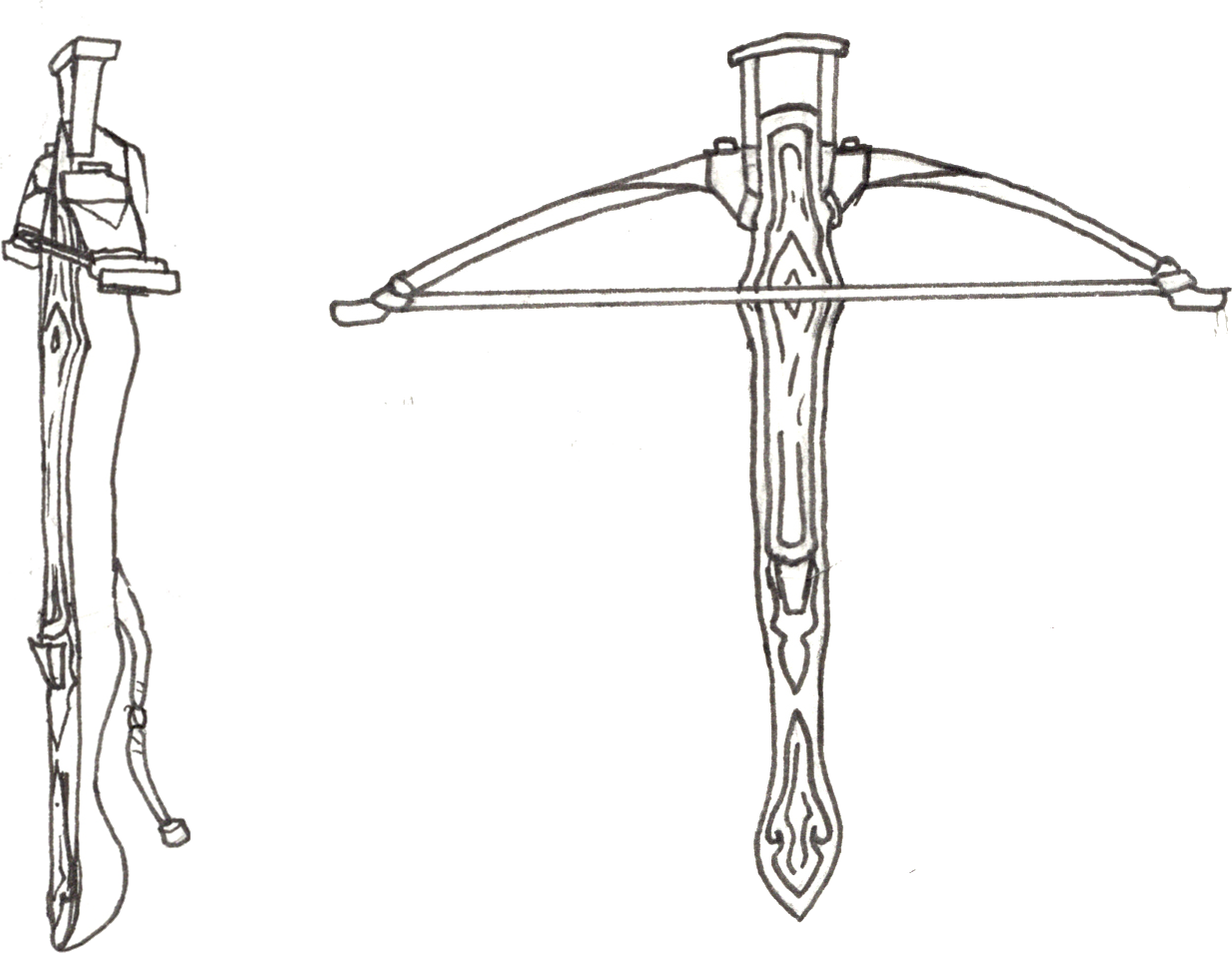
Heavy Crossbow. Mighty crossbows, often with arms of metal, that deliver enormous force and require significant strength to crank.
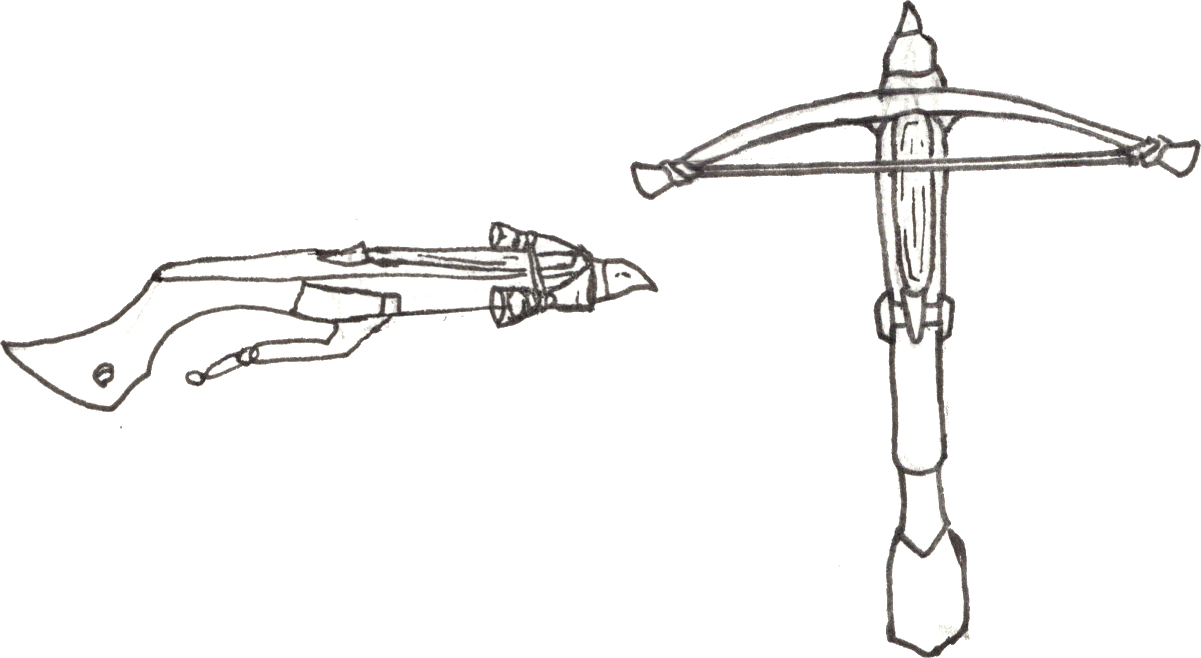
Hand Crossbow. A small crossbow held in one hand, not unlike a modern pistol. Often dual-wielded. May or may not have actually existed; most results from cursory research refer back to tabletop RPGs but some references exist to their use in "parlor shooting."
Guns
Firearms and their presence in fantasy are contentious, but there is no denying that plate armor was contemporary with early guns. The firearms used in this document use the matchlock mechanism, which pressed a slow-burning match to the gunpowder when the user squeezed the trigger. Developed in the later half of the 15th century, the matchlock was used alongside the wheellock, and both were superseded by the larger-caliber musket as time passed.

Arquebus. A two-handed firearm with a superficial resemblance to a musket, though with a more primitive firing mechanism and a smaller bore. First appearing in the Ottoman empire, the pre-matchlock versions of these weapons were steadied on walls or tripods, but the trigger allowed them to be used as handheld weapons.

Handgonne. A general term for any gunpowder weapon held in both hands (compared to a bombard or cannon) or, later, in one hand. WCX refers to the pistol-like matchlock weapons that appear in museums dated in the late 1400s to
mid-1500s.
Other Ranged Weapons
The rest of the ranged weapons, which don't fit into a single category.

Atlatl. Dated to Ice Age cultures across Europe, Australia, and the Americas that persisted until the Aztec Empire, this handle of carved wood, antler, or bone had a curved or hooked end to hold a dart hurled by the pitching motion. The leverage added shot the javelin further and with more force and accuracy than possible with hand alone. Believed by some to be a missing link between javelins and bows.
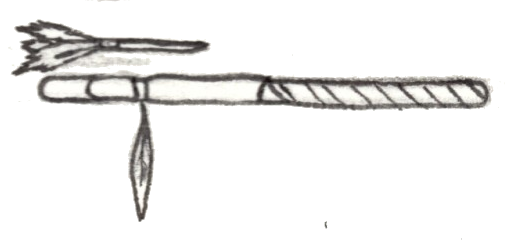
Blowgun. A hollow tube into which a needle (often poisoned) is placed. The user's breath propels the projectile forward in near silence. Popular among assassins and guerillas.

Dart. Any sharp, thrown projectile that doesn't fit into the other categories, including light, fletched spears (hurled by atlatls), throwing knives, and shuriken.
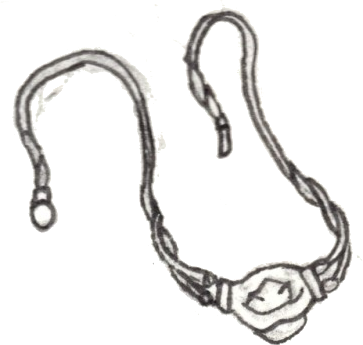
Sling. A leather thong or strap into which stones are placed and hurled with centrifugal force. A simple and humble weapon, but not one to be underestimated.
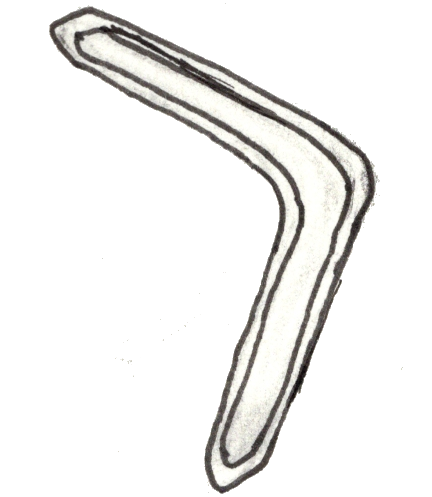
Boomerang. A specially-shaped piece of wood used for hunting and warfare that, when thrown properly, returns to the user's hand rather than continuing onward.
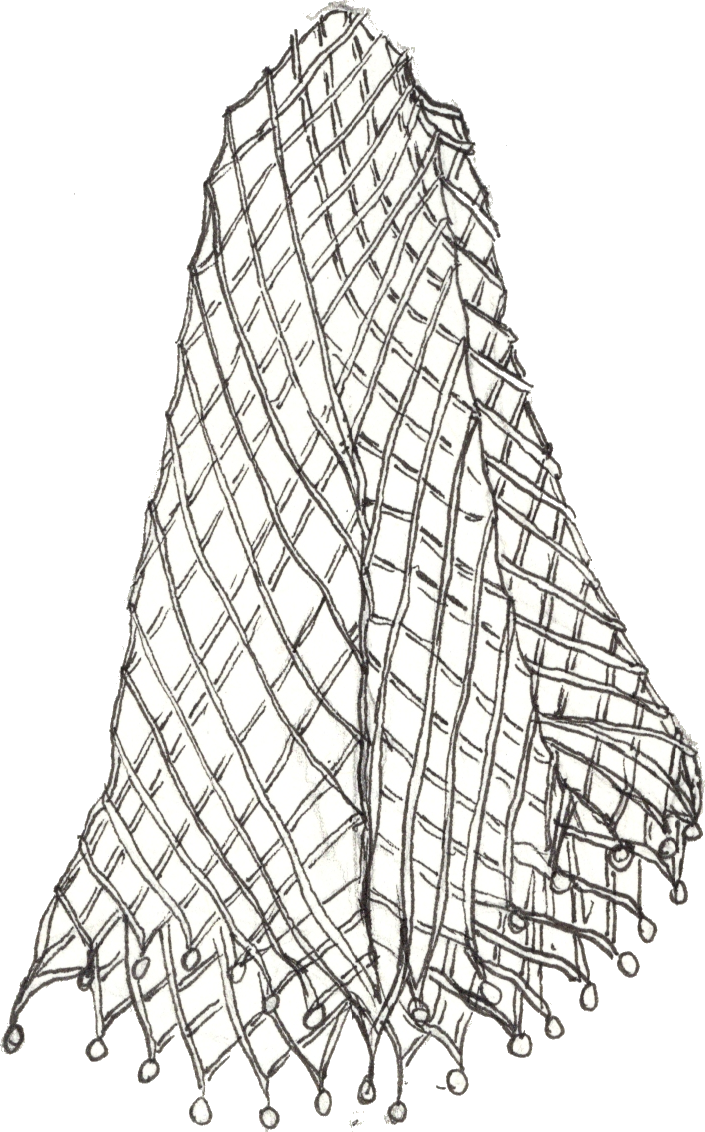
Net. A series of cords knotted into a mesh that ensnares and entraps enemies. Popularly wielded by gladiators, this weapon sees use among hunters, trappers, and fishermen.
Shields
Shields have been a critical component of personal defense throughout history. While knights in plate experienced diminishing returns in protection for the weight they added, less-armored enemies continued to use them all the way through the modern era.
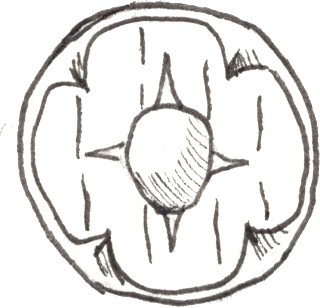
Buckler. A small, round shield made entirely of metal, with a large bulge (or boss) in the center used to parry attacks. Commonly used in fencing.
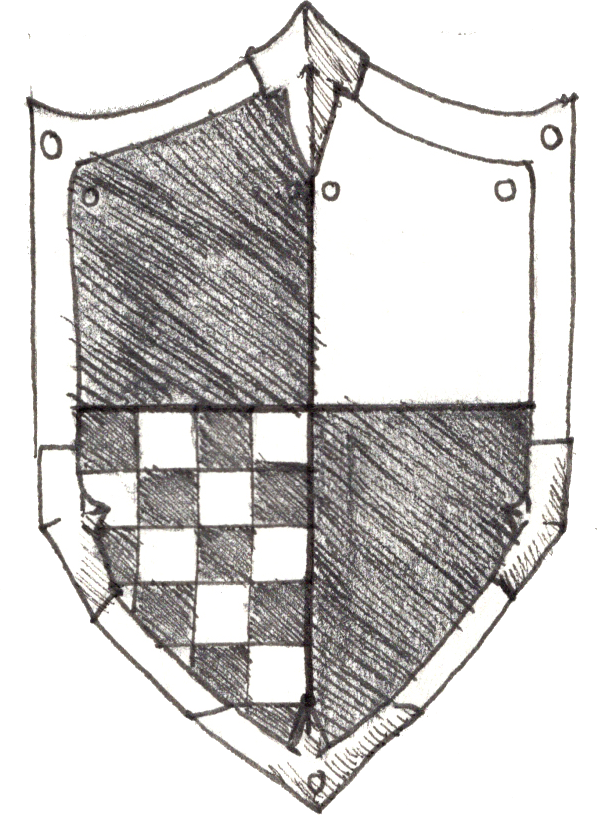
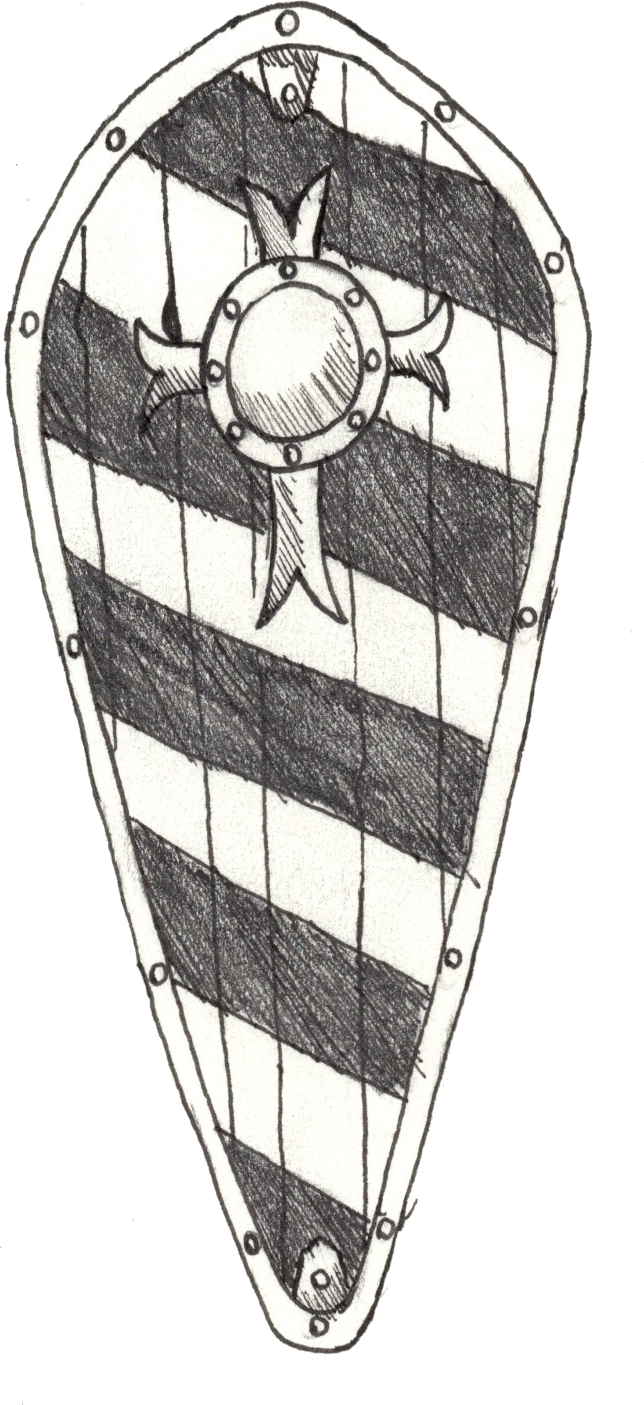
Heater Shield. A generalist shield (left) that evolved from the kite shield (above), which can be used when mounted or on foot. Light, inexpensive, and effective from the waist up, heater shields often displayed the heraldry of the warrior wielding them on their colorful faces.
Kite Shield. A teardrop-shaped wooden shield wielded by both footmen and mounted soldiers but specialized for horseback, the tapering shape of this shield makes it perfect for defending both horse and rider. Common in the Early Middle Ages, and made famous for their use of the Norman conquest of Britain as depicted on the Bayeux Tapestry.
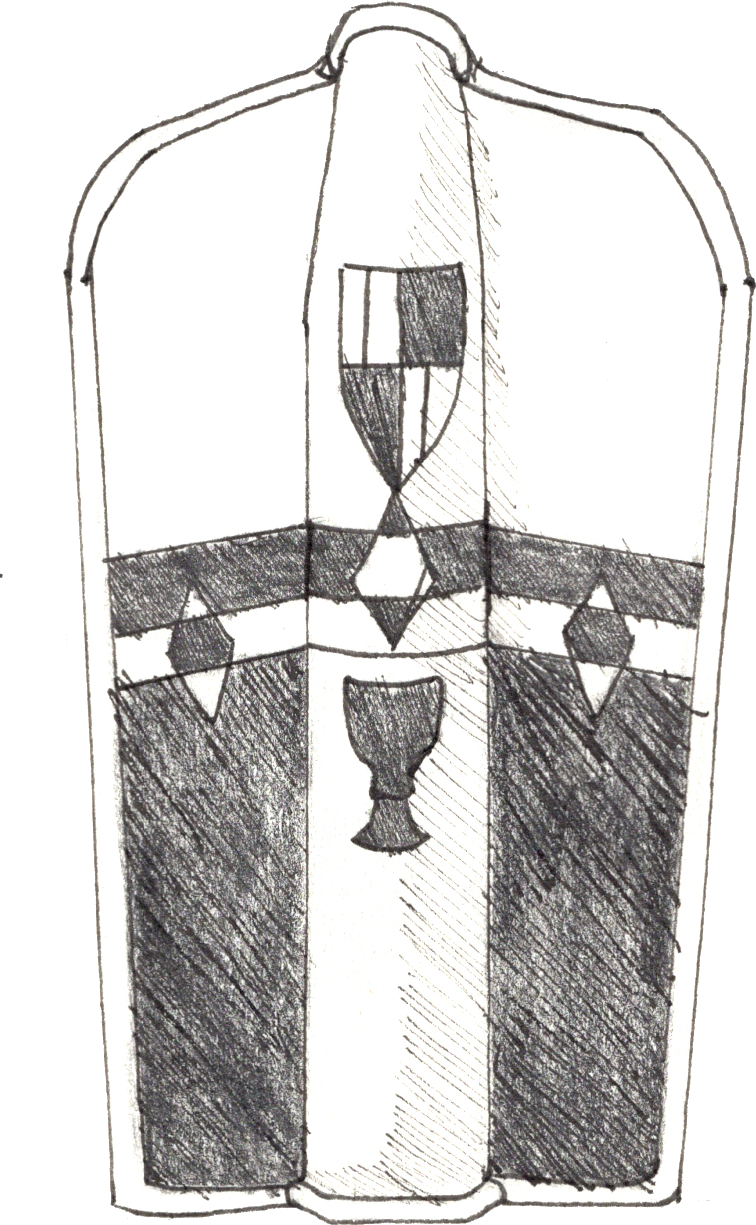
Pavise. A tall shield made of wood used by crossbowmen, who carried it to serve as portable cover. A large spike in its bottom allowed its user to plant it in the ground to shield them while they ducked behind it to winch a crossbow.
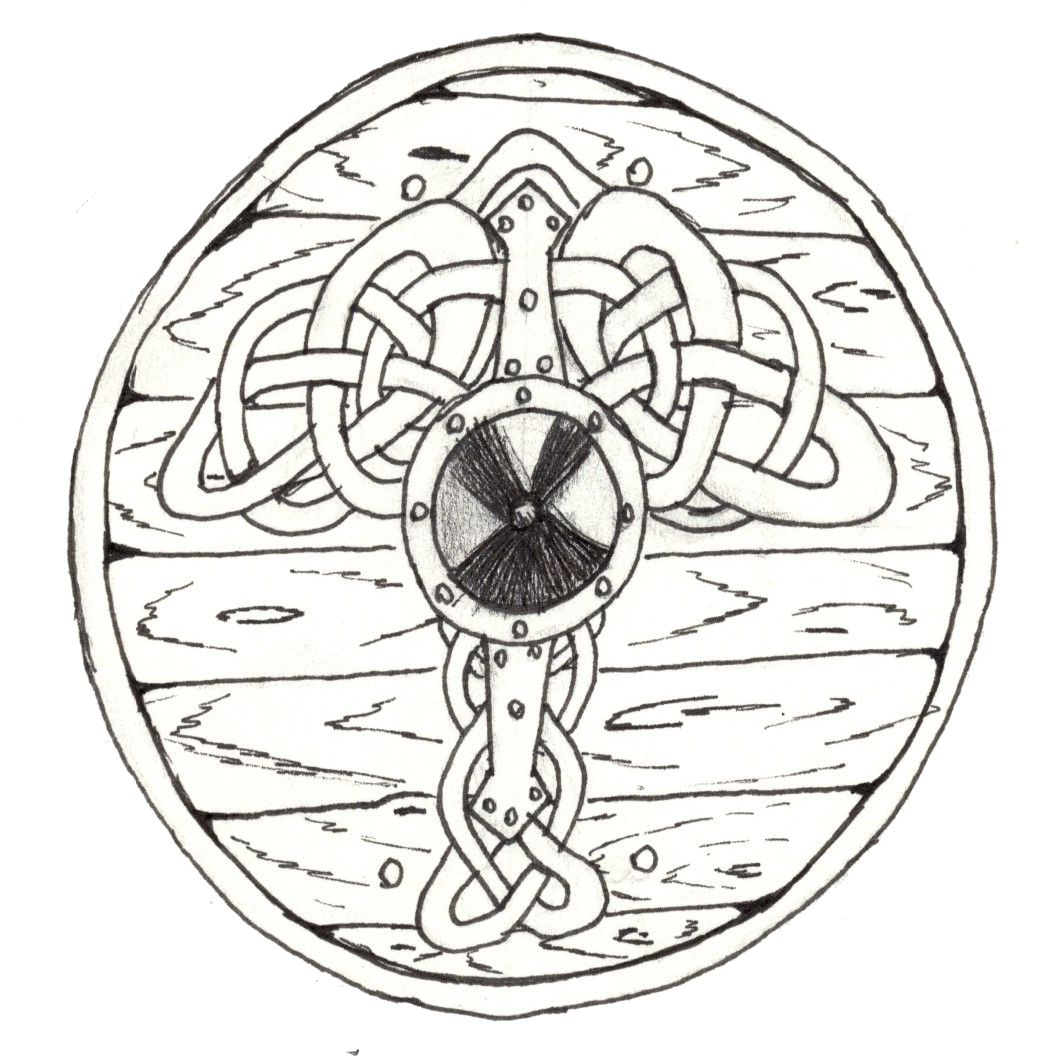
Roundshield. A circular one-handed shield, made of wood or metal with a circular boss in the center. The example pictured above imitates the Viking shield, but this shield can also be used to represent any other circular shield that cannot reasonably fit into any other category.
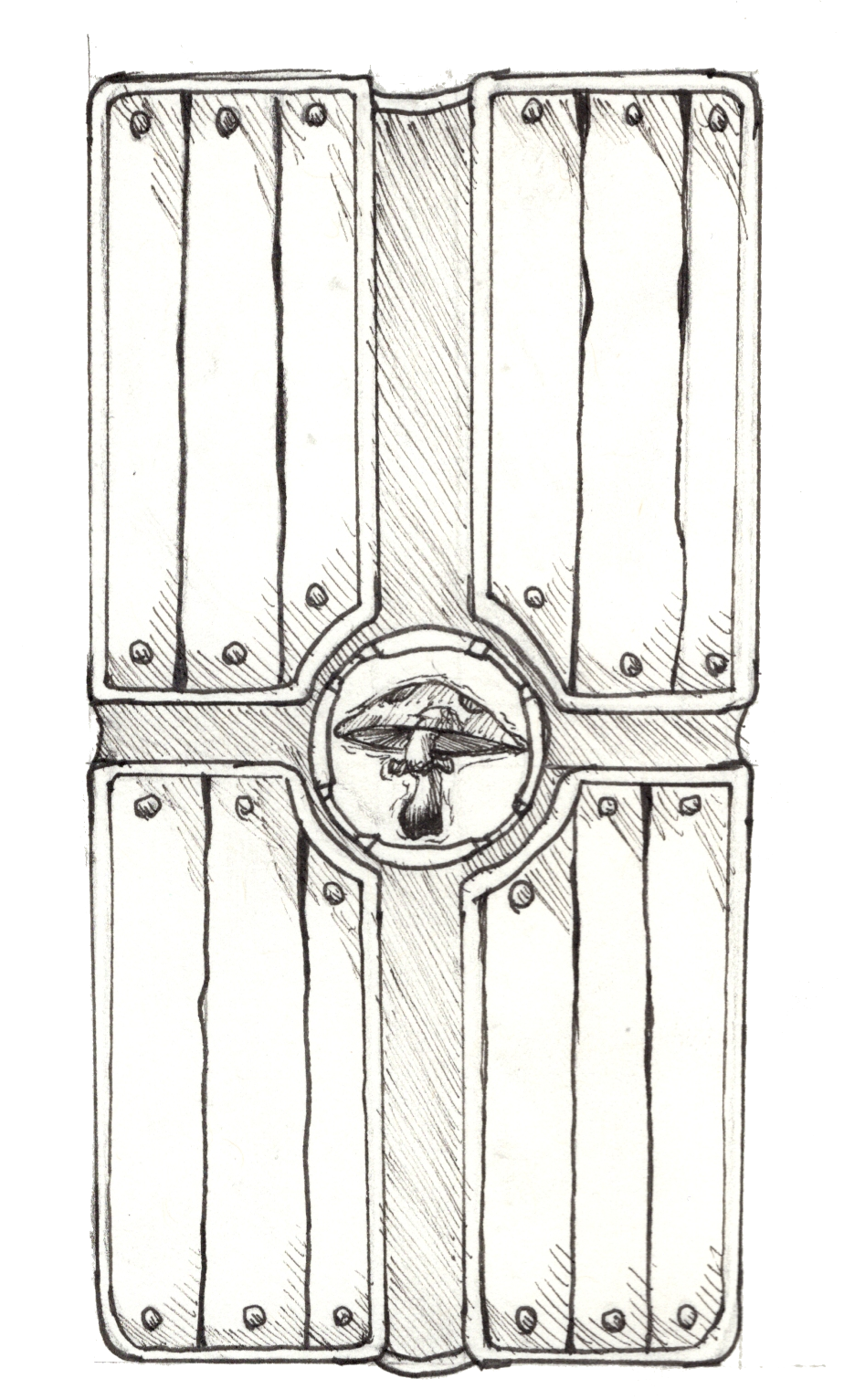
Tower Shield. A tall shield, typically rectangular, capable of covering most or all of the user's body, giving them extra cover against attacks.
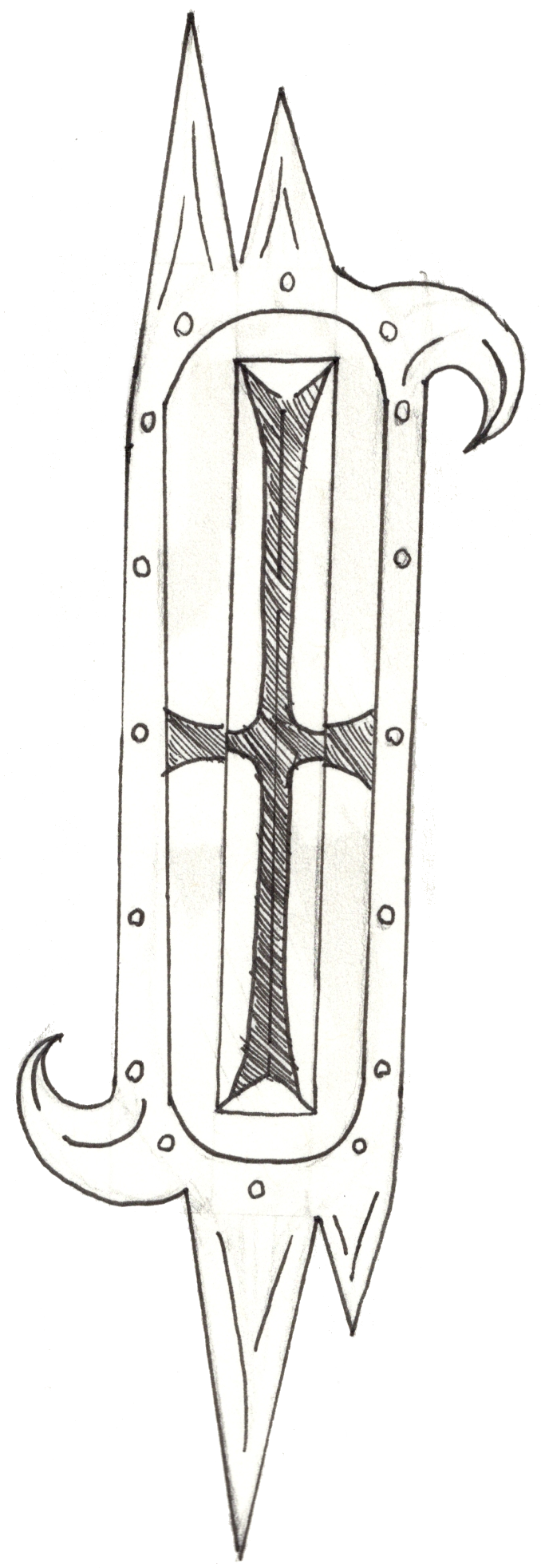
Dueling Shield. Also called a long shield, this shield often featured a large triangular boss in the middle for bashing enemies along with a set of blades, spikes, and hooks to give extra versatility. It was used both alone and as a weapon in its own right.
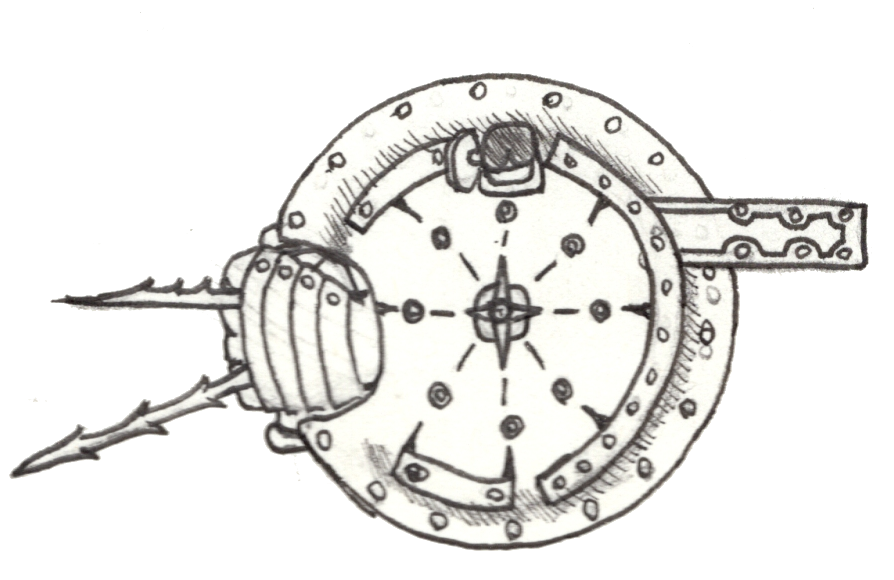
Lantern Shield. Popular during the Italian Renaissance in the 1500s and 1600s and used for nighttime duels, this specialized buckler fits an entire lantern and integrates a gauntlet and blades into its construction.
Arrows
The projectiles loosed (not fired) from bows, made of a straight shaft of wood either sharpened or equipped with a metal or stone head and fletching to straighten the arrow's flight. A humongous variety of arrows and arrowheads have existed over time, and the small variety here cover major variations used during the Middle Ages.
Bodkin Arrow. An arrowhead with a straight spike used against armored targets and reportedly capable of piercing maille and plate. More common than broadheads.
Broadhead Arrow. A steel arrowhead employed against lighter-armored targets, capable of causing large wounds with its multiple blades.
Field Arrow. These cheap arrows mimic the flight of harder-headed arrows, and can be used against practice targets with minimal penetration.
Firecage Arrow. Rare iron-headed arrows which contained a burning coal, used for signal lightning and to set fires over fortifications.
Other Ammunition
The other kinds of ammunition, which are more intuitive than the varieties of arrowhead, or even have their own section already.
Barbed Quarrel. A bolt fired from a crossbow with rearward spines or barbs that cause additional damage to the target's flesh when removed.
Blowgun Needle. Miniscule spiked darts propelled by the user's breath from a blowgun. Tiny, silent, and often coated with poison to stealthily assassinate targets.
Bullet. The ammunition fired by guns—a round, unrifled sphere made of lead. Individual arquebusiers often trimmed their bullets to fit their guns, or even made their own bullets.
Dart. A broad term for any small, pointed piece of ammunition. Large dots can be hurled with an atlatl, moderately-sized ones can be thrown by hand, and small ones are fired from blowguns.
Grapeshot. Rather than a single bullet, this cartridge contains many small lead spheres, allowing the shooter to hit smaller, moving targets more easily.
Hunting Bolt. A less-lethal piece of crossbow ammunition, designed to bruise and stun the target rather than pierce and cut the flesh, avoiding damage to valuable meat.
Sling Bullet. Any small stone or piece of metal aerodynamic enough to be fitted into a sling. One of the easiest pieces of ammunition to find, often picked up from the ground in the heat of the moment.
Quarrel. The darts fired by crossbows, with a variety of characteristics depending on specialization. Tend to be shorter and thicker than arrows.
Armor
The full set of armor detailed in this document which, while not nearly as detailed as the weapons, are more diverse and balanced between each other than those in the base game.
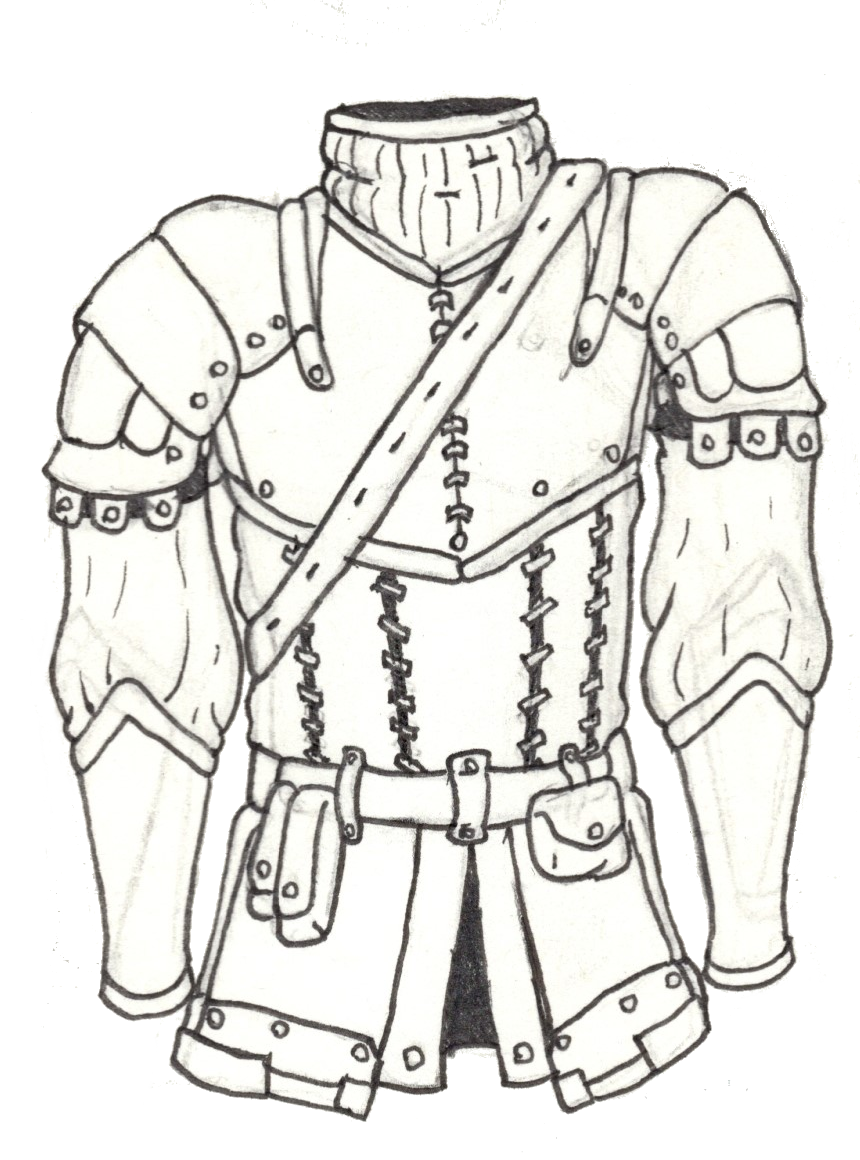
Leather. This flexible armor made from tanned animal hides offers basic protection against glancing blows, but cannot endure extended punishment.
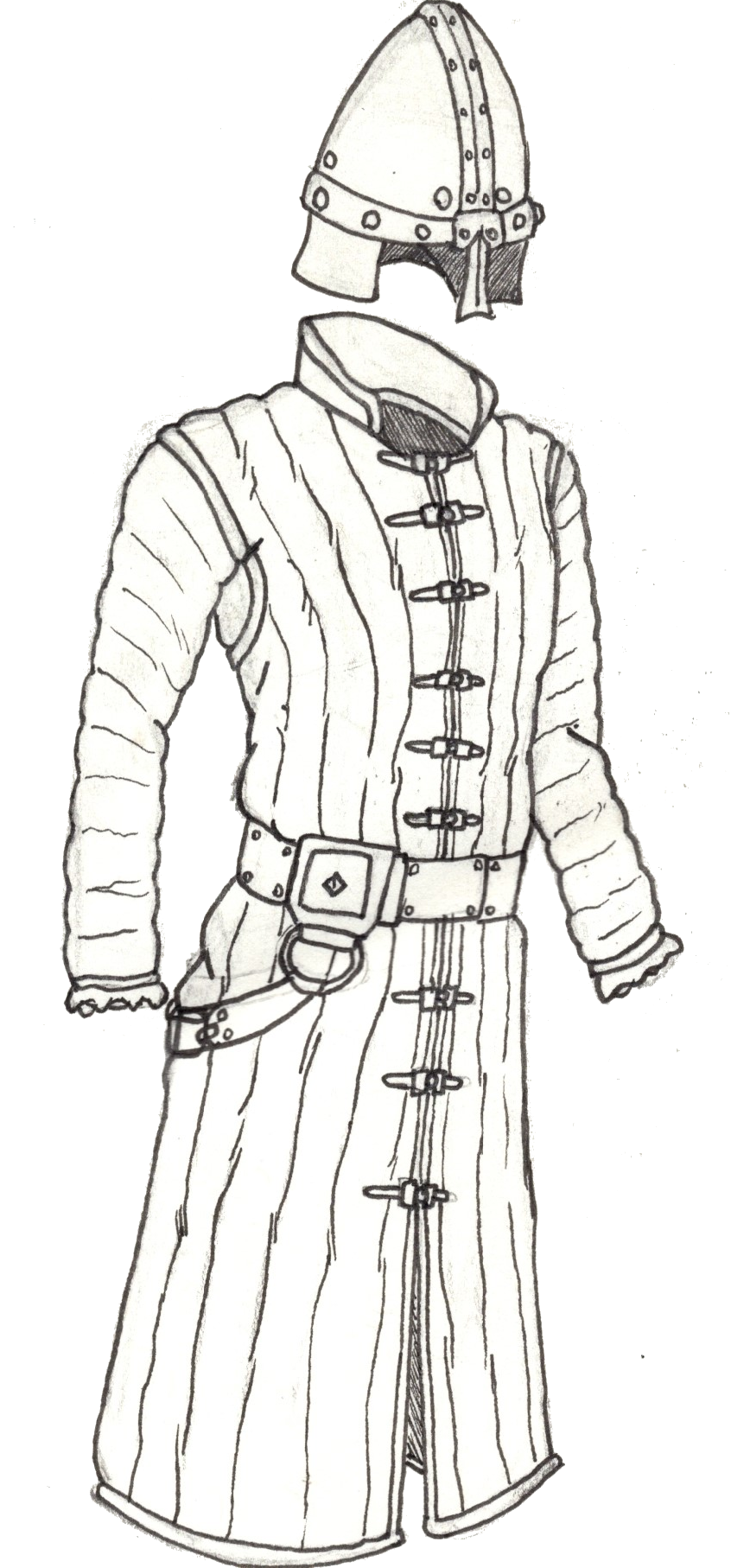
Gambeson. Armor made from layers of quilted cloth. Warm, thick, and flexible. Thinner gambesons are worn beneath other armor to act as padding, and thicker variants make excellent armor. Often worn by peasants, mercenaries, and other groups on a budget.
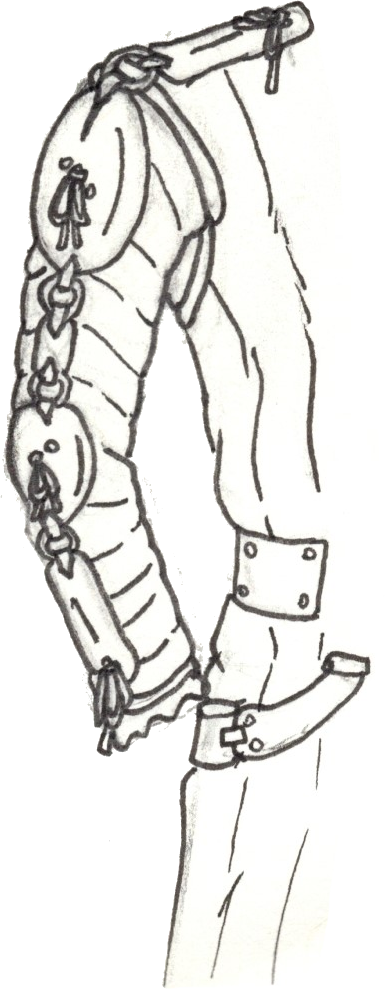
Jackchains. A gambeson with chains or spaced plates along the arms and shoulders to provide additional protection.
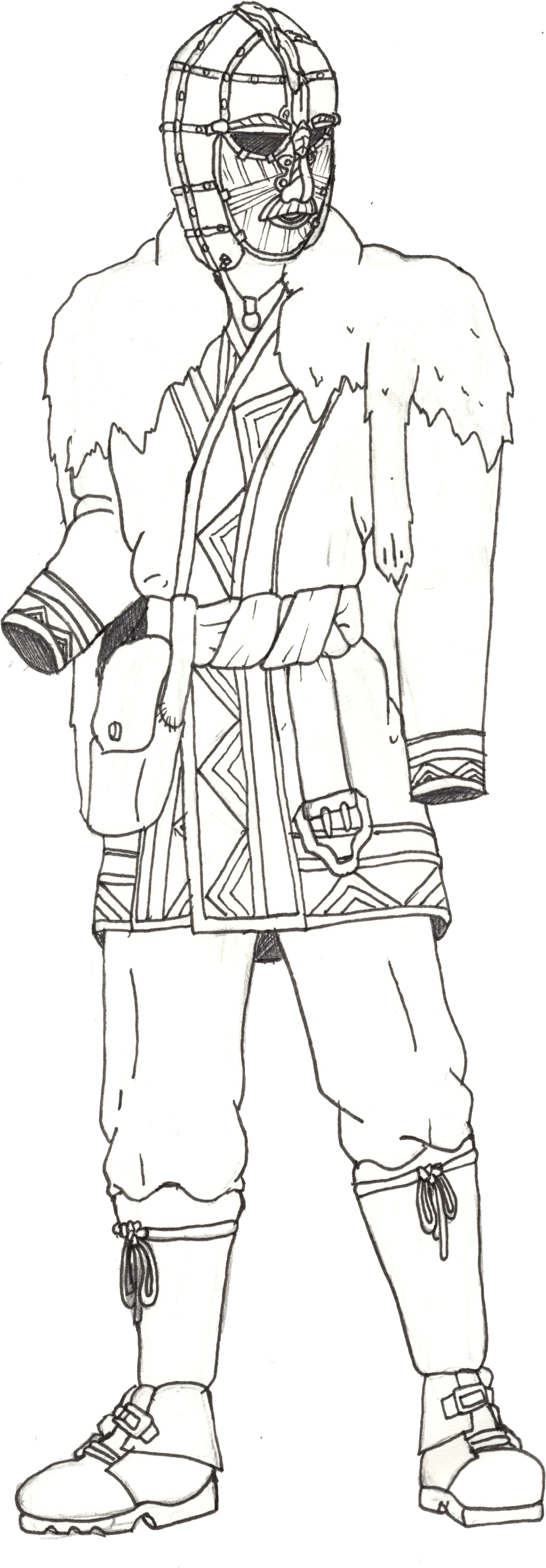
Hide. Thick, heavy clothing made of furs and skins. It can take a variety of shapes and designs, and often features the patterns and construction techniques of the culture which created it.
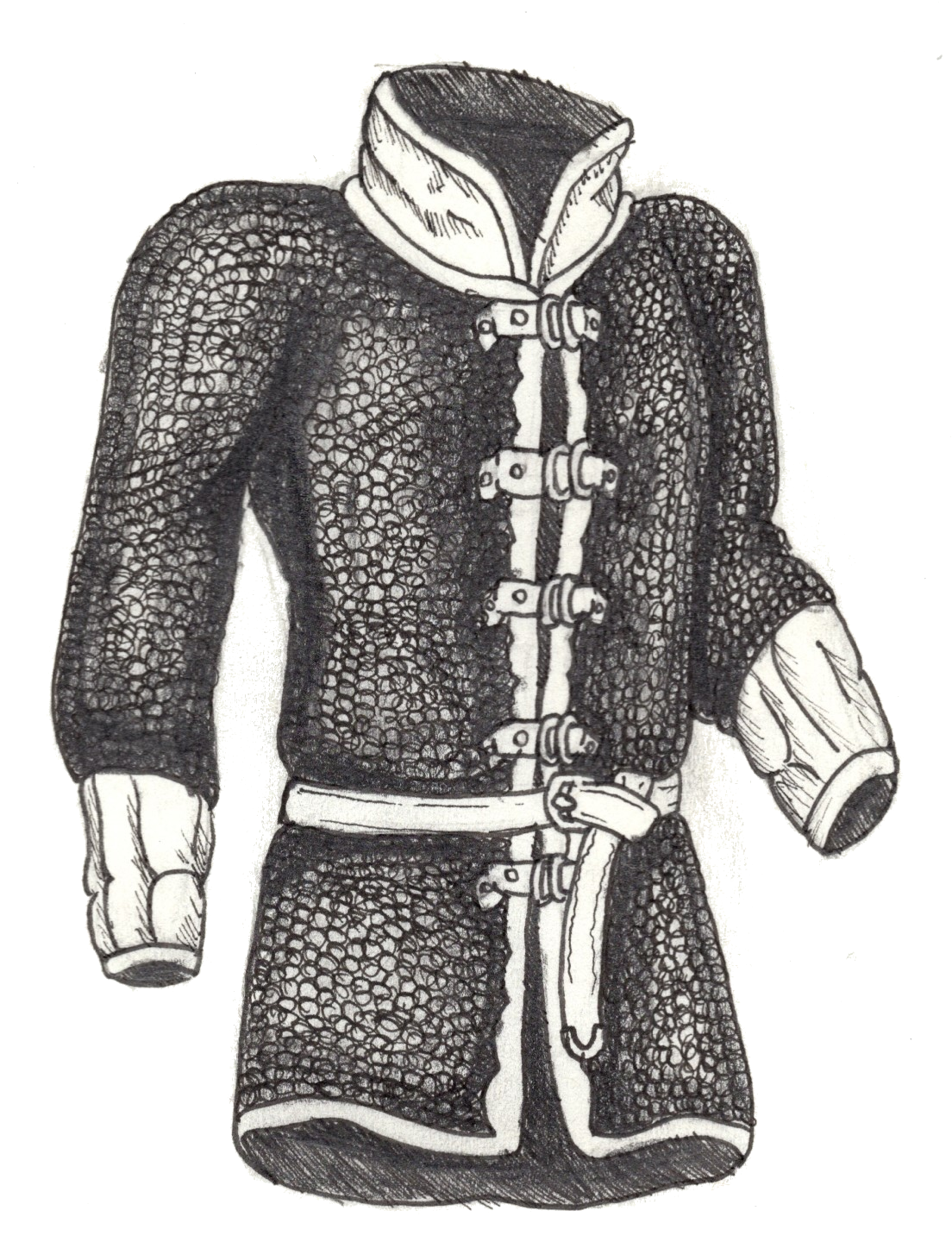
Haubergeon. A shorter version of the thigh-length hauberk, this ringed shirt of maille covered most of the arms, but did not include maille gloves.
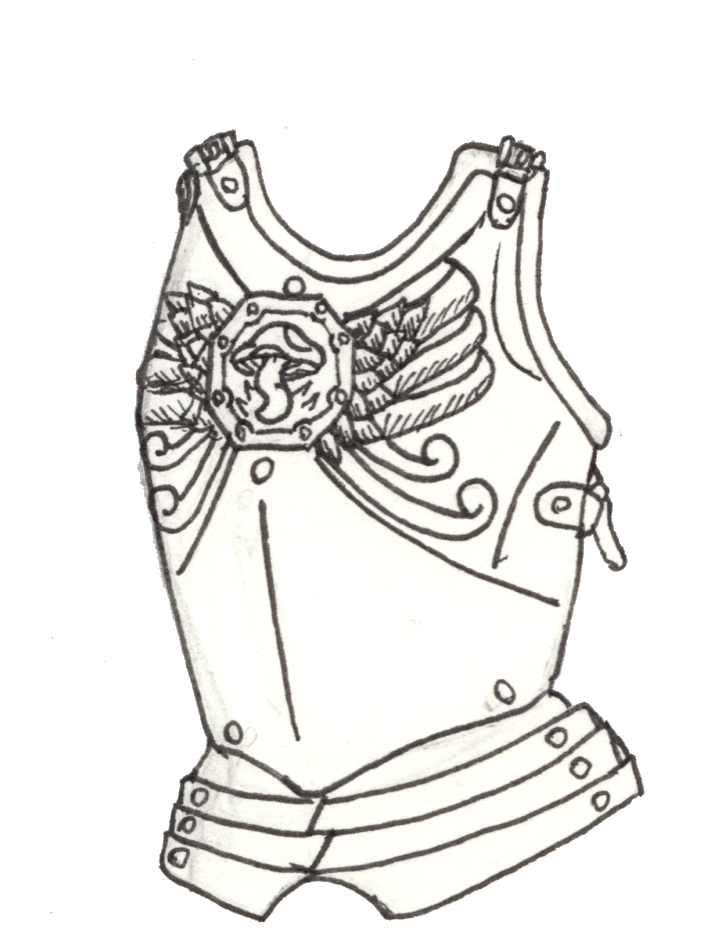
Breastplate. A metal plate that covers the front of the torso, covering the vitals but leaving the vulnerable back open, allowing for flexibility and speed.
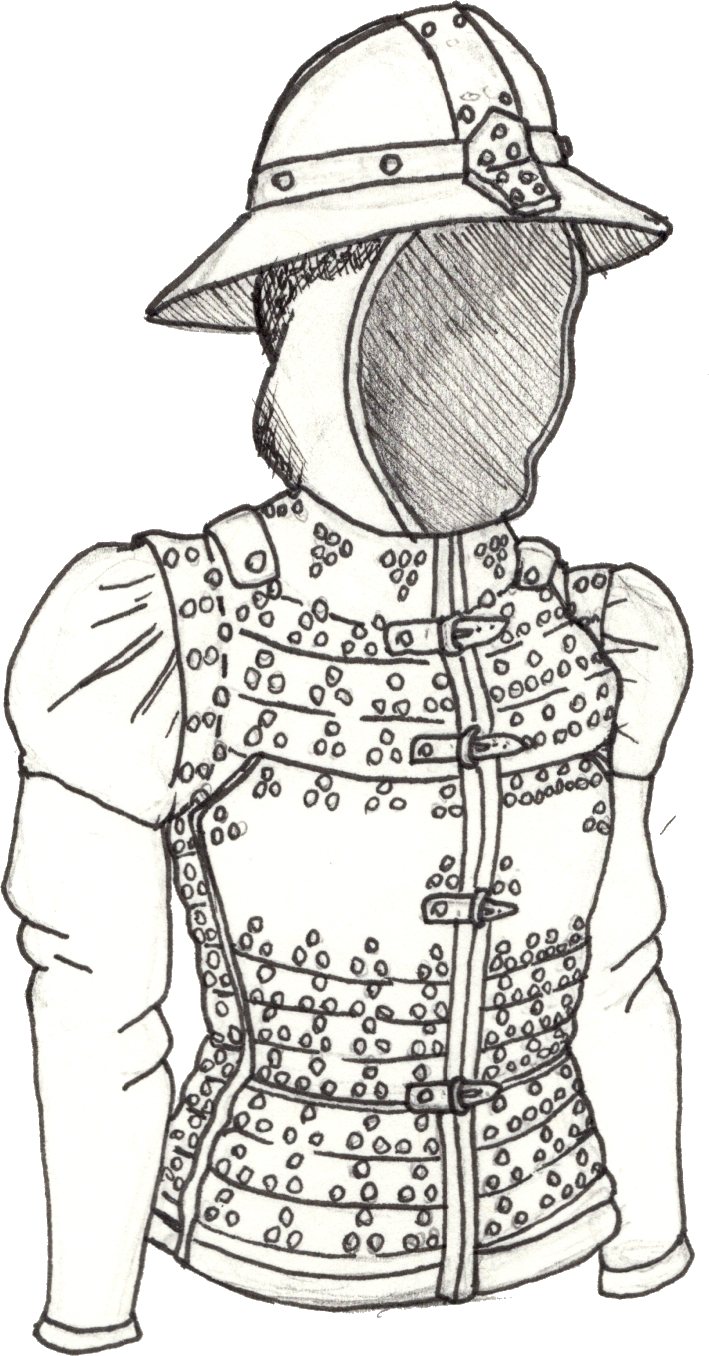
Brigandine. Often confused for studded leather (which never existed), this armor is a cloth top with metal sheets riveted to the interior to create a shell around the user. Also called a coat of plates.
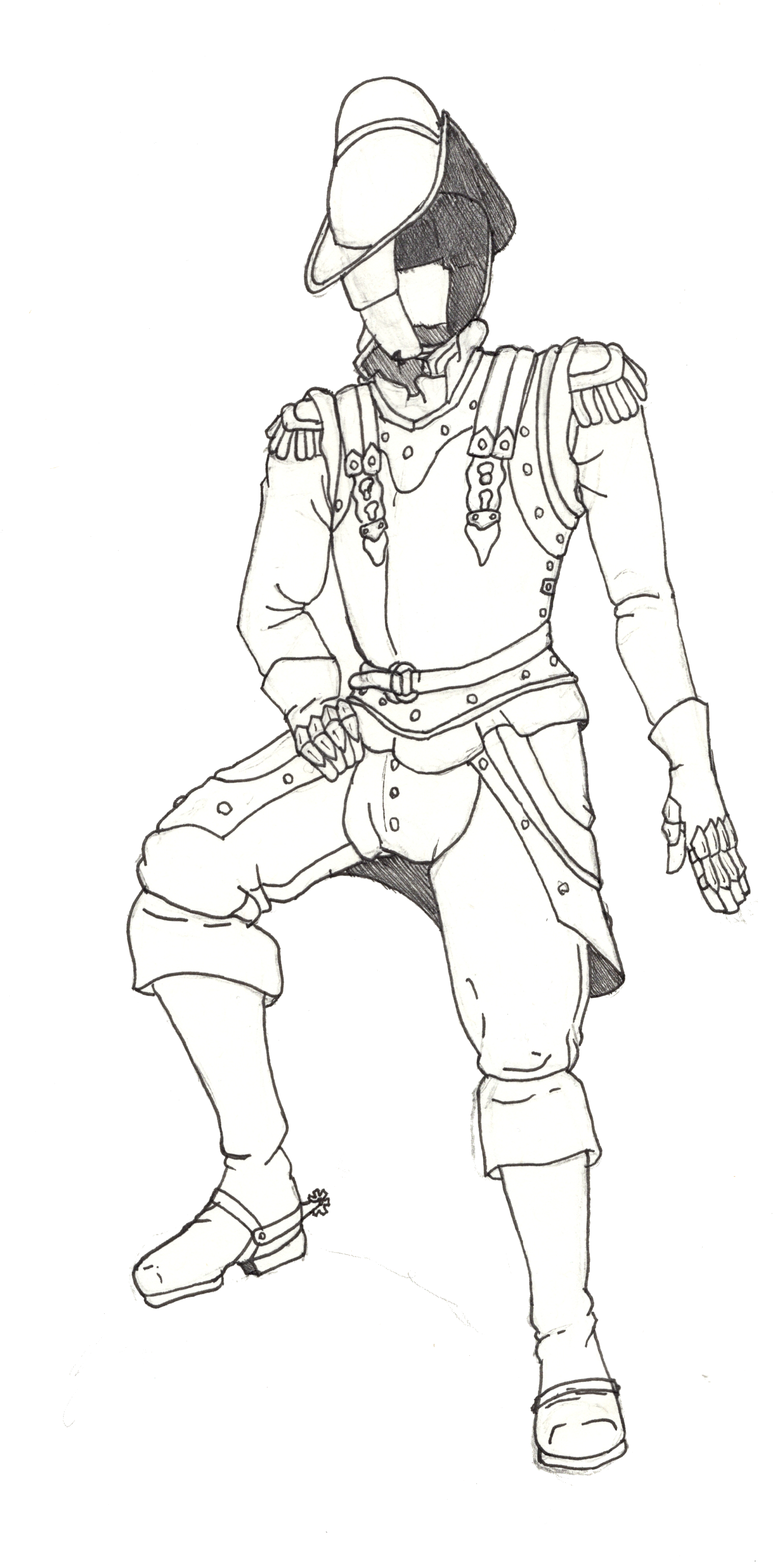
Cuirass. A breastplate with matching backplate and helmet. The perfect combination of budget manufacturing, weight, and protection which persisted after the Renaissance, lingered through the nineteenth century, and only truly vanished in the early years of the first World War.
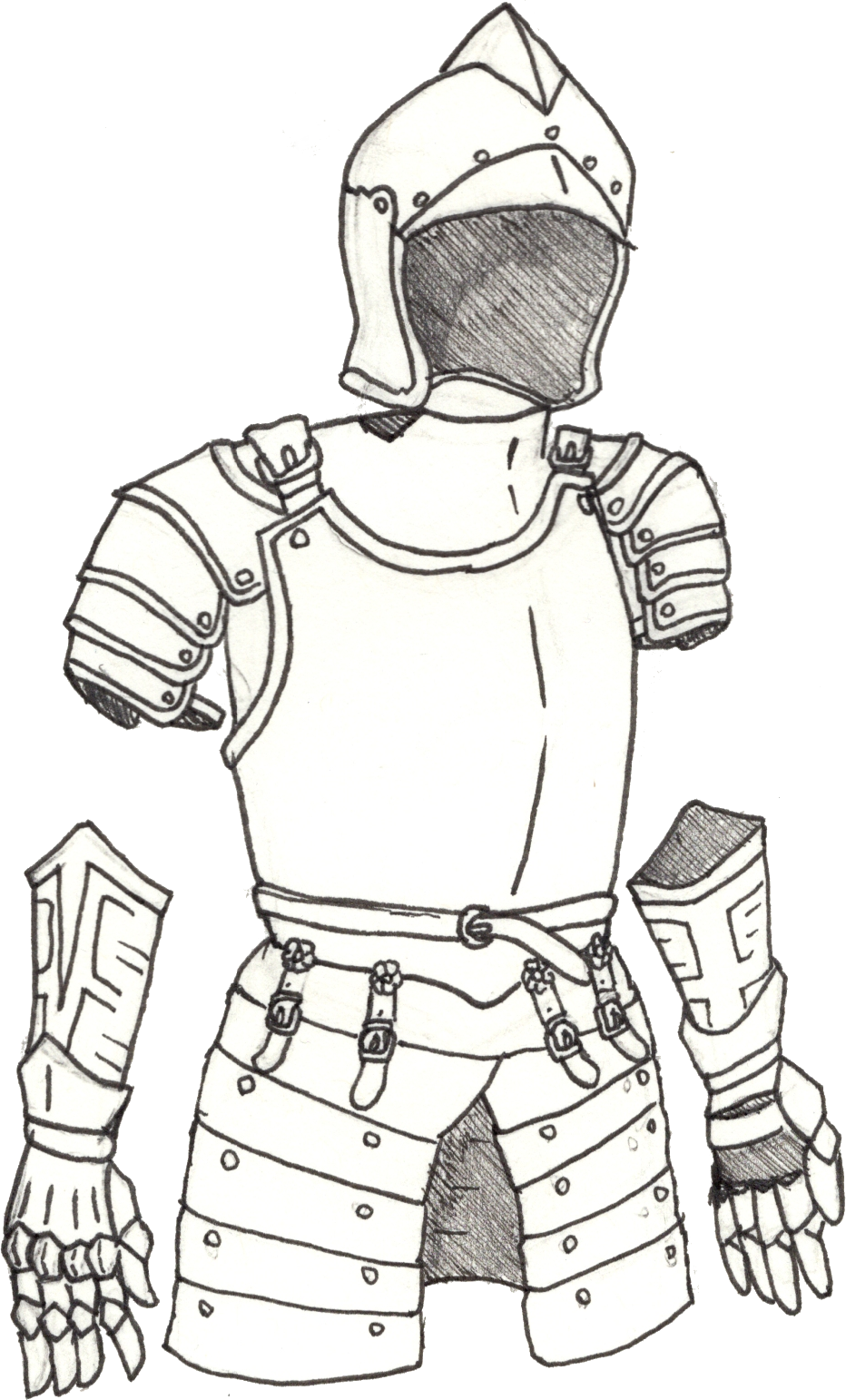
Half-plate. Budget plate armor that covers the torso, head, and upper limbs, but not the extremities. Often manufactured in vast quanties, since those parts require little tailoring.
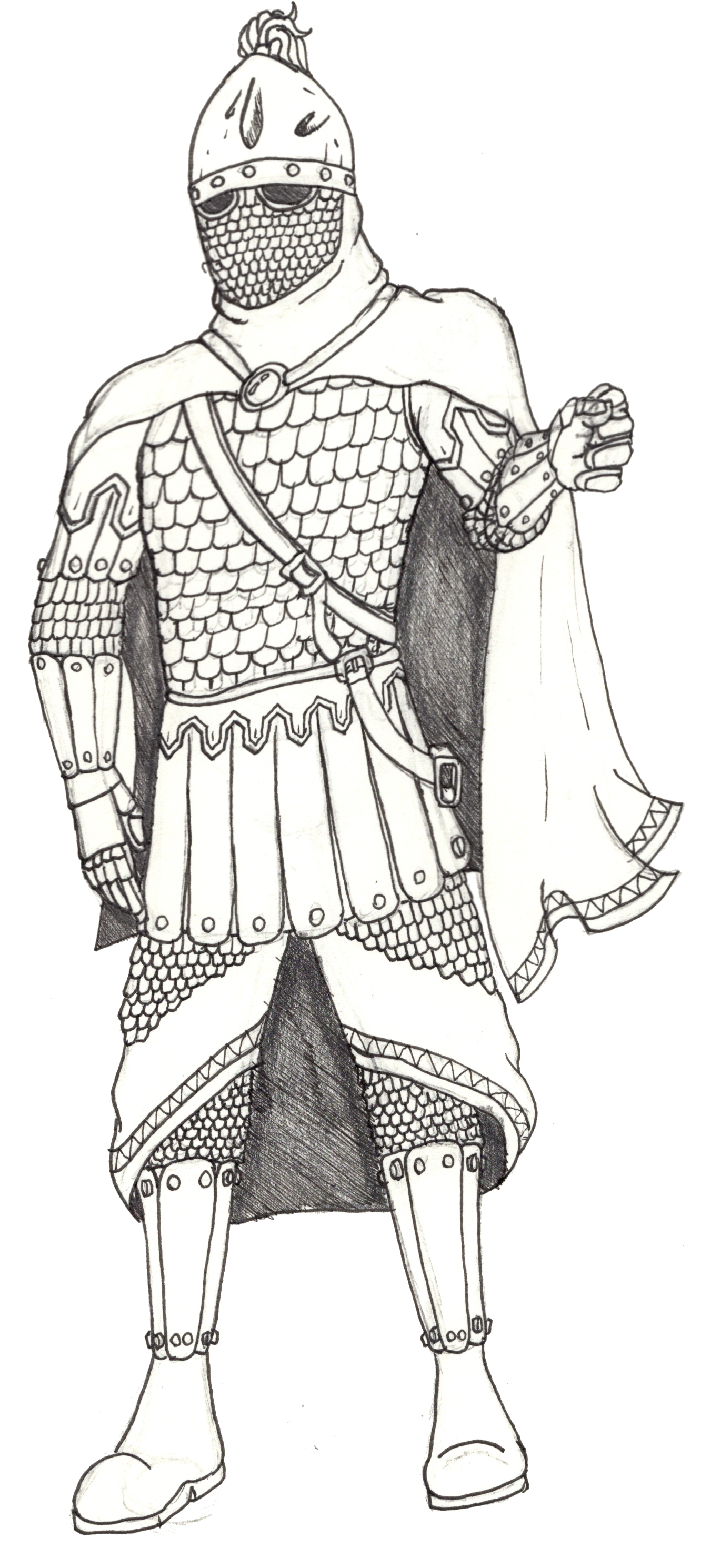
Scale. A full-body harness that used overlapping metal scales instead of interlocking rings. Famous for its use in the Middle East and the empires that spanned it, leading to its adoption in Greece and Eastern Europe.
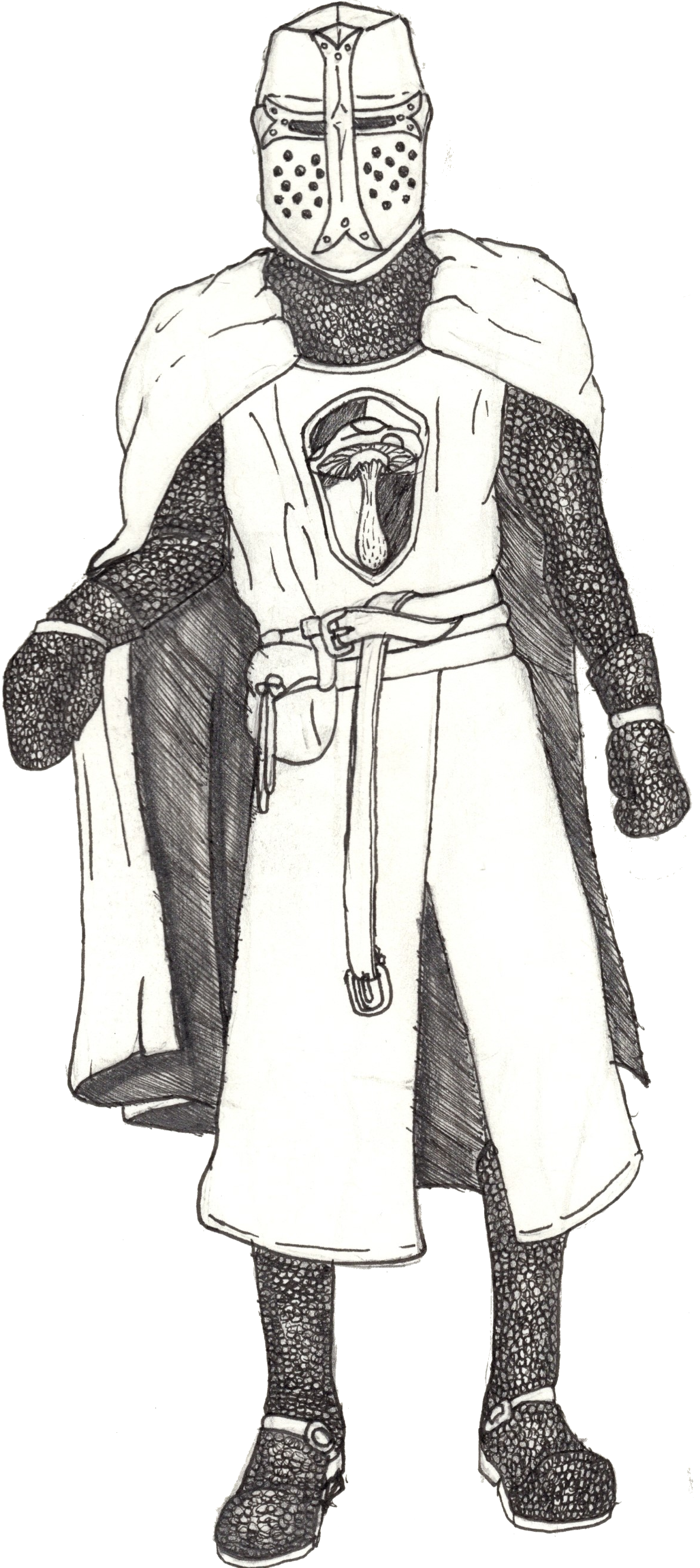
Hauberk. Armor made of interlocked rings that covers the torso, arms, and thighs, and often the head, used through the Early Middle Ages and Crusades, and to fill the gaps in plate during the later Middle Ages.
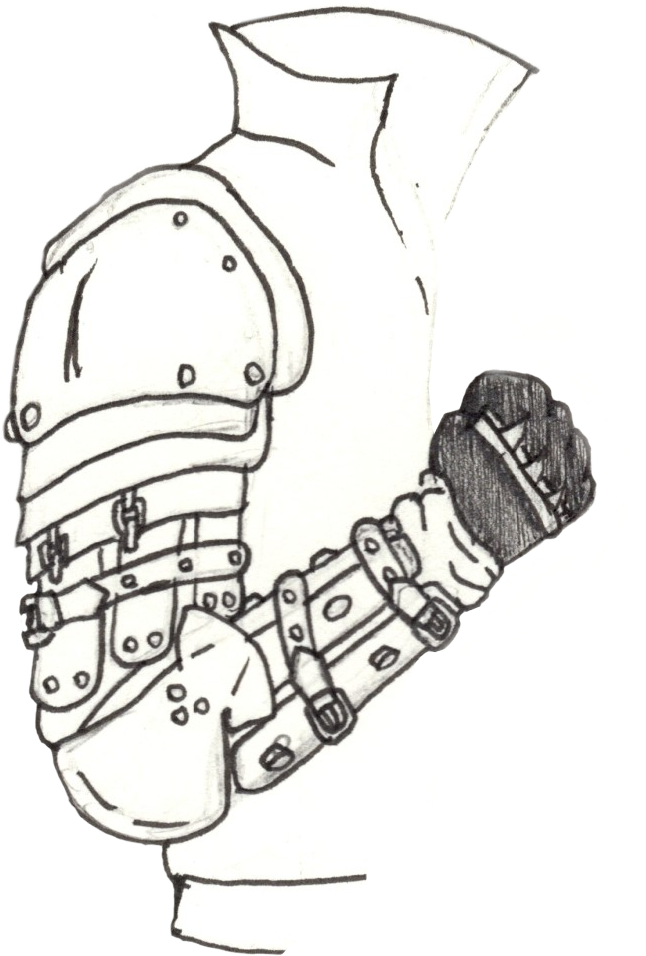
Splint. Budget plate with the arms and legs covered by leather with metal plates riveted to the outside, to substitute for a full suit to reduce manufacturing time and material cost.
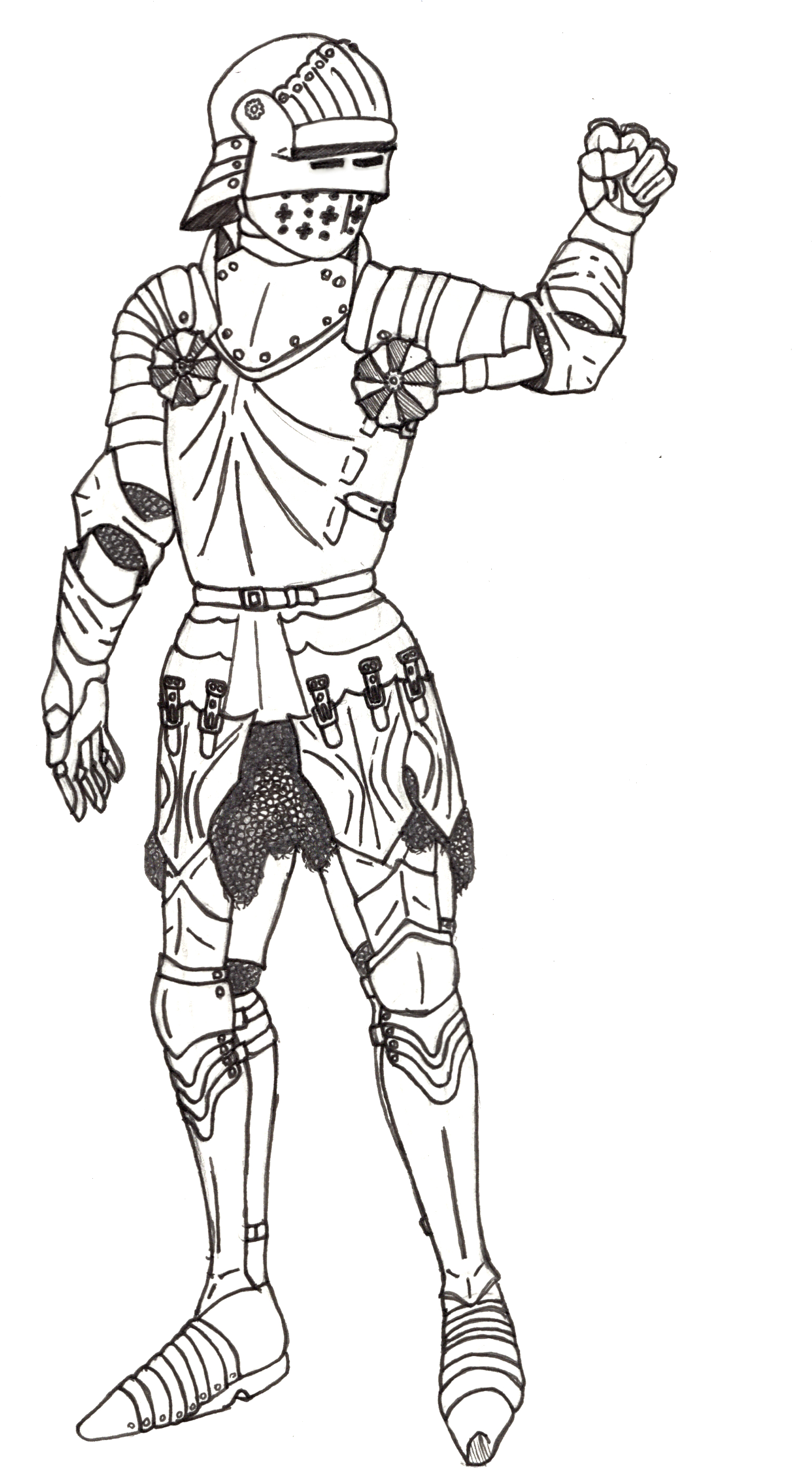
Full Plate. Fitted, customized armor that covered the body from head to toe in shaped metal sheets, with maille to fill in gaps and padded gambeson worn underneath. Virtually impenetrable by most cutting and piercing weapons and immensely expensive. Plate-armored knights are reported to have taken dozens of arrows without falling, resembling pincushions as the shafts stuck out of the steel armor and layers of padding beneath.
As plate armor spread, multiple weapons grew in popularity in order to counter them. The guisarme and billhook predate the invention of plate by several centuries, but they and their techniques survived with the halberd, which was used to pull a plate-armored knight from his horse. Once on the ground, a dagger (especially a rondel) thrust into the eyeslit or a chink in the armor at the armpit was sufficient to quickly dispatch a knight. The latter weakpoint is protected by the circular plates below the shoulders, called rondels or besagews.
Plate armor was nigh-impossible to pierce, but even the thick layers of cloth padding couldn't absorb the force of blunt impacts. Warhammers, war picks, maces, and pollaxes were all popular anti-plate weapons, and were often wielded by warriors clad in plate themselves. The longsword, when gripped midway up the blade for precise thrusting or when held in reverse to strike with the pommel (the famous mordhau, or murderstroke), made an effective anti-plate weapon in a pinch.
The style pictured here is in Gothic style, which was produced in the Holy Roman Empire (modern Germany) and can be identified by the fluted surface of its steel. In addition to its aesthetically pleasing effect, the flutes helped deflect the blunt weapons discussed above. The other major style of manufacture was Italian, which tended to be asymmetrical (with heavier armor on the left to better defend the user's non-dominant side) and less decorated. Both styles emerged in the mid-1400s.
The full suit of plate pictured here has a sallet helm, a rounded helmet with a visored top half and a lower half, the bevor, bolted to the upper part of the armor. The sallet features a tail of varying lengths that protects the back of the user's neck.
The first standalone helm is the armet, also with an opening visor but which features cheekpieces attached to the cupped steel that surrounds the back of the head, rather than the tailed plate of the sallet.
The second helmet is a frogmouth helm, a heavier helmet made of thicker steel that bolted directly onto the chest, which did not allow the knight to turn his head. It was only used for jousting, not for real combat.
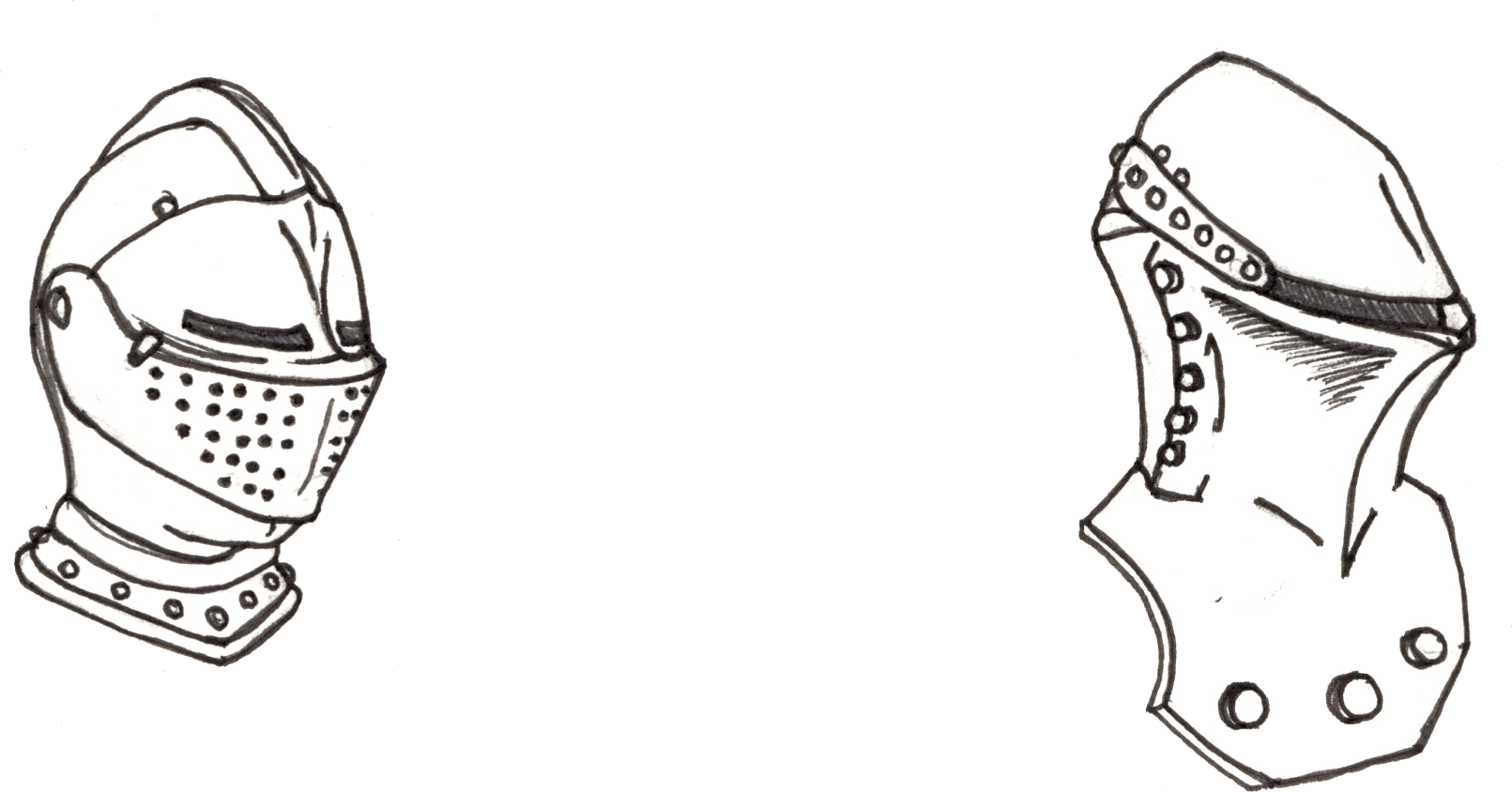
Magical Weapons
This section contains several sections to help generate magical weapons that match the versatile arsenal of mundane options added by The Warrior's Codex.
Diversified Option Tables
Most magical weapons in the Dungeon's Master Guide are swords. This is not unreasonable—the sword holds more narrative importance than any other weapon in English-speaking literature—but it gets boring. Nothing about the magical properties of the majority of magic swords means they must be applied to a sword—and with the new weapons added by The Warrior's Codex, a game with magical weapons that aren't swords is an added bonus.
There is no reason, for example, that a frost brand couldn't be a boar spear, halberd, or even a heavy crossbow, rather than a sword. So long as the necessary properties match—such as slashing damage for a vorpal weapon—it can be changed. When you generate loot and roll a magical weapon, consider using the tables below to create it.
This section adds tables that enable the Dungeon Master to quickly generate a new magical item after rolling or selecting its powers in magical weapons could be any weapon in a category, or any weapon at all. For example, if a randomly-generated loot hoard calls for a sword of sharpness, the DM can roll on the tables below to determine the weapon that the new item should be, which gains the properties and damage dice of that weapon, instead of a sword. So long as the weapon can deal slashing damage, it will work without issue—resulting in weapons like a halberd of sharpness or a hooksword of sharpness.
Afterward, the DM and player can use the Aesthetics section below to add more backstory, personality, and unique design to the new weapon.
Alternatively, if a magical weapon can belong to a category of items, the DM can use the appropriate table to determine the specific weapon. For example, a berserker axe can be rolled on the axe table to find which type of axe it should be. You can also use the tables for shields, ammunition, and armor, found after the weapon tables, to do the same.
As magical items tend to be one-of-a-kind masterworks, they often carry additional customizations. See Part III for details about weapon modifications and customization.
Tables
Rolling on the Weapon Type table to determine which weapon category to use. This subdivision organizes the weapons in rough groups determined by similar combat styles (rather than damage types), which is why pollaxes appear in the staff table and flails don't join wires and whips.
These tables can also be used to determine which weapon or weapons a monster might carry, rather than those listed in its statblock, to diversify the tactics the party faces.
Weapon Type
| d10 | Weapon Type |
|---|---|
| 1 | Spears |
| 2 | Polearms/Staves |
| 3 | Bludgeons |
| d10 | Weapon Type |
|---|---|
| 4 | Knives |
| 5 | Axes |
| 6 | Swords |
| 7 | Other melee |
| 8 | Ranged—tension |
| 9 | Ranged—propulsion |
| 10 | Ammunition |
Spears
| d8 | Weapon |
|---|---|
| 1 | Boar spear |
| 2 | Javelin |
| 3 | Harpoon |
| 4 | Lance |
| 5 | Shortspear |
| 6 | Spear |
| 7 | Trident |
| 8 | Reroll |
Polearms/Staves
| d8 | Weapon |
|---|---|
| 1 | Glaive |
| 2 | Guisarme |
| 3 | Halberd |
| 4 | Lucerne |
| 5 | Pike |
| 6 | Pollaxe |
| 7 | Ranseur |
| 8 | Quarterstaff |
Bludgeons
| d12 | Weapon |
|---|---|
| 1 | Cestus |
| 2 | Club |
| 3 | Goedendag |
| 4 | Greatclub |
| 5 | Flail |
| 6 | Light hammer |
| 7 | Mace |
| 8 | Maul |
| 9 | Morningstar |
| 10 | Peasant Flail |
| 11 | War Pick |
| 12 | Warhammer |
Knives
| d4 | Weapon |
|---|---|
| 1 | Dagger |
| 2 | Parrying dagger |
| 3 | Rondel |
| 4 | Sickle |
Axes
| d6 | Weapon |
|---|---|
| 1-2 | Handaxe |
| 3-4 | Battleaxe |
| 5-6 | Greataxe |
Swords
| d12 | Weapon |
|---|---|
| 1 | Arming Sword |
| 2 | Bastard Sword |
| 3 | Estoc |
| 4 | Greatsword |
| 5 | Hooksword |
| 6 | Longsword |
| 7 | Messer |
| 8 | Rapier |
| 9 | Sabre |
| 10 | Scimitar |
| 11 | Shortsword |
| 12 | Shotel |
Other melee
| d4 | Weapon |
|---|---|
| 1 | Chain whip |
| 2 | Garotte wire |
| 3 | Gauntlet-sword |
| 4 | Whip |
Ranged weapons—tension
| d8 | Weapon |
|---|---|
| 1 | Greatbow |
| 2 | Hand crossbow |
| 3 | Heavy crossbow |
| 4 | Light crossbow |
| 5 | Longbow |
| 6 | Recurve bow |
| 7 | Shortbow |
| 8 | Sling |
Ranged weapons—propulsion
| d8 | Weapon |
|---|---|
| 1 | Atlatl |
| 2 | Arquebus |
| 3 | Boomerang |
| 4 | Blowgun |
| 5 | Dart |
| 6 | Handgonne |
| 7 | Net |
| 8 | Staff Sling |
Shields
| d8 | Weapon |
|---|---|
| 1 | Buckler |
| 2 | Dueling shield |
| 3 | Heater shield |
| 4 | Kite shield |
| 5 | Lantern shield |
| 6 | Pavise |
| 7 | Roundshield |
| 8 | Tower shield |
Basic Ammunition
| d10 | Ammunition |
|---|---|
| 1 | Barbed quarrel |
| 2 | Blowgun needle |
| 3 | Bodkin arrow |
| 4 | Broadhead arrow |
| 5 | Bullet |
| 6 | Dart |
| 7 | Field arrow |
| 8 | Hunting bolt |
| 9 | Quarrel |
| 10 | Sling bullet |
Specialized Ammunition
| d4 | Ammunition |
|---|---|
| 1 | Firecage Arrow |
| 2 | Grapeshot |
| 3 | Silver bullet |
| 4 | Whistling Arrow |

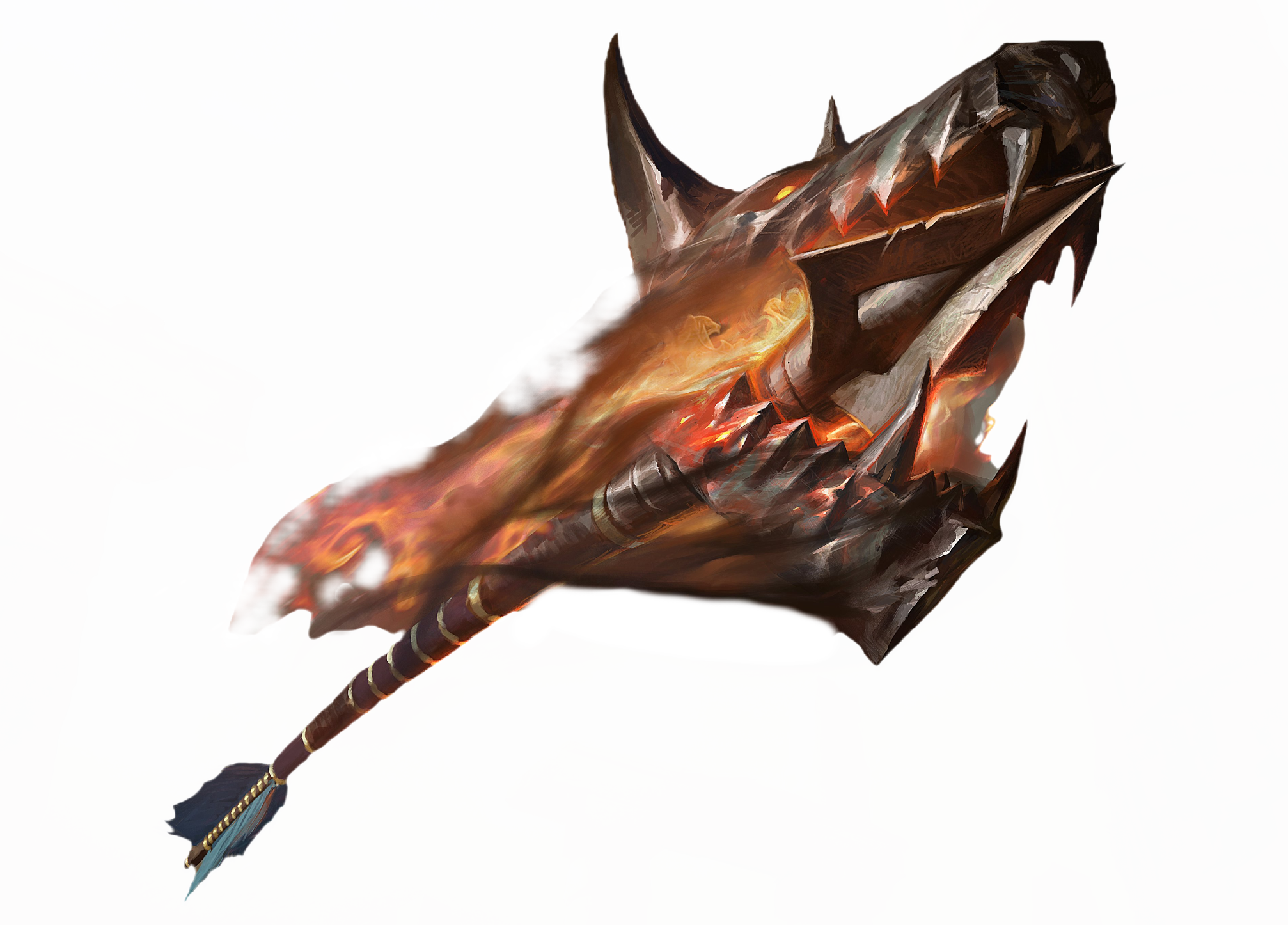
Light Armor
| d6 | Type |
|---|---|
| 1-2 | Leather |
| 3-4 | Gambeson |
| 5-6 | Jackchains |
Medium Armor
| d12 | Type |
|---|---|
| 1-2 | Hide |
| 3-4 | Haubergeon |
| 5-6 | Breastplate |
| 7-8 | Brigandine |
| 9-10 | Cuirass |
| 11-12 | Half-plate |
Heavy Armor
| d4 | Type |
|---|---|
| 1 | Scale |
| 2 | Hauberk |
| 3 | Splint |
| 4 | Full plate |
Aesthetics
Inspired by the section that begins on page 141 of the Dungeon Master's Guide, this section has no mechanical effect at all. Instead, it adds more options when the Dungeon Master determines the history and appearance of magical items, to help make each feel unique. Two identical +2 weapons, for example, can feel entirely different if they boast different appearances (compare a +2 elven greatsword and a +2 orcish greataxe), the histories to match, and different quirks and minor properties.
This section adds aesthetics for more creators, with multiple options for most groups, and additional details about the item's creation, history, or past owners. It does not expand on the quirks or minor properties of the weapons.
This section is for fun and inspiration, and is not set in stone. They exist to be modified, to inspire and guide, but do not dictate. The Dungeon Master and group should creatively modify them as they see fit.
Some options would alter the properties of the weapon or its materials if taken at face value, but should not change the weapon mechanics unless specified in its description.
Aesthetic Options
To choose an aesthetic, roll a d100, divide the result by 2, and choose the result from the table. Round the number up.
- Humans. The weapon is made from brightly-polished steel trimmed with gold or silver, and studded with gemstones. It has straight, clean edges, and has simple, but elegant, patterns.
- Dwarves. The weapon is made from thick, heavy bronze or steel. Layers of concentric hexagons form the body of the weapon, while the handle is made from cast iron.
- Dwarves. The weapon is carved from a single piece of stone, with great weight. Rubies are embedded in the rock. Bronze or brass trim provides additional color.
- High elves. Made from polished steel with grips of fine wood or ceramics, elegant filigree in precious metals or delicate pigments are worked through the weapon’s design, which arcs gently from one segment to the next in a single elegant curve.
- High elves. Gold and silver paneling covers the handles of this weapon, which curl up in elegant arcs that remind the eye of creeping vines or cresting waves.
- Wood elves. Made from magical heartwood that never dulls or breaks, the grip of this weapon is elegantly carved with deep grooves. The entire surface is painted with bright colors, and the feathers of exotic birds or the teeth of mighty beasts decorate it.
- Wood elves. The rock-hard bone of an exotic creature forms the core of this weapon. The bone might be sharpened, or blades of long obsidian or flint form the edges. Turquoise and other semiprecious stones cover its surface. Leather from the creature that lost the bone forms the grip.
- Dark elves. A single piece of obsidian, shaved down layer by layer to a smooth, polished surface, forms this weapon. Dark rubies and amethysts decorate its handle of matte black metal.
- Dark elves. A blade of dark steel that ripples when the light runs across it emerges from a handle of grainy dark wood wrapped in black silk.
- Sun elves. Like the high elves, weapons made by sun elves flow like water from one arc of the handle and blade to the next without pause. It is unadorned and made from simple metals and woods, but its simplicity belies its perfect balance and impeccable construction.
- Sun elves. Otherwise unadorned, the golden hilt of this weapon catches the light and fills the mind with meditative calm whenever beheld.
- Halflings. This weapon is humble and plain, with a leather grip that sits comfortably in your palm.
- Halflings. The nonmetal parts of the weapon are made from the wholesome wood of pastoral forests, painted a pleasant blue or green with twirling gold lines.
- Orcs. This unbalanced weapon’s construction from a wooden core and spikes of bone, teeth, or metal shrapnel conceal its grim efficacy. While crude, blood flows from the jagged gashes left by this weapon’s serrated edges.
- Orcs. This bone weapon is embedded with points or blades made of chipped flint or teeth of wild beasts. Trophies hang from its handle, tied by a leather cord. These trophies might be beautiful, like precious stones or stolen jewelry, or grisly, like parts taken from enemy orcs.
- Goblins. The bones and teeth of another goblin form the handle and points of this weapon, which contains a core made from the shards of another magical item, lost to time. If shaken, the pieces rattle inside.
- Goblins. The weapon is rusty and ancient, but has never dulled. Rough twine around the handle helps you grip it, while the pitted surface is caked with dried blood.
- Dragons/Dragonborn. The weapon is covered in brilliant scales, whose hard edges form the blade. A gemstone of matching color sits in the pommel.
- Dragons/Dragonborn. A dragon carved from precious stone coils around the haft or blade of the weapon, which is a core of flawless steel.
- Yuan-ti. With a hilt made of jade and decorated with emeralds, the points of weapons made by yuan-ti form conical spines that resemble the tips of snake fangs.
- Yuan-ti. This weapon is eerily smooth to the touch, for it is coated by a thin, membranous layer of bronze or mossy green snakeskin that covers all but the very tip.
- Merfolk/sahuagin. Made from carved whalebone with a rough coral grip, the weapon is flexible and bendy, but razor-sharp.
- Merfolk/sahuagin. The elegant arcs of this weapon bring to mind the flowing of water. It is made from polished coral and decorated with pearls.
- Druids. This weapon is made from a piece of living wood, especially ash or oak. Green shoots sprout, wither, and die along its surface. It never rots or burns.
- Druids. Covered in totems from animals, monsters, or humanoids, this bone weapon is embedded with swirling druidic script that act as channels for the blood of creatures sacrificed with this weapon.
- Wizards. Studded with crystals, this meticulously-proportioned weapon is separated into multiple glowing parts that all float near each other, magically maintaining the weapon's shape.
- Wizards. Studded with gems, this weapon is a reservoir of latent magical energy. The many gems embedded in its surface glow with unnatural brilliance, and the entire object vibrates.
- Warriors. Endowed with the physical or mental abilities of its creator, this weapon might resemble the mundane version of an item created by any race. Certain situations can endow a mundane item with magical might.
- Aberrations. Made from unrecognizable stone or unearthly metal and studded with uncut stones, this weapon features relief carvings of impossible intricacy and nonsense patterns. They are uncomfortable to look at.
- Aberrations. While this weapon appears with the aesthetic of another people, it is soft and warm to the touch, like living flesh.
- Fiends. This weapon, with harsh angles that resemble support struts connecting parts together, is made from a single piece of black cast-iron and covered in cruel spikes.
- Fiends. This weapon is made from the flexible bone of living beings. At least one skull appears in its design, within which glows the faint light of the tortured soul forced to inhabit the object.
- Fey. Made of an unknowable white or pink metal, this weapon is made of interconnected filigree from tip to tip, like an ice sculpture. Its spires appear incredibly delicate, but the weapon is just as unbreakable as the rest.
- Fey. Flowers bloom on the base of this elf-like weapon, which smell sweeter than honey but whose scent is impossible to remember. Its light design makes it easy for the wielder to perform complex maneuvers with it.
- Celestials. Bold and elegant, made from smooth white marble, platinum, gold, and decorated with a multitude of precious stones, this weapon has more value than any mortal needs. It is far lighter than its bulky construction should allow.
- Celestials. Holy symbols of the god that created this weapon are etched into patterns in this weapon’s surface, or as cutouts in the blade. It takes the shape of the race of the god that created it, but its craftsmanship is too perfect and the materials too valuable to have been made by any mortal smith.
- Undead. Made from a single piece of black steel, dull rubies like crystallized blood decorate this weapon. Skulls and other bones form the hilt.
- Undead. Wet to the touch, this weapon’s contact points are made from living bone, and exposed organs ooze and pulse with unlife.
- Elemental Air. Light as a feather, this weapon is made from the durable bones of the magical birds that sail eternal through the skies of the plane of air. Glass beads that appear to contain wisps of colored smoke decorate it.
- Elemental Air. This weapon is a roc talon, ground into the appropriate shape. Its edge never dulls, nor does its predatory black luster.
- Elemental Fire. The weapon is made from elegant arcs of polished brass and rose gold, and is set with rubies. Its reflections are tinted golden-red.
- Elemental Fire. The weapon is made from chipped obsidian or bubbled volcanic rock, with veins of magma flowing harmlessly within it. It is warm to the touch.
- Elemental Water. With points made of the bones of exotic fish and wrapped with mother-of-pearl, this elegant piercing weapon is long, slender, and razor-sharp.
- Elemental Water. Highly flexible, this weapon appears to bend or warp when swung through the air. Its metal parts are enameled deep blue, sea-green, or stormy grey, and a dark sapphire the size of an eye is set into it.
- Elemental Earth. Made of an uncast piece of heavy iron ore, It is far heavier than a normal weapon for its size, and might chip when it strikes a glancing blow. It never loses its edge, however.
- Elemental Earth. Carved in geometric terraces with heavy Terran runes scribed in its depths, this stone weapon reverberates like a quake whenever it strikes an enemy.
- Elemental Ice. The item is cold to the touch, and made of a transparent piece of blue-white ice, frosted at the edges. A piece of deep blue cord wrapped around the hilt shields unprotected hands from the chill.
- Elemental Ice. Made of delicate platinum filigree, this weapon has none of its apparent fragility. Instead, it cuts through enemy flesh effortlessly, and the wounds it leaves fill with tiny ice crystals. The points are tipped with diamond.
- Inevitables. Made from brass, unpolished steel, and titanium, a seam runs through this unadorned weapon as though it were a shell surrounding a mechanical interior. If listened to closely, you can hear the sound of clicking gears and hissing pistons.
- Vampires. Elegant and cruelly sharp, this weapon seems to shiver in delight when it draws blood. Its handle is made from black leather, its naked steel reflects crimson-tinted light, and the wounds it leaves bleed little, as though the blood has already been sucked away.
Creation
After determining the weapon's culture of origin and appearance, roll a d20 to determine who made the item, and how or why it came to exist.
- A master craftsman, at the request of a patron.
- A master craftsman, as their final magnum opus before they died.
- An amateur craftsman, who created it by accident.
- A spellcaster, who created it as a side effect of another project
- A smith, spellcaster, or mighty warrior who infused it with their power as they died.
- A mighty warrior whose feats endowed a mundane item with magic power.
- A mundane smith, in a faraway and exotic location, whose techniques gave it the power it has.
- A celestial or other god who blessed a mundane item to serve the needs of a devout follower.
- A great hero, who wandered the far planes and whose feats endowed the item with power.
- A smith, who foresaw a vision that the weapon would one day be used for heroics far beyond their other creations.
- A supernatural creature, whose natural powers give the weapon its abilities.
- A spellcaster, who created the weapon as part of an experiment or to solve a problem.
- A spellcaster, who created the weapon from the sacrifice of innocent bodies or souls.
- A spellcaster, who plans to use the weapon as a power source for a greater ritual.
- A mighty dragon, who created the weapon from parts of its own body as a gift to a creature who impressed it.
- A tyrannical lord, who had the weapon quenched in the blood of the unfortunate souls who crossed their path.
- An ancient clan or priesthood, who created the weapon to serve as a symbol as well as a practical purpose.
- The weapon was forged in the subterranean heat of a volcano.
- The magic of the creature that the weapon slew transformed it from a mundane weapon to a magical one, and it carries a fragment of that creature’s power within it.
- The weapon is a standard-issue item carried by a supernatural creature, such as a fey, fiend, or celestial.
In the hands of a mortal, it has great power.
Story
After deciding who created the weapon and a few
details about its creation, roll a d20 to determine
how it came to its current location, before it fell
into the party's hands.
- It has mouldered in a collection, vault,
exhibit, or museum. - It was buried in the tomb of its owner
or creator. - It was sealed away by enemies of its
user to keep its power hidden.
- All entrances to the place it was stored collapsed or were sealed, leaving it alone.
- It fell into a river or sea, where it was lost.
- It was abandoned on a battlefield and buried in a shallow grave with its master and a thousand other dead.
- A beast swallowed the weapon, and its bones surround it and the rest of the treasure it consumed.
- The adventurer carrying it died in the wilderness or dungeon, and it became another piece of treasure.
- Its creator was terrified of their work and hid it away, hoping it would never be found.
- It has been used constantly for decades or centuries, and it has committed many deeds great or terrible.
- The descendants of its wielder kept it as a sign of prestige.
- It was taken as a trophy by the enemies of its wielder.
- Religious importance has been placed on it, and it is or was used for religious ceremony.
- It awaits its destined wielder in a hidden shrine.
- A monster coveted it for its storied history and added it to its hoard.
- It fulfilled its intended purpose, and now sits idle.
- Its owner was killed suddenly and it sits unrecognized with the rest of their possessions.
- It was stolen from its rightful place by bandits or robbers.
- A powerful benevolent being has taken it under its protection until the time is right.
- It was lost to the Astral Plane after the Bag of Holding that contained it was placed in another item, and recently returned to its current plane at a random spot.
After this process has been completed, the Dungeon Master can roll on the the tables located on page 141 of the Dungeon Master's Guide to decide the weapon's quirks and special properties, if any. The table of minor beneficial and detrimental properties used by artifacts can provide even more mechanical inspiration, to make every item truly
unique—though several can make the item far more powerful.

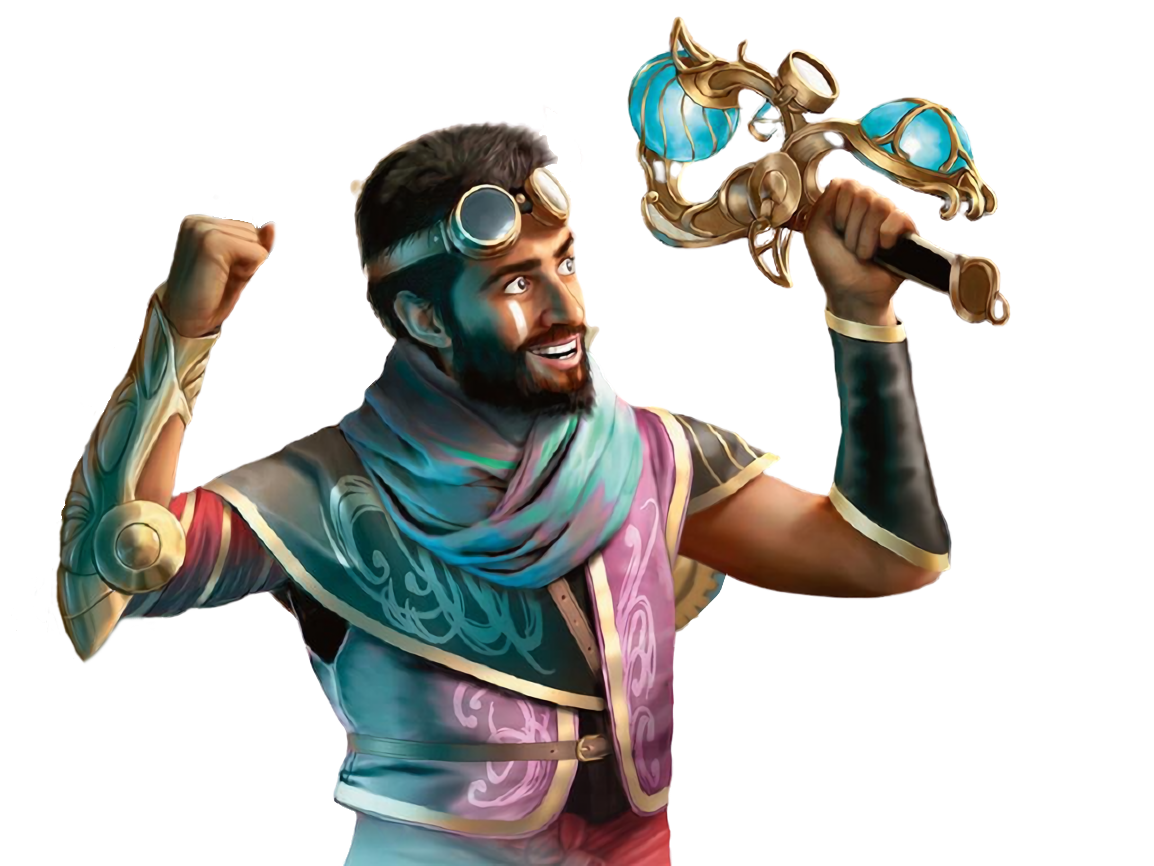
Credits
The Warrior's Codex has a massive scope and has been inspired by many people over its history. Previous editions credited each user by name and listed their contributions, but at this stage there have been too many suggestions by too many people to possibly list them all without insulting omissions. I still list by name those who were either copied directly (with permission), or who inspired me to add something without direct communication with them.
Submortimer of Giant in the Playground created the Path of Iron, which directly inspired the Ironclad Barbarian.
Similarly, the Corona option for the Path of the Cataclysm is an edited version of the Solar Storm primal path contained in ATLAS, a compendium created by the Haven discord server and can be found here. It is included with permission.
The wording for bypass, winged, and the tower shield comes from the highly similar work of /u/theapoapostolov. We have collaborated to some degree and I am very grateful for his help.
/u/AngryRepublican inspired the creation of the harpoon, the spear as it exists in this document, and the chain whip.
The crafting rules used here modify those created by Kittenhugs of dmsguild.com.
Alchemical Oils are modified work by /u/giffyglyph, and are used with permission.
Several herbal mixtures were taken from Wraith Wright's Comprehensive Equipment Manual; some had their prices or functions changed for balance reasons, and many of the more redundant, niche, specific, or ineffective items were removed.
The poisons are a simplified version of those created by /u/Glorac. Many have had some of their crunchier properties, such as the unique properties of aquatoxins, the mathematics involved in calculating banetoxins, and legality rules—have been removed for ease of play.
The rewritten version of Mordenkainen's sword was created by Red Orca of the RPG Stack Exchange. The original post can be found here.
While not direct contributors to the content of The Warrior's Codex, Blackbando#1102 and Jonoman3000#2478 have been enormous influences on the organizational and aesthetic techniques used to lay out and decorate the pages. I'm grateful for their assistance and advice.
Finally, and most importantly, the original Weapons Remastered was originally created by another anonymous user, whose work can be found here. This document introduced the concept of weapons with unique properties to me, and the idea that every weapon should have a unique combination of attributes.
Changes, houserules, and other tweaks to the above document inspired me to compile my other houserules and homebrew archetypes into The Warrior's Codex. Without it, this document would not exist, and I owe the entire creation of this work to the user who made. We have only spoken once, and I have no way of ever doing so again. But they made all this possible, and changed the way I think about tabletop RPGs and my participation in them forever.

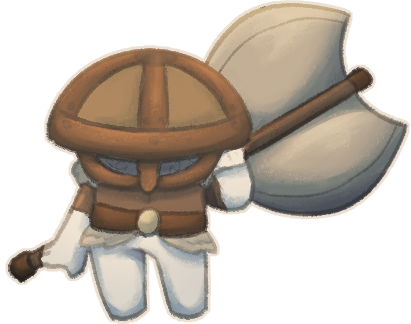
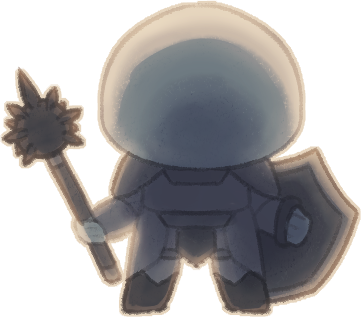
Dedications and Thanks
Many people have helped make this massive undertaking successful over the last three years. First and foremost, I owe so much to the eternally patient players in my regular group, who took changes in stride. For hours every weekend they've playtested this document, often with sudden adjustments. Thank you, from the bottom of my heart.
Special Thanks
These users in particular have been instrumental. Several are members of my real-life social circle whose feedback has been beyond invaluable; one an incredible artistic contributor and server member; and the rest have contributed work to WCX directly.
| Discord | Other Socials | Contribution | |
|---|---|---|---|
| Copyrightdragon#7641 | — | — | Edits, all |
| MEDIX | — | StackExchange: Medix2 | Edits, all |
| Aratono | — | — | Hunt domain cleric |
| TheProdigalSun | — | — | East Asian alternative weapons |
| Badooga#8108 | /u/badooga1 | linktr.ee/badooga | Toss, combat/game rules |
| Entrench#3421 | /u/devikyn | — | Combat rules |
| Silverbass | /u/aeyana | — | The Book of Hordes |
| Amaya/Polaris#9287 | /u/PolarFeather | Twitter: Alfa_Polaris | WCX Cheat Sheet |
| BkyleB#7272 | /u/bkyleb | Instagam: @bridgerburt | Subclass overview and art gallery |
| Majokko Maimun#9984 | royal-chaos | — | Art commissions |
| Vikzhety#4436 | — | — | Art commissions |
Concepts and Feedback
The continued participation of those credited below has been invaluable as this document developed. The best way to grow is to gather multiple perspectives, and the feedback from those in this section have been invaluable as I proposed new changes.
The continued participation of those credited below has been invaluable as this document developed. The best way to grow is to gather multiple perspectives, and the perspectives from all these people were instrumental as WCX expanded and evolved.
| Discord | Other Socials |
|---|---|
| agathist#1706 | — |
| Blackbando#1102 | /u/dingo_chungis |
| Blind#8000 | — |
| captaingamer | — |
| Clippy#3459 | Twitch: clippy010 |
| Cthulhu | — |
| Dave#7137 | — |
| Discord | Other Socials |
|---|---|
| Dust | — |
| DrGoo282#5334 | /u/Drgoo282 |
| JuanHexgem | — |
| JuhoPP#9025 | — |
| Kroth#4497 | — |
| permacc | — |
| PhoenixAlpha | — |
| Ragnar Bearson#9097 | — |
| Rocklifter | — |
| Slaximillian#7230 | /u/Slaximillion |
| Slen | — |
| Sunny Spade | — |
| The Gam Emperor | — |
| Tiramisu#1329 | /u/illuminatedcodex |
| Vajra#6659 | /u/Drakantr |
| Varandru | — |
| ViralStarfish#2779 | /u/ViralStarfish |
| ZeroDarkFang#1501 | /u/ZeroDarkFang |

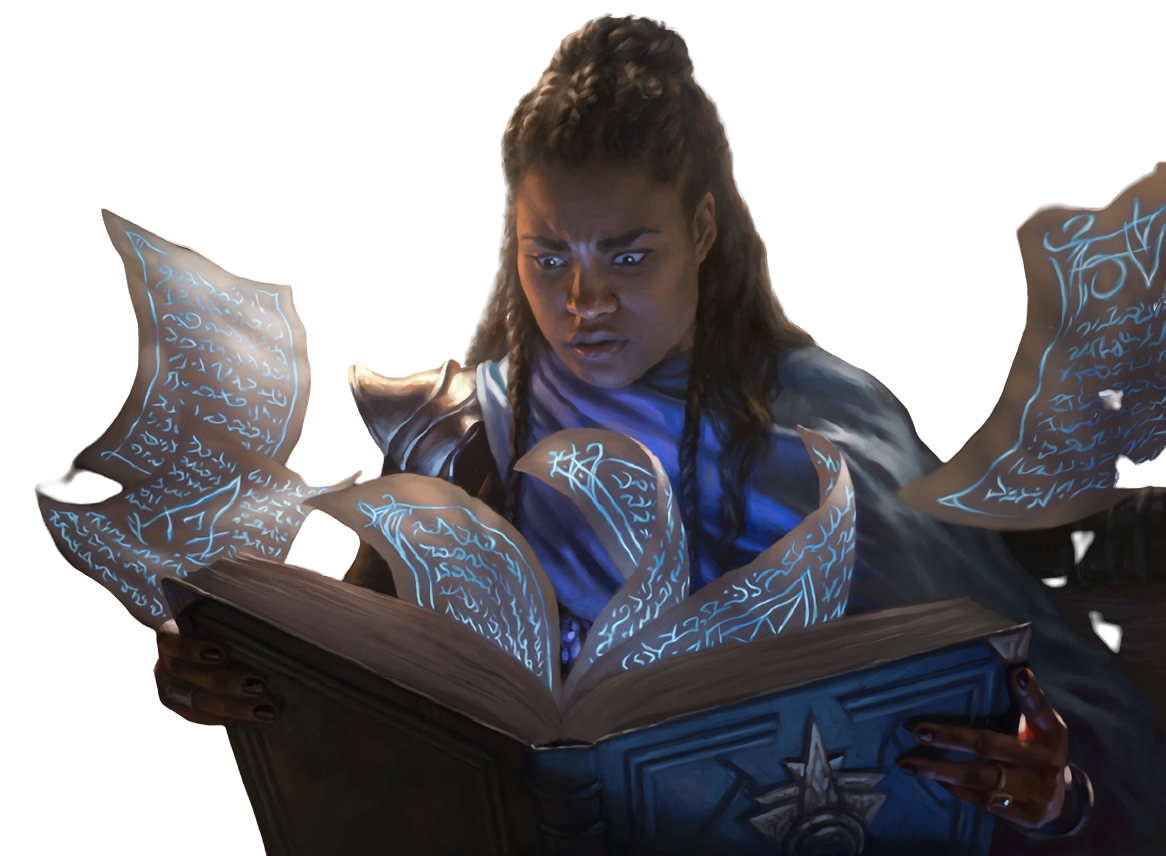
Further Review
The people who helped me pour over page after page, day after day, as the project came to a close. Every fixed typo, every question about mechanical interactions, and every comment about something strange has improved this document for the better.
| Discord | Other Socials | |
|---|---|---|
| 30PcsOfSilver | — | — |
| Apophis | — | — |
| Auxilium#5372 | — | — |
| Birrom#4903 | /u/Travis4903 | Twitch: Birrom |
| Car of the Spider | — | — |
| Dragos | — | — |
| Eltharion | — | — |
| Goide#1493 | /u/dnfeijo | — |
| Heavenly Guardian | — | — |
| Lune | — | — |
| Numbers1999 | — | — |
| PurpleSalt | — | — |
| Silky Snow | — | — |
| SmaugsDeo | — | — |
| The_Hungry_Rabbit | — | — |
Playtesters
One session is worth a thousand hours of theorycrafting. Whether we played together or they used The Warrior's Codex in their home games and came to me with feedback, these people have had real experience in using this document, and they helped realize changes I would have never imagined trying to go it alone, and the flaws in this homebrew that I would have never considered. This includes both those digitally and those who I joined in real-life sessions, outside a normal game, solely to playtest.
| Discord |
|---|
| 15avatar3 |
| Apophis |
| Bastion |
| cozycat |
| Dark Hour |
| denguyen246 |
| DillonDND |
| Fendrith |
| Heavenly Guardian |
| Hypocloriphorius |
| Ivory |
| Jake, Shackled To Caffiene |
| Discord |
|---|
| Jayloo |
| JohnnySnark |
| karmakameleon |
| Left |
| Majix |
| Melon_lord |
| M017 |
| PixelKing |
| Squishy |
| vallurithuun |
| Xerbio |
To every single person not yet named on the FungalBrewery Discord server, this project couldn't exist without you as well. It's been a wonderful journey to expand this content for you and to hear your feedback right away and in real-time. The whiteroom crafting, workshopping, and actual playtesting you all have done is nothing short of spectacular, and I'm touched to have built such a community around this project.
Looking for More?
You can find the discord server mentioned just above right here. Come to give feedback, share stories of this and other brews, and catch more updates on my projects!
You can find a comprehensive list of all my homebrew here.
Art Credits
Stains created by /u/flamableconcrete, /u/QalarValar, and /u/AeronDrake, or were provided by the Watercoloring in GMBinder document.
Part I Art credits:
- Traverse the Outlands, Daarken
- Dragonborn Barbarian, Salt in Wounds, Jeff Chen
- Weathered Runestone, Dan Scott
- Tithebearer Giant, Wisnu Tan
Part II Art credits:
- Legion's Landing, Svetlin Velinov
- Viashino Slaughtermaster, Raymond Swanland
- Thrall, Marvin Seo
- Firemantle Mage, Chris Rahn.
- Dune, Earth Genasi, phazone
- Valor Singer, Justyna Gil
- Gorilla Chieftain, Carl Critchlow
- Awaken the Bear, Svetlin Velinov
- Flames of the Raze-Boar, Jason A. Engle
- Thunderous Orator, Brian Valeza
- Plague Knight, Jay Jiwoo Park
- Warlord's Axe, Franz Vohwinkel
- Horseman, Damien Audino
- Ayara's Oathsworn, Johann Bodin
- Blade-Blizzard Kitsune, Andrew Mar
- Gift of Immortality, Matt Stewart
- Human Sorceress Character Illustration, Beatrice Pelagatti.
- Greek meander, shutterstock
- Morbid Opportunist, Tyler Walpole
- Alaborn Musketeer, Heather Hudson
- Whirlwind Denial, Lie Setiawan*
- Vivien, Nature's Avenger, Chris Rallis
- Abzan Ascendancy, Mark Winters
- WCX Mushroom 4, Rinazhety
- Valkyrie, Jason Deem
- Horizon Seeker, Matt Stewart
- Symmetry Sage, Jehan Choo
- Cliffhaven Sell-Sword, Jason Rainville
- End Hostilities, Jason Rainville
- 2013d, 别叫我无名君
- Knight in ________ Armor, Sam Hogg
- Jared Carthalion, Manuel Castañón
- Fly, Lie Setiawan
- Spare from Evil, Jason Felix
- Turning Point, pindurski
- Riders, sandara
Part III Art credits
- Mystic Forge, Titus Lunter
- medieval fight, Ivan Koltovich
- City Guard, Windmaker
- Matchlock Musket, ARTIC
- Rivendell Bow, Nick Keller
- Elisa, Matheus Graef
- Flamewright, Mathias Kolros
- Elaborate Firecannon, Adrian Majkrzak
- Nazahn, Revered Bladesmith, Victor Adame Minguez
- Choose Your Treasure!, Justin Nichol
- Weapon Rack, Joe Slucher
Part IV Art Credits
- Poet's Quill, Anna Fehr
- Shapeshifter Token, Johann Bodin
- Explosive Appartus, Lindsey Look
- Bound in Gold, Victor Adame Minguez
Part V Art Credits
- Spy Kit, Aaron Miller
- Sydri, Galvanic Genius, Terese Nielsen
- Lullmage's Familiar, Gabor Szikszai
- Manacles of Decay, Gary Ruddell
- Ivory Cup, Donato Giancola
- Quarry Hauler, David Gaillet
- Knight Exemplar, Jason Chan
- Bonded Horncrest, Jesper Ejsing
- Akhlut, Kate Pfeilschiefter
- Chariot of Victory, John Stanko
- The Sled (Frostworld), Jose Alejo Jadie
- Belgariad - Sendarian Wagon, Kavitha
Radha Udayakumar - Boompile, Filip Burburan
- medicine bottle, Fang WangLin
- Distillery, Benoit Dugay
- Alchemist's Vial,, Lindsey Look
- Woodland Acolyte, Steve Prescott
- Dina, Soul Steeper, Chris Rahn
- Saproling, Joseph Meehan
- Murderous Cut, Yohann Schepacz
Part VI Art Credits
- Wizard's Retort, Grzegorz Rutkowski
- Goblin Boom Keg, Viktor Titov
- Stormfist Crusader, Chris Rallis
The Warrior's Codex is unofficial Fan Content permitted under the Fan Content Policy. Not approved or endorsed by Wizards. Portions of the materials used are property of Wizards of the Coast.
©Wizards of the Coast LLC.
Part VII Art Credits
- Champs d'honneur - Castillon: Juillet 1453,
Ugo Pinson - Roawn's Stalwarts, Deruchenko Alexander
- Mana Cannons, Sidharth Chaturvedi
- Daring Saboteur, Victor Adame Minguez
- Kiora's Follower, Eric Deschamps
- Desperate Stand, Raymond Swanland
- Gunslinger - Angban, Paizo Publishing LLC
- Champions of Archery, Donato Giancola
- Archers' Parapet, Wayne Reynolds
Part VIII Art Credits
- Sage's Reverie, Jason Rainville
- WCX Gallery, Bridger Burt
- Open Fire , Jason Kang
- Quicksmith Genius, David Gaillet
- WCX Mushroom 1, 3, Rinazhety
- Compulsive Research, Sara Winters
- Blood Artist, Johannes Voss
Cover Art Credits
- Duelist's Heritage, Lake Hurwitz
- Elspeth Conquers Death, Ryan Yee

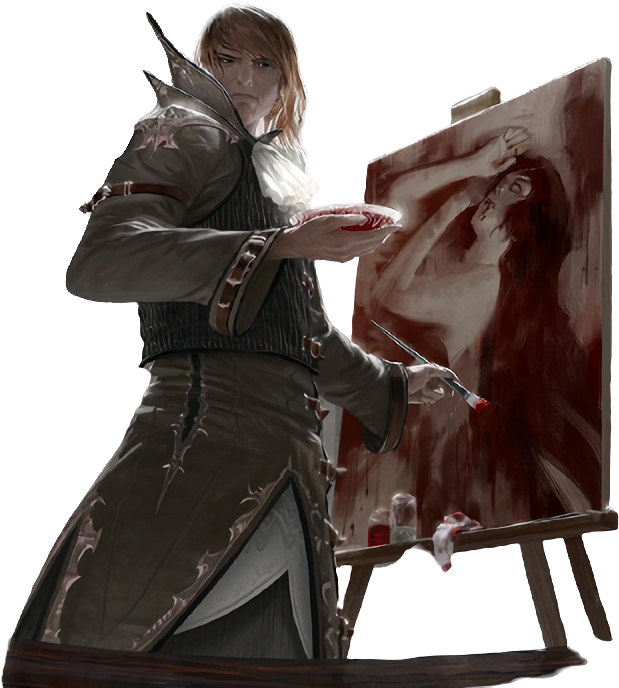
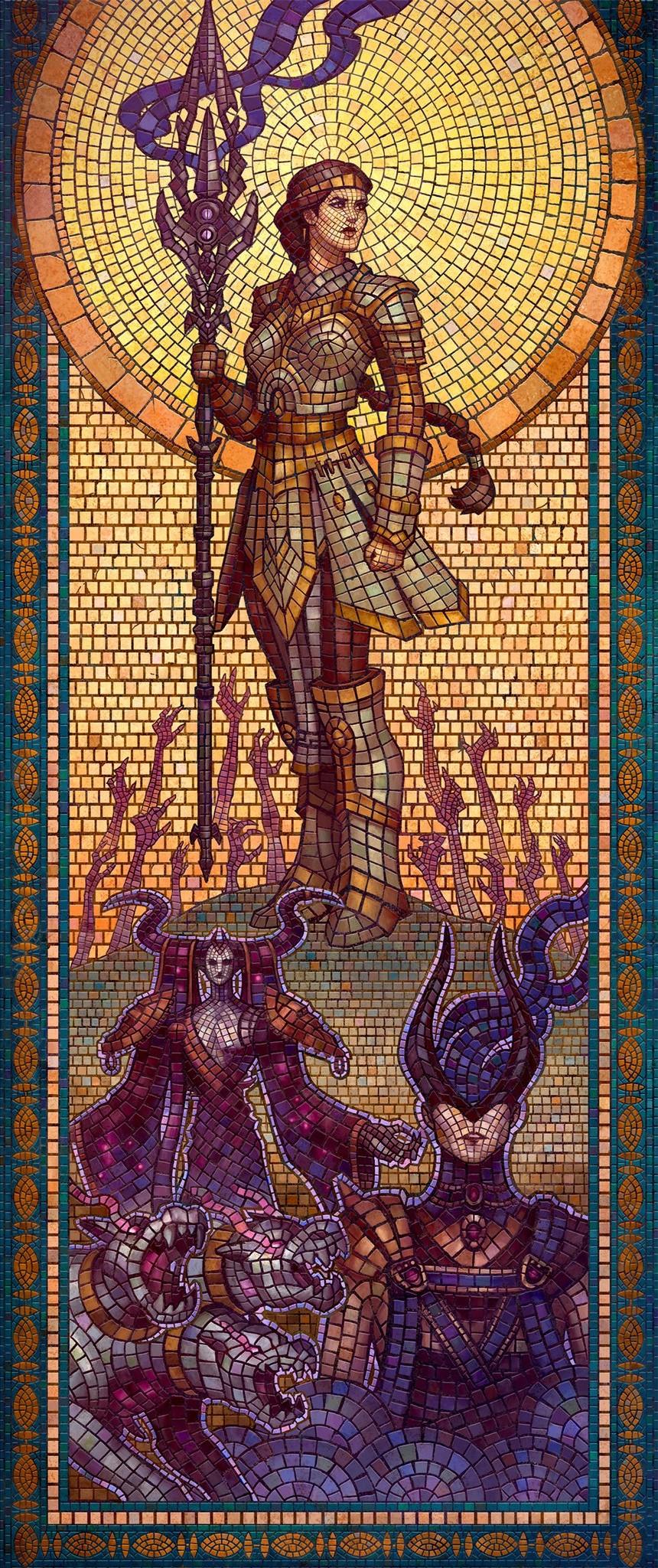
Take up arms
Everything a mundane warrior needs to compete in a world filled with monsters, mayhem, and magical might.
Wield an armory of reforged weapons, each with a unique combination of traits and abilities.
Build an arsenal of powerful bombs, poisons, and more, and the armies to wield them.
Give yourself an edge you never knew you had with updates designed to make forgotten and neglected options competitive once more.
With more than three dozen new or revised martial and battle-inspired subclasses, new rules for combat and crafting, statistics for mighty steeds and enemy armies, and more than fifty distinct weapons, The Warrior's Codex has something for everyone.
